July 05, 2007
Interferences
Interferences ... is an interactive installation created by Matteo Sisti Sette and Maribel Pozo which consists of a back projection screen showing an artificial life system which is sensitive to electromagnetic waves emitted by users mobile phones.
In its ‘natural’ state, image and sound are in constant evolution, moving and growing as if alive. Their growth and evolution is altered in the presence of electromagnetic waves.
This work tries to draw attention to a phenomenon whose physical and material relevance we tend to ignore. Little is known about the effect these radiations produce on human body. Maybe they are not dangerous. Many elements of our environment are not, yet they concern us because of their aspect or noise or odour. If we couls [sic] see, or hear the amount of energy which is carried by electromagnetic waves and which passes through our body, would we behave the same way as we do?
The installation is created with Pure Data and Processing. [posted by Garrett Lynch on Network Research]
Posted by jo at 07:19 PM | Comments (0)
June 22, 2007
Will Web 2.0 Kill Cyberspace?
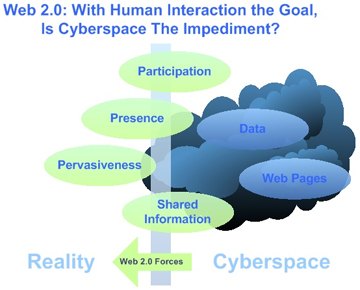
"[...] These days the boundaries between reality and cyberspace are becoming increasingly blurred and the activities on the Web are becoming more two way and integrated with reality ... With going into cyberspace no longer being a discrete step (folks are more and more always there now) and with the primary activity often being to interact with other folks transparently, and you have a folding of cyberspace so severe that it just disappears into the ether." From Will Web 2.0 Kill Cyberspace? by Dion Hinchcliffe.
Posted by jo at 09:45 AM | Comments (0)
June 18, 2007
Bloomsday on Twitter
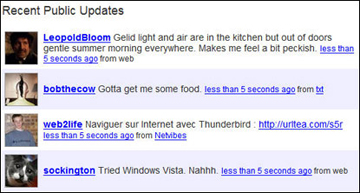
Bloomsday on Twitter: A performance of Wandering Rocks on Twitter, and a commentary on both. Created by Ian Bogost and Ian McCarthy :: I do not like Twitter, the micro-blogging service that allows users to send short (SMS-sized) text-based updates that are displayed publicly and shared with friends social-network style.
For me, Twitter represents the worst trends in the new internet culture. It purports to allow people to "communicate" in new ways, a promise that mostly creates new obligation and infatuation to stay "up to date" and "connected." In the world of Twitter, you (and me, and everyone) pay constant, tiny homage to a new gimmickry.
This is a gimmickry that doesn't even rise to the level of the gadget, with its industrialist promise of technological progress. It is a kind of softer soft-pornography determined to make identity-assertion the new masturbation. Russel Davies' Twitter parody Dawdlr comments on this trend, asking users to send updates via postcard.
In the world of Web 2.0, a public sheds the chains of a tightly-controlled mass media market in which individuals are converted into the "consumers" needed to purchase mass produced goods and services. In its stead, that public gets a loosly-controlled micro media market, in which individuals are converted into the "users" needed to create databases for sale to Google or Yahoo! or News Corp for $35 a head. But now the market outsources manufacture to those very "users." The workers may have had nothing to lose but their chains, but the users are lining up to link their own together. It's the new fashion; chains are the new black.
Invective like this may amuse, but it doesn't necessarily change opinion or create discussion. My friend and sometimes-collaborator Ian McCarthy and I had been talking in San Francisco recently, looking for an intervention that would both comment on Twitter as a social force and also attempt to use the service in a culturally interesting way. What if the focus on socialization and identity is actually the least interesting way to use Twitter?
So, here's what we came up with.
Today, like every June 16, is Bloomsday, a holiday that celebrates James Joyce and his novel Ulysses, which takes place on this date in 1904. Ulysses already offers a parallel commentary; Joyce conceived of the book's principal character, Leopold Bloom, as an everyman counterpoint to Odysseus, whose adventure Bloom's parallels. Each of the book's 18 chapters take place in roughly an hour's time.
The 10th of these, Wandering Rocks, follows 19 Dubliners walking through the city, doing their daily business, some intersecting with others. It's a famous and often-studied section of the book, one that also speaks to an experience of urban modernity that has become second-nature to us now.
Enthusiasts often retrace the characters' steps on Bloomsday, and innumerable animated maps and the like have been created by fans and scholars. The latter technique still doesn't really represent the interleaved simultaneity of Wandering Rocks, the complexity yet ordinariness of space and interaction that Joyce's writing accomplishes. And the former technique turns the ordinariness of the episode into a kind of theme park, missing the importance of the Wandering Rocks as a vignette of the scenario that grounds the rest of the novel (I've written about this theme more in relation to videogames in a chapter of my book Unit Operations).

We took Wandering Rocks and adapted it into a large series of 140-character or less utterances in the first person. We organized and timed these and built a database for them. We registered key characters in the novel as users on Twitter. For example:
STEPHENDEDALUS: I see Dilly's high shoulders and shabby dress, shut the book quick, don't let see.
Then we wrote some software to automate the performance of Wandering Rocks on Twitter, so basically we just turn it on and it runs. The result, we hope, will offer both an interesting and unique perspective on the novel and on Twitter. I'll let our critics be the judge of that.
Bloomsday tradition normally demands that festivities take place on Dublin time, which is unfortunately 6 hours ahead of the US East Coast. Wandering Rocks starts at 2:55pm, which is barely the crack of dawn (especially on a Saturday) out on the West Coast. So we decided to synchronize our performance to EDT. If you wish, you can watch the public stream on Twitter starting at 2:55pm EDT. You can also watch the individual characters, or even add them as "friends" to get the updates.
Update: the performance is now completed; while there were a few hiccups that made a very small minority of the characters unable to participate, the vast majority worked as planned, and you can now click through to read their contributions. I'll put together some documentation of the live version to share soon.
BUCKMULLIGAN
STEPHENDEDALUS
[go to post for live links]
LEOPOLDBLOOM
BLOOMSCAT
BLAZESBOYLAN
JOHNCONMEESJ
ONELEGGEDSAILOR
WIFEOFSHEEHYMP
BRUNNYLYNAM
DENISJMAGINNI
MRSMGUINNESS
BLONDEINTHRNTNS
HELYS
MISSDUNNE
TOMROCHFORD
SATCHELLEDBOYZ
NOSEYFLYNN
MCOY
LENEHAN
JJOMOLLOY
UNLABORINGMEN
CORNYKELLEHER
CONSTABLE57C
THESHOPMAN
EARLOFDUDLEY
OLDWOMANONTRAM
PATRICKDIGNAM ALMIDANO
THELACQUEY
DILLYDEDALUS
SIMONDEDALUS
HAINESINDUBLIN
JOHNPARNELL
ELIJAHISCOMING
KATEYDEDALUS
BOODYDEDALUS
MAGGYDEDALUS
MISTERKERNAN
NEDLAMBERT
CLERGYMANJACK
FRBOBCOWLEY
DENISBREEN
BENDOLLARD
CASHELFARRELL
BLINDSTRIPLING
DUDLEYWHITE
RICHIEGOULDING
THEPODDLERIVER
2SANDEDWOMEN
THEPOLICEMAN
MARTNCUNNINGHAM
JOHNWNOLAN
HORNBLOWER
MANINMACINTOSH
Late last night, partly to test and partly to put a stake in the ground, we did perform the first ten minutes of the novel properly synchronized to Dublin time.
Happy Bloomsday!
[blogged by Ian Bogost on bogost.com/blog] [Related]
Bloomsday On Twitter
Perhaps one day we will remember Twitter as the peak of exhibitionism on the Internet, a phenomenon that started with blogs and social networks. It is hard to imagine anything more compulsive: Twitter is a community of thousands of people who publish brief messages answering the simple question "what are you doing right now?". It is a sort of self-imposed big brother, a Babel of self-referential statements ("I'm checking my email", "I'm buying a computer on eBay"), a massive collective stream of consciousness. On June 16, in Dublin, there are celebrations for the Bloomsday, a day of cultural activities centered on James Joyce's Ulysses. Among the most important events of that day is the reenactment of day of Leopold Bloom, the odissey of the common man that unravels on the streets of Dublin in a single day. What do the most important novel of the twentieth century and the most extreme platform of web 2.0 have in common? Nothing, or so it was before the last June 16, when Ian Bogost and Ian McCarthy, game designers and non-linear narration researchers, chose Twitter as the stage of a strange online performance. The tenth chapter of Joyce's Ulysses, that narrates simultaneously the lives of nineteen citizen of Dublin was adapted to microblogging. The original text was broken down into fragments and inserted into a database for a computer program to read and publish as messages on Twitter at the right times, signed with the names of the characters/users. The result is a bizarre short-circuit between time and space units, between high and low culture. Characters from a novel are animated by a machine and their voices mix with those, paradoxically more artificial, of real human beings. The performance, coherently with the pace of that chapter, lasted only an hour, and it probably wasn't noticed by the users of Twitter, lost as a drop in an ocean of communicating solitudes. - Paolo Pedercini, Neural.
Posted by jo at 06:49 PM | Comments (0)
June 14, 2007
Conor McGarrigle's
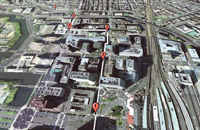
Joyce Walks
Joyce Walks a new project by Conor McGarrigle: Because somewhere, sometimes it's always Bloomsday. Every June 16th in Dublin Joyce enthusiasts celebrate Bloomsday with re-enactments of events from Ulysses. Unfortunately not everyone can be in Dublin for that day but why should that stop you celebrating Bloomsday where you want when you want. So as Bloomsday approaches we announce Joyce Walks a web 2.0 service which will let you map routes from Ulysses to any city in the world so that Bloomsday can be celebrated in any place at any time.
Joyce Walks is a psychogeographical tool which generates walking maps based on routes from James Joyce's Ulysses in any city in the world using Google Maps. The system prints maps to be used as the basis of walks exploring the city of your choice and generates mashups using your pictures and videos documenting these walks to share with other users.
Inspired by the Situationist idea of the Derive Joyce Walks seeks to provide the walker a means of exploring the urban environment which is unique, truly random but removed from a reliance on chance. Although based on a fixed route each map generated is unique as it is based on an individual selection by the user of the center point of their chosen city thus every map provides the walker a means of exploring the urban environment which although based on routes which are predetermined according to a strict adherence to a text is individual to them. Of course removing these routes from Dublin removes specific spatial relevance but they still retain an aura of association which creates a link between the locations and Joycean Dublin.
Joyce Walks saves every map generated to a database. These walks, in addition to being specific to their creator, form part of a continuum where each specific walk performed by any user of the system is added to an searchable archive of unique performative walks from around the world. This archive over time will become a tool to explore and view many unique walks in many cities around the world creating a veritable web 2.0 psychogeographical rough guide.
Requirements: Firefox or Safari browser , in this beta version Internet Explorer is not supported, support for IE will be added shortly. Due to copyright issues between Google and the British Ordnance Survey cities in the UK and Northern Ireland are not searchable, we are working to find a solution for this.
Posted by jo at 06:03 PM | Comments (0)
June 05, 2007
Passage Oublié
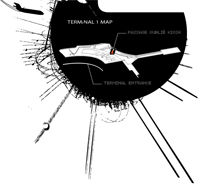
Let's Talk About Rendition Flights
Passage Oublié is an interactive artwork allowing the public to send messages to a touchscreen kiosk located in Toronto Pearson's International Airport. Messages received are animated along flight trajectories on a map featuring airports involved in rendition flights. Passage Oublié invites citizens of the world in transit at Pearson's International Airport to send messages (sms and web) relating to these questions: Are rendition flights an acceptable means of dealing with new terrorism threats? How does their use affect a country’s credibility as a defender of liberty? Does the end justify the means when it comes to pre-emptive war on terror? Are we compromising on the liberal democracies’ cherished principal of innocent-until-proven-guilty?
How to send a message: 416 300-7669 (sms starting July 1st; the airport wireless hotspots provide free access to this URL). All messages will be curated by the artists: Maroussia Lévesque, Jason Lewis, Yannick Assogba and Raed Mousa at Obx laboratory for Experimental Media.
With the support of Year 01, Concordia University, Hexagram.
Posted by jo at 03:56 PM | Comments (0)
May 23, 2007
Electronic Lens
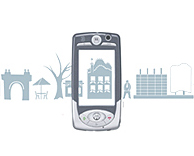
Annotating for Civic Engagement
The Electronic Lens explores and creates new paradigms of civic ubiquitous networking with mobile technologies. We think of Electronic Lens as something of a viewfinder. Using a motion that is already familiar (think point and shoot camera phones), the citizen can use the eLens to gather information about physical objects and places.
The eLens matches electronic information with the physical environment in an innovative way. For example, eLens users can post lasting messages in physical locations, tag buildings and places, or create social networks based on interest and social affinities. eLens interactions combine the physical environment with formal and institutional information and the annotations from users’ personal experiences.
Ultimately the eLens enhances the value of the city for its citizens by making their environments more accessible, more culturally vibrant, more socially just. The eLens fosters communication among people and between institutions; as a result citizens are now better able to navigate the social, institutional and physical urban space.
Posted by jo at 08:38 AM | Comments (0)
May 19, 2007
m-cult news 05/07
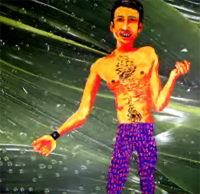
Urban TV, Participatory Politics +
M2HZ tests underway: M2HZ, the Helsinki-based urban television project is performing tests in May 14-20, 2007. The test broadcast aims to demonstrate a new type of open television in Finland, where local and public access tv is close to nonexistent. The M2HZ model is based on distributed production for a multi-channel transmission platform.
M2HZ is a collaboration between dozens of media, arts and civil organisations, who wish to affect the media landscape and find new audiences. Over 300 people have contributed their voices, insights and work to the development which kicked off in late 2005.
The test week's days are themed around debates on television and media criticism, local and global issues, live and media art, and the public domain. Throughout the week we follow the Sound & Fury of young bands, the events in the Kallio Kukkii neighbourhood festival, exercises by the Hunger theatre, and short films by media artists and students.
The programme is mostly in Finnish but also includes the first international exchanges: the new film Faceless by Manu Luksch and a retrospective of work by the Swedish Rafilm collective.
The test uses the digital tv and streaming platform of DINA tv, a cable channel of media schools. First tests for digital antenna (DVB-T) and mobile (DVB-H) distribution are performed with the VTT Technical Research Centre and the FinPilot2 project. Other key partners are the Youth Centre of Helsinki, Stadia polytechnic, and Otaniemi Underground Broadcasting System OUBS, the live-in television station of engineering students. M2HZ is coordinated by m-cult and supported by the Uusimaa Regional Council.
Participatory politics: m-cult and the Democracy Unit of the Ministry of Justice realize a workshop on participatory politics and foresight on June 8, 2007. The workshop gathers researchers, decision-makers and NGO representatives to discuss experiences of participatory forums and web tools to support deliberative democracy. Visiting experts are Lars Klüver (Danish Board of Technology) and Richard Rogers (University of Amsterdam / govcom.org).
The aim of the workshop is to find new methods, processes and tools for democracy. A special challenge is to bring citizen's views to affect the early phases of government and technology programmes.
m-cult at Pocketfilms: The Forum des Images has invited m-cult to present work on mobile and urban media at the Pocketfilms festival, Paris June 8-10, 2007. At the Pompidou centre, m-cult presentation includes Heidi Tikka's project Situations, the Mobicast project by Adam Hyde and the mobile production experiments realized within M2HZ.
Posted by jo at 01:11 PM | Comments (0)
May 12, 2007
Squirrel and Acorn
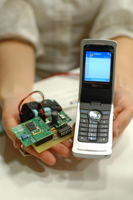
Cell phone Air Pollution Monitor
" ... Squirrel and the companion software, Acorn, also represent a bold exercise in social responsibility and cross-border engagement. "We want to make air quality data visible, accessible and legible to raise consciousness of environmental monitoring," says Spanhake. For this, she has collaborated with Calit2 researcher Kael Greco, author of a mobile webcam application that uploads images taken by the mobile phone automatically and continuously. These images are tagged and manipulated with the sampled pollution data -- the grittier the image, the more polluted the air is -- then displayed in real time on a web page. "This, along with other visual and audible ways, will help to demystify what 20ppm is in a meaningful way," says Spanhake, adding: "Low-cost technology will also make it available and scalable to the technological, environmental and cultural needs of individuals, communities and cities."
The device is low-cost, mobile, and scalable. It is also intended to be a building block for the creation of a mobile wireless sensor network dependent upon those who breathe the air -- people. "Squirrel is meant to monitor an individual's personal exposure to the air, thus providing a means for agency in the production of air pollution data," says Spanhake. "It will enable supplemental data to the environmental protection agencies that cannot afford to scale their technology to population growth and urban sprawl." ..." From Tracking Pollution and Social Movement: Love Fest for Calit2 Technologies at 'Make Fest 2007'.
Posted by jo at 01:35 PM | Comments (0)
May 11, 2007
Heavy Opera: An Audio Tour to Awaken Londoners to
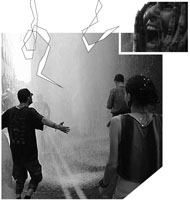
The Impact of Financial Systems on Climate Change
John Jordan and James Marriott’s operatic audio tour set in London’s Square Mile is intended to awaken city workers to the impact of financial systems on climate change. But not only does And While London Burns misgauge how much the suits already know, its hysterical tone also harmonises too easily with the coming new eco-order.
A fountain of water from the river Walbrook shoots up above my head, drums are pounding, a sound system’s bass rumbles. I hear cheers but I can also hear the clatter of police shields and batons around the corner. Seven years after London’s Carnival Against Capital, when protesters outside the LIFFE exchange broke a water mains sending a thirty-foot jet of water into the air, I am walking just a half a mile north of the same spot. Now I can hear the Thames rushing up the valley the Walbrook follows, bursting its banks, laying waste to the tall glass-fronted buildings as some of the most expensive real estate in London collapses around me. I’m swept up in a sonically induced fantasy driven by the tracks on my MP3player. I am taking part in And While London Burns, an operatic guided walk written by John Jordan and James Marriott, set to music by Isa Suarez and produced by the cross-disciplinary art and education group Platform.
John Jordan has played a role in both these participatory dramas, firstly as a member of Reclaim the Streets – one of the anti-capitalist groups that coordinated the Carnival Against Capital in June 1999. This time around as an artist commissioned by Platform – an interdisciplinary arts, campaigning and research group committed to longer term, less partisan approaches to transforming the activities of the financial institutions and corporations with head offices in the Square Mile. The walk is an attempt to dramatise the research Platform has conducted into climate change. James Marriott, its co-founder, explains:" from Heavy Opera by Anthony Iles, It's Not Easy Being Green, MUTE VOL 2 #5.
Posted by jo at 01:36 PM | Comments (0)
April 21, 2007
Turbulence Commission:
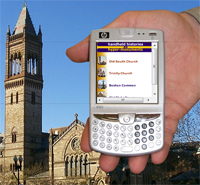
Handheld Histories as Hyper-Monuments
Turbulence Commission: Handheld Histories as Hyper-Monuments by Carmin Karasic, Rolf van Gelder and Rob Coshow, with special thanks to the HP mscapers team, Brett Stalbaum, and Jo Rhodes :: Part of the Boston Cyberarts Festival, pick up a smartphone at the Judi Rotenberg Gallery, 130 Newbury Street, Boston :: April 21-28, 2007, Tues-Sat 10am-6pm. Gallery talk today: 2:00 pm.
Designed for HP iPAQ 6900 series smartphones, Handheld Histories as Hyper-Monuments uses GPS and mobile technologies to address historic bias in Boston's public monuments. The artwork gathers non-official stories to socially construct hyper-monuments that exist as digital doubles, augmenting specific historic monuments. For example, imagine you are near the Old South Church in Boston, MA, USA. The smartphone sounds church bells to get your attention. It then displays an easily identifiable image of the Old South Church circa 2007, followed by images of the church that take you back in time. Finally you see the location as it was in its natural, wild state. You can send text, image and audio content to the website from the monument location via any internet enabled device. Or use any internet browser to view and add histories to the hyper-monuments.
HHHM requires HP mediascapes locative media software to create content rich hotspots on GPS aware maps. Once the HHHM mediascape is installed on a handheld device, a GPS fix is required to automatically display the hyper-monument. WiFi internet connectivity is best for viewing and contributing to the hyper-monument via the handheld's browser.
“Handheld Histories as Hyper-Monuments” is a 2007 commission of New Radio and Performing Arts, Inc., (aka Ether-Ore) for its Turbulence web site. It was made possible with funding from the LEF Foundation.
BIOGRAPHIES
One November morning in 1994, CARMIN KARASIC was listening to digital artists on NPR when she realized she was a digital artist trapped in a Fidelity Technical Project Manager's body. This simple realization changed her life. A multimedia artist focused on Internet Art, she is also an Assistant Director of Boston Cyberarts, and on the faculty of Lesley University. Her work can be seen online in several e-zines, websites, and galleries, such as CAGE. She has exhibited in the Boston area at the DeCordova Museum, MIT List Center, the Attleboro Museum, Computer Museum, New England School of Art and Design, The Art Institute of Boston, and The Brodigan Gallery; in NY at the Studio Museum, Harlem; Brooks Gallery at Cooper Union, and the New York Hall of Science; and Austria, Canada, Japan, and Germany. Carmin has been awarded a Mudge Fellowship from the Groton School and a duPont Fellowship from the Art Institute of Boston.
ROLF VAN GELDER is an artist and web developer. Self-taught, he has been creating visual art since the early 80s. He has been collaborating with Carmin Karasic since the 1990s. They created "d{s}eduction dialogue" for the 2001 Boston Cyberarts Festival and "Virtual Quilt" (2002) for the DeCordova Museum and Sculpture Park, Lincoln, MA, USA (with Clara Wainwright). In 1995 Rolf founded one of the first on-line art galleries, CAGE - Cyber Art Gallery Eindhoven (http://www.cage.nl). His work has been exhibited in over 50 exhibitions in the U.S.A., Canada, Austria, Portugal, Italy, Sweden, Germany, UK, Spain and the Netherlands.
ROB COSHOW is an artist/photographer who recently graduated Magna Cum Laude from the Art Institute of Boston. Trained in classic wet-lab photography as well as digital and new media, Rob has honed his experimental approach to create works that bridge multiple disciplines. In 2006, he exhibited his “Crab Cake” robots at Axiom Gallery, and collaborated with Jeff Warmouth, Roland Smart and other Boston artists to create “Art Show Down” at Art Interactive. He has received various honors for his photography and illustrious reviews for his new media work.
Posted by jo at 10:10 AM | Comments (0)
LOCATING OURSELVES
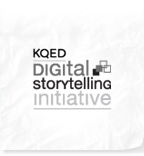
A KQED Digital Storytelling Summit
LOCATING OURSELVES: A KQED Digital Storytelling Summit :: May 26, 2007; 10-4 pm (Bonus: Friday evening, May 25, 6-8 pm party and showcase celebrating the Coming to California contest) :: KQED, 2601 Mariposa Street, SF :: All are welcome ::Lunch provided, so please RSVP: lrule[at]kqed.org
Come participate in an exploration of the current Digital Storytelling Landsacpe, with special attention given to place-based storytelling, locative media, and mobile technologies. So much is happening, and it's been a long while since we've come together to discuss where we might be going.
Many of us are practitioners, so please let us know what themes you'd like to see explored. Email Leslie Rule at lrule[at]kqed.org. We also invite you to join us Friday evening as we celebrate our high school digital storytellers who participated in the 5th Annual Coming to California Digital Storytelling Contest.
Posted by jo at 08:21 AM | Comments (0)
April 20, 2007
Prototypes of Moving Pictures
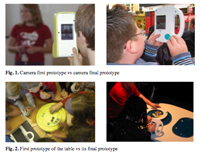
A Spontaneous + Collaborative Approach to Video Creation
The full paper written for Interact 2007 with http://web.media.mit.edu/~ishii/ is accepted! It shows how Textable Movie designed for facilitating video production has informed Moving Pictures. It presents a mechanism to seamlessly interface the various parts in video production and present our observations. The conference topic is socially-responsible interaction. So see you in Rio de Janeiro in September!
Abstract: The paper presents a novel approach to collecting, editing and performing visual and sound clips in real time. The cumbersome process of capturing and editing becomes fluid in the improvisation of a story, and accessible as a way to create a final movie. It is shown how a graphical interface created for video production informs the design of a tangible environment that provides a spontaneous and collaborative approach to video creation, selection and sequencing. Iterative design process, participatory design sessions and workshop observations with 10-12 year old users from Sweden and Ireland are discussed. The limitations of interfacing video capture, editing and publication in a self-contained platform are addressed. Download the 14 pages paper. [blogged by Cati Vaucelle on Architectradure]
Posted by jo at 05:19 PM | Comments (0)
April 18, 2007
AreYouHere?
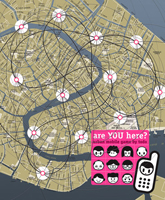
Venice - Urban Mobile Game
AreYouHere? :: 2007 - June 6th/15th - Venice - urban mobile game :: AreYouHere? is one of the 12 urban interventions of Migration Addicts, 52nd International Art Exhibition, La Biennale di Venezia, Collateral events :: Site: the whole city - starting point at Chiostro Ex Chiesa Santi Cosma e Damiano, Giudecca, 620.
AreYouHere? is an urban mobile game that aims to explore Venice through its inhabitants/migrants. More and more Venetians are leaving the lagoon to settle in other towns. In the next 30-40 years, it is certain that Venice's population will be dramatically reduced. Bar and hotel owners now come from abroad while the town is losing its original inhabitants and becoming more and more globalized. Thousands of tourists arrive to Venice everyday. The Observer provocatively wrote that if the only destiny of the town is low cost tourism then it would be better to have Venice managed by Disneyland Corporation. A kind of paradox is happening. Venice could be everywhere, that "exotic" does not exist anymore. Labor migrants from Asia are welcoming you and serving you Italian food. You are in Venice. But are you really in Venice? What do you see? Who do you meet?
AreYouHere? is an urban exploration through the faces of the people anyone can meet during his/her stay. Faces of migrants that have become the actual inhabitants, while the player is the stranger. A touristic and personal exploration of people and their faces. Those photos will be joined together into a personal postcard. He/she will receive the postcard at home. A postcard that is actually sent by him/herself. The player will receive the postcard to his/her home: a postcard that is actually sent by him/herself.. But the places you are supposed to visit, however, are not the ones you would expect to go, the top visited.
Surely you'd never take a photo of people who lives and works in these places. But that's what you have to do: shoot photos at immigrant people who live and work in Venice, carefully following the path that has been created for you, because you are the stranger, the tourist, and they are a part of Venice instead. You should take those photos with your mobile phone and send them by MMS to the number you found on the invitation. But remember, the first photo you send must be a photo of yourself: because you are a part of the game. [via]
Posted by jo at 04:34 PM | Comments (0)
April 10, 2007
Ubiquitous Media: Asian Transformations

CALL FOR PROPOSALS
Ubiquitous Media: Asian Transformations (Tokyo July 13-16,2007) :: DEADLINE: April 26 :: Plenary speakers will include: Rem Koolhaas (OMA Rotterdam); Mark B.N. Hansen (University of Chicago); Katherine Hayles (University of California at Los Angeles); Shigehiko Hasumi (Former President of The University of Tokyo); Ken Sakamura (The University of Tokyo); Barbara Maria Stafford (University of Chicago); Friedrich Kittler (Humboldt University); Akira Asada (Kyoto University); and Bernard Stiegler (Centre Georges-Pompidou, Paris).
Today media are increasingly ubiquitous: more and more people live in a world of Internet pop-ups and streaming television, mobile phone texting and video clips, MP3 players and pod-casting. The media mobility means greater connectivity via smart wireless environments in the office, the car and airport. It also offers greater possibilities for recording, storage and archiving of media content. This provides not just the potential for greater choice and flexibility in re-working content (tv programmes, movies, music, images, textual data), but also great surveillance (CCTV cameras, computer spyware, credit data checking and biometrics). The media, then, can no longer be considered to be a monolithic structure producing uniform media effects. Terminology such as 'multi-media,' and 'new media,' fail to adequately capture the proliferation of media forms. Indeed, as media become ubiquitous they become increasingly embedded in material objects and environments, bodies and clothing, zones of transmission and reception. Media pervade out bodies, cultures and societies.
These ubiquitous media constitute our consumer and brand environment. Their interfaces and codes pervade our bodies and our biology. They pervade our urban spaces. They are ubiquitous in art, religion and our use of language. Yet from another angle art and language are, and have immemorially been, media. Media are about the physical, algorithm and generative code; but they are also immaterial and metaphysical. Communication is about channels and hardware/software; but communication is also about communion and community. Media deal in images: that is in the material; but their idiom is also symbols and the transcendental.
To theorize about today's world, we evidently need to theorize media. Yet to theorize media also means we need to focus on how technological media are used in everyday practices. Not least, we need to address the question of the relationship of media practices to politics. This opens up questions about the formation of informed publics, new social movements and media events, not just the alleged need to combat media terrorism, nationalism and crime. Suggesting further questions about the power and influence of transnational media, intellectual property rights and openness of access. Raising issues of generativity, creativity and critical intervention.
Asia - East Asia, South Asia, and increasingly crucial, the Middle East - are becoming sites for these processes. Global geopolitics has been restructured by the 'rise' of China and India and the turbulence of the Middle East. With concomitant transformations of the role of the West and Japan, this conference becomes also a question of 'ubiquitous Asia.' These transformations are producing new trans-Asian culture industries, social movements and activism. At stake are a set of transformations of Asian culture(s) itself - of language, and modes of cultural thought and being. We will seek to address these uestions of media transformations and their relation to social and cultural processes in a number of plenary sessions, paper sessions, round tables and events.
About Organizers
This conference is organized by Theory, Culture & Society and Interfaculty Initiative in Information Studies / Graduate School of Arts and Sciences, The University of Tokyo.
Posted by jo at 11:39 AM | Comments (0)
April 04, 2007
Neo-nomad ID:
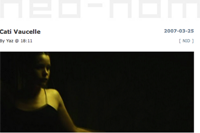
Cati Vaucelle
Yasmine Abbas challenged [Cati Vaucelle] on mobile-related questions for her NID series. The interview.
Yasmine initiated an interview serie the NID. The NID stands for Neo-nomad ID. The concept wants to push the envelop of a classical interview by providing readers clues to reflect on mobilities, and the paradoxes engendered. These NIDs are "tranches de vies", meaning "slices of lives", rather than a questionnaire listing projects. They dwell into the intimate and the everyday life of beings to understand better our relationship to mobilities and technologies. Necessarily, because the method of investigation relates more to ethnography than journalism, I felt that visuals were essential to the NID. Also, NID in French means "nest". [via] Come to Upgrade! Boston on April 12 to here Cati and Yasmine.
Posted by jo at 03:51 PM | Comments (0)
Participatory Urbanism
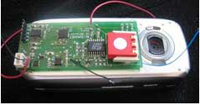
Phone as Environmental Instrument
Last week in Oslo, i attended a very inspiring talk that Tom Igoe gave at the Oslo School of Architecture. He presented open source ideas and explained their impact on the way we think about space.
Among the projects he showed was Participatory Urbanism, a work by Eric Paulos, Ian Smith and RJ Honicky that turns the mobile phone into a “networked mobile personal measurement instrument."
On the one hand, there's a sophisticated device, the mobile phone, which provides us very little insight into the actual conditions of the terrain we traverse with it.
On the other hand is the fact that we must defer to a handful of civic government installed environmental monitoring stations that use extrapolation to derive a single air quality measurement for an entire metropolitan region. Such data doesn't reflect the dynamic variability arising from daily automobile traffic patterns, human activity, and smaller industries.
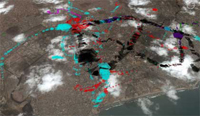 [Left: Carbon Monoxide readings made with taxicabs across Accra, Ghana] The goal of Participatory Urbanism is to provide mobile devices with new “super-senses” by enabling sensing technologies such as noise pollution, air quality, UV levels, water quality, etc. to be easily attached and used by anyone, especially non-experts.
[Left: Carbon Monoxide readings made with taxicabs across Accra, Ghana] The goal of Participatory Urbanism is to provide mobile devices with new “super-senses” by enabling sensing technologies such as noise pollution, air quality, UV levels, water quality, etc. to be easily attached and used by anyone, especially non-experts.
Integrating simple air quality sensors into networked mobile phones promotes everyday citizens to uncover, visualize, and collectively share real-time air quality measurements from their own everyday urban lifestyles. This rich people-driven sensor data leverages community power imbalances, and can increase agency and decision maker understanding of a community's claims, thereby potentially increasing public trust.
Other projects Tom Igoe presented: Public Air Quality Indicator, Area's Immediate Reading and i'll add Neighbourhood Satellites. [blogged by Regine on we-make-money-not-art]
Posted by jo at 03:38 PM | Comments (0)
Day Of The Figurines at Lighthouse, Brighton
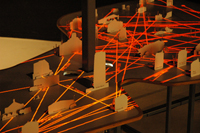
UK Premiere
Blast Theory presents the world premiere of Day Of The Figurines, a mass participation artwork using mobile phones that is part board game and part secret society. Set in a fictional English town that is littered, dark and underpinned with steady decay, the game unfolds over 24 days, each day representing an hour in the life of the town. Up to 1000 players place their plastic figurines onto the board. They are moved by hand in a meticulous performance throughout the duration of the exhibition.
Players participate by sending text messages. They must help other players as they receive updates from the town, missions and dilemmas. They can also chat to players who are near them in the town using text messages as events unfold in the town: a gig by Scandinavian death metallists, an invasion by an Arabic army, a summer fete. Day Of The Figurines is the world’s first MUD (Multi User Domain) for mobile phones.
Opening times
4th to 27th April 12 – 4pm
Venue: Lighthouse, 28 Kensington Street, Brighton, BN1 4AJ
Day Of The Figurines was developed by Blast Theory in collaboration with the Mixed Reality Lab at The University of Nottingham, Sony Net Services and The Fraunhofer Institute as part of the European research project IPerG (Integrated Project on Pervasive Gaming).
Additional tour Dates
Day Of The Figurines, Fierce! Festival, Birmingham, 18th May to 10th June
Can You See Me Now?, Donau Festival, Krems, Austria, 19th to 21st April
Can You See Me Now?, Dublin, 9th to 12th May
Can You See Me Now? won the Golden Nica for Interactive Art at Prix Ars Electronica and was nominated for a BAFTA Award.
Posted by jo at 11:05 AM | Comments (0)
March 29, 2007
1000 DAYS OF THEORY

Pure Mediality in Serres and Agamben
"What is a Medium or, what do the means mean? Isn't it strange that our desire for newer and ever more dazzling media machines is equaled only by our wish to escape them? From mathematical perspective to the camera obscura, from photography to cinema -- television, the internet, virtual reality environments and all the more far-out sorts of artificial intelligence -- innovations in media have always been driven by the desire to overcome mediation. Whether it is the frame, the wire, location, bodies or simply physical presence that it eliminates, each new device promises to deliver the same content as its predecessor, only more immediately, which is to say without the clumsy medium in which the signal had been trapped. Jay Bolter and Robert Grusin have shown how this desire to escape media by means of media has developed according to a logic that they call "remediation." Television gives us everything film offered, but without the apparatus of the projector and the centralized theater. The laptop accomplishes what the portable computer was supposed to do, just as the PDA puts us in touch with everything the laptop promised but failed to deliver. And now wireless technology promises to accomplish all of this without the restrictions of any centralized location at all.[1]" From Noises and Exceptions: Pure Mediality in Serres and Agamben by Stephen Crocker; CTHEORY: 1000 Days 053 :: 28/03/2007 :: Editors: Arthur and Marilouise Kroker.
Posted by jo at 02:57 PM | Comments (0)
March 22, 2007
Introducing The Artmob (beta): Benjamin Thomas

Subscribe Now!
The Artmob is pleased to announce its pilot project from artist Benjamin Thomas. Benjamin's work on OBFAT introduces "Original Advice and Inspirational Phrases" to the public under a Creative Commons Attribution Share Alike licence. Phrases are sometimes matched with typeset and graphics by Benjamin.
For 30 days, Benjamin Thomas will be broadcasting phrases, graphics, and calls for participation via SMS/MMS direct to subscriber's mobile phones through The Artmob. To find out more and subscribe please visit TheArtmob.net.
The Artmob is a new project currently in its pilot stage. We are devoted to curating and commissioning art for mobile devices. Artmob will also provide resources for artists to create mobile content in effort to expand the dialogue on mobile media into the artist realm. For more info and contact information please visit TheArtmob.net.
Posted by jo at 10:07 AM | Comments (0)
March 19, 2007
Anne Galloway
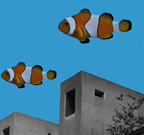
Mobile Publics and Issues-Based Art and Design
"Starting with the 'problem' of the public, I look to select historical and philosophical understandings of publics and politics. Building on the work of early American pragmatists like Walter Lippman and John Dewey, I focus on a public that is fragmented and contingent but still very much capable of judgment and action. In order to delve deeper into the kinds of situations or events in which these kinds of publics can come-together I find inspiration in the carnivals and feast crowds so eloquently described by Mikhail Bahktin and Elias Canetti, as well as in Bruno Latour’s "parliament of things" or dingpolitik. I follow that discussion with an overview of recent research into the social and cultural aspects of mobile, context-aware and pervasive computing, and I question the senses of 'public' and 'private' at play. More specifically, following Mimi Sheller, I ask what a non-network model of mobility might look like. The kind of fluid and messy picture that emerges ends up pivoting on acts of coupling and decoupling, or gelling and dissolving, multiple publics and privates around shared concerns or difficult issues.
The chapter culminates in a discussion of what I call issues-based art and design, or those mobile and context-aware projects in which a 'public' is convened around a set of shared concerns or complex issue that cannot be adequately handled by more traditional means. More specifically, I look at mobile technologies being deployed in the interests of political and economic awareness and action, as well as environmental awareness and sustainability. Assessing the limitations and possibilities of these kinds of technological, artistic and design interventions, I conclude by asking where the most productive potentials for mobile publics can be found, and what it will take to actually mobilise them." From Mobile Publics and Issues-Based Art and Design (pdf) by Anne Galloway; form Sampling the Spectrum, edited by Barbara Crow, Michael Longford and Kim Sawchuck, forthcoming from University of Toronto Press.
Posted by jo at 05:26 PM | Comments (0)
March 16, 2007
The Museum of Lost Interactions (MoLI)
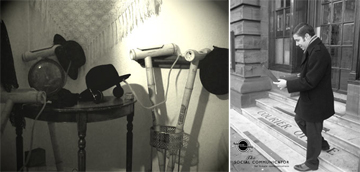
Left: The Zenith Radio Hat, 1952 Right: The Social Communicator, 1932
In 1952 the Zenith Radio Hat was the world's most portable radio of its time. It is a combined hat and walking cane. It allowed the user to tune in and listen to radio stations from around the world whilst on the move.
The Social Communicator (1932) was a simple and sophisticated piece of apparatus that made it possible to communicate with other users wirelessly. Using Morse Code technology, messages could be sent and received with ease. The Social Communicator was ideal for the busy hustle and bustle of city working.
From The Museum of Lost Interactions (MoLI).
Posted by jo at 03:16 PM | Comments (0)
Collective Thinking
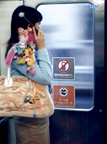
by Kristóf Nyíri
[...] Raimondo Strassoldo employed less uncertain terms. As he put it: "There is a time for speaking and communicating; but there should also be a time for thinking, for meditation, for contemplation, for concentration, for reflection, for introspection, for internal talk within oneself and, perhaps, with the inhabitants of the self." Strassoldo observes that with the spread of the mobile phone people "only seem to be able to exist as nodes and terminals of communication networks". As he sees it, the young are ever less capable of becoming "autonomous, self-directed individuals", and he recalls David Riesman "denounc[ing] more than half a century ago the trend toward other-directedness". (6) Strassoldo's reference to Riesman is not entirely apt. The latter did in fact make the connection, in his 1950 book The Lonely Crowd, between the printed book and inner-directedness; (7) however, Riesman's notion of other-directedness is thoroughly bound up with the experience of centralized mass media. Networked communication of course provides one with very different experiences. Do we have reason to believe that the network individual's cognitive achievements (8) are in any way inferior to that of the inner-directed one? It was in the wake of Strassoldo's talk (9) that I decided, during the planning stages of the present conference, to dedicate my paper to the topic of collective thinking. (10) ... From Collective Thinking by Kristóf Nyíri [PDF] Also see Thinking with a word processor and The Networked Mind [PDF] by the same author.
Posted by jo at 02:58 PM | Comments (0)
March 13, 2007
Digital marks
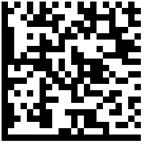
Augmented Realities
A little bit on digital marks, I selected a variety of them.
The semacode, a two dimensional code that encodes a URL. The picture (left) is the semacode of architectradure. Thank you Michael Surtees for the link! This tag embed the URL address of my blog, that can be read by your cell phone and send you to its page. I guess it avoids typing in the URL and you can rapidly go through a series of web sites using the respective tags.
It is especially useful for combining physical space to digital content. The Semacode's Software Development Kit has is developed for ubiquitous computing by creating visual tags for objects and contexts, and read them using a mobile camera phone. The physical Wikipedia called Semapedia, created by Alexis Rondeau and Stan Wiechers, allows you to add place tags on places and things to link them to the relevant Wikipedia articles.
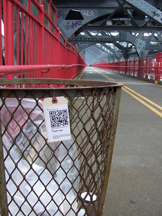 [images: trash can with a wikipedia tag] Semacode technical paper.
[images: trash can with a wikipedia tag] Semacode technical paper.
Urban Tapestries allows public mapping and sharing by combining mobile and internet technologies with geographic information systems. This system was linked to Natalie Jeremijenko's famous feral robots -open source robots for investigating contaminated urban sites- and called Robotic Feral Public Authoring: "Adding the sensor readings to online mapping tools, such as Urban Tapestries, suddenly brings the relationships between environment and home vividly to life. It enables people to feel they can learn about their environment and have the evidence to do something about it"
Yellow Arrow allows a community to tag places using arrows. You can post a message using the arrow and anyone could retrieve it using their cell phone. Another method to link digital content to a physical place. The community of yellow arrow is quite big. Their blog.
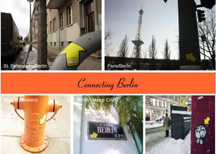
Elens allows anyone to create talking landmarks. Developed by the MIT Media Lab it allows anyone to tag a place by adding a sticker on a physical location, sticker that can later be scanned by a cell phone, in this case the Motorola A1000.
M-views developed at the MIT media lab in the interactive cinema group -media fabrics- with Glorianna Davenport, explores the "ideas, methods, and culture of mobile cinema, which is experienced in temporal and spatial narrative segments that can be delivered on context-aware mobile devices."
In 2002, I researched with Glorianna Davenport on technologies to allow digital information to communicate with the physical space. I worked on Passing Glances a system that enables users to create ambient urban interludes through the use of SMS text messages. Associated graphics and storytelling were projected in the urban space.
CHI'04 paper
Enarrative5 2003 paper
With these tags, the physical space is tagged to the digital space. One can think the other way around and tag the virtual space with physical content. That is what Josh Lifton told me he was working on the other day. Josh created a plug sensor/actuator network, called the dual reality lab, that links the MIT Media Laboratory space to a virtual lab space in the Second Life online virtual world.
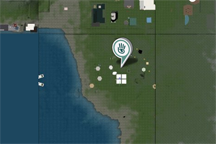
[left: Location of the MIT Media Laboratory in Second Life] More info technical about the plug. [blogged by Cati Vaucell on Architectradure]
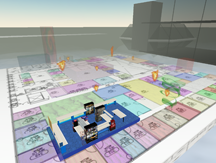
["Dual reality" is the concept of maintaining two worlds, one virtual and one real, that reflect, influence, and merge into each other by means of deeply embedded sensor/actuator networks. Both the real and virtual components of a dual reality are complete unto themselves, but are enriched by their mutual interaction. The dual reality Media Lab is an example of such a dual reality, as enabled the Plug sensor/actuator network that links our actual lab space to a virtual lab space in the Second Life online virtual world.]
Posted by jo at 01:30 PM | Comments (0)
March 08, 2007
MobSpray
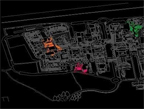
A Mobile Radicals Project
If computer applications are to become pervasive then they must become part of the everyday fabric of our lives and will provide users with the ability to interact with objects and places within both the real and virtual worlds. One trait of human behaviour in the interaction with objects appears to be an inherent passion for leaving our mark on these objects. In our current society, this is most readily evident through graffiti spray-painted in public places. To some, this is urban art reflecting the communities in which it resides, whilst to many it is an act of vandalism.
SprayCan graffiti divides communities and generations in terms of how it should be dealt with in terms of either complete acceptance or punitive action. In MobSpray we have developed a system that tries to bridge the divide as it both provides writers with a means of tagging their environment, using mobile phones and RFID tags, whilst minimising the physical effects to the landscape for the communities where it resides.
Writers’ tags are deposited, and collected, from a database operating on a central server using a GPRS connection initiated by a Java application on a Nokia 5140 with an in-built RFID reader. These tags are currently displayed on the writers phone but the system is being evolved so that they can be projected on walls in urban landscapes.
Posted by jo at 12:38 PM | Comments (0)
February 26, 2007
Ophonine Pophorn
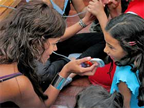
Phone as Musical Instrument
Paving the way for more news about Bogota...
Erik Sandelin and Magnus Torstensson from Unsworn have presented at the Bogotrax festival in Bogotá their new Ophonine Pophorn software. The Ophonine is the first in an upcoming series of applications that transform your mobile phone into various musical instruments. With the Ophonine you can record and play sound loops with a press of a button.
First you have to download the Ophonine Pophorn software which will be available for free in May 2007. After that it works like this: press and hold the button to record a sound loop, using the microphone of the handset. When you let go of the button the loop is played back repeatedly - through the phone speaker or via an audio cable - until another sound has been recorded. Demo.
The Ophonine Pophorn is based on Unsworn’s installation, the Four Ophones.
After Bogotrax (which ends today) Unsworn will continue its Colombian Pophorn Tour with events in Medellin, as part of the Pixelazo festival.
Top image by Bogotrax' photos. More mobile phone as a musical instrument: musical tones played depending on how far away the hand is from the camera; the HandyDandy, Dialtones, Sinfonietta ringtone concert. [blogged by Regine on we-make-money-not-art]
Posted by jo at 06:13 PM | Comments (0)
February 19, 2007
In-Site Montréal

Hotspot Interventions
In-site Montréal: Curator’s statement by Michelle Kasprzak :: In-Site Montréal is a collection of site-specific art presented on the portal pages of five wireless internet (Wi-Fi) hotspots in Montréal. Artists Nicolas Fleming, Maria Legault, and Virginie Laganière have created artworks that may be viewed when users of the free service provided by Île Sans Fil log in to their accounts at the selected hotspots.
The five hotspots are rooted in specific spaces, each one with its own unique properties. The In-Site Montréal project grew out of a desire to augment the experience of place for Wi-Fi users, offering an additional layer of information within the hotspot environments. The artworks that are presented on the portal pages are inventive responses to the characteristics of the spaces that the hotspots inhabit.
“The window appears to look out onto a dataspace that continues beyond the borders of the window itself. [...] But the illusion quickly wears off. The window starts to feel more two-dimensional, more like a piece of paper than a portal. The view-space appears to flatten out, to the point where the window and the data contained within the window merge.”i
Here Steven Johnson is describing the effects of using a scrolling window on a computer screen for the first time, and I am referring to it (ever so slightly out of context) to illustrate a point about the works that are being presented within In-Site Montréal. The users of the Île Sans Fil wireless network are, arguably, all hardened internet users, for whom the complexities of scrolling windows and portals and most other graphical user interface-related things are trivial.
However, since they have reached the secondary stage that Johnson refers to, where the “window and the data contained within the window merge”, there are certain expectations for an experience that can keep pace with their ability to leap from hyperlink to hyperlink.
Portals, by and large, are clumsy. The portal that occasionally pops up on my screen, which is associated with my Hotmail account, assumes I am interested in all manner of celebrity gossip and sports scores, and regional news for an area that is 45 miles to the west of where I currently live. But the works presented as part of In-Site Montréal are not attempting to form part of a portal experience that would guess the preferences of each user. The works are dealing directly with the particularities of the site where the hotspot is, which is a small enough area to be clearly defined as a common element in each user’s experience. For the elite users, something at last may jump out at them from this flattened dataspace where things feel as twodimensional and familiar as a piece of paper. Instead of the usual hurried clicking to get past a familiar “roadblock” and get to the destination they intended to go to, they may now feel that the artists of In-Site Montréal have added an observation on their local café, library, or artist-run centre that matters, that they can respond to, that strikes them out of their reverie.
“A provisional conclusion might be that in advanced art practices of the past thirty years the operative definition of the site has been transformed from a physical location —grounded, fixed, actual— to a discursive vector—ungrounded, fluid, virtual.”ii
Parts of this definition of site – fluid, virtual – are key concepts that that In-Site Montréal works with. The layer of information that floats on top, as a meta- layer to the usual experience of café users in the Île Sans Fil network is meant to be something a bit fluid, virtual and unexpected. The only definition that it does not fit is that of “ungrounded”, precisely because it is the grounding in the site that sets this project apart. Maria Legault’s interventions with her Free Sugar project may be considered particularly grounded in the sites in question. She worked with two locations, Studio XX and Café Utopik, and developed an extension of her Free Sugar project around both locations. At Studio XX, a feminist art centre that primarily consists of an office space and computer lab, she created a performance event entitled the Free Sugar Salon, that was open for anyone to attend and have the holes in their lives filled with pink pudding. She filled cracks in the architecture of Studio XX with pink icing, and then turned her attention to the attentive public that arrived at the studio, counseling them and filling their mouths with pink pudding to console them. At Café Utopik, a café/bar that regularly hosts bands and spoken word events, she conducted a surreptitious intervention, filling crevices and holes in the architecture and surrounding environment of the Café with pink icing, and documenting it in photographs. Both of these projects are presented on the portal pages of Studio XX and Café Utopik as video documentation of these actions.
Artist Virginie Laganière focused on two very different areas: the Jean-Talon Market and the area around the popular meeting place, Café Utopik. Her site-specific video pieces were shot with regular video cameras, as well as custom camera rigs attached to her body. She then manipulated the footage further in the editing suite, adding her own compositions as soundtracks and prolonging moments that happened oncamera, providing us a moment to reflect on their significance. She specifically chose to document moments where people were not as present in these spaces, and where the patterns of movement in the “off-peak” hours would become more apparent.
Through her augmentations in the editing suite, she also aims to create a piece of work that allows us to see beyond our usual clouded and harried view of the urban environment, and enjoy a view of the built environment that is tranquil, constructed, and part of an aesthetic experience. In particular, her video piece presented on the portal page of the Jean-Talon Market, usually a place so buzzing with activity as to be nearly impossible to navigate, was shot in the very early hours of the morning, when market stall owners are setting up. This meditative and slow period of the Market’s activity is hidden from most of the Market’s patrons, and Virginie’s artful editing brings out the poetry in the stasis of these moments.
Nicolas Fleming's performance art videos also present us with an alternate view of our public spaces. His work is presented at Café Kafeïn and Laïka, because of both the subject matter that he chose and the locations that he performed in. At Laïka, an extremely popular and hip bar/restaurant/club, he presents se traîner, a piece wherein he drags himself out of his apartment (which is within the same building complex that Laïka is in) and down the stairs to an escape portal – an automatic garage door. Throughout the performance he can be heard grunting with the strain of moving himself in such an unconventional way, and by the end of this performance, he is clearly exhausted. Users viewing this video must marvel about this strange and strenuous test to his body, that took place in relative secret behind the scenes of the Laïka’s festive décor. In the other piece, traîner un dj, Fleming travels to Île Sainte-Hélène to encase a dj in a canvas sac, and drag him along the pavement, with the sounds of Piknic Electronique (Montréal’s outdoor summer dance club) pounding in the background. This work is presented at Kafeïn due to the dj culture that is resonant there; the dragging of a dj must be somewhat humourous to the clientele.
Telematics is a term used to designate computer-mediated communications networking involving telephone, cable, and satellite links between geographically dispersed individuals and institutions that are interfaced to data-processing systems. It involves the technology of interaction among human beings and between the human mind and artificial systems of intelligence and perception. The individual user of networks is always potentially involved in a global net, and the world is always potentially in a state of interaction with the individual.iii
The virtual spaces that In-site Montréal inhabit are amorphous areas around several accepted gathering places such as cafés, galleries, markets, and bars. They are perhaps places where as an internet user, you may intend to use the opportunity of connectivity to the network to look outward, to read news of distant places or connect with friends far away through e-mails and online social networking sites. The art practice of telematics in particular addresses the creative possibilities when two parties are connected over distance to communicate. In some way, the pieces presented on the portal pages of Île Sans Fil’s network as part of the In-Site Montréal project present something that is almost anti-telematic, in that the works look inward rather than outward. In the case of this project, a connection to someone across the globe is not sought, it is shunned in favour of a further examination and rumination on the details of the local environment. A local resident, who is perhaps used to the culture at Café Utopik, may be best able to chuckle at the video of pink icing being added to the sign above the door. This intense inwardlooking that these pieces commit to is the essential point of the project. Instead of seeking to look outward and connect with others who are in a radically different geographic space, In-Site Montréal hopes to reconnect locals with their own space, through the language of culture, compelling users of the network to turn their gaze inward enough to consider the cultural resonances that are possible.
- Michelle Kasprzak, 2006/2007
i Steven Johnson "Interface Culture: How New Technology Transforms the
Way We Create and Communicate" 1997 Harper Collins, New York. Pg 86
ii Miwon Kwon, One Place After Another: Notes on Site Specificity, October 80 (Spring
97): 95.
iii Roy Ascott: “Is there love in the telematic embrace?”
http://www.receiver.vodafone.com/07/articles/03_page01.html
Posted by jo at 04:05 PM | Comments (0)
February 06, 2007
Takashi Matsumoto on
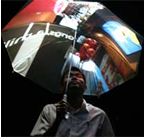
Ubiquitous Content + Pileus: The Internet Umbrella
"[...] "Ubiquitous Content" is an idea of a new design objective of our lives in the post-PC era. In 20th century, a notion of media contents has been meant contents like movies, music, animations, video games etc. Figuratively speaking, such contents were entities supplied in containers designed as "boxes". But now, a spread of networks and a realization of ubiquitous computing technologies are going to change those styles of media. The container is not like a "box" any more: It will change its forms freely to give us advanced computer augmentations in a specific context and it will be sometimes invisible embedded into our environments. It is more appropriately called Ubiquitous Media and it will be a new style of media. When we design such Ubiquitous Media, we need to think about the container as our environments in which many things are cooperating rather than a single hardware, a single software or a single standard. Users will not need to be conscious of those medias, therefore such containers emerge for users as "their lives" themselves. "Ubiquitous Contents" are contents for such media. Those must be "experiences" in "their lives".
As Ubiquitous Content project focuses on our lives and experiences, all things in our everyday lives are targets of the design. The 10 Laboratories of KMD are working on this wide subject from different perspectives....
Pileus is the most exciting project for me right now. This work is designed in a team with Sho Hashimoto, who has a unique engineering skill in the lab. We started this project in a kick-off camp of a spring semester in 2006. the initial concept and the first scenario movie were completed in just 3 days of the camp.
We have many rain in Japan. So the umbrella is one of the closest article of everyday use, but it is also a bulky article in such a climate. Traditionally we have been feeling many kinds of air and mood in a rainy day, and we wanted to expand that feeling to be more fun and vivid with the re-design of an umbrella. From that perspective, we came up with the idea of umbrella to take photo-logs and to browse internet contents in a rain. Me and Sho already took notice of that we can provide many kinds of services in a real world with Web2.0, and also had a technological vista to mash-up those with a mobile hardware. Additionally, it was another target that this can be the first example of a hardware mash-up to indicate a new economic solution for mobile gadgets joining into an economy of Web 2.0. We do not want a small "Cellphones" (Smartphones, whatever) squashing up many functions inside, but we re-designed an object of everyday use from scratch to be mashed-up with web services.
At the end of last year, we founded a spined-off LLC for the project, and we are thinking how it will go a business exit.
As the ideology of the design of Pileus, we would like to show that design is not about its shape any more; an apt assortment of modules and interactions are more important factors for the design. So, our prototype is showing off the circuits to see how modules are combined rather than covering it. Some people suggest us to give a beautiful surfaces for it as a "design", but that is not what we want to do now, we are meticulous about the interaction of information visualizations on the screen though. Fortunately, this rugged look is loved by many audiences at demo sites.
As an exclusive info, we have builded a new version of Pileus with GPS. A new function with GPS is geo-tagging of photos taken by Pileus. It will help to users to check and share records of their walks in the rain. Another function is a map display of an area. This will be used for a big-screen navigation in an umbrella, and it will be able to show local pictures and local ads are loaded on the umbrella. Of course, this function is also realized by a mash-up technique. Now we are using Yahoo! Maps API, but we may switch it to Google Maps API because Japanese map on Yahoo! maps has bad scale ratio. We are going to go an experiment in a city in a rain, however, unfortunately we have had few rainy days this year yet... [ from Regine's interview on we-make-money-not-art]
Posted by jo at 01:07 PM | Comments (0)
February 05, 2007
4th International Workshop in Mobile Music Technology 2007
![]()
Call for Proposals
MOBILE MUSIC TECHNOLOGY :: FOURTH INTERNATIONAL WORKSHOP :: AMSTERDAM, THE NETHERLANDS, 6-8 MAY 2007 :: Submission deadline: 12th March 2007.
Combining music and mobile technology promises exciting future developments in a rapidly emerging field. Devices such as mobile phones, Walkmans and iPods have already brought music to the ever-changing social and geographic locations of their users and reshaped their experience of the urban landscape. With new properties such as ad hoc networking, Internet connection, and context-awareness, mobile music technology offers countless new artistic, commercial and socio-cultural opportunities for music creation, listening and sharing. How can we push forward the already successful combination of music and mobile technology? What new forms of interaction with music lie ahead, as locative media and music use merge into new forms of everyday experiences?
This series of annual workshops began to explore and establish the emerging field of mobile music technology in 2004. This fourth edition of the Mobile Music Workshop in 2007 offers a unique opportunity to participate in the development of mobile music and hands-on experience of cutting-edge technology.
This year’s workshop is hosted by STEIM and Waag Society in Amsterdam, The Netherlands, and partners with the Futuresonic Festival in Manchester, England, taking place later the same week. The programme of the workshop will consist of keynote presentations from invited speakers, peer-reviewed paper presentations, poster sessions, in-depth discussions about the crucial issues of mobile music technology, demos of state-of-the-art projects, break-out sessions and live events. Registered participants will take part in hands-on sessions conducted by leaders in the field. In addition to traditional presentation sessions, the programme includes events open to a general audience, facilitating the presentation of artworks and technological breakthroughs to a wider public.
The Mobile Music Workshop sets the stage for a collaboration that brings together leading institutions in both experimental electronic music and mobile media. STEIM (the studio for electro-instrumental music) is a centre for electronic music production well known in the performing arts. STEIM promotes the idea that Touch is crucial in communicating with electronic and digital arts technologies, a vision that over the years has given birth to physical, sensor-based musical instruments. Waag Society is a research and development institute in the fields of networked art, education and creative industries. Waag develops platforms for artists to reach society through networked collaboration, media streaming, and locative media.
CALL FOR PARTICIPANTS AND WORKS
We invite practitioners, artists, designers, hackers and researchers from all areas, including music, technology development, new media, sound-art, music distribution, cultural/media studies, locative media and industry to submit work and register to attend. Don't miss this chance to help shape the mobile music landscape of the future! Participants are encouraged to submit their work in mobile music technology to the categories below. The partnership with the Futuresonic Festival allows those coming to Europe to make a single trip to attend both events.
* Papers
We invite submissions of workshop papers presenting new projects, approaches or reflections exploring the topic of mobile music. Potential submissions could include but are not limited to mobile music systems or enabling technologies, interface design, legal issues, user studies, ethnographic fieldwork, social implications, art pieces and other areas relevant to mobile music.
Accepted paper authors will be given a time slot during the workshop for presentation and discussion of their work. Format: up to 8 pages in ACM SIG publications format (shorter papers welcome). For templates, see http://www.acm.org/sigs/pubs/proceed/template.html
* Posters
We also invite the contribution of posters that document work-in-progress projects or ideas in similar areas of mobile music technology as the papers.
Posters will be on display during the duration of the conference. We will arrange a poster presentation session where attendees will be able to discuss the works with the authors. Format: 2 pages in ACM SIG publications format
* Demonstrations
We also invite submissions of work to the demo category. Besides encouraging paper and poster presenters to bring a demonstration as a complement their presentation, we encourage submissions of stand-alone demos of mobile music systems or enabling technology. Their implementation should be ready enough to be demoed, and will possibly be shown to the general public during open sessions depending on their robustness. Format: 2 pages in ACM SIG publications format.
SUBMISSIONS
Please email your submission as a PDF file in the appropriate format to submissions[at]mobilemusicworkshop.org In the subject line, state MMW SUBMISSION followed by PAPER, POSTER or DEMO and the name of the main author. Submissions will be peer-reviewed by a committee of international specialists in the fields of mobile music, interactive music, and locative media.
DEADLINES
Submission deadline: 12th March 2007
Notification of acceptance: 2nd April 2007
Registration deadline: 16th April 2007
Final submission deadline: 16th April 2007
REGISTRATION & FEE
This year’s workshop will have both closed sessions for registered participants and sessions open to the general public. The number of participants for the closed sessions of the workshop is limited to 50 places. Accepted submitters are given priority, other participants are accepted on a first-come first-served basis. Registered participants will have automatic access to all sessions of the workshops. The closed sessions of the workshop will be charged both a regular and a reduced student fee, similar to the last edition’s fees.
Registration deadline: 16th April 2007
The open sessions will be advertised in more detail closer to the event. The fee for the open sessions will be event-based. Scheduling and registration fees will be coordinated with Futuresonic to allow participants to easily attend both events.
ORGANISERS
* International Steering Committee
Atau Tanaka (Sony CSL Paris, France)
Frauke Behrendt (University of Sussex, UK)
Lalya Gaye (Viktoria Institute, Sweden)
* Local Organising Committee
Kristina Andersen (STEIM, The Netherlands)
Robert van Heumen (STEIM, The Netherlands)
Ronald Lenz (Waag Society, The Netherlands)
MORE INFORMATION
For more information about the previous and up-coming workshops, the ACM SIG publications format as well as travel and accommodation information, please consult: http://www.mobilemusicworkshop.org/
Posted by jo at 11:13 AM | Comments (0)
January 26, 2007
Mega Plotter

Collective Painting
Mega Plotter is an interactive installation by Mads Wahlberg. The installation consists of a 5×7 metre large canvas. An X-Y-moveable system with industrial paint spray guns with the colours red, green, blue and yellow were mounted in front of the canvas. The X-Y-movable system was computer and mobile phone-controlled. By dialing a particular phone number, visitors at the Danish musical festival, Skanderborg Festival, were able to control the plotter with the keyboard of their mobile phones.
By pressing the star, zero or pound keys, users could choose between the different colours of paint. By pressing the 2, 4, 6, and 8 keys they were able to control the movement of the plotter horizontally and vertically, and by pressing the 1, 3, 7, and 9 keys they were able to control the movement diagonally, creating imaginative drawings. The installation has been set up two times at the Skanderborg Festival, in 2005. [via Digital Experience] [blogged by emily on textually.org]
Posted by jo at 08:08 AM | Comments (0)
Second Life Population Gets Virtual Cell Phone
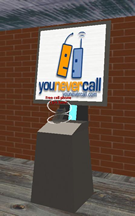
Is your avatar being served?
YouNeverCall, the popular online cell phone store, has ventured into a new dimension of cell phones - the virtual one. The resident-owned Second Life population can now get a virtual - and functional - cell phone, for free. [digg via MPhone.net and YouNeverCall press release]
"At YouNeverCall, we have decided to venture beyond our traditional customer base," states Sam Michelson, CEO of YouNeverCall, "and Second Life offers us more than a 1.5 million potential new customers". The virtual cell phones we are offering on Second Life are more than just a fun accessory. The cell phones let Second Life residents send and receive text messages, as well as hold the virtual phone to their ear.
They ring like real cell phones and, best of all, require no special download. YouNeverCall's Second Life cell phones also offer valuable information like the exchange rate of the Linden dollar.
While many things in Second Life are available for a fee, the phones at the YouNeverCall kiosk are completely free. [blogged by emily on textually.org]
Posted by jo at 08:03 AM | Comments (0)
January 24, 2007
Aram Bartholl
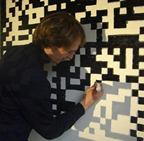
Tagging Interactive Paintings
Aram Bartholl, previously featured with his public installation SPEED and the "do it yourself set" First Person Shooter, created threeinteractive paintings "Static", "Dynamic" and "Centric". Each image shows an individual black and white pattern, handpainted with Edding on PVC foam board, which can be decoded by using a standard camera phone.
Each image shows an individual black and white pattern which has been painted manually with an edding 850. These patterns have been created by a special software on a computer. It is possible for any visitor to decode each "Semacode" by using a standard camera phone. Similar to the generic Barcodes the technology of Semacode makes it posssible to encode a specific amount of data within the pixel pattern. This string of data can be decoded from an image taken by the camera phone afterwards. The technology of Semacode is used in serveral industries for improved logistics. For the users it serves as a tool to get simple access to websites on a mobile phone. Equiped with the software the user navigates to websites by just taking a photo of a semacode which has the specific web address encoded.
[...]
A citation of Joseph Weizenbaum is encoded in the first image named "Static".
"Knowledge does NOT become unnecessary by the Internet!"
more works by Aram Bartholi [blogged on placeboKatz]
Posted by jo at 08:14 PM | Comments (0)
January 23, 2007
New Urban Topologies:

The Desire for Public Place in the Age of Virtual Geography
ABSTRACT: Throughout the history of urban center in the west, the public "square" and "street" have been the predominant locations of participation in the life of the polis. Historically, this has been where political debates and conversations have taken place, domestic turmoil and celebrations have emerged, as well as the expression of unity that comes about when differing individuals begin to develop a common identity often reinforced by the aesthetic qualities and meaning associated with certain places, architecture, or urban forms. Recently, with the rapid rise in influence of telecommunications and other associated technologies, our perceptions of the role of a specific place or urban form in constituting this type of identity have radically changed. This paper will set out to explore the traditional role that these urban spaces have played in the cultivation of a sense of belonging to a group identified with a certain geographical location, how these advances have caused a certain 'placelessness' in modern societies, and how the purpose of these traditionally important spaces might be reconceptualized to produce a new strategy and understanding of urban space. An agenda that attempts to address possibilities and opportunities within the transformation of urban spaces in the context of globalization. Properly defined, such an agenda could speculate on possible new conceptions of urban infrastructural strategies that enhance both the material and virtual experience of urbanity within the rapid transformations seemingly occurring at an increasingly rapid rate. From New Urban topologies: The Desire for Public Place in the Age of Virtual Geography by Michael Jenson, Drain.
Posted by jo at 04:12 PM | Comments (0)
m-DAT presents:
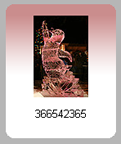
The Hack-Able Curator
m-DAT presents: The Hack-Able Curator project :: 19 Jan - 18th March 2007 :: Plymouth Arts Centre, as part of the SLOW exhibition.
The 'Hack-Able Curator' is a playful interpretation of the curating system that includes a robotic arm making curatorial decisions. By using an algorithm it chooses images from the popular photo-sharing website Flickr. It is 'hack-able' because everyone can add images to the main resource by uploading them to Flickr or by voting for any images displayed on the website by sending a SMS message to the system. In both ways, the general public can influence the decision the robot curator makes. The intention is to facilitate discussion about new challenges and new possibilities for curators. The project asks whether the availability and popularity of social technologies suggests that the curator is redundant or indeed whether everyone is now a curator of their own images?
The Project has been produced by Anita Barwacz, Lindsey Bedford, Andy Bennett, Anaisa Franco, Martha Patricia Nino, Richard Wilkes (m-DAT 2006-7).
m-DAT (Digital Art and Technology) is a hybrid masters programme that integrates theory and practice of digital cultural production, and offers MA, MSc and MRes awards (University of Plymouth).
Posted by jo at 09:40 AM | Comments (0)
January 22, 2007
CELL PHONE
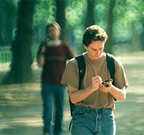
Art and the Mobile Phone
CELL PHONE: Art and the Mobile Phone :: January 21 - April 22, 2007 :: The Contemporary Museum, Baltimore, Maryland.
Cell Phone: Art and the Mobile Phone explores some of the groundbreaking works that are being created by artists today using cell phone technologies. These works engage such features and technologies as camera phones, video phones, global positioning systems, Bluetooth technology, ring tone sounds, and messaging. Artistic interest in mobile phone technology lies not only in producing artworks for individual handheld devices, but in the potential of mobile phone technologies to create works that can be performative and participatory. Often created without the traditional systems of art world distribution or exhibition in mind, these works look beyond the walls of a gallery and move art into the dynamic realm of mobility, interaction, and global connectivity.
Cell Phone features an international group of over 30 artists and artist collectives representing the range of artworks being created with and for a mobile phone device. Some of the works in Cell Phone take the form of a sculptural object, like Beatrice Valentine Amrhein's Videos Lustre (2006) which features dozens of cell phones hanging from the ceiling like a chandelier, each running a short film on the cell phone's screen. Other works, like TXTual Healing (2002-2007) by Paul Notzold, or cell:block (2007) by the artist collective URBANtells, invite the audience to contribute content to a work through text messages or photos sent from their cell phones.
Another category of works in the exhibition include those that involve downloading a program, a video, or an image to your mobile device. Angie Waller's clip.fm, for example, expands the communicative possibilities of cell phones through a series of narrative animations that can be downloaded and sent to friends instead of a text message. Other works like Mark Shepard's Tactical Sound Garden (2004-2006) or Blast Theory's Uncle Roy All Around You (2003) introduce software to a mobile device that allows audience members to participate with others in an interactive performance. Making a call from a cell phone will connect visitors with yet another group of works in the exhibition.
Talking on a cell phone while walking through Informationlab's room-sized installation Cell Phone Disco (2006), for example, will make visible the aura of an active cell phone's signal by creating a trace of blinking lights on the gallery walls. In other works, a phone number will be given to access pieces such as Steve Bradley's Call & Response: HydroSistrum which will invite visitors to dial a number to listen to data related to the ecology of the Chesapeake Bay, including information about water quality, currents, and temperature. Cell Phone: Art and the Mobile Phone is accompanied by an audio guided tour accessible via cell phone.
Artists include:
Beatrice Valentine Amrhein (Paris)
Blast Theory (London)
Steve Bradley (Baltimore)
Family Filter
Jonah Brucker-Cohen (New York), Tim Redfren (Dublin), Duncan Murphy (Dublin)
Informationlab
Ursula Lavrencic and Auke Touwslager (Amsterdam)
Paul Notzold (Brooklyn, NY)
Mark Shepard (New York)
URBANtells
Steve Bradley, James Rouvelle, and Joe Rensel (Baltimore)
Angie Waller (New York)
Cell Phone is organized by the Contemporary Museum and curated by Contemporary Museum director, Irene Hofmann.
Posted by jo at 09:21 AM | Comments (0)
January 17, 2007
UmNyango Project
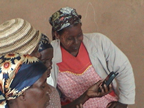
Women Fight for Rights with Cell Phones
In South Africa's KwaZulu-Natal province, a project is helping rural women use mobile phones to report on violations of their human rights as well as to assert other constitutional rights. OhMyNews reports.
"... The UmNyango Project will use SMS technology for rural women and men to access information and report on incidences of violence against women and children, as well as violations of women's right to land. Through simple text messaging, women will be able to report any violation of their constitutional rights. The project will also enable women to produce their own radio programs. The programs will be made available to local community radio stations, and distributed over the internet as "podcasts."
"This is the first time in KwaZulu Natal that we know of, where SMS technology has been used to directly empower women in this way. What makes the project unique is that women will be able to assert their constitutional rights using accessible and sustainable technology," said Anil Naidoo." From Women Fight for Rights with Cell Phones by Shibuya Epiphany [posted by Emily Turrettini on Smart Mobs]
Posted by jo at 08:50 AM | Comments (0)
January 12, 2007
.dpi no 7

hard mobility
.dpi no 7 :: hard mobility by Sophie Le-Phat Ho :: What is mobile art exactly? These days, it seems to have to do with your cell phone or PDA. With the emergence of mobile and locative art, the connection between art and industry counts yet another important instance. Indeed, mobile art echoes… well, hype. Which leads to the question: what are we really doing with these technologies? Of course, mobility sounds attractive and cute because of its reference to things like, say, freedom? Sounds a bit too familiar doesn’t it… Fortunately, producing mobile art forces you (hopefully) to deal with the ethical and political implications during the creative and production process. Where does the technology come from? Who made it? How was it made? Who is able to purchase it? Why? What is its built purpose? What else can it do? How is it that one is able to enjoy mobility? Which companies and institutions made it possible? Because the mobility of bodies also implies the mobility of surveillance, of consumerism. On the other hand, it can also mean the mobility of information and of skills. One of the ways that we will be able to remain critical of mobility is to make it open source. Sharing information, exchange, dialogue, means that information and power will not be centrally located, away from the users.
This seventh issue of .dpi is about the technologies of mobility. It’s called “hard mobility” because of the hardware, but also because it is always the right moment to think hardly about the notion of movement, of globalisation, of exploration, and their social implications. This current issue does not include any cell phone art; it rather shows how one can defend him or herself from cell phones! On the other hand, if we really want to push mobile art to one of its limits, then why not implant a biochip in our own mobile bodies? The above comes out of a visit to the last HOPE #6 hacker conference in NYC at the end of July 2006. The unfolding of that major convention also offered the opportunity to talk about women & hackers with artist/engineer Ladyada and others. “Hard mobility” may also refer to harsh conditions (both physical and cultural), like with the exploration of Nunavut by the Makrolab team who devised a completely mobile and open source research laboratory that claims to leave no environmental trace, only a social one through dialogue and interaction with the local community.
In this issue as well, Studio XX sheds theoretical light on its major tenth anniversary archiving project, Matricules, as well as on the latest artist-in-residence, Isabelle Choinière, and her new project “Corps indice.” As well, in tandem with Studio XX’s tenth anniversary conference, Event X (October 5-6, 2006), participant Diane Willow shares further information on her panel entitled “Volumes: Sound and Space”.
Posted by jo at 06:42 PM | Comments (0)
True Secrets
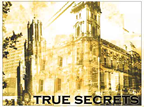
Audio Theatre on your Mobile Phone
A heads up from Diablogue informs me of a great sticker narrative project in Melbourne: True Secrets. Possibly inspired by the highly popular sticker art of Yellow Arrow, the stickers are placed in the street with a call-to-action to call a phone number. But, like the novel that is distributed via stickers around the world, Implementation, this piece provides a story.
“There are secrets in this city. True Secrets’ detectives have uncovered a treasure chest of urban tales, rumors and lost news stories. Zoom into the story and be swept back in time with these high-quality, site-specific, immersive audio dramas.”
Love to see this stuff happening more and more. For those in Sydney, and elsewhere, there are lots more Yellow Arrows locally too. But for now, check out True Secrets. [blogged by Christy Dena on Cross-Media Entertainment]
Posted by jo at 05:55 PM | Comments (0)
January 11, 2007
InSense: Interest-based life logging
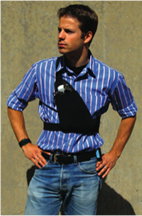
Mapping First Life Experiences with Virtual World Counterparts
Blum, M. Pentland, A. Troster, G. (2006), InSense: Interest-Based Life Logging, IEEE Multimedia, 13 (4), pp. 40- 48.
The paper describes a wearable data collection device called InSense based on Vannevar Bush’s Memex principles. allows users to continually collect their interactions as store them as a multimedia diary. It basically take into account the sensor readings from a camera, microphone, and accelerometers. The point is to “classify the users activities and “automatically collect multimedia clips when the user is in an “interesting” situation“.
What is interesting is the types of categories they picked-up to develop their context-aware framework: they chose location, speech, posture, and activities—to represent many diverse aspects of a user’s context. They also have subcategories (for instance for location: office, home, outdoors, indoors, restaurant, car, street, shop).
The experience sampling approach works like that:
Subjects wear the system for several hours without interacting with it. Audio and acceleration signals are recorded continuously. The camera takes pictures once a minute and WiFi access points are logged to establish location. After the recording session, the user employs an offline annotation tool, which presents an image at a time, the corresponding sound clip, and a list of labels from which to chooseshowing sensor placement.
What is also curious is their description of their algorithm that calculates the current level of interest of an event based on the context classification.
Why do I blog this? I am less interested in the purpose of the system itself (sharing material) but rather by the data extracted from context readings and how this could be used to tell a story (or to build up a narrative). Of course, given my interest in games, I see this device as intriguing and potentially relevant to map the first life experience with virtual worlds counterparts; it could go beyond current pedometer that control dogs. [blogged by Nicolas on pasta and vinegar]
Posted by jo at 02:34 PM | Comments (0)
January 09, 2007
Dune & Devil
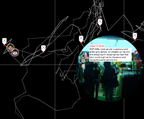
Tracking Vienna + Tokyo through Dune+ Devil
Dune & Devil (2003-present) explores a space- and time-based phenomenon through communicational technoculture. The aggregation of «•» applies different structures like global positioning systems, audiovisual media, mobile technology, tele-communication tools and specialized software, to experience the stereotopographical synchronization of two individuals in different urban situations. We are trying to translate this spatial experiment under the condition of a unique geosocial application to translate this individual, cultural and technological impact in our DIY-habitat. The project produces a sociographic disposition of a mixed reality which can be observed through the interface of dune-n-devil.com.
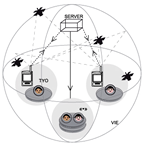
We are using two handheld computers with additionally installed open source java virtual machines (btw, thanx to mr. freebeans/japan for preparing mysaifu!) on a windows mobile operating-system. A specially, for this project, self-developed java application, is used to interconnect the two mobile computers via UMTS/GPRS for communication and navigation. The incoming GPS-data is streamed to a mysql database which collects all data produced (both outputs: Dune/Vienna and Devil/Tokyo). At last, the database provides the flash application for the visualization of the project «•» on the website.
Public space is constantly ehanced with new infrastructures of communication such as GPS, wireless internet, telecommunication protocols, location based services, mediatectures and many more. This modification of reality happens through the new possibilities of information-technologie, interface-culture and interaction. The basic goal of the communication based sychronization-system «•» is tracking digital processes in two different cultural situations (vienna & tokyo) through two different observers (Dune & Devil), and to merge this into one sensation. We are trying to translate this spatial experiment under the condition of a social application in a creative process of constructing new ways in media and art. Dune & Devil will incribe themselves into these connected, synchronized, totally different realities. This change of perspective through individual selection, dependent on the attention and the cross-link of these two realities, explain how space andt time are related to the observer and the system of observing.
Posted by jo at 10:31 AM | Comments (0)
December 19, 2006
Receiver #17
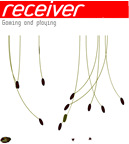
What is play and what's in a game?
Receiver #17 is a truly playful issue. While the urge to play is a human universal, gaming cultures differ widely across different societies – that goes for the games people enjoy as well as how they enjoy them. You can play with interactive media alone or to socialise, to compete or to relax, at home or in the street. What is play and what's in a game? Here are nine answers.
Matt Jones: The space to play :: Play – that is nothing less than how and why we learn, explore, interact with each other, understand each other and develop together. This is what Matt Jones thinks, who authors this receiver's opener. The designer was creative director for the award-winning BBC News Online and, after some time as a consultant at Sapient and KPMG, returned to the BBC to design BBCi's web search and an ambitious social software service. For the past three years he has been at Nokia, firstly in design research and now as Director of User-Experience Design for Nokia Design Multimedia. In "The space to play" he explores themes from his research into the universal human urge to play – and how it relates to the way we design our technology, our environments and our future.
D.B. Weiss: Lucky Wander Boy – the microsurgeon winner :: Los Angeles based D.B. Weiss is currently in the headlines for working on the script for a movie adaption of the "Halo" video game series that is scheduled for release in 2008. But that's not why we asked him to join receiver's gaming and playing issue. He indulged his playing passion already in his smart debut novel Lucky Wander Boy, a story about a man who finds a purpose through and is ruined by his obsession with video games. Of which we want to reprint an excerpt here. Read it – or listen to the podcast.
Jim Rossignol: Gaming international :: Jim Rossignol is a British technology author specialising in video games. His work appears in Wired, PC Gamer UK and the web development portal Gamasutra.com. His essay on Korean gaming culture was recently republished as part of the DigitalCultureBooks anthology The Best of Technology Writing 2006. Rossignol is currently researching a book on gaming culture and keeps a research blog at www.big-robot.com. In "Gaming international", he tells us about the experiences he gained during a visit to Seoul and compares European and Asian approaches to gaming.
Stuart Dredge: Mobile gaming – the troubled teenage years :: Stuart Dredge is a technology writer whose key areas of knowledge are mobile entertainment and consumer technology – fields in which he has also worked as an analyst. He covers mobile gaming as a freelance writer for several industry publications, edits the mobile games section of consumer website Pocket Gamer and covers consumer technology for Tech Digest. In his receiver contribution, Dredge takes a look at the future of mobile gaming, focusing on how mobile games could move beyond the familiar hits like Tetris and Pac-Man to new concepts blending innovation and connectivity.
Auriea Harvey and Michaël Samyn: Games in spite of themselves :: Tale of Tales is a Belgian design studio founded by Auriea Harvey and Michaël Samyn. Samyn started creating digital art and web design under the name of Zuper! in the mid-90s, and New York-based Auriea Harvey, prior to moving to Belgium, was known as Entropy8. They worked together as Entropy8zuper! and now join forces to create emotionally rich interactive entertainment – for example "The Endless Forest", a multiplayer game in which everybody plays a deer. There are no rules in this forest, and playing in it doesn't require much of your time. Come and meet the other deer and take in the scenery!
David J Edery: Playing by creating :: David Edery recently became the Worldwide Games Portfolio Planner for Xbox Live Arcade, and is a research affiliate of the MIT Comparative Media Studies Program (CMS). Prior to joining Microsoft, David was the CMS Program's Associate Director for Special Projects, during which time he co-founded the Convergence Culture Consortium and managed an exertainment project called Cyclescore. Edery also pens Game Tycoon, a business-centric video game industry blog. In "Playing by creating", he tells us why we should be excited about user-generated content.
Gonzalo Frasca: This just in. Playing the news :: Gonzalo Frasca is a video game theorist and developer, currently researching serious gaming at IT University of Copenhagen. He publishes the game research site Ludology.org and is editor at Game Studies. He is also a former head of video game development at Cartoon Network LA and webmaster/journalist at CNN International. Frasca co-founded Powerful Robot Games, a studio known for its work on election video games as well as its newsgaming.com project – an area Frasca will introduce us to in receiver. Let him convince you that games are the new news.
Noah Wardrip-Fruin: Three play effects – Eliza, Tale-Spin, and SimCity :: Noah Wardrip-Fruin is a digital media creator and scholar whose current work focuses on digital fiction and play, fields he explores as an Assistant Professor of Communication at the University of California, San Diego, as well as in his posts at the group blog Grand Text Auto. He edits and writes books on digital media, games, and storytelling – his newest just published by MIT Press (Second Person: Role-Playing and Story in Games and Playable Media). In his receiver contribution Wardrip-Fruin looks at three different models of what we experience through play.
Lev Manovich: Interaction as an aesthetic event :: Media theorist Lev Manovich is a Professor of Visual Arts at UCSD and a Director of The Lab for Cultural Analysis at the California Institute for Telecommunications and Information Technology. He's author of Soft Cinema: Navigating the Database (MIT Press 2005), and The Language of New Media (MIT Press 2001) which was hailed as "the most suggestive and broad-ranging media history since McLuhan". Currently he is completing his new book Info-aesthetics. In receiver, Manovich takes a look at the playful user interaction in recent cell phone models and other personal information technology.
Posted by jo at 05:39 PM | Comments (0)
December 17, 2006
Eric Kluitenberg
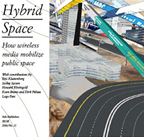
The Network of Waves: Public Agency in Hybrid Space
The Network of Waves: Public Agency in Hybrid Space by Eric Kluitenberg
The office space above which I live, in a corner house in the Indische Buurt, somewhere in Amsterdam East, used to house a local police station. At that time I was not yet living there. The place was briefly in the national news because of a fair-sized riot which took place there. A couple of Moroccan youths were brought to the station for some minor offence. Their friends thought that this was not right, so they followed the police back to the station to besiege the policemen there. It was not just a few friends who ran after the policemen, but a much larger group which suddenly turned up at the station, coming from nowhere at the precise moment when the youths were brought in. At that time this phenomenon, later known as a 'flash mob', [1] was still relatively new. The police on site were unpleasantly surprised, and had to issue a hasty call for reinforcements to negotiate with the besiegers. When it was all over a police spokesman said that it was a disgrace that the Moroccan youths had used their mobile phones to mobilize a mob. How else could these youths all have known at the same time that something was going on at which their physical presence was 'urgently desired'? And exactly where they needed to be? What the spokesman meant was that the youths had compiled mailing lists for text messages and then used texting to get together as many people as possible as quickly as possible. Texting with mailing lists was a popular application, because at that time text messages could still be sent and received free of charge.
A few years ago 'flash mobs' received a good deal of attention from the mass media. Semi-spontaneous public gatherings of groups of people, hardly if at all known to one another, nondescript, with no determining characteristics such as banners, uniform or logo, briefly performed some collective synchronous action, and then dissolved back into 'the general public'. Directions and information about the gathering were sent out by text messages, or e-mails, telling participants where, when and what. These short messages could easily be sent on to friends and acquaintances with the aim of starting a chain reaction resulting in the appearance of an unpredictably large mob at a predetermined time and place.
Reclaim the Mall!!
The 'flash-mob' phenomenon is thought by some people to have originated in a few relatively unmanageable actions in large shopping centres in American towns, disorganizing them temporarily and playfully. These actions generally had no political significance. This all changed at the end of the 1990s. The 'Reclaim the Streets' movement, [2] highly active at the time, which used to organize illegally orchestrated 'street raves' in the public spaces of large towns, made intensive use of text and e-mail address lists to organize quasi-spontaneous street parties. They did however give these street parties a layered political agenda. The parties were generally given concrete political and social themes and were linked to particular actions, such as support for a strike by London Underground staff. The movement's desire to also use these actions to free public space from its economically determined function (for instance transport, shopping or advertising) was succinctly expressed in the slogan 'The streets for people!'. The parties followed a fixed procedure. The evening before, a sound truck with a generator, a DJ kit and a large number of loudspeakers would park in a wide street. Shortly before the start a double collision would be staged at the beginning and end of the street. The crucial factor here was the provision of information for the participants, who were, in principle, unknown to the organizers. Participants therefore received a short message containing simple directions to the place, the date, the time and a few instructions, such as 'wait for the orange smoke -- that's when the rave will begin'. The double collision meant that at the agreed time the street was closed to all traffic. The cars used were fitted with smoke bombs which were set off by the mini-crash, producing enormous plumes of orange smoke, visible for miles around. This was the sign for which the 'Reclaim the Street' mob was waiting. Suddenly the street was flooded with people, sometimes more than a thousand at a time, while music began to boom from the previously parked truck or bus.
These examples demonstrate that we are living in a space in which the public is reconfigured by a multitude of media and communication networks interwoven into the social and political functions of space to form a 'hybrid space'. Traditional space is being overlaid by electronic networks such as those for mobile telephones and other wireless media. This superimposition creates a highly unstable system, uneven and constantly changing. The social phenomena which occur in this new type of space can not be properly understood without a very precise analysis of the structure of that space.
The way the Moroccan youths in Amsterdam East used text message address lists to mobilize themselves rapidly and effectively against what they saw as unjustified police violence provides an interesting example of a social group which finds itself in a socially segregated and stigmatized position appropriating a newly available technology. Mobilization was possible because at that time real-time mobile communication (texting) was available essentially free of charge. Shortly after that incident, texting became a paid service, though the reasons for this were economic rather than political, and its use for this purpose quickly lost popularity. It was simply too expensive to send so many messages at the same time. The specific relationship between time, space and technology, and to a lesser extent simple economics, determined the way in which this social phenomenon manifested itself. More than e-mails, which almost always have to be downloaded from a terminal or laptop (e-mailing on a mobile telephone is extremely laborious and inefficient), the brief phase during which text messaging served as a free public medium provided an important indicator to a changing relationship in the use and organization of public space. The mobility and immediacy of the medium gave birth to new social morphologies, like the 'flash mob', which still seem mostly to indicate a kind of mobile 'just-in-time-community' in physical public space.
The Place of Flows...
The question here is what this new kind of social morphology might mean. What lies behind the gimmick? What social, economic and technological transformations give rise to new phenomena of this kind?
So far the most important sociological theory about this is set out in Manuel Castells' Rise of the Network Society, the first part of his trilogy on the information age. [3] In it he describes the rise of flexible social network connections which resulted from economic and social transformations in late industrial societies and were strengthened by the introduction and wide application of new technology, primarily communication and information technology. Castells postulates that the network has become the dominant form in a new type of society that he calls the network society. He treats the influence of the network form as a social organization in physical and social space and establishes a new kind of dichotomy. According to Castells there are two opposing types of spatial logic, the logic of material places and locations (the 'space of place') and the logic of intangible flows of information, communication, services and capital (the 'space of flows'). [4]
The particularly striking thing about Castells' theory is the strict separation between the two kinds of spatial logic. Whereas the space of places and locations is clearly localized and associated with local history, tradition and memory, Castells sees the space of flows as essentially ahistorical, location-free and continuous. This last mainly because it moves across every time zone and so in some sense is not only location-free but also timeless. [5] Castells believes there is a fundamental asymmetry between the two kinds of space: while the vast majority of the world's inhabitants live, dwell and work in the space of places and locations, the dominant economic political, social and ultimately also cultural functions are increasingly shifting to the place of flows, where they make possible location-free ahistorical network connections, international trends, power complexes and capital movements. Only a very small part of the world population is represented in the bodies which take decisions about the organization and use of new location-free spatial connections. But increasingly the decisions made within such self-contained systems determine the living conditions in those places and locations where the vast majority of the world population attempt to survive and where their knowledge, experience and memory is localized. Castells feels that it is not surprising that political, social and cultural bridges need to be deliberately built between the two spatial dynamics, to avoid society's collapse into insoluble schizophrenia.
The attractive thing about Castells' theory is that it makes it possible to grasp and clarify a multiplicity of asymmetric social developments in a single image -- an image that has certainly not left popular culture unmoved. At the same time Castells' suggested contrast between physical locations and places and the intangible space of flows is misleading and ultimately even counterproductive for his political agenda: the deliberate building of bridges between physical space and informational space. Instead of a strict separation between physical space and informational space, all technological and social trends clearly indicate that these two 'spheres' are becoming more and more closely interwoven. A generic model of the sort suggested by Castells is totally unsuited to the analysis of this closeness and to gaining an understanding of how possibilities for public and private action come about within it, the central question posed in the present issue of Open. What threats to the autonomy and inviolability of the subject, the group, the community or cultural self-determination could possibly manifest themselves here and how can something be done about those threats?
Hybrid Space as a Polymorphous Concept
Against the placelessness and continuity of Castells' ahistorical 'space of flows' stands the discontinuity and multiplicity of hybrid space. The hybridity of this spatial concept refers not only to the stratified nature of physical space and the electronic communication networks it contains, but every bit as much to the discontinuity of the 'connectivity' or degree of connection between the multiplicity of communication networks. After all, even the universal presence of a telephone connection can not be taken for granted. More important still is the connection between local social and electronic networks: who communicates with whom, and in what context, is determined differently from one region to another, sometimes even from one day to the next. Because the space of electronic communication is rooted in local networks, it is also linked with local history. And questions about who controls electronic space or becomes familiar with electronic space are by no means easy to answer. Ravi Sundaram for example, co-founder of the Sarai new media initiative in Delhi, is constantly drawing attention to the coming into being of what he calls 'electronic pirate-modernity', [6] which comes about when local groups or individuals, illegitimately and without permission, gain access to television, telephone or the Internet -- 'Never ask permission, just appear!'.
Hybrid space is never exclusively local, as in the case of the idyllic hippy commune at the beginning of the 1970s. Small local networks, hacked or not, never remain limited to the local bazaar or the vegetable market in the next village. Local networks interweave with the international networks into which they force their way. Thus, says Saskia Sassen, the local is reconstituted as a micro-environment with a worldwide reach. Free-software geniuses in Sao Paulo's favelas find no difficulty in downloading the results of the latest interchange between the Amsterdam Waag (the Society for Old and New Media) and the Alternative Law Forum in Bangalore, but nobody pulls his or her local roots out of the ground.
Diktat of Visibility
The thing that strikes one about current discussion and the associated criticism of the rise of electronic media in public space is the preoccupation with the visual forms in which these media manifest themselves, such as screens, projections and electronic tagging. [7] It is a sort of extended visual criticism, closely connected with a tradition which assumes that the visual arrangement of observable reality is a necessary precondition for any ability to exercise power over that reality. However, the thing that stands in the way of this preoccupation with the visual is a critical analysis of the more invisible processes which are rearranging public space and imposing a different utilization logic. Relatively invisible forms of social compulsion, which bring these processes into play, may well have a much greater significance for the way in which public space can and may be used in future.
The concept of the perfect visual arrangement, expressing a social reality in which power structures are completely unambiguous and transparent, still always refers to Alberti's 'legitimate construction' and Piero della Francesca's ideal city, both of which reflect a visual articulation of daily life suggesting that everything, social and public, is completely controllable and constructible. Although the unifying point of view of a linear perspective has long been rejected, the street screens still stipulate for us a single perspective: a correct viewing distance and direction, while social relationships are radically altered.
The street screen is also the embodiment of spectacle in its most repressive form. Today spectacle is no longer alone in controlling the inner life, the interior of the alienation of the average TV junkie. The street, the classic stage of modern theatre, is overloaded with marching electronic screens and projections, so erasing the public functions of open space. Public functions become blurred by the flow of light and images drenching us in a fetish of alienating desires as we follow our necessary route through the city, from A to B.
Limitations of the Screen
Another point of criticism of the new urban visuality is its inherent limitation. Virtually every screen is rectangular and flat and has limited resolution (the number of pixels which determine the quality of the image). Media artists recognized these limitations years ago and have, with varying degrees of success, developed a multitude of strategies to attempt to overcome those limitations by, for example, a spatial type of installation, interactive media in which the screen itself also becomes an object capable of being moved and manipulated, projection on walls, fabrics, curved screens, screens that are not rectangular, [8] mirrored projections, moving projections, projections on glass materials and so on. Some artists, as for example the members of the Knowbotic Research collective, even leave out screens entirely, replacing them by new haptic interfaces and stereoscopic helmets from the Virtual Reality research laboratory or, as during the 1996 Dutch Electronic Art Festival, an installation on the roof of the Netherlands Architecture Institute, where network manipulations translated into sound and stroboscopic light. [9] Yet another example of the movement to bypass the screen is the Xchange network, in which artists collectively explore the sonic dimension of the Internet. [10]
The new generation of media-architects can learn from media art that the screen is ultimately a dead end. It is interesting to see how these attempts at iconographic liberation keep on recurring. Avant-garde painters carried out endless experiments in their attempts to break away from the frame of the painting and the surface of the canvas, their ultimate aim being to announce the death of the 'retinal' object. This same death announcement is repeated by today's media artists, but this time in relation to the screen. Media architecture again venerates the screen as a window on a space first seen as boundless, but later recognized as being largely subject to limitations and conventions.
Ultimately the screen dissolves into the architecture, becoming less a screen than a membrane between physical and medial reality. Here the 'image' functions less and less as an autonomous object, but increasingly coincides with the architecture itself, its skin, its inner life and its internal processes, finally disappearing from the consciousness of the user of that architecture. The image ecomes subliminal, 'vernacular', commonplace, merged with the environment, self-evident -- in the end the spectacle neutralizes itself. Media theorist Lev Manovich was still positive about this new medially enhanced architecture in his essay entitled The Poetics of Augmented Space, that had Learning from Prada as subtitle and was based on the success of Koolhaas's creation. [11] By now we know that the concept has failed completely, screens have disappeared from the scene or have been cut back to a minimum. The lesson of Prada is that the strategy of visibility can quickly turn into its opposite.
The Problem of Invisibility
In the present phase, the most important change in computer technology and its applications is that they are steadily beginning to withdraw themselves from sight. The European Union has for some years now been subsidizing a wide-ranging programme of multidisciplinary research and discussion with the remarkable title The Disappearing Computer. This title alludes less to the disappearance of computer technology than to its ongoing miniaturization and the way that it is beginning to turn up everywhere. The programme is investigating the migration of electronic network technology into every kind of object, to built environments and even to living beings. The thesis is that miniaturization and steadily reducing production costs are making it simpler to provide all kinds of objects with simple electronic functions (chips containing information, tags that can send or receive signals, identification chips and specialized functions in everyday objects). This is more efficient than building ever more complex pieces of multifunctional apparatus and mean the abandonment of the old idea of the computer as a universal machine capable of performing every conceivable function. [12] In fact, this is how technology becomes invisible. A decisive step, with dramatic consequences for the way people think about and deal with spatial processes.
This assimilation of computer technology in the environment introduces a new issue: the problem of invisibility. When technology becomes invisible, it disappears from people's awareness. The environment is no longer perceived as a technological construct, making it difficult to discuss the effects of technology.
Lev Manovich speaks of 'augmented space', a space enriched with technology, which only becomes activated when a specific function is required. [13] Wireless transmitters and receivers play a crucial role in such enriched spaces. Objects are directly linked with portable media. Chips are incorporated into identity cards and clothing. Even one's shopping is automatically registered by sensors. Screens and information systems are switched on remotely, by a simple wave of the hand. Miniaturization, remote control and particularly the mass production of radio frequency identification (RFID) tags is bringing the age-old technological fantasy of a quasi-intelligent, responsive environment within reach of digital engineers.
Of course these applications are not exclusively neutral. Combinations of technologies of the sort described above make it amazingly simple to introduce new and infinitely differentiated regimes for the control of public and private space. The application to public transport of RFID smart cards, which automatically determine the distance travelled, the fare and the credit balance, still sounds relatively harmless. Fitting household pets with an identity chip the size of a grain of rice, inserted under the skin, has become widespread practice. Indeed most health insurance schemes for household pets prescribe the insertion of such chips as an entry condition. Recently, however, first reports have turned up of security firms in the United States which provide their employees with subcutaneous chips allowing them to move through secure buildings without the use of keys or smart cards. Such systems also allow companies to compile a specific profile for each individual employee specifying those parts of the building or object to which the employer has (or is denied) access, and at what times
It is not difficult to extrapolate these practices to society as a whole. Who has the initiative in such matters? If the initiative lies exclusively with the constructors, the producers of these augmented spaces, and their clients, then the space we are living in is liable to total authoritarian control, even if there is no immediately observable way in which that space displays the historic characteristics of authoritarianism. The more widely the initiative is distributed between producers and consumers and the more decision-making is transferred the 'nodes' (the extremities of the network, occupied by the users) instead of at the 'hubs' (junctions in the network), the more chance there is of a space in which the sovereign subject is able to shape his or her own autonomy. The articulation of subjectivity in the network of waves is also an opportunity for the last remnants of autonomy to manifest themselves.
The Strategic Issue: 'Agency' in Hybrid Spaces
The concept of 'agency' is difficult to interpret, but literally combines action, mediation and power. It is not surprising therefore, to find it applied as a strategic instrument for dealing with questions about the ongoing hybridization of public and private space. Unlike Michel de Certeau's tactical acts of spatial resistance to the dominant utilitarian logic of urban space in particular, the action of this instrument in new ('augmented') hybrid spaces has mainly strategic significance. A tactical act of spatial resistance, which is after all no more than temporary, is hardly comforting to anyone faced by such an infinitely diversified and adaptive system of spatial control. New hybrid spaces must be deliberately 'designed' to create free spaces within which the subject can withdraw himself, temporarily, from spatial determination. Given the power politics and the enormous strategic and economic interests involved, and the associated demands for security and control, it is clear that these free spaces will not come about by themselves or as a matter of course. I would therefore like to suggest a number of strategies to give some chance of success to the creation of such spaces
Public visibility: 'maps and counter-maps', tactical cartography
The problem of the invisibility of the countless networks penetrating public and private space is ultimately insoluble. What can be done, however, is to remake them in a local and visible form, in such a way that they remain in the public eye and in the public consciousness. This strategy can be expressed in 'tactical cartography', using the tools of the network of waves (gps, Wi-Fi, 3G, etcetera) to lay bare its authoritarian structure. An aesthetic interpretation of these structures increases the sensitivity of the observer to the 'invisible' presence of these networks.
Disconnectivity
Emphasis is always placed on the right and desire to be connected. However, in future it may be more important to have the right and power to be shut out, to have the option, for a longer or shorter time, to be disconnected from the network of waves.
Sabotage
Deliberately undermining the system, damaging the infrastructure, disruption and sabotage are always available as ways of giving resistance concrete form. Such measures will, however, always provoke countermeasures, so that ultimately the authoritarian structure of a dystopian hybrid space is more likely to be strengthened and perpetuated than to be thrown open to any form of autonomy.
Legal provisions, prohibitions
In the post-ideological stage of Western society it seems that the laws and rights used to legalize matters provide the only credible source of social justification. But because a system of legal rules runs counter to the sovereignty of the subject it can never be the embodiment of a desire for autonomy. It can, however, play a part in creating more favourable conditions.
Reduction in economic scale
New hybrid systems of spatial planning and control depend on a radical increase in economic scale in the production of its instruments of control. Thus the political choice to deliberately reduce economic scale would be an outstanding instrument to thwart this 'scaling-up' strategy. [14]
Accountability and public transparency
In the words of surveillance specialist David Lyon, 'Forget privacy, focus on accountability'. It would be naive to assume that the tendencies described above can easily be reversed, even with political will and support from public opinion. A strategy of insisting on the accountability of constructors and clients of these new systems of spatial and social control could lead to usable results in the shorter term.
Deliberate violation of an imposed spatial program
Civil disobedience is another effective strategy, especially if it can be orchestrated on a massive scale. Unlike sabotage, the aim here is not to disorganize or damage systems of control, but simply to make them ineffective by massively ignoring them. After all, the public interest is the interest of everyone, and no other interest weighs more heavily. [15]
The formation of new social and political actors -- public action 'Agency', the power to act, means taking action in some concrete form. The complexity of the new hybrid spatial and technological regimes makes it appear that the idea of action is in fact an absurdity. However, new social and political players manifest themselves in public space by the special way they act, by clustering, by displaying recognizable visuality, by marking their 'presence' vis-a-vis (the) other(s).
The manifestation of concrete action by new social and political actors in public space is 'gesture'. The action, in this case, is the way the space is used, though there is still a difference between the use of a space and more or less public actions in that space. The use of space becomes agency when that use takes on a strategic form.
Notes:
1. For a description, see http://en.wikipedia.org/wiki/flashmob.
2. Reclaim the streets website http://rts.gn.apc.org/.
3. Manuel Castells, The Rise of the Network Society (Oxford: Blackwell Publishers, 1996).
4. Ibid.
5. Consider for example the concept of the 24-hour economy.
6. 'Electronic pirate modernity': see also www.sarai.net.
7. See also www.urbanscreens.org or the Logo Parc symposium held in Amsterdam on 16 November 2005, a cooperative project undertaken by the Jan van Eyck Academy, the Premsela Foundation and the Art and Public Space Lectureship (Rietveld Academy and the University of
Amsterdam).
8. These 'shaped screens' do incidentally form a curious counterpart to Frank Stella's Shaped Canvasses.
9. Anonymous Muttering: http://www.khm.de/people/krcf/AM/.
10. Website of the Xchange network, http://xchange.re-lab.net. 11. Lev Manovich, The Poetics of Augmented Space: Learning from Prada (2002), see www.manovich.net
12. The so-called Turing Machine, named after the mathematician Allan Turing -- the machine that is capable of simulating any other machine.
13. Manovich, The Poetics of Augmented Space, op. cit. (note 11).
14. The mass production of RFID (radio frequency identification) tags compelled producers to minimize the security provisions incorporated to allow the tags to be applied cost effectively to virtually any conceivable consumer product. A policy of giving priority to the safety and reliability of the chips and the information stored on them would make them much too expensive, restricting their development to specialized 'niche' markets.
15. Examples of a new kind of civil disobedience include deactivating RFID tags with the aid of an adapted mobile phone, hindering the operation of smart cards, regularly swapping client cards, deliberately supplying false information when registering online and using 'anonymizers' on the Internet, 'encrypted' (coded) mobile phones and local gsm blockers.
This essay was written for the new issue of Open (#11), cahier about art and the public domain - "Hybrid Space". The essay introduces the overall theme of the issue, and suggests some strategic considerations on the use of hybrid space.
More information on the issue can be found at the website of NAi Publishers:
http://www.naipublishers.nl/art/open11_e.html
and at the website of Open:
http://www.opencahier.nl
The journal was presented at De Balie, Centre for Culture and Politics in Amsterdam, on November 18, with the annual SKOR lecture, delivered this year by Saskia Sassen: "Public Interventions - The Shifting Meaning of the Urban Condition". The lecture is available on-line at: http://www.debalie.nl/terugkijken See also: http://www.debalie.nl/artikel.jsp?podiumid=media&articleid=85601 [via nettime]
Posted by jo at 06:19 PM | Comments (0)
December 12, 2006
MobZombies
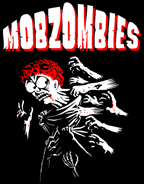
Human-as-Joystick
MobZombies explores a new dimension of handheld gaming by adding motion awareness to classic arcade style gameplay. Using a handheld device, and a custom motion sensor, players enter a virtual world infested with pixel-art zombies (a homage to vintage 8-bit console games). The goal of the game is to stay alive, running away from or planting bombs to destroy the ever-encroaching zombies.
The twist is that a player's physical position controls the position of their zombie-world avatar, forcing the player to actually move around the real world to succeed in the game.
The virtual zombie-world is a simple environment -- the game's complexity comes from players having to negotiate real-world objects in order to avoid the zombies and stay alive. The scoring system is simple: the longer you can stay alive, the higher your score. Of course, the longer you stick around, the more zombies you'll encounter.
"Basically, the game uses a digital compass and an accelerometer fastened to your hip (transmitting data through bluetooth) to get a relative position. That position controls a little zombie character in a virtual game world, and your main objective is to basically run away from zombies - by really running (or walking...). You can also drop bombs, but the trick is that you have to get away from the drop zone quickly before the bomb explodes on you. Other than zombies, the virtual world is really lacking any other obstacles - again, the idea is that the barriers are all brought in from the physical world. For example, in the game world, you might see a clear path away from the zombies, but in the physical world, that path might contain a busy street, or a wall. So that's where a lot of the difficultly comes in - learning how to navigate both these worlds and be hyper aware of your position in each.
The game has some history - I started designing it as a research project at USC, and it was entirely GPS based. However, we really found that it was a totally different experience than what we wanted, because of GPS resolution issues, as well as the ~1 second refresh rate. So my friend aaron and I built out an entirely different version based on relative movement. Now that we've got this version up and running, we're thinking about ways to get GPS involved again, while still retaining the analog control feel. One of the ideas we've been toying with is having community-assisted item pickups. In the current game, we randomly spawn heath and bomb pickups nearby your character. We were thinking it would be cool if people on the web could drop item pickups for you by clicking on a map. We could place those items in the virtual world based on a gps position, but once it was in the world, the player could still use the same control mechanism to get to the item. So yeah, basically thinking of creative ways to use GPS and maintain the nice analog feel of the human-as-joystick thing." -- Will Carter [via]
Posted by jo at 03:07 PM | Comments (0)
December 07, 2006
ALAVs 2.0

Autonomous Lighter Than Air Vehicles
I've been collaborating with Art Center graduate student Jed Berk on his Autonomous Lighter Than Air Vehicle's project, helping him create the version 2.0, a more connected, bloggy instance of the project.
The ALAVs 2.0 are participatory — you can call them using your mobile phone and engage in a conversation that affects their behavior and your own. They're also using a new design that brings them a step closer to being suitable for DIY, kit-based construction, which is pretty cool.
We'll be installing it at the Art Center Nabi "Connected" event, which runs from December 7 until December 30 in Seoul, South Korea. Here's the blurb:
We are living in the condition of the constant ‘logged-in’ through mobile phone, internet, recently emerged wireless technologies. The exhibition aims to reflect on the current state of connectivity and relationship among people, environment, clusters of information, and objects in the networked condition of everyday life. Works in the exhibition question the very concept of mobility, connectivity, locality, kinship, and physicality whether it is poetic contemplation or piercing critique. 'Connected', as the first exhibition project in align with Mobile Asia initiative, will also include the winners of the international competition held in 2006.
For the time being, the event website is in Korean, so..there's that. It's being translated into English presently! [blogged by Julian Bleecker on USC Interactive Media Division]
Posted by jo at 08:40 AM | Comments (0)
November 20, 2006
Glowlab
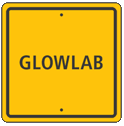
Issue 11
Welcome to Glowlab Issue 11! The projects in this issue examine the presence of surveillance within public space, and the ways in which ubiquitous technologies, such as electronic tags, global positioning systems, SMS messaging, and other locative media are informing the ways in which we interact within urban environments. These artists utilize these technologies to create mobile orchestras, jam turnstiles, observe the observers, and put the means and the media of production into the hands of ordinary citizens. This issue also includes independent curator Anuradha Vikram's review of Psychogeography by Merlin Coverly.
Transparent City: The ethics and aesthetics of mass-surveillance technologies by Derek Lomas :: Mobile phone carriers track our location and keep a record of everywhere that we have been. TRANSPARENT CITY is a prototype surveillance interface demonstrating how widespread mobile phone technology could be transformed into an apparatus for massive governmental control.
The Warbike and Wardriving: Geeks Don't Know it's Psychogeography by David McCallum :: The Warbike is a mobile, interactive artwork that sonifies WiFi networks during a bike ride. This article describes the process of creating the system, and touches on the links between psychogeography and wardriving.
Inner city locative media: The Media Portrait of the Liberties project by Valentina Nisi :: The Media Portrait of the Liberties is a modular collection of anecdotal stories drawn from a disadvantaged Dublin inner city neighbourhood called the Liberties. The narratives are displayed as short video clips on a location-aware handheld computer.
TXTual Healing by Paul Notzold :: TXTual Healing is an interactive project that enables members of the public to interact with large speech bubbles that are projected onto flat surfaces, such as the facades of public buildings, using SMS messaging.
arphield recordings by Paula Roush :: Arphield Recordings is a project documenting impromptu arphid sound performances produced by people scanning their oysters cards in their daily routines of accessing London tube stations.
Fête Mobile and Inflatable Art by Marc Tuters, Fête Mobile :: Movable Feast/ Fête Mobile is a 6-meter blimp equipped with surveillance and communications capabilities that enables participants to remotely view their surroundings and exchange media files through a wireless file server. In his article, we discuss the development of the project.
Book Review: Psychogeography by Merlin Coverley by Anuradha Vikram :: Psychogeography is a primer on the practice and its precedents, inspired by the neo-psychogeographic revival in London over the past two decades, and focusing specifically on the theoretical lineage of contemporary British writers.
Glowlab is an artist-run production and publishing lab engaging urban public space as the medium for contemporary art and technology projects. We track emerging approaches to psychogeography, the exploration of the physical and psychological landscape of cities. Our annual Conflux festival, exhibitions, events and our bi-monthly web-based magazine support a network of artists, researchers and technologists around the world.
Posted by jo at 01:40 PM | Comments (0)
November 17, 2006
Priceless
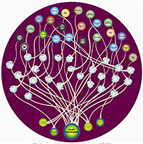
Underground Station Social Network Art
"We have created priceless, a multi-layered artwork in which the voices of individuals and institutions merge in surprising and unexpected ways. Objects of great value have been chosen by each institution to inspire an imaginative journey. People's unique stories and memories are showcased through audiovisual portraits, mobile exhibitions, installations and large-scale projections."
At London’s Huntington Station, a series of portraits and maps along the floor and walls reveal the Underground’s staff networks. The project is called Priceless. A sample of the images by motiroti is shown above.
London Underground staff have worked at the station for 138 years at the hub of a unique community of traders, museum workers, loiterers and licensed buskers who create the background atmosphere of this rich and complex environment.
motiroti has worked with LU staff to explore their personal connections and social networks. The participants were recorded in sound, video and writing by motiroti artists, who translated this information into an extraordinary series of graphic portraits and maps.
Along the length of the tunnel, 17 wall graphics and 26 individual floor constellations reveal the staff’s “hidden maps” of connections, and their personal worlds. Staff at South Kensington are connected with 66 national cities, 41 international cities, and with their friends speaking a total of 33 languages. Via Information Aesthetics [blogged by Judy Breck on Smart Mobs]
Posted by jo at 05:09 PM | Comments (0)
BlueStates:
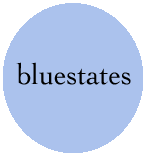
Exploring Relational Space
Cities are not merely collections of buildings; they are the living, breathing, teeming product of the human bodies who inhabit them. A city razed to the ground may recover, but a city emptied of people is dead. Yet emphasis is always given to the locative nature of a city - the neighborhood you live in, the street, the floor, the unit - an assertion of a Cartesian primacy which ignores the more profound natural relationships of the city: the coming together and parting of human beings living social lives. Cities are their people; souls are the bricks from which a city is constructed.
BlueStates: Exploring Relational Space--by Mark Pesce and John Tonkin--is an attempt to reverse the figure and ground of the city, ignoring its visible nature as a locative, Cartesian space, creating, instead, a view of the city purely as a social space. In this work, the trope of absolute location is abandoned in favor of the idea of relational proximity. BlueStates does not show you where you have been, but rather, it shows you who you have been with - a more perfect metric for the inner life of the city.

The inspiration for BlueStates is drawn from the recognition that most of us, most of the time, carry that most common of 21st century appliances, the mobile phone. Most of these mobile phones are equipped with a wireless technology known as Bluetooth. A Bluetooth mobile phone user creates a radius of electronic awareness - what we call a "bluesphere" - extending as much as ten meters from their body. When two Bluetooth devices pass in proximity to one another, each senses the other. Data is exchanged - and promptly ignored. BlueStates: Exploring Relational Space uses its own, custom software sensors - which run on mobile phones, PDAs and computers - to listen intently to the bluesphere. These sensors contribute to a database record of proximal encounters, and this data is then used to build views into the social life of the city's residents.
BlueStates is by its nature a highly participatory work. Anyone will be able to visit the website and create their own views into relational space. Residents of cities around the world will be encouraged to add their own sensors to the global network of sensors, expanding the database to incorporate the inner social life of their own cities. Beyond this, the work's creators have committed to releasing all software developed for the project as as free and open source software (under the GNU General Public License), believing this will encourage others to create their own projects in relational space. Finally, artists will be provided with tools to that will allow them to permute the data gathered by BlueStates: Exploring Relational Space in new and unique ways.
The two artists behind BlueStates have spent their careers exploring the intersection between art and technology. Mark Pesce is best known as the inventor of VRML, the standard for 3D on the World Wide Web, and has pioneered new interactive techniques for a quarter of a century. John Tonkin has consistently produced a stream of artworks that twist technology (and, occasionally, his body) into new and unexpected forms. Currently based at the University of Sydney, he has been involved in a broad range of projects including a collaboration at the Banff Centre for New Media Arts and a fellowship funded by the Australia Council. [from ISEA 06, via pasta and vinegar]
Posted by jo at 04:32 PM | Comments (0)
November 15, 2006
M/C - Media and Culture
![]()
Call for Contributors
M/C - Media and Culture is calling for contributors to the 'mobile' issue of M/C Journal. M/C Journal is looking for new contributors. M/C is a crossover journal between the popular and the academic, and a blind- and peer-reviewed journal. In 2007, M/C Journal celebrates its tenth year in publication. To find out how and in what format to contribute your work, visit >>.
Call for Papers: 'mobile' :: Edited by Larissa Hjorth & Olivia Khoo: Convergence has become part of burgeoning mobile media. The mobile phone has come of age. As an integral component of visual media cultures, camera phone practices are arguably both extending and creating emerging ways of seeing and representing. In media footage of late, camera phones have been heralded as providing everyday users with the possibility of self- expression and voice in the once unidirectional model of mass media. In addition, the "exchange" and gift-giving economy underpinning mobile phone practices (Taylor and Harper 2003) is further enunciated by the camera phone's ability to "share" moments between intimates (and strangers) through various contextual frameworks and archives from MMS, blogs, virtual community sites to actual face-to-face digital storytelling.
This is particularly the case in the Asia-Pacific region, where mobile practices in locations such as Tokyo and Seoul have brought about new forms of media use; for example, mobile phones are increasing being deployed to connect to, among other things, Web 2.0's burgeoning landscape of social software. In much of the rhetoric of current media criticism, users are being interpellated as prosumers (producers plus consumers), but what is the reality behind this so-called agency? Do users really feel empowered by the structures of immediacy connected to user-generated content (UGC)? Are they 'liberated' by the multi-media functions of the mobile phone or is the increasing convergence of mobile media causing more complications than pleasures?
This issue of M/C Journal seeks papers exploring the role of convergent mobile technologies in the Asia-Pacific region. The issue aims to explore the socio-cultural particularities of various adaptations of mobile media, from case studies on mobile communication in the Asia Pacific, to cross- cultural analyses of the transborder flows of mobile media production, representation and consumption. Topics may include:
- Convergent mobile technologies
- The use of mobile technologies in the construction, regulation and upkeep
of social software and virtual communities
- Pervasive mobile gaming
- Mobile communication case studies in the region
- The role of co-presence and maintenance of intimacy and community through
mobile communication
- The "future" of mobile media
- Creativity and mobile media; the aesthetics of mobile media
- Critiques of prosumer rhetoric in mass media
- Emerging forms of techno-nationalism and governmental policies around
'mobility' and digital convergent cultures
- The changing role of temporality and spatiality in contemporary case
studies of mobile telephony
Submit your essays of 3000 words in length to the editors at mobile[at]journal.media-culture.org.au.
Article deadline: 17 January 2007
Issue release date: 14 March 2007
M/C Journal was founded (as "M/C - A Journal of Media and Culture") in 1998 as a place of public intellectualism analysing and critiquing the meeting of media and culture. Contributors are directed to past issues of M/C Journal for examples of style and content, and to the submissions page for comprehensive article submission guidelines. M/C Journal articles are blind peer-reviewed.
Further M/C Journal issues scheduled for 2007:
'adapt': article deadline 9 March 2007, release date 2 May 2007
'complex': article deadline 4 May 2007, release date 27 June 2007
'home': article deadline 29 June 2007, release date 22 August 2007
'error': article deadline 24 August 2007, release date 17 October 2007
'vote': article deadline 19 October 2007, release date 12 December 2007
M/C Journal is online. All past issues of M/C Journal on various topics are available here.
Posted by jo at 10:43 AM | Comments (0)
November 14, 2006
Regine Debatty's

Interview with Lalya Gaye
I've been writing about Lalya Gaye's work over and over again ever since i started to blog. She's one of those few people who seem to swim effortlessly in both the artistic and the purely scientific waters.
She's an engineer and PhD graduate working in multidisciplinary projects that search to explore new territories of personal expression and creativity enabled by ubiquitous computing. Her research focuses on mobile media for urban space and on computational repurposing of everyday objects. In 2002, she started working on various research projects at Future Applications Lab, Viktoria Institute in Göteborg, Sweden. But she still manages to find some time to develop smaller new media projects with friends and to get involved in the mobile music and New Interfaces for Musical Expression (NIME) communities... More >>
Posted by jo at 09:19 AM | Comments (0)
November 13, 2006
Saskia Sassen
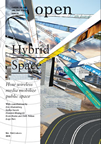
Essay and Lecture
Open 11 :: Hybrid Space: The influence of digital technologies on the use of the public domain :: Thanks to new wireless technologies (WIFI, GPS, RFID) and mobile media, public space is subject to drastic changes. It is being traversed by electronic infrastructures and networks, and alternative cultural and social domains are evolving, though often invisible from a conventional viewpoint. The traditional physical and social conditions of the public domain are being supplanted by zones, places and subcultures that transcend the local and interlink with translocal and global processes. The question is whether there are also new opportunities for the individual and for groups to act, participate and intervene publicly in this hybrid, seemingly flexible space. How do people appropriate the new public spaces? Where does the 'public' take place in this day and age? Who shapes and moulds it by devising spatial, cultural and political strategies?
With contributions by Drew Hemment, Howard Rheingold, Saskia Sassen, Frans Vogelaar/Elizabeth Sikiardi, Noortje Marres, Koen Brams/Dirk Pultau, Marion Hamm, Kristina Andersen, Ari Altena, Daniel van der Velden, Klaas Kuitenbrouwer, Esther Polak, De Geuzen and Max Bruinsma. Guest editor: Eric Kluitenberg, Jorinde Seijdel and Liesbeth Melis (eds.)
Public Interventions: The Shifting Meaning of the Urban Condition by Saskia Sassen :: De Balie, Amsterdam :: Saturday, November 18, 2006 :: Start: 20.30 hrs (CET) :: Live-stream webcast.
This year’s SKOR lecture (Fourndation for Art and Public Space) is delivered by Saskia Sassen, who will talk about the ‘making’ of public space by means of architectural and artistic interventions. The evening includes the presentation of Open 11, which takes hybrid space as its theme and includes an essay contributed by Sassen.
Human experience is threatened by the massive architecture of world cities and the density of infrastructures – digital and otherwise – that exist to serve international capital and the global economy. Sassen argues that there is a need for the production of subversive narratives as a counterbalance to this, to make the local and what has been silenced manifest and to generate new forms of ‘modest public spaces’.
Saskia Sassen is Ralph Lewis Professor of Sociology at the University of Chicago and Professor at the London School of Economics. She has gained worldwide acclaim for studies such as The Global City and Cities in a World Economy. Her most recent publication is Territory, Authority, Rights: From Medieval to Global Assemblages (Princeton University Press, 2006).
Panelists: Arnold Reijndorp, urban sociologist; Willem van Weelden, artist and theorist; Moderator: Bahram Sadeghi
Language: English
Organised by: SKOR / Open / De Balie
SKOR is the Netherlands Foundation for Art and Public Space.
Open, a cahier about art and the public domain, is published twice a year by NAi Publishers in association with skor.
ADDRESS: De Balie, Kleine Gartmanplantsoen 10, Amsterdam.
RESERVATIONS: De Balie t 020-5535100, or via >>
Admission: 12,50 (students: 7,50)
Posted by jo at 02:24 PM | Comments (0)
November 03, 2006
Turbulence Commission:
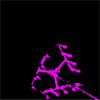
"Cell Tagging" by Brooke A. Knight
Turbulence Commission: Cell Tagging by Brooke A. Knight :: The mobile phone occupies a space that is both connecting and distancing. Seemingly ubiquitous, it has become an increasingly powerful tool, functioning as a phone, PDA, browser, and camera. With "Cell Tagging" it becomes a remote control that allows users to dial, draw, and speak. After dialing the number posted on the website, users are asked to enter a zip/city code that is significant to them. An aerial map of that place loads onto the screen. After choosing a color and brush size from the palette, users can use their cell phone keypads to draw directly onto the map. They are asked to speak into the phone and say why that place and drawing is meaningful to them. Users can save their drawings to the "Cell Tagging" database where others may view them. Cell phone users "graffiti" the sound-space around them, making every place their own. "Cell Tagging" literalizes this act of marking.
"Cell Tagging" is a 2006 commission of New Radio and Performing Arts, Inc., (aka Ether-Ore) for its Turbulence web site. It was made possible with funding from the LEF Foundation.
BIOGRAPHY
Brooke A. Knight is an artist and educator who has been working with digital media for over a dozen years. He has exhibited in over 40 international and regional venues, including Art Interactive, Photographic Resource Center, Mediaterra 2001, and Experimenta 02. His current areas of interest include webcams, the landscape, and text in all forms. Knight’s writings have been published in Art Journal and Sandbox. He is an Assistant Professor in the Department of Visual and Media Arts at Emerson College, where he teaches classes in interactive media.
Posted by jo at 10:20 AM | Comments (0)
November 01, 2006
Colour by Numbers
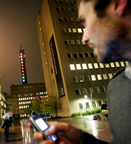
Control the Light with your Phone
Colour by numbers is a 72 meters high light installation at Telefonplan in Stockholm. "A tower stands at Telefonplan. Austere, slim and dark; rising towards the sky like an exclamation mark. A tower is an archetypical creator of place: it breaks in and becomes an event in a continuous landscape. This characteristic is emphasized by the illuminated windows of this particular tower - but the patterns and colours also vary constantly. The tower speaks in a sign language composed of light. But what is the tower at Telefonplan saying, and who gives the architectonic form meaning?". On the website under live video you can see a live video image of the tower and also read instructions for how to control the light installation over the phone.
Until November 5 the video image is also projected on the façade of the Culture House in Stockholm, as part of the exhibition "Stockholm bygger ".
Colour by numbers is a collaboration between the artist Erik Krikortz, the architect Milo Lavén and the interaction designer Loove Broms. [posted on Interactive Architecture]
Posted by jo at 08:08 AM | Comments (0)
October 19, 2006
Ethan Zuckerman
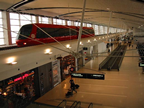
Tracking Hasan Elahi
Hasan Elahi is a conceptual artist whose life is an ongoing work about surveillance. He starts by telling us a chilling story - his detention by the INS at Detroit Airport after returning from a trip from overseas. An immigration officer scanned his passport and blanched, then led Alahi through a maze under the airport to an INS detention facility. As a US citizen, this was pretty odd - he tried to talk with the guards to figure out what was going on. But it all became clearer when the man from the FBI in the dark suit came to talk with him.
The FBI asked him about his whereabouts on September 12, 2001 - he was able to answer the questions by taking out his Blackberry and showing off his meetings. Over the course of questioning, it became clear that the reason he was being questioned was that he had a storage locker in Tampa, where he’d been teaching. Scared by 9/11, the owners of the storage area reported that “an Arab man had fled on 9/12, leaving explosives in his locker.” There were, of course, no explosives, and he hadn’t fled - just the detritus of ordinary life.
Elahi’s life for the next few months involved dozens of interviews with the FBI, finally culminating in nine back to back polygraphs, which finally “cleared” him. He explains that the power dynamic of an FBI interview leads to a very human response - the desire for survival. Elahi says that he could have questioned the legality of the experience, hiring a lawyer… but he realized that there was the possibility that any act of resistance could have gotten him sent to Guantanamo.
For the next few months, every trip Elahi took, he’d call his FBI agent and give the routing, so he didn’t get detained along the way. He realized, after a point - why just tell the FBI - why not tell everyone?
So he hacked his cellphone into a tracking bracelet which he wears on his ankle, reporting his movements on a map - log onto his site and you can see that he’s in Camden. But he’s gone further, trying to document his life in a series of photos: the airports he passes through, the meals he eats, the bathrooms he uses. The result is a photographic record of his daily life which would be very hard to falsify. We all know photos can be digitally altered… but altering as many photos as Elahi puts online would require a whole team trying to build this alternative path through the world.
Elahi also puts other apsects of his life online, including his banking records. This gives a record of his purchases, which complements the photographs. He doesn’t put the phone records online, because it would compromise the privacy of the people he talks with, and some friends have asked him to stop visiting, but he views the self-surveillance both as an art form and as his perpetual alibi for the next time the FBI questions him.
At the same time, he’s stretching the limits of surveillance systems, taking advantage of non-places. He flew to Singapore for four days and never left the airport, never clearing customs. For four days, he was noplace - he’d fallen off the map, which is precisely what the FBI and others worry about. But he documented every noodle and every toilet along the way.
One of the audience questions asks whether the FBI actually threatened Elahi with Guantanamo, or whether his “artistic temperment” might have exaggerated the seriousness of the situation. Elahi explains that it was never made concrete, but that he certainly felt the threat of indefinite detention, and that he believes the only thing that saved him was a common culture - the ability to quote the lyrics of country songs, or talk about college football, the sort of things a terrorist would find very hard to fake.
Another questioner wonders if Marianne Weems will make a show about Elahi - she mentions that an earlier piece, “Jet Lag”, tells the true story of a woman who flies from Amsterdam to NYC 167 times, again and again, until she dies of jetlag. (Still trying to find a reference to this story…) Given that Elahi’s life involves all the issues Weems is most interested in, she admits that a piece based on his experiences would be irresistable. [posted by Ethan Zuckerman on World Changing]
Posted by jo at 09:51 AM | Comments (0)
Net_Dérive
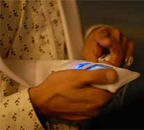
The City as Instrument
Net_Dérive, by Atau Tanaka and Petra Gemeinboeck with the collaboration of Ali Momeni, is a location sensitive mobile media art piece that calls for an exchange between participants in the gallery and participants in the streets. Deployed on advanced mobile phones, the work seeks to create a kind of musical instrument, thinking of the city-as-instrument.
Participants are given a kind of scarf with a mobile phone in each end and off they go to explore the neighborhood. One of the phones takes pictures every 20 secs and collects sounds, the other talks to the GPS (also in the scarf) and to the server inside the gallery space. On a radar they can see themselves pictured as dots but also the images they're taking. The sounds and pictures collected in the streets are sampled and mapped to a 3D city map in the gallery. As users are walking they can hear some voice instructions through a pair of headphones. Those comments suggest paths to follow or turns to make, they are generated and heard in a musical fashion. The voice instructions are inspired by the old Situationist games and theory of the Dérive - now brought into the digital and mobile spheres. As the user chooses to heed or ignore these instructions, a trace of his/her path is carved out in the city.
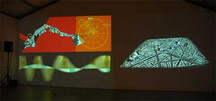
The engine then generates an audiovisual amalgam based on this information, and feeds it back as a live stream to each mobile client. The simultaneity, history, and memory of the various users’ paths and images become an abstract narrative that is summed together and projected in the gallery space. A feedback mechanism is created as users’ actions generate the collective narrative that in turn directs them.
Presented in Paris during the IntensiveScience exhibition of Sony CSL Paris, 6, 7-october 2006
Photos by Walter Kim. Images and information courtesy of Atau Tanaka.
Related: Sonic City, a wearable piece that enables people to compose music in real time by walking through the city; headphones that turn urban noise into music. Atau Tanaka's talk at Futuresonic; Pixel bondage on rice paper. [blogged by Regine on we-make-money-not-art]
Posted by jo at 08:38 AM | Comments (0)
October 17, 2006
undersound + unspoken_series

Interactions Under the City
undersound is an interface that allows you to listen to, distribute and affect the flow of music on your mobile phone while you're travelling in the underground.
The project imagines that you will be able to add music to the system at upload points in the ticket halls, and download tracks on the platforms. Because of the architectural configuration of the stations undersound users would have to congregate at certain locations for the purpose of interacting with the system.
Each track in the system is tagged with its place of origin (the station where it was uploaded) and this information is visible as the track is being played. This may trigger musings around your personal relationship to that place.
While in the carriages of the tube, you can browse undersound music of other people in range (that idea was inspired by tunA). You can see when a track has been in the system, the number of times it has been played, the number of people who have played it, etc. You can browse through other's tracks anonymously, but if you decide to download a song from someone else an alert will be triggered on their phone letting them know that you are grabbing one of their tracks.
A project by Arianna Bassoli, Johanna Brewer and Karen Martin.
Via coin-operated.
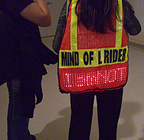
Another nice art project for the metro:
In unspoken_series, performers done a custom-made construction vest embedded with red and green LEDs to permit the display of up to 24 characters.
The artist programmes messages on the front and back of the vest, revealing facts, thoughts or ideas that the wearer would otherwise not pronounce in public. For example, the vests worn in the metro could display at once humorous and confrontational messages such as: “Took my seat...I am not happy!” or in an art gallery it could be "This is crap! ...are you happy?”
People who happen to be in the metro become the audience. The vests become the starting point of conversations about issues around the specific city the wearer is traveling to or from, about the main target audience he or she is exposed to, and general concerns in public space.
A work by Hoyun Son whose website also features a very funny parody of Speech Recognition Technology (video).
Currently on view at Sartorial Flux, a show curated by Valerie LaMontagne, at the A + D Gallery in Chicago until October 21st.
Deeper under the ground: For sale: Britain’s underground city; Tokyo's underground farm; Frame-by-frame underground ads; Cast Off stages knit-ins on the London Underground, occupying a carriage and knitting around the Circle line; Locker art show; parasite and Chiho Aoshima in the London underground. [blogged by Regine on we-make-money-not-art]
Posted by jo at 11:56 AM | Comments (0)
October 14, 2006
Riot Gear for Rollartista
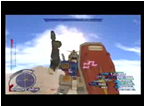
An Action Dedicated to African/Muslim Immigrants
Riot Gear for Rollartista: a blog and mobile gaming performance project by Anne-Marie Schleiner and Talice Lee. This blog is for posting information about a performance action we are doing in Castellon Spain on Saturday October 21, 2006 as part of an exhibition at EACC Espai d'Art Contemporani de Castell from October-January 2007. It will involve three short Machinima (stories told with video game footage) videos that will be beamed from an ultra-light projector stapped to one of our head helmets. (The videos are now linked from the blog to YouTube.) We sampled the two Playstation games Narc and MechWarrior. It sort of evolved into a violent (break) dance musical and each video is dedicated to an African or Muslim immigrant who was seriously abused by police in Spain or France. We, two American women in padded anime/riot gear/something else inspired moda, will be holding Playstation controllers and rollerskating at the same time, (and sometimes dancing), while we coast around projecting onto surfaces of the city.
After the performance/action we will also post documentation videos and photos on the blog.
Posted by jo at 01:01 PM | Comments (0)
September 27, 2006
Blast Theory at FIRST PLAY BERLIN
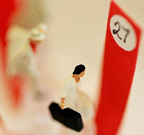
Premiere of Day of the Figurines
Blast Theory at FIRST PLAY BERLIN - opens tomorrow: 28.9.06
Day of the Figurines: Be the first to experience Day Of The Figurines - a virtual city where events are dictated by text message. A gig by Scandinavian death metallists. An invasion by a Middle Eastern army. A church fete. Send and receive. React and Interact.
Trampoline are delighted to host the world premiere of renowned British media art group Blast Theory’s new mobile phone game for up to 1000 players. Day Of The Figurines will be on show for 24 days in the Berlin venue Hebbel am Ufer theatre, HAU2, launching on September 28th at 6pm.
Day Of The Figurines is a mass participation artwork using mobile phones that is part board game and part secret society. Set in a fictional English town that is littered, dark and underpinned with steady decay - the game unfolds over 24 days, each day representing an hour in the life of the town. Players choose a figurine to represent them and participate using their mobile phones. Interacting via text messages players receive updates from the town, missions and dilemmas. They can chat to other players who are near them using text messages as events unfold day by day.
Day Of The Figurines is the world’s first MUD (Multi User Domain) for mobile phones and was developed as part of the European research project IPerG (Integrated Project on Pervasive Gaming) and in collaboration with Mixed Reality Lab, University of Nottingham. Following FIRST PLAY BERLIN, Day Of The Figurines will visit the National Museum of Singapore in December 2006 and tour the UK in 2007. For more information about multi-award winning, Bafta-nominated Blast Theory go to www.blasttheory.co.uk
First Play Berlin: Day Of The Figurines kick starts a month of digital art in and around Hebbel am Ufer. FIRST PLAY BERLIN features innovative work questioning the concept of performance and interactive art. Dominated by an artistic process absorbed in understanding location and pervasiveness, the work demonstrates the complexity of our globally connected reality. FIRST PLAY BERLIN is funded by the German Federal Cultural Foundation, British Council, Hebbel am Ufer and Radiator Festival for New Technology Art. For more information about FIRST PLAY BERLIN and Trampoline – the international platform for new media art - go to www.trampoline-berlin.de
Posted by jo at 06:49 PM | Comments (0)
September 26, 2006
Urban Tapestries
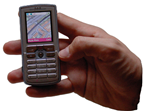
Scavenging Media for Guerilla Public Authoring
During the summer we have been working on a 'scavenging' approach for public authoring that would not depend on having access to custom systems or services (such as Urban Tapestries). Our idea is that it should require no central resources but enable people to stitch together knowledge, experiences and information using free online resources – a kind of Guerilla Public Authoring.
Our concept of scavenging is to break down the core components of public authoring and devise a methodology for linking them together and sharing them. The method will be one that requires little or no expert knowledge to set up and which can be adapted to the local conditions depending on what resources are available to the community.
In the next few months we will be testing and refining strategies and tactics for guerilla public authoring with some of the communities we are working with. Our aim is to create and publish a 'handbook' or guide on scavenging for guerilla public authoring.
Update: David Wilcox has blogged a further exchange on scavenging over at
Designing for Civil Society. [posted by Giles Lane on Urban Tapestries | Social Tapestries]
Posted by jo at 05:27 PM | Comments (0)
September 18, 2006
Insectopia:
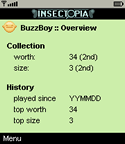
Context-Aware Gaming
insectopia is a new kind of cell phone game where the real world spills into the game world. Players roam the cityscape searching for and catching a multitude of different insects. Each insects in the game world is generated by using the available bluetooth devices available in the player’s vicinity. By catching insects and trading them with other players, players build their own collection bigger and better. The current status of the game is displayed on various highscore lists both in the phones and online.
See also geoquiz, a location-based mobile game in which players create and answer questions related to their current geographic position (kept track of through the GSM network). [blogged by Nicolas on pasta and vinegar]
Posted by jo at 03:42 PM | Comments (0)
September 16, 2006
wi Journal

on emerging mobile technologies
wi, the journal of the Mobile Digital Commons Network (MDCN), publishes the latest in Canadian mobilities research, encompassing disciplines such as design, engineering, computer science, communications and media studies.
Currently focusing on the research work of MDCN projects, wi aims to expand its purview in the coming months to include other national and international scholarship, artistic productions and design research on mobility, wireless technologies, and digital media. In this issue:
:: Letter from our Editors-in-Chief (Barbara Crow, York University & Kim Sawchuk, Concordia University) :: Mapping the Mobile Digital Commons Network (Michael Longford, Concordia University) :: p2P: Cityspeak's Reconfiguration of Public Media Space (Marrousia Lévesque, Lucie Bélanger & Jason Lewis, Concordia University) :: The Liminal Magic Circle: Boundaries, Frames, and Participation in Pervasive Mobile Games (Alison Harvey, Concordia University) :: The Persistence of Surveillance: The Panoptic Potential of Locative Media (Andrea Zeffiro, Concordia University) :: Learning From Commercial Mobile Games (Janice Leung, York University) :: Iterative and Digital: The Use of Blogs and Wikis in Social Science Research (Neil Barratt, Concordia University) :: Editor's Choice (Top Links on Mobility Related Websites) :: Comments/Suggestions: Contact us at editors[at]wi-not.ca
Posted by jo at 03:27 PM | Comments (0)
September 15, 2006
Mark Wallace

LonelyGeeks, LifeLogs and Four Eyed Monsters
A few of us from the Brooklyn metaverse crowd went to see Four-Eyed Monsters last night, a very interesting feature film about a young New York couple who end up documenting their every move via videotape and handwritten notes, only because they’ve decided not to actually speak to each other. While the film is not a documentary, it was made by the couple who it’s about, and their real lives and dramatized lives do begin to converge toward the end of the film. While it’s a movie about relationships (you know, the kind where two people “slowly start to meld into one beast that has 2 mouths, 4 eyes and 8 limbs and takes up 2 seats on the subway!!!”), it’s in greater measure a movie about the act of recording itself, and what it means at a moment in history when you can store, play back and share as much of your life as you like, with as many people as are willing to pay attention. In this case, Susan and Arin have created a virtual version of their real life together, and it’s interesting to ask what the differences between the two may be, if any — especially in light of similar trends in things like lifelogging, and in the fictionalization of a life like lonelygirl15’s. And if you stay with this long-winded post all the way to the end, you get to think about how this kind of logging of our lives might help enhance them in some future 3pointD world.
“How long can their relationship survive as an art project???” asks the Four Eyed Monsters Web site. But that doesn’t describe everything that’s going on here. There’s an art project unfolding, but there’s a relationship too. Are they the same thing? Does the art project follow the course of the relationship, or is the relationship subservient to the art project? The truth is probably somewhere in between: you can’t separate the relationship from the art project; at some level, the relationship is the act of documenting itself. A more interesting question might be, “How long could their relationship survive if it stopped being an art project?”
The documented life got some attention recently with the stellar rise of lonelygirl15, who appeared to be recording her days via a video diary on YouTube. Except that lonelygirl15, who’d garnered millions of fans in the four months she’d been videoblogging herself, turns out to be the construct of a couple of young California filmmakers. “Bree” was a totally fictional character, but it’s interesting to ask how the fictional Bree differs from the fictionalized Susan and Arin. Four Eyed Monsters is composed for the most part not of documentary footage but of re-enactments. (And in any case, what does it mean to re-enact what was in part acted out in the first place?) Are the characters of “Susan” and “Arin” that appear on the screen somehow qualitatively different from the character of “Bree” that appears in the YouTube videos? Are they all virtual people, or do Susan and Arin have some deeper gravitas for being based on their actual counterparts? And isn’t Bree, the lonely teenager, based on an actual archetype? Does that make her any “more fictional” than the characters in the film? Or is that like being “more pregnant”?
One of my favorite ideas is the impossibility of autobiography: you can’t ever really give an accurate account of yourself and your history; there are just too many intangibles of memory, bias and emotion that get in the way. Four Eyed Monsters is only one version of the lives of Arin and Susan. Cut together differently, the film could have given a very different impression, or examined some other aspect of what it’s like to come together in the way they have. You can’t present all views at once, and any one view leaves out some amount of information. (There’s a 3pointD uncertainty principle here that I’ll post about at some point in the future.)
Lately, though, some people have been looking for ways to capture their lives in as much detail as possible, using the tools of the information age. While the Internet and digital media make recording the scenes of one’s days far easier than it has been before, they also make possible, at least in theory, a detailed quantification of one’s life that could potentially be very useful in a future metaversal age.
One failed version of this is the now-discontinued LifeLog program of the Department of Defense. “The LifeLog capability would provide an electronic diary to help the individual more accurately recall and use his or her past experiences to be more effective in current or future tasks,” according to DARPA’s description. “The goal of the LifeLog is to turn the notebook computers or personal digital assistants used today into much more powerful tools for the warfighter.”
That program is no more, but into the breach has stepped ur-blogger Justin Hall, who’s been looking at “Passively Multiplayer Online Games” in recent months. (We first blogged about this back in June.) Basically, a PMOG, in Justin’s early conception, logs all your Internet activity and assigns scores based on various factors such as which and what kind of sites you visit, for how long, and what you do there, etc. It’s not very far advanced beyond an idea, but a kind of proof-of-concept version of Justin’s game is online, where you can see how surfing various sites might raise or lower various attributes that are used to describe your avatar in the game.
It’s interesting to contemplate what it might be like to compare the fictionalized self created by such a game to the real person who plays it. But this kind of lifelogging can be taken a giant step further and allowed to bleed out into the real world, where it could become really useful (or really scary, depending on who’s doing the logging).
It already happens on the Web all the time: the recommendations you get from Amazon or NetFlix and the targeted ads in your Gmail sidebar all work off subsets of the lifelogging idea. Amazon, NetFlix and Google log your activity on their sites, and use that information to point you toward things that are in line with the preferences you’ve shown in the past.
Now extend that idea to all areas of your life. Imagine if, after you’d used FreshDirect for a while, it started automatically ordering and delivering your food for you, based on the orders you’d placed in the past. Now knock down the walls between FreshDirect’s information and the information gathered by NetFlix, and it might even tweak your delivery based on what kind of movies you’d ordered that week. (Popcorn and chocolate for the chick flicks, Red Bull for the slasher movies?) Now imagine you’re sharing all this information — travel itineraries, iTunes playlists, anything else you care to name — with a whole bunch of other people, much as Susan and Arin shared the moments of their lives.
I’ll let Jerry contemplate the ramifications of videologging (no “b” here) one’s life for all to see. Logging the data of your every move, though, could get interesting. Vernor Vinge mentioned the potential opportunities that are opened by this in his keynote speech at the end of the recent Austin Game Conference. Vinge envisioned “lifestyle cults” that gather and share their information in order to garner favorable terms in whatever context. If 1,600 other people in your neighborhood all order Red Bull on the weekends, for instance, you ought to be able to leverage that into a discount. Things like that seem to be the gist of Vinge’s thinking here.
If it sounds outlandish to be sharing so much information with so many other people, consider the fact that Web 2.0 has pushed us much further in that direction than almost anyone thought we would head. On Flickr, YouTube, Blogger and so many other sites, we offer up personal information about our habits, thoughts, purchases and selves every day — many times a day, in fact. One of the ideas behind lifelogging is simply that you as an individual would be able to aggregate all that information in a single place. Without revealing anything more than you’re already putting out there, you’d immediately have a powerful resource for doing things like making decisions, making friends, making new discoveries, you name it.
Me, I’ve shared enough in this post already. (1,400 words!) See you — or some version of you, at least — at the movies. [blogged by Mark Wallace on 3pointD]
Posted by jo at 04:55 PM | Comments (0)
You Are Not Here
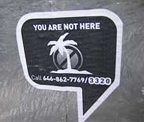
Baghdad in Brooklyn
I followed the You Are Not Here walk which was presented yesterday at Conflux. This urban tourism mash-up invites participants to become meta-tourists on an excursion through the city of Baghdad while walking through the streets of New York. We were given maps printed on both sides: on the recto, a map of Baghdad, on the verso, a map of New York. By looking through it in the light, we were able to navigate through the Baghdad/New York streets. We had to look for the You Are Not Here signs placed on lamposts, walls or other locations in the streets, they indicated us that we had arrived at an important monument or square of the capital of Irak. The YANH street-signs provided the telephone number for the Tourist Hotline.
Site-specific access codes entered on our mobile phones through the Tourist Hotline provided us with audio information about the current site that we had discovered. For example, when we arrived in central Baghdad's Firdos Square, we received information about the toppling of the statue of Saddam Hussein and how this might have been a stage event as most of the spectators of it were American soldiers and journalists.
Through the website, you can get your own mashed-tourist map of Baghdad, NYC with a full tour guide to all of the must-see locations.
You Are Not Here tries to expose the contrasts and the similarities between two mashed cities. We are consuming global information on a daily basis: a tourist visit demands a higher level of commitment and identification with a place than a habitual commute. YANH provides participants with a fragmented tourist experience, which provokes a critical view of urban space and its subjection to media and politics.
The experience was quite nice and walking becomes the medium through which we discussed, commented and exchanged our views about the Iraqi events.
A work by Mushon Zer-Aviv, Dan Phiffer, Kati London, Thomas Duc, Ran Tao and Charles Joseph.
You Are Not Here will also be part of the Come Out and Play festival that will take place in New York on September 22-24. [blogged by Regine on we-make-money-not-art]
Posted by jo at 04:30 PM | Comments (0)
September 14, 2006
Scoot
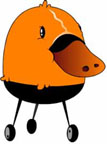
a location-based game
Melbournians have another chance to save their town from those pesky aliens when the location-based game, Scoot, returns this weekend 16 - 18th September.
Following its 2005 premiere at ACMI and Federation Square, Scoot 2006 will be played over 3 days across Victoria's 5 major cultural organisations and takes participants on a unique interactive treasure hunt through the virtual and real worlds of Australian Centre For Moving Image, National Gallery of Victoria, State Library of Victoria, the Arts Centre and Melbourne Museum.
A location-based game that employs sms, multimedia and the online environment to explore concepts of space, Scoot 2006 is played out via sms instructions sent to participants' mobile phones. It begins with players receiving a mystery SOS message leading them to the world of Scoot. In order to avoid invasion, players must then seek out magical characters, play online games and interact with the strange objects that have arrived in Victoria's major arts institutions.
Created by artist Deb Polson and presented by Australian Centre For Moving Image in collaboration with National Gallery of Victoria, State Library of Victoria, the Arts Centre and Melbourne Museum, Scoot explores using mobile phones as tools of play and creates a gaming experience across multiple locations in Australia's largest location-based game. It has been supported by the Victorian Government through Arts Victoria and the Community Support Fund.
Families and groups of 2-6 can play. For more information and to register visit Scoot or ACMI Games Lab [posted by jacinta on selectparks]
Posted by jo at 07:28 PM | Comments (0)
September 13, 2006
empyre discussion: Luis Silva + Joanna Callaghan

Mobile Media
Hello everyone,
I am very happy to be able to be part of this month's discussion. Having studied Social Sciences and personally interested in how they can share some insights over our relation to technology, Mobile Media is such an interesting subject to be discussing. Mobile media changed the way we interact with technology, with physical (i won't be using the term real) space and with each other. The term here is ubiquity, no longer nomadism. These devices have been shaping a new kind of public space that is no longer the utopian cyberspace of the ninetees, but a new one that still relates to a certain extent to Habermas's definition and has , by means of its own mobility, a strong relation to the physical space in which we lead our daily routines. It is public, but is is also private, it is dependent of the physical environment but only to deny its specificity and minimize the importance of local references and context.
A good example of this new kind of public space, not dependent on the geography but on connections, that can also serve as a good starting point to this debate is the project "As if we were alone" by the artistic duo Empfangshalle. This project adresses the mobile phone user and how he or she creates mobile "private spheres" while communicating over the phone. They have concluded that "whoever uses his cell phone in public dissociates himself from his surroundings via real or virtual spaces".
The core of the project lies in this process of dissociating oneself from the physical space through mobile media. One departs from the geographically defined public space of the streets, the squares, or public transportation to join a (semi) public space defined by the amount and variety of connections.
So my point here is, are these two public spaces ontologically different, despite overlaping? Is this mobile media space truely a public space, or a new version of the concept of private sphere, but once again with no physical references?
Best,
Luis [posted on empyre]
From: "Joanna Callaghan"
Subject: RE: [-empyre-] mobile media
To: empyre@lists.cofa.unsw.edu.au
Hi Luis and everyone else,
Thanks for inviting me Paula to be part of this months list.
I think Luis' comments are a really good starting point. They also happen to be directly related to some work I did recently called Mobile Dream Telling, was part of the Sydney Design Festival. (http://mobiledreamtelling.blogspot.com/)
What might be useful to discuss is whether the concept of 'space' is relevant to the notion of mobility. Perhaps what we are dealing with is different ways of being within time. Are mobile phones changing how we are to ourselves and to others? Do they influence our sense of self? Is the mobility that is at the heart of the mobile phone creating mobile, mulitple ‘egos’ or ‘selves’? Who or what is the remote ‘other’?
Theorist Sadie Plant believes that mobile phones have created a new form of functioning of peoples minds which she refers to as bi-psyche. This double psyche is required to attend simultaneously to the real world that physically surrounds the speaker and the virtual world that is opened up through the phone he or she is holding. She raises questions around the effects of what can be seen as a schizophrenic existence or bi-psyche, that is a divorce between what one says verbally and what one does with one’s body.
Following on, Jose Luis Pinillos has coined the phrase The Present Extensive as a way of living in time that emerges as linked to the modern city or urban psychopathology. ‘…with its incessant mobility and rapidity of its changes, the city situates its inhabitants in a permanent here and now, where references to yesterday and tomorrow vanish. Precisely because of this provisional character that prevails and because urban existence accentuates the ephemeral nature of all events, the technified city produces in those who live there a form of living in time that has been called the ‘present extensive’ (Pinillos 1977:239)
So what does this mean in terms of the self? If mobile phones allow us to manage multiple identities simultaneously what does that mean for our relationships? Can we collate these identities to create an enduring or permanent sense of self that I think, is necessary to live and make sense of ones life? If mobile phones connect us to particular, remote others, do they close us off consequently from the spontaneous, unexpected contact with strangers that can be so important in opening our experiences and minds to our fellow human beings?
These are purposefully philosophical questions since my own interest in mobile media is not about the technology but about the sociological and psychological effects, affects, consequences, influences and creative product that can be derived from these fascinating little machines.
Joanna
Posted by jo at 12:42 PM | Comments (0)
September 08, 2006
Tag Shufflesition:
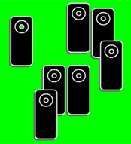
A Mobile Game of Mimicry and Mime
Tag Shufflesition: a mobile game of movement, mimicry and mime, that uses iPod Shuffles to see how fast can you find out who’s “it”! :: Designed by Charlie Hoyt and Andrew Bucksbarg, Indiana University Bloomington (2006) :: Central Park, New York :: Saturday, September 23, 2006 at 3:00PM.
Christo may have turned Central Park into a work of art, but Andrew Bucksbarg and Charlie Hoyt are part of a group of game designers who will be transforming New York into an enormous game level. Mobile and locative technologies have given rise to an international flowering of what are called urban games, street games or Big Games. These games explore new technologies and make the real world and urban spaces their playground. Tag Shufflesition will be featured in New York’s Come Out & Play Festival
From massive multi-player walk-in events, scavenger hunts to public play performances; the festival will give players and the public the chance to take part in a variety of different games. The festival will feature the innovative use of public space and games that make people interact in new ways, such as Tag Shufflesition.
Tag Shufflesition is a mobile system for movement and dance using the random playback feature of mobile mp3 players, such as Apple’s iPod Shuffle. The “Shufflers” (participants) receive random instructions from their iPods as to how to move and interact with the other Shufflers. One iPod is loaded with a slightly different set of instructions. The task of the Shufflers to find out which Shuffler among them is “it”- the one with the different instruction, and begin to mimic all of the “it” Shuffler’s movements. The game is complete when all of the Shufflers are correctly mimicking the “it” Shuffler.
Tag Shufflesition is engaging for both spectators and participants as an interactive game of patterns movement and mimicry. Shufflers will enjoy following the directions, which often exist as small games within the larger game of Tag Shufflesition. Spectators, without the distractions the Shufflers face, will also enjoy trying to guess who’s “it,” but please don’t give “it” away!
Charlie Hoyt is an Audio Instigator. When he’s not staring at a mixing board or making “music”, Charlie enjoys video games, rock ‘n roll, and name-dropping. Charlie is pursuing a Masters in Immersive Mediated Environments at Indiana University in Bloomington, Indiana, studying audio and music for participatory media. Charlie’s previous artistic fracases include “ToneBeast”, which received honorable mention at the 2004 Indiana IDEAS Fest and “MESS”, which received nothing, but is nevertheless fun. Email: audioinstigator(at)yahoo(dot)com
Andrew Bucksbarg is a techno-media artist, experimental interaction designer, audio-visual performer and a professor in the Department of Telecommunications at Indiana University. Bucksbarg’s work and interests reverberate in the space of creative new media practices, technology and theory. As an experimental interaction artist, Bucksbarg concerns himself with technologies and social systems that support tactics of ambiguous, autonomous social creativity and exchange. Bucksbarg’s work appears physically and digitally around the globe, including the Rhizome.org Artbase; Share DJ, NY; The 2006 Bent Festival, NY; National Museum of Australia, Canberra, Australia; Sonorities Festival, Belfast, UK; The Dark light Film Festival, Dublin, Ireland; Trampoline Media Festival, Nottingham, UK and dLux Media Arts Festival, Sydney, Australia. Email: Andrew(at)adhocarts(dot)org Press: 812-219-5310
Posted by jo at 04:37 PM | Comments (0)
September 04, 2006
From Here to There

Under an Umbrella
From Here to There Under an Umbrella by Chris Barr: The "Under an Umbrella" project stems from an experience that I had as a freshman in college, in which a younger version of myself offered a young lady a spot under an umbrella during a rainstorm. From that rainy two-block walk and the conversation that it allowed, an exuberant yet naive relationship developed.
For three days during Conflux I will offer to escort local residents and festival participants to their desired location under an umbrella, as a sort of umbrella taxi. Our walk and conversation will be recorded via an "umbrellacam" and will be uploaded to the project website. With this experiment I am interested in how a shift in spatial experience, i.e. a space designed for one being used for two, can shift other relationships such as communication. And how something such as our vulnerability to our environment can offer us unique (and sometime intimate) human experiences.
Participants can sign up for a walk at UnderAnUmbrella.com or call (716) 512-9254. The project will run Friday September 15 through Sunday September 17 from 8am - 4pm with documetation available on the project website.
Posted by jo at 11:18 AM | Comments (0)
August 28, 2006
Sometimes
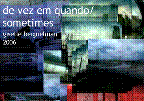
(De Vez em Quando)
Sometimes (De Vez em Quando) by Giselle Beiguelman, 2006 :: ZKM interconnect @ between attention and immersion Sep. 01 – Oct. 15 ::
Sometimes explores the mutations of the urban vision mediated by multimedia mobile phones. It is a generative video which decomposes and reconstructs itself through the audience's actions. Images captured by the artist, with cell-phone cameras, in the traffic, among moving cars, are offered to the public's manipulation. Using just the resources of mouse and keyboard, the interactors recompose on big screens, in real time, the order of frames and re-edit the original film, introducing color and light filters over the images. The original film restarts, on the new image layers built by the audience, anytime the mouse and/or keyboard are abandoned. The result is a fabric of images which consume themselves, following the logic of intense traffic and jam situations. In that context, the registers' build-up happens through saturations, constructing visual memories with different degrees of opacity, guided by hiatuses and gaps. In the intermittent play between acceleration and stagnation, a palimpsest of inputs prevails, oscillating between sometimes and once in a while.
Posted by jo at 10:39 AM | Comments (0)
August 22, 2006
[iDC] Interactive City: irrelevant mobile entertainment? Part 2
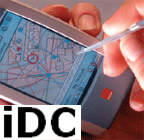
Mark Shepard's Response
It's encouraging to find such an outpouring of interest and critique on the subject of locative media and its relation to pyschogeography, mapping and urban play. While we had originally planned on addressing many of these issues in September as part of the Architecture and Situated Technologies thread, I think the current discussion provides an opening to address how an evaluation of certain locative media practices (and their failures) might provide a "sandbox" for thinking through the opportunities and dilemmas of a near-future world of networked "things". From locative media to atoms, bits and ubiquity.
As someone whose interest in the Situationists predates my work in new media, I have long felt uncomfortable with media art practices that claim or aspire to transpose concepts of pyschogeography and tactics of the dérive or detournment to contemporary urban environments. It is critical to remember that the dérive emerged in a specific historical context, one that I would argue no longer holds. In part a response to 20th century urban planning strategies promoted by modern architects associated with CIAM (Congrès International d'Architecture Moderne), the dérive sought to reclaim a space for the creative capacities of an imaginative subject in face of an onslaught of the functional rationalization of modern capitalism. CIAM's strategies aimed to reorganize the city - perceived as an ailing beast in need of a cure - through a strict functional segregation of dwelling, work and recreation (leisure) zones connected by rationalized transportation corridors.
Citing a 1952 study by Parisian sociologist Chombart de Lauwe that mapped the movements made in the space of one year by a student living in the 16th Arrondissement, Debord expresses outrage that her itinerary "forms a small triangle with no significant deviations, the three apexes of which are the School of Political Sciences, her residence and that of her piano teacher." [1] To a certain extent, the dérive was conceived to explicitly counteract this rationalization of patterns of movement through the city and the corresponding limitations imposed on the diversity, messiness, and richness of urban life. Understood as a form of ludic play, the expressed aim was to free people from "their relations, their work and leisure activities, and all their other usual motives for movement and action, and let themselves be drawn by the attractions of the terrain and the encounters they find there." With regard to kanarinka's comment about the gentleman invited to drift with them who "summed it up nicely" by saying "Sorry, I can't go with you. I have to work here until 8PM and then I have to go to my other job," I would argue that it is precisely this mentality that the dérive sought to address.
In evaluating locative media projects claiming or aspiring to a Situationist agenda, I often find myself questioning to what extent their deployment of mobile technologies ends up actually reifying this rationalization of patterns of use or movement. Put another way, to what extent do conventions for the use of consumer mobile technologies actually contribute to CIAM's agenda in their codification of modes of interaction with and within the contemporary city? Perhaps the most pertinent question for locative media might be: how might these technologies be (mis)used in an attempt to counteract (rather than reinforce) an ongoing rationalization and commodification of urban life? It would seem less a question of "locating" oneself, perhaps more one of getting lost...
Brian Holmes' critique of locative media [2] focused on a perceived noncritical ("naive") adoption of GPS technologies and Cartesian mapping systems in the context of Situationist aesthetics. Specifically, Holmes attacks the non-reflexive use of technologies developed by the military and their domestication in the context of scenarios of play, where aesthetics becomes politics as decor. This critique was originally delivered at a workshop held at the RIXC center in Latvia in 2003. Since then the field has expanded significantly, and while early locative media projects may have relied heavily on these technologies, it would be difficult to identify locative media exclusively with either GPS or Cartesian mapping today. At the same time, some contemporary projects built on GPS are far more reflective of the dark side of locative media. [3] This is not to say Holmes' critique no longer holds. Quite the contrary, as it would seem it has been in many cases internalized by the field. While this year's ISEA / ZeroOne San Jose symposium and exhibition presented a few GPS-based locative media projects, they were by no means the majority. Drew Hemment et. al.'s LOCA project is one example of a "pervasive surveillance project" aimed at raising public awareness of how certain consumer technologies (bluetooth in this case) enable tracking in ever more subtle ways. [4] Alison Sant's paper "Redefining the Basemap" [5] addressed the fact that many locative media projects still "remain bounded by datasets that reinforce a Cartesian and static notion of urban space" and made a call for alternative methods of mapping the city, particularly ones addressing the temporal dimension of urban experience.
The critique of GPS and Cartesian mapping systems is by no means new. Laura Kurgan's exhibit "You Are Here: Museu" (1995) [6], addressed the uncertainties that arise when relying on satellite tracking systems to know "where we are." Architect Stefano Boeri's essay "Eclectic Atlases" (1997) [7] addresses the failure of satellite imagery to adequately represent the contemporary metropolis and calls for alternate methods for mapping the city as experienced "on the ground." The exhibition and catalogue for "The Power of the City: The City of Power" (Whitney Museum of American Art, 1992) [8] explores alternative mapping practices of conceptual and performance art from the 60s and 70s in terms their relation to Baudelaire's Flaneur, Jameson's notion of cognitive mapping, and (then) contemporary readings of Situationist aesthetics. Kevin Lynch, in his oft cited treatise "The Image of the City" [10], acknowledged that the emotional dimension(s) of his cognitive maps were beyond the reach of his research methods. More recently Marina Zurkow, Scott Patterson and Julian Bleecker's "PDPal" (2003) [9] asks what might an "emotional" GPS look like?
Perhaps the most interesting take on the relevance of locative media today is that of Marc Tuters and Kazys Varnelis as expressed in their essay "Beyond Locative Media," published by Leonardo in conjunction with the Pacific Rim Summit [11]. Acknowledging that locative media has been attacked for its ambivalence with regard to commercial interests and its reliance on Cartesian mapping systems, they find these critiques nostalgic, "invoking a notion of art as autonomous from the circuits of mass communication technologies", which they argue no longer holds. Moreover, they make the case for locative media as a "conceptual framework by which to examine the certain technological assemblages and their potential social impacts. Unlike net art, produced by a priestly technological class for an elite arts audience, locative media strives, at least rhetorically, to reach a mass audience by attempting to engage consumer technologies, and redirect their power." At the dawn of an age where ubiquitous networked objects outnumber humans as generators and receivers of information, this effort is more important than ever.
+++
[1] Guy Debord. "Theory of the Derive" - http://library.nothingness.org/articles/SI/en/display/314
[2] Brian Holmes. "Drifting Through the Grid: Psychogeography and Imperial Infrastructure" - http://www.springerin.at/dyn/heft_text.php?textid=1523&lang=en
[3] See the Institute for Applied Autonomy's "i-SEE - Now More than Ever" - http://www.appliedautonomy.com/isee.html or Annina Ruest's "Track the Trackers" - http://www.t-t-trackers.net/
[4] LOCA - http://www.loca-lab.org/
[5] Allison Sant. "Redefining the Basemap" - http://www.intelligentagent.com/archive/ia6_2_interactivecity_sant_baseline.pdf
[6] Laura Kurgan. "You Are Here: Museu" - http://www.l00k.org/youarehere/you-are-here-museu
[7] Stefano Boeri. "Eclectic Atlases" in The Cybercities Reader (NY: Routledge, 2003)
[8] Cristel Hollevoet, Karen Jones, Timothy Nye. "The Power of the City: The City of Power (NY: The Whitney Museum of American Art, 1992)
[9] Marina Zurkow, Scott Patterson and Julian Bleecker. "PDPal" - http://www.pdpal.com/
[10] Kevin Lynch. "The Image of the City" (MIT, 1960)
[11] Marc Tuters and Kazys Varnelis. "Beyond Locative Media" - http://netpublics.annenberg.edu/locative_media/beyond_locative_media
+
mark shepard
+
http://www.andinc.org
iDC -- mailing list of the Institute for Distributed Creativity (distributedcreativity.org) iDC[at]bbs.thing.net http://mailman.thing.net/cgi-bin/mailman/listinfo/idc
List Archive:
http://mailman.thing.net/pipermail/idc/
Posted by jo at 10:03 AM | Comments (0)
August 21, 2006
PLAY.Orchestra
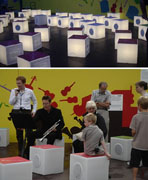
Sit and Play
If you go down to the South Bank in London this summer, outside the Royal Festival Hall is a wonderful installation titled PLAY.Orchestra. 56 plastic cubes and 3 Hotspots are laid out on a full size orchestra stage, each cube containing a light and speaker. Sit down on the cube or stand in the hotspot to turn on that instrument and bring 58 friends to hear the full piece. People with Bluetooth phones will be able to receive a ringtone of the piece created, as well as upload their own sound samples in September.
The production blog gives an interesting insight into the installing process & the complexity of the project. PLAY.orchestra is the result of a collaboration between Central Saint Martins College of Art & Design MA Creative Practice for Narrative Environments, South Bank Centre Education and the Philharmonia Orchestra.
Daniel Harris at Central Saint Martins was involved in the project from the beginning, details from his site:
"I was then responsible for the various human, computer and physical interfaces used in the build. 2 miles of cable are used to connect the 60 seats with the control system, which runs on a midi based Max MSP system.
The Objective was to get non-traditional audiences to experience an orchestra from new angles, and to involve themselves in activity of the philharmonia orchestra. For this purpose, a bluetooth system was set up, where members of the public can submit their own samples for composers to put together into a piece that will be played in the last few weeks of the installation."
IamtheMightyJungulator were also involved in the software side.
Photos stolen from Dan Harris Flickr Set.
(thanks for the tip Leslie, via BBC News) [posted by chris on Pixelsumo]
Posted by jo at 05:12 PM | Comments (0)
Reflecting Back on Screens:
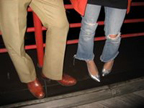
Inclusion & Exclusion
I'm back in Ottawa after a week in Banff with some really great people doing really great stuff, but before I switch my attention to fall teaching I'd like to think out loud about a few things that keep coming to mind.
It seems to me that our conversations on new media art ultimately revealed that it isn't the newness of media that's so interesting, but rather the artness of it. (Yes, I know that's not a word, but bear with me.) While "user-generated content" - or, as I prefer, public authoring and participatory media - repeatedly came up in conversation, it was quickly distinguished from artistic practice. While no one seemed willing to come right out and say it, I think the implied distinction was primarily quality-based, and both aesthetic and cultural quality are notoriously subjective.
My keynote address (which I'll post as soon as possible) chose to turn "screen" from noun to verb in an attempt to draw out the ways in which new media art and design practices involve acts of inclusion and exclusion. I tried to unpack a few of the primary metaphors that feed our notions of mobility, and I invited people to reimagine their senses of community and citizenship based on what it means to be in or out. The point of all this, of course, is to get producers of all sorts to acknowledge their own screening processes. In my mind, the most pressing political and ethical challenge facing us today is how we account for, and become accountable to, differences in perspective and practice. In other words, who gets to decide what constitutes quality content? The government? The broadcaster? The company? The artist? The designer? The academic? The public? And which public is that exactly? When it comes to collaboration, whose interests take precedence in which contexts? (As one artist said to me after my presentation, "I've realised I value art more than people.")
In my panel presentation (which I'll also post shortly) I discussed what I consider to be Proboscis' exemplary collaborative work, and how it was this sense of collaboration that helped shift a broadly technology-focussed project to a culturally-focussed one, or more specifically, how the two became entirely inseparable. Fiddian Warman also showed us a couple of Soda Creative's projects that specifically engage some of these questions, albeit in indirect ways. Both Nahnou-Together and b.tween2cultures explore what it might mean to create distinct cultural identities - together. Or how about this? The Residents and MOMA's new River of Crime Community Art Project seeks out a space for professionals and amateurs to work together. As "an exploration of the rise in popularity of instant-video-creation due to the proliferation of inexpensive video cameras, as well as both still cameras and phones that shoot video," ROCVID invites anyone and everyone to make a video - any way they like - to go with an audio clip provided by the legendary music group. Mass art and art for the masses indeed.
I'm sure I'll continue to think about these things as I prepare for my lecture on mongrel practices of art, design and anthropology at UIUC art + design next month, and as always, comments are welcome.
And for anyone interested, here are all my Interactive Screen 0.6 posts:
IA Screen : Introducing the Canadian new media context
The Convergence Conundrum: A Cross- Canadian Perspective on the Business of Content
Technology, Privilege and Innovation: The Legal Perspective
Creative Commons: Art, Activism and the Database
The View from Outside In: Margins of Art and Activism
The View from Inside Out: Margins of Technology and Business
Playing the Interface
Serious Games: Understanding the grey area between learning and playing
Filming Outside the Cinema
Blast Theory - Day of the Figurines workshop
The Impossibility Box: An Emotional Computation
(photo: Peter Horvath) [blogged by Anne Galloway on Purse Lips Square Jaw]
Posted by jo at 11:31 AM | Comments (0)
August 18, 2006
MPG: Mobile Performance Group
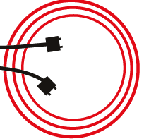
Art to Go
Founded by Matt Roberts, the MPG: Mobile Performance Group is a collective of new media artists interested in finding new ways to present art outside of traditional venues. MPG disseminates their work by using automobiles, video projection, cell phones, FM transmission, wireless hotspots, and any other technologies that allow artist to engage the public.
Parking Spaces investigates one of the most ubiquitous spaces in the United States, the parking lot. MPG moves through the city looking for empty parking lots to collect sounds and images. Using the collected material MPG creates an improvised performance in the space. Images from ZeroOne ISEA2006. Multi media feature from Mercury News. Flickr.
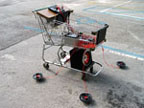
Shopping Carts: Using recycled cardboard, solar power, batteries and multimedia equipment, MPG converts shopping carts into modular performance units. During the day the carts are used to collect energy, sounds and images. Each cart is equipped with solar panels and batteries for energy collection. They are also equipped with audio/video recording equipment for sound and image collection. During the night carts carry panels, made of recycled cardboard, that allow several carts to connect and provide table space for the performers. The three basic carts are audio, video, and power. The audio module carries speakers, amps and mixing board. The video module carries video projectors, cameras, and lcd screens. The power module carries batteries, inverters and power strips to provide power for the performers.

Inflatables: A series of inflatables that can be used as performance space and projection screens. MPG is working with designer Gerry Christensen and a group of his students to create a series of apparatus for mobile performance. These apparatus include a bike trailer with a hybrid power source and wearables for performance space. The bicycle trailer is equipped with solar panels for energy collection and storage, and has the ability to tap into public power outlets. The trailers can cary multimedia equipment, local wireless network, and provide portable power. The wearable are portable devices that performers can wear to carry equipment and also convert into seating/table space for performance.
More information here. [thanks Craig]
Posted by jo at 10:29 AM | Comments (0)
Loca - Location Oriented Critical Arts
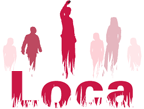
Grass-roots, Pervasive Surveillance
Loca is an artist-led interdisciplinary project on mobile media and surveillance. It forms part of an AHRB funded research programme exploring the shifting boundaries between art practice, the event and data systems. Loca is grass-roots, pervasive surveillance. A person walking through the city centre hears a beep on their phone and glances at the screen. Instead of an SMS alert they see a message reading: We are currently experiencing difficulties monitoring your position: please wave you network device in the air.
Loca is an exercise in everyday surveillance, tracking digital objects in physical space. What happens when it is easy for everyone to track everyone, when surveillance can be affected by consumer level technology within peer-to-peer networks without being routed through a central point?
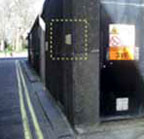
The project foregrounds secondary characteristics of mobile communications, such as the ability to locate consumer mobile devices in real-time and near-real-time, and the kinds of peer-to-peer pervasive surveillance that is possible as a result. Loca explores the shifting nature of surveillance as it ceases to be the preserve of governmental or commercial bureaucracies.
Pervasive surveillance has the potential to be both sinister and positive, at the same time. The intent of Loca is to equip people to deal with the ambiguity and to make informed decisions about the networks that they populate.
FOR IMMEDIATE RELEASE
SAN JOSE POLICE DEPARTMENT CONFISCATE EQUIPMENT USED IN SURVEILLANCE ART PROJECT DURING ZEROONE FESTIVAL.
On Sunday 13th August the newspapers were full of a story of 3 Palestinian-Americans facing terrorist charges for being caught in possession of 1000 cellphones, which the authorities suspected were to be used for surveillance or as bomb detonators. The following day San Jose Police Department seize and impound a cellphone wired up to a battery and hidden in a San Jose hotel lobby. Little did they know, but they had stumbled across a genuine case of DIY surveillance. This cellphone was running custom-made software by art group 'Loca' as a part of the ZeroOne festival and was a part of a surveillance network covering the downtown area.
A PLAYFUL ART PROJECT ON SURVEILLANCE THAT RAISES SERIOUS QUESTIONS
In 'Loca: Set To Discoverable' at the ZeroOne festival the Loca art group were able to track and communicate with the residents of San Jose via their cellphone without their permission or knowledge, so long as they have a Bluetooth device set to discoverable. Over 7 days more than two thousand people had been detected more than half a million (500,000) times, enabling the team to build up a detailed picture of their movements. People were sent messages from a stranger called Sly with intimate knowledge of their movements, written in such a way as to leave them unsure if they had not unwittingly joined a social network called Loca. The messages drew inferences based on the 'urban semantics' of the places they had been: “You were in a flower shop and spent 30 minutes in the park; are you in love?” Over the course of the week the messages became gradually more sinister, the would-be friend mutating into stalker, 'coffee later?' changing to 'r u ignoring me?'. The aim of Loca: Set To Discoverable was to enable people to question the networks they populate, and to consider how the trail of digital identities people leave behind them can be used for good or ill.
DEPLOYING 'NODES' IN PUBLIC SPACE
Each Loca 'node' consisted of a cellphone running custom made software, plus an additional battery so that the nodes could run independently for up to 5 days. Some were installed in concrete casings on lampposts, street signs and walls. Others were put in black plastic boxes in hotels, cafes, venues, cinemas and restaurants. They were hidden in flower pots, underneath a chaise longue, in the foot of the podium used by the cinema ticket collector, buried in the earth by a popular bar terrace. The project aims to raise ethical questions, not to be an irritant or prank, and permissions were obtained where appropriate.
SJPD: 'BOOKED IN EVIDENCE'
One node had been placed behind some plants in the lobby of the Sainte Claire hotel in downtown San Jose. Permission had been obtained from the hotel management to place it there, but it was found on the last day of the project by staff who had not been informed. The police were called, and on arrival found a plain black box containing a cellphone, positioned in a way inconsistent with someone leaving their personal cellphone to charge. The device was taken away as a suspicious object and 'booked in evidence'.
When the artists arrived at the hotel to collect the device later that day, Monday 14th August, the hotel duty manager informed them of what had happened. They were given the Crime Reference number and directions to the police station, and headed out to talk to San Jose Police Department. The duty sargeant told them that items booked in evidence are returned after a case has gone to court and that they would have to wait until they had been proven guilty or innocent to retrieve it.
[...]'As far we we were concerned, the police confiscating one of the nodes was as much a part of the project as us climbing ladders strapping nodes to street lights, or people engaging with the messages or receiving a print out of their movements at the exhibition stand. We set out to be fully transparent with the police, to see what their response to the project would be, and to document this at every stage.' - Loca
The only thing the artists forgot to mention was that the cellphone was continuing to scan while it was being held at the police station, providing Loca with surveillance data on people's movements at the station, whether they be officers, criminals or the innocent.
NOTES TO EDITORS
Loca is a group project by John Evans (UK/Finland), Drew Hemment (UK), Theo Humphries (UK), Mike Raento (Finland).
http://loca-lab.org
Posted by jo at 10:19 AM | Comments (0)
Nettime

Net Art 2.0
"The world runs on Internet time." - Andy Grove, former CEO of Intel.
The early net artists were, in many ways, ahead of their time (or as Cocteau might have said, "would appear to be ahead of their time, for it is really the time that is behind the work."). But now that has all changed. Net Art 2.0 like Web 2.0 is embedded in the practices and rituals of everyday life. You can't be a net artist today without taking into account where the impetus for turning the net into an artistic instrument came from. That means that early net art history anticipated the socially interconnected "second lives" of the new generation of net artists for whom the digital is but an extension of their body's functionality as it navigates the network culture. I discuss this more thoroughly in the "Spontaneous Theories" section of META/DATA.
As Baudrillard reminds us, "[t]he image no longer even has time to become an image."
Perhaps we could say net art never had enough time to become net art but that Net Art 2.0 is more in sync with its time. This may be the reason why so much of the art work being created by next generation net artists is less avant (ahead of its time) and more pop (in its time). [posted by Prof VJ on Pofessor VJ]
Posted by jo at 08:00 AM | Comments (0)
August 16, 2006
Cellphonia
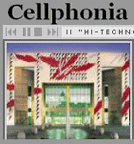
A Cellphone Opera
After the great success of this version of our "cellphone opera" at the ZeroOne festival we have decided to leave it going for now, so please join in. If you already have, you can do it again and again. Admission free (especially on nights and weekends). Call 408-228-5848.
"Some projects take audience participation one step further, allowing people to add voice, text or images to an artwork in progress. By dialing up another project, Cellphonia, ... a caller (presumably but not necessarily from the area) can join the chorus of a current-affairs opera. The libretto for that day, based on news feeds from The San Jose Mercury News, is voiced one line at a time; all the caller has to do is echo it back into the phone. The performance is recorded and automatically mixed with other voices. Later a caller can download an MP3 file of the song for playback on his own phone at http://cellphonia.org
“So often people with cellphones to their ears are in their own world, cut off from reality,” said Steve Bull, a New York artist-programmer who developed the opera with composers Scot Gresham-Lancaster and Tim Perkis. “This will pull people back into the community, as they sing the community story and hear their voice in the community chorus.” At ZeroOne, Paintings Are So Last Century, JORI FINKEL, SAN JOSE, CA, NY Times, August 6, 2006
We will be putting occasional mixes up at the "Cellphonia San Jose podcast" at:
http://cellphone.el.net/podcast. If you are interested in sponsoring your own variation on this concept of a cellphone opera don't hesitate to contact us. info[at]o-art.org
Posted by jo at 09:23 AM | Comments (0)
August 10, 2006
Regrets
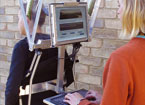
Collective Remorse
Ars Electronica, Hauptplatz :: September 1-5 2006 :: 10:00 am - 8:00 pm :: Regrets--by Graham Budgett and Jane Mulfinger (US)-- are often the conceptual vehicle of self-improving tendencies, but they are rarely communally active in any meaningful way. The Regrets team seeks to intervene and enable such interaction. In particular, remorse is posited here as a positive entity, incorporating recall, reflection, and learning.
Five custom mobile computer units roaming public space in and around a chosen city, community, or event, collect anonymously submitted regrets from the public, gathering and comparing them to comprise a sociological database of contemporary regret. Instant feedback to the individual user based on other contributors' similar concerns is algorithmically generated to 'share the burden'. Random selections of the regrets are made public via locally negotiated sites and existing signage, network, and broadcast facilities. The archive represents a glimpse of a given community at a particular time through the rubric of regret; its results available for future studies.
Posted by jo at 04:30 PM | Comments (0)
August 08, 2006
Fete Mobile

The Movable Feast Project
The Fete Mobile is a mobile public art installation involving a robotic blimp carrying a file server and surveillance equipment with which participants can interact through wireless devices. The project addresses pressing social/technological issues through metaphor and public performance. The project seeks to ignite debate around the value of a digital public realm in an era of increasing corporate and governmental control by projecting current aspects of media activism into a future scenario where the Internet is down, surveillance cameras are everywhere and advertising invades the public mind.
Deployed as flying interactive sculpture for the media art festivals ISEA 2006, the Movable Feast project centers around a 6 meter surveillance blimp, the flight and optics of which participants can control through their wireless devices. An onboard wireless local-file server allows the public to exchange media files, remotely view their surroundings from above via a video camera, and display text message on an LED panel mounted on blimp.
Posted by jo at 03:50 PM | Comments (0)
Receiver #16
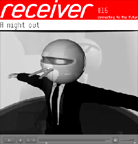
Social Networking the Mobile Way
Receiver #16 wants to spark off some ideas about social networking the mobile way: clubbing, seeing your favourite band, sharing memories of a night out or playfully exploring the city, getting to know and experiencing, even creating, music – can mobile add to all these? And how does it affect how we get our friends together for joint action? Does it trigger emergent behaviour? Or is it the ideal means to pull it all together? What do *you* think?
Lee Humphreys: Out with my mobile - exploring social coordination in urban environments :: Tim Cole: The mobile phone as the next electric guitar (or any other instrument you want) :: Rudy De Waele: Connecting cultures through music :: Charlie Schick: One night - a global story of one night in the mobile life :: Antony Bruno: Where the long tail ends :: Karenza Moore: Come together - the use and meanings of mobiles amongst UK clubbers :: Frank Lantz: Big Games and the porous border between the real and the mediated :: Mark Curtis: Mobilising our meat based selves - social planning while on the hoof.
Posted by jo at 02:21 PM | Comments (0)
August 07, 2006
From Dusk Till Dawn
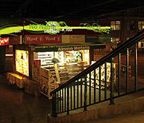
Visualizing Communication in Urban Space
From Dusk Till Dawn will begin at sundown on August 19, 2006 and run until early morning at the Kiosk "Akuna Matata" (subway station Eberswalder Strasse), Berlin. From Dusk Till Dawn is a visual, interactive installation of mobile communication technologies in urban space.
Mobile communication networks have become a prominent part of our daily lives stretching all around the globe, linking people from all continents and accompanying us in every move we make by laying their complex framework over our cities like virtual worlds. But how do people react to ubiquitous communication? How is it used and how is interaction accomplished? What consequences arise concerning the environment we live in? Today, every mobile user alters through mobile communication or data exchange actively but invisibly his surrounding space and his spatial relations.
From Dusk Till Dawn makes mobile communication visible and creates awareness for the openness, transparency and possible exploitation of users employing these technologies.
Posted by jo at 04:37 PM | Comments (0)
August 04, 2006
SKIN-PÔ
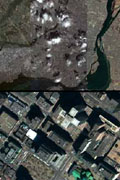
Artistically Sensitive Ecosystems
The SKIN-PÔ project--by Mark Fournel--seeks to bring the creative process into the public forum and allow citizens to reclaim their community spaces through technological works of art that spur spontaneous creation. The artist offers an interactive environment within an urban space, such as a public square. Passers-by are able to interact with the work's audio and visual components via wireless interfaces that control video projections on surrounding buildings and create and distribute sound in the venue. SKIN-PÔ challenges urban structures, disputes their composition and reconstructs them where they stand. We are impelled to scrutinize and confront the urban reality imposed upon us, the conventions that rule it, and the acceptance of these conventions by the key stakeholders of our urban spaces, the passers-by.
With SKIN-PÔ, Fournel reaches out to passers-by and strives to change how they look at their surroundings. He destabilizes them and in doing so forces them to call into question what they have previously accepted as fact. The project seeks to create distance — both critical and playful — between us and our role as urban players. In this vacuum between reality and fiction, the artist creates a type of "escape," which he sees as essential if we are to truly explore our rapport with the urban space around us.
This void fascinates him, as it represents a respite that allows us to relax, take a deep breath, and reconnect with our imagination.
The project incorporates the implementation and use of a highly accurate, quick response, spatial positioning system and a number of video and audio control software applications and modules. SKIN-PÔ promotes an open source philosophy, with all of the modules, tools and software developed for the project made available to the community.
SKIN-PÔ is the second phase of the Transduction project, a body of research and production work begun in 2000 that explores and confronts the various methods we use to take ownership of our architectural space and the integration of these methods into the construction of "artistically sensitive ecosystems." SKIN-PÔ evolved directly from the Tontauben installation, the first phase of the Transduction project. [J.P. © 2006 FDL]
Posted by jo at 12:56 PM | Comments (0)
July 26, 2006
Anne Galloway
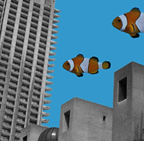
Technosocial Screens
I'll be giving a keynote address at next month's BNMI Interactive Screen - Margins: Media: Migrations workshop & summit.
Technosocial Screens: Mobilities, Communities, Citizenships: screen, v. to show, or hide from view; to sift or separate; to shelter or protect
New interactive technologies promise to reconfigure relations between producers and consumers, public and private, physical and digital, local and global - and in these shifting scenarios the screen takes on a multitude of roles. Not only are screens changing size and resolution, some are becoming softer and more flexible, and others are disappearing entirely. Some screens offer a bird's-eye view of the world that we can hold in our hands, and others tell us where we are - or could be - at any given moment. Whatever the type of screen, we can be sure of one thing: people, places, objects and ideas are being screened at the same time.
Together we will explore some of the critical ways in which new media technologies shape, and are shaped by, our changing experiences and understandings of community and citizenship. What kind of shelter and hope can we expect from a world of everywhere and anywhere media? From what, and whom, are we protecting ourselves? How are these technological practices sorting our everyday social, cultural and creative relationships? What, and whom, gets hidden - or cannot hide? How can new media technologies explore different ways of belonging and being together? How can they encourage diverse and lively participation and representation around shared matters of concern?" [...] [blogged by Anne on Purse Lips Square Jaw]
Posted by jo at 05:42 PM | Comments (0)
July 21, 2006
IOWA Review

Reconfiguring Place and Space in New Media Writing
"[...] While installations and VR environments have increasingly liberated the user's body from the seated-in-front-of-screen-at-keyboard position and brought the body inside the ontological space of the work itself, mobile computing and communication technologies are increasingly powerful and pervasive. Writers, artists, performers and "puppet-masters" are employing network writing strategies to deploy a variety of projects that extend from the network into the real world. Projects such as Teri Rueb's Itinerant [2005] make use of mobile and locational technologies including GPS and RFID to create narrative experiences affected by the user's movement through the physical world. In the case of Itinerant, as users walked through Boston Commons and surrounding neighborhoods they experienced an interactive sound work that re-framed Mary Shelley's Frankenstein.
Projects such as Yellow Arrow [2004-Present] pair coded stickers with text messaging, enabling users to write and read brief personal narratives about locations tagged in the physical world. Implementation [2004] is a fragmentary novel published on stickers that was deployed and photographed by participant readers around the world. Surrender Control [2001] utilized SMS as a performance medium, sending its users a series of directions as text messages, ordering them to perform a variety of absurdist actions during the course of their everyday lives.
Similarly, the phenonmenon of flash mobs makes use of text messaging to assemble groups of people for alternately absurdist and political activities. Extensible web technologies such as Google Maps paired with GPS coordinates also offer narrative possibilities, as evidenced by projects such as the "Memory Maps" group on Flickr, whose users have created personal narratives of places through coordinate-tagged photographs accessed through interactive maps [...] From Editor's Introduction: Reconfiguring Place and Space in New Media Writing by Scott Rettberg, The IOWA Review Web, v8 n2 July 2006.
Posted by jo at 04:17 PM | Comments (0)
July 19, 2006
Ruth Ron
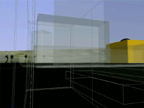
Visible City + Upgrade! Telaviv-Jerusalem
Visible City -- by Dan Collins, Dianne Hansford, and Ruth Ron -- uses Augmented Reality (AR), Mobile Computing (GPS), and 3D Simulated X-Ray Models developed in animation and CAD applications to visualize and navigate the urban core of San Jose (ISEA2006). Augmented reality (AR) in tandem with GPS-based mobile computing applications allows intuitive information browsing of location referenced information. In AR, the user's perception of the real world is enhanced by computer generated entities such as 3D objects, location markers, superimposed text, and spatialized audio. The interaction with these entities is available in real-time to provide convincing and natural feedback to the user. The coupling of Augmented Reality with location based information (GPS) and high-end 3D modeling enables the integration of virtual entities with real world objects in a seamless manner.
![]()
Ruth Ron is an architect and digital artist, whose work focuses on the extension and deformation of real space by using virtual assets. Her work explores the borders between architecture and technology, form and media. She has exhibited in New York, Seattle, Paris and Jerusalem. In her lecture, Ruth will show samples of her spatial installations, online interactive work and some current research of interface between the computer and the physical environment.
Upgrade! Tel-Aviv-Jerusalem: Monday, 24.7.06, 19:30 @Minshar, David Chachmi st. 18, Tel Aviv.
Posted by jo at 04:05 PM | Comments (0)
July 18, 2006
Turbulence Commission:
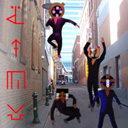
SWM05: Distributed Bodies of Musical-Visual Form
SWM05: Distributed Bodies of Musical-Visual Form [SWM05] -- by Troy Innocent and Ollie Olsen with the Shaolin Wooden Men and Harry Lee -- features the distributed bodies of musical-visual form that are inhabited by the Shaolin Wooden Men (SWM), a virtual band, a 'gang of numbers' -- me(a)tacodeflesh. SWM require your assistance to manifest as media creatures. They invite you to send them images of your local environment in which they can appear. Sending images unlocks access to the SWM05 mobile site which consists of downloadable micromusic ringtones and small screen machinima performances. The SWM are everywhere. In a meshwork of wireless entities, they are media creatures seeking a fragmented existence to be consumed in the nanoseconds of play-time in the emerging wireless net. SWM05 will transfigure the SWM by embodying them in a new materiality.
SWM05: Distributed Bodies of Musical-Visual Form is a 2005 commission of New Radio and Performing Arts, Inc., (aka Ether-Ore) for its Turbulence web site. It was made possible with funding from the Andy Warhol Foundation for the Visual Arts.
BIOGRAPIES
The SHAOLIN WOODEN MEN are a 'gang of numbers' whose bodies are 'made of sound'. In their various manifestations they have released three full-length recordings - "S.W.M. " (1992), "The Hungry Forest" (1994) and "Supermindway" (2001) - and a collection of singles and remixed released on the Psy-Harmonics label. The S.W.M. work across image, sound and interactivity and have performed at DEAF96 and exhibited at ISEA96. Typically, they require the assistance of creative humans to manifest as media creatures to be distributed across the net.
TROY INNOCENT has been exploring the 'language of computers' and the new aesthetics of digital space since 1989. In recognition of this work, Innocent has been described as "the first philologist of virtual reality". His artificial worlds – Iconica (SIGGRAPH 98, USA), Semiomorph (ISEA02, Japan), and lifeSigns (Ars Electronica 2004, Austria) and Ludea (SIGGRAPH2006, USA) – explore the dynamic between the iconic ideal and the personal specific, the real and the simulated, and the way in which our identity is shaped by language and communication. He is currently Senior Lecturer, Department of Multimedia and Digital Arts, Monash University, Melbourne.
OLLIE OLSEN is an Australian composer, synthesist and sound designer who has been producing and performing rock, electronic and experimental music for the past thirty years. Projects include "Max Q," "NO," "Third Eye," "Orchestra of Skin and Bone," "Shaolin Wooden Men," and "I am the Server." Some recent collaborations and projects include performing with Negativland (from USA-2001); guest soloist with the Australian Art Orchestra (2002); and recording with Japanese bands, BOREDOMS and AOA (2001-2002.
HARRY LEE is a web developer working with Macromedia Flash, SQL, PHP and related technologies. Recent projects include database development for lifeSigns, exhibited at the Australian Centre for the Moving Image (ACMI) in 2004, in addition to numerous corporate and education projects. He lectures in multimedia and digital arts in the Faculty of Art & Design at Monash University.
Posted by jo at 01:06 PM | Comments (0)
Battleship:GoogleEarth
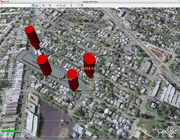
(a 1st Life/2nd Life mashup)
I've started working on a bit of summer laboratory experiment to see how Google Earth could become a platform for realtime mobile gaming. (Follow the link on the Flickr photo page to the URL you can load in your Google Earth client to see the game board in its current state.) With Google Earth open enough to place objects dynamically using the tag, a bit of SketchUp modeling and borrowing an enormous battleship model that construction dude uploaded to the SketchUp/Google 3D Warehouse, I started plugging away at a simple game mechanic based on the old Milton Bradley Battleship game.
Battleship, for those of you who never played, has a simple mechanic — two players set up their navy ships on a peg board, hidden from the other guy. You take turns plugging a peg into your side of the board, with each peg hole designated by a letter/number coordinate grid. When you plug a peg in, you say where you put it — E4! If your opponent has a ship in that coordinate (or part of one, actually), they say, sorrowfully, "Hit!" and you register that peg hole with a color to indicate a hit. If not, you just put in a neutral peg to remind you that you already tried that spot. The game continues into one player has sunk all the other guys ships.
The mechanic I'm experimenting with is simpler. One person places their ships using Google Earth and the other person goes out in the normal world with a mobile phone, a GPS connected to the mobile phone. The phone has a small Python script on it that reads the GPS and sends the data to the game engine, which then updates the Google Earth KML model showing the current state of the game grid. When the player who's trying to sink the ships wants to try for a hit, they call into the game engine and say "drop". The game reads back the coordinates at which the "peg" was dropped and shortly thereafter, the other player will see the peg appear at the coordinate it was dropped. If the peg hits one of the ships, it's a Hit, otherwise it's a miss.
Next Steps
As I continue developing the engine, I'll probably have the game engine let you know when you call in to do the "drop" whether it was a hit or not, or the opposing player can text or call to indicate the same.
I want to put in a "ping" command for the call-in battleship control center to help whoever's wandering around in the world navigate a bit. (Although the game is only really practical if you limit the boundaries over which it can be played.)
I need a lighter weight battleship — the current SketchUp model is too large, in data size terms and takes too long to initially load (although, it only needs to be loaded once.)
Goals
* Experiment with "1st Life" action reflected in "2nd Life" worlds (verso of the folly Ender suffered in Orson Scott Card's simply fascinating Ender's Game
* Learn KML
* Learn SketchUp
* Learn Python for S60
* Make a mobile/pervasive game in which one has to move around in order to play
Equipment
* Google Earth client
* Apache+Tomcat+MySQL (Java and JSP on the server-side computer)
* Nokia N70 and a little Python app to connect to the Bluetooth GPS and upload the data to the server
* Voice Application (for the battleship control center to drop/ping)
* SketchUp
Time Committed: * About 2 days learning stuff, and 1/2 a day programming the computer to make it do things.
Why do I blog this? To keep track of and share the near future laboratory experiments I'm doing this summer.
Technorati Tags: mobile, pervasive electronic games, pervasive media, play, urban play
[blogged by Julian Bleecker on research techkwondo]
Posted by jo at 08:22 AM | Comments (0)
July 15, 2006
Mirjam Struppek
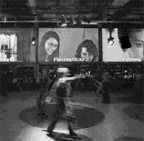
The Social Potential of Urban Screens
"...The emergence of the internet culture has brought new ways of participation and exchange to challenge hierarchical authorship. The 'new forms of creation mediated by networks more and more remote, fast and wireless' (Beiguelman, 2006) derived from this culture, influence new productions of public space. Artists are exploring the potential of the growing interconnections between online and offline worlds, and between social experiences in virtual and physical space. Wallace (2003) sees the internet connected to screens 'as a delivery mechanism to inhabit and or change actual urban spaces'. We can find various community experiments in the growing field of social computing: friend-of-a-friend communities; participatory experiments in content creation in the mailing list culture; and more recently, the wiki websites (where users can add and edit content) and blogging systems that serve an increased need for self-expression. By connecting large outdoor screens with digital experiments in online worlds, the culture of collaborative content production and networking can be brought to a wider audience for inspiration and engagement..." From The Social Potential of Urban Screens by Mirjam Struppek, Visual Communication, Volume 5, No. 2, Sage Publications June 2006, p 173-188.
Posted by jo at 02:25 PM | Comments (0)
July 14, 2006
Europe Lost and Found

Join The Lost Highway Expedition
A massive movement of individuals will pass through Ljubljana, Zagreb, Novi Sad, Belgrade, Skopje, Priština, Tirana, Podgorica and Sarajevo. The expedition will generate projects, art works, networks, architecture and politics based on knowledge found along the highway. Projects developed from the expedition will lead to events in Europe and the US. LHE is a project by the School of Missing Studies and Centrala Foundation including: Azra Akšamija, Katherine Carl, Ana Dzokić, Ivan Kucina, Marc Neelen, Kyong Park, Marjetica Potrč and Srdjan Jovanović Weiss, together with partners in the cities of The Lost Highway Expedition.
The Lost Highway Expedition is a tour to explore the unknown future of Europe. It was initiated by the School of Missing Studies [SMS] as the first event of Europe Lost and Found (ELF), a multi annual and three-phased project. ELF is an interdisciplinary and multi-nationally based research project to articulate and imagine the current evolution of new and transforming borders and territories of Europe.
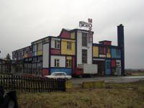
The subject is the continent of immigration, and its depopulation and aging, and the need for redefinition of states, sovereignties and citizenships. Challenged is the established belief and practice of nation-state, including non-representative and technocratic construction of European Union yet to vision more open and alternative definitions for populous in movements. The rejection of constitutional referendum and the riots in France signal the contradiction between homogeneous and multiple identities, the fluidity of capital and containment of labor, the liberation of individuals and their restrictions under sovereignty. Clearly, Europe cannot subsist by itself, and is already being redefined by "the others" in its quest for a self-identity. In such contexts, ELF suggests the future of Europe is best seen in the Western Balkan.
Posted by jo at 06:53 PM | Comments (0)
July 13, 2006
GLOWLAB 09: july :: august 2006

Networks, Mobility, Interventions
The projects in Glowlab 09 examine urban architecture by investigating the social spaces enabled by public networks, mobile communication devices and direct intervention. In viewing the work, one might re-imagine the city as space which is defined through the nature of the interactions that take place within it.

Public Broadcast Cart by Ricardo Miranda Zuñiga: Transforms a shopping cart into a mobile radio station, transmitting via miniFM and the Internet. The Public Broadcast Cart is designed to enable any pedestrian to become an active producer of a radio broadcast by reversing the usual role of the public from audience to producer.

Hundekopf by Brian House and Sue Huang (Knifeandfork): A location-based narrative project utilizing SMS text-messaging to explore the experience of riding the Berlin Ringbahn.

Relay: Toronto by Germaine Koh: An architectural intervention that turns a building into a sort of urban lighthouse, relaying text messages received on a mobile phone by flashing the building lights in Morse code.

Lee Walton's Western Shift by Allard van Hoorn: An open-environment collaboration between researchers, architects, designers, artist, curators and all kind of cultural producers. Its aim is to stimulate fresh ways of looking at urban living and discover alternative solutions.

SpeedWave by Otino Corsano: A photographic based performance piece inspired by the established location of a regularly monitored Toronto speed trap. A camera on a tripod replaces the laser gun to document waves of local traffic.

Talking Cities [magazine review] by Krista Jenkins: A review of the recently published Talking Cities magazine, the print accompaniment to the exhibition of the same name, taking place at Zeche Zollverein in Essen, Germany.
Glowlab is an artist-run production and publishing lab engaging urban public space as the medium for contemporary art and technology projects. We track emerging approaches to psychogeography, the exploration of the physical and psychological landscape of cities. Our annual Conflux festival, exhibitions, events and our bi-monthly web-based magazine support a network of artists, researchers and technologists around the world.
Posted by jo at 02:11 PM | Comments (0)
July 10, 2006
[iDC] Mobile Phones and The Networked Posse

Cultural and Regional Conditions
"To what extent are our concerns regarding the Networked Public Sphere tied to a specific historical phase (or regional condition) of the Internet? How are these concerns problematized by way mobile communications and wireless networks have evolved since the mid-late 90s?
I'm writing this from Tokyo where I'm with a group of architecture students studying the city as part of a study abroad program. One difference noticeable here is the way people access and use the Internet. Free wifi access is hard to find, and virtually no one is seen working on a laptop in cafes. Internet cafes here are cavernous spaces normally one or two floors below ground, consisting of stalls containing a desktop computer occupied by someone playing World of Warcraft, sofas for couples playing PSP at dedicated media stations, and racks of comics for casual reading. They also appear to be popular places for napping.
As Mimi Ito notes in "Personal, Portable, Pedestrian: Mobile Phones in Japanese Life" (MIT, 2005), a majority of Japanese access the Internet via their mobile phones, rather than a laptop or desktop computer. The Japanese word for mobile phone – keitai, roughly translated as "something you carry with you" – provides a clue to its role within Japanese culture. In contrast to “the cellular phone” of the US (defined by technical infrastructure), and “the mobile” of the UK (defined by the untethering from fixed location), the Japanese term “keitai” references a somewhat different set of parameters.
Here, the keitai is truly ubiquitous. Tokyo’s Shibuya crossing, for example, claims the highest density of mobile phone use in the world. An overwhelming majority of the Japanese population own phones equipped with digital still and video cameras, SMS (Short Message Service) messaging, wireless email and Internet browsers. Mobile phones have replaced computers as the de facto e-mail terminal of choice for many Japanese who are not in technology, finance, engineering or other computer-intensive occupations. This is particularly true for the young, who most clearly prefer handsets to laptops. These devices are used less often for voice communications than for asynchronic exchanges of text and images between close circles of friends or associates. These exchanges – often conducted throughout diverse urban spaces such as a subway car, a street corner, a shopping mall, or a grocery store aisle – interject new forms of privacy within otherwise "public" domains. Kenichi Fujimoto refers to the devices themselves as "territory machines" capable of transforming any space -- a subway train into "(one's) own room and personal paradise." While late 20th century (and predominately western) notions of the Internet promised to unlock us from the limitations of offline relationships and geographic constraints, keitai space flows in and out of ordinary, everyday activities, constantly shifting between virtual and physical realms. Here, "the" Networked Public Sphere is elided by a multiplicity of "networked posses" - small groups of close acquaintances rather than a distributed "mass" of virtual actors." Mark Shepard [posted on Institute for Distributed Creativity]
Posted by jo at 10:23 PM | Comments (0)
July 06, 2006
Always ON
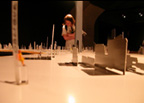
New Augmented Space and its Memory
The concepts of place, proximity and distance are going to be substantially rewritten by the locative media evolutions. The origins of this process are not only related to the abstract digitalization or to the latest hi-tech gadgets, but they are more significantly rooted in social changes induced by the overflowing of the net space. The social access and the subsequent construction of net space started in middle nineties, so the perceived 'space', as a public, collective and shared dimension was slowly literary doubled in the digital dimension. The next step is the actual ongoing process of joining back these two halves (real and virtual space) in an augmented reality that is a real experience. If the man on the moon broke the 'external' boundaries perception of that time, the net integrated in the urban space has definitively broken the actual inner spatial boundaries outdating the established physical perception as the only possible coordinates to sense the space.
The net is based on one hand on a subject (its IP) directly addressable from every (good or evil) point of view. On the other hand the same subject is able to add his own data and memory to his own space, building a digital environment piece by piece. These tough changes are investigated and enhanced in the impressive work made by the Sonarama 2006 curatorial team (José Luis de Vicente, óscar Abril Ascaso and Drew Hemment and Advanced Music). After Micronations (2004) and Randonnée (2005) the last part of this contemporary territory conceptual mapping has been accomplished through a selection that emphasize different "permutations of the mobile syntax" as de Vincente defines it. In the ground floor of the CCCB, the exhibited works were placed in dark corridors and rooms, that like a maze, was an ideal location.
The most awaited project was undoubtedly Blast Theory's premiere of 'The day of the figurines', a social multiplayer game played via sms, reflected in a fictitious world of real figurines. With more than three hundred players in three days (actually it can hosts up to one thousand players) it shaped a small world that was reflected in a physical update. In fact authors moved figurines and forms by hand every twenty minutes, updating the representation of the online latest developments. Here again the usual 'virtualization' of reality structures was inverted. The process was the opposite of webcams: instead of taking a glimpse of a real space, the mapping of the online process was a slow update of a plastic scenario, much more attractive and meaningful to our instincts than a real-time colorful graphic on a screen. In the locative media horizon, many are the shades of the distance.
Zexe.net was a project by The Golden Nica winner Antoni Abad with the same concept of giving mobile phone with cameras to special group of people and selecting their pictures/vision, focused on latin taxi drivers, gipsies and prostitutes. How far is their own landscape, represented through our shining technology? And changing perspective how far is our own home, if we can easily see it from a satellite view? Jeremy Wood's Meridians, a psychogeography text composed as a gps-draw on a very famous London area, remind us the shock of zooming on a photograph (not anymore an abstract color representation) of our own daily territory. This is impacting our neighborhood vision, temporary establishing a center where we live (or we are at the moment) and considering the world as a surrounding. It's a sort of ego-geography, able to stunningly visualize as real what we've already seen as a zoomed out draw.
Amongst the other showed (or performed) projects included Michelle Teran's classic Life's a User's Manual, Counts Media social platform Yellow Arrow, the last Transmediale software art award winner Socialfiction's .walk (article on Neural 23), another psychogeographical approach in Alejandro Duque's TTSM (Typewriter Tracklog sewing Machine), a new iPod version of the imaginative G-Player, the relationship between space and sensations in Christian Nold's Bio Mapping, the performance by accident, treasure hunt Geocaching practices and the RFID hacking of Preemptive media's Zapped! like the coackroach with an RFID on his back confusing a supermarket reader because of its unpredictable movements. The urban space is a collective memory mirror. And the memories of the last thirty years have been mediatised more than any previous period. The process of easily juxtaposing personal memories, histories and territories would enable another new level of consciousness of reality, stratified on our mediated identity. View the Sonar 2006 photo gallery. [posted on Neural]
Posted by jo at 12:27 PM | Comments (0)
June 23, 2006
Smoke Signals

Writing Space and Memory Clouds
June 24, 2006 at 9:28 p.m. (GMT): Smoke Signals--by Minimaforms--is based on one of the oldest forms of communication in recorded history dating back over 5,000 years. The project works as a hybrid system that explores the dynamic and spatial capacities of smoke and light in relation to contemporary mobile SMS technologies of messaging today. Smoke Signals examines a dynamic real-time interaction that writes space. Smoke and light setup the condition for developing a typographic ambient / responsive environment.
Participants are invited to communicate with the project by sending SMS messages to one of two smoke signals located at the event. Remote participants can send messages through our Real-Time Virtual Interface located at memorycloud.com
Minimaforms was founded in 2002 by brothers Stephen and Theodore Spyropoulos as an experimental design practice that explores design that provokes and facilitates new means of communication. Also see www.fasterthansound.com.
Posted by jo at 03:17 PM | Comments (0)
June 22, 2006
Networked Place Book

Call for Comments
"As a culmination to the Networked Publics program, we are publishing a collaboratively written group book with the MIT Press. As part of this process, we are soliciting reader comments for inclusion in the book. Below is a draft of the essay on Networked Place (note that there is a word document attached too... it is likely easier to read). We intend to take the comments that we received and append them to the essay in a virtual symposium that will follow each chapter. In doing so, we hope to create a more dialogic forum within the book. Please leave your email addresses so that we can get in touch with you about your contribution.
Introduction: Contemporary life is dominated by the pervasiveness of the network. With the spread of the mobile phone worldwide (arguably history’s most successful gadget) and the growth of always-on broadband in the developed world, technological networks are becoming easier to access and more ubiquitous. The “always-on,” “always-accessible,” network—or at least the promise of that condition—has produced a broad set of changes to our concept of place, linking space to network to create networked place.
"The following essay addresses both the networking of space and the spatiality of the network. We identify a series of conditions symptomatic of the culture of network “space”: the everyday superimposition of simultaneous real and virtual spaces, the development of a mobile sense of place or “telecocoon,” the emergence of real virtual worlds, the rise of the network as a socio-spatial model, and the use of mapping technology as a means of understanding the world. At the same time, we recognize that these changes are not simply produced by technology. On the contrary, the development and practices of technology (and the conceptual shifts that these new technological practices produce) are thoroughly imbricated in culture, society, and politics.
Taken together, these changes are already radical, but they may not be radical enough. These could well be the first steps in restructuring our concept of spatiality. The changes we listed above—and describe below—may be mere evidence of the early days of sociocultural shifts of which we can only be partially aware, just as the first theorists of modernism and postmodernism could only partially understand the emerging condition of their day." Continue reading Networked Place by Kazys Varnelis and Anne Friedberg, Networked Publics.
Posted by jo at 05:41 PM | Comments (0)
June 21, 2006
Sonic Interface by Akitsugu Maebayashi
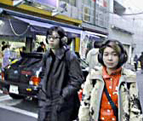
Past Remixed with Present
"Our experience of reality is strongly dependent on the synchronicity of our senses. We must, for instance, hear or touch what we see while we see it, in order to be able to determine reality and in order to decide what to do or how to react. The decoupling in time of sight and sound - like when we first see the lightning and then hear the thunder - can create a disturbing irritation when it affects our immediate surroundings: imagine that you would only hear the cars passing you on the street after they have already past, or that you hear conversations which were held minutes ago in a different location from where you are.
Sonic Interface experiments with human perception by amplifying and manipulating the synchronicity of auditory environment. Equipped with a portable hearing device made of a computer and headphones, the user is invited to walk around the city's public spaces such as squares, shopping malls, and underground stations. The random urban sounds that he hears are first transmitted to the headphones without modification, but then the computer programme begins to create an artificial sonic environment from the sounds that it picks up.
Three different types of software feed the headphones with digitally manipulated sounds. In one instance, the ambient sounds are delayed to different degrees, decoupling the visual and the auditory perception of the surrounding space. Then the sounds are cut up and recomposed into a mosaic with a new chronological order. Finally, the sounds are made to repeat themselves and overlap with each other. In each case, the sonic ambience and the space in which the sounds were formed in the past are being remixed in the present." From Machine Times
Akitsugu Maebayashi (1965) is a Japanese born artist who locates a new sense of reality and consciousness in the act of communication by expanding ones perceptions. His works constantly trigger the communication between the user and the other. His interest in music and musical instruments also provided him with a method for representing time and space. Maebayashi’s work has been exhibited and performed worldwide off-line (Tokyo Design Center, ICC) as well as on-line (Live on-line concert series with Chino Shuichi and others). [via WMMNA]
Posted by jo at 06:39 PM | Comments (0)
June 14, 2006
Landlines Workshop
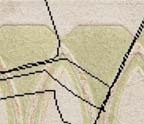
Urban Digital Peel
Artist/Researchers at the University of Huddersfield Centre for Excellence in Digital Design Jen Hamilton and Jen Southern are offering a series of workshops at the Media Centre in Huddersfield next week (June 19 – 23, 2006). The workshop introduces a new technology they call "Landlines".
Landlines uses GPS-enabled mobile phones to notate urban environments. The programmed phone sends images and spatial co-ordinates live to a website. Personal memories of a place, controversial regeneration, and historical are uploaded, and archived as line maps and 'tracked' photographs on a website.
For Hamilton and Southern, these maps can be used to discover what specific places mean to people, and how these places are used. The workshop investigates the correspondence between planning, urban regeneration and design, with the Landlines technology. Workshop is open to all.
Workshop Agenda:
- Introduce the Landlines application;
- Have participants use Landlines to make a map of the area, according to their own specifications and ideas;
- Return to the Media Centre and discuss the maps made by participants, and see individual map notation on-line
- Discuss Landlines potentials; outline and ‘brainstorm’ modifications
‘Landlines’ technology was developed in an artist/industry partnership between Hamilton and Southern and Onteca Ltd, Liverpool, and funded thru a NESTA ‘ITEM’ grant in 2004.
Sign-up Details: There are half-day workshops:
Monday 19 10 am – 1 pm 2 pm – 5 pm
Tuesday 20 10 am – 1 pm 2pm – 5 pm
Wednesday 21 10 am – 1 pm 2pm – 5 pm
Friday 23 10 am – 1 pm 2pm – 5 pm
and ONE full day workshop:
Thursday June 22 10 am – 12 pm 1 pm- 5 pm
All participants please REGISTER!
To do that send an email to: jen[at]24elements.net Include your name, contact phone number, chosen date, and whether you are attending a morning or afternoon session. Minimum group size is 5 people; contact phone number: Jen @ 01484 424862;
All participants will be contacted via email regarding their sign-up. There is no cost to participate in this workshop. For all day workshop (Thursday only) lunch will be provided. Workshop location: The Media Lounge, main floor (enquire at front desk to be directed to room) @The Media Centre 7 Northumberland Street Huddersfield, HD1 1RL Media Centre tel: 0870 990 5000
Posted by jo at 12:49 PM | Comments (0)
Matthew Slaats
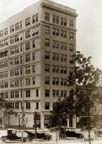
My Name is Madison
Taking Madison, WI as its subject, My Name is Madison is an Augmented Reality Game that allows users to explore and interact with the urban landscape from a multitude of perspectives. This project approachs the city as a layered environment. Players understand the development of place through the eyes of history, culture and fantasy.
Using GPS enabled hand held computers, participants take on the roles of both recipient and creator, performance in context. While walking about the streets, they are provided with information that enhances their understanding of the environment and then gives them the tools to create their own interpretations of place. Documentation of these events will be posted to mynameismadison.
The project opens as a part of the Games, Learning and Society Conference taking place in Madison, WI, June 15-16.
Posted by jo at 12:28 PM | Comments (0)
Christina Kubisch
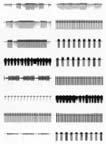
Electrical Walks: Samples of Raw Sounds
In 2003, Berlin-based sound artist Christina Kubisch began an ongoing project called Electrical Walks. This project employs specially built headphones that receive electromagnetic signals from the environment and convert them into sound. Kubisch maps a given territory, noting “hot spots” (ATM machines, security systems, electronic cash registers, subway systems, etc.) where the signals are particularly strong or interesting. She then loans the headphones to the public, allowing participants to undertake an auditory dérive through the invisible network of electromagnetic information.
To date, Kubisch has undertaken her own personal walks in Germany, England, France, Ireland, Japan, Latvia, Sweden, Switzerland, Slovakia, Spain, Taiwan, and the United States, and has held public walks in Berlin, Cologne, Karlsruhe, Bremen, Oxford, and London. To accompany the interview with Kubisch in Cabinet no. 21, she has provided us with thirty sound samples gathered by her while walking through various cities. Go to Cabinet Magazine to listen. [via BLDGBLOG]
Posted by jo at 09:38 AM | Comments (0)
June 12, 2006
Neighbourhood Satellites
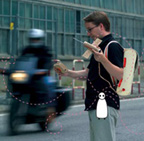
Environment-Sensing Adventures in the City
As we move through the city, mobile devices allow us to enjoy remote networking and immersion in personal entertainment. These preoccupations, however, lessen our sensitivity to what is happening directly around us, and often we learn about our own environmental conditions through mediated sources. What if mobile technology could reconnect us to our surroundings by observing environmental data directly, data that had been obscured from us before?
Neighbourhood Satellites--by Myriel Milicevic--consists of handheld sensing devices, powered by light, which enable people to monitor their local environment in a playful way, combining physical exploration and real-world data with digital gameplay. Each satellite monitors air quality, cellular signals, and light levels. The data it collects is presented in three different modes. ‘Status’ mode simply displays the current conditions. In ‘game’ mode the satellite leads a parallel existence inside a small video screen, navigating amongst the offending pollutants to be analysed. Its orientation mirrors the position of the satellite in your hand as you capture specimens and avoid self-contamination.
Greater pollution produces more challenging gameplay. You may have to go elsewhere to find cleaner air, less radiation, or more light to recharge. In ‘map’ mode the system receives data from all the other ‘satellites’ being carried by people in the area, and displays on a map their location and contamination level. Carriers might choose the cleanest path to walk or, in a spirit of risky play, purposely seek the most contamination; either way, the city’s pollution topography is dramatically plotted.
Through this playful grass-roots monitoring, the presence of contaminants in a community can be known and charted by anyone. This awareness encourages a more conscious individual behaviour, which spreads cumulatively to neighbouring communities. QuickTime Movie (by Andrea Pierri)
Posted by jo at 04:30 PM | Comments (0)
June 09, 2006
Playmobiel
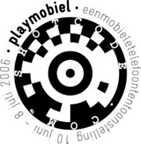
Txt PLAYMOB ON to 3553 for Daily Art
The PLAYMOBIEL exhibition showcases artists whose work explores mobile phone technology in playful way. The casting is pretty impressive.
Scanner composed music using tapped phone conversations; Blast Theory is famous for their mixed reality games; Arno Coenen designed a floor mosaic based on the interface of a Nokia telephone; Gerald Van Der Kaap handed out a mobile phone plus free minutes to a girl from Amsterdam to film and photograph herself; Leonard van Munster made a few hardware projects using the cell phone as a remote control device (image on the right); Esther Polak uses GPS to visualise the tracks of people resulting in a drawing; together with twodotone, PIPS:lab developed a software for mobile phones that can scan drawings and transform them into beats; Aryn Kaganof shot a feature film on mobile phone cameras; Kate Pemberton designs logo's and designs as wallpapers for the cell phone as well as cross stitching patterns; etc.
Apart from the show at the Arti space, a parallel exhibition will be accessible all over the world by mobile phone. By sending a text message PLAYMOB ON to 3553, you will be sent a short audiovisual work of art to your mobile phone every day of the exhibition. You can also use the ShotCode of PLAYMOBIEL: this 2D barcode contains an encoded link to a website. By taking a picture using your camera phone, you get direct access to the website (see instructions).
Playmobiel, at Arti, in Amsterdam, from June 10 till July 8. [blogged by Régine on we-make-money-not-art]
Posted by jo at 08:20 AM | Comments (0)
June 08, 2006
Aula 2006
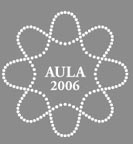
Movement / Mobility 2.0
Aula 2006 is an event (Wednesday, June 14) about the direction society, culture and technology are heading in. The theme Movement points to mobile 2.0 (mobility meets web 2.0), the overlapping of the physical and the virtual, and the social movement-like nature of new technologies. On a personal level, movement is about not staying still but taking action to shape the big global issues we face in the future.
We'll hear about movement from Clay Shirky the New York University professor who coined the term social software, Alastair Curtis the new Head of Design at Nokia, Martin Varsavsky founder of the global Wi-Fi network FON, and venture capitalist Joichi Ito who has invested in several successful second-generation Web companies including, SixApart and Technorati.
Movement also means a section of a piece of music, and the gathering will include interventions in music and dance. This event will be less of a conference, more an intimate gathering of people to discuss, detail and experience critical topics.
The event will take place at Bio Rex theatre in Helsinki. Attendance is free and open to the public - no advance registration is required. It is also possible to attend the dinner following the event at restaurant Via. Table reservations must be made in advance. After dinner, the event will continue with movement on the dance floor at Ahjo club in Hotel Klaus K to beats by Jukka Perko and Samuli Kosminen.
For enquiries, please contact Andreea Chelaru at andreea[at]fjord.fi.
Posted by jo at 09:48 AM | Comments (0)
June 07, 2006
The Museum of Television & Radio
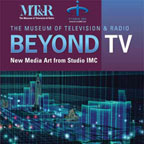
Beyond TV: New Media Art from Studio IMC
The Museum of Television & Radio Presents Beyond TV: New Media Art from Studio IMC An Interactive Gallery Exhibit in the Spielberg Gallery, 6/2 - 8/31, 2006. Visitors are offered the opportunity to experience technologies used in video games, the Internet, social software, and cell phones.
Comprised of five separate pieces--CINE 2.0, Swarm, freeSTYLE, Zig Zag Muzig Block, and LifeForce--this exhibit of interactive art offers visitors the opportunity to experience technologies used in video games, the Internet, social software, and cell phones—all of which will ultimately have an impact on television as we know it today.
CINE 2.0 (Collaborative Immersive Networked Environment, pronounced "sign") by Artists: James Tunick, Miro Kirov, and Houston Riley with Tony Rizzaro and Braden Weeks Earp: CINE 2.0 is a mixed-media environment inspired by Star Trek: The Next Generation’s Holodeck. Multiple users fly through an urban datascape in an immersive environment by using body gestures. Participants in the environment can also collaborate to compose music and, in addition, people out in the city itself can send photographs from their cell phones to be incorporated into the datascape environment.
CINE takes the computer screen out of the box and reconfigures it as a life-size environment. Control of visuals and sound takes place through full-body gestures rather than just mouse-clicks. As the traditional computer screen and mouse-keyboard interface transforms to fill the room, future entertainment platforms like CINE will enhance collaboration among multiple users, opening up whole new worlds of learning, art, creativity, and play. CINE is powered by a network of servers and computers that includes Studio IMC's BlackBox and IMCvote mobile technology.
Swarm by Daniel Shiffman: Swarm paints a digital portrait of the viewer. Stationary viewers will see their portrait, while moving ones will produce an image more like an abstract painting.
Swarm is an interactive video installation that implements the pattern of flocking birds (using Craig Reynold’s “Boids” model) as a constantly moving brush stroke. Taking inspiration from Jackson Pollack’s “drip and splash” technique of pouring a continuous stream of paint onto a canvas, Swarm smears colors captured from a live video input of the person looking at the screen, producing an organic painterly effect in real time. The person viewing the screen becomes part of the art.
freeSTYLE by Dana Karwas: freeSTYLE is a music video created entirely from cell phones. Video clips and text messages are sent in by cell phone, which are then sequenced at random and mixed with music to create a living, abstract music video. Participants can send a video or text message to 1[at]dk22.com.
Cell phones offer an extension of one's identity. Users can send messages to freeSTYLE and, in return, they will hear and see their messages free-styled back to them with an added beat. Guided by a hip-hop beat of choice, the user can hear and see their mobile presence in the form of a living music video.
Zig Zag Muzig Block (ZZMB) by Inhye Lee : Going beyond the tradition of the children's mix-and-match toy, ZZMB allows the viewer to create new characters from four existing singing characters by rotating or sliding each block. Playing with ZZMB's blocks also creates new musical compositions.
Each top, middle, and bottom block plays a different character's voice, harmony (chord), and rhythm (beat) of music, which are written as parts of complete scores. Users can make variations of the sound by applying different voices, chords, or rhythms from other blocks. When blocks are matched to compose one of the original, matching characters, users can hear the full original score. Slide the blocks to the side to make more musical variations.
LifeForce by James Tunick: LifeForce transforms the cell phone into a digital paint brush and musical instrument. The work comes alive only when the viewer participates, waving a cell phone to "paint" with light and sound. Multiple users can control the pulsing visuals as well as push sounds across the space.
Powered by Studio IMC's BlackBox media player and custom software, the installation invites viewers to collaborate utilizing a flatscreen, stereo sound, and cell phones. The work is a commentary on the need for more participatory art forms in contemporary museums, and strives to validate the mobile device as a tool for creative expression. LifeForce envisions a future in which such artistic tools are common to public spaces like city sidewalks and sides of buildings.
Studio IMC (Interactive Multimedia Culture)—a New York City-based new media agency comprised of an international team of artists and software engineers—envisions the future of group entertainment and collaboration and imagines what's waiting for us beyond the relatively passive, "hands-off" experience of watching TV. Studio IMC fuses old and new media concepts and technologies to create a brave new world of participatory—at times even immersive—media consumption. There are no "Do Not Touch" signs here—instead, you're encouraged to touch everything and actually become part of the artwork yourselves.
Posted by jo at 08:38 AM | Comments (0)
June 05, 2006
OneSmallStep: a MySpace LuvStory
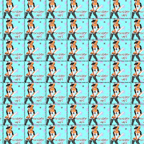
Cut/Paste Identities
We are not ourselves. We cut and paste as we are cut and pasted. We are the remix of images and sounds that never existed outside of this mediated dream. And we are happy to exist this way.
OneSmallStep: a MySpace LuvStory is an unfolding automated jam - a conscious sampling and randomized regurgitation of MySpace.com media archeology wherein desire, fantasy and fetish form a composted feast for the withered and lonely senses in an eternally habitual loop of voyeuristic consumption, spectacular regurgitation, virtual intimacy and identity production/consumption.
With each launch, OneSmallStep runs continuously while randomly remixing content form a database that is periodically updated. OneSmallStep is a conceptually interactive work, and also, a non-clickable work.
OneSmallStep: a Myspace LuvStory is a project developed for Concept Trucking, an exhibiton venue maintained by LeisureArts that uses MySpace as its platform. It hosts work that critiques, mimics, or otherwise utilizes the structural logic of social networking sites and other Web 2.0 phenomena.
Posted by jo at 09:26 AM | Comments (0)
June 01, 2006
Turbulence Commission:

"mobotag" by Marta Lwin
mobotag reveals the hidden layers of a city through an active exchange of location based media and text messages via the cellphone. It's collaborative phone tagging of the city. Part virtual graffiti, part walking tour, "mobotag" creates a spontaneous and easy way for tagging a neighborhood via the cellphone. Send and view messages, images, videos and sounds. See art, read stories, and watch a hidden layer of the city reveal itself. Respond with your media and participate in the creative expression and mapping of your neighborhood. By sending a text message to "mobotag", with your city location, you begin an interactive tour of a neighborhood. Using a unique geocoding feature, "mobotag" tells you what other messages exist in your local area. In the near future "mobotag" will also feature art projects including "flyHere," a mobile phone audio installation featuring native bird calls; "bugBytes," collectible graphical bugs originating at major telecoms around NYC; and "lookHere," a written work in short form by a native NY writer.
"mobotag" is a 2006 commission of New Radio and Performing Arts, Inc. (aka Ether-Ore) for its Turbulence web site. It was made possible with funding from the Jerome Foundation.
BIOGRAPHY
Marta Lwin is an artist, technologist, and researcher who recently completed her masters at the Interactive Telecommunications Program at NYU. Her background is both in art and activism. In the early to late 90's she worked with Greenpeace, UNEP, and Women's Environmental Network and Reclaim the Streets (UK). After joining a loose network of artists at Backspace in London, Lwin became interested in the creative use of technology as it relates to biology. Currently, her work focuses on the intersection of art and technology and includes projects that critically challenge and subvert accepted perceptions of the relationship between nature and technology. Her work has been shown at galleries in Europe and New York. Publications covering her work including networked_performance, Engadget, Core77, Treehugger, Cool Hunting, MocoLoco, WorldChanging, Rhizome and We Make Money Not Art.
Posted by jo at 11:38 AM | Comments (0)
May 30, 2006
Virtueel Platform
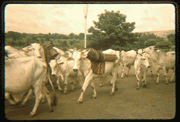
MOBILE HABITS
MOBILE HABITS: How do you trace a cow in West-Africa? Antropologists and media artists take up the challenge--Date: 29 june 2006; Time: 9.30 - 17.30; Fee: 100 Euro, student discount fee 25 Euro; How to apply: send an email with your CV and short bio to: info[at]virtueelplatform.nl
Both the arts and sciences have carried out extensive research into the issues of mobility and space. Both fields use new media such as GPS and GIS to back up their research. As a result the more recent research into mobility and space has been given a big boost. Both art and science now need each other as never before. The ‘Mobile Habits’ workshop brings artists, designers and scientists together and challenges them to exchange concepts and new working methods in relation to space, place and mobility.
Locative media artists and designers are opening themselves up to theories about mobility and space from the worlds of anthropology and social and at the same time social scientists are discovering the different cartographic and visualisation techniques found in the world of art and media design.
Mobile Lifestyles: Esther Polak is an artist working in the field of ‘locative media’. She is currently researching the possibili! ties of setting up a project in Nigeria with the Fulani, West African nomadic cattle farmers. Her initial research came up with a variety of people and researchers, including vets, anthropologists and social geographers, with a shared interest in mobile lifestyles. These various fields have come up with a number of innovative practical and theoretical tools that could be used to set up a project proposal with a well thought out, interdisciplinary basis.
Talkshop: The setting will be a ‘talk-shop’ – a cross between a workshop and a talk show. The morning session will focus on concepts and methods using a series of project presentations/case studies. The afternoon will be more interactive, with participants critically analysing the case studies in terms of what kind of insight they aim to generate – artistic, historic or practical.
Participants: Taking part in the workshop will be an interdisciplinary mix of media artists, designers and social scientists (anthropologists, social geographers) working in the field of place, mobility, storytelling and visualisation. In order to get a balanced interdisciplinary mix we ask to send a CV and short bio when applying to participate. Deadline june 8th 2006.
Speakers/support team:
Esther Polak
Esther Polak is a visual artist working in the field of new media. She is best known for two ‘locative media’ projects, AmsterdamREALTIME and the MILKproject. Both projects use GPS to &lsq! uo;imagine’ the contemporary landscape. In both projects the par ticipants were given a GPS tool to carry as they went about their daily lives. Their movements were mapped and the participants were asked to reflect upon the routes they had made. The projects resulted in large public installations. Esther Polak in constantly in search of new ways of researching space and can as such be seen as part of a long European tradition of ‘imagining the landscape’.
www.milkproject.net
www.waag.org/realtime
Christian Nold
Christian Nold is an artist and cultural activist who has spent ! the past few years mapping human emotions in the urban landscape. His research project is called Biomapping. It looks at the various ways that we as individuals can obtain information about our own body. Security technology has brought about a situation in which we are losing ownership over our own body and health. This project aims to give people access to their own biodata, to interpret and share it.
www.softhook.com
http://biomapping.net
Hanne Kirstine Adriansen
Hanne Kirstine Adriansen is a senior research fellow at the Danis h Institute for International Studies. Her training is in human geography and she has fieldwork experience from West Africa and the Middle East. Her research interests include pastoralists and their use of mobility, dryland management, and community development. She takes special interest in understanding different people\'s perception of concepts such as space and place.
Ab Drent
Ab Drent is a Master of Science in Rural Development and Management of Natural Resources in the tropics. His disciplinary specialisation is anthropology and ecology. He has followed afoot over more than 500 km nomadic Fulani herders in the Extreme North of Cameroon during ten months. Drent has written an extensive case study about the transhumance cycle of a nomadic group and tested the suitability of traditional social theories to describe the relation between man and nature. He proposes two Actor Oriented approaches and Actor Network Theory as better suited to describe the complexity and unpredictability of nomadic mobility. In a related quantitative study Drent used GPS data to build a Correlated Random Walk model to investigate the relation between mobility and environmental factors. Currently he is preparing a project with Esther Polak to visualize nomadic mobility in alternative ways combining science and art.
www.virtueelplatform.nl/mobilehabits
Virtueel Platform
Keizersgracht 264
1016 EV
Amsterdam
Nederland
Email: info[at]virtueelplatform.nl
Posted by jo at 09:19 AM | Comments (0)
SonarMatica presents Always On
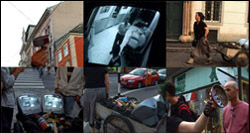
Into the Streets
ALWAYS ON--curated by Drew Hemment, José Luis de Vicente, Óscar Abril Ascaso and Advanced Music--is a display dedicated to mobile culture and location projects. It is an initiative based on exhibition and participation, taking SonarMática out onto the streets for the first time. Advance tickets for Sónar by Night as well as general passes for the three days and two nights of Sónar 2006 are already on sale.
This year, Sonarmatica presents itself more participative than ever: a game involving relationships using mobile telephones for nine hundred players at the same time organised by Blast Theory; a walk through Barcelona's electromagnetic old quarter of Ciutat Vella with Michelle Teran; and a geocaching session are some of the ideas at the exhibition.
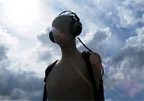
:: Participation Projects :: Those wishing to register to take part in the participation projects should go to the information stand in the exhibition: Blast Theory (UK), Day of the Figurines; Michelle Teran (CA), Life: A User's Manual; Akitsugu Maebayashi (JP), Sonic Interface; Counts Media (US), Yellow Arrow; Geocaching
:: Exhibition Projects :: Antoni Abad (ES), Taxistas, gitanos y prostitutas transmiten desde móviles en www.zexe.net; Alejandro Duque (CO), TTSM, http://soup.znerol.ch, http://co.lab.cohete.net, www1.autistici.org/communa/platanal;
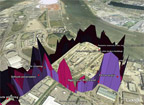
Jeremy Wood (UK), Meridians; Jens Brand (DE), gPod / G-Player; Preemptive Media (UK), Zapped!; Proboscis (UK), Urban Tapestries / Social Tapestries; Christian Nold (UK), Bio Mapping; Mark Shepard (US), Tactical Sound Garden Toolkit; Socialfiction (NL), .walk; Jeff Knowlton / Naomi Spellman (US), The Interpretive Engine for Various Places on Earth; ExtraMàtica, raster-noton, Essential Room.
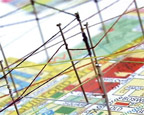
Advance tickets for Sónar by Night as well as general passes for the three days and two nights of Sónar 2006 are already on sale. Advance Tickets On-line: www.ticktackticket.com. By phone: +34 93 445 06 60: from abroad, opening hours Mon-Fri from 10.00am to 10.00pm; 902 150 025: from Spain, opening hours Mon-Sun from 10.00am until 10.00pm, from abroad, opening hours Sat-Sun from 10.00am until 10.00pm.
At any www.ticktackticket.com Sales Centre in Spain. At FNAC in France, Switzerland and Belgium: (www.fnac.com). Distribution cost not included.
Note: Neither general passes nor accreditations give admission to the Thursday the 15th concert at the L'Auditori de Barcelona
All the information at:
www.sonar.es/sonarmatica
Posted by jo at 08:55 AM | Comments (0)
May 26, 2006
HTTP Gallery
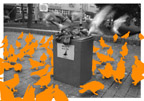
Urban Eyes
HTTP Gallery is pleased to present Urban Eyes, an intermedia project by Marcus Kirsch and Jussi Angesleva. Private View: 1st June 2006 7-9pm; Exhibition: 1st June - 9th July 2006, Friday- Sunday: 12 noon-5 pm; Unit A2, Arena Business Centre, 71 Ashfield Rd, London N4 1NY; tel: + 44 (0)20 8802 2827; info[at]http.uk.net
Urban Eyes uses wireless technology, birdseeds and city pigeons to reconnect urban dwellers with their surroundings. The Urban Eyes feeding-platform stands in one of London's public spaces. By landing on the platform, pigeons tagged with RFID chips send aerial photographs of their locality to surrounding Bluetooth-enabled devices. In this work pigeons become maverick messengers in the information super-highway, fusing feral and digital networks. HTTP Gallery provides an interface to the project, mixing live and documentary footage and offering visitors an opportunity to experiment with Bluetooth.
Being one of the last remaining signs of nature in a metropolis such as London, the urban pigeon population represents a network of ever-changing patterns more complex than anything ever produced by a machine. However pigeons' movements are based on a one-mile radius around their nest. Any pigeon you see everyday shares the same turf as you. Urban Eyes crosses and expands human mobility patterns offering to reconnect you with your neighbourhood.
In the 1960s, situationists Debord and Jorn composed psycho-geographic diagrams of Paris, which described navigational systems based on their drift through the city. For this, they used Blondel la Rougery's Plan de Paris a vol d'oiseau, a bird-eyes map of Paris. Inspired by this methodology, Urban Eyes enlists our feathered neighbours to establish a connection between the bird-eyes view of the city as now distributed by Google Earth and our terrestrial experience. [Related]
About Marcus Kirsch and Jussi Angesleva
Marcus Kirsch holds an MA in Interaction Design from Royal College of Art. He was invited to the 2004 Seoul Biennale and as exhibiting artist and to last year's Rotterdam International Film Festival and DEAF Festival. He was awarded a silver Art Directors Club NY and a fusedspace.com award in collaboration with Jussi for 'Urban Eyes'.
Jussi Angesleva holds MA in Audio Visual Media Culture from the University of Lapland in Finland, and MA in Interaction Design from the Royal College of Art and has shown at the Tokyo Metropolitan Museum of Photography, Siggraph, ZKM and Science Museum London. He has received awards from Royal Society of Arts, NESTA, from D&AD (together with Ross Cooper), Prix Ars Electronica and the Art Directors Club of Europe. He is currently working at ART+COM in Berlin, Germany and is a co-founder of new media agency Prosopon.
For more information and images, please contact Stephanie Delcroix
This project is supported by Arts Council England (London), V2 lab (Rotterdam, Netherlands) and Furtherfield.org.
Posted by jo at 05:36 PM | Comments (0)
Poker Club, Scotland
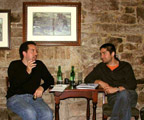
Haque + Bleecker
The Poker Club at the Beehive Inn in Edinburgh featured Usman Haque (artist / architect) and Julian Bleecker (technologist / artist / think tank leader) to discuss the "internet of things" and "open source architecture". Hosted by New Media Scotland.
Both presenters took us through a short run down of their work and then there was a lively exchange between everyone present. Hopefully there will be a podcast from New Media Scotland in the near future.
Haque's presentation was broken into three categories: Invisible Stuff, Collaborative Stuff (produced by non experts - or vernacular creativity) and Social Space. He talked about Architecture as an operating system for the collaborative production of space. He stressed the importance of the necessity of the system (whether an augmented object or space) to have the capacity to build 'its' own perceptual categories. Several examples of previous and current work were shown.
Bleecker started with the question 'Is life hackable?' He characterised the upsurge of activity as a renewed or second order humanism. The term 'change agents' was used and it was pointed out that these are no longer well positioned parties such as New York Times reporters. Several projects were shown which showed how digital networks can shape physical activities in a sort of network practice - social practice continuum. It was stressed that we're not just talking about data transactions.
Some interesting points that came up in the discussion:
:: We are surrounded by invisible information, how do we make this visible or legible?
:: Technology extends the zone of our perception/agency.
::Is the web of objects the end of subjectivity or a new beginning for subjectivity?
:: The role of human beings as filters.
The issues emerging for me are what do we mean by 'understanding' in relation to all the information we have access to and how do we have agency within it? One thing that came up over and over was the spatial or prepositional nature of our relationship to the digital networked public. As Bleeker points out in Why Things Matter are we 'on' or 'in' the network?
[posted by John Marshall on Designed Objects]
Posted by jo at 12:22 PM | Comments (0)
May 24, 2006
DIGITAL TERRITORY: BUBBLES
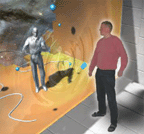
The Domestication of the Ambient Intelligence Space
"[...] By defining digital borders, the vision of digital territory creates a continuum between the physical world and its digitised counterpart. The construction of digital boundaries consolidates the gateways already established between these two worlds. This paradox will be catalysed by the implementation of a growing number of bridges between the two environments. Location-based services, radio frequency identification tags, body implants, ambient intelligence sensors, etc. will permit the implementation of a trustworthy environment and therefore the domestication of the ambient intelligence space by the individual. The vision will facilitate the transition through a traditional society that coexists with an information society, to a single society whose citizens have accepted and adopted the fusion of physical and digital realities. In this future society, people will still be able to control and manage distance from others with new tools provided by ambient intelligence space technologies." From DIGITAL TERRITORY: BUBBLES by Laurent Beslay and Hannu Hakala.
Posted by jo at 11:03 AM | Comments (0)
May 23, 2006
Golden Nica in Net Vision
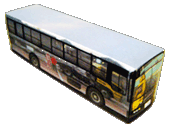
The Road Movie
And the Golden Nica in Net Vision, awarded by Prix Ars Electronica 2006, goes to...The Road Movie, by exonemo (JP), what might be called a mobile installation that originated in conjunction with a live project entitled MobLab in which young Japanese and German artists undertook encounters with art and communication during a journey by bus through Japan. While the group was traveling through a wide variety of landscapes, the webcam mounted on the bus produced five images of the surroundings every five minutes. The image files were uploaded to the Internet in the form of a piece of origami art. Anyone who wants to can print out this origami and create his own road movie with folded busses. Far-off locations are suddenly to be found right in ones own living room.
Posted by jo at 01:47 PM | Comments (0)
May 13, 2006
TXTual healing
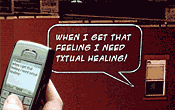
Interactive Text Messaging Enabled Public Performance
Using public space to engage a performative, open dialogue. In Paul Notzold's current work "TXTual Healing uses a cell phone a computer and a projector to create a mobile public performance by posting a person's text messages into speech bubbles that are strategically placed on the facades of buildings."
more from the project site:
"Using 'always on' technology, cell phones with SMS messaging allow an audience to interact with large speech bubbles projected onto a flat surface, like the facade of a building. The bubbles are positioned near windows and doors to encourage an audience to create the conversations happening inside. The audience receives a flyer with the number and simple instructions. A participant sends a text message to the provided phone number and it is then displayed inside the speech bubble. Multiple bubbles may be used and the audience can direct their input to a specific bubble.
The piece explores the use of mobile technology to trigger dialogue, action and create content in a staged public performance. By using the facade of a building the intention is to engage an audience to think about the spaces we move through, live in and share. I'm trying to address public vs. private space and what kind of dialogue might transpire if we publicised our private thoughts. The piece was designed to encourage play, idea sharing, thought, discourse, and entertainment."
Paul mentions he is exploring the use of silhouettes in his performance dialogues as the project evolves.
Posted by michelle at 03:43 PM | Comments (0)
May 12, 2006
MoBeeline + The Compass Coat
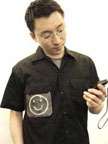
Wearables
MoBeeline allows people to send data about a user’s emotions to another’s clothes via SMS. The MoBeeline wearable Bluetooth accessory can receive data from a mobile phone. For example, one mobile phone user can send operative directions to the other's clothes and share his/her feelings and emotions by sending signals to the other person's clothes. According to the emotion the user wants to communicate, He or she will be able to modify the colors or patterns of the garment, or send emoticons to LEDs on the garment.
Video. Developed by Chang Soo LEE and HyeJoo Lee at the ITP. [blogged by Regine on we-make-money-not-art]
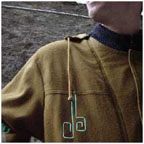
The Compass Coat, by Stijn Ossevoort, uses compass technology to read direction. The display of the information is integrated into the design of the coat offering information for both the wearer and the people around him. North is indicated through glowing plant-like shapes like a tree which is covered with moss in the main wind direction.
The coat contains magnetic sensors and 24 sections that can light up individually, using Electro Luminescent wires. The section that points north lights up while its surrounding sections glow dimly. As soon as the wearer turns, the light gradually moves onto the new section that points north.
Related: CabBoots, the navigation shoes, A belt with with tactile sense to show you the way, Melodious Walkabout. [blogged by Regine on we-make-money-not-art]
Posted by jo at 11:22 AM | Comments (0)
May 10, 2006
Mobicapping: Mobile Image Capture in the New Century
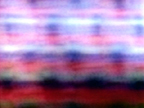
Call for Work
The curators Scott F. Hall and E. Brady Robinson of Mobicapping invite submissions for possible inclusion in their upcoming international juried online art exhibition,"Mobicapping: Mobile Image Capture in the New Century."
Definition: mobicapping is the new creative and technological practice borne of the instant capture and immediate international distribution potential of images, movies, and sounds via cell phones and other portable electronic devices.
Mobicappers may submit their mobicapps by May 15, 2006 to contact at mobicapping.com as email attachments. Submit either A) five still images (600 pixels longest side, max 250 kb per image) or B) two .MOV silent or sound movies (320 pixels longest side, max 500 kb per movie) or C) two MP3 sound files (max size 500 kb per file). Include artist name, email, location, and an artist statement / bio (max 150 words). No fees. Submission deadline: 05-15-2006. Exhibition opens: 08-15-2006.
MOBICAPPING: A PREMISE
Today, we record temporal moments with our cell phones and other small mobile devices which exist now and which are incessantly soon to be invented. The cell phone and its like, however do not elicit familial bonding as it has been in the past with the snapshot. There has been a marked cultural shift; our moments are more empty, more banal. Yet, paradoxically, we find ourselves and our experiences so much more interwoven--so much more widely shared--today than in any age prior. Such moments can now be found throughout the Internet. Instead of having a shell life in a shoebox stowed away in the family closet, our images and moments quickly move between emails, websites and even podcasts. But, where is all the art in this instantly local, regional, national, and international sharing? And, what do we call it?
We feel that this new form of image sharing in the 21st century is best described with a new term: mobicapping. Mobicapping means: mobile image capture (still, moving, and/or with sound). Those who participate in mobicapping--virtually all of us--are no longer photographers but are more accurately to be called mobicappers. Together, we are sending out a call for experimentation and exploration of the potential of the art of the mobicapper. The exhibition that we propose here will feature artists who are investigating this completely new creative and technological practice. "Mobicapping: Mobile Image Capture in the New Century" will open in August, 2006.
--E. Brady Robinson & Scott F. Hall
Posted by jo at 11:42 AM | Comments (0)
April 27, 2006
Eyebeam Exhibition and Event
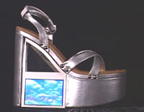
The Aphrodite Project: Platforms
The Aphrodite Project: Platforms is an integrated system of shoes and online services that combines the rich mythology of Aphrodite with the safety and advertising concerns of contemporary sex workers on the street. On view in Eyebeam's gallery May 2-13 will be a prototype of a silver-leather platform sandal with integrated LCD screen, speakers, internet connection and GPS tracking system. On May 13 visitors to the gallery will be able to track a model in real-time as she traverses the city wearing the platform prototype and join in a panel discussion between artists, technologists and sex work advocates. This event will conclude with a reading by Tracy Quan, performance by Ana Voog, Echo Transgression, and Melissa Gira, and live music by Natural Sphere. This event is open to the public free of charge with a suggested donation and will take place at Eyebeam, 540 W. 21st Street between 10th & 11th Aves.
Platforms--byNorene Leddy with Andrew Milmoe--is designed to question moral attitudes and value judgments, especially with this marginalized section of the population: Who gets new technology and when? What is the true value of sexual services? Using an archetypal model, is it possible to reclaim the profession for modern women? What are the ethics of surveillance and tracking? Is it possible to ensure that this information will empower and not endanger sex workers? Is it ever possible to guarantee that knowledge will stay within the hands of those who it is intended for?
The shoes address creativity and art making as well as practical issues of design and marketability. It is my hope that in addition to creating beautifully crafted objects; the project will contribute to the current international debate over the regulation, decriminalization, and legalization of prostitution.
Posted by jo at 01:34 PM | Comments (0)
April 25, 2006
Blind Ditch
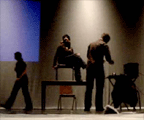
WHO WANTS TO BE A HERO NOW?
Blind Ditch invite you to state your opinions and ask some questions in our performance installation WHO WANTS TO BE A HERO NOW? showing as part of the Exeter Text Festival, UK, April 24th-14th May 2006.
Send us a mobile phone short or digital camera mpeg to +44 (0)7890 801203 or contact[at]blindditch.org and it will be downloaded onto our website. Your work will be continually screening online from April 24th and shown in the Exeter Phoenix Gallery as part of the tEXt Festival. Tell us what action should we make to change the world for the better. Please pass this on to anyone across the world you would like to participate, translate and disseminate. Respond in your mother tongue or English Please note that the word hero is being used to speak about both men and women.
Please be aware that by participating in this project you are agreeing for Blind Ditch to use your image and words in our work. Your statements will be curated with live performance work and available online and in the gallery throughout the duration of this project.
Posted by jo at 08:43 AM | Comments (0)
April 24, 2006
Receiver Magazine, #15
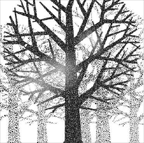
Wish You Were Here
Receiver Magazine, #15: We always take the mobile with us because we want to be reachable. But who do we want to be reachable for? Take a closer look: primarily for those we love. Apart from using them for work-related purposes, mobile phones are a great source of strength for our inner circle - they connect us to those stored in the handset's contact list whom we want to reassure that we are with in spirit, and who know when we might need the emotional support of a quick text. This receiver issue is all about that yearning factor that comes with using the mobile phone, about the meta-message which is always present: 'wish you were here'.
Vodafone's receiver magazine is a neutral space where pioneer thinkers challenge you to discuss exciting, future-oriented aspects of communications technologies. Started over five years ago as a platform for exchange about how innovations in this sector affect societies worldwide, receiver is now established as one of the industry's key idea generators.
Articles:
Jane Vincent: I just can't live without my mobile!
Could it be that we are not only emotional about the ones we keep in touch with, but that we have come to assign an emotional quality to the handset itself? Jane Vincent, whose paper is the opener for our 'Wish you were here' issue, thinks so! She has worked in the mobile communications industry since 1982. A Research Fellow with the Digital World Research Centre at the University of Surrey, Vincent's main interest is in user behaviours associated with mobile communications. She has long pondered over the one and crucial question: 'How come we feel emotionally attached to our mobiles?' and presents some of her findings here in receiver.
Rich Ling: Nomos and the flexible coordination of the family
Rich Ling is a Senior Research Scientist at the research and development division of Telenor, Norway's largest research establishment within information and communication technology. Ling, who investigates the social impact of mobile telephony, is a most influential writer on mobile matters, serving on the editorial boards of a number of academic journals. He authored The mobile connection - the cell phone's impact on society, a book published by Morgan Kaufman in 2004. Read Ling's article for receiver to learn how mobile communication contributes to the maintenance of the family as an institution.
Ruth Rettie: How text messages create connectedness
Ruth Rettie is an ex-Unilever Brand Manager who is currently a senior lecturer at Kingston University in London. At the University's Business School she lectures on internet marketing, E- and M-commerce and has a strong research interest in communication theory. She is currently completing her PhD in sociology at the University of Surrey, which focuses on mobile phone communication. In her receiver contribution, Rettie explains how connectedness is a premier driver of mobile communication.
Tim Kindberg: We are cameras - image acts in personal interaction
Tim Kindberg, a senior researcher at HP Labs Bristol, UK, with a strong interest in nomadic and urban computing, has recently focused on the usage of camera phones. He and colleagues at HP Labs Palo Alto (Mirjana Spasojevic) and Microsoft Research Cambridge, UK (Abigail Sellen and Rowanne Fleck) carried out an in-depth study into camera phone use in the UK and US. Findings: people often have strong social or sharing intentions when capturing a picture, but typically use 'capture and show' rather than 'capture and send'. Read Kindberg's receiver contribution to find out more about the social uses of camera phones.
Jeff Axup: Blog the World
Jeff Axup is a PhD candidate at the University of Queensland in Brisbane, Australia. His research in Mobile Community Design focuses on the development and design of mobile devices used by groups and how device design might change group behaviour. Axup has chosen to look at one highly mobile group in detail and examines what technologies could be used to support backpackers. Read his receiver contribution to find out about the usage patterns and demands he came across with a group of people who to a large extent depend on forming social networks while on the move.
Joachim R Höflich: The duality of effects - the mobile phone and relationships
Joachim Höflich is Professor of Communication Studies at the University of Erfurt, Germany. He has been looking at forms of media-driven interpersonal communication for many years. His particular focus is mobile communication, and he has written and edited a number of books including Mobile Kommunikation (2005) and Mobile Communication in Everyday Life, which will be published shortly. In his contribution to receiver, Höflich weighs up the positive and negative effects of mobile phones as a medium for relationships and takes a look at the particular way in which relationships are affected by them.
Pierre Proske: Bleating in the bank queue
Pierre Proske is a Melbourne-based programmer and digital artist with a background in music, engineering, literature and performing arts. Proske's artistic work focuses on people's relationships with technology, his most recent example being True Blue Love. This mobile phone based mating experiment was launched at last year's Mobile Journeys exhibition in Sydney, a venture that explores the creative potential of Australian mobile culture. In Bleating in the bank queue, Proske introduces us to his match-making project which plays with an inversion of the silent communications that mobile phones promote.
Mark Federman: Memories of now
Mark Federman is completing a PhD at the University of Toronto, researching the future form of corporations in a ubiquitously connected and pervasively proximate world. Over the last five years, Federman has been Chief Strategist at the McLuhan Program in Culture and Technology at the University of Toronto and is co-author, with Derrick de Kerckhove, of McLuhan for Managers. His receiver contribution tells us, in his own and in McLuhan's words, how we have focused on sharing the "here and now" since we learned to use tools that enable ubiquitous communication.
Nicola Döring: Just you and me - and your mobile
Nicola Döring is Professor of Media Design and Media Psychology at Ilmenau University of Technology, Germany, where she researches psychological and social dimensions of new communication technologies. She has published widely on online and mobile communication, focusing on communities, language, learning, identity, gender, sexuality, romance and interpersonal relationships. In her receiver contribution, Döring takes a closer look at mobile phone interruptions during romantic dates and meetings with friends based on an observational study.
Posted by jo at 01:23 PM | Comments (0)
April 23, 2006
PORTA2030
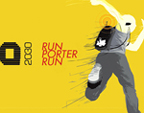
YOU ARE PORTA-PORTER!
April 24 - May 1, 2006 BROADWAY MARKET, London: PORTA2030 is a performative urgency-relay network exercises set within Broadway Market public wifi net-zone. Towards building a portable, sustainable and responsive social network by year 2030, PORTA2030 engages community members as porta-porters for an urgency scenario enactment.
PORTA2030 deploys porta-pack, a mobile network unit that builds on a wifi harddrive (WL-HDD2.5) for multi-faceted transmission. Installed with a 1GB flashcard and programmed in open source codes, the porta-pack functions as a portable data sensing-storage-tranmission unit. A webcam streams images live while an LCD mini-terminal with 4 click action push buttons serve as basic communicative device. The urgency signals triggered by the sensors set in public space further prompt porta-porters' collective action.
Broadway Market (E8, London), known as Market Porters' path for porting produce into the city, is currently under rapid development affected by Hackney Council's regeneration plan. For last two years, physical Porters' Path is implemented with wireless extension provided by the OFF Broadway gallery. PORTA2030 locates Broadway Market as its public performance site with setup of extra access nodes. PORTA2030 updates the porter's path with mobile network porting of communal audio/visual data.
Weeklong performance starts on April 24 with porta-pack dispatch workshop at SPACE media center. During the week, 10 porta-porters engage in networked ommunication. April 29, Broadway market, Porta2030 relay bingo play. May 1, May Day - public screening session with open-air projection: Porta-porters' week and Broadway market related documentaries. For further information please contact now[at]take2030.net
Posted by jo at 01:09 PM | Comments (0)
April 21, 2006
Away From the New
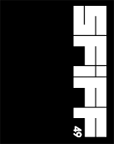
Blow at Phone to Guide Your Boat
Following their Organum Playtest game, Niemeyer, Perkel and Shaw are presenting their new game Away from the New at the San Francisco International Film Festival, on April 27, 6:30pm, Kabuki Theater. Away from the New takes its players back in time from 1922AD to 622AD. Blowing into their cell phones, players propel their faluka (a small Egyptian sailboat) along the Nile. Their mission is to steer the sailboat clear from the shore, and to rescue swimming babies throughout their journey.
Dodging faluka-eating crocodiles and loading rescued babies onto bigger rescue boats creates unique challenges. The object of the game is to return all babies to safety at the end of the last level. All level designs are based on ancient records of Nile river levels.
On April 27, 6:30pm at the Kabuki Theatre in San Francisco, you will have the opportunity to observe and play "Away from the New" as the game attempts to visualize and vocalize the timeless interaction between humans, nature, and their quest for balance.
Posted by jo at 10:43 AM | Comments (0)
April 20, 2006
Adam Greenfield

Everyware Discussion on Well
The Well's Inkwell Conference, which is open to the public, features a discussion with Adam Greenfield, author of Everyware, an excellent new book about the implications of ubicomp:
Computing devices shrink ever smaller and become invisible, while at the same time we interact with them and they communicate with one another. Rather than carrying phones and PDAs, our desks, rooms, and clothing, our food and our sex toys converge, interconnect, and interact. Their connectedness is hidden from us, we don't control the information they record, and there's no "Undo" key.
"Great, another loopy novelist in the Inkwell, extrapolating from a random headline in a trade journal," you say.
It's not loopy fiction, according to Adam Greenfield. Instead, it's the form computing will take in the next few years, and it behooves us to think it through in advance, in order both to understand it and humanize it. That's the subject of "Everyware: The dawning age of ubiquitous computing."
Join Adam Greenfield from the beginning of the conversation or catch up on the latest posts. [posted by Howard on Smart Mobs]
Posted by jo at 12:54 PM | Comments (0)
Petko Dourmana
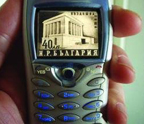
BT_GRAFFITI | Mausoleum_3
The interactive work--by Petko Dourmana--proposes to virtually rebuild the lost physical space of the Mausoleum of Georgi Dimitrov, that used to be the most remarkable public symbol during the Communistic period in Bulgaria, inside the visual and physical space of the entrance at 15 Nassau, New York.
Using Bluetooth technology, visitors are automatically invited to activate it and will receive a series of visual and audio fragments which recreate the space of the former Mausoleum. This newly common-used technology is highly open for communication and in this sense it can be likened to graffiti.
As graffiti in public space confronts passers-by with intentional messages, this work addresses notions of presentation space vs. private space and representations of time and space visually and virtually. [blogged by Emily on Textually]
BT_graffiti project is sponsored by CEC ArtsLink. Produced by InterSpace in association with the Harvestworks Benders and Coders concert series and the 2006 Bent Festival. Presented at 15 Nassau Street in New York City, a venue of the Lower Manhattan Cultural Council. Space donated by Silverstein properties.
Posted by jo at 08:00 AM | Comments (0)
Love City
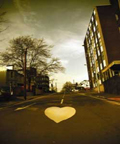
Locative Menage a Trois
Nottingham-based technology artists, Active Ingredient (authors of 'Ere Be Dragons), are to launch an interactive game that will link the people of Leicester, Nottingham and Derby. Love City will allow people to text each other in a game that awards points for making connections with people from the other cities.
The game uses mobile cell location to track users' positions in the three cities. When a player moves between mobile phone 'cells', s/he (Player 1) receives an SMS that includes an update about Love City and the status of other players in their area or in one of the cities. Players can then connect with each other by sending a text to another person in another place. If Player 2 accepts Player 1's message of love, a connection is made and these form a "bonded pair". If a second connection is made from this group to a third player, then a triplet or Ménage à trois is created.
When a triplet is formed, Player 1 is awarded an avatar known as the "offspring" which acts as an agent for them in this particular cell. Subsequent connections with this agent are relayed to the original player who may be far from the cell but can still connect and initiate a process which leads to the creation of more offspring and points for them. Thus their empire grows.
The first test of the game, commissioned by Three Cities, will take place on April 3 – 9 2006.
The full-scale public project is likely to take place at the end of the year when a big-screen projection of the game will be broadcast in the main public spaces of each city.
Via Media Arts Education. [blogged by Regine on Textually]
Posted by jo at 07:47 AM | Comments (0)
April 16, 2006
Sharer! The community object sharing service
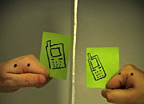
Design Project Promoting Shared Objects
Our project researches into interpersonal limitations and possibilities of sharing of objects. What types of objects people are willing to share. Which with social circles are people willing to share with. How peoples relationships change with objects when the history of the object changes, that is will people feel uncomfortable when they do not know how the object is used when they are not around it.
Read more about Sharer on Vinay Venkatraman's web site, or on we make money not art.
We started our investigation by studying existing recycling systems, The "Kabadiwalla" or junk man in India, the "Garage Sale" system in the U.S and the Storage space concept in some urban scenarios.
In the process we conducted user studies under simulated conditions, Ran a mockup service, resolved logistical issues, Prepared a business Plan and revenue model and worked on several touch points and the interactions involved in the same.
The systems seeks to develop an collaborative object sharing system, users can upload pictures, give description and browser other people object through a website. The system works in collaboration with the postal system and the postman is the point of contact to the lender. A series of secure electronic lockers are the transit point for the object and the borrower picks up the object and deposits it back there after the loan period is up.
Each module of the service works within a postal code to build better trust and simplify logistics. But the service by itself is scalable to any geographic size and object volume.
From Vinay Venkatraman's web site.
Posted by jesse at 09:41 PM | Comments (0)
March 26, 2006
Shacktopus

Technomadics: Camping Gear for Connectivity
Steve Roberts has created the Shacktopus, an easy-to-pack communications platform with multiple sensing devices. He writes: We are talking about extreme technomadics. I have spent over two decades wandering the US on computer-laden bicycles, embedding systems into amphibian micro-trimarans and geeked-out kayaks, and otherwise building a career around the tools of high-tech adventure. But all those systems, despite their utility in opening doors wherever I wandered and rendering my physical location irrelevant, had one fundamental flaw: they physically incorporated the essential electronics. It's not like there was a choice, of course... the BEHEMOTH bicycle weighed 580 pounds, about ten times more than I could imagine carrying around in a pack. It was cool to have satellite email while pedaling across Iowa in 1991, but if I was more than a few hundred feet from the bike, that $1.2 million package of custom gizmology was essentially useless.
Things have changed. Lithium-Ion batteries, power-miserly microprocessors with kick-ass performance, tiny Wi-Fi beam antennas with ten-mile range, ultraminiature all-mode DC-to-daylight transceivers, gigabytes on flash, Linux on a tiny PC board... suddenly, one can pack a LOT of communication systems, computing tools, and electrical power into a shockingly small enclosure. The engineering problems are daunting, with a variety of protocols, signal levels, and serious noise issues, but with care, enough gear for open-ended untethered information survival can fit in a shoulder pack.
And that's what Shacktopus is all about. Named in honor of its ham-radio roots coupled with its multi-pronged design, this is a complete Shack-to-Go with added Internet access, adaptable power system, remote control, environmental sniffing and data logging, tracking and telemetry, multiple audio options, on-board security system, robot-operator and logging capability, universal audio filter, synthesized speech response and event notification, and, well, the list goes on for quite a while. It's BEHEMOTH in a pack, only more so.
Posted by jesse at 11:36 AM | Comments (0)
March 13, 2006
PORTA2030

Porta-Pack
PORTA2030 is a performative urgency network exercise with PORTA-porters. PORTA2030 launches its porta-pack, a wifi compact unit that documents, archives and transmits during the Node London media season in March 2006. PORTA2030 locates East London's Broadway market, a racially mixed urban block currently under regeneration plan of Hackney council, as the site for its public performance...
PORTA2030 engages the community members as PORTA-porters in scripting its site-specific urgency scenario. Roaming in Broadway Market's public wifi zone, PORTA-porters equipped with porta-packs upkeeps the communal data and echoes each other upon receiving urgency signals. Audio and visual data transmitted live from porta-packs and displayed in public view is further remixed, calling for active public participation and intervention.
PORTA2030 holds 3 public meeting sessions to discuss self-initiative networks, sign up PORTA-porters, conduct scripting sessions and porta-pack workshops.
Join us on Broadway Market, E8, London
March 15- Gossip (#62) - 3pm to 6pm
March 22- Fabrications (#7) - 3pm to 6pm
March 30- off Broadway (#63-65) - 6pm to 9pm
To sign up as PORTA-porters
now[at]take2030.net
PORTA2030 Broadway market public performance
April 24 to May 1. 2006.
http://www.porta2030.net
Broadway market in transition:
34 Broadway market occupation
http://34broadwaymarket.omweb.org/modules/wakka/HomePage
Hari Kunzru's Guardian articles
http://www.guardian.co.uk/g2/story/0,,1660371,00.html
http://www.guardian.co.uk/g2/story/0,,1678046,00.html
Node London media seasion
http://www.nodel.org
Posted by jo at 12:42 PM | Comments (0)
March 12, 2006
CHINA GATES: Mobile Music Performance

Work for Tuned Gongs and Wrist Conductor
The Digital Art Weeks 2006, organized by members of the Computer Science Department of the ETH Zurich, is looking for up to twelve persons who are interested in contemporary music and art who would be interested in participating on a voluntary basis for the performance of a new Mobil-Music work under the direction of Sound Artist, Art Clay using GPS and mobile computer technologies.
Aesthetically, the work China Gates for tuned gongs and Wrist Conductor is rooted in works for open public space and belongs to a series of works, which celebrate the use of innovative mobile technologies to explore public space and audience. The work is technically based on possibilities of synchronizing a group of performers using the clock pulse emitted by satellites. The GPS Wrist Conductor signals each player when to hit the gong. An intense rippling effect results as the players gradually move around the park and the music of the gongs shift back and fourth from intense chords to exotic melodies.
The preparation for the event will take place in the form of a mini-workshop on mobile music and sound in open space.
Persons interested in participating are asked to apply by sending a message to the below stated email address. Please include a short biography (50 words) telling us about yourself and why you would you like to participate. Selected players will receive a festival pass for all Digital Art Weeks 06 events. Send to arthur.clay[at]inf.ethz.ch
Posted by jo at 11:30 AM | Comments (0)
March 08, 2006
Augmented Reality on i-mate SP5
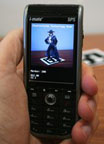
An Extended Version of the Real World?
"Daniel Wagner working on some innovative augmented reality projects. He has been involved in a project you may already have heard of called The Invisible Train, and now he has created a nice demo on an i-mate SP5 Windows Mobile Phone.
In this demo (photo to the left), the character on the display moves around based on the location, angle, etc of the phone. With the phone facing the marker, you can move around and view the character from different angles. If you turn the phone away from the marker, the character moves off the screen. This is an amazing display of Augmented Reality!
"The basic idea of Augmented Reality (AR) is that is lets people share an extended version of the "real" world. Virtual objects can show up in real space that can be viewed an manipulated by more than one person (which is often a problem in Virtual Reality).
Until now AR is usually done with expensive hardware using HMDs and PCs or notebooks for mobile setups. We focus in our work on using low-cost, mobile hardware that people ideally already possess (PDAs, mobile phones), because we believe that this is one of the few chances how AR can leave research labs and go into public." [...]
Daniel Wagner is a computer science doctoral candidate and received his MSc from Vienna University of Technology. During his studies he worked as a contract programmer and joined Reality2, developing VR software. After finishing his Computer Science studies, Daniel was hired as a lead developer by BinaryBee working on high-quality single- and multi-user webgames. Next he was employed as a developer for Tisc Media, doing 3D engine development. Recently Daniel was hired as a consultant by Greentube for the development of "Ski Challenge ’05". Daniel currently has a job as a researcher at Graz University of Technology, doing his PhD thesis on truly mobile Augmented Reality. His current research interests are real-time graphics and massively multi-user augmented reality on mobile devices." [via Mobility Site]
Posted by jo at 02:17 PM | Comments (0)
March 02, 2006
Perplex City Academy Games

Live Action Urban Game Starts in London
Mind Candy, in conjunction with the Perplex City Academy, ran their first live action urban game on Saturday with over 200 participants roaming Central London in a bid to complete a series of challenges and seize victory. [via ARGN].
"Using their mobile phones, players had to feed their answers and photographic evidence of their antics back to Base Camp via SMS and MMS messages, while the organisers sent out leaderboard updates, trivia questions and surprise tasks throughout the day.
With that, the players set off for the game zone, aiming to solve mind bending questions that took them from Chinatown to Centre Point.
Inspired by the flash mob phenomenon, the game seized upon the opportunity to create a spectacle. On each half-hour, six teams at a time were sent to Leicester Square, where they formed spontaneous choirs and performed a song of their choice. One group managed to find passers-by celebrating their birthdays, and promptly delivered a stirring serenade..." [blogged by Emily on Textually]
Posted by jo at 08:15 AM | Comments (0)
March 01, 2006
The Era of Sentient Things
"Loneliness" of the Avatar
Samsung Electronics "is now cooperating with a local research team to develop cell phone software that can feel, think, evolve and reproduce", the Korea Times reports. "The team, led by Prof. Kim Jong-hwan at the Korea Advanced Institute of Science and Technology, is hooking up with Samsung to create the attention-grabbing software outfitted with "artificial chromosomes". "This software can feel, think and interact with phone owners. It will breathe power into cell phones, bringing the gadgets to life,'' Kim said. 'We have almost completed the first-stage task with Samsung to install the software in cell phones and plan to start the second job soon,'' the 48-year-old said. Oh's former top lieutenant Lee Kang-hee said a three-dimensional avatar will lurk inside the cell phone and adjust itself to characteristics of the cell phone carriers. 'It's just like a sophisticated creature living inside a cell phone. An owner will be allowed to set its first personality by defining the underlying DNA,'' said Lee, who will join Samsung Electronics tomorrow."
However, it is up to the avatar how its personality develops with the owner. Its personality can get better or worse depending on how people treat it,'' he said. Lee added folks will be able to deal with loneliness felt by the avatar, which will pop up on the phone when they feel alone, by touching a button. Should the owner refuse to respond to the signal, the avatars will change their personalities either to express such feelings more often or just to become depressed, according to Lee. This year, the team is poised to start enabling the cell phone-embedded artificial creature to mate with another to have offspring". Scientist Brings Life to Cell Phones. [posted by Jim Downing as Smart Mobs]
Posted by jo at 02:34 PM | Comments (0)
February 28, 2006
Dowsing Poplar

Collaborative Mapping of Poplar
Saturday 4 March 2006 2-4 pm free: You are invited to join Melissa Bliss in creating a collaborative map of Poplar using dowsing and GPS. Full instruction in dowsing will be given. Please dress warm as we will be outside. Meet at Chrisp Street Idea Store (aka the library), 1 Vesey Path (south end of Chrisp Street Market), East India Dock Road, London E14 6BT--DLR All Saints, Bus 15 115 D6 D8. Info/booking: melissa[at]livingcinema.com
Posted by jo at 10:12 AM | Comments (0)
February 27, 2006
Report from the Inventor of the Flash Mob
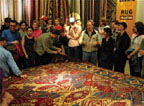
and Jane McGonigal's Response
" Not only was the flash mob a vacuous fad; it was, in its very form (pointless aggregation and then dispersal), intended as a metaphor for the hollow hipster culture that spawned it. I know this because I happen to have been the flash mob's inventor. My association with the fad has heretofore remained semi-anonymous, on a first-name- only basis to all but friends and acquaintances. For more than two years, I concealed my identity for scientific purposes, but now that my experiment is essentially complete, corporate America having fulfilled (albeit a year later than expected) its final phase, I finally feel compelled to offer a report: on the flash mob, its life and times, and its consummation this summer in the clutches of the Ford Motor Company." From My Crowd: Part 1 Or, Phase 5: A report from the inventor of the flash mob by Bill Wasik [via Interactive Media Division Weblog]
Jane McGonigal's Letter To the Editor: Bill Wasik’s account of the mob project is a fascinating perspective on eight of the thousands of flash mobs that were conducted worldwide in the summer and fall of 2003. However, as one of the San Francisco flash mob organizers, I have to take issue with his article as a definitive account of the phenomenon. Here in San Francisco, for instance, we consciously designed events that would be inclusive and inviting to passersby who hadn’t already received the secret “insider” instructions. When we whirled across a pedestrian crosswalk at a famous cable car stop, the mob grew larger over the course of the 10 minutes as tourists and locals joined in.
It was “transparent play”, not “dark play”—the rules were obvious to anyone who was watching, and there was ample opportunity to become a part of the experience. When we threw a massively multiplayer duck-duck-goose game in a public park, it was obvious to all nearby what we were up to—and that’s why many more people outside of the original network began to play with us. We picked a familiar childhood game so that as diverse a group as possible could jump in and take part. In short, we were explicitly working against what we perceived to be the exclusivity of the East Coast flash mobs. And that, I believe, is the true story of flash mobs—local organizers making their own decisions about which places are appropriate for play, and what kinds of play to design. Wasik invented the bones, the structure, of flash mobs—yes. But independent organizers in their own cities put their own flesh and blood on top of that skeleton. I have been enchanted and delighted by Capetown’s, Bogota’s, Montreal’s, and Warsaw’s interpretations of the flash mob, none of which looked like each other’s and each of which captured the imagination of local residents in their own site-specific, community-specific ways. That’s what makes the phenomenon interesting and meaningful in the long run: the diversity of spontaneous communities making their own public spectacles. Furthermore, I despaired to read Wasik be so dismissive of flash mobs, referring to them as a vacuous and forgettable trend. When I went to Singapore in the summer of 2004 to give a lecture about flash mobs—a lecture that was almost banned by the government because it was deemed a controversial subject matter—I met individuals who were profoundly moved and energized by the fact that three flash mobs had been successfully conducted in Singapore, despite the illegality of organizing more than four people in a public space without formal government permission. And when flash mobs were banned by the legislature in Mumbai, mobbers from all over the world joined together to offer the sole Mumbai organizer online advice and support (eventually, it was decided to move flash mobs to other cities in India.) Of course, I don’t mean to suggest that flash mobs are significant only in so far as they challenged local law. For me, the ultimate meaning lies in the lingering traces flash mob play has left in shared spaces. On more than one occasion, most recently a full two years after the fact, I have walked past the pedestrian crosswalk where we staged our first San Francisco flash mob and witnessed someone else whirling across it. I myself have continued to lead friends in whirling across it. Through our flash mob, we changed the source code of that site; a crosswalk at 4th and Market now frequently serves as a crosswhirl. Maybe I take play too seriously, but I am proud to have been a part of that change. Mr. Wasik, for many cities, flash mobs invigorated its cites and citizens for a great deal longer than the 10 minutes a traditional flash mob lasts. I’m sorry if ultimately that was not the point or the result of the flash mob experience in New York.
Sincerely,
Jane McGonigal
Posted by jo at 03:38 PM | Comments (0)
February 24, 2006
My Crowd: Part 1
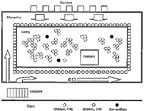
Or, Phase 5: A Report from the Inventor of the Flash Mob
[Left. Fig. 2—Schematic, MOB #3 in Grand Hyatt Hotel.] [...] "The basic hypothesis behind the Mob Project was as follows: seeing how all culture in New York was demonstrably commingled with scenesterism, the appeal of concerts and plays and readings and gallery shows deriving less from the work itself than from the social opportunities the work might engender, it should theoretically be possible to create an art project consisting of pure scene—meaning the scene would be the entire point of the work, and indeed would itself constitute the work.
At its best, the Mob Project brought to this task a sort of formal unity, as can be illustrated in MOB #3, which took place fifteen days after #2 and was set in the Grand Hyatt, a hotel fronting on Forty-second Street adjacent to Grand Central Station. Picture a lobby a whole block long sporting well-maintained fixtures in the high Eighties style, gold-chrome railings and sepia-mirror walls and a fountain in marblish stone, with a mezzanine ringed overhead. The time was set for 7:07 P.M., the tail end of the evening rush hour; the train station next door was thick with commuters, as was (visible through the hotel's tinted-glass facade) the sidewalk outside, but the lobby was nearly empty: only a few besuited types, guests presumably, sunk here and there into armchairs.
Starting five minutes beforehand the mob members slipped in, in twos and threes and tens, milling around in the lobby and making stylish small talk..." From My Crowd: Part 1 Or, Phase 5: A report from the inventor of the flash mob by Bill Wasik, Harpers Magazine.
Posted by jo at 11:44 AM | Comments (0)
February 18, 2006
New Gothic + Rattus Norvegicus
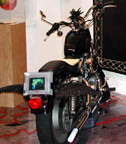
Magical Lock-down Dark Pegasus
Martin Sexton presents New Gothic which combines music and performance and features Truth Machine's 'Heraldic Unicorn Lion Grace System', described variously as 'the high-concept band to end all high-concept bands' and as a cult religious group by others. The varying members of this arts collective reportedly all work to a set of instructions cut from the text of books that vary from hermetic works, theological mediations to pulp fiction, erotica and maps. Steve Severin conducts and provides the sonic soundscape.
Ride up with the Magical Lock-down Dark Pegasus: a Harley-Davidson XL53 custom motorcycle resplendent with blue-black Scottish crow wings and 'pimped' with a DVD monitor as tail-plate, that echoes TE Lawrence's quote that ‘A motorcycle with a touch of blood in it is better than all the riding animals on earth, because of its logical extension of our faculties, and the hint, the provocations, to excess’.
Meanwhile, HMC create new visual experiences, as they unleash chthonic forces with their technological multimedia film noir Rattus Norvegicus as part of New Gothic at Tate Britain.
This fantastic, free, HMC MediaLab event will be: Friday, March 3, 2006 at 18.00 - 22.00pm; Tate Britain, Millbank, London, England SW1P 4RG.
Rattus Norvegicus is a dark digital artwork shown for the first time at "Late at Tate Britain" as part of the "Gothic Nightmares" exhibition.
HMC MediaLab is a cutting edge play-group for digital-art professionals.
HMC MediaLab exists to build a functional culture of innovation.
The HMC MediaLab encourages experimentation between the arts, science and technology disciplines. HMC MediaLab believes that interesting people do interesting things. The HMC MediaLab was formed in 2005 as a creative outlet for digital arts professionals. If you are a digital artist, or if you do something "interesting" and would like to get involved, please contact us at mail@hmcmedialab.org . We showcase, develop and build cutting edge projects that blur the lines between art and science.
To find out more about some of our projects click here.
If you are developing digital art, we want to know about it. Please get in touch with us.
To be invited to future events, simply sign up for our free e-mail newsletter here.
Posted by jo at 11:47 AM | Comments (0)
February 09, 2006
Epidemic Menace
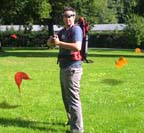
Crossmedia/Space Gaming
Epidemic Menace is a pervasive crossmedia game. Crossmedia games focus on a wide variety of gaming devices including traditional media channels, game consoles as well as mobile and pervasive computing technology to allow for a broad variety of game experiences. The overall goal of the game is to prevent the virus from escaping the campus, to clear the campus from the virus instances, create an antivirus to save Prof. Ivy Miller and to find out what happened on the campus. The winner is the team that that leads the high score list.
The game consists of two competing teams and each team holds a minimum of 5 players. Each team receives at the beginning of the game: 5 smart phones (one for each player); 1 Palmpilot; 1 AR system; 5 special online accounts (one for each player). Players can change devices or play modes anytime and can play on their own if they wish but have clear advantages through collaboration.
Game Space: The game is played in a physical and a virtual game space and teams have to play in both spaces in order to extinguish the virus. The virtual game space will be a model of the physical game space and game appearance and game mechanics will be adapted in the physical and the virtual game space. For example, the virus appears differently in both spaces.
In the physical world the virus may appear as: Spatialized sound, 2D Map, based display of viruses in proximity, Overlaid 3D graphics on AR devices, And in the virtual world the virus may appear as: Sound, Animated 2D and 3D graphics.
Storyline: The Dean of the Schloss Birlinghoven medical research laboratory Prof. Dr. Wolfgang Mathiessen has been working on a epidemic prevention program called EEPA (European Epidemic Prevention Association) for years and is very close to a mayor breakthrough that would have revolutionized the virus simulation programmes used by medical institutes around the world when the most part of his work is stolen and copied by a villain. The villain uses his work to infect a defined area of the Schloss Birlinghoven complex, his motives and his approach are unknown. The situation escalates when one of the medical researchers Prof. Ivy Miller is infected by the virus and falls into a coma. The EEPA is informed and a small group of experts is send to Schloss Birlinghoven to take care of the situation. [via pasta and vinegar] Report about the Crossmedia Game Epidemic Menace by Jan Ohlenburg1, Irma Lindt1, and Uta Pankoke-Babatz1 [PDF]
Posted by jo at 11:28 AM | Comments (0)
February 08, 2006
First Monday, Special Issue #4:
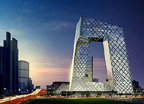
Urban Screens
Urban Screens: Discovering the Potential of Outdoor Screens for Urban Society, Pieter Boeder, Geert Lovink, Sabine Niederer, and Mirjam Struppek, eds. Table of Contents: Introduction: Discovering the potential of outdoor screens for urban society by Pieter Boeder and Mirjam Struppek; Urban screens: The beginning of a universal visual culture by Paul Martin Lester; The politics of public space in the media city by Scott McQuire; The poetics of urban media surfaces by Lev Manovich; Interpreting urban screens; by Anthony Auerbach; Story space: A theoretical grounding for the new urban annotation by Rekha Murthy; The urban incubator: (De)constructive (re)presentation of heterotopian spatiality and virtual image(ries) by Wael Salah Fahmi; Urban screens: Towards the convergence of architecture and audiovisual media by Tore Slaatta; Towards an integrated architectural media space by Ava Fatah gen. Schieck; Art and social displays in the branding of the city: Token screens or opportunities for difference? by Julia Nevárez; Hijacking the urban screen: Trends in outdoor advertising and predictions for the use of video art and urban screens by Raina Kumra; For an aesthetics of transmission by Giselle Beiguelman; Intelligent skin: Real virtual by Vera Bühlmann; Programming video art for urban screens in public space by Kate Taylor; Augmenting the City with Urban Screens by Florian Resatsch, Daniel Michelis, Corina Weber, and Thomas Schildhauer.
Introduction
Welcome, gentle reader, to this First Monday Urban Screens special issue, the first publication of its kind. With the advent of digital media, the global communication environment has changed dramatically. In the context of the rapidly evolving commercial information sphere of our cities, especially since the 1990s, a number of novel digital display technologies have been introduced into the urban landscape. This transformation has intersected with other major transformations of media technology and culture over the last two decades: the formation of distributed global networks and the emergence of mobile media platforms such as mobile phones. Their cumulative and synergistic impact has been profound. Convergence of screen technologies with digital communication technologies such as GSM, RFID, Internet and database technologies has lead to the emergence of a new, interactive and increasingly pervasive medium: Urban Screens.
Urban Screens can be defined as interactive, dynamic digital information displays in urban environments. Their genesis is the consequence of two parallel technological developments: evolution and subsequent growth in magnitude of the traditional display screen, and its subsequent convergence with other digital media technologies. Forms and appearances range from large daylight compatible LED billboards, plasma or SED screens, information displays in public transportation systems and electronic city information terminals to dynamic, intelligent surfaces that may be fully integrated into architectural façade structures. Their introduction in the urban environment poses new, unparalleled challenges and opportunities, which we will explore
and document in this issue.
Currently, the primary purpose of this new infrastructure appears to be the management and control of consumer behaviour through advertising. Commercial companies are starting to realise that digital billboards are a powerful medium to communicate their goals and missions, in line with the new paradigms of the digital economy. Interconnected Urban Screens have tremendous potential to serve as a platform for information exchange. Such large networks are already being developed Russia, China, USA and South America, where Urban Screens are rapidly becoming a key element in commercial and government informational infrastructure. The implications for the public sphere are profound. Information density per square metre is increasing, yet at the same time individuals have less control than ever over the actual format and content of that information.
Public space has always been a place for human interaction, a unique arena for the exchange of rituals and communication. Its architecture, being a storytelling medium itself, plays an important role in providing a stage for this interaction. The ways in which public space is inhabited can be read as a participatory process of its audience. Its (vanishing) role as a space for social and symbolic discourse has often been discussed in urban sociology. Modernisation, the growing independence of place and time and individualisation seem to devastate traditional city life and its social rhythm. The Urban Screens project explores the opportunities for opening this steadily growing infrastructure of digital screens, currently dominated by market forces, for cultural content, along with its potential for revitalising of the public sphere.
Urban Screens 2005 was the first international conference that was solely dedicated to the emerging Urban Screens phenomenon. Presentations covered a broad spectrum of topics and issues, ranging from critical theory to project experiences by researchers and practitioners in the field of art, architecture, urban studies and digital culture. It addressed the growing infrastructure of large digital moving displays, which increasingly influence and structure the visual sphere of our public spaces. Urban Screens 2005 investigated how the currently dominating commercial use of these screens can be broadened and culturally curated: can these screens become a tool to contribute to a lively urban society, involving its audience interactively?
A new medium that is digital, interactive and pervasive
What we are seeing is the emergence of a new medium that is digital, global and local, interactive and pervasive at the same time. What happens if the convergence of new technologies such as Internet, database and mobile technologies suddenly enable interactive access to the visual streaming of these digital surfaces? Can it revitalise the public sphere by creating an information-dense urban environment or is it a major threat? How does the growing infrastructure of digital displays influence the perception of the visual sphere of our public spaces? Metaphorically speaking, can or do Urban Screens already function as a mirror, reflecting the public sphere?
The Urban Screens project aims to address these questions in a transdisciplinary debate and present new approaches to answering the most pushing urgent questions, exchange experiences and create and maintain a thematical network around the subject for initiating future collaborations. The Urban Screens 2005 conference in Amsterdam addressed the existing commercial predetermination and explored the nuance between art, interventions and entertainment to stimulate a lively culture. Other key issues were mediated interaction, content, participation of the local community, possible restrictions due to technical limits, and the incorporation of screens in the architecture of our urban landscape.
Urban Screens 2006: Demonstrating the potential of public screens for interaction
Building upon the results of Urban Screens 2005, the 2006 Urban Screens 2006 conference (Berlin, October 5-6) will elaborate on the discussion and develop the broad spectrum of possible formats and usage of this emerging new media infrastructure. Urban Screens 2006 will be a platform for demonstrating the potential of public screens for interaction in a trinity of infrastructure, content and cooperation models. Interconnected topics will be the politics of public space, multimedia content as a service for an array of portable devices, urban neighbourhood reactivation, interaction design of urban screens, standardisation and integration in the urban landscape. Using existing screens infrastructure as well as future 'Urban Screens furniture' in the urban space of Berlin, we will demonstrate the impact of Urban Screens, their contextualisation and situatedness. This unique accumulation of projects will serve as a playground and research field for practical observations on the interplay of screen technology, content, location and format.
Urban Screens 2007: Expanding the potential of content for community
screens
Urban Screens 2007 is currently under preparation in collaboration with BBC Public Space Broadcasting. While Urban Screens 2006 will have 'brick & mortar' accents, Urban Screens 2007 will have a distinct focus on the potential of journalistic content: issues surrounding the production and display of media content for Urban Screens, as well as adaptive reuse of 'old' content for new media will be explored in detail. Key issues and topics will include Public Space Broadcasting (PSB), the politics of public space, mediated interaction and participation, as well as experiments with new participatory formats. PSB can energise the hearts of cities by bringing together communities to share events and broadcasts, creating public news and information points that double as local meeting places. Largely due to the innovative work of the BBC, PSB is starting to prove its potential to provide an outlet for community and educational activities, public service information, visual arts, digital innovation and local content production, revitalising the public sphere.
We hope that you will share our excitement.
Posted by jo at 09:09 AM | Comments (0)
February 07, 2006
Compressionism
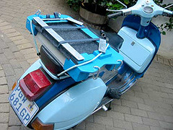
moCo (mobile Compressionism)
[image: This just makes me smile: ‘action Jackson’ (Compressionist scanner / appendage) strapped onto my bling bling of a bike, ready to hit Johannesburg, South Africa.]
Compressionism is a digital performance and analog archive. In the current studies, I compress bodies, spaces and objects by traversing their surfaces with an image scanner, along varying 3-dimensional paths - literally, I glide, run, hover and swoop across windows, trees, or lilies while the scanner head is in motion. The resulting digital images, which are transfigured down to the size of a small piece of paper, are then re-stretched to their original size, sometimes cropped or colorized. The final prints ask us to ‘look again’ at the relations between subjects, objects, actions and perceptions. [blogged by nathaniel on nathanielstern.com]
Posted by jo at 11:19 AM | Comments (0)
February 06, 2006
Vectors 2.0
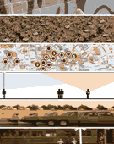
Thoughtful Transmissions
There are a handful of digital art and culture journals currently accessible online. A few of them occasionally pair critical texts with thematic volumes of interactive projects. Since its launch in the Winter of 2005, the web-based academic journal Vectors has explored the possibilities of combining audio-visual interactivity and analytical writings. The publication's USC-based editorial/creative team, consisting of new media theorists and practitioners Tara McPherson, Steve Anderson, Raegan Kelly, Eric Loyer, and Craig Dietrich, have recently released their second issue, titled 'Mobility.' The journal provides a multifaceted look at this concept, from David Lloyd's projection of 19th Century Irish migrant workers, in 'Mobile Figures,' to Todd Presner's 'Hypermedia Berlin,' a layered mapping of the city through historical and subjective filters. Other contributions, such as Lisa Lynch and Elena Razlogova's 'The Guantanomobile Project' and Julian Bleeker's 'WiFi.Bedouin,' tackle mobility within the politicized contexts of global information access. But unlike many of its academic journal relatives, Vectors turns new media in on itself, where the critical potential of the form isn't left to mere descriptions. - Ryan Griffis, Net Art News, Rhizome.
Posted by jo at 11:26 AM | Comments (0)
February 02, 2006
Transmediale 06: Maurice Benayoun
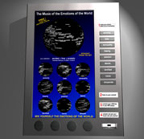
Emotion Vending Machine 2006
Also at Transmediale 06: Maurice Benayoun's Emotion Vending Machine--The mechanics of the world’s emotions evolve in the zone where economics and politics converge, in the world of product placement. Through its concept of artistic merchandizing, the Emotion Vending Machine deals with the production of emotions in an ironic way. The Machine takes Internet data as a global pool of emotions. Users can select up to three emotions from a list of nine emotional states, including hate, desire, or despair. The emotions are represented by 3D-maps of word clusters, extracted from the web and generated in realtime.
These maps show the emotions of the world as they are present on the web at that moment, mapped onto the actual position of major cities on the globe, a mix which can also be read like a music score. The musical interpretation deciphers the cities and their emotional polarity to produce a specific musical result by adapting rhythm, coloration and evolution to the selection of the emotional states made by the user. After listening to the personal result through the integrated speakers, users can plug in their USB stick or MP3 player to load their emotional sound remix.
Music: Jean-Baptiste Barrière; Software: Birgit Lichtenegger, Artem Baguinsky, Marloes de Valk (V2); Production: CITU, Paris.
Posted by jo at 03:32 PM | Comments (0)
February 01, 2006
CONFESS.OR
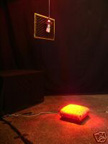
Religion for Rent on eBay
CONFESS.OR is one of the first pieces of Gerhard Schwoiger's ReReligion, a series of works that reflect on the place of religion in everyday life and investigate its Zeitgeist and adaptability.
Upon entering the room the visitor becomes part of an open confessional situation. Once s/he approaches one of the candles or places an ear on it, a single voice can be distinguished from the muddle of voices which forms a wall of noise at a moderate volume. The lattice of the confessional – the single element that is left in its original form – floats over the floor with a microphone in the back part of the room.
Kneeling upon the cushion, summons a female's voice, inviting one to confess. This enables those who avow to make an anonymous confession to the public. Upon leaving the cushion, the confession is automatically over. A confession that manages without the power apparatus of the church, without obligations. Once the confession has been made, it will be meshed with the sounds of previous confessions and omitted out of a few candles in the room. Judgment over the sins of others is placed in the hands of the individual.
Current confessions are available as podcasts (for example for your way to work). You can rent or buy the system on eBay. Acution runs for the next 10 days. Related: Pray as you go, mobile confessions, etc. [blogged by Regine on we-make-money-not-art]
Posted by jo at 11:34 AM | Comments (0)
MOBILEFEST
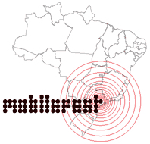
1st Brazilian Festival of Mobile Art
MOBILEFEST is the 1st Brazilian Festival of Mobile Art, based on the sociological implications that mobile phones and mobile technologies have been promoting in our culture. MOBILEFEST will happen in September, 2006 in São Paulo, Brazil, with an agenda composed by two days of cultural and technical activities. MOBILEFEST will include an international symposium, workshops and recognition awarding of the best works and mobile applications developed by Brazilians. Different from other national and international festivals, MOBILEFEST has been designed for the mobile era, that’s why it’s the first festival in the world that only takes submissions of texts, photographs and videos sent via SMS and MMS.
MOBILEFEST CONCEPT: MOBILEFEST was idealized in Brazil from the following reasons and objectives: (1) Popularize the mobile technology as a way to contribute to digital inclusion of those who find difficulties understanding and interacting with these new medium; (2) Promote cultural interchange between national and international researchers of this media; (3) Incentive the promotion of creativity exercise of the 90 million Brazilians that use the mobile technology to transmit much more than voice;
(4) Develop seminars and workshops to guide and stimulate the production of content in the mobile era in Brazil, bringing international experiences and examples; (5) Expand possible software and hardware functions of mobile technology, nourish and incentive scientific thought and production regarding new technologies; and (6) Offer the first awarding specialized in recognizing works that generate mobile technology.
INTERNATIONAL SYMPOSIUM: CALL FOR PAPERS
MOBILEFEST 2006 seeks paper and presentation proposals responding to the
Symposium themes:
How can Mobile Technology contribute to art, culture, democracy, ecology and third sector? Paper presenters will be grouped thematically to encourage discourse that presents divergent perspectives and views that serve as a catalyst for discussion.
Papers submitted are limited to 30 minutes.
Deadline for abstracts: February 28th, 2006.
please send your material to: festival[at]mobilefest.com.br
Posted by jo at 10:59 AM | Comments (0)
Sale Away + Digital Aquarium

Sounding Store Windows
Régine on WMMNA has written up some fabulous interactive shop windows she's read about over the past few months. These two are related to cell phones:
Sale Away: "In Staalplaat's Sale Away, passers-by could conduct an "orchestra" of household devices via their mobile phones on a display window. The mechanical orchestra consisted of flute, organ and brass playing vacuum cleaners, rattling kitchen mixers, buzzing ventilators, radio playing toy trains, wobbling jigsaws, dancing tumble dryers, humming refrigerators and other misused household utilities. [blogged here as well]

The Digital Aquarium: The Digital Aquarium, by Digit, featured 150 pre-programmed mobile phones in a glass tank on display at London's Design Museum in 2002. When viewers dialed the number on the side of the tank, the handsets vibrated, their screens lighted up and each one emited a distinctive ring tone, creating an effect which is meant to look like a school of fish swimming around. (image Sensory Impact). [blogged by Emily on textually]
Posted by jo at 09:09 AM | Comments (0)
January 31, 2006
SMS Sugar Man

First Feature Film Shot Entirely on Cellphone Cameras
"...They’ve been shooting for over a week now, mostly nights. Everyone’s dead tired, so this particular scene is taking a bit longer than usual to get in the bag. “Action!” says the director for at least the 20th time in as many minutes, prompting the two female leads to start doing their thing at the pool table. As the girls hit the balls, chat and flirt, their movements are recorded by the cameras embedded in two of Sony Ericsson’s slick new W900i cellphones. That’s right: once this film, SMS Sugar Man (by Aryn Kaganof), is completed, it will be the first feature film in the world to be shot entirely on cellphone cameras...
...SMS Sugar Man is emblematic of what anthropologists refer to as the "leapfrog effect". This is when people in developing nations adopt new technology and use it in ways that allow them to overtake users in developed nations. To extract maximum value from leapfrogging, however, you must be an early adopter.
The ways in which people consume entertainment media are undergoing rapid changes...South Africa...is hungry for new content...The future is right here, right now." From Phoning it in by Ryan Fortune, sundaytimes.co.za (via)
Posted by jo at 11:18 AM | Comments (0)
January 27, 2006
Finger Ring
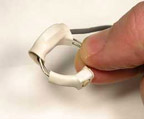
Social Polling
Finger Ring is a system in which a cell phone decides whether to ring by accepting votes from the others in a conversation with the called party. When a call comes in, your phone first determines who you're discussing with by using a decentralized network of autonomous body-worn sensor nodes. It then vibrates all participants' wireless finger rings.
Although the alerted people do not know if it is their own phones that are about to interrupt, each of them has the possibility to veto the call anonymously by touching his/her finger ring. If no one vetoes, your phone rings.
Other Ring Phone concepts: The Finger Phone - The Finger Phone is a small bluetooth headset that you can wear like a ring. It remains connected to your cell phone through bluetooth; Technojewelry - Penta Phone, Ring Phone and GPS Toes - Technojewelry for IDEO incorporates emerging electronics into everyday attire. Penta Phone and Ring Phone are concepts for mobile phones; The ring phone concept - A mobile phone encapsulated into a ring you wear on the finger, won the 2004 Sony Ericsson Phone Concept Design Competition in China; The Ring Phone - The winning submission for the "2004 Siemens Design Challenge"was a phone consisting of two finger rings, one ring for listening and one for speaking. [blogged by Emily on Textually]
Posted by jo at 03:56 PM | Comments (0)
Stanford's first ever FLASHMOB!

Monday, January 30, 2006, 12:20pm
In case anyone missed this, you have now been officially invited to Stanford's first ever FLASHMOB. If you did not know, a FLASHMOB is an inexplicable gathering of a group of people in a place for a short period of time. Your task:
By 12:20pm on Monday January 30th and based on your star sign you should locate yourself in one of the following venues with your bicycle and a cell phone:
Aquarius, Leo, Scorpio, Cancer, Gemini or Taurus: Treehouse (and wear a hat) Aries, Pisces, Libra, Sagittarius, Virgo, or Capricorn: Red fountain in front of Green Library (and wear a pair of sunglasses)
At some point a FLASHMOB representative will make themselves known, appear and pass out further instructions. Read the instructions carefully and then hide the piece of paper about your person so that it cannot be seen.
The final instructions will provide the destination of the FLASHMOB site, and you should arrive at the destination at the time that it states. Aim to get there on time, if you are early, stall, if you are late, hurry! Although no one will need to rush.
After the FLASHMOB, carry on with your lives as per normal.
At all times, remember that a FLASHMOB is just fun.
There is no step 6.
At some point during the day, synchronize your watch by using http://nist.time.gov/timezone.cgi?Pacific/d/-8/java (Preferably before the FLASHMOB). Extra Credit: Tell all your friends who might like to join in.
Stay on the right.
Still confused, surf on over to http://www.geocities.com/londonflashmob/ for some more info and surfing links.
If you feel the need: stanfordflashmob[at]yahoo.com [via Howard on Smart Mobs]
Posted by jo at 01:33 PM | Comments (0)
January 25, 2006
RadioHandi
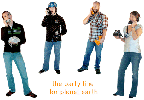
The Party Line for Planet Earth
Brian McConnell on the Etel blog writes "RadioHandi enables people to create voice communities around any subject, place of interest or peer group, and to telecast live audio from MP3 feeds or conference phones. You can create a message board and party line for your club, for people who share an interest, or for your friends. With it, you can create an open party line that people can dial into from all over the world (30+ countries and 1 VoIP network to start with, much more to come). It's also a great platform for ad hoc broadcasting. Just hook a microphone up to a Mac running Gizmo, and you can beam a live audio feed into a conference room that people can then dial into from all over the world (watch for a series of how-tos on ad hoc telecasting and other topics later this week)." [Posted by Phillip Torrone on MAKE:Blog]
Posted by jo at 06:01 PM | Comments (0)
January 24, 2006
Intimate Visual Co-Presence
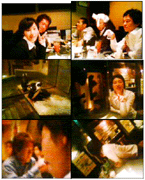
Creating Drama Out of the Banalities of Everyday Life
"ABSTRACT: Photo sharing via handheld devices has unique limitations and affordances that differ from paper-based sharing and PC-based archive and moblog sites. Based on studies of camphone use in Japan, this paper suggests an emergent visual sharing modality that is uniquely suited to the handheld space. Intimate visual copresence involves the sharing of an ongoing stream of viewpointspecific photos with a handful of close friends or with an intimate other. The focus is on co-presence and viewpoint sharing rather than communication, publication, or archiving." Intimate Visual Co-Presence by Mizuko Ito.
Also of interest: Pervasive Image Capture and Sharing: New Social Practices and Implications for Technology; Turning from Image Sharing to Experience Sharing; Pervasive Imaging: a Capture and Access Perspective; and The Autobiographical Impulse and Mobile Imaging: Toward a Theory of Autobiometry. (more)
Posted by jo at 12:03 PM | Comments (0)
January 18, 2006
Mediaattori - Urban Mediator
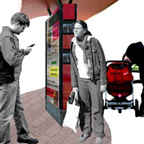
A Hybrid Infrastructure for Neighborhoods
Urban Mediator investigates the area of designing at the boundaries of digital and physical urban space. Its aim is to present cities with a direction for the future that addresses the possibilities presented by the interweaving of new digital technologies and urban space, for empowering people in shaping their own city.
The approach followed is not technologically driven but rather takes people’s everyday practices as the grounding point for the investigation. The design process is built upon dialogues with people and the urban environment as a way of gaining understanding of urban everyday practices and designing in harmony with them. The resulting design concept, Urban Mediator, illustrates a local and people-centered perspective for our urban futures. It proposes a hybrid infrastructure for urban neighborhoods.
The combined digital and physical framework gives people the possibility to engage in improving the quality of their everyday urban environments and their experience of these environments. The concept, presented through scenarios, is developed as a working tool for catalyzing discussion between different stakeholders that would be involved in a future proposal for collaborative design for cities. [via nicolas on pasta and vinegar]
Posted by jo at 12:53 PM | Comments (0)
January 12, 2006
MobileActive
![]()
A Global Resource for Using Cell Phones in Social Activism
Mobile phones have emerged as a civic and campaign organizing tool across traditional socio-economic and cultural boundaries. Cell phone campaigns have swung elections through innovative get-out-the-vote activities, have been used to ensure impartial elections through monitoring, have resulted in massive collective action to free political prisoners or stop illegal logging, and are being used in public health strategies.
MobileActive convened in Toronto in 2005 to bring together, for the first time ever, activists from around the world to explore the use of mobile phones in civic action campaigns. This wiki and MobileActive site is an aggregation of the learnings from this convergence, stories from participants and their projects, and resources for activists interested in using mobiles in their campaigns. (For write-ups about MobileActive 05 go to our press page).
The goal of MobileActive is to grow the network of mobile activists, to share knowledge and skills, and to provide a peer network, training and resources to those interested in exploring mobile phones in their civic engagagement, mobilization, and civic action campaigns.
We aim to better understand the strengths and limits of the medium, explore available technologies for campaigners, and share lessons learned, campaign examples, and tech tools to increase activists’ ability to organize our constituencies.
If you used mobiles in your campaign, please share your story! If you need or have resources, let us know! And if you want to join this growing network of activists from around the globe send us a note: info[at]mobileactive.org.
Posted by jo at 10:27 AM | Comments (0)
January 09, 2006
Temporary Travel Office
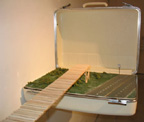
Guanabacoa Trail
The Temporary Travel Office proposes Guanabacoa Trail, an addendum to the observation platform at Round Marsh within the Theodore Roosevelt Area of the Timucuan Ecological and Historic Preserve.
The Temporary Travel Office is proposing an addition to the current Observation Tower within the preserve that offers hikers a panoramic view of Round Marsh. The addition would consist of a 498mi/801km boardwalk that would span from the preserve in Jacksonville, FL to Guanabacoa, Cuba. Signage would explain the significance of the expansion to the site (see text below) and audio tours would be commissioned by anthropologists, artists, amateur historians and human rights advocates to accompany hikers on the long walk.
The Timucuan Ecological and Historic Preserve is located near the intersection of the US Intracoastal Waterway and the mouth of the St. Johns River in Jacksonville Florida. Other than existing on classic Florida wetlands, the preserve also occupies the site of first contact between indiginous peoples and European colonists in what is now North America. Monuments to the French expeditions of Rene Laudonnier (who established Fort Caroline) and Jean Ribault are primary attractions for park visitors.
Roosevelt Area of Jacksonville's Timucuan Ecological and Historic Preserve:
The last known Timucuan, Juan Alonso Cavale, was born in 1709 at Mission Nuestra Señora de la Lecha in what would become the State of Florida. After devastating attacks by British supported Yamasee Indians on the Spanish supply route known as the Camino Real, the Spanish eventually ceded Florida to the British, evacuating their St. Augustine stronghold. They took the estimated 89 surviving missionized Indians with them to Guanabacoa, Cuba where Juan Alonso Cavale would die in 1767.
Guanabacoa, Cuba: Guanabacoa, now a suburb of Havana, Cuba played an important role in the historical narrative of slavery in the "New World." Once the site of forced reservation camps for indigenous peoples, Guanabacoa would become a haven for escaped slaves from the United States. Here, a small stretch of the US 1 highway running through Jacksonville, Florida is reconstructed on the site of a former reservation. The actual stretch of road is now named for Johnnie Mae Chappell, an African-American woman who was gunned down as she walked along the road on March 23, 1964. Several miles away in downtown Jacksonville, protests against the inequities of racial segregation turned violent as whites fought the advances of civil rights. Images of the proposal (as exhibited at Seesaw Space in Jacksonville, FL in December) and a trail map available.
Visit the Temporary Travel Office online.
Posted by jo at 12:15 PM | Comments (0)
January 04, 2006
Objects That Blog
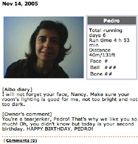
The Future of Content?
"The first few days of February I'll be at Lift, a content on the near future of technology, people and communication. Nicolas Nova and others have organized this conference, together with a workshop on Blogjects — a not particularly clever neologism I came up with for objects that blog. This topic ties into the idea of proximity-based interaction and usage scenarios for mobile contexts, the main theme of the NetMagnet research project I'm working on through the Netpublics seminar. An informed speculation I have is that the future of content creation and dissemination won't just come from people. It will also come from the social world of objects — things that have histories and experiences. A different kind of witness upon the world, and a witness to events that are of interest to the other blogging species — people.
Micro local content is one area in which this may be of practical concern. Just this afternoon I had a nice long meeting with Elizabeth Osder at Yahoo Media in Santa Monica. We discussed many things, including how to reward local communities for disseminating news about local sports events. I mean..really local sports events — the little league team scores, for instance. Now, this fits into a larger conversation about the news content ecology, but just taking this particular problem in hand in the context of the Blogject: why don't scoreboards blog? Sure, it's not a question deserving any measure of brilliance for the asking, but it suggests a (super simple) example of the Blogject.
Why are blogging objects interesting? The idea bubbled up as I was reading Bruce Sterling's "Shaping Things". The [w:Spime] — the "thing" in the world that knows itself and is able to tell things around it about itself. RFID is the Paleostine era for Spimes. Blogjects are Spimes that are fluent and legible, so that anyone can read them. Blogjects are meant for humans to read, in human code, not encrypted Arphid data. Blogjects are the prototype framework to experiment, DIY style, with what Spimes can become.
The current, upgraded brain of the Aibo blogs, for instance.
The motivation here is not just to create objects that blog, as we now understand blogging. But to use the framework of the complete blog social formation as one in which objects participate — first-class — in the entire multipath culture circulation network. That means syndication, layering meaning on content, trackback, etc.
There are several Blogject prototype projects on the front burner. One is a Sakura riff called flavonoid, turned around into a U.S. idiolect, focusing on the present day craze with Pedometers. Another is a way to turn device logs into material that's legible to humans. I've already gone on and on about FlightAware, but there are other idioms — for instance, Motion Based, a community-based mobile social software framework that slurps up device track logs and translates them into fitness goals and regimens." [blogged by Julian Bleecker on netPublics]
Posted by jo at 12:40 PM | Comments (0)
December 18, 2005
Silence of the Lands
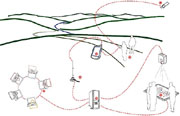
Shared Individual and Collective Sound Cartographies
Silence of the Lands enables participants to collect ambient sounds, then to create and share individual and collective cartographies. These sounds represent subjective interpretations of the soundscape of the urban or natural settings that affect the everyday life of the community, and act as conversation pieces about natural quiet.
1. Data catching: ambient sounds are collected using a PDA. The sounds are linked to the person that collected them, and associated to GPS data; 2. Data description: the sounds are then stored in a database, visualized on a GIS map, and made available for audio-streaming in the web community as individual soundscapes. Participants can access, manage, and eventually modify their own individual soundscapes, associating to them several descriptors; 3. Data interpretation: participants can interact with the collective soundscape. By playing with physical objects in an interactive environment, participants are encouraged to interpret the collective soundscape and create an idealized, virtual one.
A project by Elisa Giaccardi in collaboration with Gianluca Sabena, Hal Eden, and Gruppo Sfera. Currently under development at the Center for LifeLong Learning & Design, University of Colorado, Boulder. Related: Streetscape. [blogged by Regine on we-make-money-not-art]
Posted by jo at 05:57 PM | Comments (0)
December 07, 2005
Gesture-Based Games Using Camera Phones
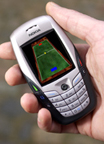
Physically Moving the Phone in Free Space
"We have developed a collection of mobile phone games that incorporate physical gesture interactions. Users interact with the game by physically moving the phone in free space. For example, in Pong, a user moves the phone left and right to control the paddle. The games do not rely on special motion sensors. Instead, they use the mobile phone’s camera as the motion detector. By using computer vision techniques like motion blur detection and optical flow it is possible to detect up to 6 degrees of freedom. We have developed three entertainment applications to explore this application domain. The first is a simple single player Pong game. The second is a Doodle application that demonstrates the various degrees of freedom. The third is a multiplayer version of the Pong game that leverages the Bluetooth capabilities available on many camera phones." From Gesture-Based Games Using Camera Phones, Mobile Technologies Group, Georgia Tech. [blogged by nicolas on pasta and vinegar]
Posted by jo at 01:09 PM | Comments (0)
December 06, 2005
On The Road: A Kerouac Circus

Transform a Book into a Performance
On The Road: A Kerouac Circus is a mixed-media event based on Jack Kerouac's classic American road-trip novel, using a set of procedures created by American composer John Cage to "transform a book into a performance."
Organized by Marc Thorman, the On The Road: A Kerouac Circus web site is part of a project to gather ambient sounds (sounds that happen to be in an environment) from locations mentioned in Kerouac's "On the Road" in order to create a sonic portrait of the big cities, small towns, backwoods, deserts and mountains that Kerouac visited and wrote about.
The project invites you to represent a location in the US, Mexico, or elsewhere by uploading a sound file for the mix of recordings that will be played during the performance.
You and/or your organization will be credited if you wish. (Hard copies -- CD's/flashcards -- can be sent by mail.) These sounds will be mixed with fragments of bop, folk, jazz and mambo recordings, vintage film clips, and live performances to create a "musicircus," the term Cage coined to describe an event in which many independent sounds and sights occur simultaneously and interact freely.
To participate, record ambient sounds (sounds that happen to be in the environment) at an urban or rural location listed on the locations page. These can be sounds of traffic, birdsong, wind, machines, footsteps, water, etc. This isn't a contest for "interesting" sounds -- ALL ambient sounds are welcome. You can choose to record at a specific site that is representative of the location, or choose a site by chance. Collect whatever sounds are there without knowing beforehand exactly what they will be.
Background
John Cage invented a new type of mixedmedia theatrical event, using chance combinations and multiplicity to reflect the way we experience the everyday world. In such a "musicircus" the elements--poetry, sound, dance, music--are created independently and then, like a three-ring circus, performed simultaneously. Cage's philosophy was that the chance combinations and multiplicities that arise from a musicircus are more interesting, and truer to our everyday life, than fixed relationships intentionally imposed by one individual.
In "_____ Circus On ____" Cage established a set of procedures to "transform" a book into a musicircus. The first "Circus On" was Cage's own "Roaratorio, An Irish Circus On Finnegans Wake." As Cage recited his poem taken from Joyce's novel, recorded ambient sounds from Ireland and around the world played through multiple speakers, Irish musicians played traditional instruments and sang, and dancers performed Merce Cunningham's choreography based on Irish dance. [Mode Records has recently re-issued the recording of "Roaratorio" with a comprehensive booklet containing an interview with Cage and a detailed explanation of each stage of the work.]
Applying Cage's procedures to "On The Road" creates a distinctly different musicircus, filled with sounds and images of cars, railroads, Americans towns and cities, be bop, old movies, mambo, cornfields, Sierra Madres, swamps, and prairie winds. The structure follows Kerouac and Cassady as they crisscross America from New York to San Francisco/L.A. and then drive through the South and into the roaring boulevards of Mexico City. The poem for the musicircus, composed entirely of word fragments from the book, reflects Kerouac's spontaneous prose rhythms and American speech patterns. Live performances, to be combined with the reading of the poem and the mix of sounds, come directly from the pages of the book--at various times during the performance (sometimes overlapping by chance) a DJ spins jazz tunes, dance couples swing and mambo, a bop trio blows, a folksinger sings "Halleluiah I'm a Bum" and clips from movie scenes are screened. Other live performances may include strolling guitarists singing Mexican songs, a nightclub singer, and an operatic tenor's a capella rendition of "Gott! Welch Dunkel hier!" from Fidelio.
Posted by jo at 02:44 PM | Comments (0)
December 02, 2005
Vodafone’s Receiver, Issue 14
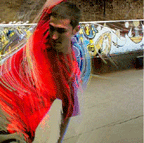
Dynamically Connected: So What?
Mobile services are constantly breaching new boundaries, and will have an enormous impact on the logistics of life – both in terms of productivity and social networking. But the one most important basic feature will always be the ability to dynamically connect everybody with everybody else. So the question is: What do we want to bring together, exchange or take with us, and how can we do this when we're out in the field? This time around, Receiver levels a look at applicability issues – how can we work, learn, cooperate and know better using mobiles?--Articles:
Mark Pesce:
Understanding networks- using devices kids love for their education; Jonathan Donner: User-led innovations in mobile use in sub-saharan Africa; Marc Prensky: Mobile phone imaginationon
James Katz: The future of a futuristic device; Mark Lowenstein: The next generation of usability - re-thinking the mobile device; Nathan Eagle and Alex (Sandy) Pentland: Organizational rhythms - the search for the patterns of the aggregate; Lars Erik Holmquist: The mobile user experience - how boundaries between devices are starting to disappear ; Sara Price and Yvonne Rogers: Designing new learning experiences with pervasive technologies; Jeff Pierce: Serendipitous sharing through personal information environments
Posted by jo at 05:25 PM | Comments (0)
December 01, 2005
DIGITAL STREET CORNER
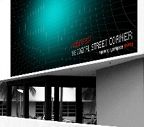
Virtual Street Corner Happening
DIGITAL STREET CORNER by Fred Forest; Art Basel Miami Beach 2005: Is it possible to surf around in cyberspace and hang out on the street corner at same time (global + local = glocal)? French artist Fred Forest will show us how at a world premiere event that will take place November 30-December 4 in the prestigious context of Art Basel Miami Beach 2005. Forest invites the Internet users of the world to meet him down in the street outside the Bass Museum of Art in Miami Beach for a memorable cyber-happening. There's no need to reserve a plane ticket because the setting will actually be a "corner" of virtual reality, specially created with the help of a new open source peer-to-peer software program developed by Joachin Keller Gonzalez of France Télécom R&D. On the dates indicated, Forest aims to make art history by creating a unique real-time digital work of art with the help of online participants near and far. This work will consummate the official (esthetic and economic) recognition of a new model of art whose content and format bear no comparison to those of the past, an art for the wired societies of the information age.
Forest is no neophyte in the field of new media. He is widely recognized as a pioneer of video art in Europe and co-founded two major avant-garde movements with a focus on interactive media hybrids, Sociological Art and the Esthetics of Communication. In reference to his hacker-like tactics, Vilem Flusser called him "the artist who pokes holes in the media." Forest is also a Net Art pioneer. He won the City of Locarno Grand Prize at the Locarno Festival of Electronic Art in 1995 for his work "From Casablanca to Locarno." People are still talking about his virtual reality-enhanced "Cyber-marriage," which took place live online in 1999 (his best man was none other than the "father of the Internet," Vinton Cerf).
The DIGITAL STREET CORNER Web site, will open on November 20, 2005 in order to give members of the public a chance to upload their free "ticket" to Miami Beach and carve out their very own niche in cyberspace. Don't miss your chance to strut your stuff in Miami Beach in the company of your new digital friends. A wealthy art collector from the world of high finance has already paid a fortune to be the first in line!
On November 30, 2005, a special cyber-happening is scheduled to take place at "THE DIGITAL STREET CORNER" between 9 PM and 11 PM (local time). Forest himself will be the DJ, at the commands of his four computers, his console, and his turntable. To participate in the happening, visit http://www.fredforest.com
Everything that happens at "THE DIGITAL STREET CORNER" will be projected live onto the exterior walls of the Bass Museum in Miami Beach throughout the four-day duration of the event. And the festivities of the cyber-happening will be webcasted live for millions to see on the "DIGITAL STREET CORNER" Web site. Don't miss your chance to meet and party with people from around the world on this virtual street corner, located for a short time only in "real" space at 2121 Park Avenue in Miami Beach. Project Sponsors:France Télécom, Bass Museum, Cartier Foundation for Contemporary Art, Cultural Service of the French Embassy in New York, French Consulate General in Miami, webnetmuseum.org
Posted by jo at 12:10 PM | Comments (0)
November 23, 2005
TechnoLust

Zones Light Up via Electronic Caresses
Interesting concept of wearable gaming device. TechnoLust blends technological lust with a program to reawaken carnal lust. The gaming device takes advantage of wireless Internet technology. Players wear it as an undergarment to travel out of the virtual world of the computer to find and play with opponents
TecnoLust is a game of body erotic zones that are lit up by electric caresses. Upon entering the game players select the mode they want to play within, this sends out a frequency which attracts other players set on the same game and frequency. When a participant encounters another a game of electronic caresses begins where pulses are sent back and forth electronically to arouse the senses. Designed in 2002 by Peter Allen and Carla Murray, KnoWear. [blogged by Regine on we-make-money-not]
Posted by jo at 06:51 PM | Comments (0)
RealReplay
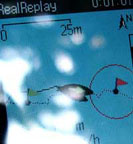
GPS Racing on your Mobile Phone
Paul has updated his list of mobile phone games using GPS or cell towers signals. Here's one of the latest additions: With RealReplay, you can choose the track you want to race on, select your opponent and start playing with everyone, without being dependent on their time.
Whether you're in a car, on a bike, or a sailing boat, all you have to do is tell your mobile phone to start recording. The phone will capture your every movement using GPS. Set checkpoints to define the key parts of your track. Your future opponents will have to pass them and get information on their intermediate time.
Others will find your track and race against you – even without you being present! If you'd like to pit your strength against your friends, inform them about the area where your race starts. They can then accept your challenge whenever they want.
On the display of your mobile phone you will always see your current position and route, as well as the one your opponent took when he recorded his race, which is played back as a replay. Developed by Mopius. [blogged by Regine on we-make-money-not]
Posted by jo at 06:46 PM | Comments (0)
November 21, 2005
Data Portraits

Social Maps of Time & Space
a series of aesthetic data visualization sketches as insightful 'portraits' of how people use data about them, through a visual representation of information patterns created during mobile conversations. one of the sketches investigates the spatial distribution & relationships between the places & users. the graphic shows the representation of the cities for each user based on how many times they were called & the total amount of time spent on during the conversations. currently, these graphics are seen as 3D environments that can be implemented as interactive visualizations, enabling users the control of a camera to browse the scene from a desired point of view (i. e. as if traversing a visual narrative). see also ispots wireless network visualization. [mit.edu] [blogged on information aesthetics]
Posted by jo at 02:58 PM | Comments (0)
UN predicts 'internet of things'
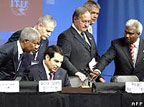
Ubiquitous Network Connectivity
""Changes brought about by the internet will be dwarfed by those prompted by the networking of everyday objects, says a report by a UN body. The study looks at how the use of electronic tags and sensors could create an "internet of things". The report by the International Telecommunications Union was released at the UN net summit in Tunis.
Thousands of delegates are discussing ways of narrowing the technology gap between rich and poor. "It would seem that science fiction is slowly turning into science fact in an 'Internet of Things' based on ubiquitous network connectivity," said the report. "Today, in the 2000s, we are heading into a new era of ubiquity, where the 'users' of the internet will be counted in billions and where humans may become the minority as generators and receivers of traffic."" Continue reading UN predicts 'internet of things' by Elizabeth Biddlecombe, BBC News. [via julianbleecker on eyebeam reblog]
Posted by jo at 02:19 PM | Comments (0)
fibreculture #6
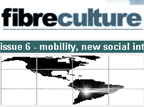
Mobility, New Social Intensities, and the Coordinates of Digital Networks
From stirrups to satellites, the invention of new forms of technical mobility has always created new intensities within the social. Each invention has also required a new idea of what it might be to be human, along with new tensions as older cultural practices and social forms are challenged. The contemporary mobility of digital networks is no exception. This issue of the Fibreculture Journal--edited by Andrew Murphie, Larissa Hjorth, Gillian Fuller and Sandra Buckley--is concerned with documenting, and beginning to think through, the new mobile intensities allowed by digital networks. "Intensity" here refers not just to the ubiquitous nature of mobile networks, or to the frequency of use of mobile communications. New intensities are like new forces erupting within the old - taking the social somewhere it has not perhaps been before. At the least, these intensities give established orders new energies to either resist or attempt to fold into established social practices and modes of thinking.
All of the articles in this issue deal with these new intensities. Much of this issue develops key ideas and documents new social practices involving mobile telephony. Dong-Hoo Lee documents the experiments with self-image and expression now allowed young Korean women by camera phones. Angel Lin affirms the continuation of older social practices amongst Hong Kong college students using SMS (in the use of SMS to maintain social ties with friends and family, for example). However, she also notes the increased possibility of political participation, and some interesting shifts concerning biligual textual practices - perhaps even a specific emerging bilingual identity within the community of SMS users. Lin also finds that there are gender differences concerning the way that young people in Hong Kong use mobiles (males tend to use SMS to meet females and new friends, for example). Lin wonders if, however, this will lead males into more 'social grooming' via mobile communications. This seems to be the case in the study of Norwegian young people, provided by Lin Prøitz. She finds a surprising amount of gender mobility within the frame of SMSing, even when the rhetoric outside of this frame maintains reasonably strict concepts of gendered behaviours. Lee, Lin and Prøitz all outline the role of desire in promoting proficiency and subtleties within SMS use.
Judith Nicholson gives an extensive account of the brief but influential 'flash mob' phenomenon, at the same time describing the political potential of mobile networks in terms of new "mobs". Here Nicholson draws attention to the use of mobile phones to coordinate the political momentum in the Spanish election of 2004, echoing 1981's 'night of the transistors'. Larissa Hjorth argues for the enfolding of older forms of communication within SMS and MMS use. Specifically she contemplates the shifting fragile intensities of the border between public and private in both SMS/MMS and the postcard. If there are new intensities of intimacy to be found in mobile networks, they are often mutations of older intensities.
Several articles move beyond mobile telephony, to discuss broader issues regarding networked mobility. Scott Sharpe, Maria Hynes and Robert Fagan consider the Internet as a forum for coordinating resistance to globalisation. As they point out, the Internet is already compromised as such a forum, as it is itself the forum of globalisation par excellence. They suggest rethinking what is possible in such a context. They give a detailed analysis of an older-style approach, that of the IUF 'superunion' educational web site, and a newer approach, that of activists, the Yes Men. In a surprising challenge to much analysis of globalisation and its discontents, Sharpe, Hynes and Fagan turn to Gilles Deleuze's analysis of masochism to point out the limits of the IUF approach. Rather than buy into the hegemony of representations as outlines by global powers (and some of their opponents), they argue for a humorous creation of new possibilities via the Internet. The latter involves an active seeking after new, more creative modes of thought, via which to nudge the new network intensities away from the monolithic nature of global Capital.
Nearly all of the articles in this issue are as contemplative and they are descriptive. The final three articles are centrally concerned with a thinking through of mobile intensities. Ingrid Richardson poses the concept of the 'mobile technosoma' - a return to thinking through the new kinds of bodily intensity associated with new technical intensities, and both bodily and technical intensities together. In the process she argues for a new medium specificity. Far from a convergence of media, Richardson comments that new mobile media forms, and their specific embodied contexts, require more in the way of specific analyses of their divergences.
Notions of stability, identity and place keep recurring in the discussion of convergent mobile media. Mobility, in particular the tactility and telepresence of mobile telephony, brings about an intense focus on the specificity of place and bodies. 'Where are you, now?' seems to be a refrain for many authors in this issue. The expansive yet normalising architecture of networks produces paradoxically an ethography of innovation and intimacy as shown in the four qualitative case studies from Seoul (Lee), Hong Kong (Lin), Melbourne (Hjorth) and Norway (Prøitz). In a delicately argued article grappling with this new sense of place, Rowan Wilken discusses a sense of place profoundly transformed by mobile networks, but not completely dissolved into them. Wilken points out that we simply cannot do without place, that place has always been a complex experience, and that, although there is no doubt that mobile networks transform place, this only makes it the more urgent to consider a new concept of mobile place - what he calls 'mobilitis loci'.This new place - a shifting place, a more intense and uncertain place, requires a new and more subtle politics - a central theme in many articles in this issue. This new politics of place is one that will have to consider the mutually infolding of virtual and actual at every moment of mobility. Wilken turns to some architectural/media experiments emerging from the events of the 1960s, such as those of the group Ant Farm, in order to give such infolding some historical context.
Felicity Colman and Christian McCrea take all these questions - very old and very new technics, new intensities and new fragmentation, new relations, the infinite deferral of networks and the way this deferral ties everything into a web - in the direction of what they call the 'digital maypole'. For Colman and McCrea, 'the maypole expresses the network’s torsion balance chart of power. The maypole topology is order through rhythmic tension and torsion, and in this sense its continuous binding of power makes the concept the paradoxical apostate of the network’s labyrinthine structure. The instinctual and biological ties of the etymological maypole enable us to focus upon specific power combinations of the network’s prescience'. There could perhaps be no better description of the problems and possibilities given to us by new mobile intensities, whether for those who are trying to mediate the shifts in social practices and cultural cohensions occasioned by mobility, or those attempting merely to analyse them.
We hope that it will be noted that there is a mix of approaches in this issue. In particular, the articles here range from the purely speculative to the mainly empirical. We are very happy that things have turned out this way. We began with a commitment to sparking conversation between different modes of analysis and response to these important issues. Such diverse studies exemplify the kinds of methodological constellations gathering around mobile phone use - and perhaps as importantly, examine the new relations between new, more mobile social intensities (such as biligualism in Hong Kong, gender fluidity in Norway) and mobile technologies as engaged with these intensities.
Biographies.
Posted by jo at 10:26 AM | Comments (0)
November 17, 2005
Cell Phone Culture Forum

TONIGHT @ MIT
Thursday, November 17, 2005, 5:00 - 7:00 p.m., Bartos Theater, MIT, Cambridge, Massachusetts.
Cell Phone Culure: Abstract--No contemporary cultural artifact embodies the genius and the disruptive excess of capitalism as clearly as the cell phone. Ubiquitous in most developed societies in Europe, the Americas and Asia, the cell phone has become a laboratory – some would say an asylum – for testing the limits of technological convergence. Less a telephone today than a multi-purpose computer, cell phones are game consoles, still cameras, email systems, text messengers, carriers of entertainment and business data, nodes of commerce. Particular age cohorts and subcultures have begun to appropriate cell phones for idiosyncratic uses that help to define their niche or social identity. Today’s Forum will examine the cell phone as a technological object and as a cultural form whose uses and meaning are increasingly various, an artifact uniquely of our time that is enacting, to borrow the words of a contemporary novelist, “a ceaseless spectacle of transition.”
Speakers
James Katz is professor of communication and director of Rutgers University's Center for Mobile Communications Studies, which he founded in 2004. Katz' research focuses on how personal communication technologies, such as mobile phones and the Internet, affect social relationships and how cultural values influence usage patterns of these technologies. His books include Machines That Become Us: The Social Context of Personal Communication Technology (Transaction, 2003, editor) and Perpetual Contact: Mobile Communication, Private Talk and Public Performance (Cambridge, 2002, co-edited with Mark Aakhus). He is also the author of Social Consequences of Internet Use: Access, Involvement and Expression (MIT Press, 2002, with Ron Rice).
Jing Wang is professor of Chinese cultural studies, and the head of Foreign Languages & Literatures at MIT. Her research interests are focused on contemporary Chinese popular culture and its relationship to marketing and advertising. She worked at Ogilvy in Beijing for two summers as a consultant for the Planning Department, and is currently finishing up a book manuscript [Brand New China: Advertising, Media, and Commercial Culture]. Wang's presentation on cell phone branding and youth culture in China is based on some of her work at Ogilvy. [blogged by Martin on Mobile Audience]
Posted by jo at 03:03 PM | Comments (0)
November 16, 2005
blubox + fotobox
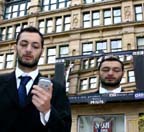
networked public art
"my current research title explores public art as a playful mediated urban environment. to clarify my terminology, I use >playful< to refer to a game-based situation. playing is fun, interactivity can be playful, playfulness mostly experienced by two or more people. i was cautious not to use the word >game-based< or as to describe my art practise as game design. i am however interested in addressing the notion of >game-play<, a term which was mainly used within the context of gaming during the development of video game design in the early 1980’s.
whereas the term >mediated< is not only referring to a space that has been modified such as by the installation of a variety of media tools but also in establishing a mode of >social interaction< that can be generated by such tools. referring to >public art< in the title is aiming to drive forward the debate of >new genre public art<. this development comes out of the more traditional practise of public art, concerning itself not only with the site-specificity of a public place but addresses the significance of audience in the development of the artwork. the emphasis is to widen and define a more >inclusive< mode of public art practice.
my >blubox< artwork is piloting an example of the above mentioned terms and practises and sits amongst 4 other case studies of artists using mobile and wireless media devices. >blubox< which is a systems-based art project, enables the public to network together via bluetooth to play with various designed mobile applications in a coordinated city environment. i am now inclined to change my research title to outline exactly what my art practise is researching: public art as a wireless network." [blogged by Maria N. Stukoff on mobilebox]
Via Locative:
"blubox is a unique bluetooth software and hardware application designed and developed by Maria N. Stukoff and Jon Wetherall for the creative use of mobile phones via bluetooth. as part of this development we are invited to trail the first phase of blubox technology - called fotobox an interactive installation with a public LED screen display - at the 3rd Salford Film Festival in
salford/manchester tonight...
...the next phase of blubox will platform a 3D game environment controlled and played via bluetooth technology. we aim to release the framework for this mobile phone game by march 2006..."
Posted by jo at 08:15 AM | Comments (0)
November 14, 2005
Shoot me if you can
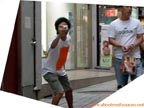
Replace a gun with fun
Shoot me if you can is an urban game inspired by first person shooting online video games. Replace a gun with fun, and shoot the opposing team with a cellular phone equipped with a digital camera. Participants; shooters are given a team color and phone number printed on the sticker. Shooters have to take a picture of the opposing team. If successful, she/he sends the picture to the opponent team member, via multimedia SMS system. Different rules exist for variations in game. Tactics are an important part as well as team work and understanding of the urban environment. This work is a commentary on abundance of digital image in our culture, desire to photograph and violence of surveillance camera. Active public participation in encouraged through website and the game. [via pasta and vinegar]
Posted by jo at 06:02 PM | Comments (0)
November 11, 2005
BUSY SIGNALS: TELEPHONIC ART IN MOTION
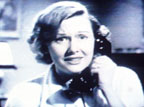
Bring Your Camera Phones!
Pacific Film Archive presents: BUSY SIGNALS: TELEPHONIC ART IN MOTION A two-part series: Wed Nov 16 & Wed Nov 30.
Though classified as a communications device, the telephone really is an instrument of culture. The phone has always shaped the way people relate by collapsing distance, reinventing conversation, even questioning the notion of privacy. But in recent years, especially with the advent of the cell phone, this device has been at the hub of a lively and inventive commerce in data delivery, fashion, recreation, intercourse, and even art. Now we have miniaturized movies dropped into waiting receivers; camera phones uploading stills to Web storage; ringtones merchandised as personal branding; text messaging coming on like a poetry slam. As usual, artists have answered the call, wringing minimalist melody from polyphonics, disrupting the everyday with creative pranks, or simply investigating the meaning of messages from nowhere. Join us for two evenings of Busy Signals: toney performance, cellular trickery, and films about phones. We promise, not a single wrong number.
Wed Nov 16, 7:30, Rotary: Live Performance by Marisa Olson.
Andy Warhol's riotous 1973 quasi-TV show Phoney stars his Factory luminaries, while Christian Marclay's Telephones stars just about everyone famous as he pillages Hollywood films for a montage about the anxiety of human intercourse. Also, works from the British Pocket Shorts, and a live telephonic performance by Marisa Olson. Plus many surprises!
On both evenings, Benjamin Hill and Carrie Burgener from UC Berkeley's School of Information Management and Systems will involve us in a projected mosaic using your camera phone images as raw material.
Wed Nov 30, 7:30, Touchtone: Live Performance by Jon Brumit.
Some filmmakers are closet phonephreaks, and tonight's program brings them
out of the phone booth: works by Eric Saks, Chris Sollars, Golan Levin, Lee Walton, and others. Composer Jon Brumit will conduct live telephonic musical auditions. Once again, bring your camera phones for a projected mosaic using your images.
The Pacific Film Archive theater is located at 2575 Bancroft Way, one block east of Telegraph Avenue, in Berkeley. for more info: 510.642.1412.
Steve Seid
Video Curator
Pacific Film Archive
2625 Durant Avenue
Berkeley, CA 94720-2250
510/642-5253
Posted by jo at 10:53 AM | Comments (0)
November 10, 2005
GeoDrawing
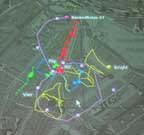
Drawing 8s in the Night
With GeoDrawing, a GPS-based mobile drawing game for the Amsterdam Museum Night, "teams would go into the city where they compete on who would (geo)draw the most beautiful "8" by walking with a GPS and a mobile phone. They could embellish their drawings with photo’s and video’s taken and submitted on the spot. The competitive element was creativity with both the drawing and the media. All submitted media were tagged to the geographic locations where they were taken. The player’s movements, tracks and media could be followed in real-time through a webbrowser." [via pasta and vinegar]
Posted by jo at 05:00 PM | Comments (0)
November 09, 2005
ORTPLAY@ORT
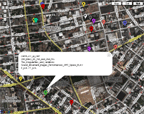
Can I order my eggplant?
ORTPLAY@ORT (330 Ellery St., 1st + 2nd Floors), as a part of BAP (Bushwick Art Projects)--Sat. Nov. 12, 2005, approximately 4 - 11 p.m.
music and sound, installed, performs. dance improvises. space gets invested. a climate occurs. text is produced and pronounced. projects on screen, an instigation, an animation, fashion. play. two floors, a rooftop, nesting spaces like Russian dolls unfold against and into each other. live. work. play.
o.blaat (Keiko Uenishi) premiers a new region-specific installation/live performance, 'Can I order my eggplant?' (berenjena). She will explore Chinese take-out restaurants on her bike in her Bushwick neighbourhood, desperately looking for her favorite 'eggplant'!
join our txtmob! if you have a mobile phone which can receive text messages, you can get instant updates & secrets from ORTPLAY throughout its performance/salon hours.
Posted by jo at 08:05 AM | Comments (0)
November 07, 2005
eMoto

Expressing Emotions in a Digital World
eMoto is a mobile messaging service for sending and receiving affective messages. The application extends on both the input and output channels when sending text messages between mobile phones. The aim is to convey more of the emotional content through the very narrow channel that a text message otherwise provides. Emotional communication between people meeting physically in the "real world" make use of many different channels, such as facial expression, body posture, gestures, or tone of voice, little of this physicality of emotions is used in a similar digital context. In eMoto users therefore use affective gestures to convey the emotional content of their messages which are then translated and communicated in colors, shapes and animations.
eMoto is a joint project between SICS, The Swedish Insitute of Computer Science and Stockolm University/KTH. The design team includes: Petra Sundström, Anna Ståhl, and Kristina Höök. [via information aesthetics]
Posted by jo at 10:51 AM | Comments (0)
November 04, 2005
The Air Around
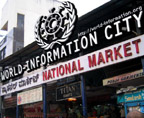
Invitation to Air Your Voice
Rajivan.Ayyappan invites you to contribute to his sound installation--The Air Around--from your geographical location.
"The Air Around is a radio/telephonic installation. It's made of an FM network that receives sounds through telephones—mobile, landline or internet phones—from around the world and integrates them into a soundscape. The installation has a central computer with a list of participants and their phone numbers. It would dial a number, remain open to engage the participant, hang up after a period of time, start another number and so on. These interactions would be transmitted to the The Air Around installation site.
The central theme of The Air Around is this: Access a whole lot of people who are in different locations and time zones through the internet and integrate them, live, into the new context of a synthesized soundscape installation. Our plan is to have a list where as many people are ready to take the call.
Therefore I want you to be in The Air Around's list to receive a call from the installation. What I would like to have from you is a 30 sec to 3 or 4 minutes of sound event that are voiced, played back or performed online by you. There are no rules for what you must do. Strictly no rules. You can just pick up the phone, identify your number or name and behave as if you have a microphone in hand. Your interaction with the call will be one of the sound events in the installation. It will be transmitted at The Air Around site.
The Air Around installation will be active for 3 days, 3:00pm to 6:00pm (India. Standard time zone: UTC/GMT +5:30 hours) starting 14th November and ending on 16th November 2005.
If you are keen tell us the dates & times when it would be possible to call you. The call will be made from the installation, to your land line or mobile. You will not be charged with any phone call rates. It will be paid by The Air Around project. Please mail me for clarifications and planning. I could send you more details regarding the procedure. Love to hear from you." Rajivan.Ayyappan rajivansa[at]hotmail.com
The installation is a part of World-Information City conference, organised by Waag Society (Amsterdam), Institute for New Culture Technologies (Vienna), Sarai CSDS (Delhi), Mahiti and Alternative Law Forum (Bangalore). [Related]
Posted by jo at 10:27 AM | Comments (0)
October 31, 2005
MobLab
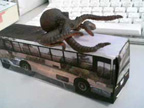
Origami Bus Pattern
For the MobLab [Related] bus adventure (a bus-gallery with on board artists-Mobnauts who challenge conceptions of public space), Kensuke Sembo and Yae Akaiwa from exonemo are filming sceneries from the window of the traveling bus. The Road Movie is made available for visitors to download from the internet.
Downloaded frames from the Web cam, which change every three to five minutes on the Web site, are complete with dotted lines for cutting and folding, and can be printed out and transformed into a paper sculpture of the Moblab bus with windows showing the captured images.
It's a way of bringing public space into private homes and computer cubicles, says Sembo. "We think using paper craft in this way is a sign of other space invading your own space."
Part of the MobLab project, touring Japan, Tuesday 18 October - Sunday 6 November. There's a report on what's going on at MobLab in Asahi and on the MobLab blog. Image. Also by exonemo: Shikakunomukou. [blogged by Regine on we-make-money-not]
Posted by jo at 12:23 PM | Comments (0)
Electrical Walks
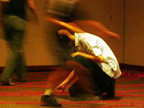
Amplified Currents
Electromagnetic induction is based on the sounds resulting from the mutual interaction of magnetic fields. Audio artist Christina Kubisch developed magnetic headphones with magnetic coils that respond to electrical fields in the environment. At first she tried to filter the hum of the electrical wires out of the headphones. But the increase and spread of "unwanted" electrically-produced sounds inspired Electrical Walks. With special, sensitive headphones, the acoustic perceptibility of aboveground and underground electrical currents is thereby amplified.
The palette of these noises, their timbre and volume vary from site to site. They are ubiquitous. Light systems, transformers, anti-theft security devices, surveillance cameras, cell phones, computers, elevators, antennae, navigation systems, automated teller machines, neon advertising, etc. create electrical fields that are otherwise undetectable.
With the headphones and a map of the area, upon which the especially interesting electrical fields are marked, the visitor can set off for a special kind of stroll in cities. The perception of everyday reality changes when one listens to the electrical fields; what is accustomed appears in a different context. Nothing looks the way it sounds. And nothing sounds the way it looks.
Electric Walks is part of Her Noise, an exhibition featuring 5 installations by artists who use sound as a medium to investigate social relations, inspire action or uncover hidden soundscapes, at the South London Gallery, 10|11|2005 - 18|12|2005. See also the interview of Christina Kubisch in Audiohyperspace. Related: aetherspace, Electroprobes, the Amazing All-Band Radio, etc. [blogged by Regine on we-make-money-not]
Posted by jo at 12:20 PM | Comments (0)
Digital Storytelling Festival
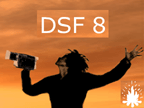
Scape the Hood
Just wanted to let everyone know about the 8th annual Digital Storytelling Festival in San Francisco Oct 7-10 hosted by KQED, public broadcasting. There will be a large locative media presence. The opening night party is the launch of the 'Scape the Hood mediascape, Using GPS-enabled HP iPAQs and software developed by HP Labs, participants will walk the streets and listen to the neighborhood stories, taking in the sights, sounds, and smells from both the physical and virtual worlds.
Peel back the layers of the neighborhood and explore narrative archeology with us. Hear the stories of Project Artaud, once the American Can Company, now transformed into a dynamic live/work space for artists. Experience the Mission Village Market, a bustling flea market on Saturday, but just a ghost of itself on Sunday. Transport to the environs long since erased by the overlay of the city.
Join us for food, fun and the release of the Scape the Hood mediascape, an experiment that combines storytelling and emerging technology by overlaying a digital landscape on the physical world.
The Digital Storytelling festival also includes a session on Situated Storytelling with panelists Nick West, Hana Iverson, Jo Reid, as well as a gaming session discussing place-based tools and techniques.
For more information on the mediascape: lrule[at]kqed.org
Leslie Rule
Project Supervisor
Digital Storytelling Initiative
KQED, Public Broadcasting, San Francisco
(cel) 415-225-1925
New website is up: www.kqed.org/dsi
Posted by jo at 09:29 AM | Comments (0)
October 27, 2005
CTHEORY VOL 28, NO 3
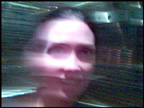
Infomobility and Technics: Some Travel Notes
"...With every step, I emit a smog of data; my journey is being archived too. Every few seconds, my device "pings" the network and receives a response; my location zone is then recorded in a log. I am conscious that I leave a trail of digital breadcrumbs for Maroc Telecom through the ancient city, that my position could be triangulated within metres based on my distance from nearby cell stations. I have become data "travelling through data landscapes" [5]; I have become a roaming subscription number. As my feet slide upon thousand-year old stone, I am at once travelling through networks and central servers back in Australia, my details handed on via invisible network handshakes across the globe, my trajectory recorded. I am not lost, I am identifiable; I am a string of information events..." From Infomobility and Technics: some travel notes, by Belinda Barnet, 1000 DAYS OF THEORY, CTHEORY, VOL 28, NO 3, Editors: Arthur and Marilouise Kroker. Also, Understanding Meta-Media by Lev Manovich.
Posted by jo at 06:05 PM | Comments (0)
Tool for Armchair Activists

Shout it Out
Troika, the U.K. design firm that brought us the SMS Guerilla Projector, has unveiled their latest project: Tool for Armchair Activists. Where the projector displayed the text of an SMS message on a distant surface, the Tool for Armchair Activists will shout it out loud. The rig can be strapped to a lamp post and thanks to an embedded mobile phone, can vocalize messages from anywhere.
The Tool for Armchair Activists is currently located in Troika's studio. Give them a shout by texting here: +44(0)7790272804. [blogged by Josh Rubin on Cool Hunting]
Posted by jo at 01:49 PM | Comments (0)
October 25, 2005
Morgan Schwartz
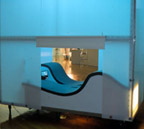
Chance Encounters, Deliberate Interventions
Pursuit of Happiness: Porta-Sky is an urban sanctuary and think tank for two. Periodic trips into the dark relaxation chambers of movie theaters became a routine survival technique for the subjects of modern society. In our post-modern world, where work and leisure have collapsed, the Internet has become a space of convergence. "Porta-Sky" is a physical corollary – a non-space, a hallway from here to there. Providing a personal view of a virtual sky, this video projection space offers alternate imagery to an anxiety-ridden sky. The unit features dual, synchronized DVD video projections, a deployable surveillance blimp and custom designed form-fitting reclining seats.

Situated in the Gallery@Green St (adjacent to the Green St. Subway station on the Orange Line in Boston, MA), Pressure was a site specific installation where computer controlled sensors manipulated the sights and sounds of daily commuting to address issues of accelerated culture and the evolving metaphors for speed and progress. Pressure seeked to explore the psychology and physicality of individuals in the contemporary urban landscape.
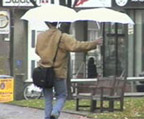
umbrellaSpace is an urban gesture. It is a design solution to a social problem. The intervention adjusts perceptions of boundaries and comfort held by observers on the street. This umbrellaSpace adopts the umbrella as a familiar, recognizable, urban form and recreates it. A permeable space of interaction is transformed from a private, individualized space. An individual in the urban sphere operates this new umbrellaSpace. He or she can choose to invite people on the street into this space. I’m interested in exploring the range of responses this intervention precipitates on the street: sociological, visual, performative. Schwartz is looking for people interested in operating the UmbrellaSpace as well as videographers and photographers interested in documenting the events.

Currently in development at the Berwick Research Institute and on exhibit at Glowlab: Open Lab, Whether/Weather consists of aerial beacons that are dispersed into the weather system. The beacons are helium powered with LED blinkers. Like seeds, these beacons drift with the wind and carry information/stories/memories that hopefully germinate wherever they land. Whether used by an individual or a large organization, the project explores the idea of memory and memorialization through ephemeral and participatory public art. The person who happens upon one of the beacons that has landed, will encounter a message and the option of logging into a website to find out more about where/why the beacon originated. They can contribute their own response at this point and even decide to re-launch the beacon. By logging when/where the beacons are launched and when/where they are found Schwartz is visualizating whether/weather patterns. He hopes that the project will function like a collective 'message in a bottle' and tap into romantic and poetic possibilities of communication and chance discovery.
Posted by jo at 10:02 AM | Comments (0)
October 19, 2005
SimpleTEXT

a cell phone enabled interactive performance by Family Filter
When: Wednesday, October 26, 2005 (8 pm); Where: New York University (NYU), Kimmel Center for University Life, 8th floor, 60 Washington Square south, Corner of 4th St and LaGuardia Place (on Washington Square Park). [Map] FREE TO ALL. Bring your Cell phone and Wireless Laptop! More info about the Handheld Event.
SimpleTEXT is a collaborative audio/visual public performance that relies on audience participation through input from mobile devices such as phones, PDAs or laptops. SimpleTEXT focuses on dynamic input from participants as essential to the overall output. The performance creates a dialogue between participants who submit messages which control the audiovisual output of the installation. These messages are first parsed according to a code that dictates how the music is created, and then rhythmically drive a speech synthesizer and a picture synthesizer in order to create a compelling, collaborative audiovisual performance.
SimpleTEXT focuses on mobile devices and the web as a bridge between networked interfaces and public space. As mobile devices become more prolific, they also become separated by increased emphasis on individual use. The SimpleTEXT project looks beyond the screen and isolated usage of mobile devices to encourage collaborative use of input devices to both drive the visuals and audio output, inform each participant of each other's interaction, and allows people to actively participate in the performance while it happens.Our purpose with the performance is to create the possibility of large-scale interaction through anonymous collaboration, with immediate audio and visual feedback. SimpleTEXT encourages users to respond to one another's ideas and build upon the unexpected chains of ideas that may develop from their input.
Support/Sponsors:
SimpleTEXT is created by Family Filter, a collaboration between Jonah Brucker-Cohen, Tim Redfern, and Duncan Murphy. It was originally funded by a commission from Low-Fi, an new media arts organization based in London, UK. This event is sponsored by NYU's Program Board and the "Handheld" show.
URLS:
SimpleTEXT
Low-Fi
Jonah Brucker-Cohen
Tim Redfern
Posted by jo at 03:00 PM | Comments (0)
October 18, 2005
ReachMedia ::
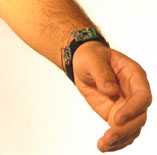
on-the-move interaction with everyday objects
Can we merge the virtual world with the physical world? ReachMedia--by Assaf Feldman, Sajid Sadi, Emmanuel Munguia Tapia--is a system for seamlessly providing just-in-time information about everyday objects. It is built around a wireless wristband with an RFID reader and accelerometers. The wristband detects physical objects that the user is interacting with, and retrieves relevant and personalized information via a smart phone. The user can then have a hands and eyes free interaction with the application by using a unique combination of slight gestural input and audio output. See Bracelet Navigates Net, Technology Review News. Download PowerPoint presentation. [via]
Posted by jo at 06:44 PM | Comments (0)
Three Crosses of Queensbridge
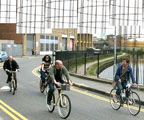
Acoustic Conversions
London-based artist Kaffe Matthews' Three Crosses of Queensbridge is a symphony for radios and bicycles. Replacing notes written on a musical staff are drawings on a neighbourhood map: providing various itineraries for visitors to follow on bikes, the artist broadcasts an electronic composition over a live radio signal. Cycling around the streets with radios receiving the broadcast, participants become performers and passers-by become accidental audience members.
The work is part of the Sounds like Drawing exhibition, at the Drawing Room, East London, 13 October - 20 November 2005. [via Regine on we-make-money-not]
Posted by jo at 06:18 PM | Comments (0)
October 17, 2005
SPECFLIC 1.0

dress for 2030
Public Launch October 28th, 2005; Pre-show 8pm, main event 9pm-midnight; Calit2 Courtyard, UCSD Campus.
Set in 2030, SPECFLIC's story is not just told, but experienced. Based on cutting edge science and engineering research, SPECFLIC 1.0 performs the social costs and benefits of accelerated progress. What type of future do you envision? Come be part of the public launch of this ongoing performative media project!
Bring wireless devices (laptops & cell phones). In honor of Halloween, dress for 2030.
Directed by Adriene Jenik; Additional text by author Kim Stanley Robinson. Featuring performances by Allison Janney, Ricardo Dominguez, Richard Jenik, Lisa Brenneis and Nao Bustamante. Innovative public interaction modules by Neil McCurdy, Andrew Collins, Robert Twomey, DoEat and Radioactive Radio. [Related post]
Posted by jo at 05:00 PM | Comments (0)
Songdo City
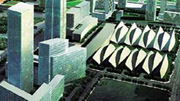
South Korea's "Ubiquitous City"
In what at first seems to be a throwback to the utopian urban visions of early 20th century futurism, South Korea is developing a "U-City" from the ground up, using bleeding-edge "ubiquitous" technology to monitor everything from citizens' medical records to garbage collection.
New Songdo City, being built on a man-made island 40 miles from Seoul, will feature pervasive computer technology throughout, driven by RFID tags and CDMA wireless communication. Although many Western observers would find the lack of privacy disquieting, Asian countries are more interested in the technological potential of such environments. Says John Kim, a Korean-American who is leading the planning for the U-City:
"U-life will become its own brand, its own lifestyle... [A resident's smart key] can be used to get on the subway, pay a parking meter, see a movie, borrow a free public bicycle and so on. It'll be anonymous, won't be linked to your identity, and if lost you can quickly cancel the card and reset your door lock.
"Residents will enjoy 'full videoconferencing calls between neighbors, video on demand and wireless access to their digital content and property from anywhere in Songdo.'"
With English as its official language, the city is designed to attract international business as a "free economic zone." The city will also feature ample open-space parkland and recreation facilities. The $25 billion project is slated for completion in 2014. Already, South Koreans are already applying for the chance to be among New Songdo's 65,000 residents. Sources: New York Times, Future Feeder. [posted by Brian on FutureWire]
Posted by jo at 09:17 AM | Comments (0)
October 15, 2005
odys
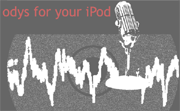
a non-linear video art series for iTunes and iPod
odys for your iPod is an extension of Nathaniel Stern's odys series, 2001-2004. The odys series consists of six short digital video poems/monologues for small screen viewing in an intimate gallery space. By stuttering between odys' actions and words, listeners construct his person. As he attempts to re-member, bringing the past back to his body and calling it his own, listeners attempt to piece together a story for themselves. Viewers are encouraged to re-visit and jump over juxtaposed media, and create a shifting collage of, and in response to, his person.
![]() odys for your iPod encourages viewers to download all six of the newly optimized video art pieces from odys.org, and into iTunes and their iPods. It allows for an even more intimate and physical relationship with his character, as well as a continually growing connection with each vignette.
odys for your iPod encourages viewers to download all six of the newly optimized video art pieces from odys.org, and into iTunes and their iPods. It allows for an even more intimate and physical relationship with his character, as well as a continually growing connection with each vignette.
odys' name comes from The Odyssey; he is the traveler, the seeker of home (Ithaca). Contrary to both Odysseus and hektor, odys is an unconvincing liar and horrible storyteller. His failed attempts to speak the traumatic past are often mistaken for nonsense. Ironically, odys’ poor endeavors at communication can now be largely consumed by a take-away transmission: online. odys' language of utterances is about the "spaces between." The space between words, between articulation and inarticulation, between Troy and Ithaca, between judgment and responsibility, and between speaker and listener.
Posted by jo at 11:29 AM | Comments (0)
October 14, 2005
Touch

Exploring User Centred Applications for NFC and RFID
Touch is a research project at the Interaction Design department at the Oslo School of Architecture and Design. Touch takes a user-centred approach to Near Field Communication (NFC). NFC is a technology that enables connections between mobile phones and real-world objects: bridging the gap between the real and the virtual. The project offers the possibility of radically simplifying existing applications and providing a new spectrum of local services through the mobile phone. At AHO we have multiple disciplines, including interaction design, industrial design, urbanism and architecture; a group with significant interest in the areas possibilities of NFC technology.
Posted by jo at 11:11 AM | Comments (0)
October 13, 2005
City Streets Transformed

Stories come to life in San Francisco experiment
We call this 'narrative archeology', because we're peeling back the layers of the neighborhood.
"Artists, writers, educators and others convening for this year's Digital Storytelling Festival in San Francisco will have the opportunity to participate in a unique storytelling experiment that uses emerging technology to merge the digital and physical worlds.
The experiment, called Scape the Hood, will transform a few seemingly drab city blocks into a landscape rich with sound, sights and stories. Using GPS-enabled HP iPAQ Pocket PCs and a location-based software platform developed by HP Labs, participants will be able to walk around the neighborhood and learn about its history and culture -- and about impending changes to its character.
Artists, mayonnaise and the ice cream truck
Over the course of four days beginning October 7, festival-goers may learn about how a painter's memories of his mother's death inspired a mural, or how artists transformed a canning plant into one of the nation's first live/work spaces or how a vibrant flea market brings together a diverse community.
Participants may hear the gurgle of a creek that ran where a street now lies or the jingle of the ice cream truck or the sound of trains that once carried corn oil to a mayonnaise factory that has since become a Starbucks.
"These stories aren't obvious from the streets," says Abbe Don, a researcher at HP Labs and executive producer of the project. "We call this 'narrative archeology,' because we're peeling back the layers of the neighborhood."
Previous HP Labs experiments
Scape the Hood follows on earlier HP Labs work on pervasive multimedia experiences. Working as part of the Mobile Bristol project, a test bed for technology and user research in mobility and future mobile services, scientists in HP Labs Bristol (UK) have recreated a series of these experiences including what is believed to be the world's first global positioning system "radio play."'
Researchers in Bristol, working with partners from Bristol University, developed the software used in Scape the Hood to place media files, such as sounds and images, in a location to blend in and augment a physical area. Associated software, loaded on to HP iPAQ handheld computers equipped with GPS satellite positioning, allows the user to access automatically the different media files as they move from place to place. An Open Source version of the software is available from Mobile Bristol.
Digital Storytelling Festival
Scape the Hood will take place on the streets surrounding KQED Public Broadcasting, which collaborated on the project through its Digital Storytelling Initiative with HP and a group of San Francisco Bay Area artists, storytellers and technologists including representatives from Antenna Theater, the Project Artaud artists' cooperative, San Francisco State University. The project was supported with a grant from HP.
The Digital Storytelling Festival, this year celebrating its 10th anniversary, aims to promote and evolve the art and practice of digital storytelling, offering workshops, panel discussions and speakers. KQED is the premier sponsor and host of this year's festival.
For more information, see the Digital Storytelling Web site." -- Jamie Beckett, Oct. 2005, Hewlett-Packard.
Jamie Beckett is managing editor of the HP Labs Web site and a veteran newspaper reporter and editor.
Posted by jo at 11:35 AM | Comments (0)
blinkenlights 2.0

Display your own Animations or play Tetris, Pong or Pac Man
the truly impressive blinkenlights seems to be finally running again for the next 2 weeks at the Alexander Platz in Berlin. blinkenlights is basically a huge 18 x 8 pixels monochrome screen based on computer-controlled lights that are placed behind each of the windows of a small skyscraper. users can create their own animations to be displayed, play Tetris, Pong or Pac Man against each other in real time via their mobile phone (call 0190-987654) or install a small software program to play via their computer instead. don't forget to watch the documentary movie to truly appreciate its effects. see also enteractive & internet facade. [via infosthetics]
Posted by jo at 10:18 AM | Comments (0)
Map to Sine
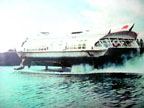
Cartiographic Translation in Sound Experienced by Russian Hydrofoil
Map to Sine is a two-part project by South African artist James Beckett (1977) as part of the international exhibition of contemporary art ADAM, produced by SMART Project Space. Map to Sine is a series of translations from image (cartographic) to sound, based on much of the fascination and formal study of the German Serialist musicians. Exercise such as the rotation of musical pattern, the arbitrary expansion of spacing and the imposition of shape applied directly from nature all formed part of their practice.
With the generous support of the transport company Connexxion, Beckett will host passengers to a live translation of surrounding information of the North Sea Canal, aboard a Russian Hydrofoil - a water rocket of eighties design. The Bulgarian performance artist Zhana Invanova (1977) offers a live explanation of the system in both Russian an English for the benefit of an educational composition.

Dates: Friday 14th, Saturday 15th, Sunday 16th October 2005; Times: Leaving Amsterdam 15:00hrs; 16:00hrs; 17:00hrs; Where do you catch the boat? Connexxion fast service between Amsterdam and Velsen-South (direction IJmuiden); Departing behind Amsterdam Central Station, just to the left of the ferry which crosses the North-Sea Canal; 25 minutes there, 25 minutes back. For more information: www.connexxion.nl
Posted by jo at 10:18 AM | Comments (0)
October 12, 2005
Placing Voices
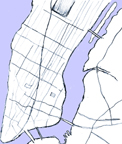
mobile-sound-blog
Voices of strangers heard in passing are key threads in the fabric of urban experience, subconsciously coloring our perception of a place. Yet such features are inherently unrepeatable, unique to every individual's listening experience, and, unlike a photograph, the location of a recording is difficult to recognize. Placing Voices, by Brian House, is a mobile-sound-blog software which uses the built-in sound recording feature of mobile phones (which is optimized for voice) and MMS messaging to place these fragments on a web-accessible map of the city as they occur. The objective is to express a map in terms of these experiences, to restore some claim to my memory of physical spaces over the transient voices heard within them.
Posted by jo at 05:03 PM | Comments (0)
October 11, 2005
Art Center Nabi + Seoul
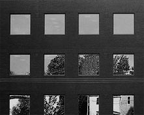
Urban Play and Locative Media
Emerging technologies such as wireless network, locative media, and pervasive computing have brought about new perceptions and social interactions in urban environment, transforming the ways we experience our cities. The concepts of space, time, and social relationship in urban environment are put in flux, while there are growing interests among communities of artists viewing city as social playground, public space, fluid canvas, and invisible layers of network.
Art Center Nabi is organizing an international workshop in partnership with the city of Seoul to initiate cultural and artistic projects exploring the theme of Urban Play and Locative Media.
On the cross platforms of art, design, technology, and social sciences, submissions are sought to deal with the issues of participation, play, process, and engagement in urban environment incorporating various locative and pervasive media technologies. We are looking for fresh and thought provoking insights and projects that are to reflect on but not limited to the critical issues as following:
-How new communication media opens up new ways to engage people in public domain?
-In what ways people participate and play in urban environment in dynamic formation of city?
-What kind of urban games are possible using emerging technologies? And what kinds of collective ‘vibes’ can be generated through these games?
-How can physical or virtual spaces in city be created, experienced and accessed by collaborative or competitive movement of people?
-How can diverse aspects of city whetollaborative or competitive movement of people?
-How can diverse aspects of city whether cultural, historical, social, or personal be reflected and shared through participatory gestures?
-How can disparate neighborhoods or different communities be linked, interact or confront in playful gestures?
* Area in focus: Myung Dong in Seoul
We are also initiating calls that manifest and explore diverse aspects of metropolis Seoul, specifically focusing on Myung Dong area. Myung Dong is one of the representative sites located in central Seoul with its historic background, highest land value and concentration of commerce and people. The city government is undertaking a major redevelopment plan that possibly includes new zoning and new IT infra, in order to make Myung Dong as the symbol of ‘New Seoul.’ For our purpose, Myung Dong can serve as a test bed in exploring the theme of ‘Urban Play and Locative Media’ with cultural and artistic approaches.Dong can serve as a test bed in exploring the theme of ‘Urban Play and Locative Media’ with cultural and artistic approaches.
More info on Myung Dong (in Korean):
http://www.myungdong.co.kr/md/main_down_1.html
Please contact us [urban2005[at]nabi.or.kr] to receive more information on Myung Dong in English.
Posted by jo at 04:57 PM | Comments (0)
Sensory Threads

Adding Sentient Knowledge to Machine Data
Sensory Threads aims to stimulate and inform a public debate on how personal biosensor data is collected and used in biomedical science. It will combine an artistic with an evidence-based approach, building and testing a prototype body biosensor network that uploads data to Urban Tapestries. This will allow participants to map experiential and emotional annotations to their readings – adding a whole new layer of sentient knowledge to machine data. It is intended to demystify how data is collected, what it produces and how we can correlate it to other factors affecting health such as environmental pollution.
By testing our ideas in real world situations we hope to investigate how empirical data collected from sensor readings attached to the body can be interpreted in a variety of different ways by different disciplines, revealing its limitations for healthcare applications and in the long term for the public. We aim to address the social, cultural, environmental and ethical concerns implied by the reliance on sensor data for understanding the complex interactions between the body and its environment...
Posted by jo at 03:19 PM | Comments (0)
Smart Artifacts
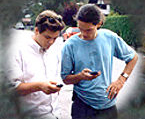
A Key Component of Pervasive Games
"Abstract: In this paper we present how smart artifacts can become a crucial element in pervasive games. In our vision, ‘magical’ artifacts play two roles: first, they are very attractive game gadgets (such as magic wands), second, they are able to handle the game (implementing the main game logic). We claim that in some cases no infrastructure would be needed to play a game. Artifacts, as we present here, are carried by players (or lying somewhere in the game area) and communicating through a wireless network. The vision has been inspired by a number of ideas and ongoing projects on smart devices and middleware platforms." From Smart Artifacts as a Key Component of Pervasive Games by Michal Roj; workshop paper for the Workshop on Gaming Applications in Pervasive Computing Environments 2004.
Posted by jo at 03:02 PM | Comments (0)
Picking Pockets on the Lawn:
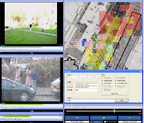
The Development of Tactics and Strategies in a Mobile Game
"Abstract: This paper presents Treasure, an outdoor mobile multiplayer game inspired by Weiser’s notion of seams, gaps and breaks in different media. Playing Treasure involves movement in and out of a wi-fi network, using PDAs to pick up virtual ‘coins’ that may be scattered outside network coverage. Coins have to be uploaded to a server to gain game points, and players can collaborate with teammates to double the points given for an upload. Players can also steal coins from opponents. As they move around, players’ PDAs sample network signal strength and update coverage maps. Reporting on a study of players taking part in multiple games, we discuss how their tactics and strategies developed as their experience grew with successive games. We suggest that meaningful play arises in just this way, and that repeated play is vital when evaluating such games." From Picking Pockets on the Lawn: The Development of Tactics and Strategies in a Mobile Game by Barkhuus, L., Chalmers, M., Tennent, P., Hall, M., Bell, M. and Brown, B.; Proceedings of UbiComp 2005, Tokyo, Japan.
Posted by jo at 02:54 PM | Comments (0)
October 08, 2005
MobLab
![]()
Japanese-German Media Camp 2005
[MobLab: Japanese-German media camp 2005]--A live art & communication project with young artists from Japan and Germany (MobNauts), who develop creative ideas with mobile technology while traveling Japan in a bus. Welcome to the mobile laboratory! 15 October, (Saturday) - 6 November (Sunday), 2005
MobLab ("Mobile" + "Laboratory", also "mob" = crowd, community, etc.) is the sum of projects proposed and developed by Japanese and German artists from various fields (=MobNauts) in a bus that, equipped with an array of digital mobile devices, functions as an information base. The time the MobNauts spend on the road will naturally lead to various creative collaborations. The bus travels to a number of host institutions throughout Japan, each of which hosts events that incorporate the bus and its passengers. At the same time, the MobNauts have the opportunity to exchange with local artists and other people. The flexibly set route allows for the spontaneous staging of events, which will be announced on the MobLab Website.
The bus is at once an intimate space in which the MobNauts spend time together, and a public space for transmitting global information. While traveling, the MobNauts will create occasions for individuals to meet, on both real and virtual levels, and connect to different local realities each time they stop and get out of the bus. MobLab aims to be a platform for practical experimentation in public born out of a revolutionarily "on-the-spot" form of meeting of individuals and media, and investigation into the possibilities implied by this public nature. The concept of dynamic information that interactively transforms by exchange between a variety of people has just begun to surface as a new layer of reality.
The MobNauts are artists from Japan and Germany who travel on a bus across Japan. These protagonists form the centerpiece of MobLab, as their respective projects developed with information networks and incorporating direct experiences with different realities and individuals unique to each station of the journey, will create a new sensibility to possible future directions for both society and urban spaces. A blog at Moblab website, written by the MobNauts, will give you insight to each MobNaut's experience. The MobNauts are also expected to engage in unique collaborations with each other.
*The latest action and contents will be updated at www.moblab.org, (also each artist has a blot), additionally the bus collect some data(temparature, humidity, GPS date, and other captured images) (bus as an interface) and these data will be provided on the web as an "open data", which will be used by any artists or creators for their furture creations, projects!
Feel free to contact us at:
info[at]moblab.org
for questions or information.
(This art project is part of Deutschland in Japan 2005/2006)
*Beside of the followings, the spontaneous staging of events will be announced on the MobLab Website.
Early October: Information system development and implementation, conversion of the bus in IAMAS, Ogaki
10/15 (Sat) MobNauts gathering at IAMAS
10/15 (Sat) - 10/18 (Tue) MobNauts camp
10/18 (Tue) eve party@IAMAS
10/19 (Wed) Seeing-off ceremony, travel from Ogaki to Tokyo
10/20 (Thu) Setting at NTT ICC
10/21 (Fri) NTT ICC(Bus parks at Tokyo Opera City)
10/22 (Sat) Fujino workshop for art (Kanagawa Pref.)
10/23 (Sun) Yokohama Triennale
10/24 (Mon) - 10/26 (Wed) Travel from Yokohama to Sendai
10/27 (Thu) Setting at Sendai Mediatheque, putting bus inside the building.
10/28 (Fri) - 10/30 (Sun) Sendai Mediatheque, The bus is displayed at ground floor
10/31 (Mon) - 11/2 (Wed) Travel from Sendai to Kansai
11/3 (Thu) Saito IMI Graduate School in Expo Park, Osaka
11/4 (Fri) Travel from Osaka to YCAM, Yamaguchi
11/5 (Sat) - 11/6 (Sun) YCAM, The bus is parked in front of the venue.
MobNauts (artists on the bus): exonemo(Yae Akaiwa + Kensuke Sembo), AGF, Sven Gareis, Daisuke Ishida + Ken Furudate, Stefan Riekeles Driver: Yosuke Kawamura (Artist and director of MOBIUM, www.mobium.org) Production assistant: Tomonaga Yamaguchi (MobLab)
The spontaneous staging of events: MobNauts will spontaneously stage events at many places apart from their individual project. We welcome anybody to attend this plan. Why not come along with your friends? Artists, painters and musicians are also welcome to help us for live performances and the painting of the bus itself!!
Host Institutions: The bus travels to a number of host institutions throughout Japan, each of which hosts events that incorporate the bus and its passengers. At the same time, the MobNauts have the opportunity to exchange with local artists and other people.
-Ogaki: IAMAS (Institute of Advanced Media Arts and Sciences + International Academy of Media Arts and Sciences) www.iamas.ac.jp
-Tokyo: NTT InterCommunication Center [ICC] www.ntticc.or.jp
-Sendai: Mediatheque /smt www.smt.jp
-Yamaguchi: Yamaguchi Center for Arts and Media /YCAM www.ycam.jp
Organizer: MobLab Committee, Goethe-Institut
Support: The Japan Foundation
Patronage: Embassy of the Federal Republic of Germany in Japan
Special cooperation: IAMAS, ICC, Sendai Mediatheque, YCAM, Transmediale
(Berlin)
Technical support: IAMAS (Institute of Advanced Media Arts and Sciences + International Academy of Media Arts and Sciences)
Support: Mobium, Yokohama Triennale, Fujino workshop for art, Saito IMI Graduate School
Sponsor: CAMPINGWORKS CO., LTD
MobLab Base:
Project director: Yukiko Shikata
Project manager: Miki Fukuda
Production assistant: Tomonaga Yamaguchi
Berlin Coordinator: Stefan Riekeles
Enquiries:
info[at]moblab.org
-------------------------
Posted by jo at 10:28 AM | Comments (0)
October 06, 2005
Virtual Raft Project + Regrets
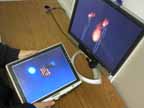
Two from UC DARNet
The Virtual Raft Project is a multidisciplinary undertaking seeking to create communities of believable autonomous characters that inhabit heterogeneous networks of computational devices. In particular, the project is interested in allowing the characters to break the plane of the traditional desktop screen. To this end, we have designed an interactive installation featuring a novel tangible paradigm for interacting with the characters. This paradigm involves the use of a mobile device, such as a Tablet PC or handheld computer, as a “virtual raft” by which a character may be transported among several virtual worlds. By enabling the character on the raft to react in real time to the raft’s motion in real space, this installation encourages participants to become physically engaged with virtual characters. We believe that this physical engagement can lead to an increase in the believability of the characters.
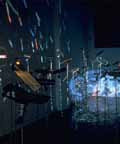
Share the Burden
Regrets consists of six to ten purpose-built mobile computer stations publicly located in and around Cambridge collect anonymously submitted regrets from the public to comprise a sociological database of contemporary remorse. Instant feedback to the individual user based on other contributors' similar concerns is algorithmically generated and calculated to 'share the burden'. Random selections and groupings of the regrets are made public across the city through existing signage and broadcast facilities. By engaging users in revelations of a problematic but constructive nature, we aim to bring specificities of individual lives, in this case personal regrets, into the realm of public debate, shared learning, and community.
About
The UC Digital Arts Research Network (UC DARNet) is an interdisciplinary Multicampus Research Group of University of California faculty who utilize digital media for cultural and theoretical research and in their creative production. As an ad-hoc planning group, UC DARNet has been meeting since 1997 to lay the foundation for a UC-wide program to facilitate collaborative research and teaching within a distributed digital arts and humanities community.
Culture is in the midst of an increasingly rapid shift to computer-mediated forms of creative production, distribution and communication. The role of digital media is fundamental to this shift. Digital Artists create a natural bridge across the traditional disciplinary divide between the humanities and the sciences. Interdisciplinary dialogue geared toward creative production and programmatic development will be facilitated by UC DARNet, providing an opportunity for critical engagement and conceptual dialogue between humanists, scientists, and those in the digital arts. A rotating group of UC digital arts and new media faculty act as principal investigators of UC DARNet and as the group's advisory committee.
GOALS AND OBJECTIVES
UC DARNet will, over a five year period, work to:
Serve to bridge counterproductive gaps between the arts, humanities, and sciences;
Enhance students' educational experience by providing access to faculty across the entire UC system;
Engage in experimentation and prototyping of distributed network environments which will be of value to a range of research interests and educational models; and, finally;
Help to establish UC as a leading institution for developing the new modalities of digital culture. UC DARNet will establish a strong UC presence outside of California through conferences, events, workshops, exhibitions, and ongoing online and offline dialogues. It is also actively planning to have research and development activities facilitate distance learning, and technology access to underprivileged middle school and high school children in the Southern California.
Funded by the University of California's Office of Research, UC DARNet pursues its programs and research activites with matching funding from the participant campuses, partner institutions and organizations, industry sponsors, corporations and foundations.
Posted by jo at 12:06 PM | Comments (0)
Train
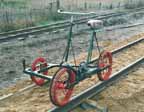
urban structure for aesthetic urban transportation
Underlying Train, by Helen Evans and Heiko Hansen, is the critical role of traffic and its industry for our society. Traffic has an impact for everybody; locally or remotely. The transportation industry and its economic power have a direct effect on pollution, large-scale urban planning schemes, political decision-making and the distribution of wealth. On a more semantic level, the car industry has successfully blurred the boundary between real functional needs and transportation dreams made possible through the acquisition of automobile artifacts. On the other hand many big research programmes seeking for alternative forms of public transport, for example Personal Rapid Transit systems carried out internationally could in most cases not offer a viable solution[1]. French sociologist, Bruno Latour reflected on the failure of France's most ambitious attempt to develop a working Personal Rapid Transit system and published the work as 'Aramis. Or, the Love of Technology'.
Between urbanism, vehicle design and automation the project Train is a research into the aesthetics of movement and travel. To locate the work we are using real, existing past, present and future, abandoned or at times unused railroad transportation systems; in Paris the railway track 'La Petite Ceinture'[2], which stopped its service in 1934 and the new tramway, which is partly completed. Both transportation systems are encompassing the city centre of Paris and are running parallel to the main traffic artery of Paris, the Periphérique, which is the circular city motorway that defines Paris and its Banlieu (the suburbs). It is this discrete line that splits the city into inside and outside. The Periphérique itself is pure automobile infrastructure and at peak times the traffic moves at walking speed.
Using existing, past and future railway transportation systems and Reverse Cultural Engineer them. Technological process feathers at its periphery. Similar to a fractal image an innovation is followed by other innovations, based on the original one. In a recursive environment like this we would like to go back to the origin, the innovation of railway and propose a different solution, here an individual perpetuated vehicle. In this way artistic process starts by going backwards to propose utilitarian design scenarios.
The Train project is a speculation into the language and aesthetics of transportation, particularly those that have become so ubiquitous and unquestionable for us. By proposing different real installations which would work within active or abandoned public transport structures and a series of conceptual designs a dialogue should be raised that engages in questions about the reality and "real fiction" of traffic.
Posted by jo at 11:45 AM | Comments (0)
Remote
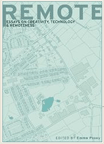
Creativity, Technology and Remoteness
Remote - Creativity, Technology and Remoteness, Bloc Press; edited by Emma Posey--Remote is a collection of essays by a distinguished group of academics, artists, business consultants, sociologists, philosophers, arts organisers and curators.
The essays which span a broad range of subjects, explore the recently integrated field of creativity, technology and remoteness. The publication considers the new geographies that information proximity and material distance have produced. REMOTE will interest professionals and students engaged with culture, technical innovation and social theory. Authors include: JAMES COUPE, ALAN DUNN, CAMILLA JACKSON, BRITT JORGENSEN JAMES GOODMAN, LUCY KIMBELL, CELIA LURY, ROB PEPPERELL MICHAEL PUNT, and PAUL TAYLOR.
Outline on the Collection of Essays in Remote
The ideas presented in the publication’s collection of essays reflect a spectrum of approaches to creativity, technology and remoteness and are given in two parts: In Theory and In Practice.
In Theory, part 1 of the publication, Lucy Kimbell explores the use of mobile networks and the inherent contradiction between mobility and connectivity - users are offered `freedom of movement` but are restricted within delineated spaces specified by the mobile networks. With the use of mobile technologies, interconnectivity is a spatial concern. In fact, technological devices reinstate our reliance on the physical world rather than the popularly asserted outcome of technology - ‘freedom from place’. Kimbell points out, essentially being `part of a global network requires us to be local, to be placed.` Here remoteness is possible only through close proximity.
By way of the transmitter/receiver, our social boundaries are broadened but only by being kept within physical, and very localised, boundaries. Paul Taylor notes that by accessing distant events our notion of ‘reality’ is extended – reality comes from and becomes further afield. He notes a TV voyeur’s startling inability to distinguish between a spectrum of events, whether they be banal such as reality TV and significant, such as news events. The coupling of mediated reality and the spectacle that is TV emphasises a circulation of ‘image over substance’. The image’s emotiveness enables us to be consumed within these distant realities.
Exploring what they term the ‘science of consciousness’, Robert Pepperell and Michael Punt look at the performative and theatrical spaces as metaphor for the extension of our experience beyond our immediate environment. Through the antics of a conjuror, they demonstrate how something concrete can be conjured from nothing and, in describing a ‘virtual’ event, they explore how presence can be signified by absence or loss. In their example technology extends our sense of embodiment rather than substitutes the space around us. Through the power of analogy we can function in various states at one time.
In her study on ‘brands’, Celia Lury explores a broader understanding of technology as information. In an information society, brands signify a particular organisation of relations between products and the multiplication of points of access in a system of products. In this example, objectivity of a brand is not fixed but is about change, endurance, and process. One of the key aspects of Lury’s approach is how branding, production and circulation of products are part of an extended, albeit intangible, network of an information capitalism.
In Practice, part 2 of the publication, James Coupe usefully draws together the idea of mobile technologies and actual as a means of understanding a user’s involvement in spatial terms. He explores through his own artwork, the use of cellular networks and how through a direct engagement with his work, users become components of a larger system. Coupe offers the term ‘system aesthetic’ as a representational scenario that attempts to explain this new form of artwork. This analogy help to visualise the extensions of activity that cannot all be experienced.
Camilla Jackson offers an exploration of various artists’ depiction of nature, some of who also use mobile technologies. Technology, brought on by the industrial revolution, is claimed to create a distance between people and nature. There is an apparent contradiction when nature is depicted as untouched and remote even though its very depiction indicates some form of entry. Remoteness, Jackson claims, is as much a state of mind as a physical location.
In their study of home workers, Britt Jorgensen and James Goodman explore the archetypal vision of the home-based teleworker. They reject the assumption that teleworkers are based in remote regions in remote communities - most live in an urban environment. As such, technology does not create or reduce distance as is popularly asserted. Tacit understanding is best expanded through direct and informal interaction. Although not explicitly, this often takes place through close working environments. Hence, technology does not substitute usual practice but it can extend it.
Utilising technology is only possible within an existing context of communication and participation and this is stressed by the ‘tenantspin’ project presented by Alan Dunn. The project’s focus is to engage a community of housing tenants in generating unmediated content for streaming within and beyond their immediate community. Dunn outlines, the outcome of using technology reflects existing community contexts and networks.
Notes on Contributors
James Coupe is Lecturer in Digital Art at London College of Music & Media, a Faculty of Thames Valley University. He is an artist who works with installation, electronics and digital media. His installation Digital Warfare Network (Project Phase Two) was exhibited at New Contemporaries 2001, and in 2002 he was awarded an Artsadmin bursary to develop a new project titled I, Robot. Phase Two of the I, Robot project was commissioned for Metapod 2003 in Birmingham. He has recently received major funding from the Arts and Humanities Research Board (AHRB) for a twelve-month research project to create a conscious artwork.
Alan Dunn is manager of the tenantspin Superchannel project by FACT, the Foundation for Art & Creative Technology. He initiated and curated The Bellgrove Billboard Project (Glasgow 1990-91) and Liverpool Billboard Project (1999), presenting new works by various artists with accompanying catalogues. Recent projects include honour (flyposted works, Rio de Janeiro) and not dead white man (jumpshiprat, Liverpool and Anthology of Art, Ars Electronica, Linz).
Camilla Jackson has been Programme Organiser at The Photographers’ Gallery, London since 2000 during which time she has curated the group show Re: mote (for more information see past programme on www.photonet.org.uk). Previously, she was Exhibitions Curator at Tate Liverpool. Publications include Willie Doherty: Somewhere Else (1998) and Up in the Air (2000).
Britt Jorgensen and James Goodman both work at Forum for the Future, a sustainable development charity and think-tank. Their work concentrates on the social, economic and environmental role of new communication technologies within the sustainable development framework. Britt previously worked in one of Scandinavia`s leading think-tanks, House of Monday Morning. Published work includes the Danish National Index of Competency (1998, 1999) and a paper on telework and sustainable development (2002). Published work by James includes a paper on mobile telephony and social capital (2003) and a review of Information and Communication Technology and sustainable development (2002). Britt and James are both currently working on a new book from Forum for the Future, Making the Net Work: Sustainable Business in a Wired World.
Lucy Kimbell led design teams helping mobile operators develop multi-channel services in 1999-2001. Her art commissions include the book Audit (Book Works, 2002) and the LIX Index (Channel 4/Arts Council/Film and Video Umbrella 2002). A recent art commission for Arttones.net involved creating a series of downloadable operator logos. She has recently been awarded an AHRB Creative Fellowship at the Ruskin School of Drawing and Fine Art, Oxford University. www.lucykimbell.com.
Celia Lury is Professor of Sociology at Goldsmiths College, University of London. She has written widely on the sociology of culture, including Cultural Rights (Routledge, 1993), Consumer Culture (Polity, 1993), Prosthetic Culture (Routledge, 1998) and Global Nature, Global Culture (with S. Franklin and J. Stacey, Routledge, 2000). She is currently writing a book on brands, also to be published with Routledge.
Robert Pepperell is a member of Polar (The Posthuman Laboratory for Arts Research) and a lecturer in Contemporary Art Theory at University of Wales College, Newport. He has published The Posthuman Condition (Intellect, 1995) and The Postdigital Membrane (Intellect, 2000) in collaboration with Michael Punt. A revised version of his first book, entitled The Posthhuman Condition: Consciousness beyond the brain, has also recently been published (Intellect, 2003). He has exhibited and lectured widely, and is currently working on a new book.
Emma Posey is an artist, writer and founding Director of Bloc, an art and new technology agency established in 1998. She has written widely on contemporary visual art and the effects of technology on place. Essay contributions to publications include Behind You in Between Us (2003) by artist Mariele Neudecker and Memory Maps in Distance Made Good (2002) by artists Jen Hamilton and Jen Southern. Her editorial work includes Further (2003), a catalogue to accompany Wales at the Venice Biennale, 2003.
Michael Punt is Reader at the University of Wales College, Newport, Deputy Director of the Centre for Advanced Inquiry into Interactive Art (CAiiA) and Editor in Chief of Leonardo Digital reviews. He has made over 15 films and published widely in the field of technology and its uses. His recent publications include a book-length study on early cinema Early Cinema and the Technological Imaginary, The Postdigital Membrane (Intellect, 2000) in collaboration with Robert Pepperell, Imagination, Technology and Pleasure: The Emergence of Cinema to be published by Intellect in 2003 and a CD Rom Radical Nostalgia.
Paul A. Taylor is Senior Lecturer in Communications Theory at the University of Leeds and formerly of the University of Salford. He is the author of Hackers: Crime in the Digital Sublime (Routledge 1999) and is currrently finishing Media Processes and Effects: Living in the New Plato`s Cave for Palgrave publishers.
To Book:
The publication cost £9.50 plus £1 for P&P. To order a copy email a request to remote@bloc.org.uk OR send a cheque for £10.50 payable to ‘b10c’ with your postal details.
ISBN: 0-9544935-0-8
Title: Remote: Creativity, Technology and Remoteness
Editor: Emma Posey
Publisher: Bloc Press
Price: £9.50
P&P: £1
Place of Publication: Bloc Press, The Cross, Gladestry, Powys HR5 3NX
Posted by jo at 10:22 AM | Comments (0)
Vectors

Issue #2: Mobility
Vectors: Journal of Culture and Technology in a Dynamic Vernacular is pleased to announce the launch of Issue #2: Mobility.
The Mobility issue of Vectors includes work ranging from a rhizomatic exploration of the historical representation of the Irish to a manifesto for creating academic superheroes. Featured scholars include David Lloyd, Jane McGonigal, the Labyrinth Project, Julian Bleecker, the Guantanamobile Project, Todd Presner, and Dietmar Offenhuber.
Vectors is an international peer-reviewed electronic journal dedicated to expanding the potentials of academic publication via emergent and transitional media. Vectors brings together visionary scholars with cutting-edge designers and technologists to propose a thorough rethinking of the dynamic relationship of form to content in academic research, focusing on the ways technology shapes, transforms and reconfigures social and cultural relations. Vectors is edited by Tara McPherson and Steve Anderson with creative direction by Erik Loyer and Raegan Kelly.
Posted by jo at 10:07 AM | Comments (0)
October 05, 2005
Mobile Phone Abusers Anonymous
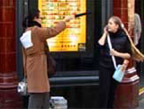
Town Crier
Mobile Phone Abusers Anonymous, a project by Hwa Young Jung, takes a critical look at mobile technology and how it influences social behaviour. She re-engineered a series of mobile phoness to challenge the idea of "being in touch".
One of MPAA performances is Town Crier. The Crier, equipped with micro-phone camera, transmits overheard mobile phone converstaions/visuals to the radio in the room. She picks conversations in public places to question the idea of inhabiting two spaces at once, and the effect on others who share our physical space. [blogged by Regine on we-make-money-not]
Posted by jo at 10:20 AM | Comments (0)
Transactions of CHI:
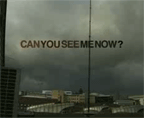
Can You See Me Now?
"We present a study of a mobile mixed reality game called Can You See Me Now? in which online players are chased through a virtual of a city by ‘runners’ (i.e., professional performers equipped with GPS and WiFi technologies) who have to run through the actual city streets in order to catch the players. We present an ethnographic study of the game as it toured through two different cities that draws upon video recordings of online players, runners, technical support crew, and also on system logs of text communication. Our study reveals the diverse ways in which online players experienced the uncertainties inherent in GPS and WiFi, including being mostly unaware of them, but sometimes seeing them as problems, or treating the as a designed feature of the game, and even occasionally exploiting them within gameplay. In contrast, the runners and technical crew were fully aware of these uncertainties and continually battled against them through an ongoing and distributed process of orchestration.
As a result, we encourage designers to deal with such uncertainties as a fundamental characteristic of location-based experiences rather than treating them as exceptions or bugs that might be ironed out in the future. We argue that designers should explicitly consider four potential states of being of a mobile participant – connected and tracked, connected but not tracked, tracked but not connected, and neither connected nor tracked. We then introduce five strategies that might be used to deal with uncertainty in these different states for different kinds of participant: remove it, hide it, manage it, reveal it and exploit it. Finally, we present proposals for new orchestration interfaces that reveal the ‘seams’ in the underlying technical infrastructure by visualizing the recent performance of GPS and WiFi and predicting the likely future performance of GPS." From Can You See Me Now? by Steve Benford, Andy Crabtree, Martin Flintham, Adam Drozd, Rob Anastasi and Mark Paxton + Nick Tandavanitj, Matt Adams and Ju Row-Farr
Posted by jo at 08:30 AM | Comments (0)
October 03, 2005
PLAN & Mixed Reality Laboratory
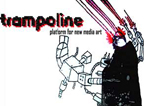
Discussion at Trampoline
The Pervasive and Locative Arts Network and Mixed Reality Lab, Nottingham University will be holding a presentation as part of TRAMPOLINE on Thursday 6th October at 8.30pm, Broadway Mezz Bar, Broadway Cinema, Nottingham. Representatives of PLAN and MRL Drew Hemment, Ben Russell and Steven Benford will be discussing their recent activities in encouraging discourse between artists, scientists and engineers in the field of pervasive and locative media. Come along to this discussion and find out more about the innovative research, development and artistic production which is being pursued in this area.
PLAN: A new international and interdisciplinary research network in pervasive media and locative media has been funded as part of the Engineering and Physical Sciences Research Council (EPSRC) Culture & Creativity programme. The network will bring together practicing artists, technology developers and ethnographers with the aim of advancing interdisciplinary understanding and building consortia for future collaborative projects. It will be of relevance to people working in the arts, games, education, tourism, heritage, science and engineering.
The network will stage three major gatherings. Each gathering will have a distinct form and focus: an initial workshop to launch the network and assess the state of the art; a technology summer camp for artists and technologists, including hands-on prototyping sessions using the facilities at Nottingham's Mixed reality Laboratory; and a major public conference and participatory exhibition as a central component of the Futuresonic 2006 festival in Manchester; as well as a supporting web site and other resources.
Mixed Reality Lab: The Mixed Reality Laboratory (MRL) is an interdisciplinary research initiative at the University of Nottingham. The MRL brings together leading researchers from the Schools of Computer Science, Engineering and Psychology to research mixed reality - new technologies that merge the physical and digital worlds. The MRL is focused on the development and application of mixed reality to visualisation, learning, knowledge management, control systems, ethnomethodological studies, leisure and co-operative work.
Posted by jo at 11:50 AM | Comments (0)
September 30, 2005
With Hidden Numbers
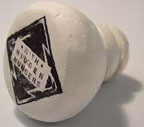
RFID Audio Mixer
With Hidden Numbers, by Meghan Trainor, uses embedded RFID tags to trigger an audio database and illustrate a technology that promises to become more prevalent in the coming years.
Dozens of handmade objects created with plaster, rubber and other traditional sculpting materials, each contain a unique number broadcast with a passive RFID tag. In addition the artist herself had a RFID tag embedded in her arm.
The system allows the audience to handle and scan the objects to activate audio triggers. Depending on the objects selected the result can be like a physical audio mixer, sometimes like a physical database query. The artist could trigger events with the tag in her arm as well, even when physically separated from the installation.
From the article The Accidental DJ in the WW Daily:
"When Trenor holds one of the objects near a scanner, it triggers a recording of an authoritative male voice reading numbers. When she waves the scanner over her arm, it plays "Hey Mamy, you sexy, you beautiful" from the rap song by Fannypack. Soon, she's holding two objects at once, dancing and interweaving samples of sound like a DJ scratching on vinyl."
The title references Marcel Duchamps’ 1916 sculpture With Hidden Noise which examined the concept of mass-production and was inserted with a noise making object unknown to Duchamp.
See also her Junkie's Little Helper. [blogge by Regine on we-make-money-not]
Posted by jo at 08:30 AM | Comments (0)
September 28, 2005
Fursicle Safurry

Telecommunications Wilderness
Fursicle Safurry invites people to enter a space of make-belief adventure through the wilderness of telecommunications. Upon calling the fursicle with their cell phones, users will receive a password composed of animal sounds such as gerrrs, wooww, barks, cries, and meaows. They then have to go to the head that is outside the installation. Staying on the phone they tell the password to the head which responds by sending a sound feedback and a blue light. If the head likes the password, the user gets to enter.
The voice on the phone asks users if they want to MATE, KILL, or RUN with the fursicle. According to their choice, users will be guided by instructions from the voice on the phone: they will have to touch and move in various ways with the fursicle, inventing the feedback as they move. While the user is interacting with the fursicle corresponding sounds and projected images are texturing the experience with rich animal sights and languages. By Dana Karwas and Liubo Borissov. [blogged by Regine on we-make-money-not]
Posted by jo at 06:49 AM | Comments (0)
September 25, 2005
form follows function
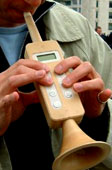
Behaviour Management
The 2002 Ideo case study Social Mobiles, in collaboration with artist/designer Crispin Jones explored the public/private domain and social impact of mobiles and the ensuing anger/frustation toward the intrusive nature of mobiles in public space.
Five phone prototypes each differently modify the user's behaviour to make it less disruptive by, for example, indicating when it's appropriate to place a call (the musical mobile), punitively inducing users to speak more quietly (the electric shock mobile), providing means for silent conversing (the speaking mobile -perhaps this should be the "emotive" alternative, since SMS is unobtrusive in terms of enabling silent communication). Documented concept prototypes of these and others are avaialble at the project site above.
Posted by michelle at 07:02 PM | Comments (0)
social networking
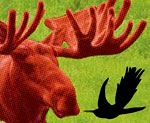
Call of the Wild
Inspired by the ability of the mobile phone to enhance polygamous activity through non-verbal, silent phone messaging, True Blue Love, a mobile phone social networking experience, is designed to explore the politics behind intimate phone-based relations.
Designed as a program for mobile phones, each participant enters into the program the characteristics of their ideal sexual mate, chosen from a series of preset selections (choose your animal mating habits from among hound, bird, ape, moose and pig and cross reference with your love metric for technocultural matchmaking!)
While the program is running, every time another phone comes within range, a love metric is calculated which is a representation of how close the incoming person matches the participant's ideal mate. If the match is close, the phone will emit a raucous mating call that will be unique to that participant. The concept behind the triggered mating calls is to attempt to undermine the silent technology of messaging and email with vocal communication that expresses the user's desires through a public broadcast, a broadcast that harks back to more primitive exchanges. The ridiculous sounds should function as social ice-breakers, and the unwilling couple may want to discuss what it is that they have in common that triggered the noise.
Posted by michelle at 04:34 AM | Comments (0)
September 22, 2005
How-To: Embed a wifi detector into a backpack strap
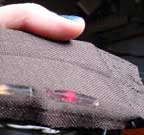
Integrated WiFi Sniffing
"Do you have a messenger bag or backpack you use regularly? Do you have a laptop or other device with wifi in said bag? Wouldn’t it be cool to integrate wifi sniffing into your bag and not have yet another device on your keychain? Today we will show you how to take an existing inexpensive passive wifi detector and embed it into the strap of your messenger bag or backpack.
Creativity is the key with this hack! If you have basic soldering and sewing skills, you can finish this mod easily in an afternoon. A flickr stream with annotations for this project is located here. Images with flickr annotations are clickable (i.e. if the image is associated with the flickr stream it will link to to it)." Continue reading at engadget.com.
Posted by jo at 06:53 AM | Comments (0)
September 21, 2005
The Digital Zoo

Telematic Interaction with The Big 5
The Digital Zoo, by radarboy, is reminiscent of tamagotchi nurturing, explores our emotional relationship with technology and how we relate to and treat wild animals within the context of a zoo. It was produced for the Low-Fi & Stills show in Edinburgh.
The five animals are Africa's Big 5: lion, leopard, buffalo, elephant and rhino - once the most sought after to hunt, but now mostly reduced to tourist icons. Visitor sends text message to the Zoo. The message is interpreted and forwarded to the radarboy server. The relevant animal and action is invoked and a response is written to the database. SMS confirmation reply to sender.
The Big 5 can be fed, played with, and nurtured into adulthood. Neglect will lead to a decline in health and ultimately their death. Their well-being can be monitored via SMS in the gallery and via the internet at home. Try it! Click here and send a message to a lion. [blogged by Emily on textually.org]
Posted by jo at 05:41 PM | Comments (0)
In The Weather
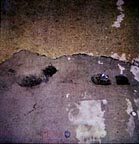
Self-Guided Walking Tours
A map of a walk records the memory of a singular experience. The map provides a route; when directions given by another are followed, the route becomes a path. Walking becomes an exploration of the city at once private and shared.Melinda Fries and Bonnie Fortune share an interest in exploratory walking and have collaborated as In The Weather since 2004. This year they published In the Weather self-guided walks/Chicago, which includes walking directions by 16 Chicagoans. The booklet is dispensed freely at 10 locations throughout Chicago.
In The Weather--included in in the current exhibition URBAN / RURAL / WILD--is seeking submissions to be included in an online database, intheweather.org, from which users may download Walking Directions. Walking Directions can be from/to any place and the walk can be of any length. Walking Directions can be given in writing, drawings, photographs, or other forms; maps are encouraged. To submit a set of Directions or to ask questions, please send email to: submit[at]intheweather.org. [via eyebeam reblog]
Posted by jo at 09:47 AM | Comments (0)
You're kidding me!?

Tools for the Very Insecure
is a wireless voice-based service that helps users simulate a You're kidding me?! mobile phone conversation. The automatic service is designed to assist people at conferences, gallery openings and other places where being socially disconnected is no fun. After dialing the service number, users can choose between two types of conversations: a 'casual' or an 'important' conversation. The user is subsequently guided through a series of words and sentences that - when being repeated - makes it look and sound like a real conversation is taking place!
You're kidding me!? is designed for the INDEX:2005 conference in Copenhagen by 1508 A/S (the design agency that I am working for). The service is based on a conceptual artwork called dialogue that I created some time ago. Now, in collaboration with my colleagues at 1508 the concept has been refined and is fully operational! Try it out: +45 7015 1508 (local charge). [via guerrilla innovation]
Posted by jo at 09:10 AM | Comments (0)
September 19, 2005
Digital Derive & Redefining the Basemap

Basemaps as Sites for Reinvention
Kazys Varnelis from the Annenberg's Networked Publics research lab forwarded me this link that he's found on Archinect. The Digital Derive project will be shown at the M-City exhibition (curator: Marco De Michelis) in Kunsthaus Graz, Oct 01, 2005 - Jan 08, 2006.
"Digital Derive harnesses the potential of mobile phones as an affordable, ready-made and ubiquitous medium that allows the city to be sensed and displayed in real-time as a complex, pulsating entity... Digital Derive (re)presents the city displayed simultaneously in the Kunsthaus Graz and in a publicly accessible website... The Real-Time City Map will register and visually render the volume and geographic source of cell phone usage in Graz, thus showing a different layer in the use and experience of the city. Furthermore the users of A1 Mobilkom Austria in Graz will be tracked anonymously by 'pinging' their cell phones as they move through the city. The record of this movement will be collected, processed and finally displayed as set of dynamic traces showing their paths through the city on the same map..."
The rendering of the peaks & valleys of cell phone usage here is reminscent of some oceanographic map of a deep sea trench, as if the city were drowned in a tsunami of spectrum (immersive media?).
As astonishing as this image is, the Digital Derive project arguably reproduces a static notion of urban space by using a conventional GIS overlay aesthetic. As Ali Sant notes in a text she has written about her Trace project, a collaboration with Ryan Shaw, entitled Redefining the Basemap:
"Current collaborative mapping projects using locative media technologies have often overlooked the conventions of the basemap as a site for reinvention. Although these projects imagine alternative organizations of urban space through the way it is digitally mapped, they remain bounded by datasets that reinforce a Cartesian and static notion of urban space."
Thus reading the Digital Derive through Ali, perhaps the next big step for locative projects interested in mapping how a space is actually practiced will be to deform the base map into a kind of cartogram of cell usage.
Here I consider those famous purple maps of the last US election as deeply inspirational. [blogged by marc tuters on USC Interactive Media] [Related]
Posted by jo at 12:23 PM | Comments (0)
Signs of the Times:
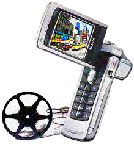
Mobifilms and Ringtone Vending Machines
"Nokia is offering five online lessons in making movies for mobile phones. [Via Picturephoning]. And “Ireland will be the first European market to see a new generation of coke-vending machines, which will also sell mobile phone top-ups, ringtones and music. UK-based Inspired Broadcast Networks has signed a deal with Coca-Cola to distribute digital content from its soft drink vending machines. The vending machines will be linked to Inspired's online content management system using DSL broadband connections. The content will be transferred to the purchaser's phone through their mobile operator's network, or may also be transferred directly to the phone using Bluetooth. In the future, the company plans to allow people to collect their content by plugging their phones' memory cards into a drive on the coke machine.” [The Register]" [blogged by John on Ratchet Up!]
Posted by jo at 12:08 PM | Comments (0)
The Hunt for Mr. X:
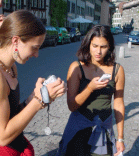
Bringing a Board Game to the Street
"Scotland Yard" is a popular board game in Europe, where players have to catch Mr. X. Mr. X moves hidden through the streets of London. He has to show his location every 4th turn. The detectives know which kind of transportation he uses. With this information they have to figure out his position and surround him. When the detectives catch him, they win, if Mr. X escapes he wins.
Bringing the game to the street: transformation into a live action game 4 groups with 4 players hunt Mr. X and Mr. Y in the old city of Berne. Hunting by MMS: Every ten minutes, Mr. X sends a picture of his current location. The detectives have to identify the position by the pictures and find Mr. X. They catch Mr. X by taking a picture of him." From "The Hunt for Mr. X: Bringing a Board Game to the Street [PPT] by Niklaus Moor (Swisscom Innovations). [via techkwondo] [Related]
Posted by jo at 11:51 AM | Comments (0)
CuteXdoom
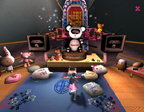
Society's Obsession with Fabricated Characters and All Things Cute
CuteXdoom is a mod for the PC game Unreal Tournament 2003 that explores society's obsession with fabricated characters and all things cute, or kawaii. The goal of CuteXdoom is to become a member of the toy worshipping Yumi-Co cult and gain access to their temple by collecting enough toys to present as an offering to the robotic panda guru. (This sort of exploration of society's addiction to cuteness reminds me of Satoshi Kon's compelling anime series Paranoia Agent, which can be seen in the U.S. on [adult swim].) Anyway anime referencing aside, CuteXdoom was created by Yumi-Co, a collective of game designers, illustrators, sound artists and coders that was founded by Anita Fontaine. She worked as the art director and designer for this project and currently works for the Mobile Digital Commons Network in Canada. She is also participating in the Toytakeova exhibit this fall in Australia. I really could go on and on, but I'll end it with this last plug: also check out some of the locative media projects she's worked on: Ghost Garden and Global Heart Rate. [blogged by Carol T Chung on Cool Hunting]
Posted by jo at 10:39 AM | Comments (0)
Trampoline

Final Call for Submissions
Trampoline is dedicated to the promotion of new technology art and artists and aims to present cutting edge art in an informal atmosphere; encouraging new artists to exhibit work to a real audience, whilst providing a platform for established artists working in new directions. Trampoline began life in 1997 as Nottingham's first ever platform event for new media art.
This one day/night event is based in Broadway Media Centre, the creative hub of Nottingham. The facilities/spaces which Broadway has to offer include: large lively bar/café space, a smaller bar space, foyer, cinema screens and projection onto the outside of the building.
In the two forthcoming events we hope to expand the reach of Trampoline, no longer restricting it to one venue but encouraging participating artists to explore the potential of public spaces around Nottingham too.
October Trampoline – in conjunction with PLAN. This Trampoline event will focus on locative and pervasive media. There will be an examination of how new media is entering the fabric of our everyday lives, installing itself into to every part of our environment, the new dimension of our reality, the dimension of data. Site will also be a particular concern, in order to investigate notions of locative and pervasive media more fully we would encourage artists not only to consider the space of Broadway cinema as the site for their proposed work but to also examine spaces beyond this, in particular public spaces around Nottingham. Extended Deadline for Submissions: September 23rd
1st December Trampoline – Opening event for Radiator Festival December’s Trampoline event will reflect the core concern of the Radiator Festival this year, the relationship between performance and new technology. How can the body and new media connect with each other? We are calling for work that not only investigates the relationship between the performer’s body and new technology but also the body of the viewer, the audience. Deadline for Submissions: November 7th
We encourage proposals of work in all formats, as long as they reflect upon elements of new media. Video, installation, performance, web art, computer programmes, music and more are all welcome. We would also like to encourage initiatives which give the Trampoline audience an insight into the workings of new media and an opportunity to develop their own small creative works, for example in the format of workshops/group activities.
If you have any queries please contact Emma Lewis, Trampoline Coordinator emma[at]trampoline.org.uk +44 (0)115 9559956
Download an application form, and send submission material to: Trampoline Submissions Broadway Cinema 14 - 18 Broad Street Nottingham NG1 3AL UK (include stamped addressed envelope if you wish your material to be returned).
Posted by jo at 09:54 AM | Comments (0)
September 18, 2005
Glowlab News
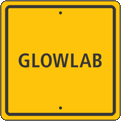
GLOWLAB.04 :: FORGOTTEN and more
GLOWLAB.04 :: FORGOTTEN--Our latest issue is now online, and features some great new projects by Glowlab and guest artists, including:
:: kanarinka--12 Inches of Weather; Weather experiments on the body :: Sharilyn Neidhardt --Into the Groove; Interview with musician and audio archivist Steve Espinola :: Emily Conrad--Lost Phone: 18,900 Google Entries; Lost phone in the back of New York City taxi. Last Friday, around 1am. It must happen all the time :: Sal Randolph--whereyouare; Join in documenting the endangered, lost, or ephemeral beauties of your neighborhood. whereyouare is a participatory experiment, mixing collaborative multimedia, folksonomy tags, and rss feeds to build a portrait of places that matter to us :: Holly Tavel--Xanadu Revisited; Two years on, Xanadu gives up the ghost.
With special guests: Leah Dilworth :: Lost and Found at the City Reliquary; Tour the City Reliquary, Brooklyn's store-front museum dedicated to civic pride and all around good neighborliness; Tianna Kennedy :: On Forgotten, Neglected, and Discarded Objects and Subsequent Utopian Projects Or, the Meandering Story of EV, which recounts the amusing first sally of the ingenious crew as they dragged a thing that had been forgotten from the Bronx to the Lavender Lake; Michele Gambetta :: The Rider Project 2005; The RIDER Project has been created by artists who rent a Ryder Company truck, retrofit it with walls, gallery lights, a generator for electricity, and create a mobile gallery to display art throughout N.Y.C.; Petr Kazil :: Urban Spooklights; Who wouldn't get excited by the appearance of a mysterious light in the distance - in a place where no light is expected?
Glowlab: Open Lab, curated by Christina Ray: A nine-week-long psychogeography festival and exhibition; October 14 through December 11.
Please join us this fall as we head up to Boston for our show at Art Interactive, a non-profit arts space dedicated to contemporary, experimental and participatory artwork.
In Fall 2005, Art Interactive is conducting a nine-week-long experiment. We have invited artists affiliated with Glowlab, a network of psychogeographers, to use the Central Square neighborhood as the site of their research and fill the exhibition space with the results of their investigations. PSYCHOGEOGRAPHY, a term coined by the Situationist International in the 1950s and appropriated by contemporary artists, is used to describe projects that produce affect in relation to the geographic environment. Rather than making maps in the traditional geographic sense, these artists utilize maps and geography to conduct located experiments with (among other things) people, trash, bikes, clothes, the sky and the gallery space itself. Often making use of mobile technologies and existing in the hybrid spaces of the Internet and the physical world, their projects produce new understandings of location and identity as shifting, fluid, singular and irreducible.
Central Square, Cambridge, MA, will never be the same again. Join us for nine weeks of public walks, talks, tours, workshops, concerts, group bike rides, and other ways of exploring the Central Square neighborhood. Each weekend of the festival, different Glowlab artists will be present to lead participatory public events inside and outside the Art Interactive space. Visit the online schedule at http://www.artinteractive.org/calendar for more details about upcoming events or email info[at]artinteractive.org.
Opening Reception: Friday, October 14th, 2005, 6 - 9pm
Gallery Hours & Location: Art Interactive is open Saturdays and Sundays from 12 - 6pm or by appointment. The gallery is located at 130 Bishop Allen Drive, at the corner of Prospect Street in Cambridge, MA. For more information, please contact info@artinteractive.org, call 617-498-0100 or fax 617-498-0019. Press release with downloadable press kit:
http://www.artinteractive.org/shows/glowlab/glowlab_press.html
Posted by jo at 10:21 AM | Comments (0)
September 16, 2005
Wireless London

Addressing Creative Possibilities
In the last five years usage of wireless networks worldwide and in the UK, especially in London, has grown enormously. Community networks, commercial providers and public sector initiatives have been turning to this now-generic technology to provide themselves with local, low-cost networks. As this technology hits the mainstream, expanding the potential scale and utility of these networks, Wireless London addresses the creative possibilities, policies, practicalities and potential of Wireless London.
We see that mobile, pervasive computing will fundamentally change how we work, play and communicate. We want to be able to modify that environment creatively, adapting and customising it as a public space. By researching and developing open systems and tools, and providing models for how these technologies can be deployed, we aim to create a demand for high technical and social standards by raising people's expectations and understanding. See Wireless London: NodelSoftArchitecture...
Posted by jo at 10:44 AM | Comments (0)
Grand Finale_Yellow Arrow:
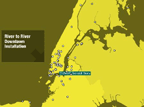
The Secret New York
Yellow Arrow: The Secret New York is a public art project that celebrates the extraordinary details of the city that often pass unnoticed. Upon encountering a Yellow Arrow, the public participates by calling 212.201.2005 from mobile phones to hear an audio message that tells a secret story about the location where the arrow points.
This Saturday marks the Grand Finale with 20 Yellow Arrow sculptures visible across Manhattan and Brooklyn from 12-8 pm, at places like: Union Square, Chinatown, The Lower East Side, East Village, Lower Manhattan, Williamsburg and DUMBO. This is is a fantastic opportunity for people to experience some of the most compelling content of the summer in one single day.
Over the summer the project has touched a lot of people in all 5 boroughs and there are some very fun stories about bringing it all together. Creators of the project will be leading two behind-the-scenes tours to share these anecdotes and insights. Tour 1_Lower Manhattan meets at Battery Park at 12 pm and will visit 5 nearby Yellow Arrows. Tour 2_East Village meets at corner of Ave. B and E. 7th St. at 6:00 pm and will visit 6 Yellow Arrows, grab dinner in the area and head to the after-party.
The day-long installation and tours will be followed by a celebration at the Lotus Lounge (35 Clinton St at Stanton), with drink specials, video projection and a sound installation on the street.
Grand Finale, Downtown Manhattan, Williamsburg and DUMBO; 12-8 pm; Full map available.
Tours:
Tour 1_Lower Manhattan 12 pm at Battery Park
Tour 2_East Village 6 pm at corner of Ave. B and E. 7th St
Grand Finale Party--Lotus Lounge, 35 Clinton Street at Stanton, Lower East Side, Manhattan.
Posted by jo at 10:22 AM | Comments (0)
September 15, 2005
TECHSTYLE NEWS
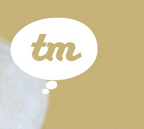
Issue #53 - September 15, 2005 [excerpts]
Techstyle News is a free monthly newsletter providing summaries and commentaries on stories related to the next generation of mobile technology and style, produced by Thinking Materials.
APPLE UNVEILS NEW WEARABLE MP3 PLAYER: Apple has introduced the iPod nano, a completely new iPod that’s thinner than a standard #2 pencil and weighs only 1.5 ounces. The iPod mini replacement is available in 2GB ($199) and 4GB ($249) capacities in either white or black designs. The ultra-compact device features a high-resolution color screen, Click Wheel, and offers up to 14 hours of battery life. Apple has announced several new accessories for the device, which the company calls the “most fashionable and wearable iPod ever.” The new gear includes lanyard headphones, which integrate the headphone cables into the lanyard; armbands in five colors, including gray, pink, blue, red and green; a set of silicone “Tubes” in five colors, including pink, purple, blue, green and clear; and dock.
PHILIPS SHOWS PHOTONIC TEXTILES: Philips Research has shown prototypes of its photonic textiles—fabrics that contain lighting systems and can therefore serve as displays. The researchers have managed to integrate flexible arrays of multicolored LEDs into fabrics without compromising the softness of the cloth. The LED substrates are also capable of displaying Windows Media Player-style visualisations and feature responsive sensors so that the patterns of diffused light displayed can change according to how they are handled.
SIRIUS ANNOUNCES NEW WEARABLE MUSIC PLAYER: Sirius Satellite Radio has unveiled its first wearable music player. The new device includes enough storage capacity for up to 50 hours of recorded Sirius content or audio files. Unlike XM's portable device, MyFi, Sirius's product will not be able to receive satellite signals on the go. Rather, it must be plugged into a docking station. The move comes as satellite radio players try to expand from the auto market. Both Sirius and XM have online streaming music services and "plug and play" devices that let users hook up to Sirius both in their cars and in their homes.
RESEARCHERS CREATE POWER BACKPACK: Scientists at the University of Pennsylvania have developed a backpack that can actually generate electricity as its wearer walks. The suspended-load backpack can generate about seven watts of power solely via the motion of the person carrying it, which is achieved by detaching the pack’s frame from the load it carries and harnessing the energy generated as the load moves up and down on vertical springs. The actual energy generated depends on the weight of the load and how fast the person walks, but is usually enough to charge several handheld devices at the same time. The pack is reportedly comfortable to wear, and doesn’t weigh significantly more than a conventional pack.
EVENTS
ISMAR 2005 IN VIENNA: Mixed Reality and Augmented Reality are highly interdisciplinary fields involving signal processing, computer vision, computer graphics, user interfaces, human factors, wearable computing, mobile computing, computer networks, distributed computing, information access, information visualization, and hardware design for new displays and sensors. MR/AR concepts are applicable to a wide range of applications. The International Symposium on Mixed and Augmented Reality, ISMAR, is the premier forum in this field and will be held in Vienna on October 5-8.
WICON AMERICAS IN SANTA CLARA: Wireless Connectivity (WiCon) Americas, to be held in Santa Clara on October 5-6, is the one stop shop for wireless connectivity solutions in the US. It's a high-level conference and exhibition to address leading wireless technologies such as Bluetooth, NFC, UWB, Wi-Fi, WiMax and ZigBee and the huge potential of the wireless networking applications they enable. The conference will focus on the convergence and co-existence of these technologies and their integration into mobile and computing devices. In addition the show will highlight some of the real life applications of these technologies in key vertical markets.
SIGDOC 2005 IN COVENTRY: SIGDOC 2005, to be held in Coventry on September 21-23, will provide an opportunity for the exchange of information related to exciting new research and empirical results in areas such as documenting mobile, pervasive and component-based systems, information design for delivery in a pervasive-computing environment, design for new communication media, culture and communities communicating in a pervasive environment, gathering and presenting information from pervasive computing networks and usability of information in a pervasive environment.
MOBILE HCI 2005 IN SALZBURG: MobileHCI provides a forum for academics and practitioners to discuss the challenges, potential solutions and innovations towards effective interaction with mobile systems and services. It covers the analysis, design, evaluation and application of human-computer interaction techniques and approaches for all mobile computing devices and services. The conference will be held in Salzburg on September 19-22.
CEATEC JAPAN 2005 IN TOKYO: CEATEC JAPAN is the largest international exhibition in Asia for the technology and electronics sectors, including the fields of imaging, information, and communications. Experience all the recent trends in IT and electronics, from technologies that showcase futuristic lifestyles to products that will be on store shelves during the upcoming winter season, including several new wearable devices. The fair is held in Tokyo on October 4-8.
Posted by jo at 11:05 AM | Comments (0)
MOBILE MUSIC TECHNOLOGY
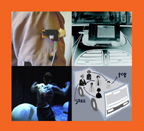
New Forms
THIRD INTERNATIONAL WORKSHOP ON MOBILE MUSIC TECHNOLOGY, 2-3 MARCH 2006, BRIGHTON, UK.
Combining mobile technology and music promises exciting future developments in a rapidly emerging field. Devices such as mobile phones, walkmans and iPods have already brought music to the ever-changing social and geographic locations of their users and reshaped their experience of the urban landscape. With new properties such as ad hoc networking, Internet connection, and context-awareness, mobile music technology offers countless new artistic, commercial and socio-cultural opportunities for music creation, listening and sharing. How can we push forward the already successful combination of music and mobile technology? What new forms of interaction with music lie ahead, as locative media and music use merge into new forms of everyday experiences?
Following two successful workshops that started to explore and establish the emerging field of mobile music technology, this third edition offers a unique opportunity to participate in the development of mobile music and hands-on experience of the latest cutting-edge technology. The programme will consist of presentations from invited speakers, in-depth discussions about the crucial issues of mobile music technology, hands-on group activities and break-out sessions where participants can get valuable feedback on their work-inprogress projects. The invited speakers include Michael Bull (University of Sussex, UK), often dubbed by the press as 'Professor iPod' for his iPod and car stereo user studies that reveal fascinating trends for mobile music.
The workshop will take place at the University of Sussex in Brighton, UK. Brighton is situated on the British 'Sunshine Coast' and easily accessible: only 30 minutes from London/Gatwick airport and 60 minutes from central London.
Don't miss this chance to help shape the mobile music landscape of the future!
CALL FOR PARTICIPANTS
We invite practitioners, artists, designers and researchers from all areas, including music, technology development, new media, sound-art, music distribution, locative media and industry to register for this international mobile music workshop.
CALL FOR WORK-IN-PROGRESS
Are you working on a mobile music project and looking for feedback from like-minded people to help you to move on with your ideas? We invite submissions of work-in-progress projects exploring the topic of mobile music. Projects will be discussed, receive critical review as well as support with ongoing problems and issues. Your work should not be completed yet, but either be on-going or just about to get started. Potential projects could include but are not limited to mobile music systems or enabling technologies, interface design, on-going or planned user studies, ethnographic fieldwork, art pieces and other areas relevant to mobile music.
Submissions should include a presentation of the project, explain its relevance to the field of mobile music and describe issues and problems that could be discussed during the workshop. Please include a short biography with the submission. Accepted project authors will be given time to present and discuss their work and will receive feedback by smaller groups of workshop participants including specialists in the field. Authors are encouraged to bring material and prototypes to the workshop.
CALL FOR MOBILE PLATFORMS AND SYSTEMS
In addition to the presentations, discussions and project feedback sessions the workshop will also offer handson group activities to explore technological platforms. We are looking for mobile platforms, systems, installations, applications or devices that include music features or can be used for musical projects. The workshop participants will get hands-on experience with these platforms, so they should be suitable for groups of at least 8 people. This provides you with the opportunity to introduce your platform to experts and practitioners in the field of mobile music and to gain valuable feedback. We invite you to submit a platform description, explain how it can be used for mobile music and how larger groups can use it during the workshop.
Details are here.
Posted by jo at 10:33 AM | Comments (0)
September 14, 2005
MOBILE CARTOGRAPHIC COMMAND CENTRE (MC3)

Collaborative Cartography and Unlicensed Wireless Communication
The MC3 is a mobile, educational installation that converges all geo-annotation data being produced by the MDCN’s projects into a single location, visually constructing a continually evolving cartographic model of the MDCN. The MC3 is an outreach project that disseminates the Network's research to the public “on the street” via a large, mobile truck or semi-permanent installation. As well as visualizing the MDCN’s cartographic data, MC3 transfers and repurposes vast databases of digital information from the "expert user" field of GIS to the emerging field of “locative media,” thereby making “inaccessible” data accessible via the Montreal and Banff networks as well as online through the MDCN website. Movie.
Posted by jo at 10:47 AM | Comments (0)
**// Code_UP
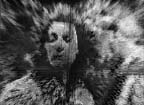
Interrogating the Role of Code on the Construction of Sense
**// Code_UP--by Giselle Beiguelman--is a project about digital image that interrogates the role of code on the construction of sense. We work here, in dialogue with “Blow up” (1966), by Michelangelo Antonioni, one of the most profound discussions ever made about nature and the place of image and about the ways in which we deal with the visible and the invisible.
In **// Code_UP, the public photographs themselves with cell phones and sends their images by bluetooth to the big screen. The images are manipulated by a specially developed for the program and transform into mobile interactive matrixes. The project entered Life Goes Mobile, in September, in its first stage. In October, another version has been released at ZKM (in Germany) at the Algorithmic Revolution exhibition which marks the opening of the most important museum and art and media center of the world. And in December, it participated on FILE in São Paulo and in February, participated on the share.it, in Torino in Italy. An updated and unpublished version will be presented in Rio de Janeiro on Prog:ME, from July 19th to September 20th.
Giselle Beiguelman is the author of the award winning O Livro depois do Livro (1999) and egoscópio (2002). Develops works envolving mobile communication dispositives since 2001, when she created Wop Art, complimented by national and international press, including The Guardian (England) and Neural (Italy), and art that envolves public access and electronic panels such as via internet, SMS and MMS, like Leste o Leste? Egoscópio (2002) , reported by the New York Times, Poétrica (2003) and esc for escape (2004). Her work appears in important anthologies and work references devoted to online digital arts like the Yale University Library Research Guide for Mass Media and Information Arts: Intersections of Art, Science, and Technology (S. Wilson, MIT Press, 2001). Participates of major events on the area, in museums and new media centers like ZKM, Fundación Telefonica, Smart Project Space and MECAD amongst other congresses and international symposiums. She teaches at postgraduation in Comunicação e Semiótica at PUC-SP, is editor of the new world section of the electronic magazine Trópico, colaboration with Leonardo Electronic Alaman, Iowa Web Review and Cybertext and is responsible for the project site Arte/Cidade, coordinated by Nelson Brissac. She was the only brasilian listed in the selection The 50 Best, performed by international/media/art/award 2003, promoted by ZKM, for the project Paisagem0, developed by invitation of SESC in partnership with Marcus Bastos and Rafael Marchetti.
Posted by jo at 09:38 AM | Comments (0)
Deadline Choreography

Site-Specific Dance
"One by one, five dancers staggered through an archway and lurched drunkenly across the concrete floor. They came together, split apart and a bit later slithered, gabbling, face-first across the brick wall.
Dancers on cellphones experimenting with an idea by the choreographer Larry Keigwin, with the Brooklyn Bridge in the background.
Dancers exploring vertical and horizontal forms in Brooklyn.
The dull hum of traffic, punctuated by the clack-clack of cars crossing a bridge, filled the air. The choreographer Tere O'Connor, in baggy pants and a black T-shirt, looked pensive as he surveyed his work in the latest offering from Dancing in the Streets, a nonprofit producer of site-specific performances.
The organization has commissioned five choreographers to present 5- to 10-minute works under stuntlike conditions: they were informed after midnight Sunday, by e-mail, of the performance's location. They have until Saturday to come up with a dance.
All but one arrived on Monday, gazing about and sniffing the creative possibilities at the site, a triangular, roofless section of the 1870's-era tobacco warehouses at Empire-Fulton Ferry State Park in Brooklyn. The Brooklyn Bridge rose overhead. Glorious views of Manhattan, the East River and the Manhattan Bridge were visible through arched windows and doors. A local historian, landscape architects and the show's artistic director, Joanna Haigood, briefed the choreographers. Reporters were told the location ahead of time but were asked to keep it secret.
Imagine "Mission Impossible" in tights.
But there were serious artistic purposes here. Performances in unusual places force audiences to see and appreciate the surroundings in a new light, Ms. Haigood said. The short deadline is a way to inspire choreographers and help them gain new perspective on their creative paths.
"This is really an opportunity to examine your own process and see what bubbles up," Ms. Haigood told the choreographers. She said she hoped they would feel "invigorated and inspired."
When asked about site-specific performances, dance historians like to say that people have danced outdoors since the dawn of humanity. But as a contemporary art form, they came of age in the 1960's and 70's. They are distinct from most outdoor performances in that the area - its history or physical characteristics - shapes the content of the dance.
In this case, the short-term format was also an economical way of bringing an array of prominent choreographers into one show, said Aviva Davidson, the executive director of Dancing in the Streets.
The project is called "Breaking Ground: A Dance Charrette," a reference to the French carts in which 19th-century Parisian architecture students would rush their sketches back to school after being given a 72-hour deadline.
Conversations with the choreographers shed light on how they come up with ideas, and how one location can evoke different responses.
Mr. O'Connor said it usually takes him four to five months to create a dance work.
"So this is very quick," he said. "But you face the same questions. What is this? What is this going to become? How am I going to create something out of nothing?" The difference, he said, is that there is little pressure to produce something of high quality.
The movements on display Monday would very likely not be in his piece, Mr. O'Connor said. "Working is like dabbing. You dab and dab and paint over until you find something," he said. "It's a process of locating something."
The first element that struck him was how sunny the area was. "I don't like the sun," he said. So he began by lining his dancers up along a strip of shadow, which grew larger as the day went on. "I was responding to the heat," he said.
Jawole Willa Jo Zollar, the founder of Urban Bush Women, arrived later in the day. She strode onto the grounds and looked closely at the walls, her eyes continually drawn to the second-floor windows. "I want to figure out how to use these windows here," she said to no one in particular.
Larry Keigwin - like Mr. O'Connor, a newcomer to site-specific dance - said he had originally envisioned a pastoral setting and sought out images of animals for inspiration. That idea immediately dissolved when he saw the red-brick walls and concrete floor of the old warehouse.
Now, he said, he was drawn to the converging lines of the walls that created the point of the triangle: an architectural vanishing point. The urban setting brought cellphones to mind. Maybe each dancer could brandish them? "I immediately thought I wanted to make an urban painting," he said.
The choreographic team known as Eiko & Koma, who have long experience in site-specific dance, appeared more nonchalant.
"It's a very simple structure, so I am thinking of a simple, one movement," Koma said. Maybe something like putting a cigarette in one's mouth, given the ghosts of the tobacco trade, he said. Eiko later suggested she might bring a portrait of herself and move it along the wall, to convey the idea of an archetype of a person who may have lived and worked there. (Large paintings have figured in their work before.) Or maybe she would not, Eiko said.
One choreographer, Ann Carlson, is due to arrive on Friday. She received an information packet and a videotape of the orientation session.
The performances are scheduled for 2 and 4 p.m. on Saturday, rain or shine, and they are free.
The "Mission Impossible" idea brought its challenges. If no one knows the location until a week before, how do you advertise? The leaders of Dancing in the Streets said they sent out thousands of postcards last month announcing the event and date, and sending people to their Web site, www.dancinginthestreets.org, for details. They said they expected 1,000 people for the two performances.
The idea was suggested by Ms. Haigood, a San Francisco-based choreographer who, with her Zaccho Dance Theater, performed a work of aerial dancing at an abandoned grain elevator in Red Hook three years ago.
She and Ms. Davidson mapped out the project on a napkin during a dinner at Carmine's in Midtown last February. The Brooklyn Bridge Park Conservancy, which coordinates special events at the warehouse, gave its approval, helping to cut through the usual red tape for performances in a public place."
Deadline Choreography by By DANIEL J. WAKIN, The New York Times, September 14, 2005
Posted by jo at 09:08 AM | Comments (0)
Space Invader

Urban Invasion
Anonymous French street artist Space Invader makes mosaics from the eponymous video game, which he puts up in public spaces of his victim city. His Invasions are part of a global project. Each attack is complemented by a map of the city showing all the target sites. The most recent invasion occured in Bangkok.
"...Currently the computer icon has led us to rediscover the prehistoric form of communication - the hieroglyph - through the use of icons in the extended landscape of the net, communication platforms, games, and their new iconology or visual vocabulary that has risen through the development of software programs. Andy Deck's, Gylphiti and Space Invader's Invasions create a context with graffiti that appropriates private space. Similar to graffiti, the hieroglyph writer marks on the subway and temple walls. Andy Deck's Glyphiti, is a multi-user collaborative drawing platform calling on the spirit of graffiti is a site specific project using code that filters through private sectors of the net, creating a public domain and a collaborative drawing space that recall the uses of prehistoric hieroglyphs with pixels replacing the mark, to create a real-time icon.
In Space Invader's invasion the attack is addressed in the public domain where the Space Invaders' mosaics lurk the cityscape, and the players are anonymous. Space Invader and Deck introduce the cross-pollination of new media, as the closest notion to public art production by depicting a position of narrative from the maker to the public space-whether it be the streets or the net-continually questioning the definition of PUBLIC. Space Invader uses the aesthetics of a Byzantine iconographer as an instrument through which a work is executed, a work that goes beyond the individual..." From Copy It, Steal It, Share It by Michele Thursz. [via]
Posted by jo at 09:00 AM | Comments (0)
Superstar Tokyo
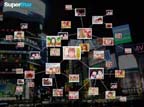
Who's Photographing Whom?
Superstar is a multiplayer photo-based game designed for Ubicomp 2005, Tokyo. The game is free, and open for anyone with a phonecam and self-portrait Puri Kura stickers of themselves. The game uses Japanese Puri Kura stickers as a starting point for an experiment in social networks, automated phonecam image analysis, and urban visual culture. The goal is to see and be seen, using tiny images woven into the fabric of Tokyo streetlife.
To play, place your own stickers (with a star on it to recognize participants) wherever you want and collect the stickers of other players by shooting them with your phonecam. Whenever a player snaps a Superstar sticker both players earn points. A link is then created between the two players. From this point on, any time either player earns points (by shooting a new sticker or by having their sticker shot) the other one will also earn points (though not as many).
Superstar thus builds a network of connections that forms a social, pyramid scheme. Successful players will be the ones that forge connections with other active players. Automated image recognition (e.g. Mobot technology) will decipher who is photographing whom when players email their images to SuperstarHQ via their phonecam. A message is returned via SMS indicating points earned.
Developed by Frank Lantz, Kevin Slavin (areacode) together with Kamida (makers of Socialight), Michael Sharon and Dan Mellinger (Kamida). Details in the PDF. [blogged by Regine on we-make-money-not]
Posted by jo at 08:35 AM | Comments (0)
September 13, 2005
Anne Galloway
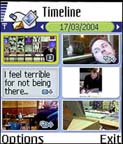
Still Searching for the Social in Mobility
"In thinking about differences between Nokia and Motorola, and mobile tech industries in general, I browsed Matt Jones' and Timo Arnall's del.icio.us links, and a few things keep circling around my brain.
In a podcast of an interview with Anssi Vanjoki of Nokia on social computing, I got a slightly vague, but definitely people-centred, picture of mobile computing. Like Matt, I find their position to be generally encouraging, but I harbour some serious reservations about how industry seems to be incorporating ideas and pratices from academic and other cultural contexts.
Now, it strikes me that Nokia has been proclaiming this 'social turn' as the next big thing since at least 2000, and I'm not entirely sure where it's got them - or us. Should we really assume that all people everywhere want to collect digitial ephemera and log their lives as they go by? I don't mean to accuse or pressure the fine folks and friends who work for them, but what other kinds of mobile sociability can I look forward to? Are open APIs - or other solutions that assume technology is a mere platform or stage for social interaction - really the best we can do?
After 2001, when Motorola released Sadie Plant's report On The Mobile (pdf), I bet few if any people in the mobile industry kept up on, say, the resulting Nettime critiques, which exhibited their own biases and unsupported assumptions but nonetheless raised crucial questions about how to understand mobility and social interaction.
So, when Nokia says they support social or more "humanised" computing, what are they really talking about? What kinds of sociability? What kinds of humanity? And how can we tell the difference between marketing hype and the complex actualities of production and consumption?
Social computing doesn't begin in the hands of users. It emerges in discussions and decisions made in corporate boardrooms, government offices, design specifications, marketing strategies, etc.. Contrary to popular opinion, we're not dealing with discrete pieces here. Unless everyone acknowledges and becomes accountable for their roles in making and re-making technologies, no amount of openness or hackability or respect for users will lead to "social" computing." [blogged by anne on purse lips square jaw]
Posted by jo at 03:26 PM | Comments (0)
Virtually There:
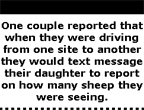
Travelling with New Media
"ABSTRACT: This paper examines the uses of mobile, fixed telephone and Internet–based communication by travellers and the implications of that use for the experience of travel. For most of the respondents, continued communication with their networks of contacts back home were integral to their travel experience, allowing them to maintain an ongoing symbolic proximity or co–presence with people with whom they shared a common history. Travellers make clear distinctions between the uses, benefits and drawbacks of phones, texting and Internet–based communication. The continuation of intense communication between travellers and non–travellers suggests that people ‘back home’ and the travellers are involved in forms of ‘virtual travel’." From Virtually There: Travelling with New Media by Peter B. White and Naomi Rosh White, First Monday, Volume 10, Number 8 — 1 August 2005.
Posted by jo at 10:06 AM | Comments (0)
September 12, 2005
glocalmap.to

Digital Turin for the 2006 Olympics
How do urban dynamics change in the digital era? What tools does technology give us to aid the study and design of the territory? A concrete answer to these questions comes from the project by a Turin group of architects and new media experts. Maurizio Cilli, Carlo Infante, Riccardo Mantelli, Filippo Moncelli, Max Paccagnella and Stefano Ruggeri have created glocalmap.to, a digital map of the Turin Olympic area, developed for the Cultural Olympics in collaboration with TOROC, the Games' organising committee.
Global and local, glocalmap.to is an interactive web platform open to inhabitants and tourists alike; for the 42 days of the Winter Olympics in February and March 2006, they will be asked to say what they think of their city. It works quite simply: those wishing to do so can send a message (sms, mms and e-mails with attachments), which will be stored and displayed at a precise point on the map, visible to all via a number of screens. Apart from the play factor, glocalmap.to is intended to represent an experience of participation in urban planning.
For the future they are considering a vectorial version that will allow architects to place their projects directly on the territory. The aim? To trace a new spontaneous map of Turin that will reveal fresh and unexpected geographies. The presentation of the project is scheduled for 6pm today at the Atrium foundation. The speakers are Giovanni Ferrero, Maurizio Cilli, Stefano Boeri and Paolo Verri coordinated by Carlo Infante. Footnote: The Beach club, Turin's urban beach on the River Po, is celebrating its fifth birthday and hosting an open meeting of the Domus editorial team from 8pm onwards.
Torino, Italy
Glocalmap.to
14.9.2005, h. 18
Atrium, via Pietro Micca 21
14.9.2005, h. 20
Club The Beach, via Murazzi del Po 18
http://www.thebeachtorino.it
Posted by jo at 11:19 AM | Comments (0)
September 09, 2005
The Urban Lottery:

A Game to Think Through the City
"The game consists of a journey through a series of images, concepts and words that have different meanings for contemporary urban residents. For women, for example, everyday life in the city is a very different experience than it is for men. The gaze of a person who walks through city streets on his or her way to a factory job is different than that of a person who contemplates them from an office in a downtown skyscraper, or who looks out in fear across the heavily fortified fences that protect his or her private space.
The Urban Lottery invites you on a never-ending adventure-to think through the city and to think about yourself in relation to the city that you inhabit. It does not matter what city you live in. What matters are the ways in which you explore, discover and understand that city and your relationship to it. Most important, however, are the ways in which you become involved and participate in building a better, more democratic city in which there is room for all." Part of Translocal Flows: Migrations and Contested Urban Spaces in the Americas. [Posted by Anne on space and culture]
Posted by jo at 02:42 PM | Comments (0)
September 08, 2005
VENUS RISING:

Mobile Technology in the 21st Century
Where is mobile technology taking us in the 21st century?...And do we want to go there?
Cybersalon continues its Venus Rising series of panels in collaboration with the SMARTlab Centre to discuss where mobile technology is taking us this century. With over 75% of the UK population owning a mobile phone, women are a crucial sector of the mobile market. However, most technology is developed by men, so is the feminine perspective being taken into account? Are we considering how mobile technology could help shape the future in positive ways, not just for play and leisure but for social and economic growth, particularly in the developing world?
Tuesday, 20th September 2005, 7-10pm
The Science Museum's Dana Centre, 165 Queen's Gate, South Kensington, London SW7 5HE
Cost: This event is free but places must be booked in advance by emailing
Nearest tubes: South Kensington/Gloucester Road
Venus Rising is a forum that launched at the Science Museum's Dana Centre in April and held a panel on techno-semantics at the Institute of Contemporary Art in July. With this series of panels we pose the question, can we shift the cultural image and language of technology towards the feminine?
Dr Lizbeth Goodman, Director of the SMARTLab Centre at Central Saint Martins College of Art and Design will chair the event featuring Lev Manovich and Emma Westecott.
Lev Manovich is recognized as one of the leading figures in the field of new media culture worldwide and is a Professor in the Department of Visual Arts, University of California, San Diego. Emma Westecott achieved international recognition for working closely with Douglas Adams as producer for the best-selling CD-ROM Starship Titanic (1998, Simon & Schuster) and is currently based at the IFSW, University of Wales, Newport. We are asking the speakers to look through the lens of the feminine to where mobile technologies are taking society in the future.
This public debate is held at the Science Museum's Dana Centre - the UK's only venue for s to discuss contemporary science.
Venus Rising gratefully acknowledges funding support from the Arts Council of England and the Science Museum.
Posted by jo at 10:20 AM | Comments (0)
September 06, 2005
WatchMe
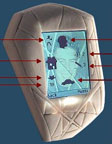
Communication Between Closely-Knit Group
WatchMe, by Natalia Marmasse, and Chris Schmandt, will be a platform for mobile communication and awareness, in the form of a watch, which addresses these limitations.
WatchMe enhances communication for a subset of people with whom we want an open channel of rich communication and for whom we want to be available. These are typically people from our "inner circle" with whom we have an established relationship, some common grounding, and a basis of trust. By sharing personal context information with our "insiders" we can enhance the instances of non co-located communication, and by providing channels of non-verbal communication we can foster more (verbal or non-verbal) communication and increase the existing sense of connectedness. The approach is to provide insiders with updated remote awareness information.
This mutual awareness serves two different purposes. First, it can strengthen the sense of presence of people we care about and may encourage further communication, besides being a form of non-verbal communication in itself. Second, it will provide insiders trying to contact us with enough information to make an informed decision regarding our availability and the most appropriate communication medium.
This project addresses mobile communication and awareness of people in a closely-knit group. It aims to enhance the telecommunication between them by providing relevant telepresence and a mobile platform facilitating various channels of verbal and non-verbal communication. Related: RealPlayer Movie; MPG Movie; UbiComp Paper (pdf).
Posted by jo at 10:08 AM | Comments (0)
Ars Electronica
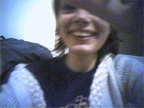
Regine Blogs Ars
TEMPEST is based on the surveillance technology known as Van Eck Phreaking - computer screen content can be reconstructed remotely by picking up the emitted EM-field of the screen. TEMPEST utilizes this technique to transform purely generative graphic into a composition of noise which again is fed back into the image generating process. Several AM receivers are tuned into different frequencies of a screen and plugged into an audio mixer for further sound processing. The graphics on the screen become a means of producing sound and it is only the graphics which determine the different timbres and rhythms. By Erich Berger.
Interface Culture at the Linz University of Art was founded last year by Christa Sommerer and Laurent Mignonneau. The programme deals with human-machine interaction to develop innovative interfaces. Went to see their works yesterday.
SoundToy, by Christina Heidecker, Harald Moser and Timm Oliver Wilks, is a 3D environment you navigate as if you were a racing car driver. During the ride you use the steering wheel to create and compose 3D sounds. You place in the space sound objects assigned to electronic beats. The speed, pitch and volume can be individually adjusted using the steering wheel and the accelerating pedal. The composition is generated by the movement and position of the sound objects with respect to one another but also by the route you select.
Recipe Table, by Istvan Lorincz, Hanna Perner-Wilson, Thomas Wagner and Andreas Zingerle, is an interactive workplace built into a kitchen countertop that enable users to intuitively search for recipes. You place the tins and bottle, vegetable and other ingredients and in return the system makes you recipe suggestions. These culinary suggestions are also depicted graphically as finished dishes on the workplace.
Blow, by Taife Smetschka, is a breath-controlled video installation. There's a microphone and a projection of a clip from Billy Wilder’s film *The Seven Year Itch*, the scene in which Marilyn Monroe stands on the grate above the subway ventilation shaft. At first she is stationary, smiling at viewers from the screen. She doesn’t begin moving until she feels a cool breeze. In *blow!* the breeze has to be provided by the installation visitors who must blow as hard as they can into the microphone. Marilyn’s skirt flutters in the breeze as long as the visitor blows into the microphone.
Mika Satomi's Gutsie is a cyber android filled with “guts.” Peeping into its interior through its eye-like hole, you can observe its intestines in motion. It will show you the places you want to see by tracking your eye gaze, but at the same time, your gaze may infect it. The interior of our body is something very private, often disgusting, and thus prohibited to be seen or to be shown. In media, visual images of our insides are often used to induce feelings of violence or disgust. Ironically, this is something that is stuffed inside everyone’s body without exception.
The G-Player (Global player), by German artist Jens Brand, works like a CD-player. But instead of playing CDs, it plays the globe. The device knows the postion of more than a thousand satellites and enables you, by the use if a virtual 3D planetary model, to listen to an imaginary trace of a selected flying object. Like a needle on a record, the satellite follows the Earth's surface. The G-Player transforms the different elevations units course directly into sound. The simple display shows the selected satellite's name, type, altitude and position over the planet (thus the latitude and longitude). Topographic data are interpreted as audio data. "Noise sounds" result from the high density of the data. Pictures.
[via we-make-money-not]
Posted by jo at 08:45 AM | Comments (0)
September 02, 2005
FALLING LIFE
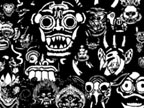
Crashing Ars
Falling Life is an ongoing project that was introduced for the first time in Berlin in August 2005. This urban screening project doesn’t need a curator or a gallery; it doesn’t need a fixed place or access to electric power. The artists are equipped with a car, a laptop, a compact light powerful projector and a small power generator. With this very mobile equipment the artists are able to have an instant presence in the urban landscape. They use facades of buildings that can be immediately changed into a projection screens. What makes the project exciting is the variety of possible buildings as a projection surface: the more uneven and in relief they are the more magic they look. Without any preparation and without any permits the artists are operating in a kind of projection guerrilla style.
Michael Bielicky and Kamila B. Richter are using a minimalist language of white constantly appearing and disappearing pictograms. The moving icons represent the collective reality of our interconnected globalized world. With the help of an algorithm the combination, amount, size and speed of the objects is permanently changing and so the image is never the same. The artists don’t reduce only the form of the displayed objects but also the color absence results in a pure white light. It is fascinating that the whole movie with a 25 different sequences can have a size of 250KB!!!
The next public appearance of Michael Bielicky’s and Kamila B. Richter’s light projections will be in September at the Ars Electronica festival in Linz. The (not invited) artists will apply the theme of this year festival - “Hybrid – living in paradox” on the Ars Electronica itself: Ars Electronica is living in paradox. The artists use the same hybrid strategies Ars Electronica aims to discuss as they create their own hybrid Ars Electronica layout by copying and recombining some of the language and pictorial units used for this year Ars Electronica’s promotion material. Michael Bielicky and Kamila B.Richter: x[at]avu.cz. Also see Locomotion.
Posted by jo at 10:52 AM | Comments (0)
URBANtells
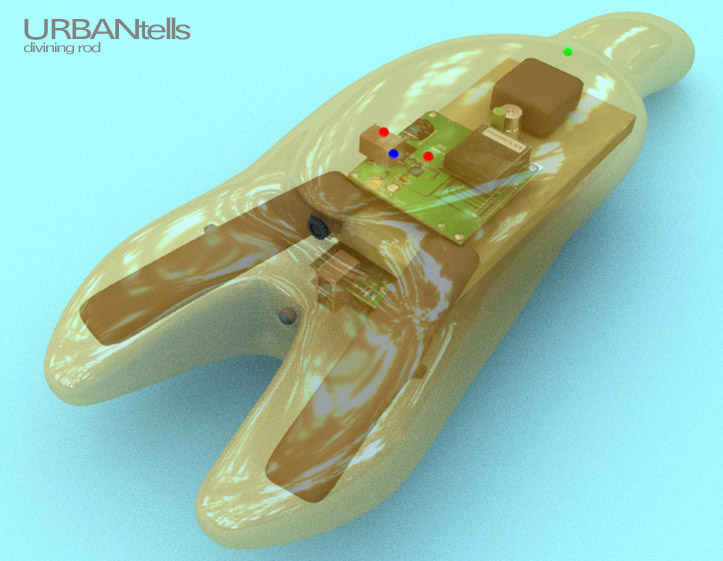
Exploring the City with Digi-Diviner
URBANtells is a mobile sound installation in which the user explores a neighborhood on foot, "data-diving" with a handheld device called digi-diviner. Participants will provide their cell phone and email address to an attendant at a kiosk. In return, they will be given a digi-diviner to walk and explore the neighborhood. A minute or so after they go outside a real time mix of sound art and verbal information triggered by their location will start to play through an earbud attached to the diviner. The information is a mix of recordings of residents and historians, text-to-speech synthesis, recitations, musique, and other processed sound. The information will address the complex layers of personal and collective histories and experience in urban environments, and the degrees to which these acoustic "tells" influence behavior and development within a community similarly to traditional, physical structures.
Users will be able to upload sounds, text, and still images they capture with the diviner en route. This information will be available to other users. Upon returning to the kiosk, participants will receive an interactive Google map of their specific walk via email, containing buttons to play sounds and view images they may have uploaded during their trip. Urbantells, a project by James Rouvelle, Joe Reinsel and Steve Bradley, opens June 2, ‘06 at Art Interactive, Cambridge, MA. [blogged by Regine on we-make-money-not]
Posted by jo at 08:30 AM | Comments (0)
September 01, 2005
Six Degrees of Smoking

The Secret Lives of Lost Lighters
Have you ever wondered what happens to your cigarette lighter when you lend it to someone and don't get it back? Six Degrees of Smoking is a global artistic collaboration to delve into the secret lives of lost lighters. Lighters are handed out or posted to those who wish to be involved. The recipient then photographs themselves smoking a cigarette and submits it via MMS or email. He then passes the lighter on to a fellow smoker (either a friend or a stranger) and the process is repeated. Each lighter is numbered and so they can be tracked on their travels. [Remember Traces of Fire?]
Posted by jo at 05:11 PM | Comments (0)
Miragraphy

RFID Enabled Mirror
Hitachi announced yesterday a new mirror that functions as a computer display. It will be available for purchase in Japan on September 30. It combines a half mirror and a diffusion film to directly display digital information (text, photos, video, tv shows, websites, flash movies etc.) on a mirror surface using a LCD projector. This technology, called Miragraphy, also integrates sensors, RFID readers, barcode readers, cameras, etc. So, the mirror can automatically respond when people are around and personalize digital contents based on their sensed identities.
The Miragraphy device could potentially be used at restaurants, bars, hotels, trainstations, airports, sports clubs, show windows, designer clothing shops, and accessory shops. [blogged by konomi on RFID Japan]
Posted by jo at 10:38 AM | Comments (0)
August 31, 2005
Tube
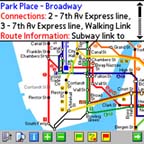
See Your Journeys Come Alive
Transform your PDA into a fully scrollable detailed map of the New York City subway system. See your journeys come alive with a superb animated display of the route tracking around the system map. Save hours by automatically having the quickest routes to hand, with all the details you need including line changes, platform directions and accurate journey times. "Tube, the absolute best subway mapping program for the Palm, has been updated to a significantly new and improved version. Incorporating subway lines and station information with either a system or street view, Tube even includes route planning and timing information to figure out the optimal series of connections during any time of day."- Josh Rubin [via]
Posted by jo at 10:55 AM | Comments (0)
MINDPLAY:

Extended deadline for submissions
MINDPLAY is a one day conference on the social, intellectual and experiential dimensions of play and interaction in digital media environments. The conference focuses on mindful and playful relationships with digital media environments including mobile and ubiquitous media, new cinema, gameplay, wired performance spaces and networked communities. We encourage submissions of papers, practice-led research, poster presentations, demonstrations and installations. Selected papers may be published in a special issue of the journal Digital Creativity. Conference date: Friday January 20th 2006; Extended deadline for abstracts: Friday 30th September.
Posted by jo at 10:30 AM | Comments (0)
August 30, 2005
Pedestrian:
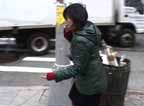
A Walking Tour for Multiple Voices and Portable Phones
Pedestrian: A Walking Tour for Multiple Voices and Portable Phones--by Geek Ink--is a performance piece that takes New York audiences on walking tours in groups of ten on three separate routes led by three actresses through the East Village. It allows the participants to "eavesdrop" on cell phone conversations exploring the topic of loss - from lost tempers and lost loves to lost identities. Pedestrian explores the public airing of private speech, which occurs daily on the streets of New York. Connected by cell phones, the actresses invite the audience to overhear their conversations, confessions, and revelations; in fact, all participants are connected by a conference call service, allowing each tour participant to hear all three tour guides simultaneously. The audience follows these women through the streets, taking a journey through the emotional lives of the tour leaders, while interacting with many East Village landmarks that may have gone unnoticed until now.
Geek Ink is a not-for-profit company dedicated to producing challenging, high-quality entertainment by presenting an examination of ideas with a liberal dose of irreverent humor. It seeks to nurture a diverse theatrical community that includes people of all backgrounds on both sides of the curtain. Toward this goal, Geek Ink is committed to making the cost of theater-going within reach of all New Yorkers.
Posted by jo at 12:25 PM | Comments (0)
Surface Tension
![]()
Mobile Art Projection Program: Call for Proposals
ANAT is now calling for proposals from South Australian artists or artists groups, for dynamic temporary public projection artwork. Four artists or artist groups will be commissioned to produce projection works that are experimental, conceptual, and respond to Surface Tension's guerrilla-style approach of presentation and use of mobility to take art to the audience. Selected artists will present their Projection Artworks consecutively in the period November 2005 - March 2006. To download a Surface Tension program outline and proposal guidelines, please go to the ANAT website, 'Surface Tension: ANAT's mobile projection project call for proposals' News Item.
Deadline for proposals is: September 2, 2005
Notification date is: September 12, 2005
Successful artists will be required to complete their artwork by late October.
For further information, please contact
Jen Brazier
projection[at]anat.org.au
tel: (08) 8231 9037
m: 0413 564 474
Gus Clutterbuck
m: 0407 721 532
Surface Tension has been made possible through Adelaide City Councils Public Art program, and will be delivered in negotiation with Council by the Australian Network for Art Technology (ANAT).
Posted by jo at 10:02 AM | Comments (0)
August 29, 2005
A Public Fashion Orchestra
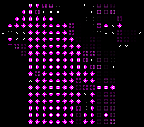
Network Revealed
Temporary networks (ad-hoc wireless networks) are designed to be "visible" to devices only, not to people. Without consulting our devices, we can't tell whether this minute we are participating in a network or not, and we are not asked whether we want to either.
Public Fashion Orchestra--by Alexandra Von Feldmann (with Stuart Wood)-- combines the conservative "wearable" network (e.g. networked wireless enabled mobiles) with an alternative, truly "wearable" and visible network.
The project envisions a fashion house which would sell intelligent clothes and their behaviours. All the clothes are networked with each other and when in range they can share designs and eventually other data; the fashion designer is able to feed new designs and behaviours into the system.
The clothes receive, transmit, transform and show the data, but they can also remember and limit it: once the clothes are "full", they cannot participate in the network anymore unless you get rid of their data with the brush of a hand.
While dressing up, the wearer can activate the clothes. As soon as he/she encounters another fashion network member, communication between the two is triggered by an RFID-Tag embedded into their garments. Once communication is established, data is being transmitted by the devices carried by the users (e.g. wireless enabled mobiles). [blogged by Regine on we-make-money-not]
Posted by jo at 11:56 AM | Comments (0)
August 27, 2005
Parasite + Parallel Worlds
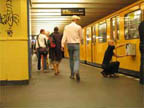
Mobile Movies
Parasite--by Frédéric Eyl, Gunnar Green and Richard The--is part of the Moving Canvas series; it investigates the visual and symbolical importance of trains in an urban context and the possibility of exploiting them as brief communicative moments.
Affordable mobile video-projections could be used to re-conquer public space often only reduced to graffiti and streetart. The tunnels of a subway-system bear something mystic—most people usually have never made a step inside any of those tunnels. Parasite is a projection-system that can be attached to subways and other trains. Using the speed of the vehicle as parameter for the projected content, the projection starts with the train moving inside a tunnel.
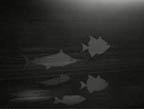
All along their journey, travellers see images mysteriously appearing through the train windows: words, aquatic animals, etc. Confusing the routine of your train-travelling-journey, your habits and perception Parallel Worlds allows you a glimpse into a different world full of surrealist imagery.
Don't miss the video. [blogged by Regine on we-make-money-not]
Posted by jo at 10:25 AM | Comments (0)
August 26, 2005
Residual Data-Cloud
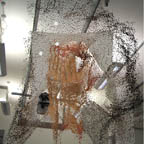
Residual Memory Immersed, Materialized in a Real Environment
The Residual Data-Cloud--by Diogo Terroso--is an application that loads images from a networked source and generates a data-driven three-dimensional form. Images are collected via a digital camera, or a mobile phone, by the author and participants during presentation. The resulting shape, which resembles a cloud of dust, is a metaphor of residual memory immersed and somehow materialized in a real environment.
Digital appears here as a parallel dimension, in which user’s perception is subjected to layers of abstraction and figuration. Its behaviour in the real space, captured by a tracking device, affects data display by revealing different properties of the cloud. Recognizable shapes appear and disappear through interaction. Movie.
Posted by jo at 10:26 AM | Comments (0)
August 24, 2005
Foo Camp, Bar Camp: smartmobbing ftf meetings

Smart Mobs and the Power of the Mobile Many, Technologies of Cooperation
Open Space Technology is a simple methodology for enabling people to create their own agendas at meetings and conferences. Tim O'Reilly created a version of an open-space conference for invited participants, Foo Camp, and Ross Mayfield describes an open-to-all event, Bar Camp. Combining wikis with Open Space methods is an increasingly popular way to smartmob face-to-face gatherings:
When someone walked in the door, 300 people perhaps in total, over 100 at peak, usually Kit would be there to guide them. People insisted on handing out cash and it would make it's way to the guy with the PayPal account (Chris). A collective sense of who was doing what was achieved before the event in a lively IRC channel (remember Happenings?). If you had an idea, like a sponsored sub-party, it could simply get done.
BarCamp EntranceBarCamp happened where it did because of location awareness. About a week before, after we moved into the neighborhood, I met the Flock guys (knew Termie only through time based media) through Plazes. We chatted a bit. Then I got pinged with this crazy ass idea asking if I had suggestions for space and bandwidth. A wiki was thrown up, the rest is increasingly well recorded history. [Posted by Howard on Smart Mobs]
Posted by jo at 10:59 AM | Comments (0)
Node Explorer

It Knows Where You Are
"This tiny electronic prototype, called an Node Explorer, detects exactly where I’m standing within the 850-acre parkland surrounding Ashton Court, because it’s equipped with an internal Global Positioning System (GPS) based on satellite signals, accurate to within about three yards.
On screen, I see myself as a little red dot moving slowly over the grass. Depending on where I wander, an entirely different heritage or cultural story is presented through a combination of pictures, sound effects and narrative, all related to where I’m standing and what I’m looking at.
I walk to the bottom of the lawn. Ping! With the sweeping façade of Ashton Court spread like a film set, the screen shows me how the building has changed over the centuries, images building upon images as a voiceover explains why the place looks as it does now.
The tone of the script is light, brief but serious - a cross between Radios 2 and 4. (Later, I discover that the material has been written by an ex-BBC producer and narrated by a local radio presenter.)
I move 50 feet towards some flowerbeds and… ping! I’m urged to look up at the fourth window from the left where the 19th-century stunner Emily Smythe - “the most beautiful woman in the West of England!” - once gazed from her bedroom at the rural landscape stretching to the city. The screen shows me her picture. It tells me that men used to swoon at the sight of her. It shows me her bedroom. I walk to the front of the building. Ping! I learn that the writer CS Lewis was a patient here during the First World War, when this became a military hospital." [via It knows where you are... and pasta and vinegar]
Posted by jo at 10:36 AM | Comments (0)
Appendix2
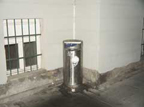
Activated by Passers-by
Appendix2--by Tanja Vujinovic and Zvonka Simcic--features an alternative state of urban landscape. The multimedia exhibition consists of short video works and interactive, computer based works displayed in the Kresija Gallery (Ljubljana, Slovenia) and interventions in the soundscape of the center of Ljubljana.
Small scale mechanisms (automata), made of sensors react to movement and small broadcasting units are hidden at several locations in the center of the city. Sounds are activated by passers-by and intervene into the structure of the town soundscape.
The sensors are attached to the garbage bins and passers-by are then blessed with sounds of Chinese market and rickshaw drivers, laundry machine and parody ads for perfume. Well, I should write "the sensors WERE atached" as they've just been stolen. Fortunately, the rest of the exhibition is still up and running till August 28. [blogged by Regine on we-make-money-not]
Posted by jo at 10:30 AM | Comments (0)
Career Moves
Players Can Create Their Own Semantic Systems
Career Moves--by Mary Flanagan--explores the contradictory world of women in corporate America through an interactive, computer controlled board game. Work is a troubling condition internationally for all women. Women represent 50 per cent of the world adult population and one-third of the official labour force, but they perform nearly two-thirds of all work hours, receive one-tenth of the world income and own less than 1 per cent of the world's property...
This commercial style is intended as a critique of the historical sequence to which the popular board game belongs: many games have traditionally supported social "norms," including heterosexuality, consumerism, and especially non-liberatory positions for women. However, as players progress down the board, it becomes clear that it is they themselves who are determining the rules of the game, and the collective and individual goals become apparent...
To participate in Day of the Figurines, the player must first visit a physical place. Here, they find a large scale model of an imaginary town at table height. The model is 1:100 and extends for several metres in all directions. The image is a mix of computer graphics and photographic collage.
The town has identifiable buildings such as the YMCA, the Big Chef, Video Zone, the XXX Cinema and the Battle of Trafalgar Square. There are other features such as a Cemetery, a Gasometer, a canal, a Level Crossing and an Underpass.
To play the game the visitor selects from a display of one hundred plastic figurines. They give the figurine a name, answer a few questions about him or her and then watch as she or he is placed at a random location into the model town. As they leave the space the player is given a small map of the town and a set of rules for the game.
An hour or so later the player will receive their first text message from the game, asking where their figurine would like to go. By replying to the message with the name of a place in the town the player’s figurine is set on the path towards that destination. Each hour a turn is executed and the invigilator moves each figure a small distance towards their destination. There are 10 turns a day for 24 days.
Intermittently each player receives text messages to alert them to nearby figurines in the model city, to their figurine’s arrival at a destination or to other events in the town. Each destination has a short description. For example, if you arrive at the The One Club you receive the SMS: “Home of the 2 Fs. The lock ins are legendary, the fire escape stairs have seen it all.” The goal of the game is “to help others”. Texting messages to other players may provide opportunities to do this.
The project is deliberately targeting low-end phones: it is playable on any phone that is able to receive SMS. Instead the technological focus is on orchestration and management tools. During the long-term test period, 8 players have been given phones that log Cell ID and upload this information to a server. We aim to use this data to assess when players are engaged, when they are most likely to play and how the game fits into their daily activity pattern. We will also carry out phone interviews with selected players at key moments, to study the interaction between game play and daily life.
Posted by jo at 10:12 AM | Comments (0)
160 Characters
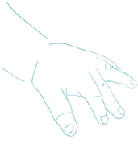
U Pt Yr Rt Ft In...
"How did you learn your first rhyming games? From other kids, right? As children we entertained ourselves by combining words, rhythm, and rhyme. Now we're big kids with grown-up toys, and Anita Bacic has built a new playground for us. 160 Characters is an exhibition of nursery rhymes, songs, and games gathered from all over the world, via mobile phones. People can contribute to her archive by text messaging lyrics and stanzas to a centralized phone number. The collected messages will form part of a multimedia installation, with a selection chosen for viewing with a retro slide viewer. Contemporary text messaging abbreviations and multi-lingual submissions are encouraged, thus opening the lid on a whole new toybox of ideas for those linguists and cultural studies buffs who like to play with notions of digital storytelling in the global village, the hybridization of culture through technology, or the role of mobile communication in creating new diasporas. So come on out and play--after all, isn't the 'Hokey Pokey' really what it's all about?" - Peggy MacKinnon, Net Art News, August 24, 2005, Rhizome.
Posted by jo at 09:27 AM | Comments (0)
August 23, 2005
Mobile Journeys
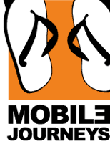
Exploring the Creative Potential of Mobile Devices
Mobile Journeys is a national arts initiative dedicated to exploring the creative potential of mobile devices and to fostering the development of Australian mobile culture. Works include games, video, social networks, interactive installations, Bluetooth and infrared. Learn more about your phone and the creativity it’s capable of. Games + Social Networks + Video + Wallpapers + Contribute + Works by artists.
Mobile Journeys is a national consortium of partners dLux media arts, ANAT, and AIMIA, and is proudly supported by Samsung Mobile.
Posted by jo at 10:18 AM | Comments (0)
August 22, 2005
Masaki Fujihata
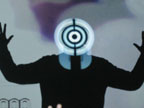
Innovative Public-Led Expedition
bodydataspace (b>d>s) have created a Multi-Media Design Studio with 3-D Exhibition Space for the newly renovated Jaywick Martello Tower. The premiere exhibition for the inaugural opening will be Mersea Circles by Masaki Fujihata. It is a 3-D interactive installation that emerged from an innovative public-led documentation process in August 2003. Taking place on Mersea Island, just off the Essex coast, some 150 people participated all using DV cameras and GPS. As they explored the terrain and its people they captured, with position data, their discoveries and experiences of the landscape, talks and interviews. From the myriad of data gathered, internationally renowned artist, Masaki Fujihata created his latest work.
In addition to the above exhibition, the event on Saturday, 17th September will include a live performance of Soft Ices by artist Mark Storor and composer Jules Maxwell at 3pm. There will also be a site-specific exhibition from the photographer John Kippin.
[b>d>s] is a design unit that delivers artist-led projects into architectural applications and uses interactive technologies to enable people to learn, develop and extend within intelligent data spaces, ultimately enabling the public to have a direct impact on the content of the space they inhabit. It combines the specialist knowledge and creative direction of its founders Ghislaine Boddington (body technology artist) and Armand Terruli (architect/video artist) in a unique collaboration that explores the artistic and technical opportunities present in the fusion of body, data, and space.
Masaki Fujihata / Mersea Circles / COAST: Masaki Fujihata is one of nine artists who have produced artworks for COAST, Essex County County’s ambitious art project celebrating the Essex coast. Mersea Circles is housed permanently at the Jaywick Martello Tower as well as the Ars Electronica Museum in Linz.
Saturday, 17th September 2005
12.30-3pm (invite only)
3-6pm (open to public)
Jaywick Martello Tower, Jaywick,
Clacton-On-Sea, Essex CO15 2LF
Entrance is FREE
Jaywick Martello Tower is the latest digital arts venue to open in the UK and one of the most unusual. This heritage project has transformed the Napoleonic tower’s first floor into a state-of-the-art environment where b>d>s have created a multi-media studio for exhibitions, events and workshops. It includes a floor to ceiling curved projection screen for immersive three-dimensional and audio-visual installations. This unique tower will act as a national resource for commissioning and presenting digital art from regional, national and well-known international artists.
The venue is the accomplished result of a 3-year collaborative venture between Essex Council, Bishops Park College and bodydataspace bringing together the arts, community and education. The Jaywick Martello Tower is managed by Bishops Park College, one of the brand new pioneering schools built under the Labour Government.
DIGITAL ARTS VENUE OPENS
Saturday, 17th September 2005
12.30-3pm (invite only)
3-6pm (open to public)
Jaywick Martello Tower, Jaywick,
Clacton-On-Sea, Essex CO15 2LF
bodydataspace (b>d>s) have created a Multi-Media Design Studio with 3-D Exhibition Space for the newly renovated Jaywick Martello Tower, featuring the work of international Japanese artist Masaki Fujihata.
Jaywick Martello Tower is the latest digital arts venue to open in the UK and one of the most unusual. This heritage project has transformed the Napoleonic tower’s first floor into a state-of-the-art environment where b>d>s have created a multi-media studio for exhibitions, events and workshops. It includes a floor to ceiling curved projection screen for immersive three-dimensional and audio-visual installations. This unique tower will act as a national resource for commissioning and presenting digital art from regional, national and well-known international artists.
The venue is the accomplished result of a 3-year collaborative venture between Essex Council, Bishops Park College and bodydataspace bringing together the arts, community and education. The Jaywick Martello Tower is managed by Bishops Park College, one of the brand new pioneering schools built under the Labour Government.
The premiere exhibition for the inaugural opening will be Mersea Circles by Masaki Fujihata. It is a 3-D interactive installation that emerged from an innovative public-led documentation process in August 2003. Taking place on Mersea Island, just off the Essex coast, some 150 people participated all using DV cameras and GPS. As they explored the terrain and its people they captured, with position data, their discoveries and experiences of the landscape, talks and interviews. From the myriad of data gathered, internationally renowned artist, Masaki Fujihata created his latest work.
In addition to the above exhibition, the event on Saturday, 17th September will include a live performance of Soft Ices by artist Mark Storor and composer Jules Maxwell at 3pm. There will also be a site-specific exhibition from the photographer John Kippin.
Entrance is FREE.
For b>d>s Press Invites, additional INFO and IMAGES contact Jamie McLaren:
Tel: 07949 111 871 or 020 7357 0823 / Email: jamie@bodydataspace.net
Partners of the renovation project include Essex County Council, the Heritage Lottery Fund, European Union through the Intereg IIIB programme, English Heritage, the Essex Rural Renaissance Fund, Essex Environment Trust, Park Resorts, EEDA and Tendering District Council.
NOTES TO EDITORS:
bodydataspace
b>d>s is a design unit that delivers artist-led projects into architectural applications and uses interactive technologies to enable people to learn, develop and extend within intelligent data spaces, ultimately enabling the public to have a direct impact on the content of the space they inhabit.
b>d>s combines the specialist knowledge and creative direction of its founders Ghislaine Boddington (body technology artist) and Armand Terruli (architect / video artist) in a unique collaboration that explores the artistic and technical opportunities present in the fusion of body, data, and space.
Masaki Fujihata / Mersea Circles / COAST
Masaki Fujihata is one of nine artists who have produced artworks for ‘COAST’, Essex County County’s ambitious art project celebrating the Essex coast. To find out more about the COAST project go to http://www.coastart.org
Mersea Circles is housed permanently at the Jaywick Martello Tower as well as the Ars Electronica Museum in Linz.
Managed by the local secondary school, Bishops Park College, it is planned that the Jaywick Martello Tower will be a catalyst for change, developing digital vocational skills. It will provide inspiration for the local community and attract interest and visitors from around the country and overseas to this unique location.
The site provides public access during the summer for environmental and historical groups, schools, tourists, walkers and visitors from overseas.
A permanent on the ground floor for a series of specially-commissioned permanent artworks by artist John Kippin on the theme of Essex coastal landscapes and the history of its military installations, linked with sites abroad.
A base for community arts projects with links to local schools.
Observation facilities on the on the roof, including a purpose-built look-out station, to be used by the National Coastwatch Institute (NCI). Visitors will also be able to use this facility.
The National Coastwatch Institute is a charity run by volunteers (principally retired people), who provide a visual watch to back up HM Coastguard.
European Interreg is a trans-European body which supports and finances international cross-border projects to achieve balanced regional development.
For information on the centre including the performance event Soft Ices and the work of John Kippin, contact: Keith Watson, Digital Arts Development Officer (c/o Bishops Park College):
Tel: 07802 748 484 / Email: mailto:keith@deluxe-arts.org.uk
Bishops Park College is not so much a school in the community but the community in a school with public library, family support day centre, cyber café, early year’s office and a purpose built neighbourhood nursery. The idea of community was a guiding principle in the overall design of the school, funded by the Private Finance Initiative.
The Head Teacher is Mike Davies.
LINK to Guardian Unlimited Feature on Bishops Park College: http://education.guardian.co.uk/egweekly/story/0,5500,1510479,00.html
Posted by jo at 09:14 AM | Comments (0)
August 19, 2005
BLUEVEND

Films on the Move
BLUEVEND is a new purpose-built vending machine with touch screen and Bluetooth technology designed for the wireless distribution of creative mobile phone content. BLUEVEND will present Pocket Shorts at its EIFF debut in August 05. Pocket Shorts gives new filmmakers the opportunity to experiment with new platforms. Look out for news of the second commissioning round in the Autumn 05.
Pocket Shorts Scotland will also be commissioning this year. All Pocket Shorts films are either 60 seconds or 4x15 seconds in length and will be freely available to everyone with a Bluetooth enabled videophone. So if you are in Edinburgh between 17th and 28th August come and try it out - we will be in the EIFF Delegates Centre at The Point Hotel on Lothian Road.
We will also be sharing our practical research into making original content for mobile phones at a presentation at The Filmhouse, Lothian Road, Edinburgh on Tuesday 23rd August at 5.30pm. Book your tickets now www.edfilmfest.org.uk.
Pocket Shorts is a NESTA funded initiative devised and managed by Blink.
Posted by jo at 08:34 AM | Comments (0)
Toward a Global "Internet of Things"

Evolution or Revolution?
"...Most industry observers agree that the next wave of growth in the technology sector will be outside the realm of the traditional PC desktop. But many think of that growth in mundane terms -- with such things as cell phones and PDAs. In reality, we stand on the verge of an era that will see previously unimagined networked devices and objects. There are already some exciting applications that span the technology spectrum. NASCAR.com offers a Java applet-driven virtual dashboard that displays real-time wireless telemetry from cars during a race -- registering location, speed, RPM, braking, and more. The race cars have effectively become networked devices. Meanwhile, NASA, with the assistance of GE Medical, is now able to monitor real-time medical data (such as blood pressure, respiration, and heart rate) from its Space Shuttle astronauts. Even trees are on the network. Fifty battery powered "micromote" sensors now dangle from UC Berkeley's Mather Redwood Grove, part of a pilot program to monitor the health of groves of redwoods. The sensors register light, moisture, and temperature, enabling scientists to continuously monitor the microclimates surrounding given trees.
Such diverse networked "devices" offer concrete evidence of Metcalfe's Law. Robert Metcalfe, one of the developers of Ethernet, formulated that the usefulness of a network increases by the square of the number of nodes (users or devices) connected to the network. (Imagine how useful the telephone system would be if there were only two phones in the world!)
"In the future, everything of value will be on the network in one form of another," says John Fowler, Software CTO of Sun Microsystems. "And once they're on the network, we can aggregate data from those diverse devices, and then deliver that data to equally diverse devices -- in informative and compelling ways." And that's exactly what we're seeing today. "Most people think of a PC or a PDA as things connected to the network," continues Fowler. "But here we are connecting trees, race cars, and astronauts to the network. It's going to become a much more seamless spectrum."..." From Toward a Global "Internet of Things" by Steve Meloan, November 11, 2003.
Posted by jo at 07:45 AM | Comments (0)
Lua Player
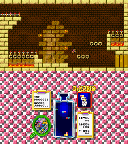
PSP Homebrew
Whilst we wait for the PSP release here in England, ps2dev user Shine is developing Lua Player. This is good news for the homebrew community as it enables beginners to create their own games using the Lua programming language. No need to compile any code, simply edit the text file, drop your grahics and sounds into the folder and copy to the PSP.
The Lua Player site has recently been born and budding creators can download the software, see other peoples games in the gallery (including source) and read tutorials. Lua Player can also handle sound and all of the button inputs. A PC version of the player is in the works that will enable you to test the games before loading on to the PSP. I am interested this from an art mod point of view, but I can see it becoming a very big resource in the future. Unfortunately for us Europeans, Sony has put firmware 2.0 on the release PSP, so no homebrew for us yet. [blogged by Chris on pixelsumo]
Posted by jo at 07:29 AM | Comments (0)
August 18, 2005
Location-Based Gaming

Industry Does Not Understand Location Technologies
In a Mobile Games Analysis, Kurt Uhlir says that the industry has still many false impressions about LBG. They must understand the complexities, strengths, and weaknesses of location technologies. They need to move past the “all or nothing” belief. Each positioning technology (GPS, WiFi, GSM, …) has its own complexity that is mainly underestimated by developers and publishers. The difficulties involve with integrating spatial data, and the accuracy that are needed in various games situations. When designing games, writing storylines and setting expectations, the industry must think about how accurate the average location will be, how often the player’s location can be updated, how the game will deal with the occasional inaccurate location reading and what the benefits are ton incorporating location into game play. [blogged by fabien on 7.5th Floor]
Posted by jo at 06:26 PM | Comments (0)
Center for Tactical Magic:
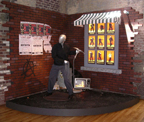
Tactical Ice Cream Unit
Grand Arts is pleased to present the latest project from the Bay Area-based Center for Tactical Magic, the Tactical Ice Cream Unit. Combining a number of successful activist strategies (Food-Not-Bombs, Copwatch, Indymedia, infoshops, etc.) into one mega-mobile, the TICU is the Voltron-like alter ego of the cops’ mobile command center. Incorporating an alternative strategy of utopian potlatch, the Tactical Ice Cream Unit is envisioned primarily as a mobile distribution center for free ice cream and information produced by local community groups.
Although the TICU appears to be a mild-mannered vending vehicle, it harbors a host of high-tech surveillance devices, including a 12-camera video surveillance system, GPS with satellite internet, and a media center capable of disseminating live audio/video. More than creating an undercover Mission: Impossible aesthetic, the TICU’s full surveillance suite provides grassroots access to mobile communications technologies. Whether used to produce independent community news or to monitor corporate dumping or police activity, the TICU will investigate the limits of “neutral technologies”.
At various times the TICU will invite visitors to explore the interior, view documentation of the street operations, or collaborate on “missions”. In addition to it’s regular cruising of local neighborhoods and streets, community groups may suggest uses for the Tactical Ice Cream Unit such as beach clean-up, block parties or supporting a strike. The Unit is prepared to augment any event and should the TICU wander into the vicinity of a rally, protest or civil uprising, the Unit is equipped to serve as a mobile oasis, where the activists can quench their thirst, reload their cameras, document unfolding events, and protect themselves from various airborne dispersants.
In short, the TICU seeks to protect, provide, energize, invigorate and educate its audience. Whether lurking in a corporate park or chillin’ in a neighborhood park, the Tactical Ice Cream Unit promises to attract people from all walks of life, thus serving as a mobile nexus for community activities while providing frosty treats and food-for-thought.
The Center for Tactical Magic is an organization dedicated to the extensive research, development, and deployment of the pragmatic system known as Tactical Magic. A fusion force summoned from the ways of the artist, the magician, the ninja, and the private investigator, Tactical Magic is an amalgam of disparate arts invoked for the purpose of actively addressing Power on individual, communal, and transnational fronts.
The Tactical Ice Cream Unit would like to extend an invitation to you to join an elite corps of embedded journalists during our ground operations in Kansas City. A few, select journalists will be permitted to ride along with the TICU crew as we begin our civic tour of duty. Participating members of the TICU Embedded Journalist Corps (EJC) will gain a behind-the-scenes and in-the-streets look at the Tactical Ice Cream Unit. This revolutionary, new project designed by the Center for Tactical Magic is preparing to take to the streets by August 20. Contact us if you feel you are up to the challenge!
For further information, contact:
April Calahan-McDonald
Grand Arts Assistant Director
(816) 421-6887
gallery@grandarts.com
Posted by jo at 06:03 PM | Comments (0)
August 17, 2005
MATISSE & SMS
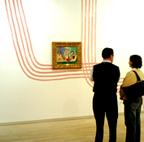
Different takes on Matisse
MATISSE & is the title and framework of an experimental exhibition currently running at the Danish National Gallery (Statens Museum for Kunst) in Copenhagen. Works by three contemporary artists - Malene Landgreen, Jesper Just and Aino Kannisto - are practically and conceptually intervowen with the work of Matisse and visitors can access a sub layer of information via their mobile phones.
More precisely, by sending an SMS to a phonenumber situated next to the individual artworks, visitors recieve a text message - a thought or a statement - formulated by Landgreen, Just or Kannisto. Furthemore, visitors can also submit their own thoughts as well as recieve messages submitted by previous visitors, thus enabling them to interconnect via their feedback. [via guerrilla innovation]
Posted by jo at 05:29 PM | Comments (0)
August 16, 2005
TECHSTYLE NEWS: Issue #52 - August 15, 2005

Next Generation Mobile Technology
Techstyle News is a free monthly newsletter providing summaries and commentaries on stories related to the next generation of mobile technology and style, produced by Thinking Materials.
In this issue: (1) Hardwear News: Motorola and Oakley announce cellphone sunglasses; Texas Instruments launches mobile single-chip solution; MP3 sunglasses from Global American Technologies; Digital locket from Beatsounds; Digital picture pendant from Spectare; (2) Softwear News: IBM software lets you carry your PC around your neck; and (3) Events: Mobicom 2005 in Cologne; Ubicomp 2005 in Tokyo; Wearable Futures in Newport.
HARDWEAR NEWS
MOTOROLA AND OAKLEY ANNOUNCE CELLPHONE SUNGLASSES
Motorola and Oakley has announced the expected availability of RAZRWIRE Bluetooth eyewear in early August. The Bluetooth module is designed to complement the overall look of the sunglasses, creating truly wearable technology. The controls include two volume buttons and a single button used to handle incoming and outgoing calls. RAZRWIRE allows you to carry on phone conversations while up to 30 feet away from your compatible Bluetooth-enabled cell phone. Bluetooth Sniff Mode technology increases the battery life of RAZRWIRE, offering continuous talk time of more than five hours and standby time of up to approximately 100 hours.
http://oakley.com/about/razrwire/
TEXAS INSTRUMENTS LAUNCHES MOBILE SINGLE-CHIP SOLUTION
TEXAS Instruments has announced the launch of its single-chip mobile solution. Manufacturers such as Nokia, Motorola, and Ericsson are expected to launch handsets based on the solution in nine months. Mr Tom Engibous, Chairman, said: "The single-chip solution will bring down power and space consumption by 50 per cent and cut costs by 30 per cent". With this, he said, there is the possibility of $20 cell phones on the horizon. The small chips can be easily integrated, bringing phone technology to all kinds of products.
http://news.com.com/Is+a+20+cell+phone+on+the+horizon/2100-1039_3-5823239.html
MP3 SUNGLASSES FROM GLOBAL AMERICAN TECHNOLOGIES
Global American Technologies have launched the Fio MP3 sunglasses. The retail prices are $200 to $400 at storage capacities of 128MB up to 1GB, include 3D stereo sound earbuds in each arm, support MP3/WMA/ADCPM and have a reported battery life of 8.5 hours. Transfer is via USB 2.0 to either a Mac or a PC, with an integrated microphone providing digital voice recording capabilities.
http://www.techtree.com/techtree/jsp/article.jsp?article_id=5284&cat_id=505
DIGITAL LOCKET FROM BEATSOUNDS
The Digital Locket EMP-Z II Plus from BeatSounds tries to be more than just a wearable MP3 player. This tiny music player has a small, oval color screen that can display a photo. The Digital Locket measures 2 inches by 1.8 inches, weighs 0.9 ounce and has a battery that lasts up to 16 hours before it needs recharging. It can play digital audio files in the MP3 or Windows Media audio formats and comes with its own software for transferring photos and music from a computer over a USB connection. An FM radio tuner and a voice recorder are also tucked inside. Prices start at $80 for the 256-megabyte version and go up to $150 for the model with a full gigabyte of memory.
http://beatsounds.com/Pb/index.asp?CurrentCatID=C1035889862578133
DIGITAL PICTURE PENDANT FROM SPECTARE
The Pixi Digital Picture Pendant is a necklace with a 1-inch, 96 x 64 pixel LCD screen and enough memory (512 KB) for storing up to 54 extremely low-res digital photos. For viewing up to 2 hours in slideshow mode, or longer in manual mode. The pendant is USB 1.1 compatible and compatible with photos in JPEG format.
http://chipchick.blogs.com/chip_chick/2005/08/pixi_digital_pi.html
SOFTWEAR NEWS
IBM SOFTWARE LETS YOU CARRY YOUR PC AROUND YOUR NECK
Researchers at IBM are testing software that would let you tote your home or office desktop around on an iPod or similar portable/wearable device so that you could run it on any PC. The virtual computer user environment setup is called SoulPad, and consumers install it from a x86-based home or office PC. SoulPad uses a USB or FireWire connection to access the network cards for connecting to the Internet, the computer's display, the keyboard, the main processor and the memory, but not the hard disk. After the person disconnects the system, SoulPad saves all work to the device, including browser cookies or other digital signatures that a PC keeps in its short-term memory.
http://www.research.ibm.com/WearableComputing/SoulPad/soulpad.html
EVENTS
MOBICOM 2005 IN COLOGNE
ACM MobiCom 2005 is dedicated to addressing the challenges in the areas of mobile computing and networking. This single-track conference serves as an international forum addressing networks, systems, algorithms, and applications that support the symbiosis of mobile computers and wireless networks. It will be held August 28 through September 2 in Cologne. Speakers include representatives from Bell Labs, Daimler Chrysler, NTT DoCoMo and MIT. Particularly interesting could be the panel on Wearable computing with, among others, Steve Mann.
http://www.sigmobile.org/mobicom/2005/
UBICOMP 2005 IN TOKYO
UbiComp 2005, the Seventh International Conference on Ubiquitous Computing, will be held September 11-14, 2005 in Tokyo. The conference provides a forum in which to present research results in all areas relating to the design, implementation, application and evaluation of ubiquitous computing technologies. Papers include submissions from Intel, NTT, Nokia, Microsoft and IBM. There are also thirteen workshops to participate in.
http://ubicomp.org/ubicomp2005/
WEARABLE FUTURES IN NEWPORT
Wearable Futures is an interdisciplinary conference, to be held in Newport on 14-16 September, which aims to bring together practitioners, inventors, and theorists in the field of soft technology and wearables including those concerned with fashion, textiles, sportswear, interaction design, media and live arts, medical textiles, wellness, perception and psychology, IPR, polymer science, nanotechnology, military, and other relevant research strands. We will be examining how some broad generic questions will be explored in relation to wearable technology including but not restricted to: aesthetics and design, function and durability versus market forces; the desires, needs and realities of wearable technologies; technology and culture; simplicity and sustainability; design for wearability.
http://artschool.newport.ac.uk/smartclothes/wearablefutures.html
Posted by jo at 09:57 AM | Comments (0)
MAY YOU LIVE IN INTERESTING TIMES
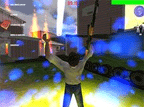
Exploring Digital Technologies in the Context of Public/Shared Spheres
MAY YOU LIVE IN INTERESTING TIMES is Cardiff’s inaugural festival of creative technology - a three-day programme of events being held across the capital. The festival is being developed between Chapter and Bloc (Creative Technology Wales) and includes a two-day conference, new commissions, residencies, screenings, and artists’ projects in public sites across the city.
Artists are increasingly engaged with or inspired by digital technology - exploring consumer and communication technologies such as the worldwide web, mobile networks, file sharing, and computer gaming. Because digital technology is a participatory medium with global reach, artists tend to explore digital technology in the context of public and shared spheres. Often digital art is situated somewhere between public art and street culture where the technology itself is used as a ‘site’ for the production and presentation of art works. Although digital technology is often claimed to go beyond physical limitations, engagement with technology is always embedded in real spaces, whether this is explored from a user or network perspective.
Artists include: Blast Theory, Anri Sala, Grennan & Sperandio, TJ Wilcox, Jen Southern & Jen Hamilton, Scanner, Sarah Morris, Michelle Teran, Eddo Stern, Stefhan Caddick, Nina Pope & Karen Guthrie, Tim Davies, Rosalind Nashashibi, Tenant Spin, Andy Fung, Paddy Jolley, Mircea Cantor, STAR Radio, Valérie Jouve, Chris Evans, Mike Mills, Artstation, and many more.
Conference day 1: 28 October - Locative media and emplacement Speakers include: Prof Michael Corris, Head of Art & Photography, University of Newport; Claire Doherty, Director, Situations; Nina Pope, artist; Heath Bunting, artist; Giles Lane, Proboscis; Steve Benford, Professor in Collaborative Computing, University of Nottingham; Dr Sarah Green, Social Anthropologist, University of Manchester; Jen Southern & Jen Hamilton, artists.
Conference day 2: 29 October - Gaming Speakers include: Ju Row Farr, artist, Blast Theory; Stuart Nolan, researcher; Christopher Sperandio, artist; Eddo Stern, artist; David Surman, Lecturer in Computer Games Design, University of Newport; Alex Mayhew & Emma Westecott, Games Producers & Directors.
Conference Prices: £50 per day / £90 weekend ticket – organisations; £30 / £50 – early bird booking before 7 October £20 per day / £30 weekend ticket – individuals /concs; £15 / £25 – early bird booking before 7 Oct Party, The Point, Cardiff, 29 Oct, 8pm: Special Guests Scanner, Michelle Teran, Proober Glombat, Cymbient, Christopher Rees DJs.
The site will feature live streaming, artists’ projects, downloads, full biographies and images, conference booking and travel details, press section and the chance to receive regular updates on festival activity.
For further information about the programme and conference please contact: Gordon Dalton, Festival Coordinator: gordon@mayyouliveininterestingtimes.org 44 (0) 29 2031 1059 / 0779 234 1654
The festival is a Cardiff 2005 event and is presented with the support of: Cardiff County Council, Millennium Commission, the Arts Council of Wales, WDA, Cywaith Cymru . Artworks Wales, BBCi, Creative Mwldan, Millennium Stadium, Mute, G39, The Big Sleep, Elfen, Zenith Media, UWN, National Museums and Galleries of Wales, Sequence, Coolpants, Ping Wales, Oriel Mostyn and @Wales. http://www.bloc.org.uk/cgi-bin/showbig.cgi?id=55
Posted by jo at 09:51 AM | Comments (0)
August 13, 2005
The Handydandy
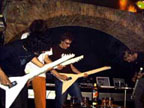
Rocking the stage with mobile phones
The Handydandy consists of five media artists from Austria (Bauch Bernhard, Gross Luc, Kirisits Nicolaj, Savicic Gordan, Waldner Florian) using their mobile phones as musical instruments. The mobile phones are used only as interfaces and they are connected, via Bluetooth, to a computer network.
"The entire instrument played by the musicians, is thus divided into the mobile phones, the Bluetooth connections and the laptops acting together over WLan. Thereby different Feedback systems on social and digital level, which are used for the compositions, develop. The selection of this configuration makes possible to use not only the movement in space as temporally akusmatic category but also to connect the powerful aesthetics of a Rock performance with the intellectual requirement of the electronic music. The Handydandy is at the same time a RocknRollband and a computer network - music group." Video. [blogged by Regine on we-make-money-not]
Posted by jo at 08:54 AM | Comments (0)
August 12, 2005
Phones Make Korea a Silent Society
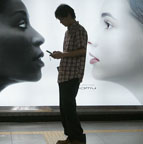
Living Without Saying a Word All Day
"The mobile phone bill of college student Oh Su-hyeon (21) for the month of July lists 648 text messages and four hours and 55 minutes of talk -- an average of 21.6 text message a day and an average nine minutes and eight seconds of conversation. ”I used to spend about two hours on the phone every day, but now I send text messages. All you need to do is state your business, there's nothing superfluous and it's convenient." [...]
If in an age of near-ubiquitous communication people have become paradoxically quiet, it is because means of communication that replace the spoken word, like chat programs and text messengers, are cheap, convenient to use and accessible everywhere. There are people who say they could live comfortably without saying a word all day, and who send so many SMS and chat online so much that sometimes they find it awkward to talk. Yet it is the telephone that is at the heart of these changes, a device that is rooted more than anything else in the attempt to allow people to talk. [...]
Cell phones with GPS navigation systems have also created a world where no one needs to ask directions, and DMS systems allowing people to watch TV on their phones have replaced gossip as a way to kill time. But the changes are taking place elsewhere too. Manned subway ticket booths are being visited by much fewer people. Cho Dong-hwan, the manager of Gwanghwamun Station on subway Line 5, says of the 28,000 passengers who use Gwanghwamun Station daily, over 80 percent use transport cards. ”The overwhelming majority of passengers using the ticket window are asking for senior citizen tickets.“
There are concerns that the silent society could aggravate alienation and isolation. But experts say there is no need to expect the worst: it is merely that communication is changing, from face-to-face to other forms, yet the flood of communication itself has not stopped. [...]
Yonsei University sociologist Kim Ho-gi says young-generation ”cool“ means a preference for writing over speech. ”Speech is loaded with feeling, and because young people prefer communication styles that convey meaning simply and clearly while keeping their own emotions in check, they like communicating through text messages." Link [via ratchet up]
Posted by jo at 09:09 AM | Comments (0)
August 10, 2005
Personal, Portable, Pedestrian:
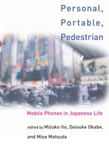
Mobile Phones in Japanese Life
The Japanese term for mobile phone, keitai (roughly translated as "something you carry with you"), evokes not technical capability or freedom of movement but intimacy and portability, defining a personal accessory that allows constant social connection. Japan's enthusiastic engagement with mobile technology has become -- along with anime, manga, and sushi -- part of its trendsetting popular culture. Personal, Portable, Pedestrian, the first book-length English-language treatment of mobile communication use in Japan, covers the transformation of keitai from business tool to personal device for communication and play.
The essays in this groundbreaking collection document the emergence, incorporation, and domestication of mobile communications in a wide range of social practices and institutions. The book first considers the social, cultural, and historical context of keitai development, including its beginnings in youth pager use in the early 1990s.
It then discusses the virtually seamless integration of keitai use into everyday life, contrasting it to the more escapist character of Internet use on the PC. Other essays suggest that the use of mobile communication reinforces ties between close friends and family, producing "tele-cocooning" by tight-knit social groups. The book also discusses mobile phone manners and examines keitai use by copier technicians, multitasking housewives, and school children. Personal, Portable, Pedestrian describes a mobile universe in which networked relations are a pervasive and persistent fixture of everyday life.
About the Author: Mizuko Ito is Research Scientist at the Annenberg Center for Communication, University of Southern California, Los Angeles. Daisuke Okabe is Lecturer at the Graduate School of Media and Governance, Keio University, Shonan Fujisawa Campus, Japan. Misa Matsuda is Assistant Professor of Sociology at Chuo University, Tokyo. Mimi posted a draft of the intro chapter as well as the table of contents [via apophenia]
Posted by jo at 09:45 AM | Comments (0)
August 09, 2005
In Memory of Franz Feigl
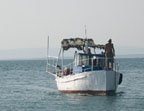
The Myth of Bolshevik
Network activists and friends of the medien.KUNSTLABOR want to travel by boat from Amsterdam to the Black Sea. Final destination of the journey is the island St. Anastasia, formerly known as Bolshevik (1945 - 1990). The boat is named after Franz Feigl, an Austrian artist and network activist who lived in Amsterdam and died in 2001 at a young age.
The boat will record on its journey all open wireless lan access points. This activity, if conducted by car, is called war-driving. The peaceful goals of the Motorship Franz Feigl aim at highlighting the possibility of opening up networks and creating a free infrastructure (see Funkfeuer, Freifunk,
Consume).
The boat will also communicate via packet radio and pictures will regularly be sent by GPRS to http://stroem.ung.at. MS Franz Feigl has already travelled from Amsterdam via Linz to Vienna. In Linz at the wharf of the Times Up collective repair work on the boat was done. It has travelled safely from Linz to Vienna under captainship of Franz Xaver.
Tomorrow, Wednesday August 9, the MS Franz Feigl is due to leave for Bratislava, where it will arrive om Thursday or Friday. On Monday, August 15, it will arrive in Budapest.
The project is carried out in collaboration with 05-trov and mobil.KUNSTLABOR.at
SMS Kontakt: 00436764902223
Chat: irc.kunstlabor.at#kunstlabor
E-mail:boot[at]kunstlabor.at
[via netbehaviour]
Posted by jo at 12:35 PM | Comments (0)
SMS Chatwall
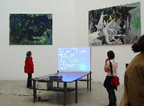
A Sculpture Replies
For this year's diploma exhibition of the Hochschule für Bildende Künste Dresden (Dresden's High School of art), Matthias Haase has presented a project using a special version of the SMS Chatwall event software. Haase installed the GSM-module, a computer and beamer equipment on a table with a projection screen, calling the installation "Bote" (messenger). Exhibition visitors can send short messages to the number shown on the screen. As a take-away gift for the visitor, the sculpture replies with an artist's "thank you" SMS, mentioning the art exhibition at the HfBK 2005.
People who want to take part, but can't attend the exhibition can send an SMS to +4915204912748. Thanks a lot Alex! More here if you speak german. [blogged by Regine on textually.org]
Posted by jo at 08:36 AM | Comments (0)
August 08, 2005
Vis-a-Vis:
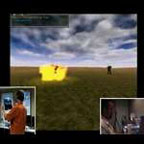
Mobile and Pervasive Electronic Gaming
After WiFi Bedouin and other mobile, location-based games, one of Julian Bleecker's current project along with Peter Brinson is called Vis-a-Vis. They’ve cobbled together a mobile gaming framework composed of light-weight, outdoor viewable TabletPCs, the Torque available source game engine, a GPS, a mil-spec 3D sensor that’s able to measure where one points the TabletPC. The plan with Vis-a-Vis Games is to take ordinary electronic gaming off the old fashioned video game console and desktop PC and moves it out into the real world. One of their current demos is an implementation of the Red Light, Green Light game. [blogged by fabian on 7.5th Floor]
Posted by jo at 09:25 AM | Comments (0)
August 06, 2005
+336+
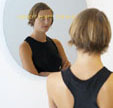
SMS Controlled Spy-Mirror
The +336+, designed by Robert Stadler, is a mirror able to receive SMS sent from a mobile phone. The messages appear as luminous text, running on the mirrors’ surface when one gets close to the mirror. [via textually.org]
Posted by jo at 07:01 AM | Comments (0)
August 05, 2005
Air Vent: Call for Participation

The Relationship Between Sound and its Source
AIR VENT is a project that takes natural sounds out of their specific location, the sounds of peoples personal spaces [via mobile telephone] & places them live via radio senders or the internet into new contexts, into diverse locations, into both similar & contrasting environments.
The work stems from ideas based on the relationship between sound & the sound source; natural rhythms & patterns in everyday sound [background noise, dialogue, etc]; the fine line, & often friction between natural & synthetic sound in connection to space; audio & visual perception.
Air Vent is radio/telephonic project by k donovan for Radio LoRa in Zürich that will start on 1st august at 00:00 & end on 10th august at midnight. Five minute snippets of sound will be transmitted hourly for those 10 days, both pre-recorded & live via mobile/landline/internet phones from around the world. The idea is to take the background sound from a specific space & relocate it (mainly live) into other new, similar & contrasting environments through radio.
If you are interested in sharing the sound from your space live, you are gladly invited to participate by registering online & providing dates & times when it would be possible to call the studio in zürich, or connect via internet phone. You will then be contacted (via sms or email) with a confirmation.
Pre-recorded sound files (preferably recorded with a telephone, but other ways are also acceptable) of environmental/field recordings can be sent to:
spezialprogramm@lora.ch (mp3's) or by snail mail (be quick!) to: AIR VENT, Alternatives Lokalradio Zürich, Postfach 1036, CH-8026 Zürich, Switzerland.
Please include a short introduction about the place and time at the start of the recording.
Queries & questions? Contact: kdonovan_uk[at]yahoo.co.uk
Things to acknowledge: For live calls, don't forget time differences! The concerns of this project are the 'natural' background noises that are specific to a certain space/time/situation.. therefore, participants are asked to simply use their phone to transmit their given environment through sound, rather than to perform or contrive something for the listeners. And by the same token, pre-recorded pieces that have not be edited/layered/effected would be preferred.
Posted by jo at 10:20 AM | Comments (0)
August 04, 2005
Capture the Flag
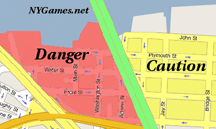
TONIGHT!
Since many of you love the game of Capture the Flag so much we are playing it again, in DUMBO. Just take the F train to York street or simply meet at the corner of Jay and York. The Map is the playing grounds. Bridge street remains neutral territory. Meeting time is at 7:30pm. Game starts at 8pm, this Thursday, 8/04/2005. Remember, the game is cellphone enabled, so bring one! Rules will be provided at the game. Hope to see you all on Thursday!
Posted by jo at 09:46 AM | Comments (0)
Nomadology in Architecture:
Ephemerality, Movement and Collaboration
"ABSTRACT: This thesis investigates the theoretical and practical importance of nomadic ways of life for architecture. Nomadology is a construction of Deleuze and Guattari's 'counter-philosophy', challenging authenticity and propriety, in this case, in the context of architecture. This thesis describes how nomadology may serve contemporary architectural practice and criticism; challenging static, permanent, and heroically solitary ways of working and dwelling. Nomadology in architecture proposes ways for thinking and working temporally, dynamically, and collaboratively. The thesis suggests strategies – diagramming, ephemerality, movement, and collaboration – as ways of reconciling nomadism and architecture..." From Nomadology in Architecture: Ephemerality, Movement and Collaboration by Gregory Cowan [via]
Posted by jo at 08:51 AM | Comments (0)
August 03, 2005
Pico-Peering

Building the Community Wireless Uber-Network
Imagine a wireless network stretching from Kladno to Buenos Aires; from London to Johannesburg; from Urbana-Champaign to Sydney; to more and more places around the globe. Beginning in 2000, a group of dedicated community wireless developers sat down to figure out a way for a heterogeneous group of Community Wireless Networks to cooperate and affiliate. FreeNetworks.org has led the way — crafting a simple, accessible, 1-page “Pico Peering” agreement that any free network can adopt. I bring this up, not because it’s a new idea (in fact, it’s been pondered, discussed, revised, and refined over multiple years), but because it offers an opportunity for the myriad wireless networks to collaborate. [via MuniWireless]
Posted by jo at 01:02 PM | Comments (0)
Hitching Stealth with Trevor Paglen
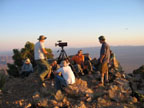
Experimental Geographer
"...Experimental lecturer and all around academic outlaw Trevor Paglen is a new breed of researcher for the University of California at Berkeley. He has been more aptly called by his peers an underground geographer, armed with a telescope, a GPS device, some light field military listening equipment, a car trunk full of cameras and maps, and one hideously nondescript corporate infiltration suit. Swapping between his other outfits as an intervention artist, and investigative journalist, a prison-abolition activist, punkrocker and total sound head, not to mention a third degree master in the art of panoptic trespass, he takes a wildly experimental approach to studying the strategic and practical boundaries of contested public/private space.
Altogether, he's concocted his own strain of what he prefers to call 'experimental geography' that he uses to trace the immense networks of undisclosed borders, shadow lairs and underground finanscapes edified by corporate, state and national defense collusion..." From Hitching Stealth with Trevor Paglen; Text by Bryan Finoki/Photos by Trevor Paglen, Bryan Finoki, & Bill Luoma, Archinect. (2005) [via]
Posted by jo at 10:12 AM | Comments (0)
August 01, 2005
Surveillance
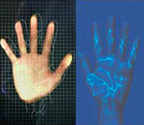
The Holy Grail Is A Universal Sensor
Here's the good stuff from a massive and chilling report on the future of surveillance from Business Week Online:
"Britain has 4 million video cameras monitoring streets, parks, and government buildings, more than any other country. London alone has 500,000 cameras watching for signs of illicit activity. [...]
Research laboratories envision tools that could identify and track just about every person, anywhere -- and sound alarms when the systems encounter hazardous objects or chemical compounds. Many such ideas seem to leap from the pages of science fiction: An artificial nose in doorways and corridors sniffs out faint traces of explosives on someone's hair. Tiny sensors floating in reservoirs detect a deadly microbe and radio a warning. Smart cameras ID people at a distance by the way they walk or the shape of their ears. And a little chemical lab analyzes the sweat, body odor, and skin flakes in the human thermal plume -- the halo of heat that surrounds each person. [...]
Camera phones, nanny cams, and even satellite photos are commonplace. Biological sensors are flooding into households in the form of tests for HIV, pregnancy, and diabetes -- some of which can relay data to a doctor -- and soon there will be far more sensitive DNA-based tests. Next up are radio-frequency identification (RFID) tags. They're showing up in stores to help track inventory, and 50 people in the U.S. have had them planted under their skin to broadcast their ID and medical data, in case of an emergency. [...]
One great worry is that those who stand out from the norm or express unpopular views, minorities, the poor, or just the ill-mannered, may get stomped in new and surprising ways. A recent incident in South Korea shows how this can play out. A subway commuter posted on the Internet some cell-phone photos he took of a passenger who had refused to clean up after her dog relieved itself during the ride. In no time, a vigilante mob on the Web identified her by her face and the purse she was carrying, and she became the object of national vilification. “You can move into a surveillance society one tiny camera at a time,” says Deirdre Mulligan, director of the Samuelson Law, Technology & Public Policy Clinic at the University of California at Berkeley. [...]
Experts disagree about when the most visionary tools to thwart terrorist acts will arrive on the market -- and whether they will deliver on their promise. Sensors that can detect bombs, radiation, and toxins exist today, and will be far more sophisticated a decade from now. But strewing them across every city in America would cost untold billions of dollars. High-tech electronic eavesdropping on communications networks can be effective, but only if terrorists use telecom systems. And even with improvements in cameras, biometric devices such as iris scans, bomb sniffers, and tracking software, it will be years before they can pick a terrorist out of a crowd. In short, the march toward a surveillance society may be inevitable, but no simple cost-benefit equation can assure us that the sacrifices will be worth it. We'll be debating the point for decades to come. [...]
In the quest to sort bad guys from good, scientists are poking ever more intimately at the core of each person's identity -- right down to the DNA. One day people's distinctive body odor, breath, or saliva could serve as an identifier, based on the subtle composite of chemicals that make up a person's scent or spit. [...] scientists are creating super-sensors to pick up myriad molecules released at low concentrations that constitute human scents, including carbon dioxide, acetone, ethanol, and sulfur. To capture them, they poke tiny pores into glass -- as many as 10,000 on a chip the width of a pencil eraser -- each tailored to the size of the molecule. Excited by a laser, the chemicals trapped in the pores emit different colors, and computers can then analyze the resulting pattern.
Dental researchers are attacking the challenges of identification and diagnosis from another vantage point -- the mouth. They're studying whether saliva contains markers for various diseases. If the technology works, it has additional potential for biometric applications, too. Spit contains many of the proteins, nucleic acids, and other substances that are found in blood. While they are present in fainter quantities, they can also be sampled less intrusively. [...] they can detect in human saliva some 3,000 messenger RNAs, molecules that carry genetic information within a human cell. These molecules perhaps can serve as markers for disease, or perhaps for identity, just like DNA. And they are often easier to detect. About 180 RNA markers are common across all individuals, but the remainder can differ. [...]
Biometrics bring a host of other troubles. As they become used more and more in office access, ATM passwords, passports, and ID cards, their value increases, and so do efforts to steal or spoof them. And because biometrics are cloaked in science, matches may acquire an unearned aura of dependability. Recently, cryptographers in Japan showed that common fingerprint-based systems can be easily duped using simple molds of melted Gummi Bear candies. [...]
Despite the many failings of biometrics, the federal government is encouraging scientists to fashion them into covert surveillance tools. Face recognition -- the most obvious way to track people because it's how humans do it -- is still dogged by problems matching images that may be distorted by a smile or ill-placed shadow. While scientists work out those glitches, others are improving iris-based technology for surveillance at a distance. Though computers can easily find eyes on a face, today's systems can't scan irises from afar as people rush through a crowd. [...]
Another hope is that certain characteristic movements may be recognizable at a distance. Taking a page from Monty Python's Ministry of Silly Walks, the U.S. Defense Advanced Research Projects Agency, the research body credited with inventing the Internet, funds work on software that could identify individuals by their strides. Researchers measure the silhouette of the torso, the swinging of the shoulders and legs, and the time it takes to move through a single step. [...]
The most serious privacy breaches are almost all linked to the proliferation of fast and inexpensive data processing and storage systems. The worst problems arise when each bit of information an individual gives up over the course of a day -- from the E-ZPass scans on the morning commute to the credit card purchase at Starbucks (SBUX ) to the logging of PC keystrokes at work -- get tied across various databases to create a detailed dossier of an innocent Joe's daily activity. [...]
This is just one of many measures that trigger a Big Brother alert. One of the hot buttons is eavesdropping. An emerging wireless technology called software-defined radio has the power to make cellular phones compatible with any network standard, but also opens new frontiers of snooping. The commercial merits of the technology are self-evident: Say good-bye to dead zones and lack of interoperability between police and firefighter radios. But the technology also enables superscanners that can be tuned to pick up the images on your neighbor's computer. That's possible because all computers emit stray radiation. With software-defined radio even amateurs could probably design equipment that could spot somebody porn-surfing in the next apartment. The technology can also make it easier to turn the cell phone of a spouse into a bug when it's not in normal use. [...]
Advances in many surveillance technologies piggyback on progress in fields such as wireless signal processing, nanotechnology, and genomics. Even plain old digital cameras are hotbeds of innovation. The imaging sensors in consumer cameras have been achieving ever-higher resolutions, while plunging in price. Because the gadgets are so engaging, crowds end up participating in surveillance efforts. Witness spectators holding cameras and phones aloft whenever news breaks -- an act that may aid investigations, or hold police misbehavior in check. [...]
Improved picture quality has given a boost to Viisage rival Identix Inc., allowing it to add in minute details of the skin to increase the accuracy of facial recognition. It divides a small area on the face into a 400-block grid, and then inspects each block for the size of skin pores, wrinkles, and spots. And using an infrared camera, researchers at A4Vision Inc., a Sunnyvale (Calif.) startup funded in part by In-Q-Tel, the CIA's venture fund, cooked up a 3D approach. Its system creates a topographical map by projecting a grid pattern of infrared light onto a face, and matching the features.
Strides in wireless signal processing are bringing the power of astronomical instruments to homeland security. Giant radio telescopes today listen to the faint energy waves emanating from stars billions of light years away. The first earthbound applications of this electronic wizardry will be airport scanners that scrutinize passengers' bags. The principle is simple: All matter gives off so-called background radiation, or millimeter-wave heat, whether it's a supernova or a switchblade. [...]
A kindred technology can “see” the molecular composition of matter using extremely short wavelengths of energy. When a machine made by Picometrix Inc. shines these terahertz waves on a target, its molecules resonate at a telltale frequency. One plastic explosive, for instance, vibrates at 800 gigahertz. T-rays pose no radiation hazard because they don't penetrate human skin. But people being scanned will appear naked on the monitor unless the system is programmed to cover up private parts. [...]
The Holy Grail is a universal sensor, small and cheap enough to scatter in public places, and smart enough to sniff out anything that comes its way, without being preprogrammed to find specific molecules. Nobody is close to that goal yet, but Sandia National Laboratories has designed a lab-on-a-chip that detects a variety of both chemical and biological agents. It has skinny microchannels etched in its surface. When a gas or liquid moves through the tiny pipes, it collides with special material, and how much that slows the flow betrays the identity of the fluid. Sandia is now developing this technology to monitor the Contra Costa County (Calif.) water supply.
U.S. Genomics Inc. in Woburn, Mass., claims that it is hot on the heels of a universal sensor. Its prototype uses particular molecules to tag important DNA sequences in the genes of lethal pathogens, such as anthrax. Then, primed with a fluorescent dye, those sequences light up, and a photo detector compares the pattern of illumination with a library of known bioagents." [blogged by John on Ratchet Up!]
Posted by jo at 10:20 AM | Comments (0)
Flexilis
![]()
Predict the Future by Inventing It
The fellows from Flexilis went for a world record attempt on reading RFID tags from a distance. The end result was a bit over 69 feet on top of the roof of DEFCON. Project details will be in our audio show, for now, a photo gallery of the gear....[via] [Speaking of world records, check out iFiber Redwire, winners of the Wifi Shootout Contest]
Every day new discoveries make it possible for hackers to steal data from mobile devices. You are at risk no matter what you carry. Cellphones. PDAs. Smartphones. All are potentially vulnerable to data theft.
Flexilis, Inc. starts as something simple and stunning: an idea. Through our collective vision and creative nurturing, the idea continues to grow, a concept metamorphosing into reality. The key to revolution is imagination; without it, change is impossible. By employing emerging technologies, flexilis possesses the potential to create entirely new industries or inexorably alter the course of existing ones. In short, we are capable of influencing the movement of technology, and, by extension, society itself.
Flexilis believes in the inherent necessity of taking controlled risks, actively seeking opportunities to create new markets and develop new avenues for implementation. The possibilities are restricted only by the limitations of our imaginations. flexilis will not only respond to the changes in emergent technology, but help to steer its course.
Posted by jo at 09:27 AM | Comments (0)
July 28, 2005
Human Scale Chess Game
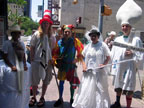
We Call Your Moves
Join the eighth Human Scale Chess Game in Oakland on Saturday, August 06. The organizers need 32 volunteers with working cellphones to play the roles of the chess pieces. Sign up now by email to select the role you will play. To participate, you will need a working cellphone and a couple of free hours on Saturday August 06. Costuming is strongly encouraged; the campier, the better.
SMS simulcasting and webcasting will likely be used during the Oakland game and there will be an afterparty. Check the site for updates as more details become available. Human Scale Chess is a project of Glowlab contributor Sharilyn Neidhardt. [via Glowlab]
Posted by jo at 04:44 PM | Comments (0)
July 27, 2005
Social Machines

Continuous Computing
"...After a decade of hype about "mobility," personal computing has finally and irreversibly cut its bonds to the desktop and has moved into devices we can carry everywhere. We're using this newly portable computing power to connect with others in ways no one predicted--and we won't be easily parted from our new tools...
There is something different about the latest tools. They are both digital, rooted in the world of electrons and bits, and fundamentally social, built to enable new kinds of interactions among people. Blogging, text messaging, photo sharing, and Web surfing from a smart phone are just the earliest examples. Almost below our mental radar, these technologies are ushering us into a world of what could be called continuous computing--continuous in the usual sense of "uninterrupted," but also in the sense that it's continuous with our lives, in all their messy, social, biographical richness..." From Social Machines by Wade Roush, Technology Review, August 2005.
Posted by jo at 11:01 AM | Comments (0)
July 25, 2005
SMS Satyagraha
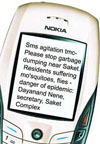
Systematic Non-Violent Resistance
For the uninitiated - Satyagraha is a philosophy of non-violent resistance against injustice, popularized by Mahatma Gandhi. The recently launched Mumbai Mirror tells a tale of how the Thane Municipal Corporation is being bombarded by text messages from 627 families of Saket Complex, a society of buildings, complaining and urging action against the stench created by open garbage. So much so, that the Municipal Corporation has had to change some of their officials' cell phone numbers! (read on for more details SMS Satyagraha!)
So intense was the onslaught that began on the morning of July 19 that the TMC changed some of its officials' cell numbers.Not to be outdone, the protestors took just two days to get hold of the new numbers and unleashed a fresh flurry of messages. While Day 1 saw over 300 SMSes beeping on hapless TMC officials' mobile phones, they are still receiving a 100 odd messages every day.
A brainwave of event manager and Saket Complex resident, Dayanand Nene, the protest is gradually showing results with TMC health department covering the garbage with sand to beat the stench. The residents, clearly unimpressed, say the SMS assault will continue. "In my profession, SMS is the ultimate way to reach out to the people. I realised that if we send SMSes to civic officials, they would have no option but to look into our problem," Nene said. Before they turned their cell phones into weapons, the residents of Saket Complex had tried everything from petitioning TMC officials to dharnas to get rid of the garbage dump. "For the past 25 days the TMC has been dumping garbage here. [Posted by Dina Mehta on worldchanging)
Posted by jo at 09:27 AM | Comments (0)
July 22, 2005
L.A.S.Y.

Live Action Scotland Yard
Live Action Scotland Yard (L.A.S.Y.) is a game created by Canadian designer Joel Friesen. The scenario is pretty simple: a ‘Mr X’ dresses in a bright yellow t-shirt, and then takes to the public transport systems of Toronto, Canada, pursued by three more people, ‘detectives’, in red shirts. The ‘criminal’ has to give clues to those chasing every third stop he makes.
One guy named Mr. X runs around Toronto’s transit system in a bright yellow shirt, while three or more guys in red shirts try to find him using the clues he gives at every third stop he makes. The three detectives are coordinated by dispatchers who tell the detectives where they think Mr. X might be and how best to block him off. Mr.X’s dispatcher is relaying information about the detectives whereabouts and tries to keep him away from them. The game ends when a time limit has been reached or X is caught. You need:
* A fully charged Cell phone with unlimited weekend minutes
* A Monthly or Day Pass for the TTC
* Sunscreen
Here are the rules: Scotland Yard is played by 6 or more people, half of the players are in the field, and the other half are dispatchers. Teams are paired up, one dispatcher with a field agent. Each pair is in contact with each other using a cell phone. One agent in the field is chosen to be “Mr. X” while the rest are detectives.(…) More about the rules here. [blogged by nicolas on pasta and vinegar]
Posted by jo at 10:10 AM | Comments (0)
July 19, 2005
From Image to Interface:
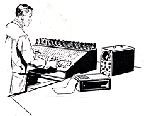
Preemptive Media
"The Preemptive Media Collective (PM) reengineers your thinking about mobile digital technologies imbedded in everyday environments. In live performances and real time actions, the PM art, technology and activist collective disturbs, dislodges, and redesigns new media technologies that we often ignore, like the bar codes on driver's licenses or radio frequency information devices used for EZ pass on highways...
At the forefront of what is called locative media, Preemptive Media repositions highly specialized technologies within the democratic discourse of low-tech amateurism. The emerging locative media movement has gathered steam and attention since 9/11 and the 2001 Patriot Act, which authorizes unprecedented data mining, invasions of privacy, wiretapping, and internet surveillance." Read From Image to Interface: Preemptive Media by Patricia R. Zimmermann, MediaChannel.org, July 8, 2005.
Posted by jo at 07:28 AM | Comments (0)
July 15, 2005
moo-pong
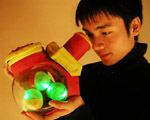
Capturing, Sharing and Reflecting Personal Histories
moo-pong--developed by researchers at Okude Lab, Keio University--is a technology that allows people to capture, share and view video images using Tangible User Interface (TUI). When a camera captures video images, they are associated with physical tokens using RFID technology. "Users can edit and browse among moving images by dropping moo-balls into the moo-scope. Mirrors in the moo-scope produce visual effects like a kaleidoscope."
The idea of connecting video/audio with physical objects is not new. For example, Durell Bishop's Marble Answering Machine represents incoming voice messages as marbles. Ullmer's mediaBlocks use small wooden blocks "for the containment, transport, and control of online media" However, moo-pong's goal is more ambitious than any classic TUI research projects: it is designed to support people to capture, share and reflect on their captured life histories.
At this year's RFID Journal Live, Paul Saffo, research director for the Institute for the Future said "You are in the early stages of helping build a real, new kind of media revolution." moo-pong can be viewed as an example for thinking about such media revolution in relation to RFID Technology. via SIGGRAPH 2005 Website. [blogged by manekineko on we-make-money-not]
Posted by jo at 08:45 AM | Comments (0)
July 13, 2005
Digital Dragon Boat Race

Culturally Amplified Treasure Hunt
The Digital Dragon Boat Race (DDBR) is a competitive REAL game played on foot using wireless technology to discover 6 locations significant to the Alcan Dragon Boat Festival’s history in Chinatown and area.
The Digital Dragon Boat Race challenges teams to achieve the fastest time possible as they navigate a maze of clues leading them on a thrilling, culturally amplified, treasure hunt through Vancouver’s Chinatown and area. The Digital Dragon Boat Race is the first of its kind game experience in North America and will appeal to all levels of thrill seekers.
Posted by jo at 09:16 AM | Comments (0)
FLORA
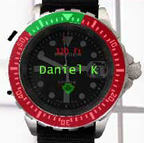
Location-Aware Watch
The FLORA (Fluorescent Light Organizing Radio Accessory), by Daniel Kantor, is a location-aware watch that helps people locate others, a mixture of a compass and the game "Hot and Cold".
When set on the Watch Mode, the FLORA displays time and date, like any other watch. To select which buddy to track, activate the Buddy Mode. The FLORA then dims the watch features and displays the name of the closest buddy to you. Once the buddy is selected, the Track Mode will change the face to red and green with green indicating the direction of the buddy being tracked. The buddy's distance will be displayed in feet. If the buddy is located in a different floor in mall a direction arrow will indicate which direction your friend is (up or down). [blogge by Regine on we-make-money-not]
Posted by jo at 08:22 AM | Comments (0)
July 11, 2005
YOU-WHO

Bluetooth Enabled Social Networking Game
YOU-WHO is a social game for mobile phones that makes use of the personal area networks created by Bluetooth technology to allow players to connect, play with, and meet new people.
The game can be played in any public space where people tend to linger, such as a train station, airport, café or bar. With these varied public settings, the chances are that every time you play, it will be with a completely different person, and result in a unique game experience. Here is a PDF and a walkthrough on how YOU-WHO works. [blogged by Gerrit Visser on Smart Mobs]
Posted by jo at 09:01 AM | Comments (0)
July 09, 2005
StalkShow

Navigating the Isolation of Others
StalkShow--by Karen Lancel and Hermen Maat--deals with threat of unsafety and isolation in public spaces. The performer carries a backpack, containing a laptop with a touch screen. It is a wearable billboard, with an attached webcam that records the face of the user of the touch screen.
Passersby are invited to touch the screen and navigate through statements about insecurity and isolation. The statements were written by asylum seekers, nuns, prisoners, digipersonas and others who live an isolated life. The user can identify her/himself with one of these persons and navigate through his/her statements. The navigation is displayed by a video projection on a large screen located in the same space (train stations, museums, squares, airports, etc.) The projection shows the portrait of the person that is using the touchscreen, together with the statements superimposed over the portrait. The user "watches" through a technically created, social-psychological frame of mind which seems to have a life of its own. [blogged by Regine on we-make-money-not]
Posted by jo at 12:27 PM | Comments (0)
July 08, 2005
m.pleasure
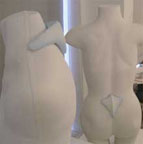
Feel the Communication
The mobile pleasure unit (m.pleasure) pushes forward the relationship we have with the mobile phone. m.pleasure works with a Bluetooth enabled phone. Attached to the most sensitive areas of our body, its intention is to translate an ethereal digital message into something physical, letting us feel the communication.
m.pleasure is also a critical approach to how we have sacrificed our personal relations for the benefit of technology: face-to-face relations are being pushed aside in favour of ever less physical communication.
As in every relationship, there will be a giver and a receiver. The Giver is totally safe, acting from their almost virtual position and sending messages to whomever they choose. The act of sending a message, however, becomes an altruist act of pleasing people.
The Receiver is placed in a completely complementary role. By connecting the m.pleasure to their body, they are rendered vulnerable and open to let technology act upon them. Receiving becomes an egotistical and carnal act of experiencing physical pleasure.
m.pleasure has been prototyped and the technology behind it already exists in the open market.
By Nagora Salaberria, at Someth;ng. [blogged by Regine on we-make-money-not]
Posted by jo at 02:12 PM | Comments (0)
July 07, 2005
Sleeping Dogs Lie - Part 2 - untitled

Navigable Cinema
Sleep and Insomnia. Alcohol. Drugs. Crime. Love making. Rock 'n' Roll. Memories. Distances seem to change. In the night, one's thoughts go from city to city, from one place to another, dreaming of another life in each other's place.
e-Xplo will create and present four performances of Sleeping Dogs Lie, a specially commissioned audio coach tour of nocturnal NewcastleGateshead in a coach equipped with an audio system and GPS receiver. The performance combines pre-recorded and live electro-acoustic sound, transforming the ordinary coach into a navigable cinema.
We cannot escape the politics of the sites we choose, and even in mapping a tour, even in struggling for the visual element, we cannot avoid the specifics of the place entirely. Having said that, how may our concerns be heightened by the visual, historical, architectural, acoustic and political circumstances of Newcastle? The night challenges us to enter a process of constructing and reconstructing topographical views on the subject.
e-Xplo develops maps, routes, sound and film materials as reflections of a multifaceted investigation into location, context, social identity, landscape, and the public space of information.
Each work proposes distinct but related topics, thus focusing on specific issues for concrete places while searching for broader insights.
e-Xplo is the framework for the collaboration between Erin McGonigle, Heimo Lattner, and Rene Gabri. Since 2001 they have organized bus tours in Budapest, Massachussetts, Berlin, London, Eindhoven/Rotterdam, Turin, and New York. [via net art review]
Posted by jo at 10:43 AM | Comments (0)
July 05, 2005
Targeting the 'Art' Around Every Corner
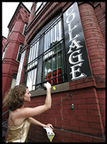
Yellow Arrow Stickers Make a Personal Point About a Public Space
"...Launched last summer by Counts Media, a New York-based arts and gaming company, the Yellow Arrow Project is a kind of geographical blogging. Adherents have been placing the palm-size stickers -- each with a unique code -- on street signs, city monuments, store windows, abandoned buildings -- anywhere, really, that observers encounter what they deem to be "art." Then, using a cell phone, they send a brief text message -- which could be an interesting historical fact, a restaurant review or just some goofy poetry -- to Yellow Arrow. People who come across an arrow can call the Yellow Arrow phone number, punch in the sticker's code and receive that message." Continue reading Targeting the 'Art' Around Every Corner by Tommy Nguyen, Washington Post, Saturday, July 2, 2005; Page C01. [via smartmobs]
Posted by jo at 07:52 AM | Comments (0)
APCompass
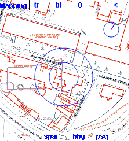
Pioneering and Exploration
APCompass, by David Wiltshire, is the prototype application of the gpsMiddleware platform. It uses GPS technologies integrated with a community maintained database to allow people to explore their local wireless networks. There is an emphasis on pioneering and exploration as users seek out new nodes to extend the database. The project considers issues of privacy, by ensuring every action performed by the user is broadcasted to a central server for anyone to see. Drawing on David Brin's idea of a ‘Transparent Society' APCompass encourages collaboration and accountability as users appreciate the fact that their actions are being constantly monitored.
gpsMiddleware is a custom built C++ application developed explicitly for providing a link between a palmtop computer and a global positioning system. The underlying software is available for download and adaptation for members of the community, so that it can be used as a basis for developing a range of creative applications. [via we-make-money-not]
Posted by jo at 07:49 AM | Comments (0)
Urban/Social Tapestries
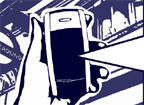
Final Reports
Proboscis has recently released the final reports on the Urban Tapestries project. You can order them here. ]The reports are free for private use by individuals, academics and non-profit organisations in the arts and civil society sectors.]
Urban Tapestries: Public Authoring, Place and Mobility A Proboscis White Paper by Giles Lane & Sarah Thelwall: This white paper presents our vision for public authoring and our conclusions on its relationships to place and mobility. We argue for design solutions to focus on actual people in real world contexts and situations, offer insights from the public trials of our prototypes and set out Proboscis’ own future vision and research agenda. Finally we recommend a series of policy proposals for realising a public knowledge commons, structured around place.
Urban Tapestries: Project Report
A Proboscis Report by Giles Lane & Sarah Thelwall
This report gives a chronological account of the development of the project and provides detail of and context for the key issues that arose over its two year span. In describing the activities and outcomes of the project it also connects the completion of Urban Tapestries to the research brief for Social Tapestries, a follow on research programme. A summary of the outputs, press coverage, some statistics and project credits are listed at the end of the report.
Urban Tapestries: Observations and Analysis
A Proboscis Report by Giles Lane, Alice Angus, Victoria Peckett & Nick West
This document presents the observations and qualitative evaluation of participant activity and feedback from the bodystorming experiences, the public trial of December 2003 and the field trial of June/July 2004.
Complimentary copies are available for affiliates, project funders and partners. Commercial organisations, government departments and government agencies are requested to purchase reports – bound copies will be posted to the billing address.
Posted by jo at 07:32 AM | Comments (0)
July 04, 2005
receiver #13
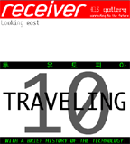
Looking East
Receiver #13: Looking East is out: East Asia is the most "unwired" region in the world. Half of all SMS transferred are sent by Chinese users, Japan has the most advanced mobile internet services, and Seoul is the most intensely digitally mediated urban space you can find. This receiver issue approaches digital mobilization the East Asian way.
Daisuke Okabe and Mizuko Ito: Personal, portable, pedestrian images; Anthony Townsend: Seoul searching – cybernomads and the ubiquitous city
Weigui Fang: China's culture of the thumb
Atau Tanaka: Malleable contents and future musical forms
Shin Dong Kim: Mobile media mobilize generations
Kenji Kohiyama: Mobile communication and place
Yat Siu: Eight visions from mobile Asia
Seiko Mikami: The perception and interfaces continuum
Posted by jo at 11:23 AM | Comments (0)
DigiDress

Peaking in Public
DigiDress--by Per Persson, Younghee Jung, Jan Blom, Ionific--is a matchmaking system that allows colocated people to be aware of potential partners in their vicinity. In an encounter between spatially proximate people, how can information in digital realm support and augment existing social behavior, practices and experiences taking place in real space?
The DigiDress application allowed mobile users to create a page on their phone with text and imagery describing themselves, their interests, dreams, things they are proud of, favorite jokes or any other content. Pages were then viewable by other users within Bluetooth range (typically 10-20m), without the page owner’s explicit consent. In this way, DigiDress users could take a ‘peak view’ at others without revealing their identity, similar to peaking at non-acquainted people in public spaces.
Posted by jo at 07:00 AM | Comments (0)
July 01, 2005
Single Story Building
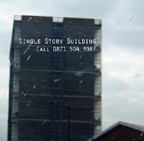
Mocking Interactivity
As part of Tate Online’s 40 artists, 40 days – a project in support of London’s Olympic and Paralympic Bid to bring the Games to Britain in 2012, Blast Theory is presenting a new phone based work: Single Story Building. In this interactive work, the participant drills through two thousand either/or questions. Starting with the question ‘Urban or Rural?’, the piece moves from the expansive into the cloistered, finally arriving at a secret and private space. Reminiscent of ‘10×10’ by Charles and Ray Eames, it uses this swoop in scale to explore the taste of the participant, whilst gently mocking the notion of interactivity itself.
Single Story Building can be accessed anytime of day by phoning 0871 504 3987. Use your phone's keypad to navigate through the work. Calls are charged at the national rate (8p/min from a landline). [blogged by Regine on we-make-money-not]
Posted by jo at 04:36 PM | Comments (0)
June 30, 2005
Monopoly Here & Now
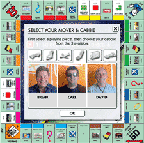
London as a Real-Life Playing Board
"We have turned London into a real-life playing board, and real taxi cabs into real-life playing pieces. All you have to do is make as much money from rent as possible, from five other cabs who are your opponents in the game. We've kitted out 18 cabbies with GPS (Global Positioning System), meaning we can pinpoint their exact whereabouts in London. They will be going about their normal day, picking up and dropping off customers all over town. All that you've got to do is spend the £15m we give you on properties from around the Monopoly Here & Now board, distribute your apartments and hotels and choose your cabbie. You are placed into a game with your cabbie and 5 other taxi drivers, all travelling around London. Every time one of the other cabs stops outside one of your properties, you get paid rent. Any time your cabbie lands on a property you don't own, you pay up. Simple!"" [via smartmobs]
Posted by jo at 11:06 AM | Comments (0)
WifiPicning
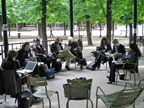
Bridging the Real and the Virtual
"...Just like a flash mob, the wifi bubble constitutes a small, short-lived and friendly community, mixing the real and the virtual, a kind of happining. In the context of shared activities, the wifi bubble possesses big potential and opens up the possibility of amusing and unexpected perspectives. Natacha, Sacha, Tristan et Tatiana have a lot of ideas for developing the concept : inviting a well-known personnality to speak via the chat with those present. Sharing files, multiplying proposed services ; A DJ performing live in the bubble for a mini-concert outside. Participants could write a story together, chat on the beach, in the mountains, in a museum, in a night-club, in a library, in the middle of a field, in a café, in the street…
Two and a half hours later, it was over. We shut our lap-tops and promised to blow another bubble this summer in Paris, in Maussane les Alpilles (near Les Baux de Provence) and in Normandy. We were delighted, everything went well. We were fifteen. The experiment was a success. The atmosphere was so convivial we cannot but begin again. And we are not alone, Bresilians on the web are already talking about launching sparkling bubbles under a southern sun." From The First WifiPicning Review [Related: Story of the Bubble] [via smartmobs]
Posted by jo at 10:54 AM | Comments (0)
Foundcity
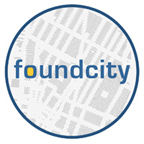
The Dynamic Nature of Place and Space
From The Feature: "...many projects have approached the idea of annotating space before but few have succeeded as well as FoundCity in giving this networked effort a more personal quality. By overlaying the perspectives of thousands of people, FoundCity approaches the dynamic nature of place and space."
Foundcity--by John Geraci, Christina Ray, and John Schimmel--is a social mapping tool for creating a personalized map of your life on-the-fly. Using your mobile phone, you "tag" or capture photos throughout the day, label them with any words you want, and send them to your map. At home, you access and customize your map, which you can share with friends, keep private, or publish openly. As a visitor to the Foundcity site, you view a map of all tags and connect with the people and places that share your interests. By plugging in to the network of Foundcity users, you learn what others value in the city as you surf their hotspots. By publishing your own tags, you share what you know about your city.
Posted by jo at 10:35 AM | Comments (0)
June 28, 2005
Yellow Chair Stories

Free Access
With the Yellow Chair Stories, Anab Jain opened her WiFi network to neighbours and passers-by. She placed a sign "advertising" the offer and a yellow chair outside her house, extending the boundaries of her home to encompass the boundaries of my wireless network. Both the sign and the chair defined a "real world blog space" which challenged the idea of "open network".
This "grass roots" design approach illustrates how wireless technologies could become interfaces to recreate transient spaces for conversations at the threshold of the public and the private, the physical and the electronic. Anab and Viktoria Klinker are also showing Sketch-a-move. [blogged by Regine on we-make-money-not]
Posted by jo at 08:14 AM | Comments (0)
June 27, 2005
NEIGHBOURHOOD GAMES
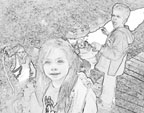
Transcending Existing the Boundaries
So what happens when kids come to the end of the level on their gameboys - what if they don't even have Gameboy? What is the fascination in sitting around in the park all evening? What is the most daring place you have seen tagged? Who decides when the game starts... and when it's over? What does a neighbourhood mean?
Neighbourhood Games--by John Paul Bichard--sets out to explore the possibilities of introducing cross-media games into the everyday neighbourhood environment, to propose ways in which games can be meaningfully structured across a broad range of channels, including fixed and mobile digital spaces and the "real" environment of the local neighbourhood.
Neighbourhood Games looks at ways in which gameplay normally associated with digital frameworks can be organised and played with or without these technologies. Key to this are not only the motivations and rewards a game sets up but also the nature of that gameplay in relation to environment, the aspirations of the game players and the existing social organisation in a particular locale.
The aim is to explore games methodologies that have the potential to enable a range of players to engage in play scenarios that are situated in the everyday environment and how far these are able to transcend existing the neighbourhood 'boundaries'.
Posted by jo at 12:47 PM | Comments (0)
Air Beam

Beaming Text and Images in the Air
SK Telecom announced Monday that it would launch an Air Beam service that displays text messages or images in the air. You can spell out messages in the air by waving your handset after downloading relevant program. A total of 16 beamed messages can be stored in the handset and a variety of emoticons are downloadable on Nate, SKT’s portal website. An acceleration sensor is deployed and the messages can be seen up to 20 - 30 meters away. [via Telecoms Korea]
More on air texting/wave messaging:
-- SMS Messages in the Air - Sun Data, a handset accessory company, announced it developed AirBeam that can display SMS or image stored in handsets in the air using LED. (December 2004).
-- Wave Messaging - By waving the Nokia 3220 camera phone from side to side, the LED lights of the Nokia Xpress-on FunShell light up to "write" a message that appears to float in mid-air (May 2004).
-- In March 2003, the WSJ reported from CeBIT about a phone called Kurv, made by Kyocera Wireless Corp which featured airtexting: "The company believes airtexting will be one of it's most popular features, especialy in night clubs. To airtext, you type in a text like 'call me' then wave it back and forth in the air. As the phone moves, a row of blinking red lights along the top of the phone leaves the phrase trailing behind it."
-- A company called Wildseed actually tested airtexting with teenagers - which was a big hit. cf post in Textually on airtexting.
-- And an article from Wap.com (no longer online) several years ago, featured a California company called Neoku.com which developed a platform called haikuhaiku. The article described a form of mobile graffiti, using a cell phone as a paint spraycan, "by waving it into the air to form a word, the text would appear onto the screen of a person passing by".
Audio interview explaining smswave [blogged by Emily on textually.org]
Posted by jo at 11:59 AM | Comments (0)
Connectivity Probes
![]()
Experiments in Social Networks
"Connectivity Probes is a two year (2003-5) research project comprising a series of objects, installations, and systems that explore the expanding potential of digital tools in communication mediums...The focus of the project is to provide inspirations for new directions in communication systems of the future or s of interaction in shared public space (using wired and wireless networks) and to develop new forms of asynchronous communication spaces.
...We define a "connectivity probe" as a sort of cultural or technology probe that specifically involves connecting two people or locations in an unexpected or provocative way with the hope of revealing unusual behaviors and inspiring feedback that may provide insight into the nature of human communication and serve as a resource for creativity and ideas in the development of new communication technologies. In its purest form, a "connectivity probe" is not a "prototype" that is meant to be formally analyzed and studied from a usability perspective in a process of iterative refinement leading to a product. Connectivity probes, like all probes, exist for the purposes of inspiration and feeding ideas into a design process in which the final products may take forms very different from the original probes that inspired them."
Posted by jo at 04:28 AM | Comments (0)
June 23, 2005
Digital Human Body Communication

Body Area Network [BAN]
Digital Human Body Communication was first unveiled to the public. It is also called as BAN (Body Area Network), as it handles communication between devices using the human body as a medium. Electronics and Telecommunications Research Institute (ETRI) said that although only a small amount of data, such as information on a name card, can be transmitted at the moment because the data transmission speed is just to be 2.4Kbps, the speed will be improved to 1MB within the yearend.
ETRI explained that BAN can be utilized in numerous ways, such as touch based authentification service, electronic payment service, e-business card service, and touch based advertisement service. [via Telecoms Korea] [blogged by Emily on textually.org] [Related]
Posted by jo at 11:14 AM | Comments (0)
June 21, 2005
Sale Away
![saleaway_11[1].jpg](http://www.turbulence.org/blog/images/saleaway_11[1].jpg)
Mechanical Orchestra with you as Conductor
In Sale Away, passers-by can conduct an "orchestra" of household devices via their mobile phones on a display window. The mechanical orchestra consists of flute, organ and brass playing vacuum cleaners, rattling kitchen mixers, buzzing ventilators, radio playing toy trains, wobbling jigsaws, dancing tumble dryers, humming refrigerators and other misused household utilities.
The conductor is a big refrigerator. This fridge is also the explanatory interface. To start the orchestra and wake up the shopping windows you have to dial the number and follow the commands displayed on the window. This call opens the door of the fridge, giving free the image of its explanatory interface, the "mobile phone robot person". The robot will explain and invite you to act. By pressing keys on the phone you can let all different instruments play along with the melody. You can set some single voices or the whole orchestra tutti.
Video. By Geert-Jan Hobijn (NL) and Carsten Stabenow (GER) Olaf Matthes (GER) from Staalplaat. Via the excellent Culture Base Open List. [blogged by Regine on near near future]
Posted by jo at 08:59 AM | Comments (0)
Rixome
![madrix_final_b[1].jpg](http://www.turbulence.org/blog/images/madrix_final_b[1].jpg)
Become a Walker
rixome is a network and a tool that turns mobile screens into windows that show the virtual and public dimensions of our point of view. A walker (a rixome user) can see on his/her mobile phone/PDA/laptop screen the virtual interventions that have been added to the location where s/he now stands. For example, a spoken message can be left on a given location for other "walkers" to hear through headphones whenever they pass by. The message can also be written, or it can be a 3D animation or image, a photography, a drawing, a video.
Remote rixome users can also check vía Internet the traces left by others but s/he won't be able to add an intervention similar to those published in situ. Developed by gelo for his at Master of Art and New Technologlies at the Universidad Europea de Madrid. [blogge by Regine on near near future]
Posted by jo at 08:54 AM | Comments (0)
June 17, 2005
Anne Galloway

Inscription, Enrolment and Agency
"The state is going to be recording everything we do, why shouldn't we make our own recordings -- if only to challenge the accuracy of what others capture?"
In Inscription: Surveillance Turned Inside Out, Howard Rheingold talks to Microsoft sociologist Marc Smith about "ways to use tomorrow's panoptic snooping technologies".
I was instantly struck by Smith's use of the term "inscription" - instead of "authoring" and despite AURA's call to "annotate the planet" - a term which Rheingold describes as relating "to behavior that leaves traces detectable by others." But because words do things, because speech acts, inscription also means enrolment** in particular contexts, identities and practices.
The current obsession with tagging and projects like Urban Tapestries, Yellow Arrow, Grafedia, MapHub (and, oh, about a million others now) all work off the general idea that "regular" people can, and indeed should, declare and order their experiences and ideas, and share them with other people.
I don't know where or when "bottom-up" became an absolute social, cultural and (cough) ethical good, but classification, authorship and/or publication are not simply matters of production, or more specifically, about changing the means of production. First of all is that pesky matter of consumption and use: how are people actually consuming and using this information? Second, into which (unequal) arrangements or assemblages do all these practices enrol us?
For example, do we really want to say that when Microsoft or Nokia record everything that it is inherently better than when The State does it? What kind of agency do we actually have? When we use our blogs for 'impression management' or when we post pictures of ourselves to Flickr to have more control over what appears in searches, what kind of agency is that?
** In the work of Michel Callon and Bruno Latour, enrolment refers to the "process in network-building in which actors' support is gained for development of a sociotechnical entity, their role defined and their interests and identities orientated to suit." In other words, an actor/actant must be made relevant to others (interessement), be made indispensable to others (translation), and be granted consent by others (enrolment). [blogged by Anne on purse lips square jaw] [Readers' comments]
Posted by jo at 09:26 AM | Comments (0)
June 16, 2005
Hundekopf
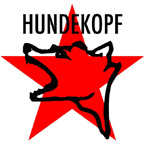
Interactive SMS-story around the Ringbahn
"Stories (...) are like mountain tops jutting out of the sea. Self-contained islands though they may seem, they are upthrusts of an underlying geography that is at once local and, for all that, a part of a universal pattern." - Jerome Bruner, Acts of Meaning (1990)
Hundekopf--by Knifeandfork--is a new project exploring the experience of Berlin's Ringbahn, which encircles the inner city and is used as a literal vehicle to move between time and place in a fiction-historical narrative structured through SMS text-messaging. The Knifeandfork artist group approaches the urban environment as a narrative space - a human artifact constructed of stories both real and imagined that we collectively engage in telling. Hundekopf is being performed at Loving Berlin, June 20-25, 2005.
Posted by jo at 10:47 AM | Comments (0)
BUMP_NET - 2005
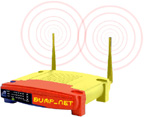
A Wireless Network for the Determined
BumpNet--by Jonah Brucker-Cohen--is a wireless network that challenges the existing methods of connectivity among multiple clients to one wireless base station. The project consists of a public wireless network that only supports a maximum number of connected clients. When a new person joins the network, the first person on the queue is "bumped" or dissallowed access to the connection and network. Like its predecessor: BumpList (an email community built around the same principles), the focus of the project is to determine if by attaching simple rules to communication infrastructures, the method and manner of connectivity and behaviors of people connecting will change over time.
Posted by jo at 10:33 AM | Comments (0)
June 15, 2005
MapHub
![]()
Shared Urban Storytelling
Another urban mobile project in the lines of Yellow Arrow and Grafedia, called MapHub, located in Pittsburgh, PA. It's about shared urban storytelling and enables residents to for search and publish information about their city. In their own words: Create a sonic landscape of Pittsburgh by calling in cellphone recordings from around the city. Sounds from the Heard Hub launched February 1st will be on displays in Karsruhe, Germany, at the Center for Arts and Media through August 2005.
To participate, all you have to do is create a profile then search for users or Hubs in your city. Create your own Hub to publish location based information. There is a second project, HeardHub2, made possible by the MapHub web application. For HeardHub2, three performers will reconstruct soundscape elements into a composition in real time, from sounds recorded to the HeardHub database using mobile devices. Audience members, friends, and people walking by will be able to call a number from their cell phone to record sounds from anywhere in the city. [blogged by Emily on textually.org]
Posted by jo at 11:22 AM | Comments (0)
June 14, 2005
The Social Fabric
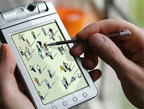
Your Social World
The Social Fabric, by Steven Blyth, is a representation of your social world, displayed as a single visual array on your mobile phone. It keeps you informed about which relationships are prospering, which you have neglected, and the overall state of your social fabric.
A series of avatars on your phone screen represent your friends, acquaintances or relatives. The frequency of all digital communications (they can include voice calls, voice Messages, SMS, MMS, e-mail, Instant Messaging, VoIP, etc.) between you and each person, which the system monitors, determines that avatar's posture: an alert stance indicates frequent recent contact, for example; a lethargic posture or turned back means neglect. You can also register non-digital contacts manually.
The avatars can be grouped manually according to sentiment, category, and so on, or programmed to begin clustering together before an upcoming event: your family before a birthday, or friends before a poker night, for example. Related: Gori. node garden. [blogged by Regine on near near future]
Posted by jo at 07:48 AM | Comments (0)
Storytelling Wearables: An Alternative Autobiography

Mobile Biography
Xiao Li Tan's Storytelling Wearables: An Alternative Autobiography explore storytelling and enable people to discover Xiao's relatives and birth city through looking at the movie bag, examining the shell necklace, and by lifting the hidden pieces on the skirt. The Portable Movie Bag shows images of Taishan in China. People can also learn about the stories of the artist's relatives by lifting some fabric on the Peekaboo Portrait Skirt, and they can experience her childhood memory of shells through the glowing Mood Shell Necklace. All the pieces are either powered by 3v battery, or self charged battery. They are portable and meant to be worn. More pictures. [blogged by Regine on near near future]
Posted by jo at 07:44 AM | Comments (0)
June 10, 2005
Yellow Arrow
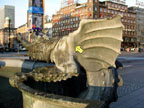
Pointing to the Hidden Stories of the City
"The project Yellow Arrow lets you discover hidden layers of your city and place your own stories in the urban landscape. The project uses text messaging (SMS) as a way to link personal messages to certain locations, which mean something special to someone. You point the attention to the spot by placing a yellow arrow sticker with a unique code, thus making it possible for others to receive the story. Thomas Petersen asked the Yellow Arrow organization a few questions about the project, now that the project is being launched in Denmark. [Get your arrows at the website. Also, sign up for an invitation to the launch party at a secret location, Saturday June 11th at 8 pm!.]" Read interview.
Posted by jo at 08:36 AM | Comments (0)
RealityFlythrough

Harnessing Cameras "In the Wild"
RealityFlythrough is a telepresence/tele-reality system that works in the dynamic, uncalibrated environments typically associated with ubiquitous computing. By opportunistically harnessing networked mobile video cameras, it allows a user to remotely and immersively explore a physical space. Live 2d video feeds are situated in a 3d representation of the world. Rather than try to achieve photorealism at every point in space, we instead focus on providing the user with a sense of how the video streams relate to one another spatially. By providing cues in the form of dynamic transitions, we can approximate photorealistic telepresence while harnessing cameras “in the wild.” [via]
Posted by jo at 08:15 AM | Comments (0)
June 09, 2005
Decoy

Where Data Lives
Decoy is a wireless data project in public space based on bluetooth. Data might be accessible almost everywhere via internet, but it is actually saved or "living" at a particular geographical position. Just the last node of a network remains comprehensible to the user: the LAN-wall-outlet, a modem, a mobile phone, etc. In addition to cables there is a dense wireless network over todays settled areas. Overlapping data-bubbles as big as their radius of range.
The aim of decoy is to pinpoint certain spots in this invisible data space. and these spots themselves are referencing the "real" space. To do so, small bluetooth-servers with a radio range of about 10 meters are placed in public space. These servers are communicating with passing by bluetooth-enabled-devices (e.g. mobile phones, PDAs or laptops). If the owner of these passing-by-devices wants so, he or she will receive a picture. In this aspect a Decoy is something like an invisible poster, graffiti or a direction sign which gets alive by the mobile in the pocket. [via neural.it]
Posted by jo at 09:34 AM | Comments (0)
June 07, 2005
Interfacing/Radiotopia/KeyWorx
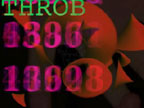
Translocal Exchanges
Interfacing/Radiotopia/KeyWorx consists of one space that has no images and has only sound, and one space that has no sound and only images. They are connected both physically and via the Internet.
SPACE 1: [Radiotopia] Walk into a theatre and enter an audio space with no images. Artists from all over the world are asked to send in audio material to fill up a database. Behind every sound is an idea, a world of words and definitions. The one big experience with Radiotopia is the peaceful confrontation of all the world's sounds, audio artists, concepts, sights and sometimes ideologies. In the Scapino theatre, the sound is mixed live by musicians and resent as an audio stream.
SPACE 2: [KeyWorx] Walk out of the theatre, down a narrow hallway and enter a space filled with images. Three artists sitting in the space, are connected with three artists in New York City. Three translocally linked pairs, three simultaneous and connected performances.
Behind every sound is an idea, a world of words and definitions. In the KeyWorx space, one listens to the world of words within the audio–spoken words, ideas, emotions, memories–and translates that world into actual text.
Inspired by a Surrealist game 'Parallel Stories', a word sent by performer or public from a mobile phone in response to the audio appears simultaneously in all three performances. Each performance pair responds to this foreign text input sent via 'sms' by creating a visual story around it. Three parallel translocal exchanges within one physical space (a room in New York, the V2 bookstore) are connected by the same word yet are unique in the visual interpretation of it. The performance is improvised and created collaboratively in real-time.
These compositions are projected onto the screens throughout the V2 space.
Want to know how we put this performance together? Follow the process log.
Credits: Concept KeyWorx Space: Isabelle Jenniches and Michelle Teran with Sher Doruff • KeyWorx performers: Isabelle Jenniches, Arjen Keesmaat, Lodewijk Loos, Eric Redlinger, Michelle Teran, Dan Vatsky
• Radiotopia project created by: Rupert Huber, August Black and Norbert Math KeyWprx project created by: Waag Society for Old and New Media.
Posted by jo at 11:57 AM | Comments (0)
June 03, 2005
Significant Sites - a Summer Solstice Dérive
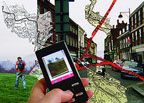
An Invitation to Participate
Significant Sites-a Summer Solstice Dérive is inspired by the Situationist practice of dérive. John and Cathy Rogers set out to chart the layers of place that make up High Wycombe as it undergoes a period of transition and redevelopment. After conducting and initial period of investigation through a series of dérives and interventions they intend to stage a grand psychogeographical event on June 18, 2005 during the Summer Solstice.
A Walker will embark on a ritualistic perambulation to link up the significant sites, or Nodules of Energy that surround the town. He will use the town's matrix of ancient footpaths to achieve this circuit. Using a videophone he will send moving images to a base station in a prominent position in the town centre where they will be projected onto a screen where spectators will be able to watch the walk as it happens.
The relayed image of the walker is presented alongside a montage of archive film and present day photographs of the town together with a simulated image of the town. In addition to the video clips the walker will send reports from his location via voice and text messages.
Spectators will be able to interact with the walker giving him directions to places they consider to be significant sites and furnish him with information and folklore about the areas he walks through.
People will be encouraged to set out on their own dérives and send back images and text to the base station for projection and relay to the audience.
Posted by jo at 02:14 PM | Comments (0)
Technologies of Cooperation: A Map To a Toolkit
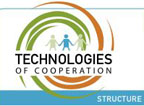
Tools to Alleviate Suffering...Liberate...Create
"What we are witnessing today is the acceleration of a trend that has been building for thousands of years. When technologies like alphabets and Internets amplify the right cognitive or social capabilities, old trends take new twists and people build things that never could be built before. Over time, the number of people engaged in producing new things has grown from an elite group to a significant portion of the population; at the same time, the tools available to these growing populations have grown more powerful.
Today's technologies of cooperation are practical tools for organizing people and solving problems that we face right now. But they are also harbingers of new forms of social and economic organization -- forms that may help resolve some of the complex social dilemmas that confront the world. So each example of a cooperative technology is also a model for thinking about future social forms as well as future tools; each example embodies principles that can help us think more strategically." From Technologies of Cooperation: A Map To a Toolkit by Howard Rheingold, theFeature, Jun 02, 2005.
Posted by jo at 01:50 PM | Comments (0)
May 31, 2005
One Free Minute

Anonymous Free Speech
You are invited to participate in the inaugural performance of One Free Minute, a mobile sculpture designed to allow for instances of anonymous free speech. Callers to One Free Minute's cell phone are connected to an amplifier and have their speech projected in public space for exactly one minute. One Free Minute also houses a digital archive of calls made to its answering machine, which are played back randomly between live calls.
There are two ways to participate in One Free Minute: (1) Call the archive number and leave a message for future performances: 614-441-9533. (2) Call live during the first performance Friday June 3rd, 5-7PM EST. Your calls during this time will be projected in the public green space of the Ohio State University Oval. 614-288-7248
The principal intent behind One Free Minute is to investigate how public discourse, and the human communication that makes it possible, has been changed by technology. Cellular phone technology has increasingly brought private space into the public realm, metering human interaction in billed-by-the-minute increments. One Free Minute inverts the private nature of cellular technology, using it to break the soundscape of public space with unpredictable acts of improvised, anonymous free speech.
A secondary intent of One Free Minute is to create a tool to facilitate anonymous free speech in public places. Governments everywhere are increasingly vigilant of who is saying what and where: One Free Minute puts a bit of a blur on the 'who' and 'where', meaning that participants can speak without fear of recrimination. For information on how to borrow One Free Minute (free) for demonstrations or similar events, please email info[at]onefreeminute.net
Posted by jo at 06:36 PM | Comments (0)
Neighbourhood Satellites
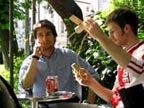
Environment-Sensing Adventures in the City
Neighbourhood Satellites is one of my favourite projects. Ever. I've spammed Myriel Milicevic with messages asking her if she'd send me pictures, when she'll have something online, etc. So far, there's only the PDF of her brilliant thesis project. Proper website is coming soon.
Neighbourhood Satellites are handheld sensing devices that monitor people's local environment. In its current prototype form, the satellite is able to sense air quality, light, and the presence of cell phone signals.
The data collected is presented in three different modes:
- In "status" mode, it displays the current conditions.
- In "game" mode, the satellite leads a parallel existence inside a video screen, navigating amongst the offending pollutants in need of analysis.
- In "map" mode, the system receives data from the other "satellites" carried by people in the area, and displays on a map, their location and contamination level. This mode could generate some interesting behaviours: A group of players, gathering in larger numbers at polluted street junctions, navigating their satellites through thick air, might just as well be interpreted as a silent protest.
The way the satellite is tilted by the hand controls its navigation on the screen. So the satellite’s position in the hand is just as relevant to the game as the position of the player inside a space.
The satellite also communicates through tangible behaviour. For example, when approaching air pollutants onscreen, the satellite inside the game will suck in air to capture specimen. Simultaneously, the physical satellite emits streams of air that the player can feel in his hand. A gentle vibration accompanies the sensation.
Note to Myriel: Hope you're not mad at me because I didn't wait for the website...
Related: Flower Power. [blogged by Regine on near near future]
Posted by jo at 07:37 AM | Comments (0)
May 30, 2005
Parsons School of Design: Design & Technology Thesis Exhibition
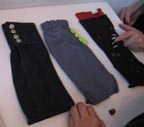
DT Saved My Soul
This past Wednesday was the opening for the Design & Technology Thesis Exhibition at the Parsons School of Design in New York City. The exhibit featured amazing thesis projects from both the MFA and BFA students in the department. It provides a chance to check out work and artists that have been mentioned elsewhere, such as Lina Fenequito’s Swap-O-Matic and fi5e’s Graffiti Analysis.
However it also provides an opportunity to check out new brilliant projects of those less known to the blog sphere media circuit. Discreet Interfaces, by Kaho Abe, explores the idea of wearable technology. By imbedding switches in the sleeves and hiding them with simple buttons or tags, the user can navigate the controls of a portable electronic device discretely without drawing any attention to themselves (well… other than that of someone who fidgets incessantly). Continue reading >> [blogged by Carol T. Chung on cool hunting]
Posted by jo at 12:37 PM | Comments (0)
May 27, 2005
ARTISTS AND MAPPING:
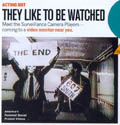
Situationism and Locative Media
"The Situationists were no different from the Dadaists and the Surrealists in their desire to suppress art. Art and culture should be part of everyday life, and it is an interesting component of recent art, that the Situationist International is often associated with emerging locative media, ubiquitous computing and urban life.
The post-war movement Lettrist International, along with Asger Jorn and his International Movement for an Imaginist Bauhaus (IMIB), were precursors of the SI. Jorn, a close friend and collaborator with SI leader Guy Debord, is considered one of the most notable Situationist artists." From ARTISTS AND MAPPING: Situationism and Locative Media by Ana Boa-Ventura, Net Art Review, May 24, 2005. Also in NAR's series WEEKLIES: ART AND MOBILE TECH, 05/01/2005 - 05/07/2005, 05/08/2005 - 05/14/2005, 05/15/2005 - 05/21/2005.
Posted by jo at 08:10 AM | Comments (0)
May 25, 2005
(re)distributions
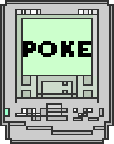
2001: Online Show Examines PDA, Wireless Art
August 8, 2001: Palm Pilots and cell phones are quickly becoming venues for portable art. And cultural theorists are beginning to analyze how and why we use such nomadic devices. A just-opened online exhibition entitled (re)distributions (on view through October 31) is one of the first international shows to examine the new genres of handheld and wireless art. "(re)distributions" includes work by both established new media and Net artists and up and coming talent, as well as thought-provoking essays by leading scholars on PDAs and mobile phones and how they affect our lives and our culture. [Rhizome's Net Art News]
Posted by jo at 12:40 PM | Comments (0)
May 20, 2005
GORI.Node Garden
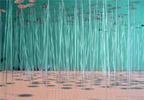
Cultivating Networks
GORmeans an open hook in Korean and it is often used to represent human relationships. GORI.Node Garden--by Jee Hyun OH--explores the node of privatized networks and expresses the image of fastening or loosening the relationship to your will. The biggest difference between Privatized Network and Social Network is the maintenance of relationships, how one maintains whom one takes care of. In GORI, the garden represents the social network you belong to and the flowers symbolize your privatized network nodes -GORIs- which you are growing.
As a gardener, you decide which GORI from your mobile contact list you will plant and grow. It could be somebody from either your phone list or somewhere else. A flower planted at the edge of the garden, starts to grow when you exchange messages and it moves towards the centre. When it moves, it vibrates. The growth speed and location of each GORI is set by the frequency and duration of the calls. The growth speed and planted location determine the value of the scale and pitch of music that plays when gardeners water the gardens. [blogged by Regine on near near future]
Posted by jo at 09:42 AM | Comments (0)
May 19, 2005
WiFi Bedouin @ Vectors
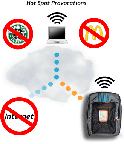
Call for Projects
What would you do with a mobile Internet?
Vectors: Journal of Culture and Technology in a Dynamic Vernacular is seeking proposals for creative or scholarly uses of a mobile server/transmitter unit known as the WiFi Bedouin for inclusion in its Mobility issue to be published in late Summer 2005. Designed by Julian Bleecker, the WiFi Bedouin uses a portable 500mW 802.11b transmitter and Mac OS X based web server that is ready to receive your portable web content. The system includes basic software for web pages, group chat, an open blog and iTunes music streaming, but users are free to add custom software as desired.
We are particularly interested in projects that use the Bedouin to investigate issues related to the intersection of physical and virtual spaces and questions of locality, proximity, materiality, community, etc. Once your project or event has been completed, we will ask you to submit documentation of the project outcomes for inclusion in the Mobility issue of Vectors.
Please submit your WiFi Bedouin proposals to vectors[at]annenberg.edu by May 25, 2005.
Projects should be able to be completed and documentation submitted by
July 1, 2005.
Proposals should include the following information:
--Name of applicant(s) and contact information
--Project title
--One sentence description
--Brief explanation of project goals and interests
--Approximate timeline for completing the project
--Previous work or experience in related areas
Posted by jo at 11:56 AM | Comments (0)
May 18, 2005
Technojewelry
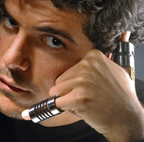
Let Your Fingers and Toes Do the Talking
Technojewelry incorporates emerging electronics into everyday attire. Focusing on the hands and feet as nonintrusive locations for useful innovations, these concepts prove that new devices needn’t look alien to your person and that we can make technology adapt to our lifestyles rather that the other way around.
Penta Phone and Ring Phone are concepts for mobile phones. The design takes its cue from the universal gesture for using a telephone, but is feasibly grounded in the nanotechnology research emerging from start-ups and established companies. Calls can be initiated by raising the hand to the proper position, and voice-activated interaction will allow instant communication. The little-finger units will vibrate to indicate incoming calls and the thumb unit will beam the sound towards the ear when the hand is held in the listening position.
Using similar low-power, nano-derived technology, GPS Toes are toe rings that communicate to a GPS receiver kept in a purse or worn on a belt. Wearing one on each foot, the GPS Toes device will guide the wearer to a preset destination by vibrating and lighting up to signal upcoming direction changes. The left toe ring will indicate left turns and the right toe right turns, whether driving on the highway, walking on city streets, or hiking on the mountain trail.
Also read The Experience of Enchantment in Human-Computer Interaction by John McCarthy et al. [via pasta and vinegar]
Posted by jo at 10:37 AM | Comments (0)
May 16, 2005
doc_u
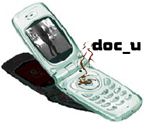
Beautiful Seams
doc_u is an interactive installation made up of visual self-documentation. The project exploits user-friendly technology (mobile phone cams and Macromedia Flash) to allow multiple images to be shown simultaneously. Rather than concentrating on ‘Virtuality’ or even ‘Reality’ as a digital thematic, the project focuses on the ‘beautiful seams’ of the relational space between. Although facilitated by high-tech, software, hardware and the potential of ubiquitous computing, the work underlines the beauty of the ordinary, the domestic and the lo-tech. The installation draws on popular culture and a viewer’s familiarity with concepts of self-documentation, video diaries and docu-soaps to encourage participation and overcome fear of technology.
Jess Loseby and the Babylon Gallery have been holding workshops with schools and community groups local to the gallery using 5 mobile camera phones. The participants were asked to randomly document themselves and their environment in a set time. They were encouraged not to delete or alter any images, as part of the aesthetic of the installation was to highlight the beautiful ‘accidents’ and to dismiss attempts to make ‘art’. The project is now open across the Internet to everyone. If you would like to participate please see the guidelines below. There is no age limit, focus or geographical restriction placed on the submissions. The youngest participant in the project is currently 3 years old - the oldest, 70!
Posted by jo at 10:59 AM | Comments (0)
RadioActive

Talk Back
RadioActive--by Aaron Zinman and Judith Donath--is a forum for large-scale mobile-based asynchronous audio discussions. It allows participants to engage in persistent discussions on a number of different topics, similar to usenet. Users may moderate posts, allowing the dynamics of the chat space to change over time. Navigation through the threads is made possible by both audio and visual interfaces that are optimized for the device. In addition to arbitrary topics, users may also engage in discussion surrounding time-shifted media clips. This is a reaction to the phenomena of TiVO and podcasting, all which allow users to access their media in a personalized fashion but completely passively. RadioActive gives audiences a chance to talk back, contrasting the typical unidirectional model of broadcasting. [PDF] [via]
Posted by jo at 08:36 AM | Comments (0)
May 11, 2005
Collective Subconscious
![collectivesubconscious[1].gif](http://www.turbulence.org/blog/images/collectivesubconscious[1].gif)
Reverberating Thoughts
Collective Subconscious--by Zehao Chang--is an installation that imprints reverberating thoughts on a public space as people move through it. Traces of one's thoughts are left behind in the gallery and "collaged" with other people's thoughts. New messages are prominently placed while older messages slowly fade away. Words that are repeated by many people will become larger and brighter. As such the display becomes a visual representation of people's state of being.
Each person has a unique RFID tag that has a personal message associated with it; the message can be modified at any time through a web page. When a visitor places the tag near the RFID sensor, the data is sent to a computer and the new message is added to the collage with a short highlight. If a word in the new message is already present in the collage, each instance of that word would highlight and reverberate, echoing in unison the idea they are trying to convey. The message would then slowly fade into the background, waiting for repetition of its words. The collage generated is then projected onto a wall. [via]
Posted by jo at 11:08 AM | Comments (0)
May 09, 2005
A Mutual Friend
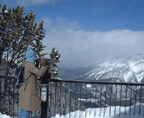
Creative Interventions in Daily Life
A Mutual Friend attempts to explore how your mobile phone can act as a platform for cultural experiences; as a medium for reflecting on the human condition and as a means for making creative interventions in daily life. The project sets out to propose and develop a mobile phone application which engages with the developing patterns of social behaviour in relation to mobile phones.
Increased mobility has brought about an increasingly disjointed relationship to physical and social space. The transit from home to driveway > car > side street > bypass > industrial estate to workplace and back can be sparsely populated. Public spaces are more likely to be areas of transit, weariness and solitude than of easy sociability, participation, frankness and debate. The mobile phone has had an ambiguous role in these spaces, at once, providing a means to feel safe and talk to friends, while disrupting your attachment to those around you. These are the spaces which A Mutual Friend aims to work in.
Posted by jo at 12:18 PM | Comments (0)
MDCN Symposium
![MDCN_eflyer[s].gif](http://www.turbulence.org/blog/images/MDCN_eflyer[s].gif)
Art on the Move in Montreal
The MDCN Symposium featured presentations on the following MDCN projects:
Global Heart Rate: Project Lead/Chef de projet : Sara Diamond; Project Participants/Participants au projet : Tom Donaldson, David Gauthier, Anita Johnston, Geoff Lillemon--Global Heart Rate is a large-scale game experience for players and learners in specific urban and natural outdoor environments. It will eventually be networked over distance and amongst time zones. The current version takes place in Banff National Park. These participant-driven mobile experiences are both fun and informative, utilizing the structure of a game todisseminate interactive knowledge about a particular topic, such as Banff's wealth of natural history. Technically, these experiences include real-time synchronous and asynchronous processes, allowing immediate and/or thoughtful response.
Players use mobile telephones and a wearabletechnology component that enters information from sensor data. A rich, information-sharing experience for participants is enhanced by Global Heart Rate's use of micro movies, blue tooth networking, GPS mapping and data caching. Other research outcomes include a mobile gaming authoring system and iterative engineering/content methodology. Mimichi and the Flower Throw games are developed using participatory design methods.
Digital Cities: Project Lead/Chef de projet : Michael Longford & Kajin Goh; Project Participants/Participants au projet : Amitava Biswas, Daniel Lemay, Bita Mahdaviani, Antoine Morris, Rongxin Zhang
Digital Cities presents a locative media project designed for Parc Émilie-Gamelin using sound, image and GPS (Global Positioning System) sensors. An exploration of the urban environment as a wireless ecology, the project looks at the ways in which memory is inscribed in space, drawing on field recordings, oral history, and archival material to form a deeply-layered spatio-temporal mediascape. The viewer's orientation in space shapes the nature of their audio-visual experience. As they move through the site, different media events attached to GPS coordinates are triggered, ranging from sound (heard through headsets) to images and micro-movies (displayed on a handheld PDA). This project repositions our relationship within space and information flows somewhere between the public and the private, the material and the immaterial, and the virtual and the real.
CitySpeak: Project Lead/Chef de projet : Jason Lewis; Project Participants/Participants au projet : David Bouchard, Zehuan Liu, Bruno Nadeau, Alexander Taler, Frank Tsonis
CitySpeak is an investigation of how data acquired from an urban environment’s virtual networks can be used to investigate the same urban space’s physical environment. Using the Île sans fil hotspots in Montréal, CitySpeak selects several locations in the city that are rich nodes of both virtual and real-world traffic, and samples the geo-encoded data related to these particular locations. The dynamic qualities of the data are processed using a database called Next Text to construct ‘texts’ that interpret the data and determine how the texts will be represented visually. The resulting stream of text is layered back onto the locations using both very intimate (PDAs) and very public (large-scale projections) technology.
Mobile Cartographic Command Centre (MC3): Project Lead/Chef de projet : Marc Tuters & Karlis Otto Kalnins; Project Participants/Participants au projet : Jesse Cizauskas, Luke Moloney, Jaanis Garancs, Adrian Sinclair, Gabe Sawhney
Advances in peer-to-peer technology are changing how we connect to the internet as well as to each other, bringing about the idea of a niche-driven Commons. This installation presents the research of the MC3 mobile media lab, an art-led technology development project that explores concepts around unlicensed wireless communication, and civic engagement in the Canadian context. Housed within a modular field-research unit, the installation functions as a forward command post for map interpretation, digital piracy, and civic surveillance via an airborne remote visualization system.
Policy Report: Project Lead/Chef de projet: Barbara Crow; Project Participants/Participants au projet : Candice D'Souza, Ganaele Langlois, Samantha Moonsammy
The policy component of the MDCN project is reviewing and assessing the current status of national and international, industry, and social movement regulations of wireless communications in several countries. [blogged by tobias van veen on MDCN]
Posted by jo at 12:00 PM | Comments (0)
Flickr Peep Show
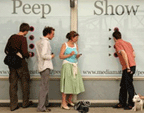
Performing Flickr.com
Flickr Peep Show is an interactive SMS installation based on photos from the photosharing website Flickr.com. Users are encouraged to submit a keyword via SMS, after which photos from the Flickr database that are tagged with the particular keyword are projected onto a surface that is visible through a number of peepholes.
Flickr Peep Show is exhibited at Mediamatic/POST CS in Amsterdam during May and June 2005. Furthermore, in the course of week 19, the installation Playing FLICKR (similar to the Flickr Peep Show) will be running at the Club/Restaurant 11, allowing dinner guests and club goers to interact with surrounding Flickr projections, also via SMS. Finally, read The Sacred Banality of Everyday Life, an interview with Martin Butler on his performance Ritter, Dene, Voss during the opening of Flickr Peep Show. [via]
Posted by jo at 10:54 AM | Comments (0)
May 07, 2005
iFloor
![iFloor2[1].gif](http://www.turbulence.org/blog/images/iFloor2[1].gif)
Communication Facilitator
iFloor, developed by Interactive Spaces, University of Aarhus (Denmark), is an interactive floor aiming at encouraging users to communicate with each other. They can ask and answer questions through SMS or email and have them shown in a public space. The messages are registered by a server and displayed on the floor. Each question is marked with an ID reference number that is used when responding to the specific question. If someone answers a question the answer is both displayed on the floor and sent to the person who asked the question.
A remote server handles the questions and answers and a projector mounted on the ceiling connected to a local computer displays the messages on the floor. The floor works on the basis of a video tracking system observing the rim of the interface by means of a web cam mounted on the ceiling. The recordings of people’s position and movement are translated into magnetic forces attracting the cursor. [blogged by Regine on near near future]
Posted by jo at 11:44 AM | Comments (0)
May 03, 2005
Mobile Bristol - Active Posters

Point and Scan
The Mobile Bristol Centre is part of the DTI’s City & Buildings Research Centre: "The purpose of Mobile Bristol is to provide an experimental test-bed for technology and user value research in pervasive mobile media. The vision of the test-bed is to provide a digital canvas over the city onto which rich situated digital experiences can be painted and new commercial ventures can be explored. As you walk through the city a diverse range of digital media experiences such as soundscapes, games, interactive media and art bring the city alive and augment the ambiance of the physical places."
Active Posters is part of the project in 2005: "Active posters are standard printed advertising posters that would be found on hoardings, at bus stops, outside cinemas or the Underground. Unlike standard posters, they have special "barcodes" printed on them. These are read using standard camera phones and link the poster to online content, applications and services." [blogged by Jon on Diablog]
Posted by jo at 09:37 AM | Comments (0)
GridLockd!
![splashpage[1].gif](http://www.turbulence.org/blog/images/splashpage[1].gif)
Urban Game with Semacodes
GridLockd is an urban game, created by Mohit SantRam, where teams compete to capture grid positions in a half hour. Loosely based on Othello, a two player game of tiles, the game board is made up of 36 unique semacodes placed within intersection points on a 5 block by 5 block city grid. Using their camera phone to photograph a semacode, the first team to send it to semacode[at]gridlockd.net will win possession of the intersection.
Whichever team captures a point first claims the intersection but rivals can claim that intersection by capturing two surrounding intersections. This project is meant to display how semacodes, cameraphones, ad-hoc groups, and social dynamics are effected under time pressure. The work will be at the Spring Show 2005, on May 10-11, in New York (ITP - 721 Broadway, 4th Floor). [blogged by Regine on near near future]
Posted by jo at 07:38 AM | Comments (0)
April 27, 2005
The Hug Shirt

Soft Technological Sandwiches
F+R Hugs is a soft Lycra shirt with embedded sensors and electronics that allows to feel the physical closeness of a distant loved one, bringing the sensation of a hug. The system works through a mobile phone network. The shirts receive the input of heart beat, touch and body temperature of the remote loved one, recreating (through actuators embedded in the shirt) over distance the pulsation, physical pressure, and warmth of a real hug.
During the testing of the shirts, major intensity points were identified on upper arms, on the upper back part during a condolatory hug, around the waistline, neck, shoulders, and hips. In these strategic spots were placed soft technological sandwiches containing the hugging output actuators. Designed by Francesca Rosella - Ryan Genz, Cutecircuit; other works by Cutecircuits: Kinetic and cameleon garments. [blogged by Regine on near near future]
Posted by jo at 08:09 AM | Comments (1)
eRuv
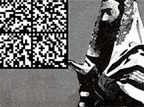
A Street History in Semacode
eRuv: A Street History in Semacode, by Elliott Malkin, is a digital graffiti project installed along the route of the former 3rd Avenue elevated train line throughout Lower Manhattan. This train line was part of a religious boundary called an eruv for the immigrant Polish Chasidic Jewish community in the first half of the 20th century.
The train has since been dismantled and most of the Chasidic Jews have moved away, so what was once both a physical and symbolic enclosure is now purely imaginary, a psychic boundary that intersects present-day communities in Lower Manhattan, most notably in Chinatown.
Each location along the eruv corresponds to a semacode ID. New Yorkers or tourists using a compatible camera phone can receive audio content (in Chinese, Spanish, Yiddish, and English) associated with that location, true stories from the past associated with that point in space. Participants will also have the option to leave their own "oral history," a voice message about their experience with that same space or a reaction to the historical reconstruction.
It is important for eRuv to be provided in the above four languages, as the purpose of this project is to undermine the sorts of boundaries that separate cultures in New York across time and space. eRuv uses boundaries and awareness of boundaries as a way of undermining those very cultural boundaries.
The work will be part of the Provflux, an event dedicated to artistic and social investigations in psychogeography. May 27-29, in Providence. [blogged by Regine on near near future]
Posted by jo at 07:02 AM | Comments (0)
April 26, 2005
Provflux 2005
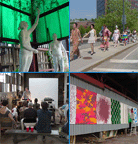
Implementation to be Featured
"Nick and I recently got word that Implementation has been accepted by Provflux 2005, both as an Intervention (live event) as an exhibition. Implementation’s second gallery exhibition will take the form of mounted photos from the project, a DVD of distance shots, and take-home sticker sheets on display at CUBE2 Gallery in downtown Providence, Rhode Island from May 19th until the end of the month, and we’ll be in Providence May 27th-29th for the event itself, with a goal of distributing, placing, and documenting the entire novel in one weekend in one location. Bring your digital camera and camping gear if you want to join us. Implementation joins about 50 other public interventions, games, urban exploration, lost space recovery, and tech mapping projects for this fluxist/situationist/public art happening." [blogged by Scott on grandtextauto]
Posted by jo at 09:10 AM | Comments (0)
April 25, 2005
Itinerant

A Site-Specific Sound Installation in Boston Common
Itinerant--by Teri Rueb--is a site-specific sound installation in Boston, Massachusetts. It invites people to take a walk through Boston Common and surrounding neighborhoods to experience an interactive sound work that re-frames Mary Shelley's Frankenstein, the classic tale of conflict between techno-scientific hubris and the human spirit. The project engages a search for an elusive character who is doppleganger to both the doctor and the creature. Sounds, 'played' by visitors as they move through the city, create a series of frames within which to reflect upon our highly mobile, technologically saturated society and issues of identity, place, and displacement. Mobile and locational media (GPS) formally underscore themes in the work. The sonic overlay is also presented as an interactive map on the web, creating a formal re-framing and displacement of this site-specific work (needs Flash Player, headphones and broadband connection).
Equipment may be picked up through May 7, 2005 at the Judi Rotenberg Gallery, 130 Newbury Street, Boston. "Itinerant" is a 2005 commission of New Radio and Performing Arts, Inc. (aka Ether-Ore). It was made possible with funding from the Jerome Foundation and the LEF Foundation.
Posted by jo at 01:34 PM | Comments (0)
Location33
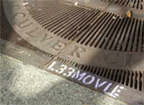
Envisioning Post iPodalyptic Mobile Music
Location33 investigates the potential for new types of music made possible by location tracking and wireless technologies. Listeners, with a GPS enabled PDA or mobile phone, walk around downtown Culver City, California and create a musical album that merges the traditional model of the song cycle with interactive narrative, location awareness, and game play.
Twenty nodes throughout the Culver City area act as portals into the world of the album. Each node is linked with a fragment of a song and when a player approaches one of the portals the music file is streamed to their device.
Each day a specific song is active. It is composed of fragments representing a verse, a chorus, or a bridge. As players walk around, they piece together the fragments, and develop the sense of their path being a song. Each day yields a different song, and all of the components for each day are composed within the limits of a singular musical idea or theme. The album is generated over the course of the week.
The album also focuses on a particular story element, which is sung by one of the characters, Mack, Mackbot, or the Narrator. It is up to the player to discover these musical story fragments and piece them together to form a cohesive story. In particular, the Narrator’s purpose is to contextualize the album within the setting of Culver City and to help the player with hints and instructions.
Location33 also adds elements of game play, asking the player to move around the space to find story fragments in a type of musical and narrative scavenger hunt.
Besides, players can alter the temporal structure of the album, performing time travel operations to experience the album without having to be in Culver City on each day of the week.
Location33 is the thesis project of William Carter, student in Interactive Media at the USC School of cinema and TV.
Read the PDF and doc presentations to see how it works. [blogged by Regine on near near future]
Posted by jo at 12:17 PM | Comments (0)
lifeClipper

The Walking Experience
lifeClipper is an open air art project. It offers an audiovisual walking experience in a virtually enhanced reality. Technically it is based on portable computer equipment worn by an individual. When walking around in a chosen culturally interesting area or impressive landscape the visitor's position and viewing direction is measured by means of GPS and the found situation augmented according to defined presets. Image and sound are displayed on an HMD (Head Mounted Display). Live captured image and sound are treated in real time by altering parameters as well as by adding music (composition, spoken text and sampling of documetary material), photo and video material (documentary and fictively arranged).
Through interventions on habitual ways of listening and seeing, reality becomes questioned and day-to-day situations become an adventure. Users feel as though they are watching a film in which they participate as active observers and in which they get attention from virtual players. The borders between subjective and objective perception become blurred as the user is immersed into space and action but also contemplates artistic compositions and cultural reflections. Read a review.
Posted by jo at 09:28 AM | Comments (0)
Loca: Location Oriented Critical Arts
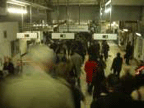
Discoverable
Loca: Location Oriented Critical Arts is an interdisciplinary project on mobile media and grass-roots, pervasive surveillance. A person walking through the city centre hears a beep on their phone, glances at the screen and sees a message: "We are currently experiencing difficulties monitoring your position: please wave you network device in the air." Or "Our server suggests that you may be late. You haven't been charged for this advice."
Loca looks at what happens when everyone can track everyone, when surveillance can be effected by consumer level technology within peer-to-peer networks without being routed through a central point. The idea is to enable anyone with a device that has Bluetooth set to discoverable to be tracked.
As the project develops inferences based on analysis of the data (sever-side) will guide communication with the Bluetooth users. People should be able to participate to the project through their own mobile phone without any additional technology, and without their device needing to be modified in any way.
Pervasive surveillance has the potential to be both sinister and positive, at the same time. The intent is to equip people to deal with the ambiguity and find their own conclusions.
A project by Drew Hemment, John Evans, Theo Humphries, Mika Raento.
[blogged by Regine on near near future]
Posted by jo at 07:25 AM | Comments (0)
April 22, 2005
Sound as Multi-User-Choreography
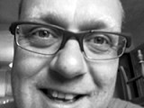
Steve Symons in Conversation with Sabine Breitsameter
"During the last months, the Manchester based artist Steve Symons has been presenting his interactive sound installation Aura in Europe and North America, on big public squares.
Aura is based on the Global Positioning System, which means that it relates sounds to the respective positions and movements of the environment's visitors. Each visitor has to wear a headset and a small rucksack on the back. By this, not only the individual sound-space relationship becomes audible, but also, the visitors are able to distinguish other installation's participants from the passers-by." Continue reading Sound as Multi-User-Choreography
Posted by jo at 09:55 AM | Comments (0)
April 20, 2005
d>Art.O5
![]()
Distributed Art
d>Art.O5 is the eighth edition of dLux media arts acclaimed annual showcase of recent Australian and International single channel, short experimental digital film and video, web and sound art. Under the sub-title "Distributed Art" d>Art.O5 will both focus on art forms that have an inherently distributed nature (web art, mobile phone art) and investigate new methods for distribution of digital art. (podcasting, BitTorrent, Bluetooth etc.).
d>Art.O5 will consist of an exhibition of sound, web, and mobile phone art and a screening program of experimental film and video art. The exhibition will take place at the Sydney Opera House Exhibition Hall in August/September 2005. The screening program will be presented during this same period.
dLux media arts is now calling for works for the following categories of d>Art.O5:
- d>Art.O5 Screen: Open to Australian citizens or permanent residents only
- d>Art.O5 Sound: Open to Australian and International artists
- d>Art.O5 Web: Open to Australian and International artists
During the exhibition the sound and mobile phone art will be available for distribution to the private devices (mp3 players, mobile phones) of the visitors. After the exhibition period, the sound and screen works will be distributed online through podcasting and BitTorrent, respectively. The web works will be presented in an online gallery on the dLux media arts website. All distribution will be under a Creative Commons Attribution-NonCommercial-NoDerivs License.
The call for entries closes on June 15th. Any entries not completed by this date will not be accepted. Entrants will be notified of the selection results by July 1st.
For more information and to make a submission to d>Art.O5, please visit http://www.dlux.org.au/dart05
Posted by jo at 09:38 AM | Comments (0)
April 18, 2005
AIM VI: Technological Pervasions

Light Attack by Daniel Sauter features at AIM VI in Pasadena
Art in Motion 6: The Sixth International Festival of Time-Based Media explores the ubiquity of surveillance in our daily lives and the numerous and complex forms of this technology in the new millennium. The exhibition includes Internet based projects; wireless technology; hardware design; video, digital video and animation; and interactive installations. In Light Attack, from media-artist Daniel Sauter, a virtual character explores the city of Los Angeles.
Featured artists also include Deborah Aschheim, Launa Bacon, Paul Chilkov, Dean Mermell, Dennis H. Miller, Henry Reichhold, Marcos Weskamp and Ellen Wetmore. The show is co-organized with the University of Southern California School of Fine Arts and the Armory Center for the Arts. The Armory Center for the Arts is at 145 North Raymond Avenue, Old Pasadena. The exhibition runs from February 27 through May 29, 2005.
Art in Motion was founded at the University of Southern California in 1999 in response to the high volume of new and innovative art that explored the countless developments in communications and media technologies and their social and cultural implications. AIM 6 is the third Art in Motion exhibition presented at the Armory.
Posted by at 12:33 AM | Comments (0)
April 15, 2005
Urban Eyes
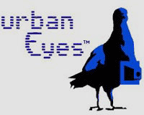
A Bird's Eyeview Experience to the Urban Public
Urban Eyes--by Martin Buschle, Marcus Kirsch, Jussi Ängeslev--is a service combining 2 natural networks, the CCTV and the pigeon population in a city to provide an alternative view on the city. Similar to shamanistic journey, a bond between human and an animal is created when one feeds the pigeon with Urban Eyes bird seed. When the bird flies about, the seed triggers the CCTV / webcam network in a city based on its proximity to the camera. The images are then sent to the person (his PDA) who fed the bird creating a story about the bird and the city.
Due to the purpose of the camera network, the view one perceives, is quite different from the market orientated, everyday media exposure. Ranging from traffic cameras on the lamp posts to gate cams to back yards and living rooms. The experience is essentially about being connected to the bird, the way it experiences the common living circles. Hence acquiring the data, the images and videos directly from the net would be utterly different experience, lacking the physical connection to one's environment and its inhabitants." [blogged by Martin Rieser on Mobile Audience]
Posted by jo at 09:40 AM | Comments (0)
ART BY TELEPHONE:
FROM STATIC TO MOBILE INTERFACES
"ABSTRACT: This article investigates artworks that use telephones as interfaces. Considering telephones as telepresence technologies, it focuses on the point of transition from the fixed to the mobile telephone, exploring how artistic practices change when one component is added: mobility. In addition, location awareness capabilities transform cell phones into more than voice devices. Consequences can be perceived in artistic experiences that bring the medium into public spaces, transforming them into ludic and collective interfaces, pointing to how mobile technologies can be used in the future. From a broader perspective, this study addresses how art mediated by technology deals with the connection between physical and digital spaces.
This article investigates how the artistic approach toward telephones changes when they become mobile. The transition occurs mainly because cell phones are no longer only voice devices. Mobility and location awareness transform them into social and ludic technologies, giving them the ability to merge physical and digital spaces and for a user to find one's relative position in the globe merely with a personal handset. Examples of artworks with fixed and mobile telephones help to clarify this transition.
Reviewing artworks with telephone handsets helps us to remember how the device has previously been used as an artistic interface and to imagine new approaches when this interface becomes mobile [2]." From Art by Telephone: From Static to Mobile Interfaces by Adriana de Souza e Silva
Posted by jo at 09:17 AM | Comments (0)
April 13, 2005
PUBLIC TRANSPHERE
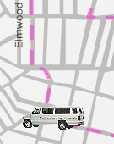
A Two-Way Mobile Communication Solution
Public Transphere is a free public transportation service for passengers from different parts of the city. Riders are encouraged to discuss their everyday realities, share opinions and exchange concerns about their communities. The event aims to bring residents of Buffalo together on an itinerant free speech platform, creating a nomadic, convivial environment in which they can converse about the communal experience of living in Buffalo.
Jesse Fabian imbues the vehicle with a small amount of self-awareness through sensation and self-localization. Through its many eyes, ears, its mechanical and electronic self-analysis, its data links, and its sensitivity to space, the vehicle assembles elements to form a picture of its whole self. The vehicle is reactive to its environment and its occupants. It participates in the journey as its passengers do.
Paul Visco will be manipulating live data collected by Jesse Fabian en route and enabling the public to explore these images, audio streams and GPS data feeds at http://www.public-transphere.info. At this site, the public will also be able to communicate live with the participants in the Public Transphere project, creating a unique two-way mobile communication solution during the event.
Public Transphere will be a two-day public event, taking place in a van touring three Buffalo neighborhoods: Allentown, the Buffalo Niagara Medical Campus and the Fruit Belt. The bus will be traveling among these three areas on Saturday, April 23 and Sunday, April 24 between the hours of 11:00AM and 2:00PM and from 3:00PM until 7:00PM.
Date: Sat. & Sun., April 23 and 24
Time: 11:00AM – 2:00PM, 3:00AM – 7:00PM
Place: Allentown, Buffalo Niagara Medical Campus, Fruit Belt
Cost: Free and Open to the Public
Contact: Arzu Ozkal Telhan at ao9 @ buffalo.edu and 716 - 400 6728
Public Transphere is the thesis project of Arzu Ozkal Telhan, an MFA candidate in the Art Department at University at Buffalo. Arzu Ozkal Telhan, Minoo Amini (UB, Center for Urban Studies), Jesse Fabian (UB, The Department of Media Study) and Paul Visco (UB, The Department of Media Study) are collaborating on this project.
Posted by jo at 10:45 AM | Comments (0)
April 12, 2005
Urban Tapestries
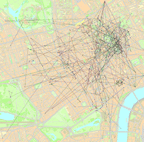
Experimental Ethnography, Technological Identities and Place
"Urban Tapestries provides a mobile location-based platform to connect people with the places they inhabit through their stories, experiences and observations. Currently based on an 802.11b mesh network in the heart of London, ordinary people author their stories of the city and embed them in the places that inspire them. Others who are logged into the system can read these stories, author their own and engage the largely invisible, multidimensional layers accumulating in the city. Our research asks if people use UT in meaningful and interesting ways. Drawing from theories of everyday life and urban space, we have developed experimental ethnography as a method for investigating the relationships between communication technologies, users and the socio-geographic territories around them. [blogged on pasta and vinegar]
Respondents are asked to play with an early Urban Tapestries prototype and this research explores what they do, their technological identities, their relationship to place and the meanings they generate. Urban Tapestries facilitates the negotiation of boundaries and we found that it does augment notions of connectivity – to place and to those within that place. However, our research revealed that some do not interpret this connectivity positively." From Urban Tapestries: Experimental Ethnography, Technological Identities and Place, an LSE Electronic Working Paper by Roger Silverstone and Zoetanya Sujon.
Posted by jo at 12:40 PM | Comments (0)
April 08, 2005
Mobile Digital Commons Network Symposium
![]()
Sampling the Spectrum: The Politics, Practices and Poetics of Mobile Technologies
Hosted by the Mobile Digital Commons Network (MDCN), this symposium--May 5th-8th, 2005, Montréal, Canada--examines the impact of mobile culture and the evolving idea of a wireless commons. Over the course of four days, we will investigate how wireless technologies enrich and modify public life in Canada, challenge our notions of space and place, and shape our day-to-day experiences.
Leading researchers, scholars and artists from around the world have been invited to present their cutting edge work in these fields and contribute to an ongoing discussion on these subjects. This event will also serve as a public unveiling of the projects that constitute the launch of the MDCN.
The MDCN connects those members of the academy, the arts and industry whose work revolves around mobile, wireless, and digital technologies in Canada. Funded by Canadian Heritage, our goals are threefold: to facilitate interdisciplinary research; to foster cultural production and public participation; and to develop forward-thinking policy on wireless technologies.
Posted by jo at 02:26 PM | Comments (0)
MAY YOU LIVE IN INTERESTING TIMES

OPEN TO ALL ARTISTS WORLDWIDE
MAY YOU LIVE IN INTERESTING TIMES is Cardiff’s inaugural festival of creative technology - a three-day programme of events being held across the capital. The festival is being developed between bloc and Chapter. The residency programme for the festival is supported and managed by Cywaith Cymru/Artworks Wales), the national organisation for public art in Wales. The festival residencies are supported through the National Lottery celebration of Cardiff 2005.
ARTIST-IN-RESIDENCY OPPORTUNITIES: The BBC Wales New Media’s mobile studio is a touring bus which has onboard a broadcast production studio with wireless broadband internet access, a network of six PCs, a large TV/plasma screen, a Sony HDV broadcast TV camera, digital cameras and scanners. Travelling with the bus is a driver, a producer, a community researcher, and a Lifelong Learning advisor. All the staff are bilingual (Welsh/English). The bus is a partnership between BBC Wales, The Welsh Language Board and University of Wales, Bangor.
Through this residency the artist/s will address the festival’s theme of investigating the ‘places’ where digital technologies become grounded in a geographical and social context. Through the project the artist/s will realise a work that encourages and extends the public’s initial or early contact with digital technology. The project will focus on community participation and exchange and will need to be structured to manage both Welsh and English language content.
It is anticipated that the artist will fully utilise the technology available in the mobile studio, the expertise of the crew, and the studio’s portability. It is anticipated that the work will have a strong visual/audio presence in Cardiff during the festival. The work will also have dual visibility at Oriel Mostyn gallery, Llandudno, North Wales during the three-days of the Cardiff-based festival (www.mostyn.org).
During the residency the artist will be based in North Wales at the BBC’s mobile studio. The bus has a schedule which takes it throughout North Wales and the appointed artist/s will work with the bus team to schedule stops.
The artist will also have access to support from the BBC’s main office in Cardiff. BBC Wales New Media is the cross-media, online, interactive and mobile department within BBC Wales. For further information on the host visit http://www.bbc.co.uk/wales.
Festival Theme: Artists are increasingly engaged with or inspired by digital technology - exploring consumer and communication technologies such as the worldwide web, mobile networks, file sharing, and computer gaming. Because digital technology is a participatory medium with global reach, artists tend to explore digital technology in the context of public and shared spheres. Often digital art is situated somewhere between public art - albeit in a dematerialised form - and street culture where the technology itself is used as a ‘site’ for the production and presentation of art works. Although digital technology is often claimed to go beyond physical limitations, engagement with technology is always embedded in, or grounded in, real spaces and places whether this is explored from a user or network perspective.
The Residencies: The residencies form part of the festival’s core programme where artists are being invited to investigate the ‘places’ where digital technologies become grounded in a geographical and social context. It is anticipated that the work from the residencies will have a strong presence in Cardiff during the festival period - 28th to 30th October 2005. All commissioned works shown at the festival will negotiate with the specifics of the location at various ‘sites’ in order to bring about activity and exchange beyond the gallery.
The residencies are open to an artist or group of artists and cover a period spent with the residency host between June and November this year (the timing of the residencies is negotiable although the work must be made evident during the festival period).
Fee: There is a fee of £3,600 (30 days), material budget of £750, and outreach travel of £250.
Deadline: Posted applications should be received by FRIDAY 29th APRIL 2005. Shortlisted artists will be notified on 6th May, interviews are to be held in Welshpool, Mid-Wales on the 1st June.
Selection Panel: Hannah Firth (Curator, Chapter/ Festival Director), Emma Posey (Director, Bloc/Festival Director), Iain Tweedale (Editor, BBC Wales New Media), and Walt Warrilow (Project Manager, Cywaith Cymru/Artworks Wales).
If you have any questions or would like to have an informal discussion about this residency please email Walt Warrilow: walt @ cywaithcymru.org.
Applicants should post their CV, a proposal of no more than 1 side of A4 stating ref: May you participate in a digital world, and supporting visual material in slide or CD format to:
May you participate in a digital world
Cywaith Cymru . Artworks Wales
Crichton House
11-12 Mount Stuart Square
Cardiff
CF10 5EE
UK
T: +44 (0)29 2048 9543
F: +44 (0)29 2046 5458
www.cywaithcymru.org
e: walt @ cywaithcymru.org
Posted by jo at 01:22 PM | Comments (0)
Pervasive Connections
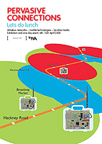
Lets Do Lunch
PERVASIVE CONNECTIONS/LETS DO LUNCH A one day event and exhibition focusing on opportunities for artists and local communities to work with new social technologies.
TAKE2030 takes its richair wireless lunchboxes out to lunch in Hackney and brings the conversations back to Space. Let's Do Lunch tracks Hackney's public access wireless connection points along bus route 26. Lunch dates will be set up with community members to exchange practical skills and visions for a wireless Hackney. The exhibition at SPACE will include a map of Hackney's wireless outposts along bus route 26, documentation of 7 lunch dates and auto transmitting wireless lunch boxes. Pump the signals, realise a wireless Hackney.
Pervasive Connections/Lets Do Lunch
Wireless Networks - Mobile Technologies – Locative Media Event
Saturday 16th April 10.30 – 5pm
Exhibition 6th – 16th April (Weds – Sat 1 TO 6pm)
SPACE, The Triangle, 129–131 Mare Street, London E8 3RH
£5 (includes lunch) booking required
Talks:
Introduction to Wifi - Saul Albert from Wireless London
Artist talk by TAKE 2030 linking to the exhibition Lets Do Lunch.
Workshops:
Network self provision– James Stevens Making flowers with palm top devices – Peter Chauncy Film for mobile phones – Melissa Bliss and Jes Benstock Public authoring and sharing local knowledge – Giles Lane
Panel discussion:
Featuring artists, activists and media practitioners, including James Stevens, Peter Chauncy, Graham Harwood, Matsuko Yokokoji, Rokeby, TAKE 2030, Indri Tulusun. Chaired by Pete Gomes – Wireless London
Let’s Do Lunch - 6 April – 16 April 2005. (Wed – Sat, 1-6pm)
Pervasive Connections/Lets Do Lunch is organised by Space and inIVA as part of Discover Hackney.
Booking To book a place on the one day event ‘Pervasive Connections’, please contact SPACE Media Arts on 020 8525 4344 or spacemedia@spacestudios.org.uk
Further information
http://www.spacemedia.org.uk
http://www.spacestudios.org.uk
http://www.iniva.org /
Directions
Bus: 26 & 48 from Liverpool Street, 106 & 254 from Bethnal Green, 55 from Old Street.
Tube: Bethnal Green.
Train: Hackney Central Silverlink.
Posted by jo at 09:19 AM | Comments (0)
April 07, 2005
cell.SPACE
![cellFREE[1].gif](http://www.turbulence.org/blog/images/cellFREE[1].gif)
freeSTYLE
Dana Karwas' cell.SPACE application allows users to make a short live music video using SMS as lyrics and camera phone pictures as graphics. Users can send text and picture messages from their mobile phone to the freeSTYLE and have their written text messages show up on the screen with a voice accompanying the text. Simultaneously a hip hop instrumental is creating and guiding the voice and graphics so the text becomes the lyrics and the pictures from the phones form the graphics.
The application has 21 different voices to choose from including male, female, creature, robot, and even human laughter. Instead of just being read back to the user, the voice is controlled by the beat of the music. [Video] The work will be at the Interactive Multimedia Culture Expo, on April 14th - 23rd, at the Chelsea Art Museum, in New York. [blogged by Regine on near near future]
Posted by jo at 05:43 PM | Comments (0)
April 05, 2005
Audio Clouds

Body Talk
Building on previous work, researchers at the University of Glasgow have been developing Audio Clouds to control gadgets using movement and sound.
"The innovative aspect of this project is to explore a new paradigm for interacting with mobile computers, based 3D sound and gestures, to create interfaces that are powerful, usable and natural. The gesture modelling will be a novel combination of dynamic systems models and nonparametric statistical models. We will develop a wearable computer that uses 3D sound for output and head, hand and device gestures for input. This will allow us to investigate new presentation methods and interaction techniques to allow richer and more complex, tightly coupled interactions with mobile devices, opening up the possibilities for using mobile devices in a range of new ways." [via] [See 'Body Talk' Could Control Mobiles, BBC.]
Posted by jo at 08:59 AM | Comments (0)
April 04, 2005
MADRID ABIERTO
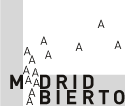
Call for Interventions
MADRID ABIERTO is a project framed within so-called Public Art i.e. interventions and performances derived from an artistic concept and developed preferably in a public and open context. Interacting with social and political processes, these works are aimed at the active or passive protagonists of such processes, i.e. all those people who, directly or indirectly, regularly or occasionally, live together in a specific physical, communicative, social and symbolic space, in this case, the City of Madrid. After the last two editions great success, the new project competition of artistic installations for Madrid Abierto 2006 is now underway.
PROJECT COMPETITION
1. The aim of this call is to select a minimum of ten projects for temporary or short-term artistic projects to take part in Madrid Abierto along with other guest projects.
2. The projects will take place coinciding with ARCO in February 2006 in Madrid, along the axis of Madrid's Paseo de la Castellana and Paseo del Prado boulevards'.
3. You may enter individual or group projects (for group projects you must name a representative). This call is open to artists of any nationality.
4. Each project must include:
* Curriculum Vitae of no more than 2000 characters and a photocopy of the DNI (Spanish National I.D. card) or an equivalent document of the author or authors' of the project.
* Description of the project of no more than 4000 characters.
* A maximum of six outlines and images of the project in jpg format with a resolution of 72 ppp.
* Description of the assembly system and technical requirements.
* Approximate and itemized budget, including details of the concepts which may be able to be self-financed.
* Maximum funding for each selected project is 12.000 euros, including all production, transport and assembly costs, the author or authors' fees and all applicable taxes.
5. Projects should be sent by e-mail to: abierto@madriabierto.com, before the 31st of May, 2005 (or by standard post to: Fundacion Altadis-Madrid Abierto, calle Barquillo, no. 7, 28004 Madrid, Spain).
6. The institutes promoting Madrid Abierto shall assign a commission to select the project, presided by the programme director. The commission will select a minimum of ten projects, evaluating the quality and viability of the proposals, as well as the total reversibility of the projects. As we are dealing with projects that will occupy public areas, it will be essential to obtain the corresponding authorisation from the municipal authorities for their installation.
If the selected projects make any use of third party images, the artists must provide the express authorisation of the owners of these images for their use in the project.
7. Madrid Abierto reserves the right of publication and reproduction of the selected projects for all case relating to the promotion of the programme, and shall incorporate all generated documentation into its documentary resources and public archives. The projects and works selected shall be the property of the authors and the promoting institutions shall have a preferential right to their possible purchase.
8. Participation in this competition entails full acceptance of the above rules and conditions.
For further information: http://www.madridabierto.com abierto @ madridabierto.com
MADRID ABIERTO is a project within what is generically known as Public Art. In the words of its organizer, Ramon Parramon, its objective is to “stimulate creative work in determined places that relate that which is typical of the place and the time in which the creativity takes place. It is to stimulate and generate work processes which take place over time, to boost immersion in the place itself and to interact in a section of public space that has a bearing on the social environment. Madrid Abierto is a programme based on this premise of influencing the public sphere and uses different public areas of the city of Madrid as its stage, proposing new formats and using existing channels or infrastructures which get the general public involved, both in the process and in the search for other people”.
Posted by jo at 09:25 AM | Comments (0)
TAXI MADRID
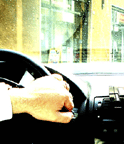
Another Taxi Installation
TAXI MADRID is a mobile public art intervention by artists Anne Lorenz & Rebekka Reich addressing issues of perception and the logic of memory. Equipped with installations, 12 taxis will operate in Madrid throughout the duration of Madrid Abierto, transporting their passengers into someone else's mind and memories of Madrid, those of an ex-patriot.
By interviewing former inhabitants of Madrid, who now live spread all over the world, artists Anne Lorenz and Rebekka Reich seek to find intriguing personal memories related to the city. From this material they devised sound-collages to become part of more complex installations, consisting of objects and other memorabilia, fitted into the taxis.
Regular taxi-users are caught off guard in the confined space of a car, abducted for a short amount of time from their everyday business. The artists seek to surprise and entertain the passenger by confronting him or her with an insight into the memory of a stranger, provoking a memory lapse. Due to the geographical distance of the interviewees an overlay of two pictures occurs: The out of date view of the ex-patriot merges with the current situation on site, and the meeting of the two lives on in the memory of the passenger.
To experience TAXI MADRID call Teletaxi: 91 371 21 31 / 902 501 130 and ask for a taxi from MADRID ABIERTO. Conditions are the same as usual.
Posted by jo at 09:15 AM | Comments (0)
The Chinese Whispers
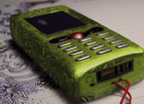
Connecting Through Misunderstanding
The Chinese Whispers (visklek in Swedish)--a project of The Interactive Institute in Sweden--is a game that you might have played as a child. Instead of sitting in a circle and whispering a word to someone sitting next to you, they have used answering machines, a web page and occasional actions in public spaces to create a game between different places and people.
By one single phone call the participants can play The Chinese Whispers. They can also create a new game by calling another phone number and adding a story of their own for others to play with. These chains of misunderstood and reinterpreted stories created by the participants are available at [visklek.se]. At the site anyone can follow the game, either by browsing through old messages or by listening to the game in real time. [via textually.org]
Posted by jo at 08:48 AM | Comments (0)
Telephony
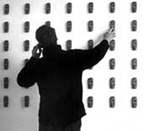
Nokiatunes
Telephony--by Thomson & Craighead--allows gallery visitors to dial into a wall based grid of 42 Siemens mobile telephones, which in turn begin to call each other and create a piece of 'music.' Each phone has been individually programmed with a different ringtone, which played en-masse, create various harmonic layers all of which are based in some way on the popular and prevalent, NokiaTune. The more people who dial into the work (whether inside or beyond the gallery walls) the more complex and layered the audio becomes. A piece of anodyne 'elevator' musac also plays into the space as a kind of background layer, and is also an improvisation on Nokiatune. [via neural.it]
Posted by jo at 08:01 AM | Comments (0)
April 01, 2005
wifi_art day
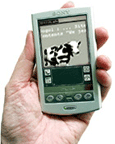
New Networks >> New Opportunities
"wifi_art day at Palais de Tokyo in Paris, France on April 5, 2005. Press conference with a presentation of Tokyo Ozone by Marc Sanchez senior curator of Palais de Tokyo with Rafi Haladjian CEO of Ozone and Valery Grancher new media artist, lecturer, curator and co-founder with Christophe Bruno of WiFi-ArT, and Frédéric Alstadt, Sébastien Fauvarque from Angström records.
Discover what is the WiFi and the opportunities brought by this network regarding art expressions, discover some artists projects who are using this new kind of network in openspace and public space. Ask some questions to the artists ! enter in Tokyo Ozone universe ! Enter in Ozone universe: a young startup who's producing pervasive objects which are bringing a new kind of communciation. Ozone is conceiving smart object for tomorrow."
Posted by jo at 03:21 PM | Comments (0)
March 31, 2005
Can You See Me Now in April

Blast Theory performs again their first hybrid reality game
Can You See Me Now?, the hybrid reality game developed by U.K.'s group Blast Theory and Nottingham University's Mixed Reality Lab will be perfomed twice this upcoming month of April in Cambridge, U.K. People from all over the world are able to play online on the virtual streets of Cambridge against Blast Theory's runners on the real city streets. To participate, you need to log-in to the game's website (Can You See Me Now) on April 1-3 from 2-5pm (GMT) or on April 6-8 from 4-7pm (GMT). A more extensive explanation of the game can be found at the same website.
Posted by at 07:39 PM | Comments (0)
SCOOT
![scootFront[1].gif](http://www.turbulence.org/blog/images/scootFront[1].gif)
Tool for Enhancing Relationships Between Specific Groups and New Urban Spaces
SCOOT is a mixed reality experience designed by Deb Polson and Marcos Caceres, to explore the potentials of location-based games. Players have to solve clues located both in the real world and the virtual world. They interact with strange objects, receive information via SMS to their phones and have to text their answers to the games clues back to SCOOT.
As part of their journey around the site players will be introduced to the area and its surrounds. This orientation will not only be spatial, as the game explores also the history of the place and its dynamics. [via near near future]
Posted by jo at 11:08 AM | Comments (0)
March 30, 2005
GPS-Art
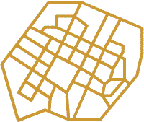
GPS-Trans Net-Cellphone Performances
GPS-Art is a new field of art activity based on motion in open spaces. GPS-Art is the global interactive instrument used for the creation and processing of audio and video material. It integrates elements of audio-visual installation to be used as a new media transmission. The project is based on large outdoor scales of cities and open spaces; it is ready to be realized on land, air, underwater as well as in outer space.
All GPS-Art projects use the GPS-12 device (Global Positioning System), as well as the cell phone system. GPS-12 refers to the 12 satellites hanging above the Northern half of the globe; it's used for navigation and measures in an interactive way many topographic parameters including latitude and speed. These measurments are the starting point of many art projects of GPS-Art. Since 2001 GPS-Art has been realized by a series of GPS-Trans net-cellphone performances.
Posted by jo at 05:13 PM | Comments (0)
Phonic Frequencies:
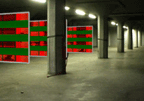
Shaping Networked Realities
ABSTRACT: The paper introduces a networked multi-user installation and interactive mixed reality environment that combines the fields of interactive art, telecommunication and streaming technologies. Phonic Frequencies is an audiovisual data space whose appearance can be altered via networked communication devices. Visitors are active agents and participate in shaping spaces as they control audiovisual data with their telephones.
Linking the physical space to the digital network space, Phonic Frequencies opens a hybrid reality for distributed sound exchange and visual communication, blurring the boundaries between verbal communication and digital information. The work attempts to break the conventional communication cycle of bidirectional dialogue and to consider the meaning of in- and output from a different perspective." From Phonic Frequencies: Shaping Networked Realities by Tamas Szakal, Christoph Groenegress, Wolfgang Strauss, Predrag Peranovic (c) 2003
Posted by jo at 07:40 AM | Comments (0)
March 29, 2005
The Royal Society of Emotional Geocachers
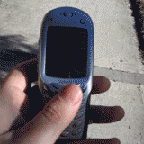
Place is Story>>Character Equals Space
Navigate a hypertext journey of sound, image and video where stories and characters intersect over time and across the city geography as one link leads you on foot to another. Available via GPRS on your mobile phone, or download from the internet on to your PDA (such as a Palm Pilot).
"This site exists for members of the society to document key personal experiences at specific locations. Please join us and add your own story of place. We've designed this site specifically for mobile devices so members may read & comment upon other members experiences in situ. The Rules; be true, place is story, character equals space, every story must connect to another story. Every tale must contain gps co-ordinates, maps and directions."
Posted by jo at 02:30 PM | Comments (0)
March 28, 2005
teletaxi
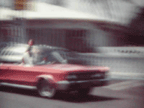
Car #235
Year Zero One is pleased to present teletaxi, a site-specific media art exhibition in a taxicab. The taxi is outfitted with an interactive touch screen that displays video, animation, audio, and information triggered by an onboard GPS (Global Positioning System) receiver which allows the displayed artwork to change depending on where the taxi is in the city. With the combination of the media/gps technology, the mobile environment and the passenger/audience inside the cab. The eleven artists in teletaxi are offered a unique set of possibilities for showing their work - both technically and thematically.
teletaxi will expose interactive media art to a normally passive audience, by presenting works that explore notions of intimacy, mapping, subterranean space, simulated cities, information architecture, data-visualisation, public interventions, surveillance and psychogeography.
Presented by Year Zero One, in Montreal, from March 21 to June, 2005. As part of the DIS/LOCATION: projet d'articulation urbaine programming of DARE-DARE Centre de diffusion d'art multidisciplinaire de Montréal.
Michael Alstad; Mario Côté; Milutin Gubash; David Jhave Johnston; Patric Lacasse; Virginie Laganière; Valérie Lamontagne; Éric Raymond; Doug Scholes
Camille Turner; Myriam Yates.
Opening Friday April first, from 5PM to 9PM, at Square Viger.
Join us at Dare Dare (Square Viger) for a 'fare free' ride in the teletaxi to navigate some of the neighbourhoods and Montreal sites explored by Year Zero One artists and guests.
To reach Taxi Co-op of Montréal, call at (514) 725.9885 and ask for car #235; For more information, contact Dare Dare at (514) 878.1088
[Related]
Posted by jo at 12:54 PM | Comments (0)
Andrine
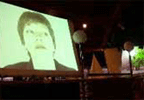
Virtual Personality is Yours to Manipulate
Andrine, developed by The Pooch at Lancaster University (UK), is a virtual personality projected on a screen and reacting to messages sent via SMS. She uses an array of facially expressions to portray her emotions when reacting to the messages.
Each of the 6000 words of her lexicon is partitioned into one of 30 lexicon classifications - including Dislike, Calm, Violent, Angry, Happy and Sad. Each of these classifications are then mapped to the 8 emotions provided by Andrine: Happy, Sad, Angry, Shocked, Laughing, Suggestive, Disgusted, Annoyed. Participants see a huge projection emotively responding to their message. So effective is this response that they are often afraid to insult or anger the avatar. Moreover, Andrine can be "reskinned" to anyone's face in about 5 minutes using a basic webcam. Quicktime Movie. [blogged by Regine on textually.org]
Posted by jo at 11:25 AM | Comments (0)
March 25, 2005
Pervasive Game Development Today
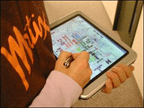
24/7 Immersion
"...Pervasive gaming was first the vision of Swedish company It's Alive!, meaning location-based games that surround you, 24 hours a day, everywhere. When you walk down the street, you're walking through an adventure world draped on top of the real world, and people you meet may be characters in the same game you're playing. Pervasive games are built upon three core technologies: mobile devices, wireless communication, and sensing technologies that capture players’ contexts. It is actually the blend of technologies combined with the location-based and often public nature of game play, gives pervasive games their distinctive identity [Bridging the Physical and Digital in Pervasive Gaming]." From Pervasive Game Development Today by Fabien Girardin.
Posted by jo at 02:10 PM | Comments (0)
March 24, 2005
Blast Theory presents Can You See Me Now?
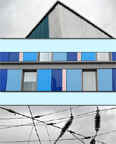
Join the Hunt
Played online and in the streets, BAFTA-nominated Blast Theory challenge you to a game of cat and mouse around a virtual map of Cambridge. Log on using the public terminals situated in the Junction's new café bar or play online at canyouseemenow and be dropped in at a random location from where you must avoid capture by the Blast Theory 'runners'.
Eavesdrop on your pursuers' conversations and swap tactics with other players as Blast Theory (as real actors positioned on the real streets of Cambridge) hunt down your virtual presence with the aid of handheld computers and GPS technology. FREE to play. April 1st-3rd 2-5pm; April 6th-8th April 4-7pm at The Junction, Cambridge.
Artists' Workshop: April 6th 1-4pm; £5/£4 concessions
The player is a key feature in all Blast Theory's work. This afternoon workshop will look at how the audience engages directly with an artwork, in dialogue with other 'players' and the artists.
Using the player as a focus, participants will respond creatively to site/space, game structure and forms of media/communication technologies to inform and stimulate their own media and performance practice. Finally all participants are welcome behind the scenes at 4pm to look at the hardware, software and performance preparation of 'Can You See Me Now?' Blast Theory's award-winning interactive game, presented by the Junction.
Suitable for artists looking to expand their understanding on new performance technologies, participants should come prepared to move, draw and talk.
To book a place call the Junction box office on 01223 511511 or visit in person at The Junction, 2 Clifton Way, Cambridge, CB1 7GX. [via DAN]
Posted by jo at 11:42 AM | Comments (0)
March 23, 2005
Honey, I Geotagged the Kids

How collaborative cartography could enable us...
"...Whether it's wearable computing that tracks our locations no matter what we happen to be doing, cell phones that let us enter our locations, moods or other data, or even all the wireless nodes, satellites and grid networks capable of finding, resolving and comparing all this information, we're talking about an entirely wireless phenomenon. We're also talking about what might prove to the be ultimate legacy of all our hard work here in the wireless trenches: locative media.
The phrase itself was originally coined by Karlis Kalnins, of gpster.net, who applies the precise logic of linguistics to an otherwise seemingly vague field. "Locative is a case, not a place," Kalnins says, meaning it stands for a final location of an action or the time of the action. In other words, it doesn't just happen in space, like a map, but also in time..." From Honey, I Geotagged the Kids by Douglas Rushkoff, theFeature.
Posted by jo at 10:22 AM | Comments (1)
Crosswalk
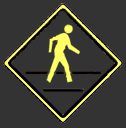
Urban Action
Crosswalk --a Providence Initiative for Psychogeographic Studies (PIPS) publication--is dedicated to further investigations in psychogeography, experimental public art, critical architectural theory, and all practices inbetween. Crosswalk v1.1: Psy-Geo Provflux 2004 was published to coincide with the first annual Psy-Geo Provflux, a two day event investigating how the urban landscape in Providence (Rhode Island, USA) affects its social and artistic community. A call has just been issued for Psy-Geo Provflux 2005.
Crosswalk v1.2::Space Ships includes "Collective Practices," "Interventionist Diaries," "Contemporary Nomadism," "Free Culture," and "Public vs Private."
Posted by jo at 09:57 AM | Comments (0)
Drift
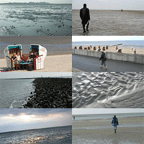
Being Lost
"The ubiquity of GPS (global positioning satellite) and other tracking technologies suggests that "being lost" may itself be an experience that is being lost. However, simply knowing ones geographical location as expressed in longitude and latitude coordinates has little bearing on ones personal sense of place or direction. Drift poses the age-old question "Where am I and where am I going?" in a contemporary moment in which spatial positioning and tracking technologies provide evermore precise, yet limited, answers to this question.
The installation embraces the flow of wandering, the pleasure of disorientation, and the playful unpredictability of drifting as it relates to movement and translation. Sounds blend footsteps on different surfaces with spoken word in different languages. Spoken word passages are drawn from poetry and literature dealing with the theme of wandering, being lost, and drifting. Meaning also drifts as Rousseau, Joyce, Kerouac, Mann, Dante, Woolf, and others are presented in the original and in translation. The Watten Sea becomes a metaphor for hertzian space as visitors are invited to wander among layered currents of sand, sea and interactive sounds that drift with the tides, and with the shifting of satellites as rise and set, introducing another kind of drift.
The installation covers a 2 km x 2 km region that is filled with areas of interactive sound. The region moves with the tide such that at low tide all the sounds are out on the Watt, at high tide they flood the town. Sounds play automatically as you wander through these interactive areas with a Pocket PC, GPS and headphones. The location of the areas changes constantly with the shifting tides - therefore, the best strategy for finding them is simply to wander."
Posted by jo at 09:47 AM | Comments (0)
March 21, 2005
2 by Mark Argo
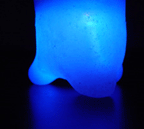
Feeling Connected
hugms is a device designed for sending someone you care about a hug using your mobile phone. Once hugms is connected to your mobile phone all you have to do is send it the phone number of the person you'd like to hug and then squeeze. sensors inside the device read how long and how hard you have squeezed and will format a text message based on your hug.
hugms is a mobject project by Mark Argo. He is developing several devices that will treat the mobile phone purely as a modem/radio, something that gets us connected.
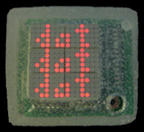
.dot.dot.dot is a wearable display that connects to your mobile phone and is triggered by your communication.
By designing different animations for your closest relationships (best friends, parents, boy/girlfriends) and saving them on .dot.dot.dot you can express to the people around you who you're talking to. if it's your girlfriend, design an animation for a beating heart. when she calls or texts you, .dot.dot.dot will light up with your animation. [via pasta and vinegar]
Posted by jo at 10:51 AM | Comments (0)
March 18, 2005
This Text Has Legs
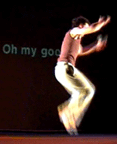
SMS >> Physical Poetry
Theatre etiquette states that mobile phones should be turned off before a show begins, but this new production by C!RCA embraces the intrusive technology. Blending physical theatre, acrobatics and circus tricks, This Text Has Legs is the local circus troupe's most interactive show to date.
Described as a circus show for the communications age, This Text Has Legs has audience members send SMS messages to a large, on stage projection screen. Relying on their improvisation skills, the C!RCA troupe then turn the messages into physical poetry. Guest experimental musicians Lawrence English and Zane Trow weave live sound into the performance and add to the information exchange between audience and performers.
Audiences who are sceptical about a show which relies on live texting should think again. This Text Has Legs premiered last year as part of C!RCA experimental One Night Stands series and it evolved into a full season thanks to the audience's overwhelming response.
Formerly known as Rock'n'Roll Circus, C!RCA is Brisbane's leading post-modern circus troupe. This Text Has Legs is C!RCA first show for its 2005 season, which will feature the troupe's usual modern take on traditional circus skills as well as performances that embrace improvisation, multimedia and experimentation. [PLAY MOVIE [2.3MB] Windows Media] [via creativity/machine]
Posted by jo at 03:34 PM | Comments (0)
March 15, 2005
“The King Has...”
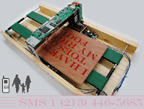
Display Your Secrets via SMS
We all carry secrets we cannot reveal. Taking its name from the famous fable "The King Has Donkey's Ears," The King Has..., by Krister Olsson, gives individuals an opportunity to unburden themselves of stressful secrets--be they their own or those entrusted to them by another person--by displaying the secrets in a public space under the veil of anonymity.
SMS a secret to 1 (213) 446-5685 (US). You will receive an automated message confirming receipt of your secret. If your secret is too long, you will be asked to shorten it and resend it. Your secret will be printed on a piece of wood using a specially designed slab printer. This piece of wood will be mounted on scaffolding at the heavily foot-trafficked stretch of 6th St. between Los Angeles St. and Main St. in Downtown Los Angeles. [blogged by emily on textually.org]
Posted by jo at 02:08 PM | Comments (0)
IN Network

Sleep Webcast
April 15, 2005: From their bedtime at 11PM in Los Angeles, and 2AM in New York, until they wake eight hours later, the artists Michael Mandiberg and Julia Steinmetz will sleep together on the phone. Separated by three time zones and 3000 miles, they curl up in the same sonic space. Connected via cell phone, they will hear the sound of each other breathing, tossing and turning, snoring, etc. This audio will be webcast in real-time as they sleep.
IN Network Sleep Webcast Schedule:
Tuesday, April 15th, roughly 11PM PST to Wednesday, April 16th, roughly 7:30AM PST; Wednesday, April 16th, roughly 9PM PST to Thurs, April 17th, roughly 5:30AM PST; Tuesday, April 22nd, roughly 11PM PST to Wednesday, April 23rd, roughly 7:30AM PST; Wednesday, April 23rd, roughly 9PM PST to Thurs, April 24th, roughly 5:30AM PST
This sleep webcast is part of IN Network their month long extended cell phone life-art performance about distance, communication, intimacy, telepresence, and living together while apart. In August 2004 Michael moved to New York; Julia remained in Los Angeles, postponing her move until the end of April because of commitments to her job and her collaborative art practice. Faced with most of a year apart, one of the things they did was switch both of their cell phones to a provider with free "IN Network" service.
Michael and Julia started out having normal conversations, giving each other updates about their days, and sending cameraphone pictures back and forth, etc. As they switched to using hands-free microphones, they began using the phone differently. What began as a pragmatic attempt to make their relationship last the separation through good communication, turned into something less about communication and more about intimacy and presence through technology, and sharing sonic-virtual space.
During the month of March the artists are presenting this cell-phone life-art performance via a Photo Moblog and Podcast on Turbulence.org. In addition to these webcasts, the IN Network site will host a Podcast of recordings of their phone conversations, and all of their text and picture messages.
IN Network Sleep Webcast:
http://turbulence.org:8080/ramgen/encoder/mandiberg.rm
Free Real Player (Required for webcast):
http://www.real.com
IN Network Website
http://turbulence.org/works/innetwork
IN Network Podcast (RSS 2.0 Feed)
http://turbulence.org/works/innetwork/mp3/rss.xml
Contact Info
juliasteinmetz -at- yahoo -dot- com
michael -at- mandiberg -dot- com
IN Network is a 2005 commission of New Radio and Performing Arts, (aka Ether-Ore) for its Turbulence web site. It was made possible with funding from the Jerome Foundation.
Posted by jo at 01:05 PM | Comments (0)
Treasure Hunt
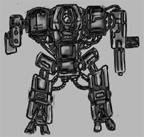
Game Zone
Treasure Hunt is a location based mobile phone game that uses GPS and internet enabled handhelds. We have hidden an imaginary treasure somewhere in your game zone and you must attempt using the clues we give you to try and find it. All players begin the game with one video or picture clue, and a number of multiple-choice answers, only one of which is the correct answer. Be careful when answering the clues, if you answer the clue incorrectly your next clue won’t be so helpful in your quest for the treasure, instead you might find yourself going in circles.
Posted by jo at 09:33 AM | Comments (0)
March 11, 2005
SEED
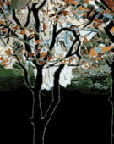
Art and Environmental Activism Converge
The Canadian Film Centre’s Habitat New Media Lab in collaboration with the SEED Collective will unveil an innovative interactive art installation, SEED, during the –scopeNew York Art Fair, March 11th to 14th at Flatotel, 135 West 52nd in New York City. This public interactive art installation invites participants to use their cell phones to plant "seeds" to grow a virtual forest.
"SEED is the first cell-phone driven interactive installation whose purpose is to effect environmental change in the real world. The ultimate goal of this evolving project is to buy a virtual tree seedling to plant in this installation; your cell phone provider will bill you, and the proceeds will be used to reforest certain endangered portions of our planet," said Napoleon Brousseau, artist and founding member of the SEED Collective.
"It is rare to see interactive art projects that have such a direct impact on the health and well-being of the environment. Habitat is thrilled to be co-producing SEED and sees this version as just the beginning of a much larger project – one that will include software tools being developed, formal collaborations with other institutions and the creation of a new type of art collective dedicated to environmental interventions," said Ana Serrano, Director, Canadian Film Centre’s Habitat New Media Lab.
SEED explores the convergence of rich media and wireless technology in the creation of a collaborative and evolving work of art. Through sound and imagery users create and populate a forest together. By dialing a particular number, each audience member will be given a “seed” to grow using the keypads of their cell phones. With each punch of the keypad, audiences have the ability to grow their seeds, choose the type of trees they want to plant, and change their texture and colour. After the three days at the scopeNew York Art Fair, the end effect is that all trees created by audience members will reveal a virtual forest.
Founded in 1988, by Academy Award winning director Norman Jewison, the Canadian Film Centre is Canada’s foremost film, television and new media institution dedicated to advancing Canadian creative talent, content and values worldwide through training, production, promotion and investment. Visit our website at www.cdnfilmcentre.com.
The Seed Collective is comprised of a group of artists, and producers, including founding member artist Napoleon Brousseau, Gabe Sawhney, and Galen Scorer; and producers Caitlin O’Donovan and Ana Serrano. More information can be found at http://www.seedcollective.ca
Posted by jo at 09:29 AM | Comments (0)
March 10, 2005
PlaceStorming: Performing New Technologies in Context
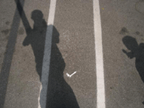
...Performative Aspects of Gaming
"ABSTRACT: We present PlaceStorming, an original method of brainstorming technological concepts, particularly in the area of pervasive computing. PlaceStorming is context-driven and play-based, combining real world environments with the immersive and performative aspects of gaming. In this paper, we discuss the background and techniques we used to create and deploy our method. Examples are drawn from a March 2004 PlaceStorming event to highlight key strengths of the method. Suggestions are made for what produces successful PlaceStorming sessions." From Place Storming: Performing New Technologies in Context by Ken Anderson, Intel Research, and Jane McGonigal, University of California at Berkeley. Proceedings for the 3rd annual Nordic Conference on Computer Human Interface (NordCHI 04)
The PlaceStorming project is a collaborative, pervasive play scenario that uses GPS data, mobile network technologies, and digital media devices to facilitate, as a public practice, context-aware and location-specific academic research. (Jane McGonigal is) developing it in conjunction with a Vectors fellowship from the University of Southern California. The technologies and media employed for v 2.0 are: text and Instant messaging; cell phones; handheld Global Positioning System devices; digital cameras; Web-accessible database.
Posted by jo at 05:23 PM | Comments (0)
Notes Toward a More Pervasive Cyberdrama
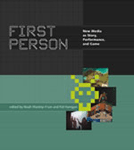
The Nomadic, Embodied, Embedded Aesthetic
"What would cyberdrama look like off the computer screen? To put it another way: Could there be a more pervasive cyberdramaturgy? Computing is increasingly ubiquitous and mobile. Why shouldn’t cyberdrama be, as well? Imagine a set of scripting, design and production strategies that employed digital technologies but tended toward a more nomadic, embodied, and embedded aesthetic. What might we learn about the dramatic potential of cybernetic systems and new media — or about the cybernetic potential of modern drama — from performances developed along these more pervasive guidelines?" From Notes Toward a More Pervasive Cyberdrama by Jane McGonigal, Electronic Book Review, June 2004 (in response to Cyberdrama by Pat Harrigan and Noah Wardrip-Fruin from First Person).
Posted by jo at 03:51 PM | Comments (0)
Google Maps
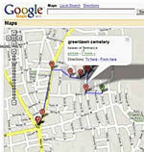
Google Mapping Location-Based Narratives
"My colleague Ken Tompkins recently sent along a link to John Udell’s Walking Tour of Keene. The short video demonstrates how Udell used Google Maps in concert with a bookmarklet to create a walking tour of an area in his hometown that rides on top of the Google Maps UI. Waypoints are marked with GPS data on the Google map and then linked to his content (jpgs and quicktime clips). Udell explains how he did it in a followup post. Other hacks to Google Maps are being posted on a Google Maps Hacking Wiki. Although the current hack is kludgey, it suggests exciting possiblities for location-based narratives that could be delivered in a web browser via the Google Maps interface." [blogged by scott on Grandtextauto]
Posted by jo at 10:03 AM | Comments (1)
March 09, 2005
Habitat Perspectives
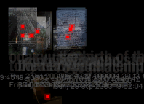
Space=Network of Places
In Habitat Perspectives you can follow the participants live as they post images to this application from the road through GPS enabled mobile media. The target is to conceptualise how the perception of the city differs from participant to participant depending on their everyday habits. Though in the beginning only a black background will predominate in the application, as participants post more and more content, a map of the city, and the map of each of the participants' "places" will slowly start emerging.
"Place is a special kind of object. It is a concretion of value, though not a valued thing that can be handled or carried about easily; it is an object in which one can dwell. Space, is given by the ability to move. Movements are often directed toward, or repulsed by, objects and places. Hence space can be variously experienced as the relative location of objects or places, as the distances and expanses that separate or link places, and - more abstractly - as the area defined by a network of places." Yi-Fu Tuan
Posted by jo at 12:45 PM | Comments (0)
March 07, 2005
Presence
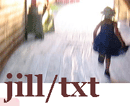
Flows of Moments>>Shared Presence
"Last night I was reading danah boyd’s post about how some people log on to IM to mark presence, while others only log on when they want to chat, and how the cultural difference causes tension, especially since it’s entirely invisible to those who log on simply to chat and assume everyone else does too.
Watching IN Network a similar thought occurred to me. There’s a stream of communication, but even when we can look at every single bit of communication and contact between two lovers (because it is all electronic and therefore accessible) the meaning of it evades us anyway. A conversation between lovers is uninteresting to others ("Tell me about your day?" "What kind of dinner did you get?" "Italian”) - but its mere presence is crucial to the couple themselves. [blogged by Jill Walker on jill/txt]
Howard Rheingold observes a similar shift from communication of messages to the communication of presence in the way cameraphones are used in Japan:
"The social role of the cameraphone is distinctly different from both the camera and the phone. And although these devices transmit images through the Internet, they are also turning out, rather unexpectedly, to be face-to-face media. It looks like this newly ubiquitous device could be more about flows of moments than stocks of images, more about sharing presence than transporting messages, and ultimately, more about personal narrative than factual communication. […] cameraphones represent a new opportunity to tell the story of our lives to ourselves as well as to others, and to share a sense of continuous, multisensory, social presence with people who are geographically distant. Cameraphones represent a new opportunity to tell the story of our lives to ourselves as well as to others, and to share a sense of continuous, multisensory, social presence with people who are geographically distant. […] Surveys in 2003 indicated that 90% of the people who responded viewed their cameraphone pictures on their handsets, 60% used them as wallpaper for the phone screens, over 50% e-mailed them to…[link]""
Posted by jo at 02:39 PM | Comments (0)
Project Research and Software Toys
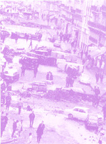
Miscellaneous
"...Situationist International Online: I’ve spent some good hours here recently. The situationists were anticopyright from the beginning, which has made this quite extensive archive of texts from the situationist movement which reached its height in the 1960s possible, including a complete archive of Internationale Situationniste and Guy Debord’s Society of the Spectacle.
Building a Mobile, Locative Collaborative Application: Documentation of the development of CatchBob, a treasure-hunt type, Wi-Fi based locative and collaborative mobile game. The game itself is fairly simple in concept:
The aim of the game for the participants is to find a virtual object on our campus and enclosing it in a triangle formed by their position. The positions are provided by a location-based tool running on a PocketPC or a TabletPC. This tool allows each person to see the location of his or her partners as an avatar on the campus map. Another meaningful piece of information given by this tool is whether the user is close or far from the object: an individual proximity sensor.
Lumiere Ghosting in the New Media Classroom: David Gillette describes a new media curriculum built around Lev Manovich’s The Language of New Media, and its focus on new media development as a form of interactive, multicultural cinema, and using a Cave-like display, the CompuObscura, an interactive new media art work that allows viewers to interact with images on display inside the device.
Jim Bugardner: the guy who invented the Palace avatar based chat system in the 1990s, has lots of generative art, doodads and neat little software toys at this site.
iStory Creator: an application made to allow people the opportunity to create their own iPod text games of the choose your-own-adventure variety."
[blogged by Scott on Grandtextauto]
Posted by jo at 11:07 AM | Comments (0)
March 04, 2005
Going Anywhere, Being Everywhere:
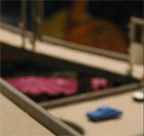
Metaphors of Mobility for Ubiquitous Computing
"Abstract | Full Text (PDF): If ubiquitous computing seeks to go anywhere and be everywhere, the challenge is to adequately design for context-awareness, where context is defined as fluid and unpredictable, and people, objects and meanings are all mobile. Various efforts in ubiquitous computing have sought to bring computers to "our world" (effectively domesticating them), rather than us having to adapt to the "computer world" (and domesticating us). But such simple dichotomies incorrectly assume there are easy distinctions to be made between the virtual and the actual, or human and machine. Metaphors of mobility from social theory and art draw attention to the mobile and stable elements inherent in the design and use of ubiquitous computing. I argue that a greater articulation of these elements is critical to understanding the foundations of, and future possibilities for, ubiquitous computing." [Anne Galloway, Paper for Concepts and Models for Ubiquitous Computing Workshop at UbiComp 2002, 29 September - 1 October, 2002, Göteborg, Sweden]
Posted by jo at 07:50 AM | Comments (0)
March 03, 2005
Receiver #12

Seamless Mobility?
Receiver 12 is now available. This issues includes Mobile Movies – Taking Film to the Public Space, by Heinz Hermanns; Beyond Just Getting There – The Interactive Road by Oskar Juhlin; Visions of Culture in the Era of Mobility by Ranjit Makkuni; and The City Shaman Dances with Virtual Wolves – Researching Pervasive Mobile Gaming by Frans Mäyrä.
Posted by jo at 06:22 PM | Comments (0)
CITYSNAPPER_Game
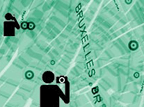
Build A Representation of Brussels
The CITYSNAPPER_Game--by LAb[au] and iMAGE z[ONE]/Olivier Vanderaa--is an urban interactive photographic game in real time, using an online 3D electronic space and SMS server technology, relating the urban space with the World Wide Web, and users (players) with an urban photographer. Players use SMS to instruct the photographer to go to a particular part of town and bring back a picture of it; orientate the shooting with additional verbal instructions (word, sentence, riddle); and record their response. The photographer takes a picture with a cell phone and implements the interface via SMS. The audience can follow the game through the online 3D interface from a home computer or by navigating the 3D model of the city screened in the exhibition space. At the players can retrieve a print of the image "they gave birth to."
Posted by jo at 04:33 PM | Comments (0)
Floatables
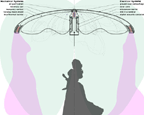
Spaces of Absence
Haque Design and Research asks the question "in an urban environment that is so data-saturated can a distinction between public and private space really claim to exist"? It is the contention of (Floatables) that private spaces are increasingly scarce. All spaces are public, except spaces of absence. If privacy once existed in the home, now such a space no longer needs to be tied to a particular location."
"...The aim of the floatable jellyfish-like vessels that drift around cities is to create temporary, ephemeral zones of privacy: an absence of phone calls, emails, sounds, smells and thermal patterns left behind by others. Through various electrical systems they are also able to prevent access of GPS devices, television broadcasts, wireless networks and other microwave emissions. Finally, by creating a "blurry barrier" and a ground-plane camouflage pattern, they provide shielding from the unembarrassed gaze of security cameras and surveillance satellites." [via]
Posted by jo at 01:34 PM | Comments (0)
Cameraphones as Personal Storytelling Media
Distributed Co-Presence
"...Ito and Okabe's previous observations of Japanese mobile phone users led them to adopt a conceptual framework of "technosocial situations" in which people "assemble social situations as a hybrid of virtual and physically co-present relations and encounters." For example, the people they observed used streams of text messages to "inscribe a space of shared awareness of one another" -- an explanation for the preponderance of messages that conveyed no information other than what the sender was doing at the moment: "I'm sitting on the bus," or "I'm bored" or "I'm walking up the hill." The cameraphone study extends this framework by revealing how people's choices of images to share enables intimate social networks to share ambient information; but, "on the other hand, we are finding that users tend not to e-mail messages to one another, and prefer to share images by showing pictures on a handset screen." Hence, the communication device that used to transmit messages across distances is now also used to capture a flow of experience in order to add a visual element to face-to-face story-telling..." From Cameraphones as Personal Storytelling Media by Howard Rheingold, TheFeature, March 3, 2005.
Posted by jo at 10:16 AM | Comments (0)
March 02, 2005
YellowArrow at DiVA
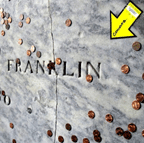
Art in Motion
Digital and Video Art Fair [DiVA] kicks off with an opening after party on March 10th that will definitely be an event in itself. The party will feature special performances by YellowArrow. Attendees are invited to participate in the art in motion. In addition to YellowArrow stickers’ distribution and projections displaying the content of the YellowArrow Global Gallery, mobile YellowArrows will point out a series of live micro performances staged throughout the party and announced via TXT messaging.
DiVA is the first art fair in the United States dedicated exclusively to digital and video art. DiVA will serve as an international destination for collectors, art dealers, museums, curators, and artists. Around forty galleries willfeature the diverse and innovative work of new media artists exploring and pushing the digital envelope. Digitally created work is a dynamic platform of expression in contemporary art that includes film and video, animation, photography, printmaking, sculpture, painting, architecture, and performance.
The YellowArrow is a global public art project that merges graffiti and sticker culture with wireless media, creating an interactive forum for people to leave and discover messages pointing out what counts in their environment.
Participants place arrows to draw attention to different locations and objects -- a favorite view of the city, an odd fire hydrant, the local bar. Each arrow has a unique code, and by sending a text-message (SMS) from your mobile phone to 1.646.270.5537 in the format "+code your message" you associate a short text with your arrow -- messages can range from literary quotations to personal commentaries to game-like prompts to action.
When another person encounters the arrow, he or she sends "code" to 1.646.270.5537 and immediately receives the message associated with it on their mobile phone. Through this location-based exchange of text-messages, the YellowArrow becomes a symbol for the unique characteristics, personal histories, and hidden secrets that live within our everyday spaces. And it's not just places, it's people: YellowArrow TXTshirts are individually coded just like the stickers.
YellowArrow text-messaging is currently compatible with all phones and service providers in the US as well as internationally with those networks under the GSM standard. The website, YellowArrow.org, allows participants to annotate their arrows with photos and maps and is the online gallery of YellowArrows placed throughout the world -- visit to order arrow stickers and tshirts and see announcements about new events and features.
Posted by jo at 11:16 AM | Comments (0)
March 01, 2005
IN Network

Living Together While Apart
IN Network--by Michael Mandiberg and Julia Steinmetz--is an extended cell phone life-art performance about distance, communication, intimacy, telepresence, and living together while apart. Faced with the prospect of a long-distance relationship when Michael moved from Los Angeles to New York in August 2004, the two artists got their frequent flyer numbers handy, and switched both of their cell phones to a provider with free "IN Network" service.
During the month of March the artists will present this cell-phone life-art performance via a photo moblog and podcasts of their phone conversations. There will also be several live webcasts of audio of the artists sleeping together on their cellphones. They will route all of their text and picture messages through the IN Network website. If you'd prefer, you can have installments of the performance sent directly to you via their Podcast. How to Podcast?.
"IN Network" is a 2005 commission of New Radio and Performing Arts, (aka Ether-Ore) for its Turbulence web site. It was made possible with funding from the Jerome Foundation.
BIOGRAPHIES
MICHAEL MANDIBERG is a new media artist who uses the internet, video and performance to explore subjectivity, labor, and commerce. His projects include "Bush Poll," a statistical survey of the 170 George Bushes of the United States, 2004; the DVD exhibition "First Person" in collaboration with Carla Herrera-Prats and Anne-Julie Raccoursier, 2003; and "The Exchange Program," a collaborative performance, 2002. Mandiberg has exhibited at Ars Electronica Center, Linz, Austria; ZKM in Karlsruhe, Germany; Transmediale Festival, Berlin; Tirana Biennale, Albania, and C-Level, Los Angeles. His work has been reviewed in The New York Times, The Chicago Tribune, The Berliner Zeitung, Wired, and a new survey "Internet Art" published by Thames and Hudson World of Art. Mandiberg is Assistant Professor in the Department of Media Culture, at the College of Staten Island/CUNY. URL: http://www.mandiberg.com/; Contact: michael -at- mandiberg -dot- com
JULIA STEINMETZ is a founding member and co-director of the Toxic Titties, a Los Angeles based collective working in performance, video, photography, and new media. Their work has been performed at such venues as Museum On Contemporary Art, Seattle, REDCAT at the Walt Disney Concert Hall, Out Fest Film Festival Los Angeles, LA Freewaves festival and the Hammer Museum in Los Angeles. Titties have performed in events such as the "Intersectional Feminisms" conference at UC Riverside, CA and at "Outside Field: International Performance Festival" at Ex-Teresa Arte Actual, Mexico City, "Cyberfem Spirit," at Edith Russ Site for New Media, Oldenberg, Germany and at Schnitt Ausstellungsraum, Cologne. Their work has been written about in Tema Celeste, the Los Angeles Times, the LA Weekly, Mexico City's La Reforma, Black Book Magazine, and Kolner Stadtanzeiger. Toxic Titties performance documents and design work have appeared in "Gendered Geographies," edited by Kaucyila Brooke, and "SITE, Schinitt Austellungsraum" published by Krefeld, Germany. Their work in collaboration with Austrian artist Dorit Margrieter was recently featured at MUMOK in Vienna. Contact: juliasteinmetz -at- yahoo -dot- com
Posted by jo at 11:53 AM | Comments (1)
February 28, 2005
Towards an Emotional GPS:

Writing Your Own City
"...Psychogeography and cognitive mapping offer two suggestions for recording wireless experiences, using a term we've coined, emotional GPS. Whereas traditional GIS (Geographic Information Systems) and GPS (Global Positioning Systems) tend towards an empirical representation of the world, emotional GPS is biased towards the personal, temporary, and imaginary. In most cases, the prevailing impact of wireless on the definition of a place is not so much on its static form as the potential experiences that this place can afford. The wireless environment provides an alternative use, an augmented interface, or new associative mnemonics. Providing an annotative mapping framework, use of emotional GPS fosters a networked mobility within these environments that undermines the authoritarian bent of traditional GIS and GPS mapping techniques." From Towards an Emotional GPS: Writing Your Own City by Scott Paterson, with Marina Zurkow and Julian Bleecker, Intelligent Agent, Vol. 3 No. 2.
Posted by jo at 10:52 AM | Comments (0)
RESONANCES AND EVERYDAY LIFE:
Ubiquitous Computing and the City
Abstract: Ubiquitous computing seeks to embed computers into our everyday lives in such ways as to render them invisible and allow them to be taken for granted, and social and cultural theories of everyday life have always been interested in rendering the invisible visible and exposing the mundane. Despite these related concerns, social and cultural studies remain in the background of discussions of ubiquitous technology design. This essay seeks to introduce researchers in both fields to each other, and begin to explore the ways in which collaboration might proceed. By exploring mobile and ubiquitous technologies currently being used to augment our experiences of the city, this paper investigates notions of sociality, spatialisation and temporalisation as central to our experiences of everyday life, and therefore of interest to the design of ubiquitous computing." Resonances and Everyday Life: Ubiquitous Computing and the City (DRAFT) by Anne Galloway. [via]
Posted by jo at 10:36 AM | Comments (0)
Ad Hoc Information Spaces
Temporary Networks
"Abstract: We describe the concept of ad hoc information spaces as a way of distributing information in an environment depending on user mobility and relative location. Ad hoc information spaces are realized using a decentralized approach to ubiquitous computing, which is based on functionally self-contained devices and ad hoc networking. Users are able to contruct and manipulate the properties of these information spaces by means of moving and manipulating a variety of devices. In order to explore the possibilities of using ad hoc information spaces to support group collaboration, three prototypes were developed: the Hummingbirds, the Generalized Hummingbirds and the NewsPilot. These are described along with some of the empirical findings that support their design." Ad Hoc Information Spaces - Johan Redström, Lars Erik Holmquist, Per Dahlberg and Peter Ljungstrand. [via]
Posted by jo at 10:29 AM | Comments (0)
Geo-Heritage
![]()
Flexible Storytelling
"...Storytelling is one of the oldest art forms of human beings; initiated in the oral tradition, its form has evolved with changes in society and available media with which to work. The oral storyteller often altered the tale as it was told, choosing words based on response from the listeners to build the collective moment. Of particular relevance here is the Australian Aboriginal storytelling tradition in which territory is not perceived of as a piece of land enclosed within borders but rather as "an interlocking network of 'lines' or 'ways through'" (Chatwin 1987). Sung into existence by the ancestors, these stories actually function as maps of their terrain that can be augmented by travelers to account. Interactive in the beginning with the advent of the written medium, storytelling, however, evolved into a non-interactive narrative style..." From Geo-Heritage: A Living Archive of Spatial Culture by Scot T Refsland, Marc Tuters & Jim Cooley. Also read Bits and Bytes of Locative Geo-Heritage by tV.
Posted by jo at 09:55 AM | Comments (0)
Vivienne

Virtual Girlfriend
"The International Herald Tribune writes about Vivienne, the new 3G girlfriend created by Artificial Life, a software house in Hong Kong. It'a a virtual application with a computerized synthetic voice who likes to receive flowers and chocolates, translates six languages and can converse on 35,000 topics. The service is already available in Malaysia and Singapore, and will arrive in Europe later this spring.
At the moment V-Girl is basically considered a game (it won the global Best Mobile Game Award by Ericsson). Apart from this use for lonely hearts, the application developed by Artificial Life might become very interesting, especially for companies that want to enhance the management of the relationship with their customers." [blogged on making money out of mobile]
Posted by jo at 09:27 AM | Comments (0)
February 25, 2005
Taxi_onomy

The Ultimate Vehicle for Psychogeography
Taxi_onomy, by Celine Condorelli and Beatrice Gibson, is an urban mapping project and mobile cartographic research endeavour that seeks to re-appropriate the black taxi as the ultimate vehicle for psychogeography, based on its capacity for metro processing and spatial understanding. Tax_ionomy will utilise the black taxi for the purposes of enabling artists and the general public to create and utilise emotional, cognitive and networked maps of the city.
Taxi_onomy - a live art project to take place in a taxi; the practice of classification from the purview of the taxi. Mumbai, a Taxonomy of the City is now available to view on line.
Posted by jo at 01:15 PM | Comments (0)
February 22, 2005
CallCutter
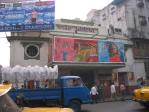
Participants Unknowingly Become Actors
"Your mobile phone could be your ticket to a site-specific play that takes you through the labyrinth of north Kolkata. To take part, call 98318-80501 from February 26, the opening day for this two-month-long project, CallCutta.
Once you are chosen, all you have to do is listen to instructions on the phone and take a trip that begins from Star Theatre and is most likely to end on the terrace of a house. It touches several historical landmarks via many bylanes, back alleys and bustlings streets. If you are lucky, at the other end of the line, it could be Priyanka Nandi, a student of English (Hons), whose endearing voice will leave you wondering whether it’s the beauty of the city or the urge to simply listen to her that has goaded to you take a nearly hour-long walk. Max Mueller Bhavan has brought this novel concept to the city. Actor-filmmaker Anjan Dutt will capture the trips on camera." A Unique Theatre Comes Calling on Your Mobile Phone by Pratik Ghosh, HindustanTimes.com, Kolkata, February 21, 2005 [via textually.org]
"This unique concept has been developed by a three-member German/Swiss theatre group Rimini Protokol comprising Helgard Haug, Stephan Kaegi and Daniel Wetzel.
Helgard, who seems to know that part of the city more than a diehard Kolkatan, says: “A participant unknowingly becomes an actor when he trusts a stranger on the phone and strikes up a conversation.”
The concept focuses on a one-on-one format, which is a deviation from the convention that hinges on a collective performance on stage.
“The idea is to operate on a personal level,” says Kaegi, who admits to being inspired by the call-centre style of operation. “If someone in Europe or the US relies on an Indian on the phone for buying goods and services, it shows man has an innate tendency to trust,” he says.
The eight persons who will be answering calls from an office in Salt Lake attended a workshop which gave them a detailed idea of the stretch through which the callers will walk. “I now know this area like the back of my palm,” says Nandi.
“But she and her colleagues have an even more challenging task at hand from April 2, when they will be guiding Germans on a trip through Berlin from the same workstation in Kolkata,” says Wetzel."
Posted by jo at 02:40 PM | Comments (1)
Experiments in Art and Technology (E.A.T.)
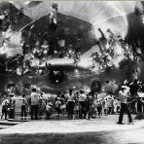
One Forgotten History of Transdisciplinarity
"At a recent meeting of PLAN I mentioned E.A.T. and drew a number of blank looks-so here is one forgotten history of transdisciplinarity and early locative projects:
Experiments in Art and Technology was founded in 1966 by engineers Billy Klüver and Fred Waldhauer and artists Robert Rauschenberg and Robert Whitman. The non-profit organization developed from the experience of 9 Evenings: Theatre and Engineering. This event, which was held in October 1966 at the 69th Regiment Armory in New York City (U.S.), brought together 40 engineers and 10 contemporary artists who worked together on performances that incorporated new technology. It became clear that achieving ongoing artist-engineer relationships would require a concerted effort to develop the necessary physical and social conditions. E.A.T. saw itself as a catalyst for stimulating the involvement of industry and technology with the arts. [blogged by Martin Rieser on Mobile Audience]
The organization worked to forge effective collaborations between artists and engineers through industrial cooperation and sponsorship. Membership was opened to all artists and engineers, and an office set up in a loft at 9 East 16th Street in New York.
Artists and the art community responded enthusiastically to E.A.T. By 1969, given early efforts to attract engineers, the group had over 2,000 artist members as well as 2,000 engineer members willing to work with artists."
Related: Whitman's Phones; PLAN Notes; and On Locative Media's European Reception.
Posted by jo at 02:04 PM | Comments (0)
February 21, 2005
Girl Friday

A Mobile Interactive Drama Series
Glued to your mobile phone? SMS crazy? Got no time for TV but love a good drama? Girl Friday (GF) is here and it's sure to be as addictive as your phone and that soapie that you can't miss. Girl Friday's life changes when she finds a mobile phone on a tram on the way to work. She soon becomes engaged in the mysterious life of the stranger's phone. All the while she has paper clip trouble at the office; is searching for the mother she never knew, and is clawing her way to the top of the local karaoke charts.
GF beams straight to your mobile. No wires, no cords, no lengthy downloads. It's entertainment on the run - small digestible bites of life for viewers to consume at will. For the content hungry, there's a website too. Whether you can take the chunky stuff on a broadband connection or the low fat version on your 56K modem, you won't miss out on the daily sagas of Girl Friday. [via Cross-Media Storytelling]
GF will be Australia's and possibly the world's first mobile cam girl. She is a live action character who on the surface appears 'real' but in fact is a fictional part of the GF interactive world. Her story reflects the way devices (such as your mobile) are changing the way we communicate in everyday life. As GF tries to deal with the sagas of career, love and family we journey with her as a friend and confidant.
GF is a sophisticated interactive drama with a comic edge; taking its lead from outstanding programs such as Sex In The City and Ally McBeal. The program will delve into some of life's sticker questions with insight and humour, and aim to satisfy the content hungry 16-30 year old market.
Once you start, you'll be hooked and aching for your weekly GF fix.
Posted by jo at 10:52 AM | Comments (0)
February 15, 2005
LuvMsgs
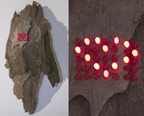
Digital Tree Carvings for a Mobile Generation
LuvMsgs, by Philip Worthington, is a reusable, digital tree carving. It's a grid of L.E.D's, implanted under the bark of special trees where people often meet. Each tree has a phone number that people can send SMS messages to. The SMS is received by the tree and displayed in the L.E.D grid for as long as the people are near. When they go, the message disappears but is remembered. Other people may come and go, leaving messages for themselves or their loved ones. When people return to the tree, it remembers the message that was stored last time they were there and displays it, as if it had always been there. [blogged by Emily on textually.org]
Posted by jo at 03:13 PM | Comments (0)
February 14, 2005
Teaching for the Wireless Commons
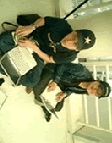
Interview with Elizabeth Goodman
[As part of WebCamTalk1.0]: Trebor Scholz: Please present your thoughts on new media education, in particular your course "Site-Specific: Wireless Networks and Urban Art Practice."
EG: This course was a mixed graduate-undergraduate seminar I taught at the San Francisco Art Institute with Alison Sant. The course examined radio signal as a medium for expression in its own right, with its own aesthetic qualities and cultural significance. It was a diverse class, with undergraduate and graduate students. The class focused specifically on sensing and representing wireless signals; we did not intend it as a technical class centered around any one tool. Using whatever medium they preferred, students were to create their own interventions into what Fiona Raby and Tony Dunne have called the "Hertzian space" of San Francisco. Final projects included a game, a proposal for a video installation, and a GPS-coordinated city tour. There have only been a few classes on wireless networks as art medium thus far, so there weren't many models to draw from.
TS: What did you learn from the experience of teaching a course with so little precedence?
EG: Learning from the experience of this course and from my own experience in school, I'd like to point to some larger issues about the state of interactive art education:
1) Art education: training for what?
2) The importance of historical perspective
3) Defining core curriculum
4) Moving the computing arts away from the computer
TS: Please describe the course more in detail.
EG: The Art Institute in San Francisco, for those of you who might not be familiar with it, is well known for its historical emphasis on conceptual art. Alison and I found that, as so often happens, our students were more comfortable with the conceptual. Partly, this is because it's easier to talk than build. But the greater issue was unfamiliarity with the underlying technologies of wireless networks "the physics of radio waves, the proliferating transceivers, the logging programs and the graphic interfaces" not to mention the pervasive fear of the unfamiliar. Even with the loan of wifi- , Bluetooth-, and GPS-enabled iPaqs from the Exploratorium, some were reluctant to experiment. And those that did were often daunted by the amount of time they had to spend troubleshooting the devices. An increasing number of people comes to courses such as ours with some knowledge of computers, but only few are comfortable with code.
Indeed, some of our students came in with far less knowledge of the tools of new media artists than we had expected. "New media" stretches from video and sound editing, to image manipulation, to animation, to interaction design, and code. The question of documenting and presenting a new media project gets complicated when you've never used a digital camera or created a web page. In addition, students were dismayed by the seemingly endless list of expensive equipment that visiting artists recommended. Laptops, GPS devices, PocketPCs, wifi-cards, specialized radio receivers. Some felt that the medium was simply unaffordable on a student budget, and the school was not planning on picking up the bills.
TS: This is a phenomenon that you also find with much of recent location-based cultural practices that require a whole set of hardware that it still unaffordable to most city dwellers.
EG: There's an interesting and common phenomenon that happens when students--anyone, really--attempts a new medium. You called it "techno-determinism" and I agree. It's a kind of blindness. The sheer difficulty of making any headway with unfamiliar and imperfect technologies such as PocketPCs running an interface to a Bluetooth GPS module, or a Flash animation, leads to the mistaken belief that the technologies themselves are the most interesting part of a project.
TS: How do you approach the confluence of art, theory and technology?
EG: Given students's understandable fears of new, unfamiliar, and un-user-friendly technologies, we need to actively reward exploration, experimentation, and sheer determination. However, the class as a whole suffers when the focus of discussion and critique moves from developing and expressing concepts to solving technical problems. Steering a course between technophobia and techno-obsession is harder than it sounds. One of the great challenges, I learned, of teaching "new media" classes that are not designed to be technical workshops is keeping promising concepts (that are often technologically interesting as well) from derailing into technological minutia. Throughout the class, Alison and I developed some strategies in response to techno-phobia, techno-obsession, and the sheer expensiveness of electronic equipment.
TS: How do you link these emerging cultural practices to their backgrounds in the history of technology, and culture at large.
EG: There is a tendency among the techno-obsessed to think that "new media" is somehow the product of a catastrophic, unbridgeable break with older tools and practices. Alison and I tried to locate the class within a longer history of site specific art and urban engagement. We started by asking students to think critically about the notion of "site" drawing on Robert Smithson's work, the notion of "non-sites" and on Gordon Matta - Clark's building deconstruction projects. We also used sources from urban theory, the Situationists and asked students to think about how we come to know a city "how we travel through it, how we map it, how we remember it. We found that bridging the old and the new produced richer conversations in new students " which is no surprise but also created a comfort zone for San Francisco Art Institute students who were already familiar with mid-twentieth century art movements.
TS: You mentioned that a few weeks into the class you asked students to switch off their computers and go to the drawing board.
EG: Yes, drawing and sketching also proved a useful introduction to the ideas and methods of the class. One of our most successful class exercises required students to create a map of the campus using only mobile phones, paper, and pencils. Working in teams, students had to both agree on how to represent mobile phone signal strength but also what areas they found most significant. The resulting critiques allowed us to talk about some core issues: the representation of temporality, definitions of site, and visualization of the invisible.
In fact, mobile phones became a cheap and accessible medium for students daunted by the expense or unfamiliarity of wifi-enabled laptops and GPS devices. For those of us who think in terms of code, it can be useful to step back and see mobile phones as a platform for development but also simple sensors in their own right. One student even used his mobile phone as a kind of game wheel, dynamically spinning paths through the city based on signal strength.
I would have loved to have my students build applications for mobile phones. But because the class blended art theory and practice, we had to think realistically about time management. We simply did not have enough time to both introduce key concepts and teach programming. As well, showing a project in a gallery is very different than supporting it on a city-wide level. Moving from the university lab to the streets means asking students to simplify their technical needs as much as possible.
TS: Could you come back to the four main issues that you introduced earlier? You started off with "Art education: training for what?"
EG: One of the subtexts running through in-class discussion was the desire to be taught specific tools, Photoshop or Flash, for example. There is a lot of fear about the high cost of education in North America, about getting jobs, and that is reflected in these demands for vocational training. I think many will agree with me when I say that undergraduate art courses should not focus on software. Defining education by the tools currently in vogue reduces learning to a set of instruction manuals. As we have all discovered, learning is often more a changing set of practices than abstract, static data.
Which brings me to my second point: defining a new media core curriculum. I think student calls for software-based training indicate a deep insecurity. Many students are not sure what they are supposed to know and how they are supposed to learn it. That is a very disconcerting situation. And part of the role of a faculty member is to answer those questions through curriculum development.
A curriculum is or should be the articulation of a community's understanding of disciplinary boundaries: what they value, what they exclude, what they require. I had a fairly traditional undergraduate art education, based around a choice of prerequisite classes: drawing, sculpture, photography, graphic design. Drawing was mandatory. As a master's student at New York University, I had another core curriculum: programming, basic electrical engineering, visual design, and communications. Everything was mandatory. Communications included training in Photoshop, video editing, etc. but it came wrapped in a larger conversation about the social significance of technologies.
I personally believe digital media core curricula should include programming and drawing. But I'm not the deciding factor in discipline-wide curriculum development. The faculty of every school has the responsibility to decide what their students should learn. I don't think we'd see wildly divergent curricula. But internal conversations need to happen so that consensus can emerge and students get consistent messages about what they need to succeed.
TS: An additional starting point was your emphasis of moving the computing arts away from the computer. Please elaborate.
EG: To me, this is perhaps the most important point: moving the computing arts away from the computer. One of our greatest struggles during the class was the fixation on the technical at the expense of the conceptual. We suggested refocusing projects, but more than once we found that students did not believe that sketching counted as part of their work as digital artists. Yet in retrospect, it's significant that the semester's most successful exercise was based on drawing.
For us, the lesson was that teaching the digital arts should not be confined to digital media. Many institutions without the budget for expensive equipment can use diagrams and formal logic as a proxy for circuitry. Nothing can totally replace learning by doing, but teaching the underlying principles of computing still helps students. As Casey Reas points out, code creates the tools we use; it's an important medium in itself. I think that teaching drawing can serve as an important bulwark against the fixation on technology, and it can remind students to focus on the underlying ideas that they strive to communicate.
So, I see several issues: I feel conflicted about the perception of the teaching of "new media" as something that is completely new. Another issue is thinking solely of what we produce as solely a function of media. I think we'll do ourselves and our students a service if we think less about newness, less about a specific media, and more about continuing art practices based around the implications of computing.
About:
Elizabeth Goodman's design, writing, and research focuses on critical thinking and creative exploration at the intersections of new digital technologies, social life and urban spaces. She has a master's degree from New York University's Interactive Telecommunications Program and has spent this fall as a visiting lecturer on site specific art and wireless networks at the San Francisco Art Institute. For a course bibliography visit www.molodiez.org/biblio_goodman.pdf. More examples of Elizabeth's work in urban gaming and cellphone interfaces can be found at www.confectious.net. [via Rhizome]
Posted by jo at 11:18 AM | Comments (0)
spam on your mobile
It's not just inevitable; it's here already. A survey was released this week, Carlo Longino writes in TheFeature "indicating that 80 percent of mobile users have received spam to their handsets -- not that that's any surprise, but the results may be a wake-up call for mobile operators. Respondents said their most likely response to mobile spam would be to change carriers, and that receiving mobile spam hurts their perception of the carrier and its brand. For carriers that don't act decisively to stop spam -- and help marketers understand that just because it's a mobile message doesn't mean it can't be spam -- the outcome looks bleak.
Of course, as new mobile technologies emerge, what is and what isn't considered spam changes, too. Geotagging isn't a new concept, but Siemens is pitching a new iteration of it, explicitly suggesting it could be used for advertising purposes. The company says users would be able to shut off the service, but what happens when users turn off for good? The dilemma highlights the need for tools to help cut through the inevitable clutter, even before the service gets off the ground."
Posted by newradio at 09:07 AM | Comments (0)
February 11, 2005
A Situationist Critique of Computer Games
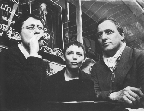
Interactivity is Preferable to Boredom
"A key premise of the mobile-technology game industry is that the pleasure of interactivity is preferable to boredom. Who would choose simply to sit on a train or wait in a line when you could be distracting your brain and hands with a game? Idleness, slowness, contemplation, being mentally present in a situated context have no place in this wired world. But for those who were alive before this hyperactive culture grew up around us, it was during those interstices of life’s activities that we breathed, relaxed, observed, thought things over. Listen up - even the smallest fragments of your idle time have now been colonized with meaningless, addictive junk. Junk that is part of the fabric of the Spectacle." From Piercing the Spectacle: A Situationist Critique of Computer Games by Brenda Laurel [via]
Posted by jo at 05:41 PM | Comments (1)
February 10, 2005
Seamful Game
![ubicompclient[1].gif](http://www.turbulence.org/blog/images/ubicompclient[1].gif)
Glitches are Integral
Seamful Game, by Matthew Chalmers from the University of Glasgow (Scotland), is a GPS and WiFi based game played in the streets using PDAs. To be successfull, two teams of runners must develop an understanding of the network coverage and the effect of signal strength. It thus turns the patchy network coverage, usually seen as a problem, into an important feature of the game.
Players travel around a designated area collecting digital "coins" (which appear all over the map, including in places not covered by the 802.11b wireless network) and uploading them to get points. To gain these points, players must upload the coin to the server, by pressing the "upload" button on their PDA in an area where there is 802.11b coverage. If players attempt to upload coins in an area not covered by WiFi, the upload fails and they loose all the coins they are carrying. [blogged by Regine on near near future]
Only by understanding the boundaries of the network, and the effect of signal strength on their ability to upload coins, and thus score points, will players be successful in winning the game.
The "Pick Pocket" feature of the game allows a player to steal coins from other players nearby. The player has to be inside network coverage, and use the GPS to get within 10 meters of another player (also within network coverage). By pressing the "Pick Pocket" button, they can grab any coins the victim is carrying but has not uploaded yet.
Plus, scattered around the map are "Mines". If a player moves to within 10 meters of a mine, it will detonate and the player's PDA will be temporarily disabled.
Posted by jo at 09:36 AM | Comments (0)
February 09, 2005
Cyburbia Productions

Live Movies
Cyburbia Productions, a multimedia performance studio, focuses on the collaborative creation of "live movies," syntheses of cinema, theater and music. The company’s work employs digital projection and sound technologies, and filmic narrative techniques, to construct moving stage pictures and sonic theater, in which live actors interact with animated performers, and emerge from or vanish into projected environments, settings and dreamscapes.
Projects include: SILENCE & DARKNESS is a live movie for the cell phone age by Kirby Malone, and passages from Jean Baudrillard, Guy Debord, and Heiner Müller. See list of productions here.
Posted by jo at 11:54 AM | Comments (0)
PacMan Must Die
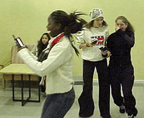
Collaborate or Lose
Students at the Future Applications Lab in Göteborg, Sweden have developed PacMan Must Die, an innovative video game with a playing field distributed across mobile wi-fi-enabled devices belonging to all the players. The game combines dynamics of play in physical places with the world of video games in a new way. To win, players have to cooperate with one another physically. [originally blogged by Sean on Cheesebikini?; reblogged by Sean on Smartmobs.]
Posted by jo at 11:18 AM | Comments (0)
February 04, 2005
Ghosts

Preserving Fragments of Thought
Ghosts is a digital sculpture that plays with the notion of 'instant' communication, such as email, web chat and text messages. The projected sculpture is created from the messages visitors contribute through text on a keyboard or mobile phone messages. These words, ideas and fragments of thought are preserved and given a longer-term existence, shaping a continuously evolving digital sculpture for others' future experience out of the messages you leave behind. Ghosts prompts visitors to question and interact. Where do all our text messages go? Are throwaway ideas worth keeping? Visit Ghosts and let your message form the art-work and make a mark on another's experience.
The installation was recently exhibited at the Montreal Festival of New Cinema and has been created by Squidsoup, a group of interactive designers, artists and musicians whose aim is to expand current thought within interactive art and design. Squidsoup's work has won awards and accolades within the new media industry, including a BAFTA nomination and entry into the British Design & Art Direction (D&AD) Awards Year Book.
Posted by jo at 04:24 PM | Comments (0)
February 03, 2005
Mudlarking
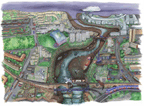
Imaginative Connections
Mudlarking is a reimagining of the traditional guided tour which empowers young people to engage creatively with their built environment. It involves users as co-designers, producing a tour by making use of mobile technologies to both initiate and respond to a scattering of located nodes in and around Deptford Creek. Key Stage 3 students will walk usually inaccessible and fenced off areas of Deptford, making imaginative connections between large and small scale relics that connect histories and stories embedded in the creek itself. Read Mapping Boundaries: Reading Everyday Urban Texts and Users as Architects: Thinking Big/Reading Small by Juliet Sprake.
Mudlarking in Deptford explores how associative histories, stories and visions of Deptford Creek can be woven into a guided tour of the area – one in which the participant actually produces the tour. The site itself provides a rich, immersive stimulus for pervasive technologies to seamlessly engage young learners in creatively responding to a real and live local environment. In giving students opportunities to exploit the well-known form of the guided tour, they can actively explore relations between process and outcome in a project where process is the outcome.
Posted by jo at 06:33 PM | Comments (0)
February 01, 2005
Geodetic Landlines

Dynamic Multi-User GPS Drawing Tool for Participatory Exhibitions
Geodetic Landlines--by Jen Southern, Jen Hamilton and Jon Wetherall--is an on-line multi-user collaborative drawing tool for GPS enabled mobile phones, in which users draw by moving in real space. For use in exhibitions in which the audience participates and contributes to the evolving installation, and for collaborative spatial practices between distant locations. It is both a creative and an exhibition tool for multi-user art in which the artist collaborates with a wider social group, addressing some of the problematics of working with process based social practice.
The phone application connects with a separate Bluetooth GPS device and draws a line representing this data to the phone screen, during a journey. This information is then dynamically relayed to a server via WAP. Information can also be requested from the server by a phone using the system. If the user accesses live information from a different city or country they can make collaborative drawings or navigate via the routes and decisions made by a distant audience, allowing them to see their city a new, and be connected to the spatial experience of another place and another individual.
These collaborative gps drawings will be viewed live on a website, or projected into a gallery space, where user choice or live xml feeds of weather, current events or pollution data can be used to modify line colour, thickness and opacity.
Posted by jo at 11:59 AM | Comments (0)
January 31, 2005
GPS::Tron

Classic Tron, Distributed
GPS::Tron, by Thomas Winkler, combines GPS, Bluetooth and GMS or GPRS with the classic Tron game concept--mobile phone plus computer game.
The players' movements in real space, which are tracked by GPS and transmitted to the phone's display, influence his/her position in the game. Each player is represented by a line that gets longer and longer. But the player's own line is never allowed to cross itself or the opponent's line. Which makes the game harder as time passes. The goal is to drive your opponent into a corner so that he can no longer extend his line without breaking the rules and losing. This is a game for two players who can be geographically distant from one another. [posted by Regine on near near future]
Posted by jo at 10:31 AM | Comments (0)
January 27, 2005
Mobile Metropolitan Ad hoc Networks

How to Recognize The Future When It Lands On You, Wireless Quilts
"The MobileMAN Project is a technological european research project that is part of the Framework Programme 5 - and more precisely of the Information Society Technologies group of activities. It aims at developing a communication network that is mobile and ad hoc - that is, which is entirely made of users' devices. In such network, users devices are not only the "clients", but they also act as "servers" and "routers". To summarize, they consume but also provide services. Collaboration places a key role in the system to work.
Claudia writes that there is a dedicated wiki on it and she would like to ask to come by, have a look and post some ideas, comments, suggestions, critics, whatever on this wiki." [blogged by Gerrit Visser smartmobs]
Posted by jo at 01:01 PM | Comments (0)
A Generation Lost in its Personal Space

Technology Faulted
After listening to Anne Galloway's marvelous lecture at Emerson College last night, this post by Jason Kottke seems particularly apt this morning:
"John Naughton writes in the Guardian about the loss of public social interaction. He places a lot of the blame on technology:
It's not clear when all of this changed, but my guess is that technology - in the shape of the Sony Walkman - had a lot to do with it. As the Walkman de nos jours, the iPod is simply continuing what Sony started. But not even Sony could have single-handedly destroyed the notion of social space. The coup de grce [sic] was administered by another piece of technology: the mobile phone.
Living in NYC, I'm well-positioned to observe the effect that mobile phones and iPods have on public interaction, but I would guess that the main factor in people not talking to each other on the street as much as they used to (in America at least) is cultural rather than technological. People move more often these days so they get to know less people in their neighborhoods. The decreasing costs of travel have filled urban streets with non-locals. "Don't talk to strangers" is the prevailing attitude; we teach our children that strangers are to be feared. Living in the suburbs and heavy automobile usage have made Americans unaccustomed to casual conversation with strangers...we're out of practice. Life moves a lot faster than it used to as well. We don't have time for casual conversations with strangers anymore; our time is reserved for working, sleeping, interacting with people we already know (family, co-workers, friends, the gang at the bar), and getting to and from places where we do those things as quickly as possible.
The mobile phone, Sony Walkman, and iPod fit comfortably into that type of culture, but I don't think they're driving it. If any technology is to blame, I'd choose the automobile, the suburb, and the television over the three Naughton mentions."
Posted by jo at 10:51 AM | Comments (0)
January 25, 2005
GoingPublik
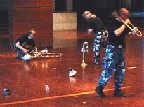
Mobile Multimedia as Mixed Reality
GoingPublik is a sound art work for distributive ensemble and mobile score synthesis. The core idea behind the work is a strategy of mobility by employing a wearable computer system running a software based electronic scoring system. GoingPublik will be performed at Interactive Futures 05 on February 5 from 9:30-10:30 pm. Art Clay will present a lecture "GoingPublik: Mobile Multimedia as Mixed Reality" from 2:30-3:30 PM.
"The core idea in the project is a strategy of mobility and this is accomplished employing a wearable computer system running the software based electronic scoring system as its central element. The program itself basically allows for what might be termed 'composed improvisation' which permits improvisational elements within a compositional structure. This is accomplished by electronically monitoring the performer's physical behaviour during performance. The program then responds by making suggestions to and even demands on the performer to various degrees and at various times.
Since each of the performers is equipped with the same electronic scoring system and because the system revolves around universally shared inputs such as geographical positions obtained via satellites and sensors using the earth's magnetic field, all have a common denominator and are thereby virtually linked. Despite the physical distribution of the performers in space, it is possible to have a commonly shared compositional palette and, at moments of close proximity between performers, to obtain instantaneous synchronized sonic elements. Both aspects needed for creating sonic structure within the work." Read paper >>
Composition Camouflaged: On the Relationship between Interpretation and Improvisation; Interview with Roland Dahinden, Günter Heinz & Thierry Madiot on the World Premiere of GoingPublik by Franziska Martinsen
Posted by jo at 10:05 AM | Comments (0)
Floating Points 2

Networked Art in Public Spaces
"I'm heading to Boston later today because I've been generously invited to present tomorrow night's introductory lecture for the Floating Points 2 speaker series on networked art in public spaces at Emerson College. Here is my presentation abstract, and for those who can't make it in person - it's free and open to the public - my talk will be streamed live at 7pm EST.
PLAYFUL MOBILITIES: Mobile phone usage is already commonplace for many people around the world, and other wireless technologies promise to become just as pervasive in coming decades. As technological development continues apace, scholars and artists have begun in earnest to explore the social and cultural implications of our emerging devices. Mobile and networked computing has the potential to cultivate new opportunities for personal autonomy and collective action, as well as to re-inscribe existing social inequalities and discourage cultural diversity. Bringing together theory, art and technology to critique - and create – these shared spaces is nothing new, but it takes on increasing value and importance as we struggle to negotiate between private and public interests in our technologically saturated daily lives. This presentation will consider what is at stake in these relationships, and what play and creativity can offer in terms of critical approaches to mobility." [via Anne Galloway]
Posted by jo at 09:33 AM | Comments (0)
January 20, 2005
Tele-tap

Transparent Borders
"Where are the borders between public and private? Between art and life? Between urbanity and individual? - The project Tele-tap by the Amsterdam women artist group CUT-n-PASTE connected its listeners with a number of personalities active in Amsterdam's nightlife: a member of the Salvation Army, a harbour worker, a musician, a woman strolling through the pubs. Each of these personalities went into his urban environment, in his auditory-communicative hunting ground, lived there his life, played his role, provoked encounters. This was transmitted live by the permanent open mike of their mobile phones. Each of them could be wiretapped by the audience via radio, Internet or at the performance venue. Tele-tap showed how undefinable the borders can become between intimate and public space in a mobile communicating society. The technical »heart« of the project is the Internet, where the mobile phone sound inputs were converted into live audio streams and were audible all over the world. These streams also went on air as radio signals, and were accessible by headphones and loudspeakers at the performance venue itsself. The last time Tele-tap was live aired and live performed was on August 31 and September 1, 2001 on the Dutch radio channel VPRO and at »De Balie«, an Amsterdam cultural center. New technologically and dramaturgically extended versions of the project are in preparation. [via AudioHyperspace]
Posted by jo at 03:19 PM | Comments (0)
January 19, 2005
Transfers
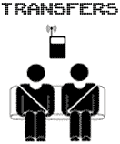
GPS+Video/Audio+You=Mobile Art
Transfers--by Matt Roberts--is a project exploring real-time generation of art and user participation in a mobile environment. Transfers allows a passenger of a taxi to generate a unique piece of art by giving the taxi driver directions. As the taxi moves through the city the passenger experiences a real-time manipulation of live exterior video and audio taken from a camera and microphone mounted in the taxi. The taxi is also equipped with a GPS that feeds an onboard computer data such as speed and direction. This computer is running custom audio/video manipulation software and uses GPS data to make decisions about how the live video/audio feed is manipulated and seen by the passenger. The manipulations of the live feed is displayed on two LCD screens and heard through the cars stereo system. As the user tells the driver where to go the passenger becomes both performer and viewer as they experience a unique piece of art generated by their decisions. The software also records this performance and at the end of the drive the passenger receives a CD with a QuickTime movie file of his or her recorded performance. [via Rhizome] Related >>
Posted by jo at 02:56 PM | Comments (0)
F2T (Free to Talk?)

SMS Rapper Slang
F2T is an interactive musical installation about "argot" and its different contemporary applications. F2T, a creation by artists Frank Plant (United States) and Thomas Charveriat (France), combines sculpture, robotics, hip hop, and SMS messaging to explore the ways technology shapes the development of language, particularly new forms of slang. Viewers interact directly with the artwork by sending it a short text message from their mobile. Once received, the SMS is scanned for frequently used words and, when a match is found, the four elements are activated. The main piece, "Rapper" begins to twist and wave his hand while mouthing a rap based on the message sent, the new lyrics culled from more than 130 different hip hop phrases written by Amsterdam-based lyricist and composer Jim Barnard. The rest of the piece is simultaneously set into motion: "Boom Box" starts flashing and blasting out the song while "Joy Ride" a bouncing low-rider, and "Shake Ass" (looks like it sounds) begins to move, triggered by ambient sound sensors. When the song is finished, a thermal printer spits out a souvenir with the original SMS and the words of the "Rapper." (via Rhizome)
Posted by jo at 02:50 PM | Comments (0)
Fictional Space
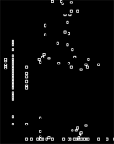
Mapping and the need for Creative Intervention
"Lately I've (Pall Thayer) been toying around with the idea of using *precision, digital locative* media to create fictional space. I've found that bluetooth mapping is better for this than GPS because bluetooth is just one dimensional so to map out a two dimensional space there has to be some *creative intervention*, if you will. This mapping was done by logging bluetooth proximity readings for approximately one hour. The first half hour is used for the x axis and the second half hour is used for the y axis. It's running at 4 times the real speed so you don't have to actually stare at it for half an hour to see the whole thing."
Posted by jo at 12:19 PM | Comments (0)
Location is Everything

Rhizome.org ArtBase Exhibition
Location is Everything--curated by Jillian Mcdonald--explores ways in which artists repurpose mapping as a creative medium; or perhaps it reframes mapping as a procedure that is intrinsically creative. The cartographic forms in these projects are drawn according to, as Mcdonald explains, personal or collective experiences, some informed by external factors like weather data or pop-culture references, and some allowing the map itself or local residents to inform them. These reciprocal actions of forming and informing effect both maps and their makers, suggesting that who? and why? are equally important questions to pose when interpreting a map as simply where?.
Works included in this exhibition are "PdPa" (2003) by Julian Bleecker, Scott Paterson and Marina Zurkow, "[murmur]" (2003) by Shawn Micallef, "Louisiana Walk #14" (1996) by Janet Cardiff, "Atmospherics/Weather Works" (2003) by Andrea Polli, "GPS Drawing" (2000) by Jeremy Wood, "Hlemmur in C" (2004) by Pall Thayer, "Survey Field" (2003) by Germaine Koh, and "Infrasonic Soundscape" (2001) by Hidekazu Minami.
Posted by jo at 12:03 PM | Comments (0)
January 18, 2005
Tap
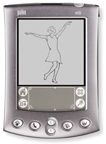
A Metaphor for Networked Communication
Tap--by James Buckhouse in collaboration with Holly Brubach--is a virtual dance school for animated characters that exist on the Internet and can be downloaded to individual users’ Personal Digital Assistants (PDAs) and desktops. Users can choose animated dancers (a male or female) at the Tap website. The dancer takes on a life of its own, practicing, learning from other dancers, and giving recitals. Users do not have to be present during the lessons--the animated characters can be "dropped off" and left to practice for an unlimited time. Dancers can practice at home, as a screen saver on the user's desktop. Their learned routines can be performed for other users.
These performances take place on individual users' PDAs. Dances are downloaded from users' desktops or beaming stations to their PDAs, where they can be performed as well as "beamed" to other PDA users. The dance contains a record of what it took to learn a particular routine. Individual steps from a dance can be incorporated into new dances, and users can encourage their character to continue working with certain moves. Also, two users can let their characters teach each other to dance.
Tap treats digital data not as perfectly reproducible packets of information, but as seeds for new ideas that spread and evolve. As an artwork that relies on exchange, learning processes, and community, Tap becomes a metaphor of networked communication itself. As digital data, tap dance is modular and re-mixable. The similarities between data and the dance routines point to the question of how we think about art through the cultural filter of technology.
Posted by jo at 06:15 AM | Comments (0)
January 13, 2005
Mogi
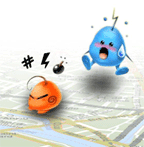
Location-Based Gaming
"Real and virtual have finally met in fun - reporting on Mogi, the brilliant location-based online multiplayer experience in Tokyo. Now phone networks are faster and more mobile devices know where they are, permitting a second generation of location-based multiplayer games. Undoubtedly the leading second-generation mobile phone game is Mogi: Mogi uses both the position of players in the landscape, and the landscape itself to generate play...Mogi is a collecting game - "item hunt". The game provides a data-layer over the city of Tokyo. As you move through the city, if you check a map on your mobile phone screen, you'll see nearby items you can pick up and nearby players you can meet or trade with." From Mogi: Second Generation Location-Based Gaming by Justin Hall, theFeature, April 1, 2004.
Posted by jo at 08:11 AM | Comments (0)
Surface Patterns: Walking Tours
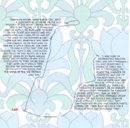
10 People. 10 Walks. 10 Stories Told.
Walking Tours and Audio Tours are two new works by artist Jen Southern commissioned by centrifugalforces and the media centre for Surface Patterns. Both works use a Global Positioning System (GPS) device to explore how memory is linked to urban and domestic places. The GPS device can only describe latitude, longitude and altitude: however, when used to trace the route that someone walks through a place, it can reveal the pattern of the path taken, allowing us to share knowledge of hidden locations and unexpected vantage points along the path.
Traditional maps tell us where landmarks are, what streets are called and where to find the centre of town, whereas the subjective histories and stories explored in this work are played out over time and rely on very different 'memory maps'.
The installation Audio Tours at the media centre uses contributions of unwanted wallpaper, pasted on the gallery wall and threaded or punctuated with GPS patterns of 10 walks. Traces of audio recordings made in conversation with the walkers are manipulated and played back in the gallery, recalling the simple flipping, mirroring and inverting techniques employed in the patterns of the wallpaper. Reflecting different perspectives on the town, the walkers include members of the artists family who grew up in Huddersfield in the 1940s and 50s, as well as a previous Artist in Residence at the Digital Research Unit in The Media Centre who lived in the town for three months. Memories range from the last Sex Pistols gig to architectural history (both public and domestic) and personal freedoms of walking in urban space.
Walking Tours consists of 10 PDFs to download and print, each using a wallpaper pattern, a walked route, and a story about Huddersfield.
Jen Southern is an artist who lives and works in Huddersfield. Her process-based practice investigates everyday journeys between virtual and physical spaces, using socially embedded technologies such as video games and mobile phones. She has been working with global positioning devices for the past two years; recent projects using GPS: Area Code (www.areacode.org.uk) with exhibitions at Magna, The Museum of Science and Industry and Artranspennine 03. Jen's work has been exhibited nationally and internationally in public spaces galleries and festivals.
Posted by jo at 07:53 AM | Comments (0)
January 03, 2005
Portable Cellular Phone Booth
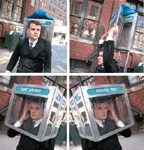
Sacrificed Interaction
"The Portable Cellular Phone Booth provides a visual image of social sacrifices and opportunities to interact with one another lost due to our own self -involvement. The sculpture is a retractable phone booth that is carried on your back and can slide up and over your head to completely isolate you from society, kind of like the way a cell phone does. The action is fast and slick just like the flip action of a cell phone.
Historically the iconic phone booth represented a place where one could go to be alone for a private conversation, transform into superman or travel through time. Today, it's obsolete in most cities. With the Portable Cellular Phone Booth, one can transform from a member of society to one that is closed off.
By delivering my sculpture to an unsuspecting public, anyone who notices the piece receives a myriad of messages from self deprecating humor to the neglecting of friendship in real time for the hope of something better." --Nick Rodrigues, from an interview on Sensory Impact. [via textually.org]
Posted by jo at 11:30 AM | Comments (0)
LUCY ORTA

The Staging of a Social Bond
LUCY ORTA born in Great Britain 1966, studio based in Paris. Lucy Orta's Refuge Wear, was first noticed in the early 90's. These objects resembled temporary mobile architectures which transformed into poetic items of clothing, sleeping bags, first aid units, for nomadic populations. Her Collective Wear sculptures in the form of tent domes with protruding appendages, exhibited in the Modern Art museum in Paris in 1994 were placed into urban contexts for a series of interventions in housing estates, subway stations... and later developed into a human chain, Nexus Architecture which has since become the emblem of her work and has been presented in site specific performances such as the Venice Biennale in 1995, Johannesburg Biennale 1997, Museum of Contemporary Art Sydney 1998, Bolivia, Berlin, New York, Mexico City.
She encourgages in an active participation from very diverse members of the community by organising workshop "Actions" and her projects both in the museum space and within the community question the role of art as a agent for participation and dialogue. Particulary pertinent are the public works Life Nexus Village Fête co-comissioned by the University of Central England for the exhibition "In the Midst of Things" in Bournville 1999 and the Art Gallery of Western Australia 2000. Recent public works such as "Hortireycycling Enterprise" exhibited at the Secession in 1999 and 70x7 The Meal introduce the theme of the meal as a ritual for public exchange and at the Kunstraum Innsbruck in January 2000, she proposed a 70 metre table service with a series of lunches for infinite number of guests to dine together for a moment of convivialty.
"The staging of a social bond is the common denominator linking Lucy Orta's different projects and perfectly reflects her transverse approach to poetic expression. Her Refuge Wear and Nexus Architecture interventions are effective tools in the struggle against exclusion and combine architecture, body art, street theatre, fashion, social therapy, formal poetry and ideological activism. The titles of her principal projects, which function both as social scenarios and art works, speak for themselves : Nexus Architecture, Refuge Wear, Modular Architecture, Commune Communicate, Citizen Platform... She has, since 1992, brilliantly addressed issues of relational aesthetics, her principal field of intervention being the personal space of the individual fighting for survival in adverse conditions." Pierre Restany [thanks pasta and vinegar]
Posted by jo at 10:52 AM | Comments (0)
Welcome To The Jungle
"Unitary Urbanism envisages the urban environment as the terrain of participatory games. We are thus able to envisage making use of the climatic conditions in which two major architectural civilizations arose -- in Cambodia and in southwest Mexico -- in order to construct moving cities in the jungle.
The new neighborhoods of such a city could be constructed increasingly toward the west (which would be gradually reclaimed as one goes along), while to the same extent the east would be abandoned to the overgrowth of topical vegetation, thereby creating, on its own, zones of gradual transition between the modern city and wild nature. This city, pursued by the forest, would offer unsurpassable zones of derive that would take shape behind it.
We are only at the beginning of urban civilization; it is up to us to bring it about ourselves. Digital Unitary Urbanism maintains an interest in technology as a means of evoking a new kind of urbanism characterized by the ability of individuals and social groups to appropriate and co-create urban space. Technological products and systems by no means have to be developed with pre-defined goals or use patterns in mind. DUU encourages ‘bottom-up’ technological manifestations in which individuals rather than institutions define content, use and structure."
Originally blogged on FishArePeopleToo. The Digital Unitary Urbanism presentation is here.
Posted by jo at 10:27 AM | Comments (0)
January 01, 2005
Go ahead, scream

Wearable body organs
ScreamBody is a "wearable body organ" by Kelly Dobson. The ScreamBody device permits wearers to indulge their impulse to scream, even in inappropriate places, by acting as a silencing vessel. The device also records your screams, and will play them back for you at a time that you determine.
This device cleverly exploits notions of appropriate behaviour and impulse. It is a whimsical device, providing a very specific purpose for public situations. It also comments on trends in device design, where some devices are incredibly specific (as ScreamBody is), contrasting with other devices that are meant to do everything except make your toast in the morning (such as some advanced PDAs), though they often are used for a singular feature that has the most relevant function. (Posted by Michelle Kasprzak)
Posted by at 04:09 PM | Comments (0)
December 31, 2004
The Analogous Landscape: Rim of Fire

Inferencing Techniques for Navigation of Terrains
Defining the nature of resemblance between things that are otherwise unlike is the focus of The Analogous Landscape project. In the tradition of monumental works by environmental artists Robert Smithson, James Terrill, Christo, Richard Long and the Harrison's, C5 intends to produce a large scale conceptual and performance artwork. The Analogous Landscape: Rim of Fire project integrates a sophisticated research agenda within the context of adventure sports, corporate culture and art. Beginning with the successful expeditions in 2003 to ascend Mt. Shasta and Mt. Whitney in California (the highest peak in the continental United States) C5 is planning research expeditions with the intent of climbing 20 volcanic mountains along the Pacific Rim of Fire. The environmental space of the Pacific Rim is a complex dynamic shaped by a context of economic globalization and post-modernization.
The objective of The Analogous Landscape: Rim of Fire project is to develop inferencing techniques for navigation of terrains of similar characteristic. At issue is whether navigation paths can be transposed by analogy on a selected terrain's other. To address this, initial expeditions will be analyzed to produce predictive navigation scenarios that can be imposed on the succession of expeditions. C5 intends to re-describe the landscape as a factor of expeditionary experience. Using GPS (Global Positioning Systems) technology C5 research teams will collect ascent path tracking data that will be computer modeled in three dimensions. Video and photographic documentation of the expeditions will be interactively linked to the tracking data (time and location data) through a unique computer interface design. Each mountain will be computer fabricated directly from space shuttle and satellite DEM (Digital Elevation Mapping). A singular model will be produced directly from a cumulative integration of the track logs. The final installation will include the above elements within an interactive display environment.
Posted by jo at 10:09 AM | Comments (1)
December 29, 2004
Questioning the Frame
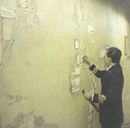
Thoughts about maps and spatial logic
"...Terms such as "mapping," "borders," "hacking," "trans-nationalism," "identity as spatial," and so on have been popularized in recent years by new media theories’ celebration of "the networks"—a catch-all phrase for the modes of communication and exchange facilitated by the Internet.
We should proceed with caution in using this terminology because it accords strategic primacy to space and simultaneously downplays time—i.e., history. It also evades categories of embodied difference such as race, gender and class, and in doing so prevents us from understanding how the historical development of those differences has shaped our contemporary worldview.
..." Read full article Questioning the Frame: Thoughts about maps and spatial logic in the global present by Coco Fusco, In These Times, December 16, 2004. Responses to the article culled from Locative and nettime:
Responses to the article culled from locative and nettime:
Date: Thu, 16 Dec 2004 22:26:27 +0000
From: Pall Thayer
Subject: [Locative] Questioning the Frame
To: locative@x-i.net
hmmm.... I just wish she would mention some of the mapping projects she's talking about. She really seems to have a narrow understanding of what artists are doing with locative media. She seems to suggest that one of the problems is that the artists have too much control over the social picture that the maps portray. And other artforms don't? I'm going to have to read this through a couple of times to make sure I really understand what she's saying but after a couple of scans it really looks rediculous and I almost get the feeling that she regrets not being a "hacker".
Pall
Ewen Chardronnet wrote:
well, she always comes with interesting art critics and post-colonial discourses, but use same dialectics each time. I remember reading same dialectics in her critics on "art and science" hipe and "critical art ensemble trial" hipe. And now the "locative media" hipe... You can be sure there will be a critic on "pervasive arts" and "space arts" soon, etc. and of course better if those arts are done by white male artists
E.
Date: Thu, 23 Dec 2004 17:08:14 +0100 (CET)
From: Brian HOLMES
Subject: [Locative] A Reply to Coco Fusco
As a critic it's important to read your peers, and try to assess the pertinence of your own work in the mirror of theirs. So I was curious to read Coco Fusco's recent article on mapping [www.inthesetimes.com/site/main/article/ questioning_the_frame]. However, I must say that her continuous assertions of cultural authority leave me feeling highly ambivalent. On the one hand, the threads of historical memory she brings up are extremely welcome. On the other, her unwillingness to engage with current conditions and projects tends to reduce the past to a complaint: Why isn't it the present anymore?
It's true that the raw fact of being older than the majority of the people in a given crowd can make you feel uncomfortably lucid. When I went to a conference on so-called "locative" or GPS-based media at the RIXC center in Latvia, I found most of the projects quite naive, developing a few stylistic traits of situationist psychogeography in the absence of any geopolitical critique of power relations, or any philosophical critique of instrumental rationality. In effect, a Cartesian worldview has been built into the computerized technology of graphic information systems, which are undergirded by megaprojects of military origin, or what I call "imperial infrastructure." But rather than just giving a disciplinary lecture with all the answers stated in general terms, I tried to show how changing conditions had made the once-subversive traditions of psychogeography quite superficial, to the point where the aesthetic forms the artists were using seemed to render the very infrastructure of their projects invisible. And when I recently published that paper out of context in Springerin, I took the time to name all the artists and projects in question, so as to establish the precise referents of the critique [springerin.at]. I wish Coco Fusco would make that kind of minimal effort, as it would bring her sharp observations into contact with actual projects, and open up a space of possible transformation.
More to the point: When I began my work on mapping, about four years ago now, as a direct result of involvement in demonstrations against the policies of the WTO and IMF, I too felt that the most important reference was the history of the Third World movements of national liberation, in their relations to the Western civil rights and new left movements of the 60s and 70s. In an early text that was finally published in the book Moneynations, I tried to show how the very concept of the Third World, and then above all, the reality of the Movement of Non-Aligned Nations, acted to open up new imaginary and real spaces within the dominant bi-polar map of the Cold War [http://2002.memefest.org/en/defaultnews.cfm?newsmem=15]. I asked the question whether the emergence of the World Social Forum in Porto Alegre could be compared to the Bandung Conference in 1955. Obviously, the answer was that it could not: both because the current antisystemic movements do not (yet) have the strength that Bandung represented, and because the operative modes of opposition may well have changed fundamentally since 1955.
The global importance of the Third World movements lay in the new kinds of international solidarity that they helped provoke. But something important remains unstated in Fusco's references to these movements, and this is the fact that the major links that tied them to the First World do not exist anymore (nor, indeed, do the movements themselves, for we are talking about specifically national movements in the period of decolonization). One of these links was an aspiration to create a non-Stalinist form of communism, according to the examples given by the successful Cuban and Vietnamese guerrilla insurgencies, and also by Yugoslav self-management (one must remember that the non-aligned movement came officially into existence in Belgrade). Another powerful link was the notion of cultural authenticity, or inherent difference from the Western norm, as a liberating foundation upon which newly independent nations could be built. This Third World concept served as a basis for the struggles toward a multicultural society in the First World. Today, however, the egalitarian aspiration to a self-managed communism has no objective touchstone in reality, leaving those who feel its lack in a deep state of ideological disarray. At the same time, the notion of cultural authenticity has been largely usurped by nationalist or fundamentalist projects which, although they have fortunately not eradicated all work towards equal rights in a multicultural society, have nonetheless made it very difficult to raise the banner of cultural or ethnic difference as a rallying-point for international solidarity.
Instead of relying on the old internationalist slogans (Third Worldist or proletarian), the transnational movements of dissent that gathered strength throughout the 1990s tried to use the communicative power of the discourses of human rights that had gained currency in the 80s, largely through the resistance of people in the former Eastern bloc to totalitarianism, and in Latin America to dictatorship. It was subsequently necessary, in the late 90s, for the Western participants in these transnational movements to take the further step of putting their own bodies on the line, of taking direct action against the international economic institutions, in order to go beyond the abstract character of the human rights discourse. This was a way of responding, in the overdeveloped countries, to the sacrifices of the many "IMF riots" that had been held, often at great cost of life, in what was now being called the Global South. Anyone who believes this step was taken by middle-class white kids acting on internet fantasies, in the absence of direct input from social movements around the world, quite obviously didn't go to any of the demonstrations and paid no attention to the planning process or the reports.
The point, however, is not to suggest that a brief flare-up of worldwide protest has brought about any substantial change. It is rather to recall what a difficult and long-term effort is really needed, both to grasp the way that transnational state capitalism now functions, and to articulate large-scale resistance. When Josh On [www.theyrule.net] or Bureau d'Etudes [http://utangente.free.fr/index2.html] make their complex charts of contemporary power relations, one can be assured that the cold and abstract character of the results is very painful to them. I can testify, particularly in the second case, that they are acutely aware of what is missing from such documents: namely, some affective indication of resistance from below, who does it, how they work and why. What has been achieved in such cartography projects, however, is a contribution to the very large-scale effort to rebuild a critical grasp of the oppressive forces that create the dominant map of the world. This kind of power-mapping is a necessary prelude to any effective resistance or counter-proposition. The fact that the difference between such efforts and the current military maps used by the Pentagon does not appear clearly on American TV is hardly something you can blame the artists for! There is a difference between general culture critique and constructive critique directed toward people carrying out specific projects.
Somewhat like Coco Fusco, I often wonder why contemporary artists appear so broadly unable to infuse the dominant map with representations of - or even better, direct links to - the many and diverse dissenting groups and alternative philosophies that are now emerging in the world, or that have remained active over decades. Unlike Coco Fusco, however, I don't think it's useful or necessary to berate artists today for not having been born earlier. The great philosophical frameworks of national liberation and egalitarian self-management that were able to articulate far-flung resistance movements in the past are inoperative in our time. The urgency is for real individuals of all generations, on all continents, to put their heads and hearts together and create new articulations. The specific job of writers and organizers is then to give those articulations conceptual clarity and popular currency, so that they can effectively challenge the absurd world-views presented on American TV.
As to artists, for whom the naked power structures of the contemporary world must now be quite visible, I encourage them to delve more deeply into the diverse efforts that are being made to resist the imposition of a homogeneous control structure on the entire world. This requires looking outside the boundaries of class, ethnicity and nationality, as certain artists and intellectuals of previous generations effectively did. To live up to the great examples of the past then means imagining something quite different for the future. Need it be said that certain kinds of imagination can serve as the first steps towards a transformation of reality?
Date: Fri, 24 Dec 2004 04:13:32 +0000
From: Saul Albert
Subject: Re: [Locative] A Reply to Coco Fusco
To: Brian Holmes
Hi Brian,
I read both Coco Fusco's piece and your response with interest and a little bemusement. You addressed the lazy generality of CF's rant very well, and touched on a couple of things that provoked me to write back:
Firstly, can we please get away from technological determinism?
Yes, the use of military-industrial technology can be problematic, but that criticism in your text is as widely and as targetlessly applied as Coco Fusco's. Many people are using these technologies (GPS/mobile phones/internet/high-tech gizmos), the social movements that you use as your reference points as much as anyone. In fact, it's not like we really have the choice about using these technologies , being subjects in a technocracy... and it's only out of the appropriation and reuse of these technologies that critique can form and attempt to reconfigure the social and political relations that produced them in the first place. Even on a non-technical level, using these technologies and observing their effects and deployment has been instrumental in the development of a number of political discourses: information and affective labour, precarity, [cyber]feminism etc. The critique develops as much from practice as practice develops from critique.
example: London Free Map - http://uo.space.frot.org/?node=LondonFreeMap
http://chinabone.lth.bclub.org.uk/albums/misc/london_free_map.sized.jpg
Jo Walsh and Schulyer Erle have been working on the 'London Free Map' This project encourages participants to walk, drive, cycle or skate through city streets with GPS units and then use the 'traces' of points representing latitude and longitude that these devices generate to help create publicly licensed geodata. They are also working on adapting existing open source software to enable people to annotate and extend these maps in a very flexible way. The example linked to above shows straight lines representing GPS traces made wandering the streets of Limehouse, East London, an area undergoing a huge urban regeneration process in preparation for the proposed Olympic games in 2012. The labeled points are the locations and names of approved planning permission applications made to the London Borough of Tower Hamlets in the last five years, automatically retrieved from the council's website and plotted onto a scanned out-of- copyright historical map of the area from 1916. This is just one potential use of the London Free Map, a way of visualising physical and historical changes to a space undergoing a huge social and economic upheaval. The potential for further uses and the development of new, as yet unimagined maps from this project seems evident.
Secondly, I found the distinction between these technologically specific, less overtly political projects, and the 'power-mapping' practices of (the wonderful) Bureau D'Etudes and many many others to be a bit thin. I know you share their frustration at having to use the language of power to map power, but the problem is not just in the inability of this form to represent the fertile heterogeneity of the social movements. 'Power mapping' deals in the currency of power, and its representational structure can reinforce the dynamics of the relationships it represents. More worryingly, the unnerving coherence of these representations can also become ised easily - the currency of power made visual, or (worse) 'data visualisation' knits neatly into artistic and authorial currencies and relationships that can become as reactionary and totalising as the military-industrial technologies you were warning against earlier.
I know you know this, your descriptions of the playfulness of the Bureau's maps illustrates the path they choose out of this bind : 'solidarity with aliens'. But people using similar or derivative techniques seem to embrace the solemnity and darkness of their maps without having the escape pod provided by their humour.
What encourages me about initiatives like the London Free Map and many of the projects in the orbit of the 'locative media lab' is that they often work, on a very basic level, to avoid totalising representations. To some extent this is emerging as an informal agreement on technologies, open Semantic Web standards and other esoterica that I'm not really equipped to explain. Also, many of these projects are based on public workshops, working with people and groups on producing representations of themselves, spaces, movement and relationships. Of course none of this is inherantly interesting. Public workshops and 'open' technologies carry their own wealth of dead ends, vices and travesties, but they certainly are politicised - and politicising, in a very different and more subtle sense than that of 'power maps'. The contingency on input from the map-users is the most obvious distinction between these forms of mapping and the two examples of 'power mapping' you mentioned. Of course this aspect of 'participation' in the making of the map is just as worrying in terms of which currencies it evokes, auteurship and the 'framing' of 'public use' in the interests of pseudo-ehthographic artistic value creation etc. etc.. But the locative media lab's engagement with corporations, the way some of it is like cheap corporate R&D in exchange for getting to use fancy devices, the links with 'community groups' funded and instrumentised by arts bodies, and with governments for use of geodata is all messy, difficult, and suspect, but necessary if the technology, and the discourse are going to develop.
This probably warrants more examples, which I'm too tired to start with now.
I guess the problem is that criticising something is difficult because you have to explain why, whereas blithering pleasantries about things you like is not so demanding.
keep up the good work brian!
X
Saul.
Date: Sun, 26 Dec 2004 23:48:54 -0800
From: John Hopkins
Subject: Re: [Locative] A Reply to Coco Fusco
To: locative@x-i.net
>>Firstly, can we please get away from technological determinism? Yes, the use of military-industrial technology can be problematic, but that criticism in your text is as widely and as targetlessly applied as Coco Fusco's. Many people are using these technologies (GPS/mobile phones/internet/high-tech gizmos), the social movements that you use as your reference points as much as anyone. In fact, it's not like we really have the choice about using these technologies , being subjects in a technocracy... and<<
Why no choice? If no choice, isn't that technological determinism to the extreme degree?
It is an incremental process -- each mile you drive onwards in your fossil-fuel burning device, or crank open the thermostat in the house, that drives the social system further onward in its dominance. (it propels the US military machine a bit further in its desparate mission to secure the true power/energy-base of the social structure that is is an integral part of). each time you don't do those things de-poweres that same system.
each time you watch one minute of centrally organized media you give that structure more power. each time you cross social-structural boundaries and engage an Other human directly, you depower those ordained structures.
hmmm.
JH
Date: Mon, 27 Dec 2004 11:32:20 -0000
From: "Armin Medosch"
Subject: Re: [Locative] A Reply to Coco Fusco
Hi Saul, Hi Brian,
let me first make some sort of disclaimer: I am happy that Coco's article (which I have not read, but can roughly imagine what it contains) triggered this discussion about locative media which was long overdue. I think many people have felt uncomfortable with the unarticulated political 'content' or 'meaning' of locative work but have not spoken in public. One reason for that might be that they felt, as I did, that there is a lot of potential in that field and that the (mostly young) people involved did not deserve to be bashed for all their good intentions, even though those intentions sometimes gave relatively weak results. Finally the lid has been blown off and that is a good thing. I now do neither want to argue for or against Saul or Brian but just throw in my two-pence. I also have to say that writing something really meaningful about that whole area would take at least a day and I simply don't have that time right now. So please excuse the immaturity of my words which are quickly written in a sort of email improvisation which I guess was once the spirit of internet discussions which is now often sadly missed.
Saul said at the very beginning of his reply:
>> Firstly, can we please get away from technological determinism?
What does this statement mean? It is indeed important to 'get away from technological determinism'. But what this statement should not mean is that we should not consider or discuss technological determinism.
Saul continues:
>> Yes, the use of military-industrial technology can be problematic,
I would go further and say that 'can be problematic' is not strong enough. It _is_ problematic, always. The instrumental power that is contained in those technologies is a central issue of our time, and by 'our time' i do not only refer to the last couple of years or so but to the last 50 or even 100 years. Therefore I think such statements about technological determinism and military-industrial technology should not be used to quash any discussion about those issues. Those issues should exactly be the starting point of any discussion about 'locative' projects and indeed media art and net art projects. This is where the media art community has failed over the last 20 years which I was able to witness as a grown up person. It is one of the big failures of that community and possibly one of the reasons why it made so little real progress over that period of time. When I say 'real progress' I of course don't mean technological progress, of which we have seen plenty, but a progress in the social use of those technologies, in their accessability and applicability, in their ability to have an actual impact on the improvements of the situation of people.
I am arguing from a point of view of art that is based on a definition of art whose main reason to be is political. Such an art should be able to transcend the current power system. By 'transcending' i don't refer to metaphysics but to the actual socio-historic situation. In this situation and its projection of possible futures it should open up spaces, spaces for alternative ways of thinking, spaces that offer people different opportunities, for instance to realise alternative viewpoints outside the dominant system, or, more practically speaking, to be able to develop ways of resistance and at least limited ways of autonomy. Of course we cannot ask too much from art and the current level of oppression is so high, the ideology of technological determinism so deeply entrenched that it has become very hard to imagine anything that makes a real difference. But at least people should try. I am afraid I could not see that in most locative projects and in most of the discussions that have been had about the topic so far.
Most of the projects (I am aware that such generalisations without reference to particular projects are always lame but simply have not the time to go through bookmarks and list archives now) simply continue the master trope of the narration of hypermodernity, which is about expansion of technological mastery, coupled with economic growth, all under the banner of 'usefulness' for the people. This is how new communication technologies are being advertised. The mobile phone gives you freedom, it improves your social life, you can use it to form Rheingoldian Smart Mobs and if you put a little FOAF into it you can even realise alternative politicised virtual communities with it. Of course you can do all this stuff, it is even true. But by doing so, you are not leaving the established playing field, a field that has been established by the forces of techno-rationality in the service of capitalism.
I know it is a bit unfair to mention that here but the most significant 'locative' projects in that regard are Blast Theorie's mobile games. The critical content of those projects is nil. The whole thing blew up at futuresonica last year but most people could not read the signs on the wall. Of course their projects are resourceful, maybe well programmed, maybe even entertaining. But they are fundamentally affirmative of the world we live in and completely one-dimensional.
Now, to come back to the core question: it is simply wrong to ask if we are allowed to use military-industrial technologies. of course we should use them (and I do that by simply typing an email) but if we do it matters how we do that. do we contribute to the disguise of the political content of those technologies and thereby continue the positivistic narration of expansion and 'usefulness'? or do we use them to expose that which is always subconsciously present, that in this system, as Herbert Marcuse said 40 years ago, power is transferred into technological systems and that our dependency on those system makes us to their reified subjects? It is a general trait of this society that the powers that be try to cordon off the political. The positive side of things (technological things, gadgets, gps, pda's) gets highlighted but not what comes with it, not this hard to pin down element of power that has become nameless and faceless because
it has been inscribed in, is contained in the technological system.
Now, coming back to locative per se, I think Brian is right to say: "In effect, a Cartesian worldview has been built into the computerized technology of graphic information systems, which are undergirded by megaprojects of military origin, or what I call "imperial infrastructure."
Maybe he ment to say Geographical Information Systems (GIS). GIS combined with GPS and so forth truly signify the victory of Cartesian space over real space. Of course this victory is only a fake victory and never a final victory but it defines the current state of the arts in 'mapping'. Is it therefore forbidden for artists to use GIS? Of course not. The project by Jo Walsh and Schulyer Erle that Saul mentions, 'London Free Map' is a very good example. It is maybe not an art project but that does not matter. It tries to democratize GIS power, democratize in the sense of direct bottom up democracy and not fake vote rigging mind manipulating democracy (oh, that word, can someone suggest a better one?). It is experimental and utopian, it relies a lot on FLOSS and is probably difficult to use for people who are not tech-savvy, but that does not really matter at this point; it does not entertain in the way Blast-ed projects try to but that is effectively its strength. It involves fun, but of a different kind. We need more projects of this kind and we need a discourse that is better able to differentiate between projects that open up those other spaces and projects which simply fall into the technological deterministic trap.
I hope we can begin conversations that are critical and constructive and not about our personality disorders of which we all suffer to a certain degree, necessarily, because they are a function of that system we are subjected to. In this sense I agree that a lot of the 'psychogeography post-situationist' talk sounds naive. But at least it shows a desire to get away from Cartesian space and to reconceptualize the highly regulated spaces we live in. It makes a lot of sense to link FLOSS, art and the history and presence of liberation struggles, but that debate needs updates and rejigging too.
Hoping to be able to talk about those issues in a more elaborate way soon and also hoping to hear from other people now
regards
armin
Date: Tue, 28 Dec 2004 02:21:22 -0800
From: karlis
Subject: [Locative] Don't be shy
To: locative@x-i.net
...Executive Summary:
While studying locative media projects, a computer user realizes the value in talking to people.
Extended Commentary:
A romance of the aesthetic of the internet. Be somewhere, anywhere, it doesn't matter, "jack in" to the internet, and you're home, with your office and your contacts and connections. The presently inhabited city, be it Riga, Ljubljana, or Vancouver, is like wallpaper or decor in a restaurant. The principal interaction with the world is through the internet, and the information available there, the rest is somehow peripheral. So naturally when we approached the ability to make computing mobile and location aware, there seemed to be an answer of integration; finally the drift and nomadism would be informed and fulfulled with the power and potential of the network computer. All your revolutionary fantasies come true. Except the devices are retarded and complicated and expensive; they don't work properly, and they make you into a Steve Mann cyborg, someone more appopriately dressed for a mid 1990's DefCon hacker fair in Las Vegas than any part of life in public.
We tried to simplify the gear and determine what it was supposed to do, which was connect us to the network, make us contextually aware within that network, and informationally aware within that spatial context. The equipment had to be "naturally human", so that it is still possible to interact with the environment and the local culture without handicap.
No cyborg head displays or cybergloves, or star-trek tricorders. It also has to be inexpensive and uncomplicated and break-proof.
A beautiful natural language interface was developed (using selective evolutionary algorithms, no less). Billions of client terminals connected to a global information network have been deployed, planet-wide, that use this natural language interface.
They're called people.
Sitting behind my computer and obsessed with the internet for ten years, I totally missed the obvious connection that local people are connections to the whole network, the network of all information connections which includes the internet but also "old Joe Smith" with whatever he's got to offer. It's the same reason why I haven't needed a watch since I was 15 - someone around me always knows the time. The connection to the network is not limited to a GPS satellite signal reciever and a 2.4GHz wireless internet supercomputer laptop. Rather it's just a link to the next node with different information that what you can access on your own. The easiest, most locative way to access that network is by talking to people, and if these studies are urban, there's going to be people. Forget WiFi and GPS. Ask for directions. Ask the nearest person, or if you're aesthetically driven, ask the nearest good-looking one. If they don't have the answer, they might know someone who does, or can suggest an alternative. If they don't speak your language, they'll likely direct you to someone who does.
Maybe that's should be obvious. But as a bedroom caveman computer hack, to look around and find that this perfect system has already been implemented is amazing. It's multi-modal with multiple redundancies. Ubiquitous. Reliable. All-weather. Fuckable.
Maybe an internet legacy of the military paradigm has poisoned our preconceptions about the reliability and desirability of technology vs people. But if we are nice and friendly and not locally despised imperial soldiers, we don't have to bring all our knowledge in a computer. We can talk to the nearest person.
When I was in an busy new space I formerly looked around and saw great potential for overlaying great collections of information and data or media texture in location, if we could develop the system to realize it.
Now I see that this network is already in place, mobile info nodes are walking all around, ready to be engaged, connected to vast networks of people and information. Standard APIs. It's amazing. Sometimes you have to ask a bunch of times, even before you realize the right question to be asking. But if the information is there, someone has it, and you can find it.
The mention of technological determinism and political action, brought up in the context of locative media, seemed to make this "amazing" revelation relevant again. It has been called a serious political action to find ways beyond the gap between people in the very technically-focused and alienated population. Techno-fetish locative media projects made me realize how important and powerful it is just talking to people.
OK!
cheers
karlis
Date: Wed, 29 Dec 2004 14:15:32 -0800 (PST)
From: coco fusco
Subject:
In response to Geert's request, below is my commentary that was published in IN THESE TIMES recently. The comments were based on my lecture at the School of the Art Institute of Chicago in November, 2004. The series is entitled:
MAPPING / CULTURE / BORDER / HACKING /
and the school's description of the series is:
"This lecture series examines the work of artists, artist-collaboratives, and film/video makers whose works address or proceed from shifts in articulations of global culture, politics of the border and dilemmas of transnational or diasporic identities--identity as a spatial concern. Special attention will be given to artists who use the gesture and organizational logic of mapping, cartographic sciences and the grid to locate identity as well as its displacements."
I found this description so baffling and overladen with jargon that it prompted my response.
I have not had a moment yet to respond to Holmes's post. I found it a bit surprising that he would locate a response to an article in a left-wing Chicago newspaper on a list-serve with a primarily European readership (of his allies, I would add). A decision to locate his response HERE as opposed to THERE seems more like a rallying cry to his nettime readership than an address the substance of my argument or to the public in Chicago, a city with a long and venerable history of community and labor organizing, activist media, and radical black politics.
Coco
Posted by jo at 10:19 AM | Comments (4)
Envisioning the ubiquitous city

Control, Misuse, and Subversion
"...The rapid convergence of mobile communications, automated positioning technologies, and geographic information systems (GIS) into "locative media" is raising the possibility of a dramatic transformation of the way we perceive and move about the urban environment, and how we interact with each other in urban spaces. Endless possibilities for locative media are being proposed that promise increased convenience, awareness, transparency, and access to information and social opportunities that break traditional power structures.
Simultaneously, at this moment of realization of the potential of locative media, there is an emerging sense of helplessness at the potential for control, misuse, and subversion of these technologies. Whether by states or anti-state organizations like al Qaeda, locative media extend the ability of the powerful and mobile over the weak and immobile. Cross-referenced information through geographic tagging adds many more dimensions to the problems already raised by unchecked, widespread linking of relational databases in industry and government..." Read entire post by Anthony Townsend [and The Auto and The Mobile by Howard Rheingold].
Also, see Townsend blogs Wireless Public Space and Telecommunications: New Media and Cities.
Posted by jo at 10:01 AM | Comments (0)
December 27, 2004
netzwissenschaft
![]()
Emerging Infrastructures of All (Inter)net Research
Dr. Reinhold Grether's network research | netzwissenschaft site maps the "emerging infrastructures of all (inter)net research endeavours. net.science as an anthropology of connectivity is trying to overcome the constraints of specialist method transfers on net matters. the protuberance of technical networks necessitates a professionalization of human net knowledge. neither the isolation of concepts as in basic research nor the encapsulation of processes as in applied sciences will ever be able to adequately describe the complex autopoiesis of networks. net.science is undoubtedly developing into a scienza nuova of its own right."
Check out his Mobile Art and Virtual Performance research areas.
Posted by jo at 04:45 PM | Comments (0)
December 24, 2004
Art Mobs

Creating a Meta-Dialogue
The Art Mobs project, created by Dr. David Gilbert and students from Marymount Manhattan College, allows users to share their art experiences using a mobile phone or iPod.
Using the text messaging features of mobile phones, users leave comments about works of art for others to read. With an iPod, users listen to guided tours of art exhibits created by anyone who has an opinion about the show. Users are also invited to make their own tours for others to listen to.
The project should be lauded for encouraging people to be more active when attending art events in galleries and museums. The Art Mobs project takes advantage of the widespread use of mobile phones and portable MP3 players, making them devices for distributing information and connecting gallery goers, which is a nice counterpoint to the frequently-posed argument that these devices are socially isolating.
Watch a demo video here. (Posted by Michelle Kasprzak)
Posted by at 12:17 PM | Comments (0)
December 22, 2004
Real Remote Guided
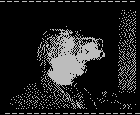
Controlled by web users
Real Remote Guided, by Antonio Lomas, features a subject who is "blinded" while the spectators / speakers on the internet and in the physical space, are able to see what the subject could see in normal circumstances.
GPS and web cam are combined with a laptop linked to the net through telecomunicaton systems (cellular telephony and/or wireless).
On the web page, the web guides see the images from the camera worn by the artist, as well as map images that define his location so that they can send him instructions, guiding him through a space of real intervention. The artist can only see the instructions sent by the users and the map images of the GPS system.
The idea is to represent, in a playful way, how new technological systems can take control. So, spectators are invited to take that control and to manage it. (Posted by Régine Debatty)
Posted by Regine at 03:01 AM | Comments (0)
December 19, 2004
Disembodied Voices
![dv1_clip[2].gif](http://www.turbulence.org/blog/images/dv1_clip[2].gif)
Irritating mobile phone conversations
"Disembodied Voices", by Santa Monica-based artist Jody Zellen, leads the viewer through a series of experiences exploring the global phenomenon of cell-phone conversations, those half public, disembodied conversations have become a ubiquitous irritant in our society.
Five dynamic animations fill the walls. Four of these animations are DVD projections that depict individuals moving through public spaces, unaware of their surroundings because they are intent on their cell-phone conversation. At the bottom of each projection are fragments of text that represent the monologue. The texts intersect physically as the viewer reads across them. The fifth projection is connected to a computer and contains the interactive component of the installation. Visitors to the space trigger a series of sounds by interacting with 'toy' cell-phones that hang from the ceiling. All the buttons on the phones are programmed to trigger an event on the wall. Using the 'toy' phones causes the icons on the wall to grow from their diminutive silent state to a larger brighter version with sound. The voices reflect the global nature of cell phone usage as the conversations take place in numerous languages: French, Spanish, Japanese, Indonesian, Cantonese, as well as English. When all ten phones are active the experience is a sound collage, a cacophony of overlapping icons and voices. (via rhizome) (Posted by Régine Debatty)
Posted by Regine at 02:34 AM | Comments (0)
December 18, 2004
The Living Room

A narrative installation puzzle
"The Living Room", by American artist Victoria Fang, is a narrative puzzle installation. Players enter a space containing 3 rolling units with screens in them and 21 clues painted on the floor. They have to move panels with LCD monitors to solve a whodunit murder mystery. Correctly positioning the units triggers filmed scenes that play back across the three separate panels, and these scenes give the player new clues to trigger the next scene. Players get a different spatialized experience with each scene, as the scenes are constantly changing position, thus working as a giant physical puzzle that houses a narrative puzzle.
This project is designed as an entertainment experience that focuses on the cathartic release of built-up emotional tension, through the use of mobile and wireless technology.
"The Living Room" has received a nomination for Transmediale award 2005.
(PDF of the project) (Posted by Régine Debatty)
Posted by Regine at 12:31 PM | Comments (0)
December 14, 2004
Where on-line meets on the streets:
experiences with mobile mixed reality games
"We describe two games in which online participants collaborated with mobile participants on the city streets. In the first, the players were online and professional performers were on the streets. The second reversed this relationship. Analysis of these experiences yields new insights into the nature of context. We show how context is more socially than technically constructed. We show how players exploited (and resolved conflicts between) multiple indications of context including GPS, GPS error, audio talk, ambient audio, timing, local knowledge and trust. We recommend not overly relying on GPS, extensively using audio, and extending interfaces to represent GPS error." From M.Flintham, R.Anastasi, S.Benford, T.Hummings, A.Crabtree, C.Greenhalgh, T.Rodden, N.Tandavanith, M.Adams, and J.Row-Farr (2003). Where on-line meets on the streets: experiences with mobile mixed reality games. In Proceedings of the conference on Human factors in computing systems, pages 569–576, Florida, USA. [via pasta and vinegar]
Posted by jo at 02:53 PM | Comments (0)
December 09, 2004
Summoned Voices
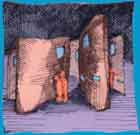
Interactionfields
Summoned Voices--by Iain Mott and Marc Raszewski--acts as a living memory of people and place. It consists of a series of door installations each with an intercom, sound system and a computer that is networked to a central file and database server. The design metaphor of the door presents a familiar scenario, that of announcing oneself at a doorway and waiting for a response from persons unknown. Signage instructs the public to speak, make sounds or sing into the intercom. Their voice is stored and interpreted, and results in local playback composed of the individual's voice with those that have gone before. Summoned Voices acts as an interpreter of sound, a message board and an imprint of a community - a place for expression, reflection and surprise.
Summoned Voices is one of the 22 projects catalogued by Mirjam Struppek for her thesis Interactionfield - Public Space in the Digital Age (2002): "The public space is a field, which is created and becomes alive through various forms of interaction.
Thus interactive art with its life proximity, communicative issues and reflection of the power of the modern technologies is well suited to be linked with the urban public space. This information platform presents detailed some selected interactive media projects, which went consciously into the urban public space. The analysis, categorization and questionaire with the producers of these 22 examples show how new media can be alternatively used, in order to contribute to the rediscovery and reactivation of the urban space and to lead to new interaction qualities. In the open expandable list further projects are collected. With the time an archive can develop, with examples, that show new ways in dealing with the public space. The links section presents various conferences, research projects, articles and specialized artists that related to this topic."
Posted by jo at 06:36 PM | Comments (0)
msdm
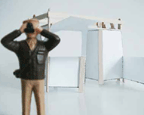
researching mobile strategies of display & mediation
msdm [mobile strategies of display & mediation] is an imaginary organisation founded in 1998 by paula roush to research mobile strategies of display & mediation. A hybrid of artistic, curatorial, experimental practice operating in the interstices of institutions and social systems, the organisation aims to propose participatory alliances for transversal, critical, cultural and aesthetic outputs. The collaborations have extended into the domains of open source software, publishing, para-architecture, public signage, radio streaming and mobile media platforms. They have been shown in galleries, museums, non governmental organisations and independent spaces, including Space Studios, Coleman Project Space, The South London Gallery, the Institute of International Visual Arts, the Bauhaus Foundation, Gesellschaft fur Aktuelle Kunst and the Living Art Museum.
Projects include:

geneticSilence: Public intervention and installation at the Living Art Museum in Reykjavik for the project Polyphony. A bus tour -the ’genetic noise tour’- was organised connecting the gallery with the street. The initial proposal was to have it to collect tourists in the city centre and take them on a tour of the high security genetic labs in the surroundings of Reykjavik. Because the right bus could not be found, the project took another shape and the tour was done in a small VW van, with the tech crew streaming the sound and images to the museum. The accompanying wall catalogue and public newspaper boards showed an archive of the links between art, genetics and architecture. The word ‘art’ -privatised by a genetics research company- was ‘corrected’ in the museum signage with the corresponding patent number.

bowville: bow wireless/ space studios/ london; locative media performance, 2004. Marion Manesta Forrester was electronically tagged. She had 3 days to earn her right to become a citizen of Bowville. People had to vote for her to stay or to go by phone, online or in person by visiting the Bowville Investigation Bureau. Download Bowville Booklet, 9 pages (pdf, 656k) or individual pages at higher resolution : page 1 | page 2 | page 3 | page 4 | page 5 | page 6 | page 7 | page 8 | page 9 |

SOS:OK: A work generated in response to Biscuit Town, the name given to the area surrounding Peek Freans biscuit factory. Biscuit Town was a marker in both organisational and representational forms of labour. It was the first mass producer of biscuits and commissioned the first documentary film shot on location (A Visit to Peek Freans, 1906, BFI Archive). At its core there is an artistic intervention that crosses a gallery installation with a public art intervention. The aim is to produce an emergency biscuit in response to the history of the site (Peek Freans was the first factory to manufacture an emergency biscuit ration to feed the starving population of Paris during the Franco-German war 1870-71) and the current international state of emergency. The launch and the time based performance at Coleman Project Space is inserted into a wider public campaign which includes billboards.
Posted by jo at 05:44 PM | Comments (0)
Are cell phones new media?

re-narrating cities via nomadic technologies
"Multiuser environments in cyberspace have frequently been regarded as utopian spaces in which users could project their imagination. When communities are shaped in a hybrid space, mobile phones become new media tools for creating novel and unpredictable imaginary spaces, re-narrating cities. Fixed Internet users do not have the ability to move through physical space. But the emergence of nomadic interfaces represents a chance for such imaginary spaces to be enacted and constructed in physical space.
Nomadic technologies have a twofold role in the construction of playful/narrative spaces. First, they allow virtual spaces to be mobile, bringing them into the physical world. Second, when used to play games, they free the game from the game board or the computer screen, making it possible to use the city space as the game domain." from Are cell phones new media? by Adriana de Souza e Silva [Related]
Posted by jo at 12:44 PM | Comments (0)
December 03, 2004
Interactive portrait of the Liberties

interactive narrative environment as navigable architectures
The Interactive portrait of the Liberties--by Valentina Nisi--is an interactive digital narrative application developed in conjunction with the Trinity College/MediaLabEurope CARMEN HCA founded project. The vision is to provide multimedia content to individuals and to groups, which is relevant to them at a particular point in time and space – in other words, context-aware. The delivery platform for multimedia application will be the WAND infrastructure: a collection of wirelessly connected nodes linking Media Lab Europe with Trinity College where content and services can be stored. The WAND infrastructure and the CARMEN middleware and software will allow stories, collected from local community members, to be distributed in the space and physically navigable taking literally the metaphor that describes interactive narrative environment as navigable architectures. Example.
The stories will be available to the users as they walk around. A database of many short self-contained stories is put together following the themes of locations, social networks within the community members and a family genealogic threes. Location, social network, user profile are some of the variables that come into play when talking about context aware stories. Depending on the changing variables many different combinations of the story elements can result from the viewer navigation of the area.
The stories have been researched and collected by making contact with local community members and through books with a strong emphasis on the social and folkloristic aspects of the area, such as Mairin Johnston book “Around the banks of Pimlico” and Leo Mhonogan not yet published photographic collection about the liberties. Some ethnographic interviews have been conducted during the summer that revealed a rich baggage of stories and traditions which make the liberties area an ideal location for this type of project.
Posted by jo at 12:21 PM
Augmented Space
"GPS, wireless location services, surveillance technologies, and other augmented space technologies all define data space – if not in practice than at least in their imagination - as a continuous field completely extending over and filling in all of physical space. Every point in space has a GPS coordinate which can be obtained using GPS receiver. Similarly, in the cellspace paradigm every point in physical space can be said to contain some information that can be retrieved using PDA or a similar device. With surveillance, while in practice video cameras, satellites, Echelon (the set of monitoring stations which are operated by the U.S. and are used to monitoring all kinds of electronic communications globally), and other technologies so far can only reach some regions and layers of data but not others, the ultimate goal of the modern surveillance paradigm is to able to observe every point at every time. To use the terms of Borges’s famous story, all these technologies want to make the map equal to the territory." From "The Poetics of Augmented Space: Learning from Prada" by Lev Manovich.
Posted by jo at 10:49 AM | Comments (0)
mobile_connections

SPACE
mobile_connections explores how geographical, cultural and perceptual space are being reconfigured by wireless and mobile media, and looks at the diverse ways in which artists are pushing the limits, and soliciting unexpected or unforeseen results, from communication media past and present, from the radio to mobile telephony and wireless LAN.
mobile_connections is the media art strand of the futuresonic04 festival of electronic music and media arts, and also involves satellite events at other international events in the lead up to the festival. It was devised by loca.
Posted by jo at 10:18 AM | Comments (0)
December 02, 2004
Teri Rueb's four questions
Four very good questions on locative media posted on the Location_Focus list (blogged below), reblogged by Martin Rieser on Mobile Audience:
From: Teri Rueb
1) Community and site-specific practices of the 60s and 70s emerged in large part from artists concerns about circumventing the elitism of the gallery/ museum system and addressing issues of representation and participation in shaping and interpreting the cultural landscape. Whether or not communities / sites have been meaningfully and responsibly engaged in such practices remains a central concern in evaluating their impact. How do you see emerging practices in locative media relating to and carrying forward this history - or do they? Has this historical connection been adequately examined? What role does the technology itself play in locative media practice? Is it critically engaged or does it more often tend to upstage or eclipse social concerns inherent in such practice?
2) The mobile phone is often envisioned as the ideal delivery platform for locative media works due to their ubiquity and general accessibility. Even where bandwidth via mobile phone becomes an issue (in the case of video or sound), shifting the focus to alternative hardware platforms such as PDA or pocket PC still requires a contractual relationship with the phone company or ISP for connectivity. In each case, a tremendous amount of power and profit is placed in the hands of the phone company as content delivery potentials expand with locative media. Can we envision ubiquitous/accessible delivery systems that don't leave the phone company holding all the cards? Can policy dictate the equivalent of a "public access" channel, or percent-for-art model equivalent for locative media that relies on network connectivity? Are there alternative solutions that can maintain the vision of universal access when it comes to mobile connectivity?
3) Where might locative media take us in terms of cognitive and proprioceptive ability and awareness? What kinds of cognitive processes are engaged by or emerge from interaction with locative media? For example, in my own work I have used sound overlays only - no screen-based, visual content delivery. This is partly because I believe that audio is a more appropriate mode of information delivery when dealing with the mobile subject where eyes and bodies are typically already engaged in navigating and taking in the surrounding environment. However, I am open to the possibility that we might adapt to multi-modal interfaces as they become more pervasive. For example, it was originally thought that putting a radio in a car was dangerous - but very quickly a radio became an essential part of the standard dashboard.
4) How do locative media re-invigorate practices associated with predominantly oral cultures such as the fixing of information in memory based on place (as in ancient and classical mnemonic arts) and movement (as in Aristotle's peripatetic school) or the spatialized narrative of aboriginal walkabout or the medieval bard? Can Walter Ong's notion of secondary orality be meaningfully applied to this area of inquiry?
See answers.
Related: Sabine Breitsameter's interview with Teri Rueb on Audiohyperspace
Posted by jo at 11:58 AM | Comments (0)
Mobile Games
Research on location-based mobile games
Adriana de Souza e Silva is a Senior Researcher in the UCLA Graduate School of Education and Information Studies, where she studies mobile communication technologies, "focusing on how these devices change social practices and the experience of urban spaces by means of location-based mobile games."
Her 2004 PhD dissertation (pdf) on "nomadic technology devices and hybrid communication places" looks particularly interesting:
"This dissertation addresses how mobile communication technologies, with a focus on cell phones, have an active role in creating new types of communication and social networks in a hybrid space formed by the blurring of borders between physical and digital spaces. It analyzes the transference of social places from cyberspace to hybrid spaces. Nomadic technology devices are responsible for producing new social networks in a space that interconnects the physical and the virtual due to their users’ perpetual mobility ... Nowadays, the constant connection to virtual spaces, allowed by new mobile communication technologies, transforms our social spaces, as well as the projection of our imaginary places in urban spaces..."
Originally blogged by Anne Galloway, purselipsquarejaw
Posted by jo at 11:00 AM | Comments (0)
Mobile Confessional

Broadcasting Sin
The scenario of the Mobile Confessional is as follows: when you see the vehicle (called projectCAR) while stuck in traffic, you can call in to hear the message: "Welcome to the Mobile Confessional. Our service provides callers a safe and anonymous place to confess their sins to the world while commuting in Los Angeles. Your confession and an appropriate penance will be scrolled across the electronic sign in the back of the mobile confessional vehicle. Please, take a moment to share your sins with the world, so that all may forgive you."
This is only just one of the projects of Design and Technology for Mobile Experiences that tries to understand how design and technology can create compelling mobile experiences.
You are invited to attent final presentations and guest critique for the Interactive Media Division Graduate Seminar Design and Technology for Mobile Experiences, Monday December 6th from 10am-12n in the Zemeckis Media Laboratory, Los Angeles.
This modern way to make confessions reminded me of a project of Louise Wictoria Klinker and Andrea Berlinger (students at the Royal College of Art in London): the remote confession kit for catholic priests.
Originally blogged by Regine at near near future
Posted by jo at 09:01 AM | Comments (0)
November 23, 2004
global compatibility/mobile conectivity
The possibility of global compatibility and portable, mobile connectivity may not be right around the corner, but it's on its way.
In the Monday, November 15 issue of TheFeature, David James writes that the South Koreans, long leaders in adopting and developing mobile communications, will soon be testing their mobile broadband access system, WiBro (wireless broadband) and that WiBro will be the first country-wide network to serve as a testing ground for what may become the leading international technology for mobile broadband: mobile WiMAX.
"WiMAX is the name now given to that set of technologies sponsored by the WiMAX Forum and based on the Institute of Electrical and Electronics Engineers’ 802.16 family of technology standards for broadband wireless access. IEEE 802.16 is for fixed access, and 802.16e is for mobile access. Both use a form of OFDM transmission, rather than CDMA. The objective of WiMAX and its supporters is to promote global compatibility and inter-operability of broadband wireless access equipment for fixed, portable and mobile connectivity."
There's a lot of testing ahead but Korea plans to begin a commercial service in 2006. For more, see "The Road to Mobile Broadband Runs Through Korea"".
Posted by newradio at 09:14 AM | Comments (0)
November 22, 2004
SoundPryer

Truly Mobile Joint Music Listening
Mattias Östergren and his colleagues at the Interactive Institute in Stockholm are designing wireless software for mobile music "socials." But the dance parties they envision take place at 55 miles per hour. SoundPryer is a wireless peer-to-peer system for joint music listening in automobiles. Each driver becomes a mobile radio station, transmitting their digital music stream to other cars within Wi-Fi range.
SoundPryer has similarities to tUNA, a handheld ad-hoc networking radio device demonstrated last year by Media Lab Europe that enables users to tune in to other nearby digital music players, on a school bus for example. And while the PDA-based SoundPryer system can also be used in more stationary face-to-face situations, Östergren purposely kept his eyes on the road when designing the system. First of all, he writes in a scientific paper (PDF), it's a tougher challenge than more stationary systems. The potential duration of interactions between drivers may be extremely short as the cars zip down the highway or, in the event of gridlock, painfully long. The freeway is also a decidedly anonymous zone, perfect for studying how people might react to a new social technology.
From "Wireless Music's New Social Sound," by David Pescovitz, theFeature
Posted by jo at 05:30 PM | Comments (0)
November 15, 2004
Mobile SCOUT

"Our Automated Quirky Naturalist"
Mobile SCOUT A Mobile Phone and Web Public Art Project by Julian Bleecker, Scott Paterson and Marina Zurkow: are you in a concrete jungle or swamped by tourists? Who's around you, what do you see? A deer, a dump or a daydream? Saintly acts or sinful facts? Mobile SCOUT is a public art project that collects audio narratives of your local surroundings, personal rituals and public sightings. Using your mobile phone, you leave a voice message of your observations with the Mobile SCOUT Ranger, our automated quirky naturalist.
Turn your observations into a brief message about the flora (landscapes), fauna (characters) or behaviors (events) that populate your surroundings. Call the Mobile SCOUT Ranger - 1 (877) 564-3060 - he will guide you through the experience. [via]
When you call you'll:
* pick your mission (flora, fauna or behavior)
* pick two habitat attributes
* leave a recording
Further instructions for operating Mobile SCOUT are available at our online brochure. Mobile SCOUT defines place as being made of social habitats, not geography. Your recordings are organized into an audio/visual field guide according to the kind of space you occupy, be it play, work, nature, culture, public, private, branded or free speech. See the field guide and listen to recordings left by others by visiting the web site.
Mobile SCOUT was commissioned by "The Database Imaginary", an exhibition at the Walter Phillips Gallery at The Banff Center, and curated by Sarah Cook, Steve Dietz and Anthony Kiendl. Mobile SCOUT was produced with support from BeVocal for voice application hosting.
Posted by jo at 11:21 AM | Comments (0)
November 11, 2004
Kiosk Correspondance
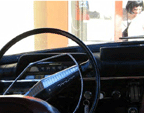
remote-live-networked-interactive-performance
Kiosk Correspondance November 14, 2004, 18:00 - 21:00: Get the facts of gilbertandgrape's whereabouts and mischief in Kiosk Correspondance at the East End Collaborations festival and online. Give us a cassette, a song of romantic significance to play in the Volvo; you can drop it off at the gilbertandgrape office installation at the EEC or email us a suggestion. Kiosk Correspondance is a remote performance with an online connection, and uses phone conversations and live documentation.
Between 2004 and 2008 GilbertandGrape and their lone ranger, a 20 kilo stuffed moose head, will travel the coasts of England and Norway in a Volvo Amazon to search out and collect stories from people with an interest in nostalgia, document vague memories, exchange taped music and watch sunsets at the end of the day.
East End Collaborations 2004
Saturday 13 and Sunday 14 November
an intensive weekend of new work by new artists
Queen Mary, University of London,
Mile End Road, London E1
Venue: The Arts Building, Queen Mary, University of London, Mile End Road, London E1 4NS. (between Mile End and Stepney Green Tubes).
The EEC Platform is an opportunity for emerging practitioners from across London to present new performance and time based works and an invitation to audiences to experience the artists of tomorrow today.
Tickets: £5 (£3 concessions) per day or £8 (£6 concessions) for a 2 day pass.
Bookings: 020 7882 5196
Concessionary tickets are available for wheelchair users and an accompanying person. Please indicate at time of booking any special requirements, wheelchair space or any other mobility assistance. The theatre and other performance and installation spaces do not have hearing induction loops.
Posted by jo at 08:38 PM | Comments (0)
Receiver
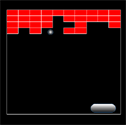
The new issue of Vodafone’s RECEIVER has been released. Content:
* Erkki Huhtamo: Hidden histories of mobile media * Tim Clark: Mobile communications and the wireless internet – the Japanese experience * Amparo Lasen: Affective technologies – emotions and mobile phones * Mike Butcher: Rewind -fast forward-play – mobile Napsterisation * Barry Wellman: The mobile-ized society – communication modes and social networks * Drew Hemment: The telephone exchange * Adam Greenfield: Along the fault lines – designing for deception, dishonesty, and other happy facts of human nature * Cory Doctorow: Eastern Standard Tribe – a story about love, death and cellular telephony * John Chasey: The future of mobile gaming – multiplayer games.
Posted by jo at 10:18 AM | Comments (0)
Utopia Travel
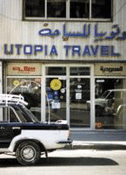
A Journey in Search of (post)modern Utopia
Utopia Travel is a collaborative project by Austrian Artists David Rych and Emanuel Danesch. The basis of the project is the transport of a video collection from Cairo to Vienna, following the transition from the upper part of the African continent over the Middle East towards Europe. An Egyptian taxi equipped with a video monitor served as a mobile unit distributing the contents of the video-archive on the distances between the capitol cities of the respective countries.
The title of the project was taken from the name of a travel agency in Cairo, which befittingly alluded to the ironic circumstance that tourism offers a temporary utopia of exoticism in various directions, whilst discovering no more than just a transmitted fragment of another culture. The archive contains pre-selected video material produced by artists/ film directors originating from and in most cases living in one of the countries on the route.
Every single videotape is labelled with the name of the author and title of the work. The only indication marking region on the label, is a colour code, created by melting the colours of every national flag into one. Since in certain regions (like the states of former Yugoslavia) the colours of neighbouring nations remain quite similar, differences are visible only in very subtle nuances; this makes people guess the precise origin of a work, even if the basic region was quite obvious. The method of presentation provided the opportunity to touch on a variety of issues, from the complexity of individual societies to the construction of political territories. In that sense the project is understood to be a temporary, non-institutional platform focusing on the translation and transmissibility of local cultural codes as different aspects of interrelated history.
The Archive was shown in the taxi as a mobile video installation on a three and a half months long tour through the cities Cairo, Beirut, Istanbul, Sofia, Belgrade, Sarajevo, Zagreb, Ljubljana, Graz and Vienna. The presentations took place to a large extent in public space, while also docking to different institutions for art and culture.
Posted by jo at 10:04 AM | Comments (0)
November 09, 2004
Anxiety, Comfort, and Play in Public Places

Wireless Technology and Social Re-appropriation
Familiar Strangers: Anxiety, Comfort, and Play in Public Places by Eric Paulos and Elizabeth Goodman: The Familiar Stranger is a social phenomenon first addressed by the psychologist Stanley Milgram in his 1972 essay on the subject. Familiar Strangers are individuals that we regularly observe but do not interact with...While today’s mobile communication tools readily connect us to friends and known acquaintances, we lack mobile devices to explore and play with our subtle, yet important, connections to strangers and the unknown – especially the Familiar Strangers whom we regularly see. Will these systems provide a new lens to visualize and navigate our urban spaces? How will these systems provide an interface to strangers and unknown urban settings? What will such devices look like? How will we interact with them? What will they reveal about ourselves and strangers? Will they alter our perception of place? Of the strange and unknown?
Posted by jo at 03:13 PM | Comments (0)
Location-based mobile phone games
IN-duce published a list for mobile phone games using GPS or cell towers signals, there's also a lists of other location based (or augmented reality) mobile games.
Originally from The Invisible Rabbit, reblogged on near near future.
Posted by jo at 01:03 PM | Comments (0)
November 06, 2004
DIALelbarrio
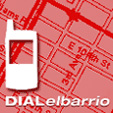
Neighborhood Archives
DIALelbarrio is a project that uses blog technology to build and distribute an audio and image repository of stories about the neighborhood of El Barrio. By allowing users to participate by simply dialing their own mobile device, the project seeks to make contributing information about the neighborhood, its people, places and histories as convenient as making a phone call. DIALelbarrio is part one of a larger wireless project that will make the rich legacy of East Harlem known to all in the Fall of 2004.
Posted by jo at 10:15 AM
November 01, 2004
Augmented Reality

The Eyes Have It
Augmented reality is about taking real things and real places and adding a layer of computer generated information on top of them. In the Thursday, October 28, 2004 Feature article: The Eyes Have It by David Pescovitz, you can read about how tomorrow's mobile phones may project the wireless web right into your eyeballs.
As a near-sighted person sensitive to to the glare of sunlight, this sends shivers through my retinas, but the commercial issue is space -- mobile screens are small and, as Pescovitz says, "there's not much room for expansion inside your pocket", so virtual retinal displays (VRD) are in the developmental stage.
"The small screens and narrow fields of view of mobile devices don't work well with the human vision system," Professor Thomas Furness, director of the Human Interfaces Laboratory, says. "When we first started talking about VRD, the idea was to create a system that requires very little power but can be connected to a PDA or cell phone to deliver a wide field of view with high brightness. For mobile computing applications where you want to overlay digital information on top of what you see, you need the luminance to compete with the outside world."
Augmented reality--computer-generated data superimposed on the real world: You can walk around the city with information about everything you see, passing before your eyes.
Posted by newradio at 11:17 AM | Comments (0)
October 28, 2004
MapTribe
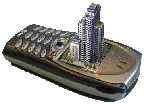
A tool for collaborative mobile learning
MapTribe is a software application for mobile phones. It enables group of users to see each other's position on a city map on the screen display, and to add on this shared map a certain number of objects that will positioned on the map according to the user's real position in the city.
MapTribe is based on the idea that every person retains and develops over time an image of the spaces s/he lives, which may be quite different from the physical inhabited place. It is commonly experienced, in fact, that places are enriched of psychological features that transform their perception. MapTribe is a tool for exchanging and comparing these personal images of the city among a group of friends. The tool we are developing helps people in analysing, capturing and visualizing this mental structure and to share it in a social network. From the negotiation of the differences between the maps of each participant in the group, a common understanding raises, an informal learning obtained by each user of the system about the image of the city.
Posted by jo at 10:37 AM | Comments (0)
Cell Phone Drum Machine

Collaborative Rhythm Generator with an SMS Interface
Cell Phone Drum Machine is a rhythm generator that can be controlled by users with their phones by sending text messages. Here's how it works: the operator links his/her phone to the computer and starts the drum sequencer. Users can then send special SMS commands to the operator's phone that controls the rhythm. The on-screen display shows from which phones commands originated.
Matt Hall and John Watkinson will present the project at dorkbot-nyc on Wednesday, November 3rd, 7pm at Location One in SoHo.
Posted by jo at 10:08 AM | Comments (0)
RE-PUBLIC

Drama, Mediation, Performance and Mobile Games
Intermedia at the University of Oslo has an interesting project about mobile gaming. RE-PUBLIC is a project that deals with humanistic perspectives on emerging digital communication forms & expressions & their information systems.
What are the dramaturgical and mediational features of commercial mobile games? Do location sensitive, always online, portable gaming terminals change the dramaturgical and mediational features of commercial mobile games? How will such terminals interact with ubiquitous computing in the physical environment to create new forms for hybrid games? How and to what extent are the less pre-scripted qualities of mobile and context-related play realised textually and interpersonally? How can the humanities inform and perform ICTs and vice versa? What can the study of computer games tell us about performance and the obverse? How can performance influence the design of computer games? What kinds of performances emerge in multi-player role-playing games?
Originally from pasta and vinegar, reBlogged on Clippings on October 27, 2004
Posted by jo at 09:29 AM | Comments (0)
October 25, 2004
Mobile Technologies and Wireless Networks
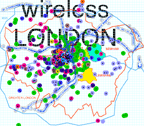
WORKSHOPS at SPACE
Workshops will be run by SPACE's Media Technologies Specialist Peter Chauncy in partnership with practitioners working in related areas. Workshops will cover the following:
Thursday 18th November: Wireless Free Networks - desktop 2 rooftop Omni Directional Antenna Building; with James Stevens from Consume.net
Tuesday 23rd November: An Introduction to Wireless Networking-A Wireless Rig; with Psand
Thursday 25th November: Portable Devices - iPAQs, mobile phones and GPRS; with Giles Lane from Proboscis
Monday 29th November: Locative Media - Global Position System (GPS) devices; with Ambient TV
Each workshop will include:
*An introduction to the technology
*Examples of practice
*Discussion around related concepts and critiques
*Instruction in using equipment and an opportunity to test it
All workshops cost 25UKP and places are limited.
To apply please contact Marina or Paul on 020 8986 5998 or email
spaceplace @ pacestudios.org.uk
Places will be allocated on a first come first serve basis
All workshops will be held at SPACE Triangle, 129 - 131 Mare Street, London E8 3RH Workshops will all run from 10:30 - 17:00. Please advise us where possible, if you're going to be late. SPACE Triangle is fully wheelchair accessible.
Please let us know if you have any other access requirements.
For more info check out:
Bow Wireless http://www.bowfestival.org.uk/Bow_wireless.htm
The State of Wireless London by Julian Priest
http://www.ambienttv.net
http://www.proboscis.org.uk
http://psand.net/
http://www.consume.net
Marina Vishmidt/Paul Gardiner
Media Arts Administrators
Space Place
43-45 Dace Road
Fish Island
London E3 2NG
Tel: 020 8986 5998
Fax: 020 8986 6887
email:spaceplace @ spacestudios.org.uk
http://www.spacestudios.org.uk
Posted by jo at 12:58 PM | Comments (0)
October 21, 2004
Malleable Music

Social tech is performative
"...Malleable Mobile Music system is my idea of truly social (i.e. performative) mobile tech.
"'Historically, music was never meant to exist in isolation,' Tanaka says. 'There was always a physical, acoustical, and even social context. These kinds of technologies can add some of those elements back in to the listening experience'...As one participant naturally sways to the groove, the PDA's motion sensor detects his motion and shifts the tempo of the song. With the song's intensity building, another listener subconsciously grips her PDA tighter, introducing echo effects into the mix. The closer that listening partners move to each other, the more prominent their part in the song becomes. Meanwhile, the software applies various 'error correction' techniques to prevent an onslaught of arrhythmic noise, unless of course that's the goal. As they listen to it, the mobile music orchestra transforms the tune into a dubby, spacey version of the familiar Bjork song...Someday, malleable music may even become an art form in its own right, leading to a duet between the artist and the audience."
Check out the Ubicomp 2004 paper for more detail. Originally posted by Anne Galloway on purse lips square jaw.
Posted by jo at 11:43 AM
October 20, 2004
Geostash
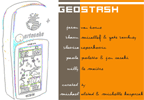
Hide, Seek, Act
Geostash is a public art project that uses the city of Toronto as its inspiration and utilises Global Positioning Technology (GPS) and the web as a means to achieve its creative goals. Geostash takes its cues from the practice of Geocaching (blogged here) - a sort of high-tech treasure hunt that was originally conceived in 2000, and has spread worldwide through websites promoting this activity. Each artist will hide a "stash" somewhere in the city and post the GPS co-ordinates of where the stash is hidden on the Geostash website. The stash may contain a set of instructions requesting an in-situ performance, or could contain objects, materials and a manual to create temporary public art. Once the stashes have all been placed in the city, each participating artist will be randomly assigned another artists' stash to find using a GPS receiver. Once found, the artist will transform the contents of the stash into a performance or ephemeral work of public art.
Date: October 29 - 31, 2004
Location: Various locations in Toronto TBA (check blog for updates)
Participating Artists: Jason Van Horne + Duncan Walker, Shawn Micallef
+ Gabe Sawhney, Slavica Ceperkovic, Paola Poletto + Jon Sasaki, Willy
Le Maitre
Curators: Michael Alstad & Michelle Kasprzak
Posted by newradio at 09:35 AM
October 19, 2004
Proboscis
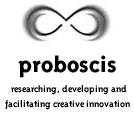
Actors, Agents and Authors
"...Proboscis is trying hasten the arrival of a world where people author as well as consume."
"I believe that this radical shift in information flow and control away from large institutions (both public and private) to ordinary people could have a profound social and cultural impact on the uses and implications of wireless and mobile technologies and mobile technologies in daily life, as well as social and community relations. I believe that the future for our society lies in broadening the capabilities of its members to be actors, agents, and authors, not merely consumers of a culture created by others employed in the 'culture industry.'" Giles Lane quoted by Howard Rheingold in Proboscis Probes Urban Public Authoring. Also, see post on Urban Tapestries.
Posted by jo at 08:48 AM
Teri Rueb

Connecting via Fluid Space
"The integration of data space and real space through mobile media and location-based systems brings back into circulation a whole host of communication rituals and interaction styles that engage the body, movement and context-sensitive exchanges. With the increasing ubiquity of wireless and mobile media, space is imagined as a Hertzian soup – a space of flows that defies the clear and fast boundaries of visual space and concrete form, instead emphasizing our connectedness in and through the social body." Continue reading Syncopated space – wireless media shaping human movement and social interaction by Teri Rueb.
As a digital artist, Teri Rueb explores the relationship between sound, space and human movement in location-aware installations and large-scale responsive spaces. She exhibits and lectures widely in international venues and is a professor in the graduate Department of Digital Media at the Rhode Island School of Design (RISD).
Posted by jo at 08:30 AM | Comments (0)
October 18, 2004
AudioHyperspace

audio »visions«
The Internet offers to the media as well as to the media artist a new electroacoustic space, abundant with audible live streams, audio on-demand, sound files and increasingly complex interactive audio art. These new possibilities may open up surprisingly new audio »visions« and provoke new strategies of perception. Audio on the Internet has made the boundaries between art, communication and play flexible. This offers a perspective on radio concepts and on radio art designs. AudioHyperspace guides you through the jungle of sound data and explores the development of sonic web art: every month it selects the most interesting audio websites and presents an annotated collection of links to audio and audio art on the web. Some examples of interviews:
Mobile Listening - Electrical Walks
Christina Kubisch in Conversation with Sabine Breitsameter
Sonic Art in Hertzian Space
Teri Rueb in Conversation with Sabine Breitsameter
Birdsong for the Mobile Age
Sadie Plant in Conversation with Sabine Breitsameter
Posted by jo at 12:56 PM
October 15, 2004
Mapping
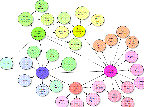
Alternative Categories
"In preparation for Wednesday's Urban Gaming lecture, we thought we'd make a map. We've mapped psychogeography, nomadic communication and technologically infused public space as enablers of the urban gaming explosion. Gaming is the perfect structure for experimenting with these new tools, places and communities. The dynamics between online and offline players, person and space, space and technology, person and technology are being stress tested and observed in the form of games in media labs, art collectives and companies throughout the world. And it's evolving to be a mechanism for social activism as well- so there you go!" From community-centric.
Posted by jo at 01:12 PM | Comments (1)
October 13, 2004
CITYchromosomes

Fixed Points Gathering Impressions
The Stadschromosmen (CITYchromosomes) project gathered thoughts and impressions of particular points around Antwerp and its districts that were shared via SMS. There were 25 ‘text points’, each inviting the submission of impressions about that place. After six months, a selection has been compiled into a booklet that combines the different ‘text points’ and gives an alternative view on Antwerp and its districts. The booklet (in Dutch) is available for download in PDF, plain text and a special version for iPods. By November 15, a complete English translation will also be available under the creative commons license.
"It’s been a fantastic, city-wide...event, put together against the odds and with very little support...by Stefan Kolgen and Ann Laenen of C.H.I.P.S, and including brilliant things like them spending a night turning all the city’s buses into Stadschromosomen text points and leading a walk with 200 recent immigrants round the city, asking them to text in their feelings about the landmarks of their new home town." FishArePeopleToo
STADSchromosomen is CityPoems’ sister project in Antwerp, Belgium, UNESCO's World Book Capital 2004. CityPoems and STADSchromosomen have 'twinned' matching locations in Leeds and Antwerp, to let you use your mobile phone to be in two cities at once.
Posted by jo at 03:05 PM | Comments (1)
Receiver #11

Communication: fitter, happier and more productive
The new issue of receiver is out and has some good reads:
Adam Greenfield on designing with an appreciation for everyday life
Drew Hemment on technologies driven by forces other than economics
Erkki Huhtamo on the cultural history of mobile technologies
Barry Wellman on the importance of the individual in mobile communications
Posted by Anne Galloway on purse lips square jaw, October 13, 2004
Posted by jo at 11:32 AM | Comments (0)
October 11, 2004
Platfrom

Routed Narratives
Platfrom, by Rachel Baker, uses the platform of the mobile phone within a very specific context - the train journey. A series of playful SMS messaging scenarios will make a relation between mobile phone and rail network as communication systems. Focusing on privatised, proprietary networks -the railway and the mobile phone -the project will invert them into opportunities for public and group interaction. It offers moments for train culture and SMS culture to integrate, taking advantage of a journey's incidental nature (delays etc.) with unknown consequences by creating a common gateway between train traveller and static web user and including them both in a narrative along a particular route. The narrative at this stage is dictated by the route from South to North and the contiguous cities and landscape. Read more [PDF]. Also read an essay by Matt Locke.
Posted by jo at 11:52 AM | Comments (0)
October 09, 2004
Glowlab
![]()
a hub for public-space arts
Glowlab is a Brooklyn-based arts lab exploring the nature of urban public space. We produce, document and present multi-media work in psychogeography and public-space arts. We organize events, lectures, collaborative projects and exhibitions, and maintain an online lab at www.glowlab.com. Glowlab is particularly interested in the idea of public space as a creative medium, and we offer the Glowlab website as an online studio/playground where artists and the public can connect and learn.
Glowlab is a highly collaborative venture, and we believe the most exciting work develops when multiple viewpoints are explored. The Glowlab community encourages dialogue on issues ranging from the impact of mobile technologies on urban life to the application of open-source concepts in art production. Whether the approach is political, philosophical or artistic, all those involved with Glowlab share a passion for the creative investigation of the urban landscape. Because our work deals specifically with physical space, we offer a number of offline events to bring our community together. In May 2003 Glowlab produced the first annual psy.geo.CONFLUX, a festival and conference in New York dedicated to current artistic and social investigations in psychogeography, held at community art and activist center ABC No Rio. In May 2004, the second annual Conflux took place at PARTICIPANT INC on the Lower East Side. The event grew to include over 50 artists from around the world who engaged in a wide variety of public-space projects, lectures, performances and audio events over the course of four days. Details about the Conflux can be found at: www.psygeocon.org.
Mission
Glowlab supports the evolution of contemporary psychogeography and serves as a hub for public-space arts. Psychogeography is an open and highly experimental discipline concerned with the ways in which the geographic environment affects emotions and behavior. The Situationists first coined the term psychogeography in the 1950s. They explored the city by engaging in “dérives” or observational drifts with the intention of discovering new perspectives on urban life. Current approaches to psychogeography vary, and include artistic, political, philosophical and scientific work in fields ranging from archaeology and cartography to programming, performance and street art. Glowlab is particularly interested in the psychogeographic elements of contemporary public-space art, including performance, documentary work, film/video and urban research. We aim to bring together these diverse perspectives and engage in dialogue on the evolving methods and practice of psychogeography. To that end, we offer both an online community, in the form of the Glowlab website, and an offline presence in the production of a number of projects and events including experimental walks, a monthly salon and a four-day festival in New York.
Posted by jo at 12:55 PM | Comments (0)
October 07, 2004
The Wireless Invisible

Sound Tracks and Data Footprints
"Stalking the footfalls and echoes of the wireless invisible" by Tobias C. van Veen, Horizonzero, Issue 15: New Movements in Digital Music
When what is "useful" is defined in terms of its market, when GPS directions lead to the nearest McDonald's, then wireless art becomes yet another pervasive intrusion, a one-way dictation. The ephemeral terrain of wireless art in all its forms is a floating, multicast struggle where the century old battles of radio are being re-played out. Yet - this time with Open Source software and technologies; with artist-driven hardware development; with a programmer's technique and a hacker's verve; and, like a hive, with a collective approach to anticipating the enemy's moves on the global level. This machine aims to engage the participant in the game: encouraging the step of becoming a content-creator rather than just a passive receptor, disrupting the sender/receiver of communication, the fortress of static/noise, of what defines efficiency and usability. The target of producing ever new and publicly-oriented ways of engaging life through the tendrils of technology is in sight. This disruptive yet productive desire has been a persistent dream since the avant-garde encountered radio one hundred years ago. Read article.
Posted by jo at 08:36 AM | Comments (1)
October 05, 2004
Life: a User's Manual, Part 2

Inhabiting Image Spaces
Commissioned by and currently on exhibit at Impakt Online, Life: a User's Manual locates the city of Utrecht as its game board, where every story, every piece stands on its own, but is part of an intricate jigsaw puzzle. Both public physical spaces and private interior spaces contain traces of fragmentary personal [hi]stories tied together by an invisible network of media. How people inhabit the hidden 'image spaces', discovered by a wireless surveillance camera scanner, while at the same time inhabiting physical outdoor spaces, was revealed through the daily practice of walking during the Impakt Festival 2003. The findings of Michelle Teran's walks have been arranged on a map of Utrecht's secret transmissions.
Life a User's Manual is a series of walking performances taking place in different cities (see an earlier post on this site), based around the activity of tapping into the unencrypted transmissions of wireless security cameras using a 2.4 Ghz receiver. In a search for the hidden stories within the city, a walk through the urban streets reveals an invisible network of watched spaces. The unencrypted signal from the camera leaks into public space, making it easily viewable from the street. This puts us in an interesting moment of uncertain inhabitation, of being in two spaces at once.
A tiny fraction of the spectrum of the airwaves has been allocated for public use, as if space and the air are not public already. Taking advantage of this unlicensed part of the spectrum, we have seen an increased used of wireless devices that are all fighting for use of this narrow band. Use of wireless [wifi] networks, cordless phones, bluetooth, and wireless cameras transmitting on this frequency contributes to an already existing invisible world of electromagnetic fields and frequencies that saturate our bodies on a daily basis. It becomes impossible to separate our bodies from the traffic reports, surveillance video, phone calls and pop songs of others. We wear each other's information.
Posted by jo at 11:10 AM | Comments (0)
October 04, 2004
Practice
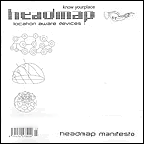
steps beyond the obvious
Esther Polak (Waag Society NL) and Leva Auzina (RIXC, LV) went some way towards rescuing landscape painting. They followed the driver of a milk truck through rural Latvia. He went through his daily routine of collecting up small amounts of milk from local people along a fixed route (in space and roughly in time). They traced the route using GPS units and software from the Realtime Amsterdam (and Riga) project. They took pictures, spoke to the people they met, and recorded interviews. In the end the GPS traces were inadequate. They had to sit down with the driver at the end of the journey with a map and pieces of paper and have him work through the broken traces with a pencil to produce a usable map of the route.
The result of the process was a very different view than photos, or interviews conventionaly produce. They had the drivers route, and maps, and time, and location to anchor point of view differently. They had misty pictures of people carrying milk churns through the countryside. But they also had a rich anchor for the systemic, subjective and spatial context; and more explicit than a literary or filmic narrative conventionally works with. The maps were generated by the people. Both implicitly, and explicitly as the man made sense of the journey he followed (six days a week) with a pencil, and a paper map, and GPS trace fragments.
The follow up thoughts were to trace the milk the next step of the way to the people who ended up drinking it (or consuming it processed into food). This opened up the idea of being able to trace what you consume or produce, right to producer or consumer. And further, open a dialogue between the participants in this cycle of production, distribution and consumption.
From an artists perspective it is now possible to (relatively easily) location stamp digital art work. The place where a work was made, or to which it refers can be logged using GPS for example. Work can be explicitly associated with a place digitally, and then 'found' according to spatial criteria: 'show me all the work associated with this place'. In mobile device terms, work can be accessed actually at a place predetermined by the artist or by the search criteria of the accessor.
How this is interpreted (conceptually and technologically) is up to artists, tool makers, and users.
Filmmakers for example can trace the spatial movements of the camera. Authors can place the next chapter at a new location. Musicians can spontaneously choose a location to perform and generate the audience through a combination of mapping and communications. Festivals, warehouse parties and rave variants have been working on these ideas for many years now, transforming dislocated spaces into gatherings though a disparate range of media.
In Karosta an audience of local people and workshop participants was led out in the dark through the woods to a clearing marked out by a circle of candles where Cheryl L'Hirondelle Waynohtêw was singing. Some way through, the audience (also singing) moved the circle of candles in closer, to make a smaller stage. The candles hinted at location aware, networked lights. You could have a lightweight portable stage that could be followed around, found and mapped on the net. Temporary, portable, visible (both visually and electronically), and findable architectural elements that would fit into a backpack.
Orientating usually requires a conversation with people who know where they are already. These conversations often serve to challenge the inhabitants of a place as to what their place means. Pete Gomes [Parkbench TV, UK] and Gabriel Lopez Shaw [US] found a group of local russian kids to show them around Karosta so that they could film. In the end the group made the film together. The kids found the locations, acted and improvised. Pete and Gabriel logged the locations and showed the kids filmmaking and GPS (the russian kids had long term access to film making and editing equipment through K@2 the Karosta based art project hosting the locative media workshop). Karosta is a very strange place, a borderland between cultures and times. The film explored Karosta in terms of dislocation and location, and its quality as a portal in time and space.
Inside K@2 Jo walsh sketched out an RDF schema for describing located media objects:
"We set out to develop a data structure for 'locative media'. This is partly a holding-place; an open standard format that can be simply re-purposed and re-represented. RDF was chosen because it allows metadata freedom; rather than the prescribed structure of a table with fixed relations to other tables, the underlying model is a graph of connections. 'database' carries the wrong connotations; this is more of a data model, a world model."
from Wilfried Hou Je Bek's database cartography; 'Mapping the patchwork of the street grid as a pattern of connections enables the cartographer to organize them in relativistic space.'
In this locative world model, the atomic unit could be the 'Packet'. A Packet is a state of affairs in space and time. Each Packet can be found at a unique URL on the web. the Packet is tagged with properties; these can be concrete, like latitude and longitude and timestamp, the packet's creator; or they can be abstract, descriptions of moments, feelings, smells. The 'tags' come from shared vocabularies which are published on the web." [see http://locative.x-i.net/karosta/]
All through the workshop participants and locals were focused out towards the surrounding area, trying to corrolate all media generated with location acquisition. Locals and artist going out would take a GPS and try and log location while taking film or photos or writing notes. Using the Waag society's realtime handheld tracking tools and the local GPRS network artists outside the K@2 center could be tracked and there journey traces visulised. Cheryl L'Hirondelle [CA] and Mari Keski-Korsu (FI) were monitored at K@2 after their trace went static for several hours (as they got more and more drunk on a beach with a couple of locals until one of their wives turned up).
Over the course of the workshop a whole sequence of journey traces was generated, enough to build up a subjective map of Karosta.
One night the workshop coordinator Mark Tuters [Locative, CA], with the Latvian electronic musician Voldomars Johansons [LV], and two of the RIXC staff went skinny dipping in the war harbour at 4am. Taking only themselves and a glow stick into the water they returned to find their clothes, and more importantly, the huge symbolic Jungian key to the K@2 centre, had disappeared. Marc turned up at the door with Voldomars behind him and red marks on his neck where one of his RIXC colleagues had tried to strangle him, still carrying the glow stick. Over the next few days all the clothes were found scattered imaginatively throughout the surrounding area.
One of the results of the workshop was a clearer understanding of the practical extant to which location adds a new dimension to media in social, artistic and technical terms. Locative media is a practice and it changes the way users relate to space and their work and each other.
Their were more theoretical aspects to the workshop. A number of the participants had backgrounds in radio.
A discussion between Zita Joyce and Adam Willetts [NL, NZ], radioqualia's Honor Harger and Adam Hyde [UK, NZ], and Ben Russell [Headmap, UK], focused on 'spectrum geography'.
Radio has always had an implicit and explicit connection with geography. For example the power and properties of a transmitter, determines the geographical region it can cover. Radio is a space altering technology, a property that can be articulated and used in many location and community related ways
The electromagnetic spectrum has a geography that can be mapped (see FCC frequency allocation tables), and that can be visualised spatially (see Fiona Raby's 'Flirt' and Anthony Dunne's book Herzian Tales)
Spectrum and space share the fact that they both seemed like finite resources. Now with advances in computing, one piece of spectrum can be divided up almost infinitely. Parallel advances in locative technologies mean that one piece of land can hold an infintite number of digitally mediated constructs and annotations.
Mobile phones which are essentially complexly networked walkie talkies, that use the landline marketing strategy. Instead of selling the open channel, you sell call time on a temporary connection. IP telephony (the word telephony encodes the marketing model) has no reason to follow this model, the infrastructure is already there, no additional exchange or network needs to be built. Open channels are as easy as finite, time limited (and costed) channels. Quake players for example use open channels, for no additional cost. The business model shapes the experience.
The sale of domain names, the primary method of taxing the internet, involves selling something which does not really have a value in the sense that domain names are only vaguely a finite resource and are just an entry in a database.
In the tracking industry there are also parallel examples. 'Geo fences', that is establishing an area and triggering an action if a tracked object enters or leaves that area, are already marketed and sold by some companies despite being a short entry in a database.
Marketers working on location awareness as a business model are going to be working to produce more examples of concrete sounding products which are actually trivial to activate, and involve no (or very little) effort to maintain once the structures are in place to run the larger system. Beyond artificial restrictive walls, marketing also has a simplifying and describing function.
Effective use of locative technologies requires hardware evolution. But also new metaphors that can underpin new interface concepts, that generate new ways of understanding and using the intersection of space, locative hardware and locative software.
Finding innovative uses for locative media probably involves using it for a while rather than endlessly trying to imagine the steps beyond the obvious.
Submitted by locative on Sun, 01/18/2004 - 02:18. Karosta
Posted by jo at 07:21 PM | Comments (0)
Distributed Form: Network Practice
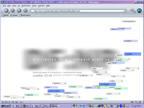
Dominant Spatial Paradigm
Distributed Form: Network Practice, University of California, Berkeley, October 22-24, 2004
"Recent developments in information technology have resulted in the entrenchment of networks and distributed systems as the dominant spatial paradigm, effectively challenging fundamental design issues of autonomy, originality, place, practice and form, which reconfigure disciplines through the implementation of distributed logics and collaborative 'open' practices. As a benchmark, this conference will analyze how the disciplines of art, science and architecture are responding to rapidly changing mobile, wireless, and information-embedded environments.
The conference will be organized around a multidisciplinary framework operating at three different scalar levels: At the Meta level, the conference will first address Form and the Network, raising issues of architectural morphology of and within networked society, by building a provisional history of networked design processes and production.
The second session, Form and Technology, will consider current research on the relationship between experimental digital technologies and emergent form.
The third panel, Micro: Form and Operation, will address theories of operative design strategies, social relationships and bodiless form.
The fourth panel, Mega: Form and Presence, will investigate how larger scale networks and their reconfiguration of time and space are altering professional design practices, while critically considering a logic of connection as the primary site of design."
Posted by jo at 06:22 PM | Comments (0)
October 01, 2004
PERVASIVE AND LOCATIVE ARTS NETWORK (PLAN)
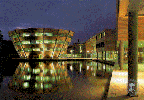
THIS IS THE (PLAN)
A new international and interdisciplinary research network in pervasive media and locative media has been funded as part of the Engineering and Physical Sciences Research Council (EPSRC) Culture & Creativity programme. The network will bring together practicing artists, technology developers and ethnographers with the aim of advancing interdisciplinary understanding and building consortia for future collaborative projects.
The network will stage three major gatherings. Each gathering will have a distinct form and focus: an initial workshop to launch the network and assess the state of the art; a technology summer camp for artists and technologists, including hands-on prototyping sessions using the facilities at Nottingham's Mixed Reality Laboratory; and a major public conference and participatory exhibition as a central component of the Futuresonic 2006 festival in Manchester; as well as a supporting web site and other resources.
CALL FOR PROPOSALS - PLAN Workshop
Submissions are invited to the first of these events, a two day public workshop with papers, demos and discussion sessions. The aim of the event is to launch the network, review the state of the art, bring key players in the field together, and make initial contacts. The event will also aim to identify a range of specific interests that can lead to the formation of sub-groups within the network. Position papers and a summary report will subsequently be published on the network web site.
The workshop will take place in London over two days in the week beginning 24th January 2005. Venue and final dates announced soon.
Please send submissions to ben@open-plan.org by Monday 8th November.
We request that participants seek support for travel and subsistence from their institutions. For participants without institutional affiliation the network shall support applications to funding councils and foundations, please contact us for further details.
THE NETWORK
Pervasive and Locative Arts Network (PLAN) - Enhancing Mobile and Wireless Technologies for Culture and Creativity
This network will draw together computer scientists and engineers who are leading the field in developing pervasive and locative technologies; artists who are using these technologies to create and publicly deploy innovative and provocative experiences; social scientists with a proven track record of studying interactive installations and performances; industrial partners from the creative industries, spanning the arts, television, games, education, heritage, mobile computing and telecommunications sectors; and international partners who are coordinating parallel networks around the world.
NETWORK OBJECTIVES
The network aims to support the formation of a new interdisciplinary research community to investigate how the convergent fields of pervasive media and locative media need to evolve in order to support future cultural and creative activities. Specific network objectives are:
-To review the scope of the research that is currently being carried out in
these fields through a focused workshop, leading to an integrated state-of-the art survey paper.
-To identify the key research issues that need to be addressed in order to further develop pervasive and locative media to support culture and creativity, leading to a series of discussion white papers.
-To seed future projects by bringing artists, scientists and industry together in a creative environment so that they can generate and practically explore new ideas, and also to provide a forum for publicly demonstrating some of these.
-To produce online and offline resources to support researchers, artists, industry and to promote public understanding of this emerging field, including a public website, an online document repository for members and a newsletter and DVD.
NETWORK ACTIVITIES
The network will organise and support a range of activities aimed at growing a research community and generating new collaborative projects between artists and technologists. These will include staging three major research gatherings, producing online and offline resources for fellow researchers and PhD students, and outreach activities targeted at industry.
Gatherings
We will stage three major gatherings. Each gathering will have a distinct form and focus: an initial workshop to launch the network and assess the state of the art; a technology summer camp for artists and technologist, especially PhD students, including hands-on prototyping sessions using the facilities at Nottingham's Mixed Reality Laboratory; and a major public conference and participatory exhibition as a central component of the Futuresonic 2006 festival in Manchester. These major gatherings will be interspersed with more ad-hoc steering and reflection meetings as required by the network participants.
Producing resources
We will produce resources to publicise the network, encourage the exchange of perspectives and discussion, and to provide tutorial support for PhD students, artists and other researchers who wish to break into this area. These will include:
-Online resources: a public website providing access to network information including project deliverables as well as news of forthcoming calls for proposals and conferences, supported by a online document repository where members can upload documents and take part in discussion. The latter will be realised using BSCW or Project Place software.
-Offline resources: a six monthly printed newsletter and a DVD of video
Outreach
The network will reach out to other researchers beyond the initial partners and also to the creative industries. This will include distribution of the newsletter and also staging a series of industry seminars, for example as part of the TI/EPSRC Outreach programme. The network research associate will also carry out a series of site visits to different partners and potential partners in order to learn more about and report on ongoing activities.
BACKGROUND IN SCIENCE AND CULTURE
A new generation of pervasive technologies is enabling people to break away from traditional desktop PCs and games consoles and experience interactive media that are directly embedded into the world around them. And locative media, the combination of mobile devices with locative technologies, supports experiences and social interaction that respond to a participant's physical location and context. Together these convergent fields raise possibilities for new cultural experiences in areas as diverse as performance, installations, games, tourism, heritage, marketing and education.
A community of researchers working in pervasive media, also known as ubiquitous computing, are exploring location awareness as a requirement for the delivery of accurate contextual information. Another community, primarily consisting of informal networks of technical innovators and cultural producers, which identifies its field as Locative Media, is exploring developments in and applications of locative technologies within social and creative contexts. One of the aims of this network is to bring these two communities together, linking academic research initiatives and agendas to key figures and ground breaking developments that are currently taking place outside mainstream academia.
The creative industries are also beginning to take up these opportunities, led by artists who are actively charting out the potentials and boundaries of the new pervasive and locative media. Other cultural sectors have also been exploring the potential of pervasive and locative media including the games industry through commercial examples of locative games played on mobile phones such as Bot Fighters and Battle Machine and also research projects such as ARQuake, Mindwarping, Pirates! and Border Guards. Researchers have also demonstrated applications in heritage and tourism, for example personal tourist guides and outdoors augmented reality displays and as well as in mobile learning experiences and participatory local history mapping projects.
A key characteristic of this research is its interdisciplinary nature, with many of these projects combining practicing artists, technology developers and also ethnographers, whose studies of early experiences that are actually delivered as public artworks have yielded new insights into the ways in which participants experience pervasive media, for example how they (and performers and technical crew) deal with uncertainty of location and connection, and, conversely, new metaphors for engaging in locative media.
However, realising the full potential of pervasive and locative media requires several further developments. First, it is necessary to expand the research community, drawing in new academic partners and also a greater range of partners from the creative industries. Second, it is important to deepen the interdisciplinary relationships between artists, technology developers and social scientists working within and between these two convergent fields. This is not only a matter of reflecting on this relationship, it is also necessary to pursue it in practice, which means forming new collaborations leading to practical projects. Third, we need to clarify and deepen the research agenda for this area, by opening up a variety of research questions, including:
-To what extent does the convergence of pervasive media and locative media signify a commonality of views, definitions and issues in each field?
-What new kinds of cultural applications will become possible through pervasive and locative media? Can we envisage new installations, performances, games and other public experiences?
-Can common design frameworks and tactics help create powerful user experiences? Can we identify and share design guidelines and generate useful abstractions, for example building on recent proposals for deliberately exploiting uncertainty and ambiguity
-What tools are required by creative users, for example that enable them to easily (re)configure an experience to work in different locations or to orchestrate it from behind the scenes. What new research challenges do these embody, for example, how do we visualise the state of the technical infrastructure-networks and sensors-96 or intervene in participants' experiences?
-What methods do researchers use to design and evaluate their experiences? We already see the use of ethnographic studies, audience discussions and even analysis of system logs; how should these be extended and can we share approaches, tools and even datasets to enhance our understanding of experience and design?
These questions, combined with the need to build a broader inter-disciplinary research community, provide the underlying motivations for this network.
INITIAL NETWORK
Project investigators:
Steve Benford, Nottingham (Principle Investigator)
Drew Hemment, Salford
Henk Muller, Bristol
Matthew Chalmers, Glasgow
Michael Sharples, Birmingham
Geraldine Fitzpatrick, Sussex
Christian Heath, Kings College
Jon Hindmarsh, Kings College
Network co-ordinator:
Ben Russell, Headmap/Locative Media Lab
Initial partners:
Marc Tuters, Locative Media Lab
Dennis Del Favero, NSW iCinema
Steve Sayers, NESTA
Toby Barnes, EM Media
Richard Hull, HP Labs
Denny Plowman, City of Nottingham Council
Sara Diamond, Banff Centre
Andrew Caleya Chetty, Metapod
Amanda Oldroyd, BT Exact
Matt Adams, Blast Theory
Nick Southgate, Ricochet TV
Annika Waern, iPerG
Giles Lane, Proboscis
Minna Tarkka, m-cult
Carsten Sorensen, LSE
Angharad Thomas, Salford
Chris Byrne, New Media Scotland
Paul Sermon, Salford
Nina Wakeford, INCITE, Surrey
Posted by jo at 08:20 AM | Comments (0)
September 30, 2004
Teletravel
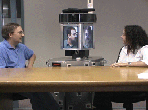
BiReality: Mutually Immersive Mobile Telepresence
BiReality uses a teleoperated robotic surrogate to visit remote locations as a substitute for physical travel. The goal is to create, both for the user and the people at the remote location, the sensory experience relevant for face-to-face interactions. The second-generation system provides a 360-degree surround immersive audio and visual experience for both the user and remote participants, and streams eight high-quality video streams totaling almost 20Mb/s over wireless networking. The system preserves gaze and eye contact, presents local and remote participants to each other at life size, and preserves the head height of the user at the remote location.
Posted by jo at 09:31 AM | Comments (0)
September 29, 2004
The Invisible Train
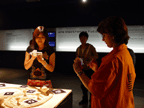
The Invisible Train is a mobile, collaborative multi-user Augmented Reality (AR) game, in which players control virtual trains on a real wooden miniature railroad track. These virtual trains are only visible to players through their PDA's video see-through display as they don't exist in the physical world. This type of user interface is commonly called the "magic lens metaphor".
Players can interact with the game environment by operating track switches and adjusting the speed of their virtual trains. The current state of the game is synchronized between all participants via wireless networking. The common goal of the game is to prevent the virtual trains from colliding. Watch the Quicktime video. Invisible Train will be demonstrated at the International Symposium on Mixed and Augmented Reality (ISMAR 2004) in Arlington, VA.
Originally from waxy. Reblogged by tripp USC Interactive Media Division blog, and by emily on near near future.
Posted by jo at 12:59 PM | Comments (0)
September 26, 2004
physical proximity
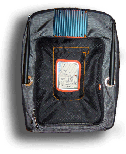
WiFi.Bedouin
Conceived and developed by Julian Bleecker, WiFi.Bedouin is a wearable, mobile 802.11b node disconnected from the global Internet. It forms a WiFi "island Internet" challenging conventional assumptions about WiFi and suggesting new architectures for digital networks that are based on physical proximity rather than solely connectivity. Most significantly, WiFi.Bedouin facilitates the creation of a truly mobile web community.
WiFi.Bedouin is designed to be functional as well as provocative, expanding the possible meaning and metaphors about access, proximity, wireless and WiFi. This access point is not the web without wires. Instead, it is its own web, an apparatus that forces one to reconsider and question notions of virtuality, materiality, displacement, proximity and community. WiFi.Bedouin is meant to suggest that what are often considered two entirely separate realms - virtual and physical worlds - are actually a much more entangled hybrid space. (from the web site)
Posted by newradio at 02:06 PM | Comments (0)
September 25, 2004
Leaders or Followers?
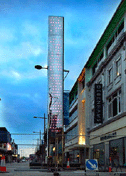
State of the Artists
"Do we drive technology or have we become just passengers? How do we navigate a reality where the lines between the virtual and real are blurred? What is our relationship to our environments, and each other, in an increasingly mediated world?
These questions have been at the heart of electronic art since its birth in the 1960s. It was then that Bell Laboratories Telephone engineer Billy Kluver collaborated with future-minded artists like John Cage and Jean Tinguely on groundbreaking works incorporating, and often critiquing, technology's state-of-the-art. Of course, that tradition continued through the dawn of the digital age and the emergence of the Web. And now it's rising in the vast spectrum of wireless telecommunications." Continue reading David Pescovitz's article at TheFeature.
Posted by jo at 12:06 PM | Comments (0)
September 19, 2004
connect to art
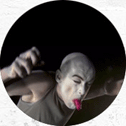
Nokia's Connect to Art Brings Art to Mobile Phones
Connect to Art is a new dimension of art and Nokia's answer to artists' need to find new, innovative channels for artistic expression and ways to reach new and existing audiences by using new methods.
Connect to Art launches with a mobile exhibition featuring three Finnish artists, Stefan Lindfors, Osmo Rauhala and Kati Aberg. Each artist has created audiovisual works of art that draw on the advantages of new media and mobile phones as an alternative channel for distributing art and as a unique environment for experiencing it.
Nokia's vision is life goes mobile. In the future, people will create, distribute and consume digital information and entertainment almost anytime and anywhere, each according to their needs. Already today, features such as news, music and games can be enjoyed in a mobile environment. It is only natural that art will go mobile, too.
Connect to Art will first be introduced in Finland. Starting with visual artists, the concept will later expand also into music. Connect to Art will later make its debut outside of Finland where artists from other countries will be joining in.
Originally posted by emily at textually.org
Posted by jo at 11:14 AM | Comments (0)
September 13, 2004
Mobile Feelings
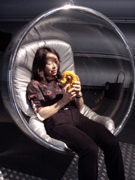
Involuntary Actors
"While mobile phone users are generally glad to embrace the enormous advantages of being reachable any-time and any-where, a reduced sense of privacy combined with the involuntary witnessing of anonymous people's private businesses has created a strange and sometimes awkward form of self-awareness and attention towards others. Mobile phones have transformed ordinary people into actors who narrate their most private details on the theatrical stages of train stations, restaurants, public spaces, streets, meeting areas, and any other social gathering places.
"Mobile Feelings is an artistic project that explores the ambivalence of sharing personal information with an anonymous audience. Instead of communication via voice or images to people we know, Mobile Feelings lets people communicate with strangers through virtual touch and body sensations including smell and sweat using specially designed mobile phones." Read more.
Mobile Feelings, a work by Christa SOMMERER & Laurent MIGNONNEAU, was part of Transmitter, April 21st - May 23rd, 2004; Kunsthalle Dominikanerkirche and around the city of Osnabrück.
Posted by jo at 11:58 AM | Comments (0)
September 05, 2004
Work by Usman Haque
Usman Haque designs interactive architecture systems and researches how people relate to each other and their spaces. "The domain of architecture has been transformed by developments in interaction research, wearable computing, mobile connectivity, people-centered design, contextual awareness, RFID systems and ubiquitous computing. These technologies alter our understanding of space and change the way we relate to each other. We no longer think of architecture as static and immutable; instead we see it as dynamic, responsive and conversant. Our projects explore some of this territory." Performative works include:
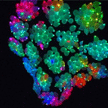 Sky Ear, 2004: This non-rigid "cloud", made up of several hundred glowing helium balloons will be embedded with mobile phones. As visitors to the event call into the cloud to listen to the distant electromagnetic sounds of the sky (including whistlers and spherics), their mobile phone calls will change the local hertzian topography; these disturbances in the electromagnetic fields inside the cloud will alter the glow intensity of that part of the balloon cloud. Quicktime video: 19 MB
Sky Ear, 2004: This non-rigid "cloud", made up of several hundred glowing helium balloons will be embedded with mobile phones. As visitors to the event call into the cloud to listen to the distant electromagnetic sounds of the sky (including whistlers and spherics), their mobile phone calls will change the local hertzian topography; these disturbances in the electromagnetic fields inside the cloud will alter the glow intensity of that part of the balloon cloud. Quicktime video: 19 MB
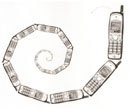 Japanese Whispers, Tokyo (2000): Similar to the children's game known as "Chinese Whispers" or "The Telephone Game," this project looks at how a message is changed by being passed from one mechanism to another--in this case the cellphone.
Japanese Whispers, Tokyo (2000): Similar to the children's game known as "Chinese Whispers" or "The Telephone Game," this project looks at how a message is changed by being passed from one mechanism to another--in this case the cellphone.
Cellphones are laid in a circle and calls are initiated from one phone to another in a variety of patterns with differing results. The sound degrades at each step as it is transformed from analog to digital and back again, emphasising the circular nature of communication. The iterative process of the feedback loop amplifies miscommunications inherent in the transmitting of information. Quicktime video: 9.2 MB
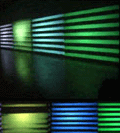 Infinitum Ad Nauseam, Tokyo (2000): The project is a video/audio performance installation which requires the explicit participation of the audience. Essentially, the system uses video and audio feedback to create sounds (from images and movements) and images (from sounds and movements). 4 video cameras, 4 video projectors, 2 video mixers and an audio mixer are used to initiate a massive feedback loop of video-video, video-audio, audio-video and audio to audio. This creates dynamic real-time images and sounds in "conversation" with the visitors or performers. There are no pre-recorded images and no computerised images used in the installation. Videos>>
Infinitum Ad Nauseam, Tokyo (2000): The project is a video/audio performance installation which requires the explicit participation of the audience. Essentially, the system uses video and audio feedback to create sounds (from images and movements) and images (from sounds and movements). 4 video cameras, 4 video projectors, 2 video mixers and an audio mixer are used to initiate a massive feedback loop of video-video, video-audio, audio-video and audio to audio. This creates dynamic real-time images and sounds in "conversation" with the visitors or performers. There are no pre-recorded images and no computerised images used in the installation. Videos>>
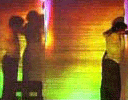 Changing Faces of Gesture, Tokyo (2000) with Charlotte Boye-Christensen (Choreographer/Dancer): The performance consists of one person and 2 to 4 large video projections. Using a simple video feedback system (where a video camera is pointed towards the screen upon which its image is being projected) coupled with an audio feedback system, complex images are created in realtime which are manipulated by the performer's movements. Images created resemble reflections in a puddle; these can be coloured using filters on both the cameras and the video-projectors. Furthermore each projector can be separately controlled to multiply the effects and simulate everything from a solitary dancing figure to a bustling crowd of people. Videos>>
Changing Faces of Gesture, Tokyo (2000) with Charlotte Boye-Christensen (Choreographer/Dancer): The performance consists of one person and 2 to 4 large video projections. Using a simple video feedback system (where a video camera is pointed towards the screen upon which its image is being projected) coupled with an audio feedback system, complex images are created in realtime which are manipulated by the performer's movements. Images created resemble reflections in a puddle; these can be coloured using filters on both the cameras and the video-projectors. Furthermore each projector can be separately controlled to multiply the effects and simulate everything from a solitary dancing figure to a bustling crowd of people. Videos>>
Posted by jo at 11:42 AM | Comments (2)
August 31, 2004
The cell phone and dramatic life
As a tool for dramatic development, the cell phone is clearly on the in. In an earlier post we mentioned the Japanese teen supersleuth who fights crime with her cell phone every Sunday night on Japan’s BS-I channel.
Also in an earlier post, we described Sheron Wray's Textterritory, a performance in which the audience has control over physical bodies (dancers and musicians) along with lighting, music and midi system at specific times in the performance by means of their cell phones.
Here’s another, a theater work, "Two Tracks and Text Me" by Sol B. River presented at the West Yorkshire Playhouse in Leeds England in October 10 to November 1, 2003, where an SMS message plays a central role in the plot.
A young girl held captive and abused sends a desperate text-message to a stranger she hopes can help her. A hip mixed-race gang of friends receive the call, and eventually do something about it.
Nowhere near as imaginative in its use of the mobile phone as the earlier mentioned works, "Two Tracks and Text Me" none-the-less sends the message that the mobile phone is a great way to move ahead a plot that might otherwise fall on its face.
Posted by newradio at 11:50 AM | Comments (0)
August 28, 2004
ubiquitous computing and the production of space

Call for WiFi.ArtCache Participants
This is a call for contributions to art-technologists interested in contributing to the WiFi.ArtCache during its exhibition at Spectropolis October 1-4, 2004. Deadline for submissions is September 26th.
By simply coding to a provided ActionScript 2.0 API, Flash artists are able to create an interactive experience that changes based on how many people have downloaded their art object, how many people are currently interacting with their art object, or whether their art object is currently in range of the WiFi.ArtCache. Here are earlier posts about WiFi.ArtCache and Spectropolis.
The WiFi.ArtCache is a physical object server containing a standard WiFi 802.11 access point. When exhibited at the Spectropolis event at New York's City Hall Park in Lower Manhattan, the WiFi.ArtCache will contain a storehouse of art objects. Visitors to the event can download these art objects onto their 802.11 equipped laptops and experience the artists' interpretation of location and proximity effects.
Developer documentation and downloads can be found at:
http://wifiartcache.techkwondo.com/overview.jsp
http://artcache.techkwondo.com/overview.jsp
Please send submissions, questions and inquiries to wifiartcache at
techkwondo dot com.
General information about the WiFi.ArtCache concept can be found at:
http://www.techkwondo.com/projects/artcache/
Additionally, the WiFi.ArtCache will contain a generic storehouse of digital ephemera that visitors can upload and download to the server. Scratchy audio, yellowed digital documents, discolored image files and spoiled emails can all be found and dropped off at the WiFi.ArtCache.
WiFi.ArtCache was developed by Julian Bleecker with support from Eyebeam Atelier. This exhibition is sponsored by the Downtown Alliance, NYCWireless, the Lower Manhattan Cultural Council and Spectropolis. Spectropolis is curated by Wayne Ashley, Yury Gitman and Brooke Singer.
http://spectropolis.info
http://www.techkwondo.com/projects/artcache
http://www.eyebeam.org
http://www.nycwireless.org
http://www.lmcc.net
Posted by jo at 10:57 AM | Comments (0)
August 25, 2004
The Relational Aesthetic
From an essay written for Camerawork: A Journal of Photographic Arts by Matt Locke:
[A story about Uncle Roy All Around You by Blast Theory; A story about Surrender Control by Tim Etchells; and A story about Audit by Lucy Kimbell]
"Those stories describe three interactions. Or performances. Or moments in the production, or consumption, of an artwork. Or perhaps they are descriptions of how the production and consumption of an artwork can be reduced to the same act, the same moment. They operate within, to use Nicholas Bourriaud's term, a 'relational aesthetic' - these artworks don't rely on an encounter with a traditional art object, nor do they substitute that with some transcendent concept of a dematerialised art object. In Bourriaud's definition, these works exist within "the realm of human interactions and its social context, rather than the assertion of an independent and private symbolic space". They are moments to be experienced, not viewed, reaching out and enmeshing themselves in the messy network of conversations and relationships that make up your life." Continue reading.
Posted by jo at 05:45 PM | Comments (0)
texting glances
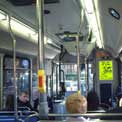
interludes from the cityscape
A collaboration between the networks and telecommunications research group at Trinity College, and the Media Lab Europe - both based in Dublin - this project uses the city as a place to perform narratives with your mobile phone. Viewers can MMS to upload images from around them into a live database, or, by SMSing keywords, download snaps from the archive at any time. more info
(Posted by Nathaniel Stern)Posted by at 10:44 AM | Comments (0)
more on mobile
Here are a couple of books on mobile phones:
1. Perpetual Contact: Mobile Communications, Private Talk, Public Performance, edited by James E. Katz and Mark Aakhus. This book deals with the impact of mobile phones on contemporary society from Finland to the Phillipines. Published in 2002, its information probably needs an update.
2.The Mobile Connection: The Cell Phone's Impact on Society by Rich Ling. Howard Rheingold calls it "a sound introduction to the social study of mobile phones, arguing among other points that SMS faces a bleak future. Published in 2004.
Earlier posts on the impact of the cell phone include: Ketai and Yo kidda NuOK.
Posted by newradio at 10:08 AM | Comments (0)
August 19, 2004
Active Ingredient
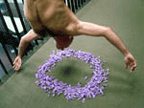
New Moon Radio
Active Ingredient have been creating exciting and innovative projects since 1996. Their work has included: Chemical Garden, “A modular garden built in units containing strange plant life and internet controlled robots”; Ghost Engine, a live online séance; Big Up Yourself, a participatory project working with Galleries of Justice.
Moon Radio, begun in 2000, has hosted many live broadcasts, new films and commissioned projects. All New Moon Radio... marks a new era for the project, reflecting the changing pattern of innovation on the web. Now at the heart of the project is the audience - their web community – interactivity and participation. Using chat rooms, SMS texting, community profiles (…and coming soon artist Blogs) Moon Radio aims to become a space that is alive with debate, activity and new projects, reflecting the audiences needs and desires.
Posted by jo at 11:42 AM | Comments (0)
August 18, 2004
play that city

Sonic City
Sonic City, the artists write, is a project exploring mobile interaction and wearable technology for everyday music creation. We have designed, implemented and evaluated a system that creates electronic music based on sensing bodily and environmental factors. Mapping these to the real-time processing of concrete sounds, Sonic City generates a personal soundscape co-produced by physical movement, local activity, and urban ambiance. Encounters, events, architecture, (mis)behaviours – all become means of interacting with or 'playing the city'.
In this project, our intention is to break out of traditional contexts for music creation to explore creative possibilities within local surroundings and mundane activities. Wearing Sonic City, anyone can experience a simple walk down the street as an expressive act, a path through the city as a personal composition. As a complement to lived urban experience, it is an intimate soundscape intended to enhance perception and encourage new uses of the urban landscape.
Posted by newradio at 07:17 PM | Comments (0)
August 17, 2004
more on mobile culture
Yo, kidda, nuOK
For anyone interested in the effects of mobile telephones on social and individual life, see Dr. Sadie Plant's 87 page work, on the mobile. In its conclusion Dr. Plant speaks of the use of numbers -- In Mandarin '521' means ' I love you' -- and how "when people from different linguistic backgrounds (non-English speakers) communicate by way of text, the search for the most dense and efficient texts often results in novel combinations of borrowed words and modified codes. Birmingham’s (England) Pakistani teenagers send messages using fusions of Caribbean, Punjabi, and SMS slang: Yo, kidda, nuOK? "Such mixed messages, “ Plant goes on to say, "are likely to become more common as texting spreads, and may even point to the emergence of localized hybrid languages: new textperantos for the mobile age.”
For an earlier post on Japanese use of mobile phones.
Posted by newradio at 10:55 AM | Comments (0)
dennis crowley

networks, mobile play & big brother
In the press a lot lately, are the works of dennis crowley, focused on 'finding the intersection between location-based services, social software and user-generated content on mobile devices.' His work includes dodgeball.com, a live, mobile-based friend finder, Pac Manhattan, where physical players do the PacMan thing around Washington Square Park, and Big Brother Foosball, a foosball game that displays your SS number while you play. [Posted by Nathaniel Stern]
Posted by at 05:41 AM | Comments (0)
August 12, 2004
SimpleTEXT
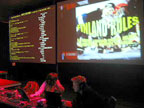
zeitgeist performing
SimpleTEXT is a collaborative audio/visual public performance that relies on audience participation through input from mobile devices such as phones, PDAs or laptops' (from simpletext website). This installation, created by mixing and matching older software projects by Jonah Brucker-Cohen, Tim Redfern and Duncan Murphy, accepts real-time SMSs and text messaging in order to create live music and visuals. The software first parses the text, which dictates the music, then uses these messages to rhythmically drive speech and picture synthesizers (direct from the web using google's image search). Although I've never seen it, my guess is that the most interesting part of this performance would be seeing a dialogue emerge between the piece, the performers, the audience SMSing in the space, and the audience texting from the web. A zeitgesit of ASCII that reiterates.... iterate.... iterative.... (ad nauseum) (Posted by Nathaniel Stern)
Posted by at 02:57 AM | Comments (0)
August 11, 2004
Flash Mobs --the first, second and historical precedents
FLASH MOBS
"The idea was that the audience would become the performance"
The first Flash Mob, according to Bill, it's anonymous planner, was to take place at Claire's Accessories near Astor Place in New York City. Claire’s sold hair scrunchies and barrettes and was the kind of store where you seldom saw more than two or three customers at a time. The idea, Bill said, was "that people would arrive, fill the entire store, and that those trapped outside would start chanting "Accessories!"" But when the crowd arrived, Claire’s Accessories was already swarming with cops.
On Tuesday June 19, 2003, at precisely 7:27p.m. the second Mob gathering took place and with great success as 150 people gathered in Macy’s midtown store and surrounded a $10,000 Persian-style carpet. Explaining that they all lived together in a communal style warehouse in Long Island City and were in the market for a Love Rug, the Mob hovered around the carpet until exactly 7:37, and then left – without the rug.
"Flash Mobs were an experiment," Bill said, "in using email to bring strangers together in a collective action directed towrd simple politics. In these specific cases, people choosing fun."
Read more about the early history of Flash Mobs and their historical precedents in My Name is Bill… by Alec Hanley Bemis in the LA Weekly, August 6-12, 2004.
And while you’re there, check out Judith Lewis’ The Future Belongs to Crowds: a brief history of spontaneous gatherings.
Posted by newradio at 03:35 AM | Comments (0)
August 08, 2004
Noderunner

Racing Against Time
Noderunner--by Yury Gitman, Carlos J. Gomez de Llarena--is "a competitive game (that) fuses the streets with wireless networks to convert the city into a playing board. Two teams racing against time must log into as many modes as they can and upload photographic proof to the server, documeting their progess." Noderunner won the Golden Nica for Net Vision/Net Excellence at Prix Ars 2003. Read more
Posted by jo at 04:02 PM | Comments (0)
August 05, 2004
Mobile Phone Performances, Installations and Artworks
Golan Levin's Informal Catalogue
"In the summer of 2001, while my colleagues and I were preparing the Dialtones mobile phone concert, I began to hear rumors and news items that other people were planning similar events. Given the astonishing growth of mobile telephony, one could hardly be surprised. Still, it's important to know the details of concurrent trends, and so I started collecting this list. Since that time, various folks (and in particular, Jonah Brucker-Cohen) have sent me information about other artworks that use mobile phones. Although I don't know if I'll ever do another mobile phone project, I also recognize that resources like this can be useful to other people who might. So if you know of something that should be listed, please email me (golan at flong dot com) and I'll gladly add it in. -- Golan"
Posted by jo at 06:37 PM | Comments (0)
Radio Cycle

Sound Interference
Radio Cycle, produced by Kaffe Matthews and collaborators, is a live radio station that broadcasts your stories, news and favourite sounds directly onto the streets as teams of radio-carrying cyclists map out the East end. It was part of Interference: Public Sound which took place in the UK in 2003. The project brought together a series of sound art projects "that engage with communication and shared memory as well as reflecting the current crossover of art, technology and action."
"Growing out of a week of workshops in Bow, Radio Cycle's highlight was a series of pieces that were broadcast and ‘played’ by a group of cyclists carrying radios and following predetermined routes in the area. Citizens out and about in London Fields, Victoria Park and streets in the vicinity would encounter these mobile soundworks as they drifted by on wheels. The local streetmaps, Matthews explains, took on the character of scores for her.
"It suddenly dawned on me that the radio itself is like a mobile stage," she tells me. "Originally I wanted to have a mobile radio station but we couldn't do that because you're not allowed to have a licence and be mobile. Radio Cycle was about this invisible activity, this subtle alteration of what's going on around you. Which explains the bicycles. You'd be walking down the street and a bicycle goes by. You probably wouldn't notice the bicycle but you'd notice some sound. A piece of music floating by. Just subtle little tweaks, altering people's environment to turn them on to what they're hearing." Continue reading at Wire feature by Will Montgomery, September 2003.
Posted by jo at 05:00 PM | Comments (0)
August 04, 2004
After the Crash

RICHAIR2030
RICHAIR2030 by TAKE2030 is a fictional wireless performance set in year 2030. RICHAIR2030 incorporates ideas of the freenetwork movement developed worldwide in the early 21st century and proposes shared public consumption of wireless bandwidth in an "After the Net", "After the Crash" scenario.
It is the year 2030. The great wireless hope that promises mobility and connectivity has bubbled. The GPS satellite signals have lost track of its urbanites when cutting through the Ozone layers. The ocean-apart digital divide has sabotaged the Net. What remains of the feeble bandwidth is held and safeguarded by the wireless freenetworkers, whose self-organized and decentralized network maintains its data cloud in local communal mesh-settings. The mobile generation is grounded. The tribal gathering around freenetwork nodes is the only game in town, bringing together the signal-seeking Desparati. The self-appointed renegade roller girls, acting as the Transmitenti of free bandwidth, travel city limits in auto-powered modules. Equipped with homemade lunchbox chiputers, the roller girls pump the remaining wireless signal strength in RGB codes and sonic extravaganzas. RICHAIR2030 mobilizes roaming nodes and calls for trans-national virtual mesh network.
RICHAIR2030 works with London freenetworkers and pays tribute to the world wide wireless freenetwork movement.
RICHAIR2030 team has developed 3 chiputer (compact computer with single chip motherboard) lunchboxes that draw parallels and refers to the techno DIY culture characteristic to the UK media scene at the turn of this century. The software system is based on free BSD, linux and mesh AP applications that allow automated reboots, wireless roaming, and data push at chosen locations. The interface programming further translates raw data into visual and sonic applications. In its compact lunchbox a 256 MB flashcard holds all the data.
RICHAIR2030 is developed by TAKE2030 brave new media society that sets up and manages multiple research+development+action media-working units. TAKE2030 designates its media practices in Commons societies and proposes its strategic programme development till year 2030. Take2030: Ilze Black, Alexie Blinov, Shu Lea Cheang, Chia-liang Kao, Paul Khera, Gio D'angelo in collaboration with East London community network and sonic artists: Supermoden and 1010.org.
RichAir2030 is currently touring the UK. Next performance: August 15, 2004, Bow Arts Festival, London
Posted by newradio at 12:16 PM | Comments (0)
August 03, 2004
Painting the Street
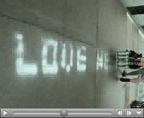
Bikes Against Bush
From "Bike Writer Pedals for Protests" by Leander Kahney, Wired News, August 2, 2004
New Yorker Joshua Kinberg is a bike messenger of a different stripe. Instead of ferrying legal papers between lawyers, he uses a homemade, wireless, bicycle-mounted dot-matrix printer to spray protest messages in the street...[Bikes Against Bush is] "painting on the street, but on the Net, too," said Kinberg, a post-graduate student at Parsons School of Design.
Continue reading at Wired.com
Posted by jo at 10:37 AM | Comments (1)
August 02, 2004
iSee Wireless

iSee Wireless
We are in the midst of two wireless revolutions, one defined by large corporations that buy spectrum, the other defined by ad hoc networks and open standards. We are focused on contributing to this second, more democratic revolution.
Julian Bleecker (Art Cache Machine, WiJacker, Proximity Wireless projects utilizing WiFi Toolkit software.) explores practical and playful uses of WiFi through a series of projects created with the WiFi Toolkit, a set of software APIs Bleecker developed as Engineer in Residence at Eyebeam. Art Cache Machine, the WiJacker and Proximity are three WiFi-enabled applications developed to investigate the possibilities of "partially connected" WiFi social networks using access points deliberately off the public internet. Art Cache Machine is a mobile WiFi node that provides an access point for specific digital art that can only exist within the locale of the Machine's WiFi node. WiJacker assumes the role of a WiFi node by hijacking the activity of users. Proximity is an ad-hoc communication service that enables connections between devices without user intervention.
iSee is a web-based application charting the locations of closed-circuit television (CCTV) surveillance cameras in urban environments. With iSee, users can find routes that avoid these cameras -
Who should use iSee
The past several years has seen a dramatic increase in CCTV surveillance of public space. Video cameras peer at us from the sides of buildings, from ATM machines, from traffic lights, capturing our every move for observation by police officers and private security guards that often act with very little public or legislative oversight. While the effectiveness of these devices in reducing crime is dubious at best (see below), recent cases of misuse by public and private authorities serve to question the appropriateness of video monitoring in public space. Here is a short list of people who might legitimately want to avoid having their picture taken by unseen observers:
Minorities
One of the big problems with video surveillance is the tendency of police officers and security guards to single out particular people to monitor. It is hardly surprising that the mentality leading to racial profiling in traffic stops has found similar expression in police officers focusing their cameras on people of color. Indeed, a recent study of video surveillance in the UK, the leading user of CCTV surveillance systems, says that "black people were between one-and-a-half and two-and-a-half times more likely to be surveilled than one would expect from their presence in the population." It is worth pointing out that, in this study, 40% of people that the police targeted were picked out "for no obvious reason," other than their ethnicity or apparent membership in various subcultural groups. In other words, they were singled out not for what they were doing, but simply based on how they looked.
Women
It appears that police monitors just can’t seem to keep it in their pants when it comes to video surveillance. In a Hull University study, 1 out of 10 women were targeted for “voyeuristic” reasons by male camera operators, and a Brooklyn police sergeant blew the whistle on several of her colleagues in 1998 for “taking pictures of civilian women in the area ... from breast shots to the backside."
Youth
Young men, particularly young black men, are routinely singled out by police operators for increased scrutiny. This is particularly true if they appear to belong to subcultural groups that authority figures find suspicious or threatening. Do you wear baggy pants or shave your head? Smile – you’re on candid camera!
"Outsiders"
The Hull University study also found a tendency of CCTV operators to focus on people whose appearance or activities marked them as being "out of place." This includes people loitering outside of shops, or homeless people panhandling. Not surprisingly, this group includes individuals observed to be expressing their opposition to the CCTV cameras.
Activists
Experience has shown that CCTV systems may be used to spy on activist groups engaged in legal forms of dissent or discussion. Indeed, the City College of New York was embarrassed several years ago by student activists who found, much to their dismay, that the administration had installed surveillance cameras in their meeting areas. This trend shows no signs of abating: one of the more popular demonstrations of CCTV capabilities that law enforcement officials and manufacturers like to cite is the ability to read the text of fliers that activists post on public lampposts.
Everyone else
Let’s face it – we all do things that are perfectly legal, but that we still may not want to share with the rest of the world. Kissing your lover on the street, interviewing for a new job without your current employer’s knowledge, visiting a psychiatrist – these are everyday activities that constitute our personal, private lives. While there is nothing wrong with any of them, there are perfectly good reasons why we may choose to keep them secret from coworkers, neighbors, or anyone else.
But what’s the harm?
Clearly, video surveillance of public space represents an invasion of personal privacy. But so what? Having one's picture taken from time to time seems a small price to pay for the security benefits such surveillance offers. It's not like anyone ever sees the tapes, and let's be honest
Unfortunately, this is not entirely accurate. The fact is, there is very little oversight of video surveillance systems, and the question of who owns the tapes
The fact is, many of the cameras monitoring public space are privately owned. Banks, office buildings, and department stores all routinely engage in continuous video monitoring of their facilities and of any adjacent public space. The recordings they make are privately owned, and may be stored, broadcast, or sold to other companies without permission, disclosure, or payment to the people involved.
Similarly, video footage that is captured by public police departments may be considered part of the "public record," and as such are available for the asking to individuals, companies, and government agencies. At present, there is precious little to prevent television programs like "Cops" and "America's Funniest Home Movies" from broadcasting surveillance video without ever securing permission from their subjects.
Sound far-fetched? Already in the UK
Similarly, there has been a proliferation of "spy cam" websites featuring clandestine footage of women in toilets, dressing rooms, and a variety of other locations. A lack of legislative oversight allows these sites to operate legally, but even if new laws are passed, the nature of the Internet makes prosecutions highly unlikely.
As video surveillance systems evolve and become more sophisticated, the opportunities for abuse are compounded. Sophisticated video systems can identify the faces of individuals (matching video images to databases of known faces
All of this says nothing about the societal impact of our increasing reliance on surveillance, and our growing willingness to put ourselves under the microscope of law enforcement and commercial interests. Once a cold-war caricature of Soviet-style communist regimes, the notion of the "surveillance society" is increasingly employed to describe modern urban life in such bastions of personal liberty and freedom as the United States, United Kingdom, and Canada.
While the nature of such a society has been long theorized by philosophers, critics, and sociologists, the psychological and social effects of living under constant surveillance are not yet well understood. However, the impacts that CCTV systems have on crime are beginning to be known.
Video Surveillance and Crime
Touted as a high-tech solution to social problems of crime and disorder by manufacturers selling expensive video surveillance systems to local governments and police departments, CCTV has gained much popularity in recent years. These manufactures claim that CCTV
CCTV is often promoted with thinly veiled references to the threat of terrorism: hence their widespread use in the UK, which has long lived with bomb threats and other violent actions. Already, in light of the September 11 attacks, video surveillance manufacturers have begun to court the American public
Attempting to capitalize on an international tragedy to sell product in this manner may seem tastelessly opportunistic at best. Given the track record of CCTV systems to date, this strategy seems downright cynical. According to studies of the effectiveness of video surveillance in use throughout the UK, there is no conclusive evidence that the presence of CCTV has any impact on local crime rates. While there have been examples of reduced criminality in areas where CCTV has been installed, these reductions may also be explained by other factors, including general decreases in crime throughout the UK. Indeed, in several areas where CCTV was installed, crime rates actually increased.
Given the widespread use of these systems, it is surprising how infrequently they lead to arrests. According to one report, a 22-month long surveillance of New York's Times Square led to only 10 arrests (those cameras have since been removed). Furthermore, the type of crime against which CCTV is most effective seems positively mundane when compared to its advocate's claims of stopping terrorism and kidnappings. A study of CCTV use in the UK found that the majority of arrests in which video surveillance played a significant role were to stop fistfights. Again, this was a relatively infrequent occurrence, and hardly seems to justify the price tag and loss of privacy these systems inherently engender.
More disturbing, however, was the finding that incidents of police brutality and harassment captured by CCTV surveillance were routinely ignored. The tapes of these events also had a tendency to be "lost" by operators.
The effect of video surveillance on criminal psychology is also not well understood. One Los Angeles study found that cameras in a retail store were perceived by criminals as a challenge, and in fact offered became an inducement towards shoplifting.
At best, CCTV seems to not reduce crime, but merely to divert it to other areas. According to one Boston police official, "criminals get used to the cameras and tend to move out of sight."
A final thought...
Given heightened awareness of public safety and increased demand for greater security in the face of growing threats of terrorist violence, projects that undermine systems for social control may seem to some viewers to be in poor taste. It is the Institute for Applied Autonomy's position that such times call out all the more strongly for precisely these kinds of projects. As spytech dealers stumble over themselves in their haste to auction off our civil liberties - wrapped in the stars and stripes, tied up tight with memorial ribbons - to right-wing politicos who drool and salivate in anticipation of railroading their own Orwellian wet-dreams of social control through our legislative bodies, there is a vital need for independent voices that cry out against such cynical exploitation of legitimate human fear and suffering for political power and monetary gain. The Institute for Applied Autonomy is such a voice. iSee is our statement.
- Brought to you by the Institute for Applied Autonomy "now more than ever"
Posted by michelle at 12:55 PM | Comments (0)
August 01, 2004
Mixed Reality in Los Angeles
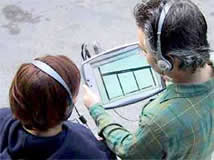
GPS Walkabout
34 North 118 West plays through a Tablet PC with Global Positioning System receiver and headphones. GPS tracks your location to determine how the story unfolds - in real time, in real space, as you traverse the sidewalks of Los Angeles.
Description of Tour: Imagine walking through the city and triggering moments in time. Imagine wandering through a space inhabited with the sonic ghosts of another era. Like ether, the air around you pulses with spirits, voices, and sounds. Streets, buildings, and hidden fragments tell a story. The setting is the Freight Depot in downtown Los Angeles. At the turn of the century Railroads were synonymous with power, speed and modernization. Telegraphs and Railroads were our first cross-country infrastructures, preceding the Internet. From the history and myth of the Railroad to the present day, sounds and voices drift in and out as you walk. Read Narrative Archaeology by Jeremy Hight.
Posted by michelle at 06:07 PM
O.U.T. There
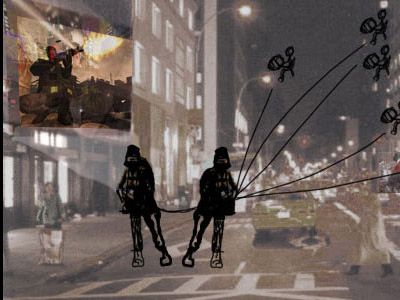
Two women in gear are on the ground. One with a laptop and the other with a projector pointing onto building walls in 3 key locations in the city. They are connected through a mobile wireless bicycle to an online team of five game players located around the world. They intervene on servers in a popular online military simulation game with performance actions carried out by the whole team. The live projections in the city can also be viewed through a web cam on the OUT website.
OUT takes its name from MOUT a military term for Military Operations in Urban Terrain. Many military simulation computer games implement MOUT. For example, the US Army developed game Full Spectrum Warrior trains gamers in MOUT combat. OUT is a criticism of the increasing militarization of civilian life which has been implemented in the US and elsewhere since 911. The Patriot Act, surveillance of public libraries, and the increased powers of government to hold citizens in military custody without trial are instances of these increased powers of government instigated by the Bush administration. In an endless spiral war of terror a government is at war with its own citizens, with soldiers in the midst of the fabric of ordinary life, as has been the case for a while in terror alert cities like Tel Aviv and Jerusalem.
OUT is an artistic intervention in the public space of online games and cities. OUT is also happening at a moment when the street has become again a viable mode of expression. From Seattle to Cancun activists are using wireless technologies and the web to organize actions and and congregate. Dada-like agenda-less mobs have appeared in New York and spread to other cities, In contrast, police at these events are increasingly high tech and cyborgean. They wear the latest riot gear shields and padding and use high tech wireless communication systems. They move in sophisticated crowd control formations. OUT, on the other hand, is a high tech art intervention, art activists with high tech gear and strategy. OUT of the closet of MOUT.
Republicans OUT of New York. The United States OUT of Iraq and the Middle East. Escalating worldwide Militarism and Violence, from whatever source, (right wing oil hungry U.S. capitalists or wealthy Islamic fundamentalists), OUT of Civilian Life. The U.S. Army and Pentagon computer game developers OUT of the minds of prebuscent gamers.
Posted by michelle at 03:45 PM | Comments (0)
July 31, 2004
From Hactivism to Tactical Media
Hacktivism (electronic resistence within the network) has fed into tactical media: urban, mobile performance events.
Being 'wired' has become mobile, ubiquitous, sentient, pervasive, OMNICIENT monitored, computing. As we desire our movies and games to be more realistic - hyper-realistic - we now inhabit our computer-mediated, if not computer-generated worlds. We interact through joysticks that exert pressure to our response. We track oursleves with GPS-equipped devices, we pass and receive data streams: enveloped, engaged, connected, linked.
There's a surge in public events - happenings - Kaprow's "Environmental Theatre" of the collective, enabled by wi-fi technology and taken to the streets: MOBILized.
From: The ABC of Tactical Media by David Garcia and Geert Lovink
Tactical Media
"In fact we introduced the term tactical to disrupt and take us beyond the rigid dichotomies that have restricted thinking in this area for so long: dichotomies such as amateur vs professional, alternative vs mainstream. Even private vs public. Our hybrid forms are always provisional. What counts are the temporary connections you are able to make. Here and now, not some vaporware promised for the future. But what we can do on the spot with the media we have access to. Here in Amsterdam we have access to local TV, digital cities and fortresses of new and old media. In other places they might have theater, street demonstrations, experimental film, literature, photography. Tactical media’s mobility connects it to a wider movement of migrant culture."
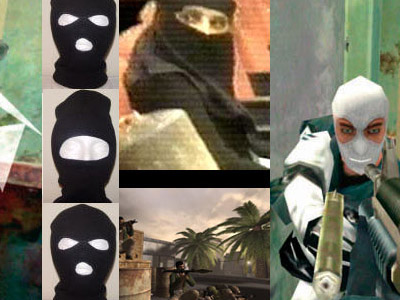 O.U.T.: Operation Urban Terrain :a live action wireless gaming urban intervention
O.U.T.: Operation Urban Terrain :a live action wireless gaming urban intervention
When: August 30, during the Republican National Convention, New York City.
Two women in gear are on the ground. One with a laptop and the other with a projector pointing onto building walls in 3 key locations in the city. They are connected through a mobile wireless bicycle to an online team of five game players located around the world. They intervene on servers in a popular online military simulation game with performance actions carried out by the whole team.The live projections in the city can also be viewed through a web cam on the OUT website.
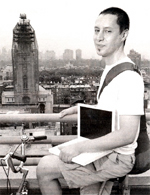 Magicbike is a mobile WiFi (wireless Internet) hotspot that gives free Internet connectivity wherever its ridden or parked. By turning a common bicycle into a wireless hotspot, Magicbike explores new delivery and use strategies for wireless networks and modern-day urbanites. Wireless bicycles disappear into the urban fabric and bring Internet to yet unserved spaces and communities. Mixing public art with techno-activism, Magicbikes are perfect for setting up adhoc Internet connectivity for art and culture events, emergency access, public demonstrations, and communities on the struggling end of the digital-divide.
Magicbike is a mobile WiFi (wireless Internet) hotspot that gives free Internet connectivity wherever its ridden or parked. By turning a common bicycle into a wireless hotspot, Magicbike explores new delivery and use strategies for wireless networks and modern-day urbanites. Wireless bicycles disappear into the urban fabric and bring Internet to yet unserved spaces and communities. Mixing public art with techno-activism, Magicbikes are perfect for setting up adhoc Internet connectivity for art and culture events, emergency access, public demonstrations, and communities on the struggling end of the digital-divide.
Posted by michelle at 01:51 PM | Comments (1)
July 30, 2004
On Liveness and Presence
What is Live Art?
This from the UK: "Unlike with opera, people often ask, 'What is Live Art?' The answer is people have been experiencing it for the last hundred years, from the earliest events at the Cabaret Voltaire where DADA was born to the happenings of the Sixties which influenced Andy Warhol, and in the 21st century this tradition continues to mutate." 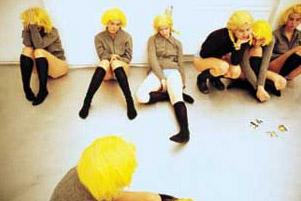
Today Live Art is witnessed at perfomances by Vanessa Beecroft or The Battle of Orgreave by Jeremy Dellar. Live Art is an interrogation of the aesthetics of presence. Live Art is about being there.
"Live Art mixes genres and diverse cultural experiences to express the complex organisation of contemporary life. It often involves work which questions commonly held assumptions. Live art is the trash-can of culture recycling and celebrating the debris of the modern world."
The History
: In 1965 Kaprow explained his evolution from collage to environments and happenings: "The action collages then became bigger, and I introduced flashing lights and thicker hunks of matter. These parts projected further and further from the wall into the room, and included more and more audible elements: sounds of ringing buzzers, bells, toys, etc., until I had accumulated nearly all the sensory elements I was to work with during the following years...." His works expanded until they filled the gallery, creating an integrated environment for the spectator. "I immediately saw that every visitor to the environment was part of it. And so I gave him opportunities like moving something, turning switches on -- just a few things. Increasingly during 1957 and 1958, this suggested a more 'scored' responsibility for the visitor. I offered him more and more to do until there developed the Happening...The integration of all elements -- environment, constructed sections, time, space, and people -- has been my main technical problem ever since."
Kaprow's progress did not occur in a vacuum, as he readily acknowledges. Robert Rauschenburg, Claes Oldenburg, and Jim Dine, among others, were also working on theatrical pieces, although they soon returned to more traditional areas; In Europe, Wolf Vostell and the Fluxus Group, and in Japan, the Gutai Group, were all investigating similar directions.
The Theory of Happenings: The Happening, as Kaprow developed it, is a non-verbal, theatrical production that abandons stage-audience structure as well as the usual plot or narrative line of traditional theatre. Although a compartmented organization may be used, the performers are considered as objects -- often kinaesthetically involved -- within an overall design of environment, timing, sound, colour and light. Found environments are often used and built upon, but the events are not casually arrived at, nor are they entirely accidental and spontaneous.
His view was that the Assemblage was to be "handled and walked around", the environment" was to be "walked into", but the happening was to be a genuine "event" involving spectator participation and no longer confined to the museum or gallery. Performers are encouraged to capitalize upon unplanned occurrences while acting out fantasies based on real life within a certain roughly pre-ordained structure that suggests symbolic and universally basic themes and meanings. A field of aesthetic operation is thus created in relation to life, combining artfully determined materials with strong associational properties, and dimensions with events and things from the sphere "outside" of customary definitions for art.
In the following networked performance types we directly see the influence of happenings particularly in the emergence of wireless network enabled Urban Gaming such as the Go Game. Go Game started off as a bunch of digerati having fun with their handhelds. Then it started becoming popular so the developers began marketing their services as event producers to corporations. Now their website has this decidedly corporate slant.
Pac-Manhattan was developed out of the NYU Interactive media program...possibly interesting if it doesn't fizzle out....
Urban Challenge, urrr I guess it's now Verison Urban Challenge. Enough said.
FlashMobs have matured to smart mobs.
GeoCaching is an entertaining adventure game for GPS users. Participating in a cache hunt is a good way to take advantage of the wonderful features and capability of a GPS unit. The basic idea is to have individuals and organizations set up caches all over the world and share the locations of these caches on the internet. GPS users can then use the location coordinates to find the caches. Once found, a cache may provide the visitor with a wide variety of rewards. All the visitor is asked to do is if they get something they should try to leave something for the cache.
Posted by michelle at 11:40 AM | Comments (0)
Networked Local Performances
Three Performances: 2001-03: A Comment
The three location-specific performances Dialtones: A Telesymphony, Flip Flop, and Texterritory --you had to be there to experience them--introduced in the last posts were produced between 2001 and 2003 They made use of networked technologies--mobile phones, video/audio relayed by wireless broadband--to involve their audiences in the creation of the performances. Each has done this successfully in its own way, while maintaining control, in the case of Dialtones, a tight control, over the performance itself.
Posted by newradio at 10:06 AM | Comments (0)
July 29, 2004
Networked Local Performance
Dialtones: A Telesymphony
Dialtones, as described on Golan Levin’s web site, "is a large-scale concert performance whose sounds are wholly produced through the carefully choreographed dialing and ringing of the audience's mobile phones. Because the exact location and tone of each participant's mobile phone can be known in advance, Dialtones affords a diverse range of unprecedented sonic phenomena and musically interesting structures."
Preparatory to the concert, members of the audience register their wireless telephone numbers at secure Web kiosks located in the performance space. In exchange for this information, they then receive seating assignment tickets for the concert venue. New "ringtones" are then automatically downloaded to their handsets. During the concert, a small group of musicians perform the phones en masse by dialing them up with a specially designed, visual-musical software instrument. "Because the audience's positions and sounds are known to the Dialtones computer system, the performers can create spatially-distributed melodies and chords, as well as novel textural phenomena like waves of polyphony which cascade across the crowd; these musical structures, moreover, are visualized by a large projection system connected to the performers' interfaces. Towards the end of its half-hour composition, Dialtones builds to a remarkable crescendo in which nearly two hundred mobile phones peal simultaneously."
Posted by newradio at 06:26 PM
Networked Local Performance
Flip Flop
Flip Flop comprises a group of motion poets, cyborgs, and sound, video and net-artists who collaborate on ‘site-specific remote connection theater performances’ that, in their words, "challenge boundaries between audience and performer, on-stage and off-stage, the venue and the street outside."
For instance: the audience is invited to a party where, over the course of the evening, one of the partygoers (actor and motion poet Ajay Naidu) emerges as a performer, and the audience gradually realizes that it is participating in theater. As the performer shifts between private conversation and "narrative outbursts," the event shifts in mood and form.
Simultaneously, a performer, equipped with a wearable multimedia-streaming computer roams the neighbourhood. The route is choreographed to synchronise with the performers story, and a live "point-of-view" video feed (as well as audio) from the wanderer is relayed by wireless broadband to the performance venue. Flip Flop was performed in July, 2002. Read a report on Live Streaming as Dramaturgy.
Posted by newradio at 06:17 PM
July 28, 2004
Networked Local Performance
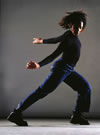
Texterritory v.2.3
Texterritory is a playground performance concept in which the audience has control over physical bodies (dancers and musicians) along with lighting, music and midi system at specific times during the performance. Their influence alters the direction of each performance. Texterritory was performed in May 2003 at the Mumford theatre in Cambridge (UK). Its plot is described as follows:
"Grace, a Legal Secretary arrives home early to prepare herself for her first real date with Jerome. She’s just bought a new pair of shoes to go with one of those outfits. At the moment she drops her keys on the kitchen table, the text arrives from J — he has been delayed but will be there soon. From optimism to despair from knowing to kneeling in prayer, Grace's dilemmas and insecurities unfold as she figures out what to do with this unexpected time on her hands. Together with the influence of the audience she decides exactly what to wear, who she might call if he doesn't show up as well as trying to reassemble a photofit image of what Jerome really looks like."
The multi-media, non-linear narrative "is told through texting/photo-messaging, dance, music, spoken word and animation."
Texterritory makes use of a mobile gateway created by new media company Digit. Computers that tally the results of text messages sent to the audience and derives instructions for the performers from them. It thus gives the audience a certain amount of interactive control over the physical bodies, music and lighting at specific times during the performance.
Posted by newradio at 05:52 PM | Comments (0)
July 27, 2004
More about Blast Theory
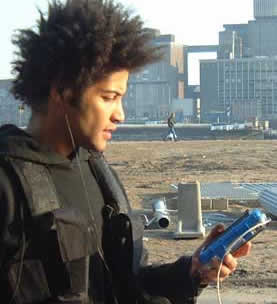 Matt Adams of Blast Theory posted a comment of encouragement to the blog's opening and I'd like to follow up with more about Blast Theory and a call out to Matt to respond to some specific questions about their work.
Matt Adams of Blast Theory posted a comment of encouragement to the blog's opening and I'd like to follow up with more about Blast Theory and a call out to Matt to respond to some specific questions about their work.
Blast Theory, comprised of Matt Adams, Ju Row Farr, and Nichols Tandavanitj, describe themselves as 'an artist group whose work explores interactivity and the relationship between real and virtual space with a particular focus on the social and political aspects of technology. It confronts a media saturated world in which popular culture rules, using video, computers, performance, installation, mobile and online technologies to ask questions about the ideologies present in the information that envelops us.'
This is evident in a survey of their work over the past decade. Formed in 1991, a chronology of their work from 1994-2004 is available on their website where the themes and explorations of technology range from video in live performance to interactive installations with the most recent using a pda or 3G phone to enable a mixed-reality game-based experience.
Beginning with their 1999 work Desert Rain and continuing on to the mixed reality works Can You see Me Now (project website), Uncle Roy All Around You (project website), and I Like Frank (project website) they have collaborated with the Mixed Reality Lab (MRL), an interdisciplinary research initiative at the University of Nottingham which brings together leading researchers in Computer Science, Engineering and Psychology to research new technologies that merge the physical and digital worlds, focusing on playful, artistic and educational applications.
The projects with MRL are clearly interactive in their game structures and use of mobile, networked technologies. The hybrid online/live action approach was explored in Kidnapped (1998) and interactivity has been a component in the early work since Stampede, (1994) in which the audience triggered how the piece unfolded via pressure pads.
Their work has been described as 'somewhere between theatre, performance art, installation and club culture' by Lois Keidan, Director of Live Arts, Institute of Contemporary Arts, London. In reviews of Uncle Roy in 2003 a direct link to the content and approach of their work can be found - a group of friends with various creative backgrounds get together to form a theater company. This comes through in Matt's initial comment to the blog in which he claims his excitement for recent developments in networked_performance, despite the backward looking stance of many traditionally moored theater and dance practitioners. Blast Theory is freed from any prior history in a single discipline by having a group comprised from various practices across which they draw to create their work.
Some Questions
Matt, firstly, correct any inaccuracies in the above. Would you tell us what are the backgrounds of the members and elaborate on the evolution of the group from the early years till now. What led to the formation of the group and why theater? It seems that BT has always had an interest in media and technology born of club culture perhaps. What is the importance of the 'live' and 'performance' aspects of your work? As opposed to addressing the same social and political themes about technolgical impact on culture by focusing solely on interactive installations, such as in An Explicit Volume, for example.
How did the collaboration with Steve Benford and MRL evolve? How has the relationship with MRL influenced BT's work conceptually? You might also elaborate on how the collaboration has enabled your work to evolve technologically as well. Can you speak about the offshoot of the BT / MLR collaborative endeavor, EVERPRESENCE and your project Vicinity to which you've been able to apply these joint efforts? It appears to include aspects of the mixed reality game-based works and a reality-tv episodic, perhaps. What's the timeline for presenting this work?
You also mentioned in your post that there is lots of interesting work happening in networked_performance. What's out there that you currently find interesting and why?...
Posted by michelle at 08:13 PM | Comments (3)
Networked Streaming Audio Performance
forwarded by Shu Lea Cheang -
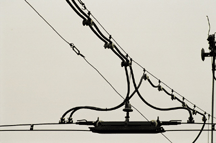
TRAMJAM - VIENNA RUSHHOUR by Mumbai Streaming Attack
A multi-track-multi-driver mix hub streaming jam session of Vienna city vibe, orchestrated in sync with the city's tram routing schedule.
TRAMJAM is a project that Shu Lea Cheang started when teaching networked performance at Zurich's HGKZ. The work will go on to other cities where there are tramlines. The next stop- Rotterdam and the Deaf Festival ’04 Affective Turbulence: The Art of Open Systems in November.
Thanks for sharing this event Shu Lea.
Would you comment on your involvement in this project?
Can you, for instance, compare the Zurich and Vienna experiences?
Is there online documentation of the Zurich events that you can direct folks to?
Collaborative and collective process is really important to us (blog & conference organizers) and we see it as a core component of networked_performance - both within groups developing work, and with the inclusion and contribution of viewers/users/participants/ to the work. The website notes that 'the Mumbai Streaming Attack study group expands to include local participants for each performance'. Do you mean in the respect that participants can upload sounds and contribute in that manner - or do you also connect with local artists for implementation/augmentation of prior iterations of the work? Would you talk about the technology and process involved?
Would you give us an overview of your personal practice and describe how this particular project is a continuation of that or has grown out of your former practice? Would you comment on your specific involvement in this project?
ABOUT THE WORK: Each driver/jammer conceives and collects soundfiles for a chosen tram route, joins together on location and online to perform collective impressions of Vienna city limits, whose tramlines connectivity forms the city's transport mainframe.
Along each tram route, personal, social and political association are considered for the composition of the specific sound files. Local sound artists, hackers, jammers are invited to “drive” and “mix” the (sound)stracks. The city's tram info broadcast cuts in to inform the happenings by the minute as the trams cable through the cities.
TRAMJAM also extends its programming to involve the city's mobile community. Through mobile devices, the transporting public are invited to send in voice/sound/texts messages for the mix.
The live performance is streamed live on the internet and on local radio. We invite the travelling public to listen in with their travelling radios. The orchestration of the tramlines/tramtracks is self-directed syncopation with open source soundfiles that are accessible to all participants.
Mumbai Streaming Attack is a networked performance study group currently based at SNM/HGKZ in Zurich. The group first performed TRAMJAM-ZURICH RUSHHOUR for broadcast at reboot.fm (Berlin) in February, 2004. The group's members expand to include local participants for each tram city performance.
Posted by michelle at 01:58 PM | Comments (2)
July 26, 2004
A PDA walkabout in Joyce's Dublin
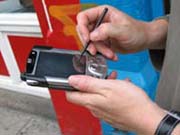
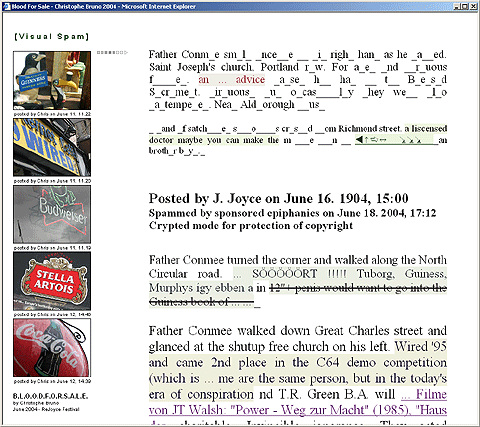
The program allows these "sponsored epiphanies" to disturb and transform the text of Ulysses, "Wandering Rocks", by incorporating themselves into the text. The real-time evolution of the text is displayed and graphically animated, sentence by sentence, projected in different places in Dublin, and online. By the end of the performance, carried out over several days, the original text by Joyce is almost entirely replaced by the "sponsored epiphanies."
Posted by michelle at 06:26 PM | Comments (0)

